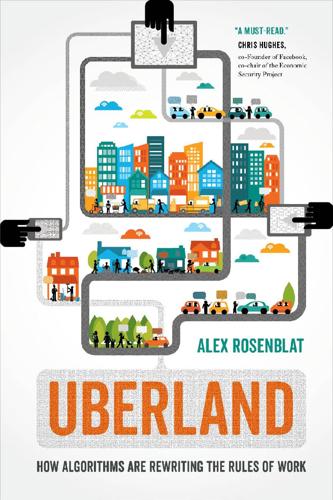
Uberland: How Algorithms Are Rewriting the Rules of Work
by
Alex Rosenblat
Published 22 Oct 2018
APPENDIX TWO RIDEHAILING BEYOND UBER Meet Lyft, the Younger Twin Uber may be the dominant player on the ridehail stage, but many Uber drivers work simultaneously for Lyft and other competitors. Lyft was founded in 2012 in the United States: by 2017, it had become available in forty states.1 Lyft achieved an $11 billion valuation by the fall of 2017.2 Recode reported that Second Measure, a research firm that tracks credit card purchases, determined that Lyft had 23.4 percent of the ridehail market share in the United States and Uber had 74.3 percent.3 The corporate practices of Uber and Lyft in managing drivers aren’t identical, but their similarities vastly outnumber their differences.
…
In my travels, some regional differences have emerged over time in how drivers assess Uber and Lyft. In Salt Lake City, Lyft seems to offer enough work that drivers don’t need to seek work from more than one company. When drivers choose to work for Lyft, it’s not necessarily out of an antipathy they developed toward Uber. And in Atlanta, Nicholas Stewart told me he prefers to drive for Uber over Lyft because “they’ve been more loyal to me, so to speak.” He went on to say, “I know a lot of the management team. And, when I need an issue solved, it’s easier to get in touch with Uber than it is to get in touch with Lyft. They have more on-the-ground support than Lyft. That’s been frustrating not only for me but a lot of other drivers as well.”
…
The project was titled “Mapping Inequalities in the On-Demand Economy” and funded by the Robert Wood Johnson Foundation. APPENDIX 2. RIDEHAILING BEYOND UBER 1. Lyft Blog, “Lyft Is Now Live across 40 States,” August 31, 2017, https://blog.lyft.com/posts/live-across-40-states. 2. Darrell Etherington, “Lyft Raises $1 Billion at $11 Billion Valuation Led by Alphabet’s CapitalG,” Tech Crunch, October 19, 2017, https://techcrunch.com/2017/10/19/lyft-raises-1-billion-at-11-billion-valuation-led-by-alphabets-capitalg/. 3. Rani Molla, “Uber’s Market Share Has Taken a Big Hit,” Recode, August 31, 2017, www.recode.net/2017/8/31/16227670/uber-lyft-market-share-deleteuber-decline-users. 4. San Francisco County Transportation Authority, “TNCs Today: A Profile of San Francisco Transportation Network Company Activity,” June 2017, www.sfcta.org/sites/default/files/content/Planning/TNCs/TNCs_Today_112917.pdf. 5.
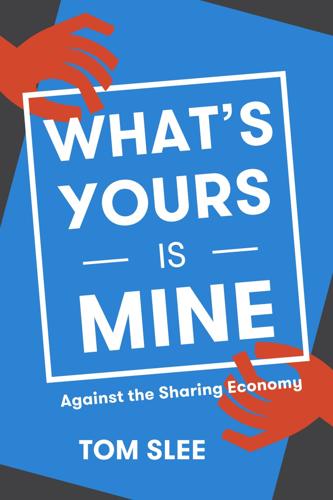
What's Yours Is Mine: Against the Sharing Economy
by
Tom Slee
Published 18 Nov 2015
“Competition Brings Lyft, Sidecar and Uber Closer to Cloning Each Other.” AllThingsD. Accessed May 22, 2015. http://allthingsd.com/20131116/competition-brings-lyft-sidecar-and-uber-closer-to-cloning-each-other-and-cabs/. ———. “Lyft Sells Zimride Carpool Service to Rental-Car Giant Enterprise.” AllThingsD, July 12, 2013. http://allthingsd.com/20130712/lyft-sells-zimride-carpool-service-to-rental-car-giant-enterprise/. ———. “Zimride Turns Regular Cars Into Taxis With New Ride-Sharing App, Lyft,” May 22, 2012. http://allthingsd.com/20120522/zimride-turns-regular-cars-into-taxis-with-new-ride-sharing-app-lyft/. Gans, Joshua.
…
8 Schor, “Debating the Sharing Economy.” 9 Gannes, “Zimride Turns Regular Cars Into Taxis With New Ride-Sharing App, Lyft.” 10 Gustin, “Lyft-Off: Car-Sharing Start-Up Raises $60 Million Led by Andreessen Horowitz.” 11 Ibid. 12 Gannes, “Zimride Turns Regular Cars Into Taxis With New Ride-Sharing App, Lyft.” 13 Gannes, “Lyft Sells Zimride Carpool Service to Rental-Car Giant Enterprise.” 14 Gannes, “Competition Brings Lyft, Sidecar and Uber Closer to Cloning Each Other.” 15 Lawler, “A Look Inside Lyft’s Financial Forecast For 2015 And Beyond.” 16 D’Onfro, “Uber CEO Founded The Company Because He Wanted To Be A ‘Baller In San Francisco.’” 17 Meelen and Frenken, “Stop Saying Uber Is Part Of The Sharing Economy.” 18 Scola, “The Black Car Company That People Love to Hate.” 19 Kalanick, “Uber Policy White Paper 1.0.” 20 Hall and Krueger, “An Analysis of the Labor Market for Uber’s Driver-Partners in the United States.” 21 Geron, “California Becomes First State To Regulate Ridesharing Services Lyft, Sidecar, UberX.” 22 Ferguson, “Recent Transportation Network Company Ordinances.” 23 California Public Utilities Commission, “Transportation Network Companies.” 24 Hirsch, “Taxi Trouble.” 25 Watters, “The MOOC Revolution That Wasn’t.” 26 Trafford, “Is John Tory Facing an Uber Battle at City Hall?”
…
In 2012, Zimride launched Lyft, an app that paired riders and passengers for short-distance rides (within a city, rather than between cities).9 The idea sounds like a carpool ride-matching service, but Lyft made another decision to scale up their offering: it made it possible for drivers to earn enough on a ride that they would undertake journeys that they would not otherwise take. Instead of picking up someone who is going their way and sharing the expenses of the journey (as in carpooling), Lyft drivers would find out where your rider wanted to go and take them there (for money). At first, Lyft maintained its community feel.

The Upstarts: How Uber, Airbnb, and the Killer Companies of the New Silicon Valley Are Changing the World
by
Brad Stone
Published 30 Jan 2017
Shutdowns for SideCar, RelayRides Highlight Hurdles for Car- and Ride-Sharing Startups,” Wall Street Journal, May 15, 2013, http://blogs.wsj.com/venturecapital/2013/05/15/n-y-shutdowns-for-sidecar-relayrides-highlight-hurdles-for-car-and-ride-sharing-startups/. 25. “Lyft Will Launch in Brooklyn & Queens,” Lyft Blog, July 8, 2014, https://blog.lyft.com/posts/2014/7/8/lyft-launches-in-new-yorks-outer-boroughs. 26. Brady Dale, “Lyft Launch Party with Q-Tip, Without Actually Launching,” Technical.ly Brooklyn, July 14, 2014, http://technical.ly/brooklyn/2014/07/14/lyft-brooklyn-launches/. 27. “Lyft Launches in NYC,” Lyft Blog, July 25, 2014, https://blog.lyft.com/posts/2014/7/25/lyft-launches-in-nyc. 28. Casey Newton, “This Is Uber’s Playbook for Sabotaging Lyft,” Verge, August 26, 2014, http://www.theverge.com/2014/8/26/6067663/this-is-ubers-playbook-for-sabotaging-lyft. 29.
…
At Cherry, VanderZanden had devised an ingenious system in which the most experienced car washers mentored and reviewed newer ones, allowing the company to enlist a large workforce of contractors without having to hire employees to train and monitor them.29 VanderZanden brought the idea to Lyft and used it to help expand Lyft into new cities without ever putting employees on the ground. And he introduced an Uber Black–like service, Lyft Plus, an attempt to cut into a source of Uber’s profit advantage. But by the summer of 2014, his colleagues from that time said, VanderZanden had become disillusioned about Lyft’s prospects against the more highly capitalized and faster-moving Uber. Without the knowledge of Green or Zimmer, he approached two Lyft board members about taking over as CEO, according to court filings.30 He also started talking privately to Uber about restarting merger discussions between Lyft and Uber.
…
It then asked them to e-mail city hall and make their displeasure known. Lyft lobbyists were also active in the fight, though quieter. Lyft’s representatives met with city council members that month to press their case and highlight the congestion-relieving benefits of their own carpooling service, Lyft Line. Their most effective argument was that freezing the number of private drivers would only entrench Uber’s advantage. That resonated, says one Lyft exec. “Whoever we were meeting with said, ‘Look, I hate those Uber guys. They are the worst. Help me figure out how to make only Lyft legal.’” The end for de Blasio in the Uber fight was swift and humiliating.
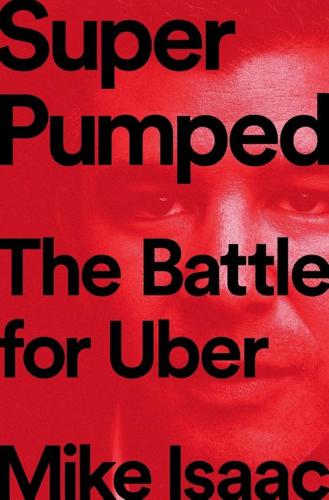
Super Pumped: The Battle for Uber
by
Mike Isaac
Published 2 Sep 2019
Zimmer would soon get a call from the investor, apologizing and backing out of Lyft’s latest series. Wherever Lyft went, Uber showed up to harass them. One of Lyft’s most effective grassroots tactics was holding what they called “driver events,” small parties for a hundred people that Lyft was trying to court as drivers. These events—replete with booze, pizza, cakes, and party games—often endeared the drivers to Lyft; people who attended them felt like the company actually cared about them. Kalanick made sure to ruin those for Lyft, too. He’d send his own employees to the events, where they would show up in jet black T-shirts—Uber’s signature color—carrying plates filled with cookies, each with the word “Uber” written in icing.
…
He’d send his own employees to the events, where they would show up in jet black T-shirts—Uber’s signature color—carrying plates filled with cookies, each with the word “Uber” written in icing. Each Uber employee had a referral code printed on the back of their T-shirt. The codes were for Lyft drivers to enter when they signed up for Uber, earning them a bonus. Even when they weren’t crashing Lyft parties, Uber found ways to mess with Lyft. All around San Francisco, Uber bought street signs and billboards targeting Lyft. Each billboard showed a large, black disposable razor blade with “Uber” printed on the handle, poised above one of Lyft’s pink, cuddly trademark. In the text beside the graphic, Uber made its message clear: “Shave the ’Stache.” Beyond the pranks and Twitter trash-talk, Kalanick figured out a much more effective way of killing off his competitors.
…
Kalanick began to sweat. Lyft, at that point running out of money and on the verge of surrender, benefitted enormously from the backlash. People began to ditch Uber and switch over to Lyft. (Protest felt good, but people still needed to be able to call a car sometimes.) Lyft’s executives then pulled a well-executed PR stunt, publicly donating $1 million to the American Civil Liberties Union over four years, making themselves look like white knights while Uber was groveling before Trump. The resultant surge in ridership brought Lyft back from the brink of failure. At last showing positive signs of growth, Lyft soon attracted investment from Kohlberg Kravis Roberts, the private equity firm, buoying the ride-hailing company with more than a half-billion dollars in additional capital.
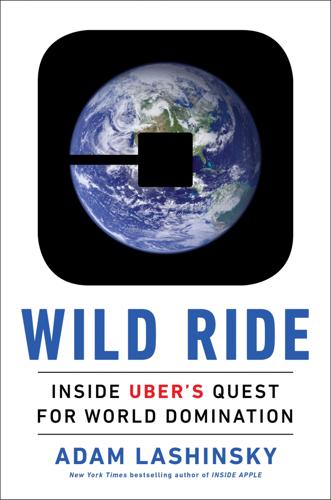
Wild Ride: Inside Uber's Quest for World Domination
by
Adam Lashinsky
Published 31 Mar 2017
During the first week of 2016 Uber’s primary competitor in the United States, Lyft, announced a partnership with and investment by General Motors. GM agreed to invest $500 million, with plans to build its self-driving car capacity on the strength of Lyft’s national network. Lyft gave GM a seat at the technology table. GM provided Lyft with money, which it promptly began using to take market share from Uber in crucial markets, including San Francisco and Los Angeles. Lyft’s market share in major markets typically had been around 20 percent. In early 2016, with Uber attempting to squeeze costs out of its operations, Lyft began taking share, growing its share to as much as 37 percent, by Uber’s calculations, in San Francisco.
…
What’s more, that price might well be less than a cab ride. Sharing was a misnomer, given that Lyft’s drivers were out to make a buck every bit as much as Uber’s. But by promoting the fiction of a friendly gesture rather than a transaction, Lyft could make an argument, however thin, that its trips weren’t commercial. If so, Lyft reasoned they weren’t illegal taxi rides and didn’t fall under any regulator’s jurisdiction. In reality, Uber worked only with licensed livery drivers; Lyft’s drivers were freelancing amateurs. Yet Lyft had one critical similarity with Uber in that its smartphone app adopted the push-a-button/get-a-ride simplicity that catapulted Uber into the limelight.
…
In mid-2013 Uber executed a pivot of its own, repositioning UberX and beginning to recruit drivers for its new service. It made no effort to simulate Lyft’s goofy hood ornament or faux-friendly demeanor; Uber was about getting an inexpensive ride from point A to point B as quickly as possible. The battle heated up rapidly. Lyft and Uber had begun to square off against each other across the United States. Lyft, in six U.S. cities a year after starting to offer ridesharing, sold its Zimride business to the car-rental company Enterprise Holdings, which continues to operate it and still caters to universities and companies. (Lyft, Zimride’s ridesharing product before the sale, became the company’s name.)

The Sharing Economy: The End of Employment and the Rise of Crowd-Based Capitalism
by
Arun Sundararajan
Published 12 May 2016
Might the same hold true for our future regulatory structures? Lyft—Hospitality in Transportation A few blocks down the street from Airbnb’s shiny new corporate headquarters at 888 Brannan in San Francisco’s SoMa district is a small building at 568 Brannan, the site of Lyft’s original offices. In it’s simplest form, Lyft is a chauffeured car, on demand. You open the app, you tell it where you are, it shows you cars nearby, you request a car, and you get picked up in a few minutes. In a more sophisticated use case, you turn on your Lyft app when you drive to work, put in your destination, and others who might want to travel a similar route can pay you a little for a seat in your car.
…
My first Lyft driver was an artist who was driving her car to earn some extra money while she pursued her art. There was no formal fare in 2012, since Lyft was not yet legally allowed to offer “taxi” service, but instead, the app suggested a “donation” to my driver in exchange for her being nice enough to come to where I was, pick me up, and give me a ride. A high point of the visit was the opportunity I got to try on a Lyft employee’s Halloween costume. He had dressed up as a Lyft car, using a skillfully constructed cardboard contraption. Three years later, Lyft had raised over a billion dollars in venture capital (including $100 million from the legendary investor Carl Icahn) and was in 60 cities around the United States.
…
In a more sophisticated use case, you turn on your Lyft app when you drive to work, put in your destination, and others who might want to travel a similar route can pay you a little for a seat in your car. Carpooling on demand, but flexibly, on your own schedule. Over the years, my Lyft drivers have included stand-up comedians, software engineers, deejays, schoolteachers, a retired CIO, a digital marketing executive between jobs, and numerous college students. Taking a Lyft is a completely different customer experience from hailing a cab. You sit in the front seat and have a conversation with a peer. It is like getting a ride with a new acquaintance. I visited Lyft at 568 Brannan in fall 2012 at the invitation of Emily Castor, an early employee who is currently their self-described “resident transportation wonk,” and who was kind enough back then to accelerate my approval as a Lyft passenger so that I could use their service to get to the meeting.

WTF?: What's the Future and Why It's Up to Us
by
Tim O'Reilly
Published 9 Oct 2017
The regulatory friction of the traditional approach makes taxi costs higher and availability worse. Uber and Lyft drivers routinely make more money per hour than taxi drivers; meanwhile, customers generally have better experiences and lower prices. Those who complain that Uber and Lyft “aren’t following the rules” need to ask whether those rules are achieving their intended objective. That doesn’t mean that Lyft and Uber should get a free pass on providing employee benefits and labor protections. As we’ll see in Chapter 9, the right answer is to develop a social safety net and regulatory frameworks as flexible and responsive as the on-demand business model itself. Uber and Lyft (and Airbnb) have taken the approach of asking for forgiveness rather than permission for many of their innovations, relying on swift consumer adoption to give them allies against regulators.
…
In 2012, Sunil’s work inspired them to launch a new service, called Lyft, which offered the first public peer-to-peer ride-sharing service for local pickup not by professional drivers, but by “your friend with a car.” Sunil, late to the party despite being way early, launched Sidecar at about the same time. (It was still in private beta when Lyft launched publicly.) But by the time Sidecar went out to raise money, Uber and Lyft had already built huge venture capital war chests, and Sidecar was unable to compete in a capital-intensive business. It went out of business at the end of 2015. Uber responded to Lyft with UberX, and the ride-sharing landscape as we know it today was born.
…
And that competition may well provide further evidence that higher wages (so-called efficiency wages, as discussed in Chapter 9) can pay for themselves by improving productivity and driving greater consumer satisfaction. Lyft and Uber keep their data close to the vest, but my own conversations with drivers suggest that Lyft, which has worked hard to craft policies and systems friendlier to drivers, is gaining on its larger, better-funded competitor. Almost every driver I talk to drives for both platforms. Almost universally, they tell me they prefer Lyft, and some tell me that they’ve quit driving for Uber even though there are more customers. More recently, as the result of cumulative PR missteps on Uber’s part, even the customers are defecting to Lyft. Uber’s aggressive tactics have earned them many enemies, and they have ignored one of the key rules of the modern connected company: as O’Reilly Media President and Chief Operating Officer Laura Baldwin is fond of saying, “Your customers are your conscience.”
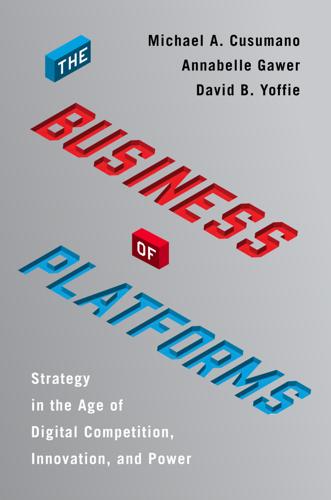
The Business of Platforms: Strategy in the Age of Digital Competition, Innovation, and Power
by
Michael A. Cusumano
,
Annabelle Gawer
and
David B. Yoffie
Published 6 May 2019
CHAPTER 7: LOOKING FORWARD: PLATFORMS AND THE FUTURE 1.Georgia Wells, “Snapchat Zigs Where Facebook Zags,” Wall Street Journal, June 14, 2018. 2.Khari Johnson, “Everything Amazon’s Alexa Learned to Do in 2017,” Venture Beat, December 29, 2017; Paul Cutsinger, “2017 Alexa Skills Kit Year in Review: More Than 100 New Products, Programs, Features, and Tools” January 5, 2018, https://developer.amazon.com/blogs/alexa/post/829a615b-301f-407c-96e7-6956fb988570/2017-alexa-skills-kit-year-in-review-more-than-100-new-products-programs-features-and-tools (accessed May 2, 2018); and Monica Chin, “Amazon Is Killing the Skill (as We Know It),” Tom’s Guide, September 13, 2018. 3.Jake Swearingen, “Amazon Could Give the Echo Dot Away and Still Make Money,” New York Magazine, January 3, 2018. 4.James Stables, “Google Assistant Aces Accuracy Study—but Alexa Is Catching Up Fast,” Ambient, April 30, 2018. 5.Rob Verger, “Someday, You Might Subscribe to a Self-Driving Taxi Service, Netflix-Style,” Popular Science, March 15, 2018. 6.Ibid. 7.Phil LeBeau, “General Motors Plans to Take On Ride-Sharing Services with Self-Driving Cars by 2019,” CNBC, November 30, 2018, https://www.cnbc.com/2017/11/30/gm-to-take-on-ride-sharing-services-with-self-driving-cars-by-2019.html (accessed June 2018). 8.Caitlin Huston, “Driverless Cars Could Cost 35 Cents per Mile for the Uber Consumer,” Marketwatch, September 19, 2016, https://www.marketwatch.com/story/demand-for-driverless-cars-could-boost-uber-to-2016-09-19 (accessed June 2018). 9.Christopher Mims, “How Self-Driving Cars Could End Uber,” Wall Street Journal, May 7, 2017. 10.Max Chafkin, “Uber’s First Self-Driving Fleet Arrives in Pittsburgh This Month,” Bloomberg, August 18, 2016. 11.See Lyft, “The Open Autonomous Era,” https://take.lyft.com/open-platform/ (accessed June 2018). 12.Mike Isaac, “Lyft Adds Ford to Its List of Self-Driving Car Partners,” New York Times, September 27, 2018, https://www.nytimes.com/2017/09/27/technology/lyft-ford-self-driving-cars.html?mcubz=0 (accessed June 2018). 13.John Zimmer, “The Third Transportation Revolution: Lyft’s Vision for the Next Ten Years and Beyond,” Medium, September 18, 2016, https://medium.com/@johnzimmer/the-third-transportation-revolution-27860f05fa91 (accessed June 2018). 14.Isaac, “Lyft Adds Ford.” 15.This section is based on Michael A.
…
Lyft’s platform initiative brings together several automakers, including GM, Land Rover, and Ford, to integrate their autonomous vehicle projects into one ride-hailing network.11 Initially, the Open Platform Initiative is offering partners access to ride data for testing purposes, but ultimately plans to make their self-driving vehicles available on its ride-hailing platform. Lyft’s chief strategy officer noted in late 2017 that “we’re focused on partnering with the auto industry because frankly, we think we can’t do this alone and need each other to be successful.”12 Lyft cofounder John Zimmer even predicted that “autonomous vehicle fleets will quickly become widespread and will account for the majority of Lyft rides within 5 years.”13 Lyft’s strategy may signal the emergence of a different type of transaction platform, where Lyft connects riders to self-driving vehicles from a variety of manufacturers.
…
By mid-2015, Uber had expanded to 300 cities around the world and had signed up its one-millionth driver, including over 150,000 active UberX drivers in the United States, and claimed to cover 75 percent of the U.S. population.11 Lyft had expanded to 65 cities with 100,000 drivers, all in the United States, by March 2015.12 With Uber and Lyft in the market, competition for drivers and riders was fierce. Both Uber and Lyft aggressively recruited drivers, offering cash bonuses of up to $500 or even $1,000 for drivers who switched from another ride-sharing platform, including Sidecar. Current drivers also received bonuses by referring drivers from another platform. Riders received credits for their first ride and additional credits when they referred other riders. Uber and Lyft periodically cut fares to attract riders.
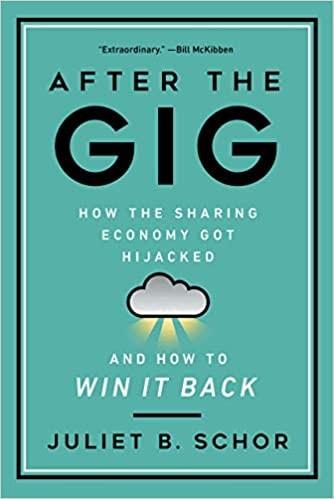
After the Gig: How the Sharing Economy Got Hijacked and How to Win It Back
by
Juliet Schor
,
William Attwood-Charles
and
Mehmet Cansoy
Published 15 Mar 2020
Angelo, a courier, thought the system was unfair: “Instead of being an employee, you’re an independent contractor now. I understand it with certain companies, [but] not with these big companies, like Uber and Lyft. I don’t work for them, but I feel like they’re making so much money. Just like these restaurants that have these people working for three dollars an hour as base pay and then tips. It’s ridiculous. Like no, your profits are in the millions, hundreds of millions. You can afford to pay an hourly wage.” Mitch, who was combining Lyft, Postmates, and DoorDash as he tried to build an audio-engineering business, also considered the whole setup problematic. “Is it fair to me to have to own, pay for, maintain my own car, gas, insurance, parking, cleaning, dealing with the smell of food in my car?
…
Gideon, a recent college graduate, and actor and dancer whose career was going relatively well, relied on platform work to supplement his theatrical earnings. He worked about twenty hours a week on Lyft and TaskRabbit and has also put in time on Instacart, which he liked less because the work was “isolated and lonely.” Earlier, he’d worked in food service and at Starbucks, which he also didn’t like: “It was really taking over my life so, I was living to work versus working to live. TaskRabbit feels like I’m working to live.” For Gideon, scheduling flexibility was paramount and app-based work allowed him to go on auditions and to rehearsals. “These other jobs [TaskRabbit, Lyft] are keeping me out of a slave trade service, and it’s giving me that control to really make the work that I want to work and it’s twenty hours at jobs that pay more than most part-time jobs do.”
…
Basically they’re going to lower the rates until we break.” Drivers’ complaints are borne out in company data. Between 2014 and 2016 Uber reduced drivers’ share of total revenue from 83 percent to 68 percent.72 Then, facing increased competition from Lyft, on account of boycotts, bad press, and driver exit, Uber raised its payments to drivers to 77 percent in 2018. Meanwhile, Lyft took the opportunity presented by Uber’s squeeze to increase its take, reducing drivers’ share from 82 percent to 73 percent between 2016 and 2018, excluding additional reductions in incentives.73 In 2019, as the ride-hail companies prepared for their IPOs, they were forced to provide some transparency in their SEC filings.
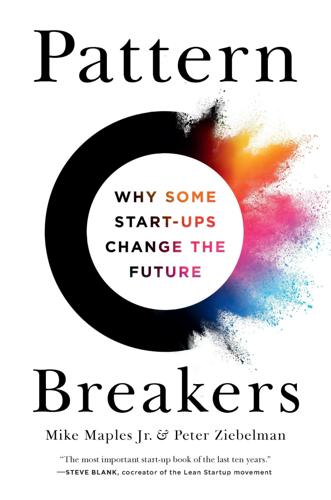
Pattern Breakers: Why Some Start-Ups Change the Future
by
Mike Maples
and
Peter Ziebelman
Published 8 Jul 2024
they’re really asking, “What inflections does your idea harness? And why is now the time to harness them?” TIMING, TAKE TWO: INFLECTIONS AFTER YOU START Start-ups often benefit from inflections that occur after they start. Remember, Lyft didn’t begin as Lyft. It started as Zimride, a web-based hub that enabled commuters to share rides at corporate and college campuses. John and Logan launched the Lyft service after the inflection of the iPhone 4s, with its introduction of embedded GPS-locator chips. Zimride was based on a different inflection: the Facebook Connect third-party application programming interfaces (APIs).
…
The introduction of Facebook Connect, combined with the financial crisis, will create the conditions for this new way of booking rooms to take hold. We can look at Lyft through a stress test to understand the insight behind the inflections: Facebook Connect third-party APIs along with the introduction of the iPhone 4s and its highly accurate GPS locator chips. See Table 5.3 for the Lyft insight stress test example. Table 5.3 Insight Stress Test: Lyft Insight Riders will trust that they can get a ride with a stranger just as they trust getting into a taxi. In the future… Ridesharing networks will allow anyone to catch a ride anywhere almost instantly via a smartphone app.
…
By entrapping yourself this way, you forfeit your chance to become the pattern breaker you aspire to be. It’s like being a whistleblower who’s too polite to blow the whistle. Imagine if Lyft had asked for permission from the San Francisco government to launch its ridesharing service. The answer would have certainly been no. Lyft understood that to ask permission was to seek denial. Their only feasible route to acceptance was through customers’ delight in their service, which paved the way for meaningful dialogues with local authorities. To succeed at fulfilling their mission, Lyft’s founders had to avoid what would have been a lethal conformity trap of requesting permission to innovate.
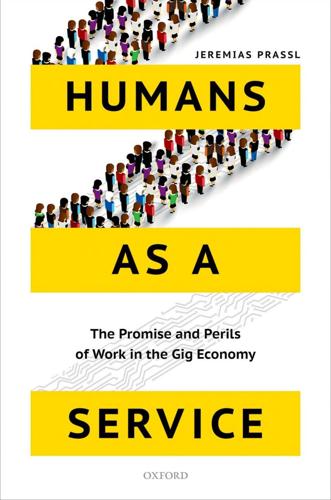
Humans as a Service: The Promise and Perils of Work in the Gig Economy
by
Jeremias Prassl
Published 7 May 2018
‘Swalwell, Issa announce the Sharing Economy Caucus’, Eric Swalwell press release (12 May 2015), https://swalwell.house.gov/media-center/press-releases/ swalwell-issa-announce-sharing-economy-caucus, archived at https://perma. cc/7SN7-M4XG. Ride platform Lyft was ‘excited to continue that conversa- tion in Washington, D.C.’: ‘Lyft joins Sharing Economy Caucus’, Lyft Blog (13 May 2015), https://blog.lyft.com/posts/2015/5/13/lyft-joins-sharing-economy- caucus, archived at https://perma.cc/875C-N376. It was focused on limiting regulation—not least by ensuring more favourable tax treatment. Other oper- ators similarly called for changes to help ‘participants [who] feel the sting of the taxman when filing season comes around’: John Kartch, ‘Meet the congres- sional Sharing Economy Caucus’, Forbes (15 May 2015), http://www.forbes.
…
Brhmie Balaram, ‘RSA calls for new approach to regulating the sharing econ- omy’, RSA (13 January 2016), http://www.thersa.org/about-us/media/2016/ rsa-calls-for-new-approach-to-regulating-the-sharing-economy, archived at https://perma.cc/NC5L-2ZH7: ‘But this isn’t the story of David and Goliath in the sharing economy . . . These companies are networked monopolies that depend on the value created by their users to keep expanding.’ 27. Ellen Huet, ‘Lyft buys carpooling startup Hitch to grow Lyft line’, Forbes (22 September 2014), http://www.forbes.com/sites/ellenhuet/2014/09/22/lyft- buys-carpooling-startup-hitch-to-grow-lyft-line/#5bb922452b59, archived at https://perma.cc/5H9D-Q44U; Lora Kolodny, ‘Zimride acquires Cherry but won’t offer car-washing service’, The Wall Street Journal (26 March 2013), http:// blogs.wsj.com/venturecapital/2013/03/26/zimride-acquires-cherry-but- wont-offer-car-washing-service/, archived at https://perma.cc/Z52R-B4K8 28.
…
The postindustrial corporation and advanced information technology’ (2016) 34(1) Hofstra Labor and Employment Law Journal 239, 293: Uber and Lyft sublimate their agency in the production of ride services into algo- rithms, programming, and technology management. The metaphor of the ‘platform’ transforms Uber and Lyft from subjects into spaces. It evokes a passive space to be inhabited by active agents—drivers and passengers. For example, Lyft argues that drivers’ ‘low ratings [are] given by passengers, not Lyft. Uber argued that passengers, and not Uber, controlled drivers’ work. The companies ventriloquize a disinterested machine.’
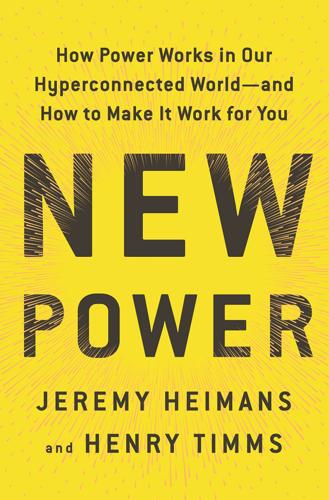
New Power: How Power Works in Our Hyperconnected World--And How to Make It Work for You
by
Jeremy Heimans
and
Henry Timms
Published 2 Apr 2018
A third was to encourage regular meet-ups for drivers, funded by Lyft, because “the bonds you create with each other strengthen our community, too.” At the same time that Uber’s drivers were turning against the platform to organize pickets, Lyft was helping its drivers organize picnics. Every one of the new initiatives was proudly displayed on the Lyft blog, with a driver credited for each idea, alongside testimonials from Lyft riders, celebrating what great human beings Lyft drivers are. As @rounditrosie wrote, “I love @Lyft drivers because they are artists, bakers, med students, retirees and the coolest people in LA.
…
“Even with [our] better service”: John Zimmer, “Standing Together: Community Update from John,” The Hub (blog), February 2, 2016. www.thehub.lyft.com “the bonds you create”: Ibid. “I love @Lyft drivers”: Cori Online, “#ThankYourLyftDriver,” Lyft (blog), January 31, 2016. www.blog.lyft.com. “As a new Lyft driver”: Harry Campbell, discussion with authors, February 16, 2016. “basically get your entire commission”: Timothy B. Lee, “Lyft Says Its Drivers Can Make $35 an Hour,” Vox, December 17, 2014. “One of the things that Uber drivers”: Harry Campbell, discussion with authors.
…
They live in fierce and unfriendly competition, with Uber well ahead, having scaled much faster and expanded globally, leading to a valuation over ten times that of Lyft, but with Lyft posing a real threat in some of Uber’s biggest markets. The functionality of the two platforms is very similar. An Uber user feels thoroughly at home with the Lyft app and vice versa. But from the beginning, Uber and Lyft have positioned themselves very differently. Uber launched as “everyone’s private driver”—the pitch being that you, too, could slink into the back of a badass shiny black ride. Lyft came to life as “your friend with a car,” with a giant pink mustache amiably perched on the grille, riders hopping in the front seat and fist-bumping the driver a hello.
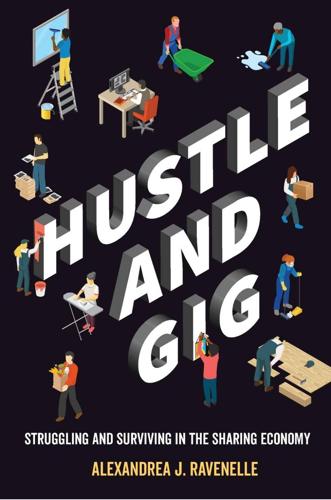
Hustle and Gig: Struggling and Surviving in the Sharing Economy
by
Alexandrea J. Ravenelle
Published 12 Mar 2019
While drivers who utilize both platforms often view Lyft more favorably, Lyft has also cut rates—reducing fares nationwide in April 2014 by as much as 30 percent.41 Table 2 shows how some New York City uberX rates have changed. Within four years, uberX drivers saw their per-minute rate cut in half, their mile rate reduced by 42 percent, and their base fare slashed by a whopping 58 percent. The minimum price for a ride decreased by about a third. Table 2 UberX Rates in New York City, 2014 to 2018 In addition to reducing rates, both services have also changed their commissions. When Lyft reduced rates in 2014, it “temporarily eliminated its 20% commission ‘to provide our growing driver community with peace of mind’ during the price drop.”
…
An Airbnb host isn’t so much “sharing” her home or “hosting guests” as she is renting her home out. TaskRabbit assistants and Kitchensurfing chefs aren’t “sharing” their services but being paid. Likewise, even though Uber and Lyft describe themselves as “ride-sharing,” charging for private vehicle transportation is simply a taxi or chauffer service by any other name. While Lyft (slogan: “Your friend with a car”) originally encouraged riders to “sit in the front seat like a friend, rather than in the backseat like a fare,” such “friendship” didn’t eliminate the need to pay the fare.12 The reinvention of terms isn’t limited to the companies themselves but can also carry over into descriptions of the services by researchers.
…
Anny Fenton, a Harvard graduate student who studied social interactions among RelayRides users, found that car owners using the site said their relationships with users were “sterile,” “anonymous,” and “nothing”; however, they felt that they had something more personal to offer and assumed that users would treat their cars better than a typical rental car.28 Research on Zipcar, a service often described as part of the sharing economy, found that users experienced the service in the same anonymous way that one experiences a hotel: “They know others have used the cars, but have no desire to interact with them.” Rather than viewing fellow Zipsters as cosharers of the cars, users were mistrustful of them and relied on the company to police the system. Researchers have suggested that Lyft’s lack of success in relation to Uber may be a result of Lyft “putting too much emphasis on consumers’ desire to ‘share’ with each other,” and that “consumers are more interested in lower costs and convenience than they are in fostering social relationships with the company or other consumers.”29 My own research echoes this lack of interest in interaction.
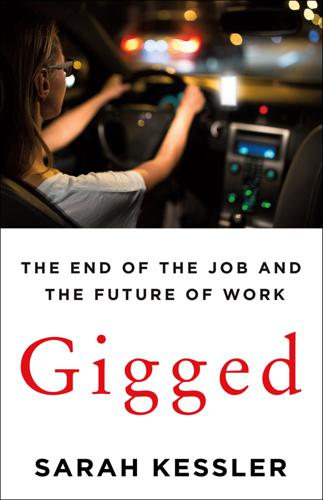
Gigged: The End of the Job and the Future of Work
by
Sarah Kessler
Published 11 Jun 2018
April 27, 2016. http://fortune.com/2016/04/27/uber-gig-economy/. 6 Wartzman, Working in the Gig Economy. 7 Oisin, Hanrahan. We Must Protect the On-Demand Economy to Protect the Future of Work. Wired. November 9, 2015. https://www.wired.com/2015/11/we-must-protect-the-on-demand-economy-to-protect-the-future-of-work/. 8 Lyft Blog. Lyft × Honest Dollar: Introducing Savings and Retirement Solutions for Lyft Drivers. November 19, 2015. https://blog.lyft.com/posts/lyft-x-honest-dollar. 9 Bureau of Labor Statistics. National Compensation Survey: Employee Benefits in the United States, March 2014. September 2014. EPILOGUE 1 Press release. Workers and US Government Cheated Out of Billions in Stolen Wages and Lost Tax Revenue.
…
“The much-touted virtues of flexibility, independence and creativity offered by gig work might be true for some workers under some conditions,” she said in a speech at an annual conference for the New America Foundation in Washington, “but for many, the gig economy is simply the next step in a losing effort to build some economic security in a world where all the benefits are floating to the top 10 percent.”21 The speech wasn’t exactly about the gig economy: “The problems facing gig workers are much like the problems facing millions of other workers,” Warren noted. But the headlines were definitely about the gig economy: “Elizabeth Warren Takes on Uber, Lyft and the ‘Gig Economy’”;22 “Elizabeth Warren Calls for Increased Regulations on Uber, Lyft, and the ‘Gig Economy’”;23 “Elizabeth Warren Slams Uber and Lyft.”24 In her speech, Warren had acknowledged that talking about TaskRabbit, Uber, and Lyft was “very hip.” It seemed she was right. Sometimes politicians and labor leaders didn’t even need to frame their positions within the context of the gig economy to have them interpreted that way.
…
July 5, 2017. https://hbr.org/2017/07/lots-of-employees-get-misclassified-as-contractors-heres-why-it-matters. 3 Gandel, Stephen. Uber-nomics: Here’s What It Would Cost Uber to Pay Its Drivers as Employees. Fortune. September 17, 2015. http://fortune.com/2015/09/17/ubernomics/. And on Lyft see: Levine, Dan, and Heather Somerville. Lyft Drivers, If Employees, Owed Millions More—Court Documents. Reuters. March 20, 2016. https://www.reuters.com/article/us-lyft-drivers-pay-exclusive/exclusive-lyft-drivers-if-employees-owed-millions-more-court-documents-idUSKCN0WM0NO?feedType=RSS&feedName=technologyNews. 4 Chayka, Kyle. It’s Like Uber for Janitors, with One Huge Difference. Bloomberg.

Peers Inc: How People and Platforms Are Inventing the Collaborative Economy and Reinventing Capitalism
by
Robin Chase
Published 14 May 2015
The skills, knowledge, and precise expertise found among peers give big companies immediate access to local partners, because the peers are the already established partners in these collaborations. Take Lyft, a website and mobile app that lets car owners turn their personal cars into taxis. Lyft’s platform aggregates the excess capacity available in both the owners’ free time and their idle cars to create a service that offers rides seven days a week, twenty-four hours a day. Lyft does what companies can do best: It performs criminal and driving background checks on the drivers, provides insurance, negotiates with regulators, markets the service to customers, and ensures quality and consistency. Lyft also built the easy-to-use app and collects the payments. Taken together, what Lyft does is beyond the talents, time, or budget of any single individual.
…
One of the participants suggested that the huge valuations for Peers Inc companies gives these startups large amounts of “cheap” capital to play with, and therefore the ability to buy growth rather than earn it. Lyft and Uber are fierce competitors in the new app-based medallion-free taxi market. Both have experienced fast growth and expansion in the few years since their founding (Uber in 2009, Lyft in 2012). And now both are engaged in price wars, each reducing fares to attract passengers and lowering their commissions to attract peer drivers. Neither has any competitive intellectual property. Uber’s competitive advantage was once in the deals it had negotiated with local limo companies and individual drivers.
…
It is my experience with Zipcar and its competitors that customers choose based on a combination of convenience (the technology), price, and proximity. Both Uber and Lyft have business models and apps that appear to work; can the market sustain both? Buying (bribing) users too early in a company’s life cycle will just eat up a lot of money and won’t produce anything lasting. Doing so later is indeed possible, but it can be a very risky strategy depending on a company’s ability to defend that lead. I’ll talk more about the Uber/Lyft battle when I discuss the last phase, later in this chapter. In all cases, the “greasiest” platforms, those with the least friction, win out.

Nothing but Net: 10 Timeless Stock-Picking Lessons From One of Wall Street’s Top Tech Analysts
by
Mark Mahaney
Published 9 Nov 2021
Survey work I had run indicated that less than a third of US consumers had ever even used a ridesharing service, and I thought this penetration could more than double over time. I also believed that ridesharing carried compelling value propositions for both consumers and drivers. I declared a preference for UBER over LYFT because it had a global presence (thus a larger TAM), while Lyft was purely a US service, and because Uber had a much stronger market share position than Lyft in the United States. The founders of Lyft (John Zimmer and Logan Green) were actively involved in running Lyft, which was a distinct positive, but I also had confidence in the management capabilities of Uber CEO Dara “Dog’s Breakfast” Khosrowshahi, which I thought somewhat mitigated the fact that Uber’s founders were no longer actively involved.
…
In mid-March 2020, in the wake of intense Covid-19 pandemic pressures on ridesharing demand and investor concerns about Uber’s liquidity, Uber’s share price broke below $15, almost 70% below its IPO price. Lyft (LYFT) IPO’d on Friday, March 29, 2019, at $72 and traded up 9% on its first day to $78. But as of early 2021, it had yet to reach that price level again. And except for two days in April 2019, it has been a broken IPO, trading well below that $72 level. In mid-March 2020, it plummeted all the way down to $16, almost 75% below its IPO price. In October 2019, as the share prices of both UBER and LYFT were struggling, influential CNBC contributor “Downtown” Josh Brown wrote that Uber’s failed IPO changed investor sentiment from “fantasy valuation back to profitability.”
…
Although the Covid-19 crisis did have a materially negative impact on demand for the two leading US ridesharing services, Uber and Lyft shares were under pressure long before the pandemic because of the large losses both companies were running. In 2019, Lyft generated $2.6 billion in net income loss, while Uber generated $8.6 billion in net loss. These loss levels were practically unprecedented. And in the quarters post their IPOs, there was substantial uncertainty whether Uber and Lyft would ever be profitable. That uncertainty was exactly what Brown’s comments captured. It is striking that UBER then traded up almost 70% in 2020.
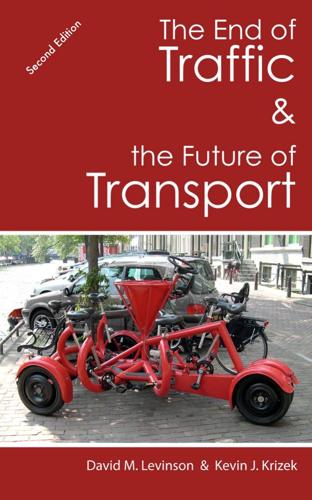
The End of Traffic and the Future of Transport: Second Edition
by
David Levinson
and
Kevin Krizek
Published 17 Aug 2015
Lyft now does jitney (shared taxi, dollar van, informal transport) type services, dubbed Lyft Line. (Uber has the similar UberPool) These serve either one pickup going to multiple destinations, or multiple pickups going to one destination, or multiple origins to multiple destinations, and compete with both taxi and public transit. (Though it would not be exactly fixed routes, one could imagine regular runs with a known coterie of passengers). This is at a lower rate than the traditional single party taxi-like service. While these services are at the time of this writing only in San Francisco and New York, Lyft now claims that Lyft Line comprises 50% of Lyft's rides in San Francisco and 30% in New York.191 (Not all of Lyft Line customers wind up in a shared ride, they just indicate a willingness to for a lower fare, and get the lower fare regardless of whether another passenger can be found).
…
And it is, if you think of modern ridesharing drivers as your friends giving you a lift (or in the name of one company a Lyft), not for money, but for a voluntary donation or paying for half the costs, like the carpooling service and app Carma enables. Whether this attempt to skirt the rules and regulations of taxis succeeds is a battle to be fought out in thousands of local markets globally. In markets where an agreement has been reached, the donation results in an actual charge and the process—enabled by smartphones—is taking off.189 The car you get with Lyft (or UberX) is the driver's personal car, not a fleet vehicle; it varies. David's first Lyft ride and Kevin's second UberX was in a Mercedes.
…
He walked to the next white Prius and fortunately found Rafaello (and the correct car). These social dynamics matter to services like Lyft. In contrast with traditional taxis, the passenger sits shotgun (in the front row passenger seat), and is expected to have a conversation with the driver (which happens in some taxis, though not always). Anecdotally, it appears people who drive for Lyft are more likely to be (though not universally) American citizens or long-term residents, and since they own their own car, less likely to be poor, recently landed immigrants who comprise the taxi drivers in many cities. Lyft is in many ways simply an app with a back-end (rather, 'cloud-based') dispatch service.

Seeking SRE: Conversations About Running Production Systems at Scale
by
David N. Blank-Edelman
Published 16 Sep 2018
As of this writing, Lyft (and most other users of Envoy) is moving toward a fully centralized configuration system supported by a complete set of discovery APIs. The net result of deploying Envoy at Lyft has been that developers no longer consider the network when building applications. When network problems do occur, developers have the tooling in place to help discover and remediate the issue quickly. The networking substrate deployed at Lyft has increased developer productivity, increased overall success rate, and decreased Mean Time to Recovery (MTTR) during incidents. Operating Envoy at Lyft As I already described, for better or worse Lyft does not have an SRE-like job title.
…
-The Future of the Service Meshconfiguration management, Configuration Management (Control Plane Versus Data Plane) context propagation, Thin Libraries and Context Propagation control plane vs. data plane, Configuration Management (Control Plane Versus Data Plane) current state of microservice networking, Current State of Microservice Networking eventually consistent service discovery system, Eventually Consistent Service Discovery in practice, The Service Mesh in Practice-Technical learnings monolithic architecture vs., Ready to Get Rid of the Monolith? observability and alarming, Observability and Alarming operation of Envoy at Lyft, Operating Envoy at Lyft-Technical learnings origin and development of Envoy at Lyft, The Origin and Development of Envoy at Lyft sidecar performance implications, Sidecar Performance Implications sidecar proxy, Service Mesh to the Rescue-The Benefits of a Sidecar Proxy thin libraries, Thin Libraries and Context Propagation service overviews, documentation of, Service overviews Service Pyramid, at Facebook, Production Engineering at Facebook Service-Level Agreements (SLAs)business priorities and changes in, Dealing with Corner Cases corner cases and, Dealing with Corner Cases-Dealing with Corner Cases documentation of, SLAs error budgets and, Error Budgets negotiating with vendors, Negotiating SLAs with vendors nontechnical solutions in SysAdmin–SRE transition, Nontechnical Solutions progression in service-level execution, Progression in Service-Level Execution SLOs and, Service-Level Objective, Why Set Goals?
…
Fully managed solutions include SmartStack (built on HAProxy) and Istio (built on Envoy and now also supporting Linkerd). What follows is a short description of Lyft’s transition from a monolithic application to a complete service mesh architecture built on top of Envoy. This is by no means the only service mesh success story, but it’s one I am familiar with (I am the creator of Envoy) and will hopefully provide some flavor to the generic service mesh architecture description that most of this chapter has endeavored to describe. The Origin and Development of Envoy at Lyft By early 2015, Lyft had a primarily monolithic PHP application backed by MongoDB along with tens of microservices written in Python.
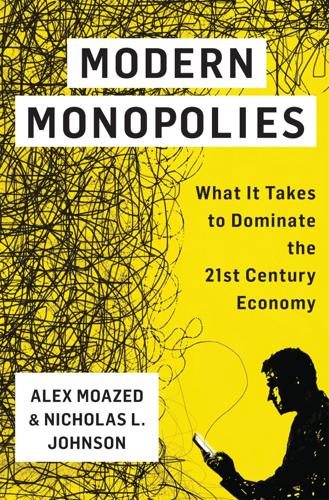
Modern Monopolies: What It Takes to Dominate the 21st Century Economy
by
Alex Moazed
and
Nicholas L. Johnson
Published 30 May 2016
“Our feeling is that it is the right thing to do to build the community, because if you don’t, your service can degrade into something like Chatroulette. By building the community you can create some community norms.”52 By building its driver community, Lyft has helped maintain driver quality as it has expanded across the United States. Lyft even has invested in regular offline events for its drivers in an effort to help them connect. “We host a lot of community events for our drivers,” according to Ryan Fujui, former product lead on Lyft’s growth team. “It really helps not only to bring everyone together to create that sense of community but also to help disseminate information and best practices.
…
However, this level of involvement isn’t limited to nonprofits. Other great examples include Stack Overflow (a Q&A platform for developers) and Reddit, which both have highly engaged users that create and maintain the customs and standards that govern community behavior. Lyft, Uber’s biggest competitor in the United States, places a similar emphasis on its driver community. Lyft founders Logan Green and Ryan Zimmer decided early on that actively building a community would be a priority for the platform. “Some people may think it’s weird to build a community. The community should seem like it’s just a natural thing,” Green said.
…
Uber also has spawned its own ecosystem of support services. Many people who might want to drive an Uber part-time don’t own a car. Well, thanks to Breeze, a San Francisco-based startup: no car, no problem. Breeze leases cars at $195 a week to aspiring Uber or Lyft drivers. In late 2013, Uber also began partnering with third-party lenders to offer vehicle financing to would-be drivers.2 Insurance is another big opportunity. Both Uber and Lyft provide insurance coverage while drivers are on a job, but when they’re not on the way to or driving a passenger, they are out of luck. Even worse, many personal auto insurance policies will cancel your policy if they find out you work for Uber (since the policy is not meant to cover commercial activity), and traditional commercial insurance options are prohibitively expensive for many part-time drivers.
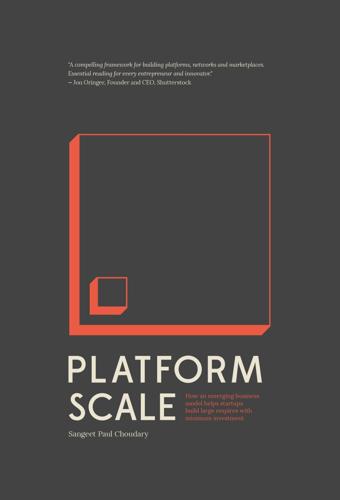
Platform Scale: How an Emerging Business Model Helps Startups Build Large Empires With Minimum Investment
by
Sangeet Paul Choudary
Published 14 Sep 2015
With a limited supply of drivers in a city and the cost for a driver to connect to an additional platform being so small, drivers multihome on both Uber and Lyft. This has naturally led to intense competition between the two companies, and Uber infamously resorted to a playbook to create interaction failure on Lyft using questionable tactics. Uber decided to target interaction failure on Lyft by contracting third-party agents to use disposable phones to hail Lyft taxies. Before the Lyft taxi arrived at its pickup location, the Uber-contracted agent would cancel the ride. With so many cancelations on the Lyft platform, drivers would become frustrated driving for Lyft and, in some cases, switch to Uber. A smaller number of drivers on the Lyft platform meant longer waiting times for traveler.
…
Producers and consumers who experience interaction failure become discouraged from participating further and eventually abandon the platform. THE UBER–LYFT WAR Interaction failure is especially important for on-demand platforms. Imagine a consumer requesting a service and never being served with a solution. Imagine, in turn, a producer receiving a request and preparing to fulfill that request, only to find that the request is canceled. In both cases, the respective consumer or producer may become discouraged and decide to abandon the platform. In some of the largest cities, drivers drive for both Uber and Lyft, as well as other competitors. It’s not uncommon for these drivers to switch between the two platforms multiple times a day.
…
For more details, please visit http://platformthinkinglabs.com/about/sangeet-choudary/ TABLE OF CONTENTS Preface 1.0 AN INTRODUCTION TO INTERACTION-FIRST BUSINESSES 1.1 Building The Next Big Thing 1.2 The Platform Manifesto 1.3 The Rise Of The Interaction-First Business 1.4 The Platform Stack 1.5 The Inner Workings Of Platform Scale Conclusion 2.0 DESIGNING THE INTERACTION-FIRST PLATFORM Introduction 2.1 The New New Value 2.2 Uber’s Drivers, Google’s Crawlers And GE's Machines 2.3 Building An Interaction-First Platform Business 2.4 Uber, Etsy, And The Internet Of Everybody 2.5 Personalization Mechanics 2.6 The Core Interaction 2.7 Pull-Facilitate-Match 2.8 The Platform Canvas 2.9 Emergence 3.0 BUILDING INTERACTION-FIRST PLATFORMS Introduction 3.1 Interaction Drivers 3.2 Building User Contribution Systems 3.3 Frictionless Like Instagram 3.4 The Creation Of Cumulative Value 3.5 The Traction-Friction Matrix 3.6 Sampling Costs 3.7 Trust Drives Interaction 3.8 Uber Vs. Lyft And Interaction Failure 3.9 Interaction Ownership And The TaskRabbit Problem 4.0 SOLVING CHICKEN-AND-EGG PROBLEMS Introduction 4.1 A Design Pattern For Sparking Interactions 4.2 Activating The Standalone Mode 4.3 How Paypal And Reddit Faked Their Way To Traction 4.4 Every Producer Organizes Their Own Party 4.5 Bringing In The Ladies 4.6 The Curious Case Of New Payment Mechanisms 4.7 Drink Your Own Kool Aid 4.8 Beg, Borrow, Steal And The World Of Supply Proxies 4.9 Disrupting Craigslist 4.10 Starting With Micromarkets 4.11 From Twitter To Tinder 5.0 VIRALITY: SCALE IN A NETWORKED WORLD Introduction 5.1 Transitioning To Platform Scale 5.2 Instagram’s Moonshot Moment 5.3 Going Viral 5.4 Architecting Diseases 5.5 A Design-First Approach To Viral Growth 5.6 Building Viral Engines 5.7 The Viral Canvas 6.0 REVERSE NETWORK EFFECTS Introduction 6.1 A Scaling Framework For Platforms 6.2 Reverse Network Effects 6.3 Manifestations Of Reverse Network Effects 6.4 Designing The Anti-Viral, Anti-Social Network Epilogue Platform Scale (n): Business scale powered by the ability to leverage and orchestrate a global connected ecosystem of producers and consumers toward efficient value creation and exchange.
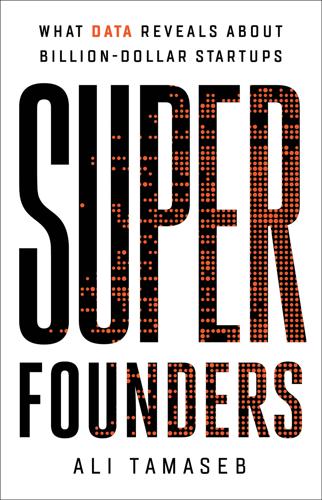
Super Founders: What Data Reveals About Billion-Dollar Startups
by
Ali Tamaseb
Published 14 Sep 2021
A few months later, in 2012, Zimride held an internal hackathon in an attempt to increase user retention and engagement. The solution they came up with was Lyft. The following year, the company switched its name (and focus) and sold its remaining Zimride assets to Enterprise Rent-A-Car. Lyft and Sidecar, competing with each other, gained a lot of traction in San Francisco. They proved that consumers were willing to jump in an unlicensed taxi to go from point A to B (Uber’s black cars were licensed). At this point, Uber had raised $11 million from VCs, Zimride/Lyft had raised $6 million, and Sidecar had raised $10 million. When Lyft and Sidecar became popular, Uber realized the larger opportunity afforded by the gig economy, transitioned from the luxury service to the affordable service, and launched UberX.
…
We failed—for the most part—because Uber is willing to win at any cost and they have practically limitless capital to do it.”6 Sidecar shut down operations on New Year’s Eve in 2015, and General Motors acquired its remaining assets and intellectual property. Uber went on to raise billions of dollars to become the dominant force in the ridesharing industry. Today, Lyft and Uber have raised billions of dollars from investors in public and private markets. Despite its lower sales and market share, Lyft has remained persistent over the last ten years, establishing itself as a more ethical alternative to Uber, which has suffered a long list of scandals and controversies. The two companies also perform differently by location, with Lyft seeing more success in cities like Detroit and San Francisco, while Uber outperforms in Miami and Houston. Neither company has turned a profit—likely because of intense price competition with one another.
…
In the case of Flexport, which was competing against over twenty-five legacy freight forwarders with years of relationships with their customers, no one company had scaled enough to lock in all local trucking and shipping providers, leaving room for a new entrant to emerge. In the case of Lyft, competing against Uber, a startup with the ability to raise billions of dollars from investors, Lyft’s ethical and friendly branding has helped it grow alongside the dominant player. Still, the data indicates that a startup competing against another highly funded startup has a lower chance of success, as we saw with Sidecar. In each case, time will tell whether they continue their growth and one day replace their incumbent competitors, or whether their growth will plateau.

Platform Revolution: How Networked Markets Are Transforming the Economy--And How to Make Them Work for You
by
Sangeet Paul Choudary
,
Marshall W. van Alstyne
and
Geoffrey G. Parker
Published 27 Mar 2016
In some cases, the gradual addition of new interactions is part of the long-term business plan that platform founders had in mind from the beginning. In early 2015, both Uber and Lyft began experimenting with a new ride-sharing service that complements their familiar call-a-taxi business model. The new services, known as UberPool and Lyft Line, allow two or more passengers traveling in the same direction to find one another and share a ride, thereby reducing their cost while increasing the revenues enjoyed by the driver. Lyft cofounder Logan Green says that ride-sharing was always part of the Lyft idea. The initial version of Lyft, he explains, was designed to attract an initial customer base “in every market.”
…
In the market for ride-sharing transportation services, the absence of distinct user needs and the presence of strong network effects explains the fierce rivalry between Uber and Lyft. Each side has ruthlessly poached the other’s drivers by offering referral bounties and cash incentives. Some of the alleged tactics border on the unethical. For example, Lyft has accused Uber of ordering, then cancelling, more than 5,000 rides in order to clog the Lyft service. Uber denied the specific charge. But there’s no doubt that both companies are convinced that only one is likely to survive their rivalry, and that each is determined to do whatever it takes to be the one left standing.23 As we’ve seen, the nature of competition in the world of platforms is very different from that in the world of traditional pipeline businesses.
…
Bill Gurley, “All Revenue Is Not Created Equal: Keys to the 10X Revenue Club,” Above the Crowd, May 24, 2011, http://abovethecrowd.com/2011/05/24/all-revenue-is-not-created-equal-the-keys-to-the-10x-revenue-club/. 23. Douglas MacMillan, “The Fiercest Rivalry in Tech: Uber vs. Lyft,” Wall Street Journal, August 11, 2014; C. Newton, “This is Uber’s Playbook for Sabotaging Lyft,” The Verge, August 26, 2014, http://www.theverge .com/2014/8/26/6067663/this-is-ubers-playbook-for-sabotaging-lyft. CHAPTER 11: POLICY 1. Kevin Boudreau and Andrei Hagiu, Platform Rules: Multi-Sided Platforms as Regulators (Cheltenham, UK: Edward Elgar, 2009), 163–89. 2. Malhotra and Van Alstyne, “The Dark Side of the Sharing Economy.” 3.
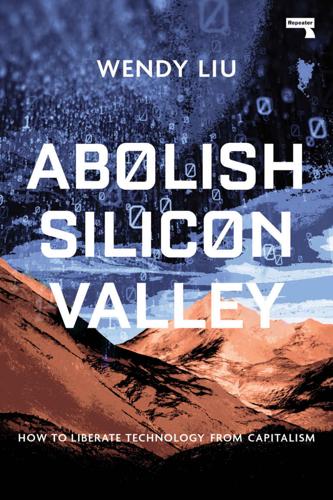
Abolish Silicon Valley: How to Liberate Technology From Capitalism
by
Wendy Liu
Published 22 Mar 2020
Join Union” by Miranda Leitsinger for KQED News, published March 13, 2019, at https://www.kqed.org/news/11732763/the-brewers-who-make-iconic-anchor-steam-beer-in-s-f-join-union. 23 See https://onezero.medium.com/an-open-letter-to-uber-we-need-to-do-right-by-our-drivers-81453fad41e1. 24 See “Uber Lays Off 400 as Profitability Doubts Linger After I.P.O.” by Kate Conger for the New York Times, published July 29, 2019, at https://www.nytimes.com/2019/07/29/technology/uber-job-cuts.html. 25 See “Uber lays off 435 people across engineering and product teams” by Megan Rose Dickey for TechCrunch, published September 10, 2019, at https://techcrunch.com/2019/09/10/uber-lays-off-435-people-across-engineering-and-product-teams/. 26 See “Lyft Buys the Biggest Bike-Sharing Company in the US” by Sean O’Kane for The Verge, published July 2, 2018, at https://www.theverge.com/2018/7/2/17526892/lyft-buys-motivate-bike-sharing-expansion. 27 See “Uber Looked at Buying Bike-Sharing Firm Motivate before Lyft — But Walked Away Over Contract and Union Issues” by Sara Salinas for CNBC, published July 3, 2018, at https://www.cnbc.com/2018/07/03/uber-looked-at-motivate-before-lyft-contract-union-issues.html. Eleven: A New Industrial Model 1 See https://www.businessinsider.com/sam-altman-world-with-trillionaires-is-inevitable-2016-6. 2 In 1976, manufacturing workers at Lucas Aerospace in the UK put forward a plan to direct their plant’s output away from military contracts and towards more socially useful endeavours like medical equipment and clean energy, while also increasing the amount of worker control over production.
…
Pitch over, I called us a Lyft and nudged Nick toward the door, citing early morning meetings. As Nick snored in the front seat, Liam quietly declared that he didn’t want to move to San Francisco if these were the kind of people we would be hanging out with. I shared his unease, but I wasn’t quite ready to agree. Maybe hacker houses just attracted the worst bits of San Francisco? I still wanted to move here, I told him; after all, what other place would be as appropriate for the path we’d chosen? The midnight drive through the foggy hills was unexpectedly peaceful. Our Lyft driver silently steered us through the city, occasionally glancing at his phone for directions.
…
We know who actually benefits from the money in booming sectors; we know that every sector has a divide between the well-paying jobs that will insulate you from economic insecurity, and the poorly-paid jobs that will never get you inside the castle. One afternoon I share a Lyft Line with a passenger who’s on his way to the warehouse of a lesser-known gig economy company, where he works as an independent contractor. He explains that he got called in for his shift last-minute, and he’s taking a Lyft because public transit won’t get him there in time. As we cross the Bay Bridge, sunlight glinting off the canted suspension cables, the passenger waxes poetic about how much he loves his job.

Road to Nowhere: What Silicon Valley Gets Wrong About the Future of Transportation
by
Paris Marx
Published 4 Jul 2022
In September 2019, the decision was codified into law when California’s state legislature passed Assembly Bill 5, which set a deadline of January 1, 2020, for employers to reclassify their workers—and the emphasis was placed on companies in the gig economy, including Uber and Lyft. January 1 came and went without gig workers’ status changing, but they kept pushing lawmakers to ensure the law was observed. In May 2020, California’s attorney general and the city attorneys for San Francisco, Los Angeles, and San Diego took Uber and Lyft to court for misclassifying their workers, and the following month the PUC ruled that drivers for Uber and Lyft were employees, not contractors. On August 10, a judge ruled that the companies had ten days to reclassify their workers as employees, but at the last minute the ruling was delayed until after the election on November 3.
…
The researchers also found that people using Uber were very unlikely to get rid of their personal vehicles.13 This shows that Uber is not reducing congestion or vehicle ownership, and it is also unlikely to reduce transport emissions or to complement traditional public transit. All the Uber and Lyft vehicles that flooded North American streets also made transit services less reliable and less efficient. Buses get stuck in traffic more often and, naturally, riders then start to look for alternatives. In Toronto, less than half of ride-hailing users had a transit pass, compared to just over one-third in Boston,14 and a study of twenty-two US cities estimated that the entry of Uber or Lyft reduced the ridership of buses and heavy rail every year they operated.15 It should go without saying that taking people from transit and putting them in cars not only makes traffic worse, it also increases the environmental footprint of a trip.
…
Yet, just a few years after drivers had taken on those large debts, Uber and Lyft entered the market and the city did not hold up its end of the bargain. Not only did taxi drivers’ lives fall apart in the years following the swift transformation of their industry to serve the interests of multinational ride-hailing companies, but some felt there was no getting out of the hole they then found themselves in. A driver in Chicago told NBC News in 2018 that he had colleagues die of heart attacks and strokes after Uber and Lyft left them in dire financial straits. That same year, four taxi drivers, three livery drivers, and an Uber driver committed suicide in New York City.21 The most high-profile of those suicides was that of Douglas Schifter.
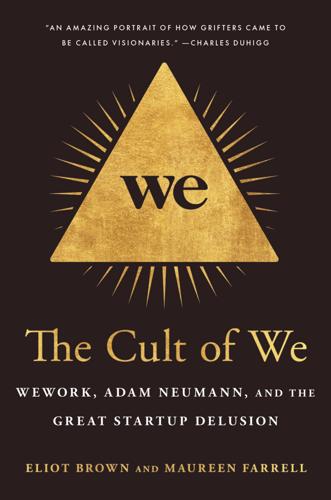
The Cult of We: WeWork, Adam Neumann, and the Great Startup Delusion
by
Eliot Brown
and
Maureen Farrell
Published 19 Jul 2021
Further afield was the potential investment in the ride-hailing company Lyft. Neumann told his deputies he hoped to buy Lyft, and he met repeatedly with John Zimmer, its president and co-founder, about a possible investment by WeWork. It would have been a rather strange marriage: two aging startups, both bleeding money, with one investing the venture capital dollars it raised from SoftBank into the other. (When Masayoshi Son later found out about the talks, he was furious with Neumann and forced him to shut the discussions down. SoftBank was a backer of Lyft’s rival Uber. Neumann told aides he preferred Lyft, in part because it was still run by its founders.
…
JPMorgan was still lagging behind its main rivals in the constant battle to win the top tech IPOs. Its team had just lost the lead position on Peloton’s IPO to Goldman Sachs even after Wintroub and others had spent years helping the exercise-bike startup raise money. And while JPMorgan did lead Lyft’s IPO—only after pledging not to work with Uber for the next eighteen months—the initial euphoria had turned to disappointment when Lyft’s stock plunged below its IPO price in its second day of trading. Wintroub’s presentation lacked the pomp of Goldman’s. Rather than emphasize the prospect of reaching $1 trillion, Wintroub talked about WeWork’s strategic strengths—how the company was on the path to reshaping the way in which large corporations would rent real estate.
…
“You have the full resources”: Dimon to Neumann and IPO team, Spring 2019. helping the exercise-bike startup: Matt Turner, “A Bunch of Cycling Enthusiasts Just Helped Peloton Cycle Raise $325 Million—Betting It Could Be ‘the Apple of Fitness,’ ” Business Insider, May 24, 2017. Lyft’s stock plunged below its IPO price: Corrie Driebusch, “Lyft Shares Falter on Second Trading Day,” Wall Street Journal, April 1, 2019. “superpowers” of “scale” and “technology”: IPO pitch presentation to WeWork, JPMorgan Chase, May 2020. JPMorgan’s range: $46 billion to $63 billion: Eric Platt, Andrew Edgecliffe-Johnson, James Fontanella-Khan, and Laura Noonan, “WeWork Turmoil Puts Spotlight on JPMorgan Chase and Goldman Sachs,” Financial Times, September 24, 2019.

Ghost Road: Beyond the Driverless Car
by
Anthony M. Townsend
Published 15 Jun 2020
Most analysts predict that automation will be the decisive turning point in the battle for ride-hail supremacy. That’s why in 2019, even as Uber and Lyft rushed to their initial public offerings, they raced to put working AVs on the streets. Meanwhile, Google sister company Waymo beat them to the punch, quietly launching a massive fleet of 600 self-driving taxis in Phoenix. With up to 20,000 taxibots scheduled to enter service in the next few years, the company could soon be serving up to a million passengers a day by self-driving cab. The day Lyft started trading, its market cap peaked just south of $25 billion. Much-bigger Uber went public a few months later just shy of $100 billion.
…
Take San Francisco, for instance, ride-hail’s birthplace and the city where people have most eagerly embraced it. By 2016, one-quarter of all vehicle congestion citywide was blamed on Uber and Lyft’s fleets. Fully one-half of the increase in traffic since 2010 was attributed to the ride-hail giants. More alarming than the overall trend were the localized spikes. In the city’s downtown financial district, for instance, Uber and Lyft accounted for a whopping 73 percent of the increased traffic in recent years. Reprogramming mobility had eliminated a decade’s worth of painstaking work by transit agencies, cycling advocates, and walkability planners to reduce auto use.
…
As one journalist put it, “SoftBank is playing the ride-hailing version of Risk,” the classic board game of global conquest, “but it also owns a piece of all the players.” In North America, SoftBank’s money financed a more costly strategy—a price war of attrition waged against Lyft, Uber’s only substantial competition. In 2019, Uber and Lyft each floated initial public offerings, yet both continued to burn cash at extraordinary speed, spending more than half their current revenue on “driver incentives, passenger discounts, sales, and marketing to acquire passengers and drivers faster than the other.” As Silicon Valley guru Tim O’Reilly argued, the two giants were “locked in a capital-fueled deathmatch.”
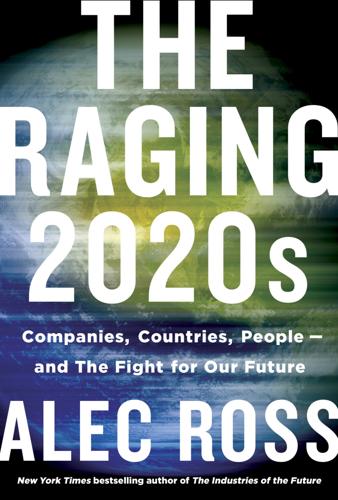
The Raging 2020s: Companies, Countries, People - and the Fight for Our Future
by
Alec Ross
Published 13 Sep 2021
By March 25, 2019, Rideshare Drivers United: Alexia Fernández Campbell, “Thousands of Uber Drivers Are Striking in Los Angeles,” Vox, March 25, 2019, https://www.vox.com/2019/3/25/18280718/uber-lyft-drivers-strike-la-los-angeles; Bryce Covert, “‘It’s Not Right’: Why Uber and Lyft Drivers Went on Strike,” Vox, May 9, 2019, https://www.vox.com/the-goods/2019/5/9/18538206/uber-lyft-strike-demands-ipo. On May 8, 2019, days before Uber: Covert, “Why Uber and Lyft Drivers Went on Strike,” https://www.vox.com/the-goods/2019/5/9/18538206/uber-lyft-strike-demands-ipo; Ben Chapman, “Uber Drivers in UK Cities Go on Strike in Protest over Pay and Workers’ Rights,” Independent, May 7, 2019, https://www.independent.co.uk/news/business/news/uber-drivers-strike-london-birmingham-glasgow-nottingham-pay-rights-a8898791.html.
…
On August 22, 2017, more than one hundred: Marie Targonski-O’Brien, “Uber, Lyft Drivers Crowd LAX, Protest Low Pay,” KCET, August 22, 2017, https://www.kcet.org/shows/socal-connected/uber-lyft-drivers-crowd-lax-protest-low-pay. Between 2013 and 2017: “The Online Platform Economy in 2018: Drivers, Workers, Sellers, and Lessors,” JPMorgan Chase & Co. Institute, April 2019, https://institute.jpmorganchase.com/institute/research/labor-markets/report-ope-2018.htm. “Most of us as drivers”: Targonski-O’Brien, “Uber, Lyft Drivers Crowd LAX, Protest Low Pay,” https://www.kcet.org/shows/socal-connected/uber-lyft-drivers-crowd-lax-protest-low-pay.
…
Like many other grassroots initiatives: Brian Dolber, interview with Jack Corrigan, May 25, 2020; Brian Dolber, interview with Will Peischel, May 15, 2020. With the help of a freelance developer: Noam Schreiber and Kate Conger, “Uber and Lyft Drivers Gain Labor Clout, with Help from an App,” New York Times, September 20, 2019, https://www.nytimes.com/2019/09/20/business/uber-lyft-drivers.html. Most adjunct faculty: “Average Adjunct Professor Salary,” PayScale, accessed May 20, 2020, https://www.payscale.com/research/US/Job=Adjunct_Professor/Salary. about five hundred of the estimated three hundred thousand rideshare drivers: Brian Dolber, interview with Will Peischel, May 15, 2020; “About Us,” Rideshare Drivers United, accessed May 21, 2020, https://drivers-united.org/about.
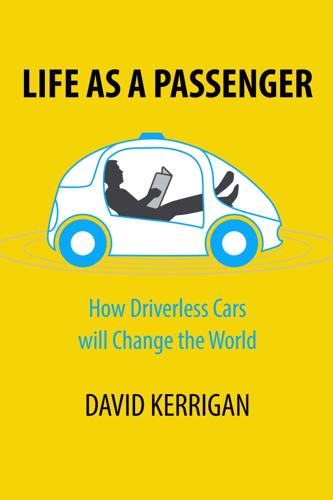
Life as a Passenger: How Driverless Cars Will Change the World
by
David Kerrigan
Published 18 Jun 2017
The new player in the mix of urban life is cars on demand, either on a trip basis with a driver with a service like Uber or Lyft, or on a usage basis - with a service like Zipcar - essentially rental by the hour or by subscription. Taxis have long been a popular way to get around when driving yourself doesn’t suit or isn’t possible. But the modernisation of taxis via the smartphone has given the concept a new lease of life. As of May 2017, leading on-demand provider Uber operates in over 580 cities and saw over $20 billion of bookings in 12 months. Rival company Lyft provides over 20 million rides per month. Ride sharing is currently responsible for about 4 percent of the miles traveled by car globally and Morgan Stanley believe the number will be nearly 30 percent by the year 2030.[59] We’ll look at ownership and its alternatives in more detail in Chapter 5.
…
Uber CEO Travis Kalanick believes that driverless cars pose an existential risk to Uber,[117] and they are working hard to catch up with others in the area. Their big fear is that if someone else develops driverless cars first and launches a fleet of vehicles, they would be able to offer rides at a fraction of the cost that Uber charge, where the bulk of the ride cost is the cost of the driver. In May 2017, Uber’s biggest rival in the US, Lyft, announced a partnership with Waymo, just as Waymo and Uber were embroiled in a legal battle over Intellectual Property concerning LiDAR.[118] Baidu China's top online search firm Baidu said in 2015 it aims to put self-driving vehicles on the road in three years and mass produce them within five years, after it set up a business unit to oversee all its efforts related to automobiles.[119] In a surprise follow up announcement, Baidu revealed it would make its driverless cars technology, including its vehicle platform, hardware platform, software platform and cloud data services, freely available to others, particularly car manufacturers, to develop autonomous vehicles.[120] A Baidu driverless car prototype.
…
Think Kodak, Borders, Blockbuster, music companies, newspapers. The major car manufacturers don’t want to be the “horse” of a new “horseless carriage” era. The line between the agile technology sector and the lumbering powerhouse automotive industries is blurring. The rise of rideshare and ride hailing companies such as Uber and Lyft means that transportation is being tied ever more closely to your cell phone, while autonomous driving technology will require turning your car into a supercomputer. But these developments are expensive: Carmakers’ R&D budgets jumped 61 percent, to $137 billion from 2010 to 2014. Fiat Chrysler America CEO, Sergio Marchionne, has said he believes it makes no sense for carmakers to spend billions of dollars developing competing, yet largely identical systems.
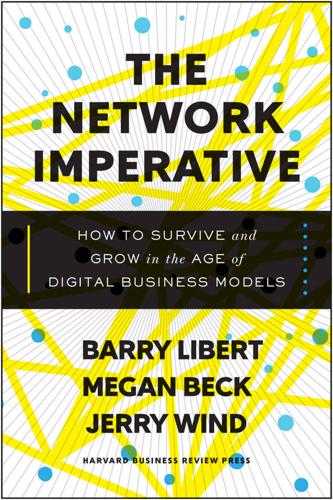
The Network Imperative: How to Survive and Grow in the Age of Digital Business Models
by
Barry Libert
and
Megan Beck
Published 6 Jun 2016
General Motors (GM) is coming enthusiastically, albeit a bit late, to the innovative ride-sharing market with a $500 million investment in Lyft as part of Lyft’s latest $1 billion venture financing round. Although a shift from car ownership to car sharing, and even further to autonomous vehicles, could be a risky disruption to their market, GM’s leaders have decided to embrace the changing business model landscape in transportation and innovate what they do and how they do it. Daniel Ammann, GM’s president, said, “We think there’s going to be more change in the world of mobility in the next five years than there has been in the last 50,” and GM is getting ready for that change.1 From that perspective, Lyft is an excellent partner who will help GM turn their views of the market upside down.
…
Daniel Ammann, GM’s president, said, “We think there’s going to be more change in the world of mobility in the next five years than there has been in the last 50,” and GM is getting ready for that change.1 From that perspective, Lyft is an excellent partner who will help GM turn their views of the market upside down. Lyft’s president John Zimmer stated, “We strongly believe that autonomous vehicle go-to-market strategy is through a network, not through individual car ownership.” According to executives at both GM and Lyft, they will start work on developing a network of self-driving vehicles—a challenge to Google, Tesla, and Uber, which are also devoting resources to this innovation.2 Openness Makes Space for Ongoing Change Will GM’s self-driving-car aspiration create value for the firm? Will its investment in Lyft lead to automotive leadership in ten years?
…
The task of managing external assets, however, is entirely different from managing those owned by your firm. To maintain and grow access to a network’s assets, you must carefully manage the sentiment and engagement of the network itself. If Uber doesn’t keep its drivers happy, there are other ride-sharing networks such as Lyft and Sidecar ready to take them into the fold. Let’s reflect on your organization and pinpoint where you lie on the spectrum from tangible to intangible. Ask yourself these questions, and then mark on the scale of tangible (1) to intangible (10) where your company falls on the spectrum. What are the most important assets of your company?

Blood in the Machine: The Origins of the Rebellion Against Big Tech
by
Brian Merchant
Published 25 Sep 2023
“It’s not looking good,” said Nicole Moore, Uber driver, organizer, and president of Rideshare Drivers United, a Los Angeles–based association that advocates for ride-hail drivers. She was stating the obvious: anything short of a miracle and the proposition, backed by a record $200 million campaign by Uber, Lyft, DoorDash, and InstaCart, would pass into law. It had been a whiplash decade for the world of on-demand app work. In the early 2010s, the wages had started out relatively high, the schedules flexible, the gigs interesting, as Uber and Lyft and their ilk actively sought to attract workers to the platform. But the reason pay was so high, it turned out, was that the start-ups were juiced by war chests of venture capital that backed the app companies as they cornered key markets.
…
They need every bit of pay they’re due. Uber and Lyft have long argued that their drivers—the people physically driving customers from one location to another—are not “core” to its business. These are technology companies, not transportation companies, they argue, so they don’t have to consider drivers as employees. It’s a centuries-old tactic. Recall that when the big cloth manufacturers adopted automated machinery, they argued that regulations and laws on the books governing the trade were outmoded and shouldn’t apply to them. But without drivers, there would be no Uber or Lyft. It’s hard to imagine a component more core to a ride-hailing business than the person who drives the ride that has been hailed.
…
I dove into the archives, interviewed historians, spent time with Luddite scholars—I even lodged with one, in an old weaver’s cottage—and tried to picture this world in the throes of change. To bring the past into dialogue with the present, I interviewed historians of automation and artificial intelligence, attended worker protests against Uber and Lyft, and stopped by then presidential candidate Andrew Yang’s campaign headquarters to hear him raise the specter of the robot jobs apocalypse. I found a ripping tale of unlikely heroes and antiheroes, of fearsome rebellion, of oath-bound secret societies and the spies sent to infiltrate them, of the fickle allegiances of celebrities like Lord Byron, and of the violent royal rage that would culminate in the largest domestic military occupation in Britain’s history.

Live Work Work Work Die: A Journey Into the Savage Heart of Silicon Valley
by
Corey Pein
Published 23 Apr 2018
The coupon bestowed a free introductory taxi ride from the city’s second-largest “app-based pickup service,” Lyft. I found the corporate vowel swapping obnoxious. (Couldn’t it just be Lift?) Ditto the twee mustache logo. But I was much too “frugal,” as my wife put it, to refuse a $25 value on aesthetic grounds. So I installed the Lyft app on my phone, allowed the company to track my geospatial location and who knows what else, and then summoned a car to carry me and my luggage to my new digs across town. When I looked up, there was a car puttering away by the curb. I’d never used an app like Lyft before, and it didn’t seem possible that my ride had shown up so fast.
…
Here again Uber pointed the way. The company had run an ingeniously underhanded dirty tricks campaign against its largest rival, Lyft, by ordering, then canceling, thousands of rides. The hope was that Lyft’s drivers, frustrated by the cancellations, would come work for Uber. Then there was Operation SLOG—“Supplying Long-term Operations Growth”—a “marketing program” revealed by the Verge that involved undercover recruiters equipped with “burner phones, credit cards, and driver kits,” charged with hailing rides on Lyft and then persuading the drivers to defect to Uber. “Not only does Uber know about this, they’re actively encouraging these actions day to day and, in doing so, are flat-out lying both to their customers, the media, and their investors,” one whistleblower told the Verge.
…
She was the model of a twenty-first-century microentrepreneur, which is to say she was a grossly exploited worker. She lived in Oakland but woke up early to drive to central San Francisco, where she picked up two shifts as a public school bus driver. She drove for Lyft on her lunch break and again after work until bedtime. Both employers classified Simone as a part-time independent contractor, and neither seemed at all concerned about her level of fatigue behind the wheel. She wasn’t expecting a raise. “I want to wean away from Lyft,” she told me. “I’m just making someone else rich. I know I could be putting that time into my own company.” In Hollywood, everybody has an unfinished script. In the Bay Area, everybody has a “pre–Series A” tech company running in “stealth mode” (meaning they have an idea without any money behind it that’s ostensibly secret but in fact hungry for publicity).

How to Fix the Future: Staying Human in the Digital Age
by
Andrew Keen
Published 1 Mar 2018
Yes, the drivers don’t have to commit all their time to Uber, but then Uber isn’t committing anything to the drivers either. This is emblematic of an increasingly unequal economy where, in truth, multibillion-dollar start-ups like Uber and Lyft share none of their stratospheric value with their workers. Indeed, a July 2017 report about the gig economy by the British MP Frank Field alleges that some self-employed UK drivers are earning only £2.50 an hour working for sharing economy companies like Parcelforce and webuyanycar.com.30 “In reality, there is no utopia at companies like Uber, Lyft, Instacart and Handy, whose workers are often manipulated into working long hours for low wages while continually chasing the next ride or task,” that 2017 New York Times editorial argues.31 Or, as the New Yorker staff writer Jia Tolentino bluntly put it, commenting on the cult of work celebrated by on-demand companies such as the freelance marketplace Fiverr, “The gig economy celebrates working yourself to death.”32 My own experience as a heavy Uber user chimes with these conclusions.
…
Tim Harford, “An Economist’s Dreams of a Fairer Gig Economy,” Financial Times, December 20, 2015. 44. Nick Wingfield and Mike Isaac, “Seattle Will Allow Uber and Lyft Drivers to Form Unions,” New York Times, December 14, 2015. 45. Chris Johnston, “Uber Drivers Win Key Employment Case,” BBC News, October 28, 2016. 46. Jessica Floum, “Uber Settles Lawsuit with SF, LA over Driver Background Checks,” San Francisco Chronicle, April 7, 2016. 47. Rich Jervis, “Austin Voters Reject Uber, Lyft Plan for Self-Regulation,” USA Today, May 8, 2016. 48. Sam Levin, “Elizabeth Warren Takes on Airbnb, Urging Scrutiny of Large-Scale Renters,” Guardian, July 13, 2016. 49.
…
From old carpet factories in Berlin to gentlemen’s colonial clubs in Bangalore to lawyers’ offices in Boston to the European Commission headquarters in Brussels and beyond, How to Fix the Future offers a new geography of how regulators, innovators, educators, consumers, and citizens are fixing the future. But there’s no Uber or Lyft–style service that can whisk us, with the click of a mouse or the swipe of a finger, into the future. No, not even the smartest technology can solve technological problems. Only people can. And that’s what this book is about. It is the story of how some people in some places are solving the thorniest problems of the digital age.

What Algorithms Want: Imagination in the Age of Computing
by
Ed Finn
Published 10 Mar 2017
The company only recently abandoned its directive that drivers festoon their cars with quirky pink moustaches, and many drivers still assume passengers will sit companionably in the front seat, rather than the rear. Figure 4.4 Lyft advertising takes a very different tack from Uber. For companies like Lyft and more deliberately intimate interface layer systems like the dating app Tindr, the “sharing economy” is not about money at all, but about that experience of companionship. If these business models are founded on exploiting certain kinds of alienated labor and attention, their customer experience promises relief from that alienation. Even as Uber and Lyft collect their invisible commissions on unseen transactions, the affective experience is one of a specially branded community.
…
At a deeper level, what the interface entrepreneurs are asking is for us to share (and monetize) our time: the founders of Lyft are motivated not just by profit but by the loneliness of the average commuter stuck in his car.36 These companies encourage us to dedicate our hours to others, often in appeals that blend the allure of wages for labor with something more socially complex. Where Uber sells a kind of elite independence to both its drivers and riders (figure 4.3), Lyft is selling a different and more intimate kind of social contact (figure 4.4). The company only recently abandoned its directive that drivers festoon their cars with quirky pink moustaches, and many drivers still assume passengers will sit companionably in the front seat, rather than the rear.
…
Figure 4.2: The cartoon maps Uber provides for its drivers and passengers via the Google Play Store. Figure 4.3: Uber’s homepage offers a message of simultaneous elitism and equality (image from July 2014). Source: Uber, http://mascola.com/insights/ubers-lost-positoning-luxury-car-service/. Figure 4.4: Lyft advertising takes a very different tack from Uber. Source: http://www.adweek.com/news/technology/lyft-hopes-accelerate-first-integrated-ad-campaign-159619. Figure 4.5: Amazon Mechanical Turk Interface for Managing Workers. © 2016, Amazon Web Services, Inc. or its affiliates. All rights reserved. http://docs.aws.amazon.com/AWSMechTurk/latest/RequesterUI/ViewingWorkerDetails.html.

System Error: Where Big Tech Went Wrong and How We Can Reboot
by
Rob Reich
,
Mehran Sahami
and
Jeremy M. Weinstein
Published 6 Sep 2021
A consortium of tech companies: Kari Paul and Julia Carrie Wong, “California Passes Prop 22 in a Major Victory for Uber and Lyft,” Guardian, November 4, 2020, https://www.theguardian.com/us-news/2020/nov/04/california-election-voters-prop-22-uber-lyft; Andrew J. Hawkins, “An Uber and Lyft Shutdown in California Looks Inevitable—Unless Voters Bail Them Out,” Verge, August 16, 2020, https://www.theverge.com/2020/8/16/21370828/uber-lyft-california-shutdown-drivers-classify-ballot-prop-22. “I doubt whether”: Andrew J. Hawkins, “Uber and Lyft Had an Edge in the Prop 22 Fight: Their Apps,” Verge, November 4, 2020, https://www.theverge.com/2020/11/4/21549760/uber-lyft-prop-22-win-vote-app-message-notifications.
…
Hawkins, “Uber and Lyft Had an Edge in the Prop 22 Fight: Their Apps,” Verge, November 4, 2020, https://www.theverge.com/2020/11/4/21549760/uber-lyft-prop-22-win-vote-app-message-notifications. “Up to 90%”: Lyft, “What Is Prop 22 | California Drivers | Vote YES on Prop 22 | Rideshare | Benefits | Lyft,” Lyft, October 8, 2020, https://www.youtube.com/watch?v=-7QJLgdQaf4. “Unwarranted, concentrated economic power”: Nancy Pelosi (@speakerpelosi), “Unwarranted, concentrated economic power in the hands of a few is dangerous to democracy—especially when digital platforms control content. The era of self-regulation is over,” Twitter, June 3, 2019, https://twitter.com/speakerpelosi/status/1135698760397393921. CHAPTER 3: The Winner-Take-All Race Between Disruption and Democracy “One of the things”: Maureen Dowd, “Peter Thiel, Trump’s Tech Pal, Explains Himself,” New York Times, January 11, 2017, https://www.nytimes.com/2017/01/11/fashion/peter-thiel-donald-trump-silicon-valley-technology-gawker.html.
…
Similar to the way the hardware engineers of the 1970s and ’80s had brought about a shift in venture funding from Wall Street and the East Coast world of finance to Sand Hill Road and the West Coast world of software, many of the engineers who had ridden the first dot-com wave became poised to fund the next round of tech companies. Marc Andreessen would swap the jeans he had worn on the cover of Time for a sports jacket, founding the venture capital firm Andreessen Horowitz with his longtime colleague Ben Horowitz in 2009. Their firm would become an investor in Twitter, Instagram, Facebook, Pinterest, Lyft, and Airbnb. In an oft-quoted 2011 piece in the Wall Street Journal, “Why Software Is Eating the World,” Andreessen explained how the capital needs of tech companies had changed: On the back end, software programming tools and Internet-based services make it easy to launch new global software-powered start-ups in many industries—without the need to invest in new infrastructure and train new employees.
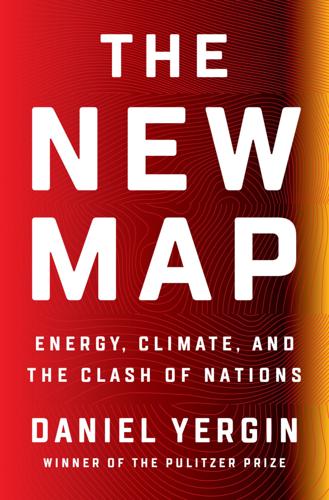
The New Map: Energy, Climate, and the Clash of Nations
by
Daniel Yergin
Published 14 Sep 2020
Green and Zimmer connected, and in 2012 began to offer short rides in San Francisco. They called the new venture Lyft. Anyone could be a driver. In contrast to the upmarket “private driver” black car of early Uber, they provided Lyft drivers with pink mustaches to affix to the front of their cars. “Friendliness” and fist bumps were Lyft’s mode, a studied contrast to Uber’s ersatz limousine. Uber wasted no time in striking back, launching its own service with ordinary drivers. “We chose to compete,” Kalanick wrote in a blog post.3 And compete Uber did, and fiercely so. Its new business model was UberX, which adopted Lyft’s model and enrolled nonprofessional drivers who could work as little or as much as they wanted.
…
They would be contractors, not employees. In other words, it’s a BYOC model—Bring Your Own Car. Uber drivers, 60 percent of whom have other jobs, have become prime examples for what became known as the “gig economy.” Both Uber and Lyft also rolled out modern versions of carpooling services that match up a rider with another rider in close proximity headed to nearby destinations. Uber and Lyft rolled forward, opening in city after city. Customers, initially many of them millennials, were quickly won over. In its quest to expand, Uber went to war with local taxicab drivers and owners and transportation regulators, all of whom opposed it as an unregulated taxi company.
…
He was replaced by Dara Khosrowshahi, who had been CEO of the online travel company Expedia.6 By then, the ride-hailing industry was already well established; Uber alone had two million drivers worldwide, and “Uber” had the status of a verb. The growth in ride hailing had proved exponential. In San Francisco alone, Uber’s revenues were in the billions, compared to less than $200 million for taxis. By 2017, Uber was operating in 540 cities around the world; Lyft, 290 in the United States. In the United States, Uber had about 70 percent of ride hailing and Lyft, 30 percent. Internationally, in addition to DiDi, other major players have emerged, including Gett in Europe and Ola in India. Overall, ride hailing could be a very big industry. But the industry still had a major challenge—to prove that it could be profitable.
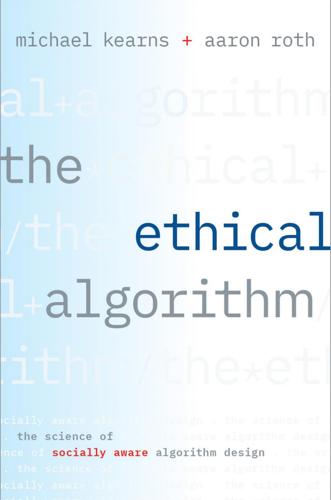
The Ethical Algorithm: The Science of Socially Aware Algorithm Design
by
Michael Kearns
and
Aaron Roth
Published 3 Oct 2019
It tells you that today LYFT is going to end the day down, and you should short-sell it. Of course, you don’t—but you take note. And at the end of the day, you are amused to find that again the sender was right, and LYFT was down more than 5 percent. The next day you get another email saying LYFT will go down again. The next day, yet another—LYFT will end the day up. This goes on for ten days, and every day the sender correctly predicts the direction of the stock. At first you were just curious, but now you are starting to really pay attention. After a few days you suspected that the sender might be a Lyft employee who is giving you illegal tips based on inside information.
…
Such phenomena cannot occur under the Maxwell solution. 4 Lost in the Garden Led Astray by Data Past Performance is no Guarantee of Future Returns Imagine that you wake up one day and check your email. Waiting for you in your inbox is a message with the subject line “Hot Stock Tip!” Inside, you find a prediction: shares of Lyft, the recently listed ride-sharing company (NASDAQ:LYFT), are going to end the day up. You should buy some now! Of course, you don’t take this advice—how did it get past your spam filter? But the prediction is specific enough that you remember it, and you check Google Finance after the close of the market. Sure enough, LYFT shares ended the day up. Amusing, but not terribly surprising—if the sender had merely flipped a coin and guessed, he would have been right about the direction of the stock half the time.
…
After a few days you suspected that the sender might be a Lyft employee who is giving you illegal tips based on inside information. But you then discovered that there’s really not been any news or events to support this hypothesis, or to explain the seemingly random movements of LYFT. Finally, on the eleventh day, the sender emails you a request. He wants you to pay him to continue giving you stock recommendations. He will charge a high fee, but it will be worth it, he says. After all, he’s already given you a free demonstration of how talented he is at predicting the movement of stocks. You take a moment to consider it. Should you view his demonstrated streak of ten correct predictions as convincing?

Stakeholder Capitalism: A Global Economy That Works for Progress, People and Planet
by
Klaus Schwab
Published 7 Jan 2021
GDP also goes up when banks post financial profits, but it remains stagnant when digital innovations get introduced that make our lives easier. 40 “The Treasury's Living Standards Framework,” New Zealand Government, December 2019, https://treasury.govt.nz/sites/default/files/2019-12/lsf-dashboard-update-dec19.pdf. 41 “New Zealand's Ardern Wins 2nd Term in Election Landslide,” Associated Press, October 2020, https://apnews.com/article/virus-outbreak-new-zealand-mosque-attacks-auckland-elections-new-zealand-b1ab788954f23f948d8b6c3258c02634. 42 “Uber and Lyft Drivers Guild Wins Historic Pay Rules,” Independent Drivers Guild, December 2018, https://drivingguild.org/uber-and-lyft-drivers-guild-wins-historic-pay-rules/. 43 I'm a New York City Uber Driver. The Pandemic Shows That My Industry Needs Fundamental Change or Drivers Will Never Recover,” Aziz Bah, Business Insider, July 2020, https://www.businessinsider.com/uber-lyft-drivers-covid-19-pandemic-virus-economy-right-bargain-2020-7?r=US&IR=T. 44 Humanity Forward, https://movehumanityforward.com/. 45 Data as a Property Right, Humanity Forward, https://movehumanityforward.com/data-property-right. 46 “Andrew Yang Is Pushing Big Tech to Pay Users for Data,” The Verge, June 2020, https://www.theverge.com/2020/6/22/21298919/andrew-yang-big-tech-data-dividend-project-facebook-google-ubi. 47 “A Modern Union for the Modern Economy,” Jeffrey M.
…
Uber Settles Driver Claims Before Disappointing IPO,” Forbes, May 2019, https://www.forbes.com/sites/kellyphillipserb/2019/05/13/worker-or-independent-contractor-uber-settles-driver-claims-before-disappointing-ipo/#7a157b93f39f. 18 “Uber and Lyft Drivers in California Will Remain Contractors”, Kate Conger, The New York Times, November 2020, https://www.nytimes.com/2020/11/04/technology/california-uber-lyft-prop-22.html. 19 “Are Political Parties in Trouble?” Patrick Liddiard, Wilson Center, December 2018, https://www.wilsoncenter.org/sites/default/files/media/documents/publication/happ_liddiard_are_political_parties_in_trouble_december_2018.pdf. 20 “A Deep Dive into Voter Turnout in Latin America,” Holly Sunderland, Americas Society / Council of the Americas, June 2018, https://www.as-coa.org/articles/chart-deep-dive-voter-turnout-latin-america. 21 “Historical Reported Voting Rates, Table A.1,” United States Census Bureau, https://www.census.gov/data/tables/time-series/demo/voting-and-registration/voting-historical-time-series.html. 22 “How to Correctly Understand the General Requirements of Recruiting Party Members?”
…
A good place to start is probably with those gig workers who work exclusively for one platform or in one industry, such as drivers. It is what the Independent Drivers Guild in New York and Gig Workers Rising in California do. Both groups gather drivers who work primarily for Uber, Lyft, and other similar platforms and advocate for “better wages, working conditions, and respect.”50 It has led to some structural changes in the status and treatments of such drivers. In August 2020, a California court ordered ride-hailing and delivery apps such as Uber and Lyft to treat their drivers as employees.51 It would require these companies to provide a minimum wage, health insurance, and overtime pay and paid sick leave, media reported.52 However, the court battles on this legislation continued into the Fall, and as we saw earlier, voters rejected Proposition 22 in November 2020, overturning much of the previous legislation on the matter, making Uber, Lyft, and other drivers contract workers once more.53 (At the time of writing, it continues to be battled in court by the platforms in question.)

Stakeholder Capitalism: A Global Economy That Works for Progress, People and Planet
by
Klaus Schwab
and
Peter Vanham
Published 27 Jan 2021
GDP also goes up when banks post financial profits, but it remains stagnant when digital innovations get introduced that make our lives easier. 40 “The Treasury's Living Standards Framework,” New Zealand Government, December 2019, https://treasury.govt.nz/sites/default/files/2019-12/lsf-dashboard-update-dec19.pdf. 41 “New Zealand's Ardern Wins 2nd Term in Election Landslide,” Associated Press, October 2020, https://apnews.com/article/virus-outbreak-new-zealand-mosque-attacks-auckland-elections-new-zealand-b1ab788954f23f948d8b6c3258c02634. 42 “Uber and Lyft Drivers Guild Wins Historic Pay Rules,” Independent Drivers Guild, December 2018, https://drivingguild.org/uber-and-lyft-drivers-guild-wins-historic-pay-rules/. 43 I'm a New York City Uber Driver. The Pandemic Shows That My Industry Needs Fundamental Change or Drivers Will Never Recover,” Aziz Bah, Business Insider, July 2020, https://www.businessinsider.com/uber-lyft-drivers-covid-19-pandemic-virus-economy-right-bargain-2020-7?r=US&IR=T. 44 Humanity Forward, https://movehumanityforward.com/. 45 Data as a Property Right, Humanity Forward, https://movehumanityforward.com/data-property-right. 46 “Andrew Yang Is Pushing Big Tech to Pay Users for Data,” The Verge, June 2020, https://www.theverge.com/2020/6/22/21298919/andrew-yang-big-tech-data-dividend-project-facebook-google-ubi. 47 “A Modern Union for the Modern Economy,” Jeffrey M.
…
Uber Settles Driver Claims Before Disappointing IPO,” Forbes, May 2019, https://www.forbes.com/sites/kellyphillipserb/2019/05/13/worker-or-independent-contractor-uber-settles-driver-claims-before-disappointing-ipo/#7a157b93f39f. 18 “Uber and Lyft Drivers in California Will Remain Contractors”, Kate Conger, The New York Times, November 2020, https://www.nytimes.com/2020/11/04/technology/california-uber-lyft-prop-22.html. 19 “Are Political Parties in Trouble?” Patrick Liddiard, Wilson Center, December 2018, https://www.wilsoncenter.org/sites/default/files/media/documents/publication/happ_liddiard_are_political_parties_in_trouble_december_2018.pdf. 20 “A Deep Dive into Voter Turnout in Latin America,” Holly Sunderland, Americas Society / Council of the Americas, June 2018, https://www.as-coa.org/articles/chart-deep-dive-voter-turnout-latin-america. 21 “Historical Reported Voting Rates, Table A.1,” United States Census Bureau, https://www.census.gov/data/tables/time-series/demo/voting-and-registration/voting-historical-time-series.html. 22 “How to Correctly Understand the General Requirements of Recruiting Party Members?”
…
A good place to start is probably with those gig workers who work exclusively for one platform or in one industry, such as drivers. It is what the Independent Drivers Guild in New York and Gig Workers Rising in California do. Both groups gather drivers who work primarily for Uber, Lyft, and other similar platforms and advocate for “better wages, working conditions, and respect.”50 It has led to some structural changes in the status and treatments of such drivers. In August 2020, a California court ordered ride-hailing and delivery apps such as Uber and Lyft to treat their drivers as employees.51 It would require these companies to provide a minimum wage, health insurance, and overtime pay and paid sick leave, media reported.52 However, the court battles on this legislation continued into the Fall, and as we saw earlier, voters rejected Proposition 22 in November 2020, overturning much of the previous legislation on the matter, making Uber, Lyft, and other drivers contract workers once more.53 (At the time of writing, it continues to be battled in court by the platforms in question.)

Winners Take All: The Elite Charade of Changing the World
by
Anand Giridharadas
Published 27 Aug 2018
Judge Chhabria similarly cited and tore down Lyft’s claim to be “an uninterested bystander of sorts, merely furnishing a platform that allows drivers and riders to connect.” He wrote: Lyft concerns itself with far more than simply connecting random users of its platform. It markets itself to customers as an on-demand ride service, and it actively seeks out those customers. It gives drivers detailed instructions about how to conduct themselves. Notably, Lyft’s own drivers’ guide and FAQs state that drivers are “driving for Lyft.” Therefore, the argument that Lyft is merely a platform, and that drivers perform no service for Lyft, is not a serious one.
…
To be a contractor is to give up certain protections and benefits in exchange for independence, and thus that independence must be genuine. The case inspired the judges in the two cases, Edward Chen and Vince Chhabria, to grapple thoughtfully with the question of where power lurks in a new networked age. It was no surprise that Uber and Lyft took the rebel position. Like Airbnb, Uber and Lyft claimed not to be powerful. Uber argued that it was just a technology firm facilitating links between passengers and drivers, not a car service. The drivers who had signed contracts were robust agents of their own destiny. Judge Chen derided this argument. “Uber is no more a ‘technology company,’ ” he wrote, “than Yellow Cab is a ‘technology company’ because it uses CB radios to dispatch taxi cabs, John Deere is a ‘technology company’ because it uses computers and robots to manufacture lawn mowers, or Domino Sugar is a ‘technology company’ because it uses modern irrigation techniques to grow its sugar cane.”
…
Therefore, the argument that Lyft is merely a platform, and that drivers perform no service for Lyft, is not a serious one. The judges believed Uber and Lyft to be more powerful than they were willing to admit, but they also conceded that the companies did not have the same power over employees as an old-economy employer like Walmart. “The jury in this case will be handed a square peg and asked to choose between two round holes,” Judge Chhabria wrote. Judge Chen, meanwhile, wondered whether Uber, despite a claim of impotence at the center of the network, exerted a kind of invisible power over drivers that might give them a case. In order to define this new power, he decided to turn where few judges do: the late French philosopher Michel Foucault.

Whistleblower: My Journey to Silicon Valley and Fight for Justice at Uber
by
Susan Fowler
Published 18 Feb 2020
The first rumor I’d heard had come from a reporter who called me in late February to see if I could confirm something she had heard from a source: that Lyft had paid me to write a defamatory blog post about Uber. It was obviously false, and I told her so. Within a few days, I heard versions of the same rumor from other reporters, from people in the tech industry, and from employees at Uber, all centered on Lyft’s paying me to write the blog post. As soon as this rumor died down, another one quickly took its place: that powerful venture capitalists in Silicon Valley had been responsible for writing the blog post and making it go viral; in some versions of this rumor, those “powerful people” were investors in Lyft, Google, or Chad’s company.
…
While I counted down the days until my interview, I asked more Uber drivers about their experiences. I tried to pry from them the worst, most awful things they’d experienced or seen, but the worst thing they ever said about driving for Uber was that they were worried the company would cut fare prices to stay competitive with Lyft, its rival. * * * — Uber’s corporate headquarters was located at 1455 Market Street, a building it shared with Square and several other companies, but that wasn’t its only office in San Francisco. Several BART stops northeast on Market Street, right off the Montgomery Street BART station, were Uber’s two engineering offices.
…
I went on several more Uber rides, and again I asked the drivers what they thought about the company. This time I pushed them even harder than I had before, asking them if they knew any other drivers who were having bad experiences. But they were universally positive and said the same thing I’d heard before: fares were down because of intense competition with Lyft, but they were sure Uber would bring them back up; in general, they liked driving for Uber. Feeling reassured, I put aside my wariness about the Project Euler and equity incidents and accepted the job. * * * — I was one of the first new employees to show up at Uber’s headquarters on orientation day, November 30, 2015.

Virtual Competition
by
Ariel Ezrachi
and
Maurice E. Stucke
Published 30 Nov 2016
Sarah Ashley O’Brien, “NYC Uber Drivers Protest Rate Cuts,” CNN Money (February 1, 2016), http://money.cnn.com/2016/02/01/technology/uber-nyc -protest/index.html?sr =twCNN020116uber-nyc-protest0317PMVODtopPhoto &linkId=20849630; Lyft, Nashville Drivers Make Up to $6000/Month Driving Your Car, https://www.lyft.com/drive-for-lyft?im=& inc= 6000& t=month &kw=Nashville%20Drivers& utm _ source =bing& utm _medium= search& utm _campaign=Driver_BNA _v2 _ Search _Brand _ All_Lyft& utm _term=lyft%20 com%20driver&adgroup =lyft _driver&device = c& matchtype =b. Uber, “Dynamic Pricing 101 | Uber,” YouTube (December 2014), https://www .youtube.com/watch?v=76q7PDnxWuE. Annie Lowrey, “Is Uber’s Surge-Pricing an Example of High-Tech Gouging?
…
Granted, the customer can compare the Uber price to alternatives (such as taxis or other car ser vice platforms like Lyft), but as more customers and drivers rely on Uber’s platform, one may wonder what effect its algorithm could have on the market price. To illustrate, let us suppose Uber is the dominant car ser vice platform in Nashville. Let us also assume taxis, for various reasons, are not a significant competitive restraint. What, if any, competition is left? Uber drivers do not offer discounts, as Uber’s pricing algorithm determines the fare. Nor will Uber drivers necessarily compete by offering better ser vice. One study of Uber and Lyft drivers found that they “distanced themselves from one another by checking other drivers’ locations on the map so that they did not compete with each other for passenger requests.
…
Nathaniel Mott, “Uber Should Fear the Company Formerly Known as Google,” Gigaom (August 11, 2015), https://gigaom.com/2015/08/11/uber-vs -alphabet-google/. Weinberger, “Microsoft Could See an Opportunity to Poke Google in the Eye with Uber Investment.” Douglas MacMillan, “GM Invests $500 Million in Lyft, Plans System for Self-Driving Cars,” Wall Street Journal, January 4, 2016, http://www.wsj.com /article _email/gm-invests-500-million-in-lyft-plans-system-for-self-driving -cars-1451914204-lMyQjAxMTI2NTA2NDEwODQyWj. Coupons.com, Form 10-K for 2014 (2014), 17; Yelp Inc., Form 10-Q for the Quarterly Period Ended June 30, 2015 (2015), 33, http://www.sec.gov /Archives/edgar/data/1345016/000120677415002479/yelp_10q.htm.

Insane Mode: How Elon Musk's Tesla Sparked an Electric Revolution to End the Age of Oil
by
Hamish McKenzie
Published 30 Sep 2017
Santa Clara–based graphics chipmaker Nvidia has added hundreds of engineers to its auto-focused teams in the past few years. “We didn’t start out to be an auto company,” Danny Shapiro, Nvidia’s senior director of automotive, told the Times. “But everything that is changing a car has nothing to do with the auto industry of the past.” Start-ups have spotted the opportunity, too, of course. Uber and Lyft, both based in San Francisco, are hogging the early spoils in the ride-sharing market. Younger companies like Mountain View’s Smartcar (infrastructure for the connected car), San Francisco’s Reviver (digital license plates), and Palo Alto’s Nauto (AI-powered autonomous driving) are pursuing other software-related opportunities.
…
Meanwhile, electric power-train companies like Wrightspeed (heavy-duty trucks), Zero (motorcycles), and Proterra (buses) are also in the area and have collectively raised hundreds of millions of dollars in funding. On the autonomous-driving side of things, Alphabet (formerly Google), which has logged several million self-driving-car test miles, continues to lead the pack. At the end of 2016, it created a new business division, called Waymo, for its autonomous driving technology. In May 2017, Waymo and Lyft announced that they would work together on developing the technology, and later in the year, Alphabet invested $1 billion in the start-up. Others, like Cruise Automation (which GM acquired for $1 billion) and Comma.ai, which offers open-source autonomous driving technology in the same vein as Google’s Android mobile operating system, are chasing hard.
…
The Bolt is just one of GM’s two dozen vehicle models in the United States, and Fletcher referred to it as a component of the company’s expanding “mobility play.” In 2016, GM acquired the self-driving car start-up Cruise for a billion dollars and invested about half that amount in the ride-sharing company Lyft, giving the auto giant a firm footing in the trifecta of areas that Fletcher said was transforming the industry. “The Bolt EV is the tipping point that kicks all that off,” she said. Because we spoke long in advance of the Model 3’s public availability, Fletcher wouldn’t be drawn out on the question of whether the car was a Model 3 competitor (“You’re asking about something that I don’t know what it is”), preferring to focus on bigger-picture matters.

A Brief History of Motion: From the Wheel, to the Car, to What Comes Next
by
Tom Standage
Published 16 Aug 2021
Lynk & Co., a Chinese firm that describes itself as “Netflix for cars,” says it will let users subscribe for as little as one month at a time. Ride-hailing companies are also experimenting with offering their services via a monthly subscription, just as mobile phones went from per-minute billing to monthly bundles. John Zimmer, the cofounder of Lyft, told the Wall Street Journal in 2018, “Where I see this going is instead of getting keys for a sixteenth birthday—which used to be that symbol of freedom in America—you get a Lyft subscription.” Even Ford, GM, and other carmakers talk of pivoting from selling vehicles to selling “mobility services,” though so far their investments in car-sharing and ride-hailing firms have not come to much.
…
The possibility that cheap robotaxis could undermine car ownership explains why both ride-hailing firms, such as Uber and Lyft, and carmakers have been investing billions of dollars in autonomous-driving research. Any firm that develops a viable robotaxi would potentially be able to undercut both ride-hailing companies that rely on human drivers, and carmakers whose business model depends on selling people cars. Fear of this outcome has resulted in a constantly shifting web of alliances between AV start-ups, ride-hailing firms, and carmakers, as everyone tries to hedge bets. Waymo, for example, has partnerships with Lyft, Fiat Chrysler, and Jaguar Land Rover, while Toyota has invested in Uber’s AV unit.
…
Cars are also, by their nature, visible in public with their owners in a way that washing machines or wide-screen televisions, say, are not. In recent years, however, the idea that “you are what you drive” has come under pressure from various attempts to provide the benefits of cars without having to own them. Today a ride can be summoned when needed from a ride-hailing service such as Uber or Lyft. Car-sharing clubs make renting a car for a few hours, or a couple of days, quick and easy using a smartphone app. Some start-ups are experimenting with services that let drivers subscribe to a car, paying a monthly fee for use of a specific vehicle or a pool of shared cars. Lynk & Co., a Chinese firm that describes itself as “Netflix for cars,” says it will let users subscribe for as little as one month at a time.
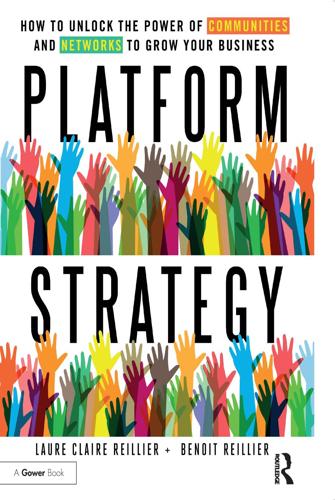
Open for Business Harnessing the Power of Platform Ecosystems
by
Lauren Turner Claire
,
Laure Claire Reillier
and
Benoit Reillier
Published 14 Oct 2017
The rise of platforms enabling the sharing economy movement – both in terms of renting other people’s cars or sharing rides with them – will no doubt have a profound impact on future demand for cars. Some observers are predicting a future where personal car ownership becomes a distant memory and an economic aberration. Recent moves by General Motors (who invested $500 million in Uber’s competitor Lyft and is forging strategic alliances with other platforms) suggest that some companies are taking notice and trying to secure orders from companies that will be tomorrow’s customers. Lyft is unlikely to become a car manufacturer and compete against GM, yet it is one of the companies disrupting the transportation market, which will definitely have an effect on demand for cars. These ‘second order’ effects can be missed if the assessment of possible platform disruption is too narrowly focused on the emergence of direct competitors.
…
We’ll also define platform-powered businesses as firms that have parts of their business underpinned by platforms. Table 1.2 Examples of digital platforms Digital platforms connecting communities of users and producers and enabling them to transact Users Producers eBay, Alibaba Airbnb, Onefinestay Uber, Lyft Turo, Drivy BlaBlaCar, Waze Carpool YouTube, Facebook Buyers of goods Guests Passengers Car renters Passengers Viewers Amex, Visa, Mastercard Upwork, Hired Tinder, Match.com, Happn UberEATS, Deliveroo AngelList, Seedrs TaskRabbit, Stootie Kickstarter, Indiegogo Card owners Businesses Single guys dating Buyers of meals at home Investors in start-ups Buyers of services Buyers of new products Sellers of goods Hosts Taxis Car owners Car drivers Content producers and advertisers Merchants Freelancers Single girls dating Restaurants Start-ups seeking capital Providers of services Providers of new products 6 Introduction to platform businesses Since many platform businesses are digital in nature, we use the term digital platform for businesses digitally connecting members of communities to enable them to transact.
…
Airbnb and Uber are cases in point.11 In only a few years, they, and others, have managed to secure market valuations in excess of $1 billion, gaining the nickname of ‘unicorns’.12 Aileen Lee famously coined the unicorn metaphor in 2013,13 but it looks like unicorn companies are not as rare as they once were, and perhaps should be called instead the new ‘workhorses’. Today, there are no fewer than 177 such companies14 that are worth over $1 billion each (the original definition of a ‘unicorn’). As illustrated in Figure 2.5, many of them exhibit strong platform characteristics.15 For example, Didi Chuxing (formerly Didi Kuaidi), headquartered in China, and Lyft, in the US, are platforms matching drivers and passengers 16 The meteoric rise of platform businesses Figure 2.5 Private value of platform-powered unicorn start-ups (US$ billions) Source: CB Insights, 1 August 2016, Launchworks analysis like Uber, and both have raised significant private investments.
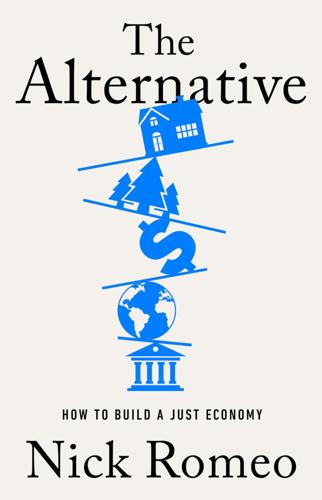
The Alternative: How to Build a Just Economy
by
Nick Romeo
Published 15 Jan 2024
Ryan Menezes, Maloy Moor, and Phi Do, “California Propositions Shatter Fundraising Records with More Than $785 Million to Spend,” Los Angeles Times, November 13, 2020, https://www.latimes.com/projects/props-california-2020-election-money/. 2. Theron Mohamed, “Uber and Lyft Gain $13 Billion in Combined Market Value After Californians Approve Prop 22,” Markets Insider, November 4, 2020, https://markets.businessinsider.com/news/stocks/uber-lyft-stock-prices-california-votes-for-prop-22-2020-11-1029764137. 3. Ken Jacobs and Michael Reich, “The Uber/Lyft Ballot Initiative Guarantees Only $5.64 an Hour,” UC Berkeley Labor Center, October 31, 2019, https://laborcenter.berkeley.edu/the-uber-lyft-ballot-initiative-guarantees-only-5-64-an-hour-2/. 4. William B. Gould IV, “Will Voters Side with the Continued Exploitation of Gig Workers?
…
Gilbert, of the forest brawls, is a restaurant manager. 5 Disrupting the Disruptors Gig Work as a Public Utility One October morning in 2020, a week before California voters passed Proposition 22, denying gig workers the legal status of employees and associated benefits such as paid sick time and unemployment insurance, an Oakland nonprofit hosted a talk entitled “Beyond the Gig Economy.” Companies such as Uber, Lyft, and DoorDash had spent over $200 million campaigning for Proposition 22, outspending their opponents by a factor of ten to one in the costliest ballot fight in the state’s history.1 For the companies, this was a good investment: the valuations of Uber and Lyft increased by $13 billion after the proposition passed.2 For their workers, it was a different story. A calculation by UC Berkeley researchers found that unpaid waiting time, underpayment of expenses, and unpaid payroll taxes made drivers’ guaranteed effective minimum wage after the measure passed $5.64 an hour.3 California gig workers could be penalized for declining jobs, for not delivering orders within a specific time frame, for missing shifts, regardless of the reason, or for not logging in with sufficient frequency.
…
Gould IV, “Will Voters Side with the Continued Exploitation of Gig Workers?,” Hill, October 15, 2020, https://thehill.com/opinion/finance/521146-will-voters-side-with-the-continued-exploitation-of-gig-workers/. 5. Ken Jacobs and Michael Reich, “What Would Uber and Lyft Owe to the State Unemployment Insurance Fund?,” (data brief), CWED, IRLE, UC Berkeley Labor Center, May 2020, https://laborcenter.berkeley.edu/pdf/2020/What-would-Uber-and-Lyft-owe-to-the-State-Unemployment-Insurance-Fund.pdf. 6. Julian Bingley, “Exploited Gig Workers Need Industry Reform Claims New Flinders University Study,” ZDNET, May 30, 2022, https://www.zdnet.com/article/exploited-gig-workers-need-industry-reform-claims-new-flinders-university-study/. 7.

Terms of Service: Social Media and the Price of Constant Connection
by
Jacob Silverman
Published 17 Mar 2015
Promoting individual economic liberty is presented as part of the company’s mandate.) In the case of Lyft, potential drivers have to apply for work through their Facebook accounts. Once a driver is approved, he receives a fluffy pink mustache to affix to the front of his car. Customers call for a Lyft car through a smartphone app, choosing a driver by looking at his name, his rating, and photos of him and his car. Once the customer gets inside, the driver is supposed to offer his passenger a fist bump. For a while, Lyft passengers didn’t pay a fare—since that would have made Lyft seem too much like a taxi company, exposing them to certain municipal regulations—and instead were asked to offer a suggested donation.
…
June 24, 2013. businessweek.com/articles/2013-06-24/gigwalk-does-temp-worker-hiring-without-job-interviews. 234 “people as businesses”: Caleb Garling. “Taking Care with the Internet Axiom.” San Francisco Chronicle. Nov. 12, 2013. blog.sfgate.com/techchron/2013/11/12/internet-axiom-github-airbnb. 235 “Prime Time amount”: Salvador Rodriguez. “Lyft Also Will Instate Fares in California, Ditching Donation System.” Los Angeles Times. Nov. 15, 2013. latimes.com/business/technology/la-fi-tn-lyft-minimum-fares-california-20131115,0,1699156.story. 235 Rating drivers: “A Sense of Place.” Economist. Oct. 25, 2012. economist.com/news/special-report/21565007-geography-matters-much-ever-despite-digital-revolution-says-patrick-lane. 236 “That’s part of the strategy”: Alyson Shontell.
…
Nov. 28, 2013. testosteronepit.com/home/2013/11/28/how-much-is-my-private-data-worth-google-just-offered-me.html. 330 How much Google pays for data: ibid. 330 Data managers: World Economic Forum. “Unlocking the Value of Personal Data: From Collection to Usage.” Feb. 2013. www3.weforum.org/docs/WEF_IT_UnlockingValuePersonalData_CollectionUsage_Report_2013.pdf. 331 “the functional end of the app”: Liz Gannes. “Lyft and Uber Price Wars Leave Some Drivers Feeling Crunched.” Recode. April 30, 2014. recode.net/2014/04/30/lyft-and-uber-price-wars-leave-some-drivers-feeling-crunched. 339 Bradbury’s comments on the Internet: Jennifer Steinhauer. “A Literary Legend Fights for a Local Library.” New York Times. June 19, 2009. nytimes.com/2009/06/20/us/20ventura.html. 341 “I think in tweets”: David Roberts.
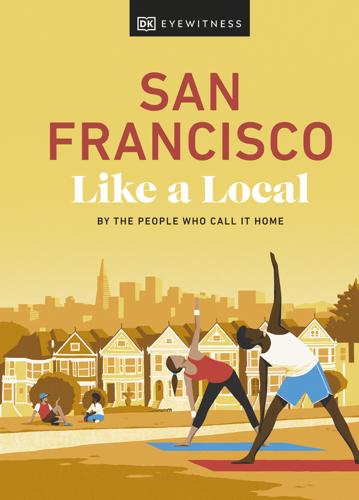
San Francisco Like a Local: By the People Who Call It Home
by
Dk Eyewitness
Published 5 Apr 2023
California law requires cyclists to use reflectors and a front white light when riding. If using headphones, keep one ear free. And always wear a helmet. No arguments. The City of San Francisco doesn’t have a comprehensive bike-share program, but you can rent bikes and ebikes from Bay Wheels by Lyft docking stations in the east of the city. A ride costs $3 and a one-day pass costs $10. www.lyft.com By public transportation The city has a range of public transportation options run by the San Francisco Municipal Transportation Agency (SFMTA): the Muni Metro light-rail, vintage F-line electric street trams, BART trains, and, of course, those iconic cable cars.
…
A note on cable cars: lines to board are long year-round, so get an early start or prepare to wait for an hour. By car or taxi Unless you have your own garage, parking is a nightmare in the city, made doubly fraught by frequent break-ins. Nightly hotel parking fees are high, too, so do yourself a favor and use Uber or Lyft if you need to take a car somewhere (only tourists use city cabs). Car rental is relatively cheap if you’re looking to leave for a nearby escape; search for deals on Kayak or Getaround. Download these We recommend you download these apps to help you get about the city. WHAT3WORDS Your geocoding friend A what3words address is a simple way to communicate any precise location on earth, using just three random words.
…
Simply download the free what3words app, type a what3words address into the search bar, and you’ll know exactly where to go. TRANSIT Your local transit advice San Francisco mightn’t have a cohesive public transportation system, but it does have a cohesive public transportation app. Transit predicts all bus and train arrivals, and calculates time and cost comparisons between Lyft’s rideshares and bike shares (provided there are Bay Wheels docks in your area). g Contents San Francisco NEIGHBORHOODS San Francisco is a patchwork of mini-neighborhoods, each with its own distinct look and personality. Here we look at some of our favorites. Bernal Heights Liberals have long been attracted to this hilltop ’hood, which was a hotbed of activism in the 1980s.
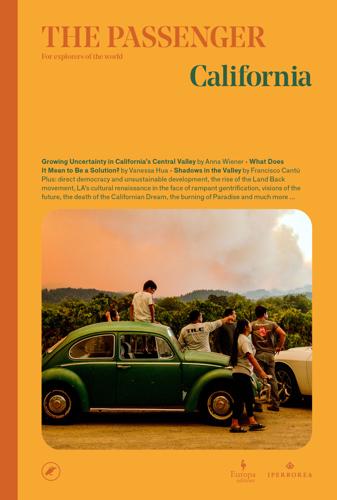
The Passenger
by
AA.VV.
Published 23 May 2022
An independent contractor must control their own labor and time, engage in similar work on a regular basis, and be providing a service outside the scope of the business they are contracting with. Gig-economy businesses such as Uber and Lyft lobbied to have their companies placed on the exemptions list but were denied. They weren’t alone in their disapproval; musicians and truck drivers also often fell between the cracks of typical employment classification, and they, too, sought special consideration lest their professions be adversely affected. But once refused inclusion in the exemption list, Uber and Lyft took a different stance altogether; they chose to disregard AB5 in its entirety and refused to reclassify gig workers as employees.
…
Where Uber largely flew under the radar in its early days, discreetly picking up passengers in private cars, Lyft drivers announced themselves with an oversized fuzzy pink mustache affixed to the front of their cars that seemed to mock cabbies as they swooped in to collect fares for themselves. California taxi drivers began to complain to government officials about the rise of rideshare apps that were, as they saw it, stealing their business right out from under their noses while claiming to be innovating the industry. The supposed innovation was pure marketing, contended the taxi drivers as they pointed to their own app, Cabulous, which pre-dated both Uber and Lyft by two years. The real innovation may have been embedded in this new employment classification system that evaded government regulation rather than in the business model itself.
…
When he finally found it, he thought nothing of locating his New Helvetia, the future state capitol, in the embrace of not one river but two, the worst floodplain in all of California. The city of Sacramento, girdled by levees and erected on a twelve-foot (3.5-meter) bed of borrowed earth, its gilded statehouse stabbing at sun, could not have looked more fitting and imperiled 180 years later. Protests against Uber and Lyft at Uber’s headquarters in San Francisco. Ballot-Box Blues: The Indirect Road to Direct Democracy Direct democracy in California takes many forms, sometimes unexpected, and the results of the various ballot initiatives are not always foregone conclusions. Here we take a look at this essential democratic tool through two of the most controversial propositions of recent times.

Moon Oregon Trail Road Trip: Historic Sites, Small Towns, and Scenic Landscapes Along the Legendary Westward Route
by
Katrina Emery
and
Moon Travel Guides
Published 27 Jul 2020
The Forest Park Explorer (www.stladventurepass.com, Mon.-Fri. $2 adults, $1 seniors and children, Sat.-Sun. free) offers access to various attractions in the park as well as the nearby Delmar Loop district. It runs spring-summer 15-30 minutes on weekdays and every 15 minutes on weekends (9am-7pm daily May-Aug.). Uber (www.uber.com) and Lyft (www.lyft.com) also operate in St. Louis. Orientation Downtown Downtown St. Louis is a tight one square mile, bordered on its western edge by Tucker Boulevard, on its north by Cole Street, and on its south by Chouteau Avenue. It’s full of skyscrapers and office workers as well as hotels and restaurants, and the recently revamped Mississippi riverfront along Gateway Arch National Park on its eastern side.
…
Its 16 stops include Crown Center and the Power and Light District. To reach places farther south, like Westport or Country Club Plaza, drive or jump on the Kansas City Regional Transit bus (www.ridekc.org, $1.50 per ride, $3 day pass). The MAX line connects Country Club Plaza, and bus lines 39, 55, and 51 serve Westport. Uber (www.uber.com) and Lyft (www.lyft.com) also operate in Kansas City. One Day in Kansas City Morning Start the day with a delicious coffee and pastry from Messenger Coffee Co. + Ibis Bakery, then head to the City Market, where pioneers once traded goods. It’s full of fun vendors you can browse, with great shopping and more eats when you get hungry again.
…
Getting There and Around Lincoln is 41 miles (65 km) north of Beatrice on U.S. 77, about a 45-minute drive. Exit onto Rosa Parks Way and follow it for 2 miles (3.2 km), turning left onto South 10th Street into town. If you’re coming from Omaha, drive 50 miles (80 km) southwest on I-80. The drive from Omaha takes about an hour. Uber (www.uber.com) and Lyft (www.lyft.com) operate in Lincoln. Orientation Lincoln is laid out in an easily navigable grid of numbers (east-west) and letters (north-south). The numbers get higher as you head east, and the letters are alphabetically organized, beginning with A in the south and ending with Z in the north. O Street is the long main backbone of the city.

Calling Bullshit: The Art of Scepticism in a Data-Driven World
by
Jevin D. West
and
Carl T. Bergstrom
Published 3 Aug 2020
In late April 2016, Uber was delivering about 161,000 rides per day in New York City while Lyft was delivering about 29,000 a day. A year later, Uber was delivering 291,000 rides per day and Lyft about 60,000 rides per day. This was an overall increase of 161,000 rides per day, from 190,000 rides per day to 351,000 rides per day. Of those 161,000 extra rides, Lyft contributed about 31,000 of them. Thus Lyft is responsible for about 16 percent of the increase, and Uber for the rest. So far so good. Over the same period, the number of yellow taxi rides plummeted from 398,000 per day to 355,000. If we look at the total number of rides by yellow taxi, Uber, or Lyft, we see a net increase, from 588,000 to 696,000.
…
If we look at the total number of rides by yellow taxi, Uber, or Lyft, we see a net increase, from 588,000 to 696,000. That’s a net increase of 108,000 rides per day. We already know that Lyft increased its rides by 31,000 per day over this period. So it looks like we could say that Lyft is responsible for 31,000 / 108,000 × 100 = 29% of the increase in overall rides. But that is odd. We said Lyft is responsible for about 24 percent of the increase in rides that ride-hailing services provide, but now we’re saying that Lyft is responsible for about 34 percent of the increase in rides by ride-hailing or taxi. How could both things be true? Things get even weirder if we look at Uber’s contribution to this increase in rides.
…
Science 251 (1991): 1408–11. Tefft, B. C., A. F. Williams, and J. G. Grabowski. “Teen Driver Risk in Relation to Age and Number of Passengers, United States, 2007–2010.” Traffic Injury Prevention 14 (2013): 283–92. Todd W. Schneider (blog). “Taxi, Uber, and Lyft Usage in New York City.” Schneider, Todd. April 5, 2016. http://toddwschneider.com/posts/taxi-uber-lyft-usage-new-york-city/. “Truthiness.” Dictionary.com. http://www.dictionary.com/browse/truthiness. “Use this Equation to Determine, Diagnose, and Repair Trust.” First Round Review. 2018. http://firstround.com/review/use-this-equation-to-determine-diagnose-and-repair-trust/.
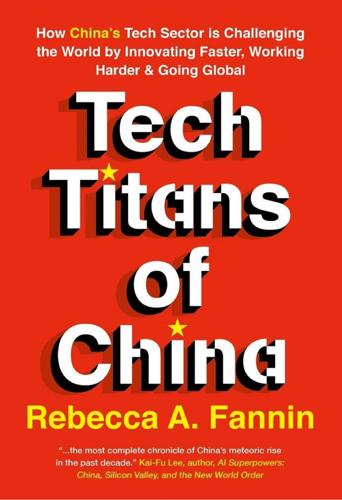
Tech Titans of China: How China's Tech Sector Is Challenging the World by Innovating Faster, Working Harder, and Going Global
by
Rebecca Fannin
Published 2 Sep 2019
In a repeat of Uber’s saga in China, regional leader Grab—backed by Didi, SoftBank, and Alibaba—acquired Uber’s Southeast Asian business in 2018, then merged it. Don’t look for Didi to try entering the United States and compete with Uber on its home turf. Uber and Lyft are already too well entrenched, and battles for position have intensified with Lyft claiming a 35 market share next to dominant Uber, which faced several troubling scandals. With both now publicly traded companies, they could spark a sharing economy IPO parade. But there’s a lot of headway to be made. When Will Didi Make Money? Getting to profitability has remained a struggle for the privately held Didi, as with many fast-growth tech companies in China.
…
China’s tech titans have invested in and acquired startups and cutting-edge emerging companies throughout leading hubs worldwide, formed Sand Hill Road venture capital units, set up R&D outfits close to engineering talent, and angled into Hollywood moviemaking in a bid for soft power. In this outward reach, China investment in US tech companies reached $51.4 billion from 2010 through 2018, led by megadeals in America’s top trophy startups Uber, Lyft, and Magic Leap.35 Recent US regulatory hurdles and a Beijing crackdown on high-priced, debt-laden deals have curbed the action. But the innovation engine keeps going, and so does venture capital from Silicon Valley and China funds to fuel it. In the wake of heightened regulations and uncertainty, Chinese tech deal makers are shifting to smaller, highly strategic transactions in the United States and turning to more welcoming markets internationally.
…
The most acquisitive by far is Tencent with 146 deals and $25.7 billion of investment, followed by Alibaba with 51 deals and its part-owned Alipay with 2 deals and $3.7 billion in volume, and Baidu with 28 tech investments at $4.1 billion.2 China’s dragons have teamed up with top-tier US-based venture firms Mayfield and New Enterprise Associates, private equity firms General Atlantic and Carlyle Group, corporate strategic investors General Motors and Warner Brothers, and Japan’s acquisitive SoftBank. They’ve invested in US ride-hailing leaders Uber and Lyft, electric-carmaker Tesla, and augmented reality innovator Magic Leap. These Chinese tech titans have taken their cues directly from Silicon Valley venture capitalists. They’ve scoured the Valley for promising startups and based their operations not far from Menlo Park’s storied Sand Hill Road firms that backed winners Google, Facebook, and eBay.
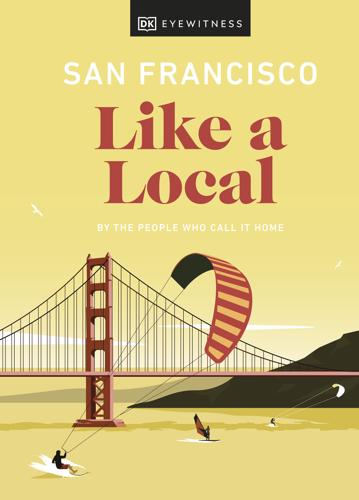
San Francisco Like a Local
by
DK Eyewitness
Published 4 Oct 2021
California law requires cyclists to use reflectors and a front white light when riding. If using headphones, keep one ear free. And always wear a helmet. No arguments. San Francisco doesn’t have a comprehensive bikeshare scheme but Bay Wheels by Lyft allows you to rent bikes and ebikes from docking stations in the east of the city. A single ride costs $3 and a one-day pass costs just $10. www.lyft.com By public transportation The city has a range of public transportation options run by the San Francisco Municipal Transportation Agency (SFMTA): the Muni Metro light-rail, vintage F-line electric street trams, BART trains, and, of course, those iconic cable cars.
…
A note on cable cars: lines to board are prohibitively long year-round, so either get an early start, or prepare to stand in line for an hour. By car or taxi Unless you have your own garage, parking is a nightmare in the city, made doubly fraught by frequent break-ins. Nightly hotel parking fees are high, too, so do yourself a favor and use Uber or Lyft if you need to take a car somewhere (only tourists use city cabs). Car rental is relatively cheap if you’re looking to leave for a nearby escape; search for deals on Kayak or Getaround. Download these We recommend you download these apps to help you get about the city. WHAT3WORDS Your geocoding friend A what3words address is a simple way to communicate any precise location on earth, using just three words.
…
Simply download the free what3words app, type a what3words address into the search bar, and you’ll know exactly where to go. TRANSIT Your local transit advice San Francisco mightn’t have a cohesive public transportation system, but it does have a cohesive public transportation app. Transit predicts all bus and train arrivals, and calculates time and cost comparisons between Lyft’s rideshares and bikeshares (provided there are Bay Wheels docks in your area). g Contents San Francisco NEIGHBORHOODS San Francisco is a patchwork of mini-neighborhoods, each with its own distinct look and personality. Here we look at some of our favorites. Bernal Heights Liberals have long been attracted to this hilltop ’hood, which was a hotbed of activism in the 1980s.

No Ordinary Disruption: The Four Global Forces Breaking All the Trends
by
Richard Dobbs
and
James Manyika
Published 12 May 2015
Bill Gurley, “A deeper look at Uber’s dynamic pricing model,” Above the Crowd, March 11, 2014, http://abovethecrowd.com/20l4/03/11/a-deeper-look-at-ubers-dynamic-pricing-model/; Matthew Panzarino, “Leaked Uber numbers, which we’ve confirmed, point to over $1B gross, $213M revenue,” TechCrunch, December 4, 2013, http://techcrunch.com/2013/12/04/leaked-uber-numbers-which-weve-confirmed-point-to-over-1b-gross-revenue-213m-revenue. 47. Salvador Rodriguez, “Lyft surpasses 1 million rides, expands to Washington, D.C.,” Los Angeles Times, August 9, 2013, http://articles.latimes.com/2013/aug/09/business/la-fi-tn-lyft-1-million-washington-dc-20130808. 48. “AHA statistical update: Heart disease and stroke statistics—2013 update,” American Heart Association, Circulation 2013:127:e6–e245, December 12, 2012. 49. “Medtronic launches CareLink Express™ Service” (press release), Medtronic, August 14, 2012, http://newsroom.medtronic.com/phoenix.zhtml?
…
The service was so popular that in one year, Homeplus expanded its virtual stores to more than twenty bus stops. US start-up Instacart now offers customers in ten cities the ability to order goods from multiple stores through one website and get them delivered in one hour. Car-sharing services such as Zipcar and Lyft and transport services such as Uber are becoming increasingly popular among urban residents who have chosen not to purchase their own cars. The growing ubiquity of such shared services may be hard to replicate outside dense urban environments, but they are not unique to developed economies. In many emerging-market cities, similar services are already routinely offered though informal arrangements with mom-and-pop stores and service providers in local communities and neighborhoods.
…
Data-as-service start-ups are booming, and giants such as IBM, Microsoft, Oracle, and SAP have spent billions of dollars in the past several years snapping up companies that develop software for advanced data analytics. In fact, intangible digital assets—such as behavioral data on consumers and tracking data from logistics—can be the seeds of entirely new products and services. The disruption in taxi services is one example. Uber uses algorithms to determine “surge” prices in times of peak demand.46 Lyft, another on-demand ride-sharing start-up, employs a “happy hour” pricing model to lower rates in times of soft demand.47 Health care is another example of a sector where the marriage of data, analytical models, and decision-support tools—all key components of digital capital—can create immense economic value, improve customer experience, and create difficult-to-replicate capabilities.

Street Smart: The Rise of Cities and the Fall of Cars
by
Samuel I. Schwartz
Published 17 Aug 2015
You don’t have to spend ten years learning the commuting ropes to know whether the train or bus you’re on is an express or a local, or even when it’s going to show up. You just need a smartphone. Smartphones are also all that’s needed to take advantage of other revolutionary new transportation options: ridesharing services like Via, car-sharing like Zipcar, and—especially—dispatchable taxi services like Uber and Lyft.c However, these and other cool new businesses didn’t create Millennial distaste for driving. They just exploited it. The question remains: why do Millennials find the automobile so much less desirable than their parents, grandparents, and great-grandparents did? Woodbridge, Virginia, is a small suburb about twenty miles south of Washington, DC.
…
(In fact, my professor brother, forty years after rejecting me as a physics has-been, invited me to a physics PhD candidate’s defense of her thesis, which mathematically described the flow of traffic on highways. Now who’s the scientist?) Actually, although Uber is often described as a ridesharing company, the “sharing” part is a little disingenuous. In fact, the only sharing that applies to most of the trips taken by travelers using Uber or Lyft (though not VIA) comes from the drivers sharing their cars with passengers. What these companies actually do is ride-matching.d The basic structure of the business is fairly simple. Drivers pass background checks (of themselves and their cars; in some places, like New York, they are also required to have a specialized license).
…
At the time, the base fee was $8 plus $5 a mile and a $15 minimum. Two years later, the company launched the UberX program which expanded the service to offer “sharing” for essentially any driver who could pass the background check and owned an acceptable car. That was when things started to heat up. Competitors like Sidecar (launched January of 2012) and Lyft (founded summer of 2012 as an extension of an earlier city-to-city ridesharing service known as Zimride) noticed the potential upside for a business that could extract revenue from travelers without actually investing in anything as expensive as buses, trains, or even cars; all that they needed were software algorithms and marketing.
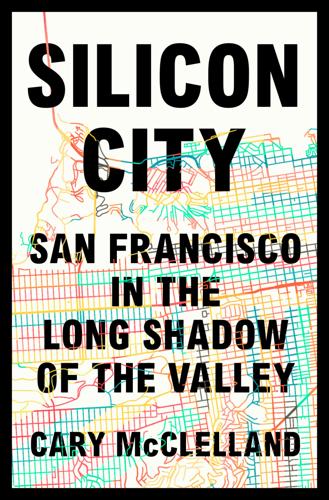
Silicon City: San Francisco in the Long Shadow of the Valley
by
Cary McClelland
Published 8 Oct 2018
The other night, I’m sitting in front of the Kabuki Theater in my hybrid taxi, not spewing. I see these two young women coming out of the theater, and I know what they are doing. They pull out their cell phone, and they call either Uber or Lyft, and they are kind of looking at me. I am sitting there, waiting. They kind of chat amongst themselves thinking, Well, maybe we should . . . But if you cancel an order with Uber or Lyft, they charge you. So, sure enough, two or three minutes later, up drives this big Chevy Tahoe, Cadillac Escalade, or whatever it was—some enormous vehicle—and these two girls go scurrying off across the street and hop inside.
…
And the younger generation seems not quite so interested in owning a car—and this is the good part of Uber and Lyft. Young kids don’t want a car, they just want mobility. I want the taxi market to capture that, and it’s kind of frustrating to see these other companies come in and sort of steal it. People talk about Uber being so high tech and so progressive, and I’m like, “Man, I have been doing this shit for fifteen years.” We were the first to accept credit cards, GPS-based dispatch, workers’ comp insurance for drivers. Then, the things I advocate for—clean vehicles, the greenhouse gas reduction mandate—they are all being undermined by Uber and Lyft, which don’t do any of those things.
…
He dove down, scrambled in the dust trying to find every coin. The light turned green, and we drove off. He disappeared into a sea of vehicles in my rearview mirror. And I thought, We’ve turned everything into a game. San Francisco—and the Bay Area in general—has become something of an arcade for the young and plugged in. Uber, Lyft, TaskRabbit, Carbon, Rinse, Instacart, Alfred—a kingdom of cute one-word fiefdoms offering chauffer and butler services for the new tech titans. They are shuttled to their corporate campuses—like summer camp, a world of primary colors and playgrounds and cafés and endless amusement to keep them happy at work.

You've Been Played: How Corporations, Governments, and Schools Use Games to Control Us All
by
Adrian Hon
Published 14 Sep 2022
“Uber Marketplace Driver Promotions,” Uber Technologies, accessed November 26, 2021, www.uber.com/us/en/marketplace/pricing/driver-promotions; “Become a Rideshare Driver in Your City,” Uber Technologies, accessed November 26, 2021, www.uber.com/us/en/drive/promotions. 10. Brett Helling, “Ridester’s 2020 Independent Driver Earnings Survey—Driver Income Revealed,” Ridester, updated May 25, 2021, www.ridester.com/2020-survey. 11. “Streak Bonus—Lyft Help,” Lyft, accessed November 26, 2021, https://help.lyft.com/hc/en-us/articles/115015748908-Streak-Bonus. 12. Abha Bhattarai, “‘Don’t Game My Paycheck’: Delivery Workers Say They’re Being Squeezed by Ever-Changing Algorithms,” Washington Post, November 7, 2019, www.washingtonpost.com/business/2019/11/07/dont-game-my-paycheck-delivery-workers-say-theyre-being-squeezed-by-ever-changing-algorithms. 13.
…
“The Rise of the Cheap Smartphone,” Economist, April 5, 2014, www.economist.com/business/2014/04/05/the-rise-of-the-cheap-smartphone. 31. “Forerunner 201,” Garmin, accessed November 22, 2021, https://buy.garmin.com/en-GB/GB/p/230. 32. “Uber’s Driver App, Your Resource on the Road,” Uber, accessed November 26, 2021, www.uber.com/za/en/drive/driver-app/; “Phone Software Recommendations and Settings,” Lyft Help, Lyft, accessed November 26, 2021, https://help.lyft.com/hc/e/articles/115013080508-Phone-software-recommendations-and-settings; “Requirements for Dashing,” DoorDash Dasher Support, DoorDash, accessed November 26, 2021, https://help.doordash.com/dashers/s/article/Requirements-for-Dashing; “Deliver with Deliveroo: Find Work That Suits You,” Deliveroo, accessed November 26, 2021, https://riders.deliveroo.co.uk/en/apply. 33.
…
You should make that choice consciously, because at work, you’ll have far less freedom… CHAPTER THREE GRIND AND PUNISHMENT EVERY WEEK BRINGS WORD OF ANOTHER COMPANY BRINGING GAMIFICATION to the workplace, whether it’s Amazon workers in India competing to deliver packages in order to score “runs” in a thirty-day, cricket-themed Delivery Premier League for rewards like smartphones and motorbikes, or United Airlines’ short-lived experiment to help staff “build excitement and a sense of accomplishment” by swapping their bonus with a lottery—available only for those with perfect attendance records, of course.1 Uber, Lyft, Domino’s, Instacart, Kroger, T-Mobile, Microsoft, Barclays, and Unilever all use gamification on millions of workers. At this point, it’d be easier to list the major companies that aren’t somehow gamifying their workers’ lives. I’ve long been skeptical of workplace gamification. More often than not, it doesn’t even try to make difficult or repetitive activities more fun, like I’ve done with my own games.
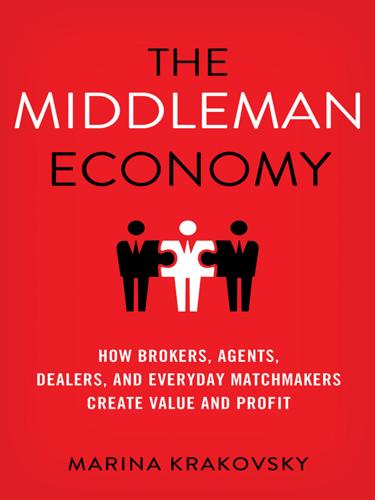
The Middleman Economy: How Brokers, Agents, Dealers, and Everyday Matchmakers Create Value and Profit
by
Marina Krakovsky
Published 14 Sep 2015
The Truckless Trucking Company * * * Long before there was Lyft and before there was Uber, and well before mobile devices or even the Internet, there was C. H. Robinson. The company, founded back in 1905, in 2014 ranked #220 on the Fortune 500, the annual list of the highest-grossing companies in the United States. Its annual revenues of $12.7 billion put C. H. Robinson just ahead of household brands Toys ‘R’ Us and Nordstrom and well above Facebook and Harley-Davidson. If you haven’t heard of this behemoth from Eden Prairie, Minnesota, it’s only because its customers are other businesses: rather than arranging rides for busy urbanites, as Lyft and Uber do, C.
…
In this highly connected world, “things and entities that accelerate connections are going to be more valuable,” Maples believes.15 This idea is self-evident when you think of core Internet technologies and social networking tools that speed up our personal connections; it is also true of middleman businesses Maples has backed, such as Chegg, Lyft, and TaskRabbit, that speed up connections between buyers and sellers. Perhaps more surprisingly, it is also true of many human middlemen, including venture capitalists like Maples himself: great at spotting high-potential entrepreneurial ideas, effective venture capitalists (VCs) command the space between entrepreneurs and the limited partners (LPs) who entrust VCs with their capital.
…
Bridges as Two-Sided Markets * * * Lacking both experience and theoretical knowledge, she didn’t realize that the bridge she was trying to build had the interesting properties of what economists call a two-sided market. These days, two-sided markets (sometimes called two-sided networks or two-sided platforms) are everywhere because many of today’s Internet start-ups are middlemen businesses of exactly this type: whether you’re talking about connecting homeowners with guests (Airbnb) or drivers with fares (Lyft and Uber) workers with small jobs (TaskRabbit) restaurants with diners wanting take-out meals (GrubHub, Eat24) or doctors with patients (ZocDoc), you’re describing a two-sided market. At the same time, and maybe not coincidentally, the study of two-sided markets has become a popular field among academics, with many opinions about what counts as a two-sided market.

On Bicycles: A 200-Year History of Cycling in New York City
by
Evan Friss
Published 6 May 2019
Sadik-Khan and the other brains behind Citi Bike already knew that.5 Yet, Citi Bike and its parent company, Motivate, have also been bought by another giant in the rideshare business, Lyft, which boasts more than a million drivers who take passengers on several hundred million rides each year. (On the streets of New York alone, Lyft, Uber, and the like added an extra 600 million miles of driving between 2013 and 2016.) Although Citi Bike and Lyft may seem like an unnatural pair, Lyft imagines an integrated fleet of cars, scooters, and bikes, all electric.6 On my regular, nonelectric, and perhaps soon to be vintage Citi Bike, I pedaled over to the High Line, one of a number of rails-to-trails projects across the country where defunct transportation corridors have morphed into inviting spaces for walkers, hikers, and cyclists.
…
: The Growth of App-Based Ride Services and Traffic, Travel and the Future of New York City,” Schaller Consulting, February 27, 2017; Bruce Schaller, “The New Automobility: Lyft, Uber and the Future of American Cities,” Schaller Consulting, July 25, 2018. 5. “Uber Gets into Bike-Share Business with Deal to Buy Jump,” Washington Post, April 9, 2018; “New York City Limits Growth of Ride-Hailing,” New York Times, August 9, 2018; “Uber to Diversify into Electric Bikes and Scooters to Drive Growth,” The Guardian, August 27, 2018, https://www.theguardian.com/technology/2018/aug/27/uber-to-diversify-into-electric-bikes-and-scooters-to-drive-growth. 6. “Lyft Buys Bike-Share Giant in 2-Wheeled Race with Uber,” New York Times, July 3, 2018; New York City Press Office, “Mayor de Blasio Announces That in Advance of L Train Disruption, Citi Bike Will Increase Coverage in Many of Its Busiest Areas,” June 27, 2018, https://www1.nyc.gov/office-of-the-mayor/news/332-18/mayor-de-blasio-that-advance-l-train-disruption-citi-bike-will-increase-coverage; Schaller, “Unsustainable?
…
Will a dockless bikeshare program, in which riders can pick up and drop off their wheels wherever they wish, work? How does the popularity of ridesharing affect the bicycle’s place in the city? This last question has become more urgent as rideshare vehicles have congested New York’s streets more than ever. By the summer of 2017, Uber drivers chauffeured more New Yorkers than did cabbies. But Uber, Lyft, and the other rideshare companies did not displace taxis; they encouraged millions of people to get in the backseat of a car. One 2018 study found that without rideshare, roughly 60 percent of those trips would have instead been taken by subway, bike, or walking, or not taken at all.4 To complicate matters further, rideshare has now also come to mean bikeshare.

Machine, Platform, Crowd: Harnessing Our Digital Future
by
Andrew McAfee
and
Erik Brynjolfsson
Published 26 Jun 2017
Akerlof, “Writing the ‘The Market for “Lemons”’: A Personal and Interpretive Essay,” Nobelprize.org, November 14, 2003, http://www.nobelprize.org/nobel_prizes/economic-sciences/laureates/2001/akerlof-article.html. 207 “if this paper were correct”: Ibid. 207 50 million rides per month: Eric Newcomer, “Lyft Is Gaining on Uber as It Spends Big for Growth,” Bloomberg, last modified April 14, 2016, https://www.bloomberg.com/news/articles/2016-04-14/lyft-is-gaining-on-uber-as-it-spends-big-for-growth. 208 In 2013, California passed regulations: Tomio Geron, “California Becomes First State to Regulate Ridesharing Services Lyft, Sidecar, UberX,” Forbes, September 19, 2013, http://www.forbes.com/sites/tomiogeron/2013/09/19/california-becomes-first-state-to-regulate-ridesharing-services-lyft-sidecar-uberx/#6b22c10967fe. 208 by August 2016, BlaBlaCar still did not require them: BlaBlaCar, “Frequently Asked Questions: Is It Safe for Me to Enter My Govt.
…
The great majority of Uber’s ride suppliers were not professional chauffeurs; they were simply people who wanted to make money with their labor and their cars. So how did this huge market overcome severe information asymmetries? In 2013, California passed regulations mandating that transportation network companies (TNCs) such as Uber and Lyft conduct criminal background checks on their drivers. These checks certainly provided some reassurance, but they were not the whole story. After all, UberX and its competitor Lyft both grew rapidly before background checks were in place, and by August 2016, BlaBlaCar still did not require them for its drivers. Instead, these companies used their platforms’ user interfaces to overcome the information asymmetries that plagued their markets.
…
We like this shorthand because it captures the heart of the phenomenon: the spread from the online world to the offline world of network effects, bundles of complements, and at least some of the economics of free, perfect, and instant. By the end of 2016, O2O platforms existed in a wide range of industries: Lyft and Uber for urban transportation, Airbnb for lodging, Grubhub and Caviar for food delivery, Honor for in-home health care, and many others. All of these companies are working to productively (and eventually profitably) bring together the economics of bits with those of atoms. Very often the physical inventory being offered on these platforms is perishable, as with spaces in exercise studios or nights of lodging, but sometimes it’s not.
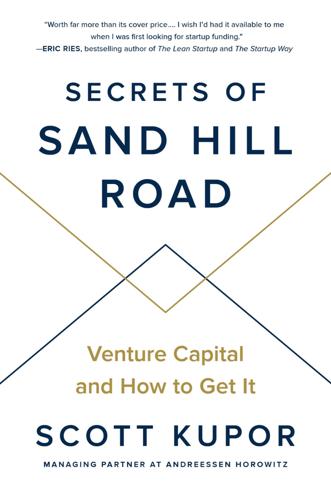
Secrets of Sand Hill Road: Venture Capital and How to Get It
by
Scott Kupor
Published 3 Jun 2019
Will it ultimately be big enough and material to accomplishing my objectives as a VC? We mentioned Airbnb earlier in the context of discussing market size to illustrate that the answer to this question might not always be obvious. Now let’s look at Lyft as a way to show how you can best position market size as an entrepreneur. When Lyft was getting started (Lyft actually started as another company called Zimride, a long-distance ride-sharing company), it wasn’t obvious how big the market for ride-sharing could be. A lot of people evaluating the financing opportunity started with the existing taxi market as a proxy for market size and made some assumptions about what percentage of that market a ride-sharing service could reasonably capture.
…
See also limited partners (LPs) iPhone, 130 Isabella, Queen of Spain, 53 J Curve, 75–76, 76 JOBS Act (2012), 36, 261, 263 jobs created by venture-backed companies, 4 Kalanick, Travis, 172–173 Kauffman Foundation, 4 Kelleher, Herb, 46–47 Kerrest, Frederic, 132 Keynes, John Maynard, 17 last round valuation method, 77, 78–79 law firms and attorneys, 91, 102, 125, 286 Lehman Brothers, 12 Levandowski, Anthony, 102 liability and business judgement rule (BJR), 216–218, 222 and compliance and good corporate governance, 206–207 and D&O insurance, 183 and WARN statutes, 243 and winding down the company, 243–245 life cycle of venture capital, 7–8, 114–115, 268 life cycles of funds, 66–67, 68, 152 limited liability companies (LLCs), 93 limited partners (LPs), 53–68, 69–90 about, 69–71 benchmarks of, 54 capital raised from, 2 and clawbacks, 80–81 and co-investments of general partners, 86–87 and dot.com boom, 10 and exit of VC after IPO, 266–267 goals of, 56 and GP–LP relationship, 70–71, 85–88 inflation’s effect on success of, 56–57 relationship of VCs to, 69–71 and secondary offering of shares, 268 and suspension of GPs, 87–88 and taxation, 70–71, 93, 94 types of, 54–57 types of investments made by, 57–59 Yale University endowment, 54, 59–65 limited partnership agreement (LPA), 71–83 and carried interest, 74–77, 82 on expectations for GP, 87 and GP–LP relationship, 85–88 “hurdle rates” in, 83 on investment domain, 85–86 and J Curve, 75–76, 76 and management fee, 72–74, 81 “preferred returns” in, 83 recycling/reinvesting provisions in, 81 on suspension of GPs, 87–88 and valuation marks, 76–83 liquidation, voting on, 176–177 liquidation preference and comparing finance deals, 192–193 and conversion of preferred shares to common shares, 162–163, 164 and preferred shareholders, 162–163, 177 reducing/eliminating, in difficult financings, 177, 234–236, 240 and term sheets, 155–159, 279 liquidity, 258–259, 265–266 Livingston, Jessica, 20 lockup agreements, 265–266 LoudCloud, 12–18 author’s experience at, 2, 12–13, 14–15 business of, 13 decision to go public, 15–17 EDS’s acquisition of, 18 valuation of, 121–122 loyalty, duty of, 212, 215, 218 Lyft, 45, 127–128 management fees, 72–74, 81 management incentive plans and Bloodhound case, 237–239 and double-dipping prohibition, 241–242 following difficult financings, 241–242 and Trados case, 221, 226–227, 229–230 wrong incentives created with, 242 market checks, 237, 238, 239 market size and Airbnb, 52, 127 and evaluation of early-stage companies, 50–52 and Lyft, 127–128 and pitching to venture capitalists, 127–130 and raising money from venture capitalists, 114–115 McKelvey, Jim, 133 McKinnon, Todd, 132 median ten-year returns in venture capital, 30 mergers & acquisitions.
…
Popularized by Steve Blank and Eric Ries, product-market fit speaks to a product being so attractive to customers in the marketplace that they recognize the problem it was intended to solve and feel compelled to purchase the product. Consumer “delight” and repeat purchasing are the classic hallmarks of product-market fit. Airbnb has this, as do Instacart, Pinterest, Lyft, Facebook, and Instagram, among others. As consumers, we almost can’t imagine what we did before these products existed. Again, it is an organic pull on customers, resulting from the breakthrough nature of the product and its fitness to the market problem at which it is directed. The equivalent in founder evaluation for VCs is founder-market fit.
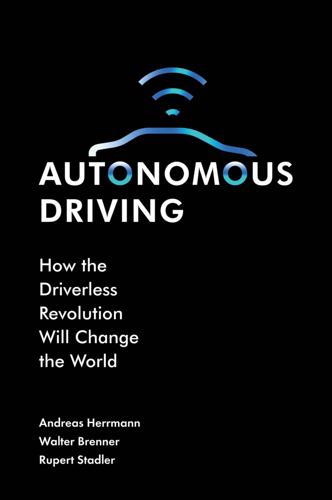
Autonomous Driving: How the Driverless Revolution Will Change the World
by
Andreas Herrmann
,
Walter Brenner
and
Rupert Stadler
Published 25 Mar 2018
He plans to develop Ford into a mobility service, offering driving services with autonomous vehicles (similar to Uber) and producing the cars for such a service itself. General Motors has invested enormously in the mobility platform Lyft, announcing plans to set up an on-demand network of self-driving cars. John Zimmer, president of Lyft, expects car ownership in megacities to be of little importance in 10 years. In 2016, Lyft already organised about 14.6 million rides per month, three times as many as a year before. So far, Cadillac is the only General Motors brand equipped with the technology for autonomous driving. It is well known that Hyundai has made substantial investments in artificial intelligence in order to create the technological basis for connected and autonomous cars.
…
Ownership Access and Sharing User as Use of one’s Rental car sharing, business-to-consumer (DriveNow, driver own car Car2Go) and peer-to-peer (Croove, Getaround) User as passenger Use of a taxi Ride sharing (Uber, Lyft) and carpooling (BlaBlaCar) Source: The authors. Note: Mobility apps can link up the various modes of transportation so that the user can identify the fastest and most convenient way to get from one place to another. The Sharing Economy 343 sharing (DriveNow, car2go, Flinkster, Mobility, ReachNow, ZipCar) and with peer-to-peer car sharing (Drivy, Tamyca, Croove, CarUnity, Sharoo, Turo, Getaround), users have to drive the cars themselves. With ride sharing (Uber, Lyft, myTaxi) or carpooling (BlaBlaCar), they are driven by a chauffeur.
…
For example, we are currently seeing the rise of Uber in the short-term ride-sharing market. Uber’s core values are its pricing, reliability and convenience better, faster and cheaper than a taxi. In comparison, Lyft, which offers an almost identical service, positions itself as friendly we’re your friend with a car and part of your community greet your driver with a fist bump. Lyft has not seen at all as much growth as Uber; one reason is because they put too much emphasis on consumers’ desire to bond with each other rather than gain access to a vehicle. Meanwhile, there are hundreds of car-sharing providers all over the world: Zipcar is well established in North America and Orix, Park24, PPzuche and EVCard operate in Japan and China.
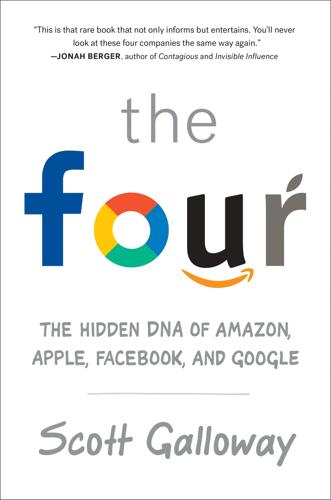
The Four: How Amazon, Apple, Facebook, and Google Divided and Conquered the World
by
Scott Galloway
Published 2 Oct 2017
March 15, 2015. http://www.businessinsider.com/uber-offering-50000-jobs-per-month-to-drivers-2015-3. 22. Uber Estimate. http://uberestimator.com/cities. 23. Nelson, Laura J. “Uber and Lyft have devastated L.A.’s taxi industry, city records show.” Los Angeles Times. April 14, 2016. http://www.latimes.com/local/lanow/la-me-ln-uber-lyft-taxis-la-20160413-story.html. 24. Schneider, Todd W. “Taxi, Uber, and Lyft Usage in New York City.” February 2017. http://toddwschneider.com/posts/taxi-uber-lyft-usage-new-york-city/. 25. “Scott Galloway: Switch to Nintendo.” 26. Deamicis, Carmel. “Uber Expands Its Same-Day Delivery Service: ‘It’s No Longer an Experiment’.”
…
Uber is a great product, but I’d challenge you to identify (without knowing which ride-sharing platform you booked through) the difference between Uber, Lyft, Curb, and Didi Chuxing. The category is a 10x improvement over cabs and black cars, but there is an increasing sameness among ride-sharing players. This has likely been the case for a while, but Uber’s CEO frat rock (that is, shit for brains) behavior has prompted people to discover on their own that Lyft is the same thing. The Airbnb platform takes on greater importance as an arbiter of trust, as there is greater variance in the product—a houseboat in Marin vs. a townhouse in South Kensington.
…
First, its CEO is an asshole, or at least he’s perceived as an asshole. This fact gave rise to a few instances where consumers were encouraged to delete the app, and many did. Where the firm likely lost $10 billion plus in value in forty-eight hours was not the number of people who deleted the app, but the discovery of substitutes, as Uber isn’t vertical, and Lyft was able to access many of the same drivers. It’s not just the CEO throwing up on himself. In 2014, an Uber senior vice president suggested—in the presence of a journalist—that Uber hire opposition researchers to dig up dirt on journalists who wrote unflattering stories about the company. There have been a series of reports that Uber management uses the technology’s ability to track riders in real time for entertainment or other personal reasons, including members of the press.27 In France, Uber ran an ad campaign that, at best, was sexist, and arguably suggested that Uber was a great way to hire an escort service.28 In 2016, Uber paid a $20,000 fine as part of an investigation by the New York attorney general into the misuse of its tracking capability.29 Worst of all, Uber’s likability took a major hit with Susan Fowler’s corporate sexual discrimination charges in February 2017.30 Actions by midlevel and C-level management ranged from callous to reprehensible in dozens of instances.
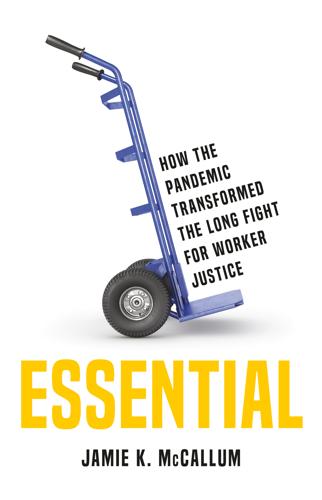
Essential: How the Pandemic Transformed the Long Fight for Worker Justice
by
Jamie K. McCallum
Published 15 Nov 2022
Suhauna Hussain, Johana Bhuiyan, and Ryan Menezes, “How Uber and Lyft Persuaded California to Vote Their Way,” Los Angeles Times, November 13, 2020, www.latimes.com/business/technology/story/2020-11-13/how-uber-lyft-doordash-won-proposition-22. 37. Eve Batey, “Eater Readers Overwhelmingly Oppose Prop 22,” Eater SF, November 2, 2020, https://sf.eater.com/2020/11/2/21546110/doordash-uber-prop-22-election-2020-polling; Alex N. Press, “With Prop 22’s Passage in California, Tech Companies Are Just Writing Their Own Laws Now,” Jacobin, November 5, 2020, https://jacobinmag.com/2020/11/proposition-22-california-uber-lyft-gig-employee. 38. George Skelton, “It’s No Wonder Hundreds of Millions Have Been Spent on Prop. 22.
…
In the wake of the recession’s economic fallout, Americans scrambled to find work, creating an opening for new start-ups to sell low-wage workers and the unemployed on the concept of a “gig” or “side hustle.”8 Once viewed as temporary, these types of jobs quickly became a permanent feature of the economy. Uber and TaskRabbit were both founded in 2008; they were joined in 2011 by Postmates, in 2012 by Instacart and Lyft, in 2013 by DoorDash, and by Shipt in 2015. The emergence of the gig economy worsened working conditions nationwide and rapidly expanded the ranks of low-wage, hyperexploited workers. Gig workers are functionally servants: they can act as your personal chauffeur, bring you dinner, do your grocery shopping, and assemble your furniture, all while the impersonal, app-based transaction lets you hire them without having to assume normal employer burdens, like safeguarding workers’ rights.
…
Cobbled together from a group of local shopkeepers, students, and a trade union of couriers, the organization filled a clear mission while also deepening the social fabric of the city that was rent asunder by COVID.7 When the pandemic hit the US, American essential workers also formed mutual aid societies to provide goods and services not supplied by the government or corporations. Gig workers in delivery and transportation industries developed apps to help each other learn how to respond to the neediest situations first, sometimes bucking priorities from the likes of Uber and Lyft. The Gig Workers Collective created a simple map that allows drivers to coordinate mutual aid activities like food delivery and medical personnel transport. “Between the lack of financial security (no sick leave), the number of workers living week to week, and the inability for some workers to take time off due to low income, gig workers are some of the most vulnerable dealing with the COVID-19 outbreak,” their website stated.8 Factory workers in Marcus Hook, Pennsylvania, moved into the Braskem petrochemical plant on March 23, 2020, with sleeping bags and toothbrushes.

The Smartphone Society
by
Nicole Aschoff
The term calls to mind Jean-François Millet’s famous painting The Gleaners, which depicts three young women gathering leftover stalks of wheat after the harvest. Elites and highly paid professionals live in a different world from leaners. For them, the smartphone dream is a reality. With a few taps and swipes they can restock milk, eggs, and bread from Instacart; avoid the lunch-time rush with a tasty bite delivered through Seamless; hail a Lyft when afterwork cocktails turn tipsy; or hire a “tasker” from TaskRabbit to do a deep clean of the condo before the in-laws arrive. The smartphone brings convenience, a prime commodity for busy professionals who struggle with what sociologist Arlie Hochschild calls the time bind.42 Until recently, women took care of pretty much all the household chores and childrearing duties, even after they entered the waged workforce en masse in the 1980s.
…
A maid, masseuse, taxi driver, personal shopper, whatever you want—“there’s an app for that.” It’s not entirely clear how many people are working in these app jobs—piecework gigs mediated through a smartphone app. In the United States, estimates of “on-demand” app workers who earn money via online intermediaries such as TaskRabbit, Lyft, Uber, and Amazon Shopping vary widely. The Federal Reserve estimated that in 2017, 16 percent of adults earned money from app jobs, while the Bureau of Labor Statistics reported that 3.8 percent of workers (5.9 million people) were classified as contingent workers in 2017.44 Even absent concrete numbers, it is clear that the emergence of app jobs in the past decade is a significant development in the evolution of work in the United States.
…
Uber takes a 25 percent cut from each ride, yet drivers are not considered employees and the company is not responsible for their safety. Uber is also not responsible for the safety of its consumers (riders) nor the increased congestion and pollution it causes in urban centers. In San Francisco, for example, transportation experts concluded that transportation network companies such as Uber and Lyft were responsible for more than half of the increase in roadway congestion between 2010 and 2016.46 In trying to grasp the scale of smartphone jobs, we must also include all the warehouse and logistics workers continually set in motion by our “wherever, whenever” purchasing power. We order a last-minute birthday gift for Mom on the train to work; we re-up the laundry detergent during a commercial break; we order another pair of earbuds on the taxi ride home upon realizing that we’ve left ours on the plane.

Don't Be Evil: How Big Tech Betrayed Its Founding Principles--And All of US
by
Rana Foroohar
Published 5 Nov 2019
Green is, for example, concerned about the potential mass displacement of drivers in the United States (which represents the largest single category of work for men with a high school degree or less) by autonomous vehicles. Drivers themselves have reported being able to make more money on Lyft relative to Uber, and have higher levels of job satisfaction. (Lyft was first to allow tipping to drivers.)11 Unfortunately, these things fall at the margins. At the end of the day, the business models of the two companies are almost exactly identical; both create tremendously asymmetrical relationships between companies and workers in ways that make the latter ever more insecure.
…
Netflix, for example, recently raised $2 billion through a junk bond offering to fund new content.21 It will be interesting to see how the next round of big anticipated IPOs goes—or if they go at all. Many top tech companies have opted to stay private longer, bidding up their valuations and raising expectations. Both Uber and Lyft completed disappointing IPOs as I was finishing this book. I suspect they won’t be the only companies unable to live up to the hype. I’m thinking in particular of Elon Musk’s SpaceX, but also Peter Thiel’s Palantir, which has been scaling back its thirteen-course lobster tail and sashimi lunches in anticipation of its public offering (probably a good idea, given that the company has yet to turn a profit in its fourteen-year history, despite having a valuation of $20 billion).22 Today’s darlings can so easily become tomorrow’s discards; as I finish this book, SoftBank, the bloated Japanese tech investment firm, has just scrapped its $16 billion plan to buy a stake in WeWork.
…
And, by the same token, Facebook could deny anyone access to those massive amounts of user data (which is the only reason other businesses are interested in being on Facebook in the first place), for any reason. As the 250 pages of emails and documents released by British lawmakers revealed, companies who were not considered competitive with Facebook, including Airbnb, Lyft, and Netflix, got preferred access to data, as did the Royal Bank of Canada and a number of other nontech businesses. But those companies that Facebook viewed as competition, like Vine (a Twitter-owned video app), were denied or even shut out of the company’s network altogether. Indeed, after Twitter released Vine in 2013, Facebook shut off Twitter’s access to Facebook friends data at Zuckerberg’s behest.1 Meanwhile, the emails revealed that Zuckerberg discussed charging app developers for access to Facebook user data, while also forcing them to share their own user data with Facebook’s network; email debates show that the company even considered restricting developer access to certain kinds of data unless the developers bought advertising on Facebook.

The Contrarian: Peter Thiel and Silicon Valley's Pursuit of Power
by
Max Chafkin
Published 14 Sep 2021
Wired focused less on economics and more on cultural potential. “How Airbnb and Lyft Finally Got Americans to Trust Each Other,” a feature proclaimed. It argued that these Silicon Valley companies had the potential to return us to a form of “the neighborly interactions that defined pre-industrial society.” But, of course, Airbnb and Lyft also had implications beyond neighborliness. They were projects designed to reshape labor markets, removing the protections that workers had enjoyed since the New Deal, which was among the worst developments in American political history, as far as Thiel was concerned. Uber and Lyft drivers, TaskRabbit and Postmates workers, and the part-time hoteliers of Airbnb were not employees and couldn’t be by definition.
…
At the moment, Thiel’s investment firm, Founders Fund, was throwing money behind the hottest Silicon Valley trend: the “sharing economy.” The term described a class of startups in which unemployed people, or those looking for extra income, offered professional services on smartphone apps—Thiel’s firm invested in most of the biggest players. There was Lyft, a ride-hailing app that replaced taxi drivers with regular people driving their own cars. (Lyft developed this idea; Uber would copy it and make it famous.) The Founders Fund portfolio also included Airbnb, a lodging service to let people rent out spare bedrooms or vacation homes; TaskRabbit, where “gig workers” offered to do odd jobs, like laundry and dogwalking; and Postmates, a similar service, except the gig workers delivered you gourmet food instead of putting together your IKEA furniture.
…
As impressive as this entrepreneurial resume might be, Thiel has been even more influential as an investor and backroom deal maker. He leads the so-called PayPal Mafia, an informal network of interlocking financial and personal relationships that dates back to the late 1990s. This group includes Elon Musk, plus the founders of YouTube, Yelp, and LinkedIn. They would provide the capital to Airbnb, Lyft, Spotify, Stripe, DeepMind—now better known as Google’s world-leading artificial intelligence project—and, of course, to Facebook. In doing so, Thiel and his friends helped transform what was once a regional business hub—on par with Boston and a few other midsized American metro areas—into the undisputed engine of America’s economy and culture.

Brave New Work: Are You Ready to Reinvent Your Organization?
by
Aaron Dignan
Published 1 Feb 2019
But there’s something more troubling about the fact that one in four Americans is now participating in the gig economy. By turning work into a series of app-mediated transactions, we’re actually narrowing the scope of their participation to something closer to the opposite of entrepreneurialism. When you work at Lyft full time, you’re (hopefully) looking for ways to grow and serve Lyft all the time. If you see something worth doing, you might just do it. But when you drive for Lyft as a gig, your relationship is read-only. You transact, but you do not serve the bigger picture. Why would you? And that’s the problem. If we move toward an economy where everyone is paid “by the drink,” we run the risk of eliminating good corporate citizenship.
…
But beyond that, the benefits in financial acumen, stewardship, and collective responsibility that this approach produces are unparalleled. Gig Economy. The platforms behind the gig economy like to talk about their movement as the savior of the American worker, empowering otherwise underemployed individuals to be their own bosses and live the entrepreneurial dream. After all, the drivers and laborers who make Uber, Lyft, Grubhub, DoorDash, Postmates, Fiverr, and TaskRabbit work can choose when and where they work with unprecedented control. Realistically, though, many of the workers in the gig economy need money. That’s why they’re side hustling. They’re underemployed or unemployed, and the minimal extra income they earn from these services—85 percent make less than $500 a month—is helping them make ends meet.
…
Evolutionary Organizations AES Askinosie Chocolate Automattic Basecamp Black Lives Matter Blinkist Bridgewater Buffer Burning Man Buurtzorg BvdV charity: water Crisp David Allen Company dm-drogerie markt elbdudler Endenburg Elektrotechniek Enspiral Equinor Evangelical School Berlin Centre Everlane FAVI Gini GitLab Gumroad Haier Handelsbanken Haufe-umantis Heiligenfeld Hengeler Mueller Herman Miller HolacracyOne Ian Martin Group / Fitzii Incentro John Lewis Joint Special Operations Command Kickstarter Lumiar Schools Medium Menlo Innovations Mondragon Morning Star Nearsoft Netflix Nucor Orpheus Chamber Orchestra Patagonia Phelps Agency Pixar Premium-Cola Promon Group Red Hat School in the Cloud Schuberg Philis Semco Group Spotify stok Sun Hydraulics Treehouse USS Santa Fe Valve Whole Foods W. L. Gore WP Haton Zalando Technology Zappos Zingerman’s Sources of Inspiration Airbnb Amazon Chipotle Chobani Danone North America Etsy Facebook GitHub Google Johnsonville Lyft Quicken Loans Slack Southwest Airlines Stack Overflow Toyota Warby Parker WeWork Wikimedia Zapier USING THE OS CANVAS The canvas can provoke incredible conversations and powerful stories. It can help you and your team identify what to amplify and what to change.
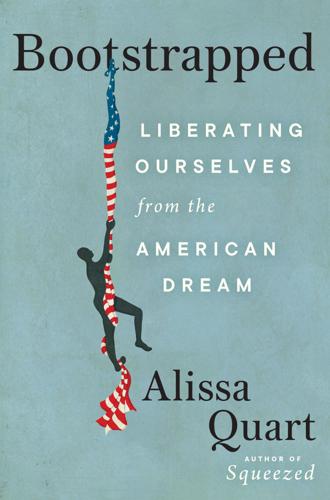
Bootstrapped: Liberating Ourselves From the American Dream
by
Alissa Quart
Published 14 Mar 2023
It was in the exhortations of former SoulCycle CEO Melanie Whelan, who pushed “hustle culture” to one and all. “Hustle opens the doors of opportunity,” Whelan once said, encouraging her followers to work long days with the exhortation to “rise and grind.” The urban legends of side hustling at its worst included one Lyft driver who continued to pick up riders after she went into labor, then Lyft-ed herself to the hospital to give birth, and T-shirts with the slogan “9 TO 5 IS FOR THE WEAK.” It was in a set of risible “hustle culture” memes extolling the “grindset.” One maxim: “You can’t make excuses and money. Which is it going to be?” Commercial websites like Side Hustle Nation also were part of it: as Nick Loper, the site’s chief side hustler, exhorted, “My escape route was a side hustle business I built in my spare time—and you can do it too.”
…
Okawa, for instance, became involved in the opposition to California Proposition 22, the Uber- and Lyft-funded ballot measure that worked against California’s AB5. AB5 had been a huge victory when it was signed into law in 2019: it gave employee status to gig workers and made it much harder for the megacorporations to claim their workers were independent contractors rather than employees. Okawa also joined a local organizing group, We Drive Progress. The group defined itself as a collective of “app-based drivers,” those “behind the wheel of every trip for Uber, Lyft, Instacart, and beyond.” Their protests were aimed at “fair wages, benefits, and our unions” as well as earning a “fair share” of “the billions these companies and their investors pocket.”
…
And while on a good day she’d make $180, she also had to pay to rent the car, which was $200 for the week, and then also gas, which averaged $90 per week. She was cashing out every day so she could put gas in the car every night. “I had to work constantly,” she recalled. After a year, Okawa started talking to other gig workers about the way these app-based companies treated their contractors. Uber and Lyft still classified ride-hailing drivers as contractors, so these companies didn’t pay into state unemployment funds. A University of California at Berkeley study found that they would owe the state $413 million, for the period from 2014 to 2019 alone, if they had correctly classified their drivers as employees.

Rule of the Robots: How Artificial Intelligence Will Transform Everything
by
Martin Ford
Published 13 Sep 2021
The problem with the assumption that self-driving technology will ride to their rescue is that Uber and Lyft are viewed as attractive internet-based businesses—and valued accordingly—because they act primarily as digital intermediaries, harvesting a slice of every transaction in return for providing software that automatically matches riders with drivers. This allows the companies to completely avoid the risky and unpleasant parts of the taxi business: stuff like owning, financing, maintaining and insuring vehicles. All of that gets pushed onto the drivers. No oil changes, car washes or flat tires for Uber or Lyft; they largely remain above the fray, hoovering up clean internet fees.
…
He went on to suggest that Tesla would have a million such cars operating on public roads by the end of 2020.1 By “robotaxis,” Musk meant genuine self-driving cars, capable of operating with no one inside and able to pick up passengers and deliver them to random locations. In other words, a truly robotic version of Uber or Lyft. This was an astonishing prediction: far out of line with the expectations of virtually every other expert I have talked to. A few days later, I appeared on Bloomberg TV and said that I was “astounded by” Musk’s prediction and that I thought it was “extraordinarily optimistic and perhaps even a bit reckless.”
…
Of course, this once again raises the question of how such a limited operation can become profitable. How inexpensive does a fully automated ride (in a very expensive vehicle) have to be to get a customer to opt for it over the far more flexible door-to-door service offered by a human-driven Uber or Lyft? While Waymo proceeds deliberately and with laudable caution, Tesla, in contrast, continuously pushes the envelope, often transgressing into territory that many in the industry feel borders on reckless. The company has told its existing customers that their cars have all the necessary hardware to support fully autonomous driving, and that the capability will eventually be enabled through a software update.
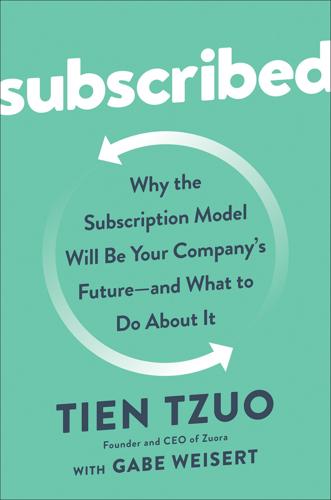
Subscribed: Why the Subscription Model Will Be Your Company's Future - and What to Do About It
by
Tien Tzuo
and
Gabe Weisert
Published 4 Jun 2018
The company may take a short-term profitability hit, but the goal is to gain long-term customer loyalty in a very young and turbulent market—and this customer loyalty is becoming more and more important as ridesharing becomes a commodity. Here in the Bay Area, the Uber and Lyft markets are really fluid. I’ll frequently toggle between the two services—lots of the cars even feature both logos in their windshields. There’s very little brand loyalty on my part. Now contrast that with my Amazon Prime experience. All due respect to other potential ecommerce vendors, but Amazon has my business, in no small part due to Amazon Prime—they hooked me with the free shipping, and now I’ve got music, movies, and all sorts of other services. I’m not going anywhere. Uber and Lyft are both vying for that same lock-in effect by offering discounted services around consistent consumption patterns—in other words, they’re going after my commute.
…
Online streaming was just around the corner (as many people have pointed out, Reed Hastings called it Netflix for a reason). Zipcar was also a really interesting new concept. It was initially seen as an hourly competitor to Hertz and Budget, but you could already see new ideas opening up around cars and transportation, which Uber and Lyft capitalized on later. And of course the iPhone had just come out—at the time it was more of a fun, plug-and-play app container, but there was the potential for geolocation, identity, messaging. As bandwidth increased and platform costs decreased, there was a logical progression going on toward on-demand, digitally enabled services.
…
Yes, there were massive limitations to Zipcar—you had to live in a city, for example. But we could see that the next revisions of this concept (give me the ride, not the car) were just going to get better and better. That experience let us see a future world where car ownership would not be necessary. Today more than 60 million riders use Uber and Lyft. These ridesharing services have ushered in a whole new set of consumer priorities: Why buy a car at all, when all you need to do to get from point A to point B is pull out your phone? Why can’t I just subscribe to transportation the same way I subscribe to electricity and internet access? But wait, you might say.

Markets, State, and People: Economics for Public Policy
by
Diane Coyle
Published 14 Jan 2020
On the other hand, the study found the average Uber driver in Paris worked 52 hours a week and earned 1,400 euros per month, just below minimum wage. Passengers wait less and pay less; Uber’s and Lyft’s rates are lower than alternatives, perhaps partly because they have a lower regulatory burden but partly because the drivers can get more passengers and so will accept a lower rate per mile. The GPS tracking can offer some safety protection—and there is no evidence the new entrants are less safe than conventional taxis—and the apps limit price gouging at least as well as do the regulatory alternatives. Besides, if safety is a real concern, regulators can directly require Uber and Lyft to do more prior checks, rather than ensuring safety indirectly through issuing a limited number of licenses.
…
Yet it is clear that new entry into the market would decrease the value of their asset, the license or medallion, and possibly also the ongoing earnings of drivers, so they have an economic incentive to protest against new entry. The remarkable success of taxi license holders and drivers in preventing competition in their markets made it vulnerable to technological disruption, however. Platforms such as Uber and Lyft have used their technology to present themselves as a matching app (like online dating) rather than as new taxi companies, and they have successfully entered many cities, albeit with many regulatory disputes over what licensing conditions they must meet. Taxi drivers everywhere are protesting against Uber in particular (and assessing the economic welfare effects of its entry into the market is complicated by the fact that it has such a nasty corporate culture).
…
To the extent they do, the answer is that better matching delivers a pure efficiency gain (more rides for drivers, less waiting for passengers); and as the demand for taxi rides seems to be price elastic in most cities, demand overall has increased. There is also some evidence that certain areas are better served by Uber or Lyft drivers (where licensed cab drivers are reluctant to go because the high cost of their licenses mean they want to concentrate on high-margin (i.e., short) trips with a better chance of getting a return fare); and that becoming a driver offers a route into the formal labor market for some groups previously marginalized, such as women who only have a few hours spare a week because of caregiving duties, or members of minority groups who find it hard to get other jobs.
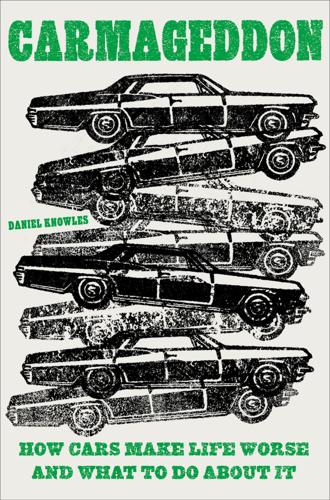
Carmageddon: How Cars Make Life Worse and What to Do About It
by
Daniel Knowles
Published 27 Mar 2023
But their promise, that car-sharing would somehow alleviate traffic, has proven hollow. Uber’s investors haven’t even made a profit. All they have done is generate traffic. A 2018 study by Schallar Consulting found that Uber and Lyft increased the number of cars on some American city streets by 180 percent. Another study of San Francisco found that ride-sharing companies accounted for more than half of the city’s growth in traffic. Lyft drivers spend a fifth of their time driving around empty, waiting for passengers. In Britain, Ubers are not carrying a passenger for 58 percent of the time they are driving. Cars are not just about how you get around.
…
(In January 2021 Tesla responded by releasing a car with a video game console built in, which drivers can use while their car is moving—essentially two middle fingers stuck up at the regulators.) That is why most of the attempts to develop truly self-driving cars have proven so difficult. Uber and Lyft, the taxi companies, had invested heavily in trying to develop the technology, on the basis that getting rid of the drivers was probably their best hope of becoming seriously profitable. But Uber abandoned its project in 2020 after spending $1 billion on it, selling its unit to a firm called Aurora. Lyft sold its own unit in 2021. An accident that killed a pedestrian probably pushed Uber to give up. Elaine Herzberg, a forty-nine-year-old, was wheeling a bicycle laden with shopping bags across the road when Uber’s adapted-Volvo plowed into her.
…
That means we need more space for humans, and less for cars. The car industry also wants you to think it has the solution to some of these problems. Electric cars will supposedly solve the problem of climate change emissions. Self-driving cars will solve the problem of traffic and make trains redundant. Ride-sharing services like Uber or Lyft will mean we do not need to own a car to always hail a ride. A few techno-lunatics even suggest that “flying cars” will shuttle people around cities quicker than ever before without even needing roads. All of these ideas are wrong. Producing enough batteries to replace every gasoline-driven vehicle will require untold amounts of cobalt, a large majority of which currently has to be mined in one of the poorest and most miserable countries on Earth, the Democratic Republic of Congo in central Africa, the source of more than half of the world’s supply.
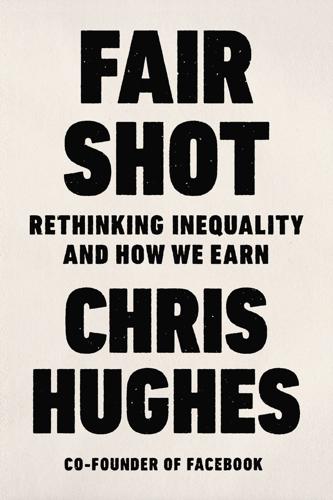
Fair Shot: Rethinking Inequality and How We Earn
by
Chris Hughes
Published 20 Feb 2018
For the next two years, my grandparents lived alongside 11 other people in a standalone house in Philadelphia’s Frankford neighborhood. Lacking any education or nonfarm skills, my grandfather decided that he would become a barber. In my imagination, I see a Southern kid roaming about a dense Philadelphia neighborhood waiting for a client in need, like a Lyft or Uber driver of today except with a pair of scissors in hand. My grandfather had cut hair—he had those shears to prove it—but he had never really been a barber like the barbers I would later see as an adult. (The bowl cuts he gave me as a kid confirmed that he had failed to develop any meaningful skill.)
…
Now, it’s a roller coaster,” the journalist Rick Wartzman writes. When unemployed people in urban areas find themselves without jobs or marketable skills today, they do what my grandfather did. Instead of reaching for a pair of barber shears, they reach for their smartphones and register to become Lyft drivers and Postmates delivery people. TaskRabbiters pitch in to assemble furniture, rake leaves, or even stand in line to buy theater tickets or a newly released iPhone. In some cases, these contract jobs are a godsend because they help workers who only get part-time hours elsewhere to supplement their income, as laborers have done since the beginning of time.
…
We often think of millennials in these jobs, the masters of the art of the “side hustle,” but the numbers show it isn’t just millennials doing contingent work. A quarter of the working-age population in the United States and Europe engage in some type of independently paid gig, some by choice, but many out of necessity. People who find work through apps like Lyft and TaskRabbit get a lot of attention, but they are the tip of the iceberg. The instability that characterizes their work has spread throughout the economy as the class of low-quality jobs has grown. If you include not only independent gigs, but part-time workers, temps, and on-call workers, the number of people working in contingent jobs balloons to over 40 percent of all American workers.

Give People Money
by
Annie Lowrey
Published 10 Jul 2018
“There were more and more people jumping on to Lyft and Uber, especially Uber, and then at one point, Uber was doing this special thing to try and get more passengers, where they did a discount or they took out the service charge for passengers,” Heather Smith, an Uber and Lyft driver, told me. (I agreed to withhold her real last name, to avoid retaliation by her employers.) “When I would look at my breakdown of payment, I was basically seeing them pay themselves and then take half the service charge and then pay me. I said, ‘Fuck it. Good-bye, Uber.’ ” She told me that she did make decent money mentoring new drivers for Lyft. “Well, they didn’t compensate for me doing the calls and stuff like that, but once I would meet with the person and do a mentor session, which is usually like thirty minutes, forty-five at the max, then I would be paid $35 just for that session,” she said.
…
In part, they adjust by moving. Millions of workers have left Detroit and the Rust Belt, for instance, heading to the sunny service economy of the Southwest or to the oil economy of the Gulf of Mexico. They also adjust by switching industries. On my way to Detroit, in a moment of Tom Friedman–esque folly, I asked the Lyft driver taking me to the Baltimore airport what he thought of the company’s plans to shift to driverless cars and the potential that he would soon be out of a job. “It’s worrisome,” he conceded. “But I’m thinking of trying to get some education to become someone to service them. You’re not going to just be able to take those cars into the shop, with the regular guys who are used to fixing the old models.
…
On-demand, gig-economy firms usually do not hire their drivers or shoppers or delivery workers, instead classifying them as contractors and buying their services. That means that the companies are not subject to minimum-wage rules. They do not need to divert their workers’ paychecks into unemployment-insurance funds or Social Security. They are not required to offer health care to workers who spend full-time hours on the clock. Many Uber and Lyft drivers feel the companies had misled them, promising, if not employment in a traditional sense, a stake in something. “When you sign up, they refer to you as a partner,” Seth McGrath, a forty-year-old Uber driver, chimed in, as everyone around the table nodded. “Which is so not true. They keep you at arm’s length, right?

Exponential: How Accelerating Technology Is Leaving Us Behind and What to Do About It
by
Azeem Azhar
Published 6 Sep 2021
Lyft’, Bloomberg Second Measure, 2020 <https://secondmeasure.com/datapoints/rideshare-industry-overview/> [accessed 23 September 2020]. 54 ‘Gig Economy Research’, Gov.uk, 7 February 2018 <https://www.gov.uk/government/publications/gig-economy-research> [accessed 21 September 2020]. 55 Ravi Agrawal, ‘The Hidden Benefits of Uber’, Foreign Policy, 16 July 2018 <https://foreignpolicy.com/2018/07/16/why-india-gives-uber-5-stars-gig-economy-jobs/> [accessed 21 September 2020]. 56 Department for Business, Energy & Industrial Strategy, ‘Gig Economy Research’, Gov.uk, 7 February 2018 <https://www.gov.uk/government/publications/gig-economy-research> [accessed 21 September 2020]. 57 Directorate General for Internal Policies, The Social Protection of Workers in the Platform Economy, Study for the EMPL Committee, IP/A/EMPL/2016-11 (European Parliament, 2017). 58 Nicole Karlis, ‘DoorDash Drivers Make an Average of $1.45 an Hour, Analysis Finds’, Salon, 19 January 2020 <https://www.salon.com/2020/01/19/doordash-drivers-make-an-average-of-145-an-hour-analysis-finds/> [accessed 27 March 2021]. 59 Kate Conger, ‘Uber and Lyft Drivers in California Will Remain Contractors’, New York Times, 4 November 2020 <https://www.nytimes.com/2020/11/04/technology/california-uber-lyft-prop-22.html> [accessed 12 January 2021]. 60 Mary-Ann Russon, ‘Uber Drivers Are Workers Not Self-Employed, Supreme Court Rules’, BBC News, 19 February 2021 <https://www.bbc.com/news/business-56123668> [accessed 29 March 2021]. 61 ‘Judgement: Uber BV and Others (Appellants) v Aslam and Others (Respondents)’, 19 February 2021 <https://www.supremecourt.uk/cases/docs/uksc-2019-0029-judgment.pdf> [accessed 19 March 2021]. 62 ‘Frederick Winslow Taylor: Father of Scientific Management Thinker’, The British Library <https://www.bl.uk/people/frederick-winslow-taylor> [accessed 29 March 2021]. 63 Nikil Saval, Cubed: A Secret History of the Workplace (New York: Anchor Books, 2015), p. 42. 64 Saval, Cubed, p. 56. 65 Alex Rosenblat, Tamara Kneese and danah boyd, Workplace Surveillance (Data & Society Research Institute, 4 January 2017) <https://doi.org/10.31219/osf.io/7ryk4>. 66 ‘In March 2017, the Japanese Government Formulated the Work Style Reform Action Plan.’, Social Innovation, September 2017 <https://social-innovation.hitachi/en/case_studies/ai_happiness/> [accessed 6 October 2020]. 67 Alex Hern, ‘Microsoft Productivity Score Feature Criticised as Workplace Surveillance’, The Guardian, 26 November 2020 <http://www.theguardian.com/technology/2020/nov/26/microsoft-productivity-score-feature-criticised-workplace-surveillance> [accessed 1 April 2021]. 68 Stephen Chen, ‘Chinese Surveillance Programme Mines Data from Workers’ Brains’, South China Morning Post, 28 April 2018 <https://www.scmp.com/news/china/society/article/2143899/forget-facebook-leak-china-mining-data-directly-workers-brains> [accessed 6 October 2020]. 69 Robert Booth, ‘Unilever Saves on Recruiters by Using AI to Assess Job Interviews’, The Guardian, 25 October 2019 <http://www.theguardian.com/technology/2019/oct/25/unilever-saves-on-recruiters-by-using-ai-to-assess-job-interviews> [accessed 6 October 2020]. 70 Chartered Institute of Personnel and Development, ‘Workplace Technology: The Employee Experience’ (CIPD: July 2020) <https://www.cipd.co.uk/Images/workplace-technology-1_tcm18-80853.pdf> [accessed 19 May 2021]. 71 Sarah O’Connor, ‘When Your Boss Is an Algorithm’, Financial Times, 7 September 2016 <https://www.ft.com/content/88fdc58e-754f-11e6-b60a-de4532d5ea35> [accessed 3 August 2020]. 72 Tom Barratt et al., ‘Algorithms Workers Can’t See Are Increasingly Pulling the Management Strings’, Management Today, 25 August 2020 <http://www.managementtoday.co.uk/article/1692636?
…
By 2020, that number had increased more than 12-fold.52 The second putative benefit of gig working is that it might qualitatively improve the nature of work. In the developed world, what the pro-gig-work crowd normally focuses on is flexibility. A gig worker can work when they want rather than under the permanent subordination of an employment contract. Lyft and Uber drivers show remarkable levels of satisfaction with the flexible work set-up: 71 per cent of drivers want to remain independent contractors, albeit down from 81 per cent prior to the Covid-19 pandemic. When asked what is most important to them, drivers ranked pay and flexible schedule as their top priorities.53 In a similar vein, a 2018 British government survey reckoned that more than half of gig workers were satisfied with the independence and flexibility provided by their jobs.54 If gig work is generally more flexible and less formal in richer countries, the reverse is often true in poorer ones.
…
Companies using gig labour, the largest of which are in the ride-hailing and food delivery sectors, have generally been reluctant to strengthen the protections they offer their workforces. The state of California passed Assembly Bill 5 in 2019, which mandated freelancers to be classified as employees and so have access to the requisite perks. Uber, Lyft and DoorDash were not keen. Through the most expensive lobbying effort in Californian history, they successfully got the state to pass Proposition 22, which granted them an exception – to keep classifying their drivers as independent contractors, albeit with some wage and health protections.59 A similar battle was underway across the Atlantic.

Futureproof: 9 Rules for Humans in the Age of Automation
by
Kevin Roose
Published 9 Mar 2021
I interviewed users of social media platforms like YouTube and Facebook, who had thought that those platforms’ AI-driven recommendation systems would help them find interesting and relevant content, but who had instead been led down rabbit holes filled with misinformation and conspiracy theories. I heard about teachers whose schools had implemented high-tech “personalized learning” systems in hopes of improving student outcomes, but who had found themselves fumbling with broken tablet computers and erratic software. I listened to the complaints of Uber and Lyft drivers who had been lured by the promise of flexible employment, but then found themselves suffering under the thumb of a draconian algorithm that nudged them to work longer hours, punished them for taking breaks, and constantly manipulated their pay. All of these stories seemed to indicate that AI and automation were working well for some people—namely, the executives and investors who built and profited from the technology—but that they weren’t making life better for everyone.
…
Freelancers for Full-time Machines also allow companies to substitute part-time, temporary, and contingent workers for full-time employees, by breaking jobs down into standardized tasks that can be performed by relative amateurs and allowing small numbers of managers to supervise large, flexible workforces. The typical examples of this phenomenon are gig economy companies like Uber, Lyft, and Airbnb, all of which have made it possible for people with cars and spare bedrooms to compete with professional drivers and hoteliers. But a better example may be what’s happened in my industry. Several decades ago, human journalists were employed at newspapers, magazines, and TV stations, and given the job of separating fact from fiction, deciding which stories were appropriate for an audience, and ranking the day’s news in order of importance.
…
Amazon uses complex algorithms to track the productivity of its warehouse workers, and can reportedly even automatically generate the paperwork required to fire underperformers. IBM has used Watson, its AI platform, in employee performance reviews—meaning that your bonus might be determined not simply by how you did last year, but by how the algorithm predicts you’ll do next year. On-demand platforms like Uber and Lyft have dispensed with the idea of human supervision altogether, putting decisions like pay, dispatching, and dispute resolution in the hands of algorithms. Algorithmic management has become a lucrative industry. In addition to Cogito, there are also retail-oriented AI companies like Percolata, a Silicon Valley start-up that counts Uniqlo and 7-Eleven among its clients, which uses in-store sensors to calculate a “true productivity” score for each worker.

The Power Law: Venture Capital and the Making of the New Future
by
Sebastian Mallaby
Published 1 Feb 2022
Next, a startup called Zimride began experimenting with a cut-price service called Lyft, which allowed nonprofessional drivers to pick up passengers. At first, Kalanick expected the regulators to ban Lyft; surely uncertified amateur drivers, with no commercial insurance, would fall short of public-safety standards? Setting aside its normal practice of avoiding regulators, Uber lobbied the California Public Utilities Commission to shut down its rival, pointing out that its own professional black-car drivers were properly licensed.[49] But when the California regulators gave Lyft the green light, Kalanick did not wait. He counterpunched with UberX, his own amateur-driver service.
…
It was a conscious statement that even starting from Uber’s exalted new valuation of $3.5 billion, the company had the scope to generate the 10x-plus multiple that Benchmark always targeted.[52] Over the next eighteen months, Gurley remained buoyant. The challenge from Hailo fizzled out as the firm failed to get the network flywheel started. Another challenger called Sidecar came to nothing. Only Lyft was putting up a fight, and Uber remained comfortably dominant. In the spring of 2014, Lyft raised a Series C of $250 million. Weeks later, Kalanick countered with a Series D that brought in a thumping $1.2 billion. Both Lyft and Uber spent the proceeds on subsidizing riders, but Gurley was unfazed. With capital from all manner of investors flooding into the Valley, Benchmark faced similar fundraising contests across its portfolio.
…
He counterpunched with UberX, his own amateur-driver service. Inevitably, the competition on the streets became a competition for dollars. In the first half of 2013, Hailo raised a Series B of $31 million and prepared to launch in New York City.[50] For its part, Lyft raised a $15 million round led by Peter Thiel’s Founders Fund and then a $60 million round led by a16z, which by now regretted missing out on Uber. But the good news, from Benchmark’s perspective, was that Uber remained comfortably ahead; if this was a winner-takes-all competition, bring it on, because Uber was the likely winner. In August 2013, Kalanick trumpeted his dominance by raising a crushing $258 million Series C round, which was led by the prestigious venture arm of Google.
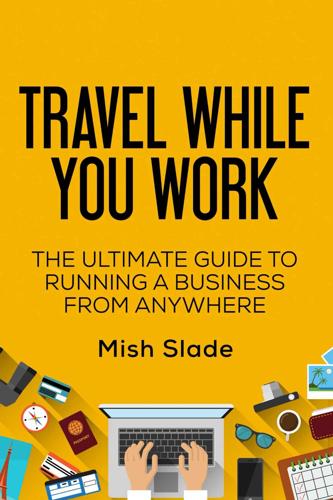
Travel While You Work: The Ultimate Guide to Running a Business From Anywhere
by
Mish Slade
Published 13 Aug 2015
Note: if you use the link www.worktravel.co/uber to sign up to Uber, you'll get a free ride (worth up to about $15). My Taxi (www.worktravel.co/mytaxi) does the same thing as Uber, but has presence in Spain – where Uber is currently banned. There's also Lyft (www.worktravel.co/lyft), but that currently only operates in certain US cities. Gett (www.worktravel.co/gett) is similar to Lyft and Uber, but the pricing remains consistent (there's no "surge pricing", and you can book cabs in advance. Gett currently operates in the USA, UK, Israel and Russia – but many other countries are coming on board soon. There are also city-specific taxi apps; have a search for "taxi app [city]" and see what comes up (or ask a local).
…
CHAPTER 1: SETTLE IN FAST Maps, directions and notekeeping Google Keep (note-taking app): www.worktravel.co/keep Google Maps: www.worktravel.co/gmaps Google Maps – how to store destinations as favourites: www.worktravel.co/mapfaves Google Maps Directions: www.worktravel.co/directions Google Maps list of offline maps: www.worktravel.co/offlinemaps Google Maps - how to download an offline map: www.worktravel.co/offlinemaps2 OsmAnd (offline maps with navigation): www.worktravel.co/osmand Here Maps (offline maps): www.worktravel.co//here Taxis Uber (taxi app): www.worktravel.co/uber Uber (list of cities): www.worktravel.co/ubercities MyTaxi (taxi app): www.worktravel.co/mytaxi Lyft (taxi app): www.worktravel.co/lyft Gett (taxi app): www.worktravel.co/gett Languages/translation Google Translate: www.worktravel.co/gtranslate XE (currency conversion): www.worktravel.co/xe Anki (flashcard app): www.worktravel.co/anki Duolingo (language learning): www.worktravel.co/duolingo Michel Thomas (language learning): www.worktravel.co/michel Money/cost of living Numbeo (cost of living in different cities): www.worktravel.co/numbeo GlobeTipping (global tipping app for iPhone): www.worktravel.co/globetipping Global Tip Calculator Pro (global tipping app for Android): www.worktravel.co/globalpro SIM cards Prepaid with Data (info on SIM cards around the world): www.worktravel.co/prepaid TripAdvisor forum (search for info on "monthly prepaid SIM 3G": www.worktravel.co/taforum Lonely Planet forum (has useful Q&As about SIMs around the world): www.worktravel.co/planetforum Restaurant, cafe, attraction, etc. reviews and info Foursquare (good for Europe): www.worktravel.co/foursquare Yelp (good for US and Europe): www.worktravel.co/yelp Spotted by Locals: www.worktravel.co/spotted Tabelog (Japan): www.worktravel.co/tabelog Vayable (marketplace where locals offer unique tours): www.worktravel.co/vayable) Receive mail Poste Restante (Wikipedia page): www.worktravel.co/post Amazon Lockers: www.worktravel.co/locker DHL Packstations (pickup lockers in Germany): www.worktravel.co/packstation Doddle (pickup lockers in the UK): www.worktravel.co/doddle My Pick Box (pickup lockers in Spain): www.worktravel.co/pickup Parcel (get all mail delivered to a unique address, which they'll then deliver at a convenient time): www.worktravel.co/parcel Mail-forwarding services UK Postbox: www.worktravel.co/ukpost Earth Class Mail (USA): www.worktravel.co/earthclass ClevverMail (Germany): www.worktravel.co/clevver Aussie Mail Man: www.worktravel.co/aussie Find/make friends Find A Nomad: www.worktravel.co/findanomad Create Your Nomadtopia: www.worktravel.co/topia ShareDesk (coworking spaces): www.worktravel.co/sharedesk Fitness Walking/cycling/running: OsmAnd (offline maps): www.worktravel.co/osmand Ride With GPS (routes): www.worktravel.co/gps Lanyard (for holding phone and following route while running/cycling): www.worktravel.co/lanyard Apartment-friendly exercise videos: Fitness Blender: www.worktravel.co/blender DDP Yoga: www.worktravel.co/ddp Do You Yoga: www.worktravel.co/yoga Focus T25: www.worktravel.co/t25 Sleek Technique: www.worktravel.co/sleek Community fitness: Project Awesome (London): www.worktravel.co/awesome November Project (USA): www.worktravel.co/november CHAPTER 2: GET TO GRIPS WITH MONEY AND TAXES Credit/debit card charges If you're from the UK… Comparison of debit card fees: www.worktravel.co/ukdebit Comparison of credit card fees: www.worktravel.co/ukcredit Best specialist travel credit cards: www.worktravel.co/uktravelcredit Info about travel debit cards: www.worktravel.co/uktraveldebit Supercard (still in testing phase at the time of writing, and only currently available for UK residents): www.worktravel.co/supercard Number26 (still in testing phase at the time of writing, and also available throughout the rest of Europe): www.worktravel.co/26 If you're from the US… List of credit cards that don't charge a foreign transaction fee: www.worktravel.co/ustravelcredit List of banks and their debit card transaction/ATM fees: www.worktravel.co/ustraveldebit Info about avoiding credit/debit card transaction fees: www.worktravel.co/avoidfees Charles Schwab (reimburses ATM fees): www.worktravel.co/schwab If you're from Australia… Info on credit/debit cards and fees: www.worktravel.co/finder More info in the book if you're from anywhere else!

Everything's Trash, but It's Okay
by
Phoebe Robinson
Published 15 Oct 2018
Say it with me, y’all: Feminism! I was rooting for you; we were all rooting for you! Sadly, this is a sentiment I have expressed often over my course of being a feminist, but I probably felt it most in the days and weeks following the Trump election. I spent days after the election gathering my bearings. I would cry in Lyfts. Or get on the phone with my dad and talk to him for hours. Or do comedy shows because laughter is a great reprieve from anger. During this time, hurt, rage, restlessness, and a litany of other emotions layered on top of each like winter clothing during a ski trip, and pretty soon a call to action was formed.
…
But to be this sloppy makes my vajeen and I quote the great scholar of our time, music producer/American Idol judge Randy Jackson: “It’s gonna be a ‘no’ from me, dawg.” Thirdly. Sowwie not sowwie, but last I checked, my name is not “White Girl Murder Victim in the First Five Minutes of Criminal Minds,” so, no, I will not be taking a Lyft to your crib so I can be murderized. Coretta Scott King didn’t go through all she went through for me to go out like that. In my mind, she worked her tail off so I can work my way onto the Obamas’ holiday-card recipient list. In all seriousness, this is the kind of grossness hetero broads deal with no matter the dating app—Tinder, Match.com, Bumble, Raya, etc.
…
Anyway, one of the first results that popped up was an article by Psychology Today, so I clicked on the link and this was the opening paragraph: Workaholism is a soul-destroying addiction that changes people’s personality and the values they live by. It distorts the reality of each family member, threatens family security and often leads to family break-up. Tragically, workaholics eventually suffer the loss of personal and professional integrity. Gahtdamn, Psychology Today! This is how you open?!?! You’re at a twelve (my Lyft driver blasting Metallica at 11:45 P.M. in his compact Toyota Corolla), and I need you to be at a two (the volume my music is at when I’m at the checkout counter and have to spend five minutes correcting the cashier’s spelling of my first name). In all seriousness, while the picture that Psychology Today painted is accurate for plenty of workaholics, it wasn’t for me.

Code Dependent: Living in the Shadow of AI
by
Madhumita Murgia
Published 20 Mar 2024
, Centro de Implementación de Políticas Públicas para la Equidad y el Crecimiento (Buenos Aires, May 2019), https://www.cippec.org/wp-content/uploads/2019/05/Como-es-trabajar-en-una-app-en-Argentina-CIPPEC-BID-LAB-OIT.pdf. 19 Kate Conger, ‘A Worker-Owned Cooperative Tries to Compete With Uber and Lyft’, The New York Times, May 28, 2021, https://www.nytimes.com/2021/05/28/technology/nyc-uber-lyft-the-drivers-cooperative.html#:~:text=%E2%80%9CThe%20starting%20point%20for%20this,what%20works%20best%20for%20them.%E2%80%9D. 20 Megan Rose Dickey, ‘The Drivers Cooperative Thinks Ridehailing Should Be Owned by Drivers, Not Venture Capitalists’, Protocol, August 20, 2021, https://www.protocol.com/workplace/drivers-cooperative-uber-lyft. 21 Catrin Nye and Sam Bright, ‘Altab Ali: The Racist Murder That Mobilised the East End’, BBC Online, May 4, 2016, https://www.bbc.co.uk/news/uk-england-london-36191020. 22 Sarah Butler, ‘Uber Drivers Entitled to Workers’ Rights, UK Supreme Court Rules’, The Guardian, February 19, 2021, https://www.theguardian.com/technology/2021/feb/19/uber-drivers-workers-uk-supreme-court-rules-rights#:~:text=It%20ruled%20that%20Uber%20must,challenge%20unfair%20dismissal%2C%20for%20example. 23 ‘Gig Win: Canada Supreme Court Rules in Favour of UberEats Driver’, Al Jazeera, June 26, 2020, https://www.aljazeera.com/economy/2020/6/26/gig-win-canada-supreme-court-rules-in-favour-of-ubereats-driver#:~:text=Canada’s%20Supreme%20Court%20on%20Friday,in%20Canada%20as%20company%20employees.; Christoph Stutz and Andreas Becker, ‘Switzerland: Uber Drivers Qualify as Gainfully Employed from a Social Security Perspective,’ Baker McKenzie, March 29, 2023, https://insightplus.bakermckenzie.com/bm/viewContent.action?
…
I don’t want to borrow money to pay rent or eat food.’ He has at least fifty friends who have left the company because it’s just not enough to live on, he said. ‘We are all struggling.’ Going Karura AI work systems are built to keep drivers apart, incentivising them to compete aggressively. Many apps, including Instacart, Lyft and Uber in the US, Deliveroo in Europe and Meituan and Ele.me in China, turn workers’ lives into games through their apps, with software that nudges them towards certain areas or jobs, and awards points and badges for being on time, or maintaining a high review score. As work turns into a contest, your livelihood becomes the prize.
…
‘The starting point for this was hearing drivers’ sense of being manipulated by the algorithm,’ said Hays Witt, the cooperative’s chief executive, in an interview.19 So far, more than 40,000 workers, primarily in Los Angeles, Portland, Oregon and Denver, have signed up and pooled information about their earnings, miles travelled, active hours and other data from apps including Uber, Lyft, DoorDash and Instacart.20 The data forms a window into the inner workings of the app systems and helps to train the app’s own algorithms, which can then analyse patterns and advise how to make the most money, and whether they are being compensated fairly. In London, James Farrar has led a resistance movement against AI-driven delivery apps that has spread from the UK across the world.

The Corruption of Capitalism: Why Rentiers Thrive and Work Does Not Pay
by
Guy Standing
Published 13 Jul 2016
A feature of all these companies is that they require full access to their clients’ bank accounts and other personal data, which they use to determine whether to provide loans, what interest rate to charge and for how long to lend. THE PLATFORM DEBT MACHINE The misnamed ‘sharing economy’ is also fostering indebtedness. App-based taxi services, such as Uber and Lyft, have tie-ups with lenders that enable drivers to buy vehicles on credit. Big car companies are becoming involved. In January 2016, General Motors announced a deal with Lyft, under which it would supply rental vehicles to Lyft drivers. In 2015, Ford introduced a pilot scheme in London and six US cities allowing customers buying cars on credit to rent them out through peer-to-peer car rental platform companies.
…
On the retail side, one and a half million ‘makers’ sell jewellery, clothing and accessories through the online marketplace Etsy, giving small-scale artisans access to buyers all over the world. Some platforms are in direct competition with older forms of service. These include Uber, its US rival Lyft and imitators elsewhere such as GrabTaxi, operating in Southeast Asia, Ola in India and Didi Kuaidi in China. BlaBlaCar, a French start-up originally called Covoiturage, is a car-sharing platform that enables drivers making long journeys to share the cost by ‘selling’ empty seats. BlaBlaCar does not compete with taxis, since its average trip is 200 miles (320 kilometres).
…
The platforms maximise profits through ownership and control of the technological apparatus, protected by patents and other forms of intellectual property rights, and by the exploitation of labour through tasking and unpaid work. Labour brokers are rentiers, earning a lot for doing little, if we accept their claim that they are just providing technology to put clients in touch with ‘independent contractors’ of services. Thus, Uber and rival Lyft insist they are technology, not transport companies. As platform-based tasking expands, it will be appreciated just how isolated the precariat is in this zone, in constant competition with one another. The atomisation drives down wages and transfers costs, risk and uncertainty onto the precariat.

Lonely Planet Pocket Reykjavík & Southwest Iceland
by
Lonely Planet
Airport Direct Slightly less-expensive bus to the city (3900kr to BSÍ bus terminal, 4990kr with hotel drop off). By Rental Car You can pick rentals up at the airport if exploring beyond Reykjavík (a car is unnecessary in the city centre). Pre-booking is best. By Taxi A taxi to the city (40 minutes) is relatively expensive at about 17,000kr. Uber and Lyft do not operate in Iceland. Other Points of Entry Reykjavík Domestic Airport This airport is in central Reykjavík, just 2km south of lake Tjörnin. Some flights to/from Greenland and the Faroe Islands fly here, as do sightseeing services and domestic flights. There’s a taxi rank at the airport.
…
Boats A weekly return ferry runs from northern Denmark to Seyðisfjörður in East Iceland, stopping at the Faroe Islands. Several cruise lines sail to Iceland from Canada, Europe and the UK. Getting Around Reykjavík is a small, walkable city. It's easy to get around without a car, and you can take the bus if you're heading across town. Uber and Lyft are not available, and there are no trains. For the countryside, nothing beats the freedom of a car, but tours can take you there, too. Walking The best way to get to know this compact city is on foot. Many of the city's top sights are within walking distance of one another. Bus Reykjavík has an extensive bus system operated by Strætó (bus.is) but it’s harder to get around by bus beyond Selfoss on the southern coast and Borgarnes to the north.
…
Parking Street parking in the city centre is limited and costs 600kr per hour in the Red/Pink zone 1 and 220kr per hour in the Blue, Green and Orange zones (zones 2, 3 and 4, respectively). The hours of operation vary (check reykjavik.is). Pay with coins, card (with PIN only) or Easypark and Parka apps. Parking outside the city centre is free. Vitatorg Car Park is a relatively central, covered lot. Taxis & Rideshares Uber and Lyft don't operate here. Book taxis online or via the Hreyfill app. Taxis are metered and can be pricey. Tipping is not expected. There are usually taxis outside bus stations, airports and bars on weekend nights. Iceland has a vibrant carpool scene. People submit routes they’re driving on samferda.net, and passengers can request rides and offer to split costs.
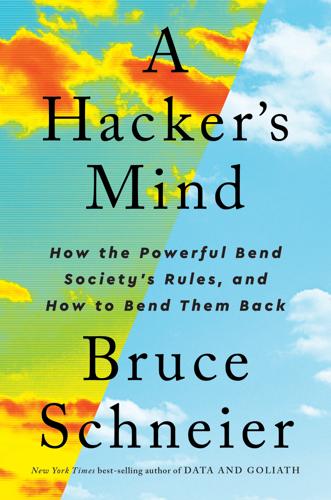
A Hacker's Mind: How the Powerful Bend Society's Rules, and How to Bend Them Back
by
Bruce Schneier
Published 7 Feb 2023
Their business model allows them to ignore dozens of laws regulating licensed taxis and limos, including worker protection laws, safety laws, consumer protection laws, permit and fee requirements, and public-good laws. Taxi drivers are required to have background checks. Uber and Lyft drivers are not (although they now grudgingly do so). Taxi companies must pay minimum wage and are subject to citywide caps on the number of vehicles they operate at any given time. Not Uber and Lyft. The list goes on and on. This all started around 2012, and Uber has since leveraged its competitive advantage over traditional taxis and limos to dominate the market. As of 2021, it operates in over 10,000 cities in 72 countries, completing 19 million trips each day.
…
It warps markets, allowing companies to charge prices that don’t reflect the true cost or value of what they’re selling. It permits unprofitable enterprises and unsustainable business models to thrive and proliferate. It also warps the market for talent—employees—especially in the tech sector. And finally, it warps entire market categories, like transportation, housing, and the media. Uber and Lyft, for example, have created an unsustainable market for hired-car rides by charging artificially low prices that do not accurately reflect the value of drivers’ labor. VC funding is also a hack on innovation. By favoring financial returns over substantive product improvements, it prioritizes certain kinds of innovation and ignores others.
…
Following a 2018 California State Supreme Court ruling and the 2019 state law mentioned above, several gig economy companies banded together to push a referendum (Proposition 22) that would remove many employee protections from their gig workers: employee classification, wage floors, unemployment insurance, healthcare insurance, and so on. Led by Uber, Lyft, and DoorDash, gig economy companies spent $200 million to support this referendum and convince workers that it was in their interests to endorse it. The measure passed in 2020, rolling back California’s efforts to protect workers. The battle is not over, and undoubtedly there will be developments after this book goes to press.
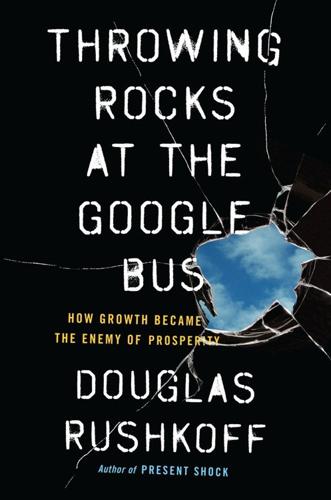
Throwing Rocks at the Google Bus: How Growth Became the Enemy of Prosperity
by
Douglas Rushkoff
Published 1 Mar 2016
That’s the problem with any of the many new ways we have of earning income through previously off-the-books activities. On the one hand, they create thrilling new forms of peer-to-peer commerce. eBay lets us sell our attic junk. Web site Airbnb lets us rent out our extra bedrooms to travelers. Smartphone apps Uber and Lyft let us use our vehicles to give people rides, for money. Unlike many of the other platforms we’ve looked at so far, these opportunities don’t lead to power-law distributions, because a car or home can be hired only by one person at a time. As long as you’re listed on the network and have decent reviews, you should do as well as anyone else.
…
Their ads show people sharing an extra bedroom and a place at the family table, but the statistics reveal that the vast majority (87 percent) of hosts leave their homes in order to rent them.37 Homes become amateur hotels, as the original residents try to live off the arbitrage between the rent they pay, the rent they earn, and the cost of living somewhere other than home. Even if you are having trouble finding work in the digital economy, you no longer have an excuse for being entirely off the books. Just don’t let the landlord find out what you’re doing. Likewise, the amateur taxi networks of Uber and Lyft are great ways for otherwise “underemployed” vehicle owners to make a few extra bucks. There’s no reason now to leave a worthwhile asset or hour off the books—even if the underemployed are really underpaid freelancers working a whole lot of hours already. These apps are not about sharing space in a vehicle—like driving a friend to the train station—they’re about monetizing unemployed people’s time and stuff.
…
They aren’t just the operators—they are the environment. To become an entire environment, however, a platform must win a rather complete monopoly of its sector. Uber can’t leverage anything if it’s just one of several competing ride-sharing apps. That’s why the company must behave so aggressively. Uber’s rival, Lyft, documented over 5,000 canceled calls made to its drivers by Uber recruiters, allegedly in an effort to get drivers to change platforms.26 It’s not that there’s too little market share to go around; it’s that Uber doesn’t mean to remain a taxi-hailing application. In order to become our delivery service, errand runner, and default app for every other transportation-related function, Uber first has to own ride-sharing completely.

The Age of Stagnation: Why Perpetual Growth Is Unattainable and the Global Economy Is in Peril
by
Satyajit Das
Published 9 Feb 2016
Providers are engaged in rich and diverse work, gaining valuable independence and flexibility. Lyft's slogan is “Your Friend with a Car.” Airbnb and Feastly urge hosts and guests to share photos and communicate to build trust. Some things remain the same. Researchers have found that, accounting for other variables, Airbnb guests pay black hosts less than they do white ones.8 The sharing economy, in reality, relies on disintermediating existing businesses and minimizing regulatory costs. Amateur chauffeurs, chefs, and personal assistants now perform, at a lower cost, work once undertaken by full-time professionals. Airbnb, Lyft, and others do not always comply with regulations designed to ensure a minimum level of skill, standard of performance, safety and security, and insurance coverage.
…
The sharing economy (also known as the peer economy, collaborative economy, and gig economy) is based on the ubiquitous Internet, improved broadband connectivity, smartphones, and apps. Individuals with spare time, houses, rooms, cars, and the like can use them as sources of work and income. The economy that benefits everyone focuses on transport (Uber, Lyft, Sidecar, GetTaxi, Hailo), short-term accommodation (Airbnb, HomeAway), small tasks (TaskRabbit, Fiverr), grocery-shopping services (Instacart), home-cooked meals (Feastly), on-demand delivery services (Postmates, Favor), pet transport (DogVacay, Rover), car rental (RelayRides, Getaround), boat rental (Boatbound), and tool rental (Zilok).
…
Uber has obtained financing of more than US$1.5 billion, valuing the business at US$40 billion—a higher valuation than traditional car hire companies such as Hertz and Avis, and publicly listed transport companies such as Delta Air Lines, American Airlines, and United Continental. Airbnb has a higher value than all but the biggest hotel chains. Given the high stakes, competition is fierce, unethical, and unsavory. Uber has admitted trying to disrupt Lyft's fundraising efforts. It does not welcome criticism, allegedly considering spending a million dollars to hire researchers to uncover information on the personal lives of reporters critical of its service in order to discredit them. TaskRabbit makes it difficult for the bunnies to communicate with each other, preventing them from organizing or unionizing.
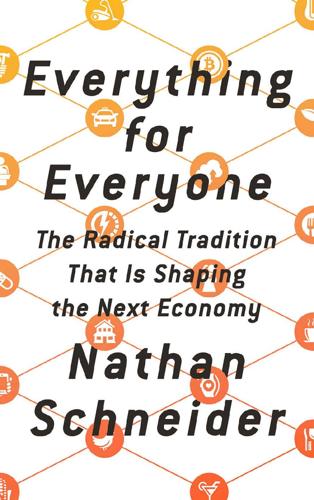
Everything for Everyone: The Radical Tradition That Is Shaping the Next Economy
by
Nathan Schneider
Published 10 Sep 2018
Municipal and national politicians have come to Scholz and me, among others, in search of policies to consider and evidence they will work. The city of Barcelona has taken steps to enshrine platform cooperativism into its economic strategies. After Austin, Texas, required Uber and Lyft drivers to perform standard safety screenings, the companies pulled their services from the city in May 2015, and the city council aided in the formation of a new co-op taxi company and a nonprofit ride-sharing app; the replacements worked so well that Uber and Lyft paid millions of dollars in lobbying to force their way back before Austin became an example. Meanwhile, UK Labour Party leader Jeremy Corbyn issued a “Digital Democracy Manifesto” that included “platform cooperatives” among its eight planks.26 The challenge of such digital democracy goes beyond local tweaks.
…
The airport’s website had a notice about an impending contract bid for taxi companies, replacing the permits. This could reshape the city’s taxi business and make or break Green Taxi’s plan to cooperativize—and unionize, with CWA—one-third of the market. The airport’s new regime affected only taxi companies, but it had everything to do with the influx of apps. Unlike taxis, Uber and Lyft drivers faced no restrictions on their airport usage. They often drove nicer cars and spoke better English; they were more likely to be white. In December 2014, the app drivers made 10,822 trips through the airport, compared to 30,535 by taxis. A year later, for the first time, app-based airport trips exceeded the taxis, and they’d done so every month since.
…
Self-driving cars hadn’t come to the city’s roads yet, but Wall Street’s anticipation of them was fueling investment in the big apps, which put pressure on the taxi market and motivated so many drivers to set off on their own. The disruption was already happening, and Green Taxi had been born of it. In the beginning, before Uber and Lyft and even checkered taxicabs, there was sharing. At least that’s the story according to Dominik Wind, a German environmental activist with a genial smile and a penchant for conspiracy theories. Years ago, out of curiosity, Wind visited Samoa for half a year; he found that people shared tools, provisions, and sexual partners with their neighbors.

Fodor's Big Island of Hawaii
by
Fodor’s Travel Guides
Published 1 Aug 2022
For those traveling to South Kona, a bypass road between Keauhou and Captain Cook alleviates congestion considerably during rush hour. In general, you can expect the following average driving times. o Ride-Sharing Both Uber and Lyft have designated pickup sites at the Hilo and Kona airports. Those who plan on traveling long distances may find that regular taxis are a bit cheaper, and you may have a longer wait for Uber and Lyft pickups beyond the airports. Essentials ; Beaches Don’t believe anyone who tells you that the Big Island lacks beaches. It’s just one of the myths about Hawaii’s largest island. It’s not so much that the Big Island has fewer beaches than the other islands, just that there’s more island, so getting to the beaches can be slightly less convenient.
…
Call or calculate online for fares to popular destinations. The local Hele-On county bus also services the Hilo airport. At the Kona airport, taxis are available. SpeediShuttle also offers transportation between the airport and hotels, resorts, and condominium complexes from Waimea to Keauhou. Uber and Lyft have designated pickup areas at the Kona and Hilo airports. j Bus Although public transportation isn’t very practical for the average vacationer, depending on where you’re staying, you can take advantage of the affordable Hawaii County Mass Transit Agency’s Hele-On Bus, which travels several routes throughout the island.
…
Still, this is the best airport to fly into if your main goal is to visit Hilo and Hawaii Volcanoes National Park. AIRPORT Hilo International Airport (ITO). E2450 Kekuanaoa St., Hilo P808/961–9300 wwww.airports.hawaii.gov/ito. AIRPORT TRANSFERS The Hilo airport is a five-minute drive from the hotels. There are no hotel shuttles to and from the airport. Take a taxi, Uber, or Lyft. You can also catch a Hele-On bus from the airport once every hour. BUS The Hele-On (wwww.heleonbus.org) public bus offers intra-Hilo transit service throughout town, but buses don’t operate at night. For ultra-budget travelers, the Hele-On bus is a cost-effective way to visit Hawaii Volcanoes National Park or Pahoa Town without having to rent a car.

Internet for the People: The Fight for Our Digital Future
by
Ben Tarnoff
Published 13 Jun 2022
Gray and Siddharth Suri, Ghost Work: How to Stop Silicon Valley from Building a New Global Underclass (Boston: Houghton Mifflin, 2019). 119, Uber is one of the main … Singularly unprofitable: In September 2021, Uber said that it could post its first profit on an adjusted basis in Q3 2021, following a similar announcement by Lyft in the previous quarter. These announcements have more to do with creative accounting than with the health of the underlying businesses, however: the adjusted basis, known as “adjusted EBITDA,” excludes many kinds of losses and expenses. As the journalist Preetika Rana notes, “Uber and Lyft have yet to turn a net profit on the strength of their operations and haven’t projected when they might.” See Preetika Rana, “Uber Says First Adjusted Profit Possible this Quarter,” Wall Street Journal, September 21, 2021, and Tom McKay, “Uber Says It’s on Track to Maybe Make a Fake Profit,” Gizmodo, September 21, 2021. 120, This was a popular strategy … “The result is …”: Srnicek, Platform Capitalism, 30.
…
For example, Sama, a company that recruits data-annotation workers from the slums of the Global South, presents its business in humanitarian terms; see Mueller, Breaking Things at Work, 118–19. The advertising materials in the campaign for Proposition 22 struck a similar note, promoting the narrative that gig companies offer economic opportunities to Black and Latino workers; see Levi Sumagaysay, “Race Has Played a Large Role in Uber and Lyft’s Fight to Preserve Their Business Models,” MarketWatch, October 19, 2020. 133, On a spring morning … Noble, Algorithms of Oppression, 17. 134, In the 1990s, the idea … Television commercials: Lisa Nakamura, Cybertypes: Race, Ethnicity, and Identity on the Internet (New York: Routledge, 2002), 87–99.

Fodor's Oregon
by
Fodor's Travel Guides
Published 13 Jun 2023
It is illegal to talk or text on a cell phone while operating a motor vehicle, and doing so will net you a hefty fine. Use a wireless headset device if you need to stay connected. 6 Taxi Portland has several reliable taxi companies and is also well served by ride-share companies, such as Uber and Lyft. It can be expensive to get around town by cab, however, and you need to call for a taxi, as it’s very difficult to hail them on the street. In Portland the flag-drop rate is $3.80 and then $2.80 per mile, and Uber and Lyft trips typically cost less. Make sure to ask whether the driver takes credit cards, whether there’s a minimum fare, and whether there are charges for extra passengers. Other charges may include waiting times and airport minimums.
…
It’s also easily accessible from Downtown Portland, both by car and public transit. It serves as the primary gateway to the state, with connections to a handful of smaller airports, including Redmond, Coos Bay, Eugene, and Medford. GROUND TRANSPORTATION PDX is 20–40 minutes by car from Downtown Portland, and is served by taxi ($38–$60), Lyft and Uber ride-sharing app service ($30–$50), and light rail ($2.50). Consult the airport’s website for a complete list of authorized rental car operators, app-based ride-share services, and other ground transportation options. e Boat CRUISES From early April through early November, a few cruise lines offer excursions focused specifically on the Pacific Northwest, usually along the Columbia River, leaving from Portland.
…
You purchase your ticket before boarding at one of the vending machines in the terminal and at every MAX stop, or by downloading the TriMet Hop Fastpass app and paying with your phone; tickets are also good on TriMet buses and the Portland Streetcar, and transfers within 2½ hours of the time of purchase are free. Uber and Lyft have dedicated pickup areas at the airport; the cost for either between the airport and Downtown averages around $25 to $35 (a taxi generally runs about $10 more). CAR Although traffic has increased dramatically in recent years (Portland ranks as one of the worst cities in the country for rush-hour commuter traffic), it’s still a fairly easy city to navigate by car, and if you’re planning to explore neighboring regions—such as the coast, Willamette wine country, and Columbia Gorge—it’s best to do so by car, as public transportation options to these areas, especially the coast, are very limited.

The Coming of Neo-Feudalism: A Warning to the Global Middle Class
by
Joel Kotkin
Published 11 May 2020
The instability in employment is widely seen as one reason for the country’s ultra-low birth rate.15 Many of today’s “precariat” work in the contingent “gig” economy, associated with firms such as Uber and Lyft. These companies and their progressive allies, including David Plouffe (who managed Barack Obama’s presidential campaign in 2008), like to speak of a “sharing” economy that is “democratizing capitalism” by returning control of the working day to the individual. They point to opportunities that the gig economy provides for people to make extra money using their own cars or homes. The corporate image of companies like Uber and Lyft features moonlighting drivers saving up cash for a family vacation or a fancy date while providing a convenient service for customers—the ultimate win-win.16 Yet for most gig workers there’s not very much that is democratic or satisfying in it.
…
CHAPTER 18 The Totalitarian Urban Future The new urban paradigm elevates efficiency and central control above privacy local autonomy class diversity and broad-based property ownership. The same oligarchs who dominate our commercial culture, seek to profit from manipulating our moods, and influence the behavior of our children want to structure our living environment as well.1 Major tech firms—Y Combinator, Lyft, Cisco, Google, Facebook—are aiming to build what they call the “smart city.” Promoted as a way to improve efficiency in urban services, these plans will also provide more opportunity for oligarchs to monitor our lives, as well as sell more advertising. The “smart city” would replace organic urban growth with a regime running on algorithms designed to rationalize our activities and control our way of life.2 This urban vision appeals to tech oligarchs’ belief that their mission is to “change the world,” not simply make money by meeting customers’ needs and desires.
…
Silicon Valley first grew out of the suburbs, but many tech leaders now believe that “urbanization is a moral imperative,” writes Greg Ferenstein.6 If startups in suburban garages represented the individualism of cranky inventors and entrepreneurs, the future Silicon Valley will feature densely packed apartment complexes for workers who will become ever more corporate and controlled.7 The focus on apartment living for employees makes some sense for tech companies—like Facebook, Lyft, Salesforce, Square, Twitter, Yelp, and Google—that rely on a youthful, childless workforce.8 This kind of urban experience does not spur individuals toward independent adulthood and family formation, but recreates “life as close to the college experience as possible,” as Ferenstein notes, or a kind of prolonged adolescence.9 With traditional family-friendly housing near their workplaces out of reach for all but the wealthiest people, most tech employees will live in something like dormitories, perhaps well into their thirties.
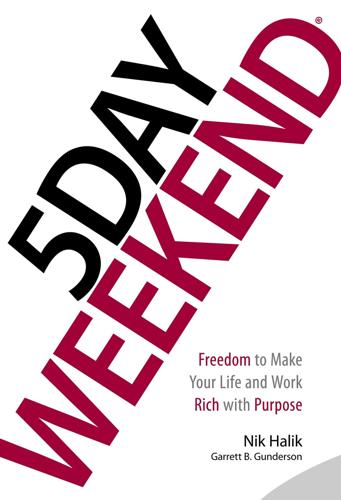
5 Day Weekend: Freedom to Make Your Life and Work Rich With Purpose
by
Nik Halik
and
Garrett B. Gunderson
Published 5 Mar 2018
She generated enough cash flow from those bedrooms that she was able to buy another home, move out, and then rent out the whole house. She now earns between $1,000 and $1,800 a month from her Airbnb property. Uber/Lyft You can earn money on your schedule. You give rides when you want and earn as much as you want, with the potential to make great money. Thirty hours of driving per week can generate up to $1,000 on average. You get paid weekly and your fares are automatically deposited. Additionally, this is a unique way to monetize your car, especially if you have a car loan. You could buy a new car and pay it off as an Uber or Lyft driver. In late 2016, I was visiting London to deliver a keynote address. I had an Uber driver pick me up, and we struck up a conversation.
…
The drivers simply spend their time and drive, and generate about $4,000 per month net after their rental fee. For these drivers, $7,000 can support their families for an entire year back in Afghanistan. Akram’s plan is to upgrade his fleet to fifty cars. There are thirty other refugees on the waiting list to take up his offer. And even if you don’t want to drive for Uber or Lyft, you can still make money with them. There are plenty of people who have a driver’s license but don’t own a car. If you have an under-utilized car that’s just sitting in your garage and depreciating in value, you can rent it out to ridesharing drivers. You can now list your car on HyreCar.com. An average car owner has the potential to generate up to $12,000 per year, providing a good source of passive income.
…
Keohohou, Nicki Kets de Vries, Manfred keystone habits Kiyosaki, Robert Komisar, Randy Kroc, Ray L labor markets, technology’s transformation of Lavie, Peretz Lemony Snicket Lending Club leverage, and Cash Flow Insurance and content and creating greater returns and credit scores and current assets and entrepreneurship and real estate investments liabilities, and insurance vs. debt liberated entrepreneurs life boards, creating life insurance, combining with long-term care insurance as protective expense whole life insurance lifestyle, and cash flow cutting expenses of and freedom and Growth investment strategies and loan debt Linchpin (Godin) LinkedIn liquidity, and Cash Flow Insurance of checking and savings accounts and economic cycles and failure of conventional investments of Growth investments and real estate investments and reducing debt and tax lien certificates Litecoin “Live Like You Were Dying” (song) Living Wealthy Accounts LLCs loads, on mutual funds loans, and Cash Flow Index and credit scores and economic cycles for real estate investments restructuring from retirement plans against whole life insurance policies See also debt location, and real estate investments and storage unit construction Loehr, Jim long-term care insurance Loopnet Lyft, as entrepreneurial opportunity Lynch, Peter M Mackay, Harvey “mailbox money” myth maintenance, and storage units Mandela, Nelson Marcus Aurelius market conditions, and business startup investments and real estate investments market cycles See also economic cycles market demand, and entrepreneurial opportunities Mastermind Principle materialism, and the American dream and simplicity Maxwell, John McCain, John McCoy, Dan meals, as tax deduction meaning, and generosity medical insurance, as protective expense Melish, Stephanie mental capital mental energy mentors, and building your inner circle microcredit Mill, John Stuart mindfulness mindset, of abundance changing components of a strong and control and debt and hiring employees and limitations and Living Wealthy Accounts and quitting your job and real estate investments and resourcefulness strengthening mineral rights mobile apps, as entrepreneurial opportunity Moffat, Kyle Momentum investments, and active vs. passive income streams business startups cryptocurrencies description of gold and silver speculation and Growth investment strategies investing in people and Passive Income Ratio private equity investments purchasing distressed businesses understanding financial reports Monero monetary policies, and economic cycles moneylenders money managers fees money mastery Moody, D.

Do Nothing: How to Break Away From Overworking, Overdoing, and Underliving
by
Celeste Headlee
Published 10 Mar 2020
“Our economies [haven’t] been shaped by our idea of fairness,” writes Ethan Watters, author of Crazy Like Us: The Globalization of the American Psyche. “It was the other way around.” Corporate values have seeped into nearly all areas of private life. In 2016, the transportation company Lyft issued a celebratory press release about what they called “an exciting Lyft story.” A driver named Mary went into labor while working and even picked up a fare on her way to the hospital. “Luckily, the ride was a short one,” the press release added, with an implied wink. My jaw dropped when I read that “adorable” story. Someone in the corporate office thought it was “cute” that one of their workers felt so much pressure to make a few extra dollars that she gritted her teeth, swallowed the pain of growing contractions, and kept driving.
…
I think we can safely assume that working up until nearly the moment her baby was born was not part of Mary’s birth plan. I haven’t spoken to Mary, and it’s certainly possible that she wasn’t in much pain and was delighted about how things turned out. I’ve talked to many drivers who love their jobs with Lyft and Uber. Maybe Mary views the events of that night as a cute story, much like Lyft does. But this story is bigger than Mary, because it’s a reflection of a global attitude about work-life balance. The reasons Mary might have felt compelled to stay in that car and pick up another fare are probably various. Many people work extra hours in order to cover medical expenses or to pay high rent or inflated car insurance bills.

The Inevitable: Understanding the 12 Technological Forces That Will Shape Our Future
by
Kevin Kelly
Published 6 Jun 2016
We value not only the atoms in a thing, but their immaterial arrangement and design and, even more, their ability to adapt and flow in response to our needs. Formerly solid products made of steel and leather are now sold as fluid services that keep updating. Your solid car parked in a driveway has been transformed into a personal on-demand transportation service supplied by Uber, Lyft, Zip, and Sidecar—which are improving faster than automobiles are. Grocery shopping is no longer a hit-or-miss affair; now a steady flow of household replenishables streams into our homes uninterrupted. You get a better telephone every few months because a flow of new operating systems install themselves on your smartphone, adding new features and new benefits that in the past would have required new hardware.
…
And to make it vastly cheaper (in normal use), if you are willing to share a ride, Uber will match two or three riders going to approximately the same place at the same time to split the fare. These UberPool shared-ride fares might be one quarter the cost of a taxi. Relying on Uber (or its competitors, like Lyft) is a no-brainer. While Uber is well known, the same on-demand “access” model is disrupting dozens of other industries, one after another. In the past few years thousands of entrepreneurs seeking funding have pitched venture capitalists for an “Uber for X,” where X is any business where customers still have to wait.
…
Rent a company-owned car, drive yourself (Hertz rental). 4. Hire a peer to drive you to your destination (Uber). 5. Rent a car from a peer, drive yourself (RelayRides). 6. Hire a company to drive you with shared passengers along a fixed route (bus). 7. Hire a peer to drive you with shared passengers to your destination (Lyft Line). 8. Hire a peer to drive you with shared passengers going to a fixed destination (BlaBlaCar). There are variations upon the variations. Hire the service Shuddle to pick up someone else, like a child at school; some call it an Uber for kids. Sidecar is like Uber, except it runs a reverse auction.
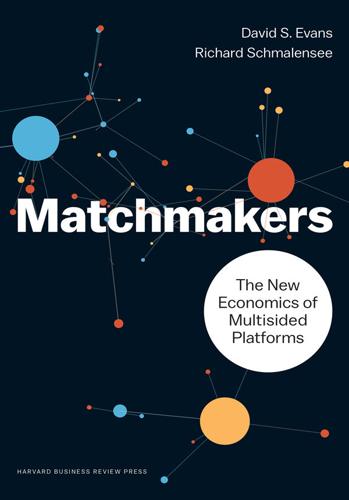
Matchmakers: The New Economics of Multisided Platforms
by
David S. Evans
and
Richard Schmalensee
Published 23 May 2016
It can’t make up for this deficit by having many restaurants that aren’t relevant to the people making the reservations. OpenTable’s “go narrow/go deep” strategy worked because it ultimately secured critical mass in cities where it had signed up enough popular restaurants and engaged enough diners that the positive indirect network effects between these two kinds of customers ignited further growth on both sides. Lyft, Yelp, Instacart, and other businesses that provide local services have followed similar strategies. But the point also applies to multisided platforms that are trying to differentiate their offerings. If a mall developer decides to create a high-end shopping mall, it must get high-end stores to lease space at the mall, and it must persuade well-off shoppers to go to the mall.
…
Two-sided matchmakers operating from the Cloud, such as Expedia, offer more efficient and cheaper alternatives. According to the US Bureau of Labor Statistics, there were forty-four travel agents for every hundred thousand people in the United States in 2000. That had declined by 55 percent, to only twenty per hundred thousand people in 2014.33 Uber, along with similar companies such as Lyft and Didi Kuaidi, has created a great deal of value for consumers and drivers. But the traditional taxicab business is threatened as a result. Taxi drivers worldwide are protesting and trying to stop these new matchmakers. If they don’t, the traditional taxi business will likely go into terminal decline.
…
Apple Developer, “App Store Review Guidelines,” https://developer.apple.com/app-store/review/guidelines/. 24. Tomer Sarid, “7 Reasons Your App Could Get Rejected by Apple (And How to Avoid It),” como blog, April 29, 2015, http://blog.como.com/2015/04/7-reasons-app-rejected-by-apple/. 25. For general discussions, see Jason Tanz, “How Airbnb and Lyft Finally Got Americans to Trust Each Other,” Wired, April 23, 2014, http://www.wired.com/2014/04/trust-in-the-share-economy/; Liran Einav, Chiara Farronato, and Jonathan Levin, “Peer-to-Peer Markets,” NBER working paper 21496, 2015, section 2.3, http://www.nber.org/papers/w21496. 26. OpenTable, “OpenTable Terms of Use,” http://www.opentable.com/info/agreement.aspx. 27.

Blitzscaling: The Lightning-Fast Path to Building Massively Valuable Companies
by
Reid Hoffman
and
Chris Yeh
Published 14 Apr 2018
Uber’s ability to raise billions of dollars has allowed it to subsidize its service to attract more drivers and passengers, reinforcing the network effects of its two-sided marketplace. Plentiful capital has also allowed it to expand aggressively into other markets in an attempt to beat its competition to critical scale. Even after a scandal-plagued 2017, Uber still dwarfs its US archrival Lyft. In July 2017, Lyft announced that it had reached one million rides per day, a milestone that Uber achieved at the end of 2014. During the dismal days of the dot-com bust, Google followed the blitzscaling playbook by using a distribution deal with AOL to dramatically expand its AdWords business. The deal, first announced in May 2002, gave AOL an 85 percent share of the revenue generated by AOL searches powered by Google, with a guaranteed minimum of $150 million per year.
…
Some of these issues were due to clearly unethical behavior, including internal problems, such as the sexual harassment reported by the former Uber engineer Susan Fowler, and various external attempts to subvert free competition, regulation, and the press, such as creating fake accounts to poach drivers from its rival Lyft (as reported by The Verge), developing software (Greyball) to prevent law enforcement and regulators from accessing the service, and then-COO Emil Michael suggesting that the company spend money to hire opposition researchers to intimidate journalists. This kind of behavior is unacceptable, regardless of the size or stage of the company undertaking it, and has rightfully been widely condemned.
…
BLITZSCALING HACKS One productive hack to help your existing company blitzscale is to find ways to leverage people and businesses with prior blitzscaling experience. One obvious play is to partner with a blitzscaling start-up. For example, GM responded to the rise of Uber and the corresponding threat it represents to the market for cars for human drivers by investing $500 million in Lyft, Uber’s blitzscaling rival. GM also hedged its bets by acquiring Cruise for its self-driving car technology. A less obvious technique is to leverage the knowledge of venture capitalists. Venture capitalists are keen fans of blitzscaling and the returns it brings, even if they didn’t know the specific term before the book came out.
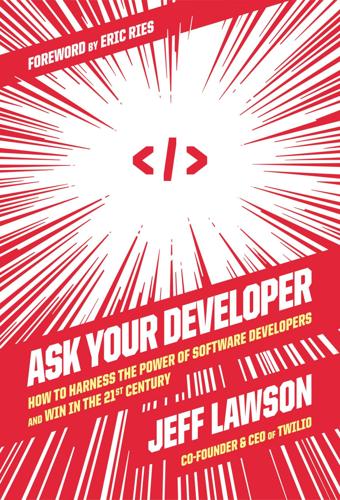
Ask Your Developer: How to Harness the Power of Software Developers and Win in the 21st Century
by
Jeff Lawson
Published 12 Jan 2021
I once worked with a group of senior leaders from large hospital trade associations who were desperate to improve patient experience, but throughout our time together they made excuses for why that experience was so dismal. Nothing I said about using digital tools to create the kind of transformation they were looking for got through to them. Finally, I asked how many of them had used Uber or Lyft. When they all said they had, I asked them to take their phones out of their pockets and look at how those apps show there’s a car on the way and where it is. I asked them to imagine what it would mean to the patient experience if a patient knew the arrival time of the nurse or a doctor coming to their room to help.
…
At the time, we did about $100 million in annual revenue, and were on the path toward our initial public offering (IPO), yet we weren’t a household name. That’s because Twilio does not sell products to consumers. We sell a service to software developers that lets their apps communicate with voice, SMS, email, and more. We have amazing customers—Uber, WhatsApp, Lyft, Zendesk, OpenTable, Nordstrom, Nike. But our software hides under the covers, inside websites and mobile apps. In fact, you’ve undoubtedly used Twilio, without knowing it, if you’re a customer of any of those companies or thousands more like them. So having committed half a million dollars to reserve the billboard for a year (yeah, even billboard real estate in the Bay Area is overpriced!)
…
In fact, you might believe that just buying software was how this transformation would work. Or that the software would just eat the world on its own in some kind of Terminator-like hellscape. Nobody wrote the instruction manual for this transformation. But in fact companies succeed at digital transformation not just by using software but by building software. Startups like Uber, Lyft, Airbnb, and Spotify have become household names because they’re really good at building software. They know how to write software that changes how we live our lives. Now incumbents in every other industry are learning to do the same. Nearly every industry is transforming because of software. Digital transformation initiatives take top priority at all kinds of companies.

Vassal State
by
Angus Hanton
Published 25 Mar 2024
By 2022 there were 70,000 Airbnb locations in London alone and about $6 billion each year was being spent on UK accommodation through this San Francisco-based platform. Uber spent two years in development before the first customer used the app. Four years later it was operating in 100 cities – ‘a global brand focused on helping move you towards opportunity out in the world’, as the company immodestly claims.8 Its rival Lyft followed the same path but, by 2023, despite billions in annual revenue, neither taxi app had turned a significant profit. Large US investors continue to value these businesses in the billions, however, because they have already decided that scale matters more than immediate returns. They have seen what happened to MySpace – what happens when you ‘Punch the Monkey’.
…
Although Amazon does not have the UK market to itself, it does have about 40 per cent, and its competitors are all American: the other big players being Google Cloud Storage and Microsoft’s Azure. Even for the smaller US tech firms, diversification and innovation are at the heart of their plans. Despite lack of profitability, Uber and Lyft have poured billions of dollars into research-and-development projects such as driverless cars. Larger firms, meanwhile, push to buy up potential competitors and out-innovate their rivals to create unassailable market positions. In the past decade, Facebook decided to out-compete social media rival Snapchat by buying and rebuilding Instagram.
…
Middlemen are back in force, but they have switched nationality. Virtually everything is available online through a digital platform. To get a ticket for an event you might look at Ticketmaster (California), or to travel you might visit Expedia (Washington State). If you want a taxi you will summon Uber or Lyft (both California), and when you want a date you will hook up through Tinder or Grindr (both California). For a new computer game you will take on the bots at Steam (Washington State); to sell your house you will list with Zoopla (California), and for stuff you need at home you will source it from eBay (California) or Amazon (Washington State).

The Future Is Faster Than You Think: How Converging Technologies Are Transforming Business, Industries, and Our Lives
by
Peter H. Diamandis
and
Steven Kotler
Published 28 Jan 2020
Cheap and quick are the two biggest factors impacting consumer choice in this kind of market. What brand of car ridersharers are sharing matters a lot less. Most of the time, if the vehicle is clean and neat, consumers won’t even notice what brand the car is—similar to how most of us feel about Uber or Lyft today. So, if a half-a-dozen different vehicles are all it takes to please the customer, then a wave of car company extinction is going to follow our wave of car company consolidation. Big auto won’t be the only industry impacted. America has almost half-a-million parking spaces. In a recent survey, MIT professor of urban planning Eran Ben-Joseph reported that, in many major US cities, “parking lots cover more than a third of the land area,” while the nation as a whole has set aside an area larger than Delaware and Rhode Island combined for our vehicles.
…
Own our own data, for one. Blockchain IDs could also facilitate fair and accurate voting. Lastly, if your identity can be established, then a reputation score can easily be attached. This score allows for things like peer-to-peer ridesharing, which today require trusted third parties named “Uber” and “Lyft.” In the same way that blockchain can validate identity, it can also validate any asset—for example, ensuring that your engagement ring isn’t a blood diamond. Land titles are another opportunity, especially since a considerable portion of the planet lives on land they don’t own, or not officially.
…
While robo-advisors still account for only roughly 1 percent of total U.S. investment, Business Insider Intelligence estimates that number will climb to $4.6 trillion by 2022. Finally we come to our last category, using money to pay for things. But we already know this story. When was the last time you dropped coins into a toll booth? Or paid cash for a cab ride? In fact, Uber and Lyft allow us to get around a city without a wallet. Couple cashier-less stores like Amazon Go with services like Uber Eats and these wallet-less ways are about to become the new normal. Denmark stopped printing money in 2017. The year prior, in an attempt to expand mobile banking and demonetize the country’s gray-market economy, India recalled 86 percent of its cash.
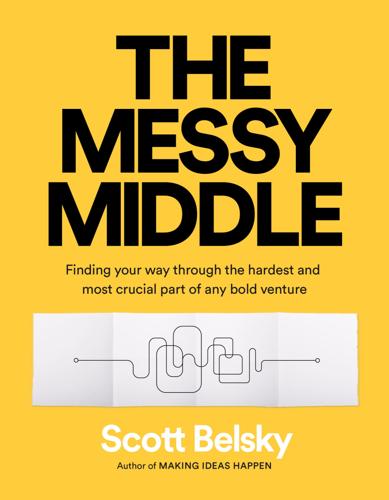
The Messy Middle: Finding Your Way Through the Hardest and Most Crucial Part of Any Bold Venture
by
Scott Belsky
Published 1 Oct 2018
KEEP YOUR OPPONENTS IN THE GAME Aside from being a source of energy for your own productivity, your competitors play a critical role in the health of your industry. Over time, every company in a field builds on one another and helps expand the potential size of the market. For example, in the ride-sharing space, Uber launched on-demand cars before Lyft, Lyft launched a carpooling option before Uber, then Uber launched a tool for drivers to pick up fares at the end of their shift on their way home before Lyft, then Lyft provided “prescheduled rides” before Uber, and the list goes on. Of course, the real winner here is the consumer, who gets a more evolved product offering from the endless competition between two companies. Be grateful to your competitors for never letting your product—and process—become too comfortable.
…
(Hogan-Brun), 107 LinkedIn, 181, 258 listening, 321 lists, 374 living and dying, 26, 368–69, 373–75 Livingston, Jessica, 101–2 local maxima, 242, 243–44, 289 Loewenstein, George, 272 long-term goals, 26–27, 66, 299, 304, 350 Loup Ventures, 35 Louvre Pyramid, 200–202 Lyft, 191 Macdonald, Hugo, 37–38 Macworld, 295 Maeda, John, 107, 186, 308, 354 magic of engagement, 273 Making Ideas Happen (Belsky), 159, 190, 222 Managed by Q, 221 Marcus Aurelius, 39 market-product fit, 256 Marquet, David, 167 Mastercard, 275, 303–4 Match.com, 259 Maupassant, Guy de, 201 maximizers, 229, 284–85 McKenna, Luke, 217 McKinsey & Company, 72 Meerkat, 265 meetings, 44, 78, 176 Meetup, 168, 243–44 Mehta, Monica, 26 merchandising, internal, 158–60 metrics and measures, 28, 29, 297–99 microwave ovens, 325 middle, 1, 3–4, 7–8, 14–15, 20, 40, 209, 211, 375 volatility of, 1, 4, 6, 8, 12, 14–16, 21, 209 milestones, 25, 27, 31, 40 minimum viable product (MVP), 86, 186, 195, 252 Minshew, Kathryn, 72–73 misalignment, 153–55 mistakes, 324–25, 336 Mitterand, François, 201 Mix, 256 Mizrahi, Isaac, 324 mock-ups, 161–63 momentum, 29 money, raising, 30–31, 102 Monocle, 37 Morin, Dave, 273 motivation, 24 multilingualism, 107–9 Murphy, James, 92 Muse, The, 72, 73 Musk, Elon, 168, 273 Muslims, 302–3 Myspace, 89, 187–88, 349 mystery, 271–73 naivety, 308–9 Narayan, Shantanu, 289 narrative and storytelling, 40–42, 75, 87, 271 building, before product, 255–57 culture and, 134–36 National Day of Unplugging, 328 naysayers, 295 negotiation, 286–87 Negroponte, Nicholas, 107 Nest, 63 Netflix, 83–84, 126 networking, 138–39 networks, 258–61, 283, 284, 320–21 Newsweek, 38 New York Times, 63, 122, 275 Next, 141 99U Conference, 9–10, 26, 138, 167, 181, 197, 220, 221, 360 no, saying, 282–84, 285, 319, 371, 372 Noguchi, Isamu, 141 noise and signal, 320–21 Northwestern Mutual, 66 novelty, and utility, 240–41 NPR, 196 “NYC Deli Problem,” 174 Oates, Joyce Carol, 192 OBECALP, 59–61 obsession, 104–5, 229, 313, 326 Oculus, 350 Odeo, 36 office space, 140–41 openness, 308–9, 350 OpenTable, 79 opinions, 64, 305–7, 317 opportunities, 282–85, 319, 324, 325, 371 optimization, 8, 14–15, 16, 93–338 see also product, optimizing; self, optimizing; team, optimizing Option B: Facing Adversity, Building Resilience, and Finding Joy (Sandberg and Grant), 39 options, managing, 284–85 organizational debt, 178–79 outlasting, 90 outsiders, 88, 105 Page, Larry, 60 Pain, 59 Paperless Post, 239 Paradox of Choice, The: Why More Is Less (Schwartz), 284 parallel processing, 33 parenting, 371, 372 Partpic, 120 passion, empathy and humility before, 248–50 path of least resistance, 85 patience, 78, 80–85, 196 cultural systems for, 81–82, 85 personal pursuit of, 84–85 structural systems for, 83–84, 85 “pebbles” and “boulders,” 182, 268 Pei, I.
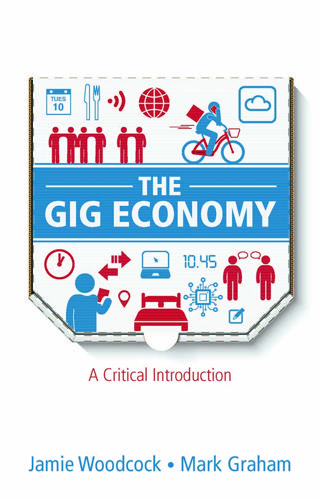
The Gig Economy: A Critical Introduction
by
Jamie Woodcock
and
Mark Graham
Published 17 Jan 2020
Designed by the English philosopher and social theorist, Jeremy Bentham, the panopticon is an architectural design for a prison in which a single prison guard can watch all the inmates simultaneously without them knowing whether they are being watched, thus inducing self-regulating behaviour. 10. See Wiessner, D. (2018) US court revives challenge to Seattle’s Uber, Lyft union law. Reuters, 11 May. Available at: https://www.reuters.com/article/us-uber-seattle-unions/u-s-court-revives-challenge-to-seattles-uber-lyft-union-law-idUSKBN1IC27C Conclusion: What next for the gig economy? The gig economy is not just a synonym for algorithmic wizardry, large datasets and cutting-edge technologies. Whenever we think (or indeed research or write) about work, it is important to remember that work necessarily involves workers.
…
This is because, in many locales, the self-employed are not allowed to form trade unions like workers or employees are. In those places, doing so is seen as operating like a price-setting cartel rather than simply providing a means for workers to bargain over their pay. In fact, the US Chamber of Commerce, of which Uber and Lyft are members, has argued in a Seattle court that ‘by allowing drivers to bargain over their pay, which is based on fares received from passengers, the city would permit them to essentially fix prices in violation of federal antitrust law.’10 This measure has been seen as an attempt to prevent the Teamsters from organizing Uber drivers in Seattle.
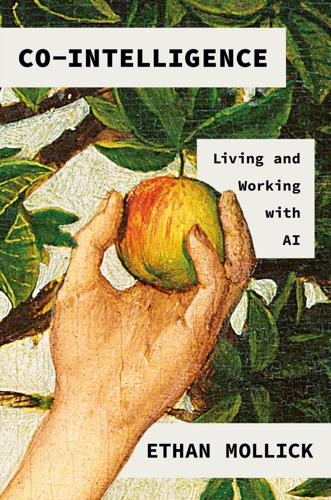
Co-Intelligence: Living and Working With AI
by
Ethan Mollick
Published 2 Apr 2024
And they are opaque—their biases, and even the way they make decisions—are hidden from workers. Wharton professor Lindsey Cameron saw this firsthand when she was a gig-working driver for six years as part of an intense ethnographic study of how workers deal with algorithmic management. Forced to depend on Uber or Lyft’s algorithms to find work, they engage in covert forms of resistance to gain some control over their destiny. For example, drivers might worry that a particular rider could give them lower ratings (thus hurting their future earnings), so they will convince the rider to cancel before pickup, perhaps by claiming that the driver can’t see the potential pickup spot.
…
We could imagine how LLMs might supercharge this process, creating an even more comprehensive panopticon: in this system, every aspect of work is monitored and controlled by AI. AI tracks the activities, behaviors, outputs, and outcomes of workers and managers. AI sets goals and targets for them, assigns tasks and roles to them, evaluates their performance, and rewards them accordingly. But, unlike the cold, impersonal algorithm of Lyft or Uber, LLMs might also provide feedback and coaching to help workers improve their skills and productivity. AI’s ability to act as a friendly adviser could sand down the edges of algorithmic control, covering the Skinner box in bright wrapping paper. But it would still be the algorithm in charge.

The Second Machine Age: Work, Progress, and Prosperity in a Time of Brilliant Technologies
by
Erik Brynjolfsson
and
Andrew McAfee
Published 20 Jan 2014
When Andy needed to have his motorcycle towed to another state in 2010, he found the right person for the job—someone with both time and a trailer on their hands—on uShip. Lyft, founded in 2011, allows people to effectively turn their cars into taxis whenever they want, giving crosstown rides to others. In an effort to avoid opposition from taxi regulators and other authorities, Lyft does not set fees or rates. It instead suggests to customers a ‘donation’ that they should offer to the person who just gave them a lift. As the story of Lyft highlights, there are many legal and regulatory issues that will need to be resolved as the peer economy grows. While we certainly acknowledge the need to ensure public safety, we hope that regulation in this new area will not be stifling and that the peer economy will continue to grow.
…
Kintinuous Kiva Klapper, Leora Kline, Patrick Knack Kochan, Tom Kopecky, Karen Kremer, Michael Krieger, Mike Krueger, Alan Krugman, Paul Kurzweil, Ray Kuznets, Simon labor: capital replacement of churn in crowdsourcing of demand elasticity and digital partnerships with digitization and; see also “winner-take-all” markets incentives for input limits on non-digitized recessions and skill matrix for see also employment; productivity; wages labor, skilled: benefits of technology for contribution of immigration to creation of labor, unskilled: declining wages of technology’s replacement of Laeven, Luc Lakhani, Karim land taxes Leiserson, William Leonard, John Leontief, Wassily Levine, Uri Levy, Frank Lickel, Charles LIDAR Liebling, A. J. Lindbergh, Charles LinkedIn Lionbridge living standards, calculation of Lohr, Steve London, congestion charging in Longitude Prize Loria, Roberto Luca, Michael Ludd, Ned Luddite Fallacy Lusardi, Annamaria Lyft machine-to-machine (M2M) communication Macintosh Madigan, Kathleen Mandel, Michael Mankiw, Greg manufacturing: automation in importance of infrastructure to inelastic demand in organizational coinventions in U.S. employment in wages in maps, digital Marberry, Mike Marbles, Jenna Mariel boatlift Marshall, Alfred Marx, Karl massive online open courses (MOOCs) McAfee, Andrew McCarthy, John McDevitt, Ryan McFadden, Daniel McKinsey Mechanical Turk medicine: AI use in automation in diagnostic Memorial Sloan-Kettering Cancer Center “meta-ideas,” Michel, Jean-Baptiste Microsoft Milgrom, Paul military, U.S., robot use by Minsky, Marvin MIT, Computer Science and Artificial Intelligence Lab at Mitchell, Tom Mitra, Sugata MITx Monster.com Montessori, Maria Monthly Labor Review Moore, Gordon Moore’s Law in business in computing persistence of spread of Moravec, Hans Moravec’s paradox Morris, Ian mortgages Mullis, Kary multidimensional poverty index Munster, Gene Murnane, Richard Murray, Charles music, digitization of Nader, Ralph Narrative Science NASA National Academy of Sciences National Association of Realtors National Bureau of Economic Research National Review Nature of Technology, The (Arthur) Neiman, Brent New Digital Age, The (Schmidt and Cohen) New Division of Labor, The (Levy and Murnane) Newell, Al new growth theory New York Times Next Convergence, The (Spence) Nike Nixon, Richard Nordhaus, William numbers: development of large Occupy movement oDesk Oh, Joo Hee Olshansky, S.

Please Don't Sit on My Bed in Your Outside Clothes: Essays
by
Phoebe Robinson
Published 14 Oct 2021
I’d also like to thank Duolingo, because without you, I wouldn’t be able to butcher Spanish when calling Oaxaca Taqueria to place a dinner order—“Meh gustaría TRES carNAY Aah Sah Dahs, por favor”—and then lie and say my name is Karen, as butchering another language is total Karen vibes. Mother Naych, I used to treat you like you weren’t much more than what I experience when waiting outside for the Lyft ride I definitely should have called fifteen minutes earlier, but since I didn’t, I will totes blame the driver for not Tokyo Drift’ing in a school zone so I could get to work on time. I was wrong and thank you for opening my eyes. This year, I went on five hikes aka waddled my melodramatic self over some autumnal leaves.
…
Is some of what I’m about to tell you going to be ignorant or ignorantly presented? I think we all know the answer to that question. So thanks for signing up for this DeVry University version of Harvard Business School. Please note there are no refunds, I’m the only faculty member, my office hours are the minutes I spend waiting for my Lyft XL, and the only required reading on the class syllabus are my two previous books and Rich Dad Poor Dad by Robert Kiyosaki, who filed for bankruptcy in 2012. Aww, Rob. Like Ferris Bueller famously said, “Life moves pretty fast!” Anyway, here’s what I’ve learned from running businesses and building a mini empire for two-plus years: What Warren Buffett Should’ve Told Ya #1: For Some of Your Employees, This Is Just a J.O.B.
…
Why are we acting like that’s not an option? Why are we behaving as though changing in and out of PJs is akin to doing high school trig? Okay, yes, but: Let’s say BonBon comes over to hang out with you, and he casually sits on your bed wearing his outside clothes. WHAT DO YOU DO?! Call him a Lyft to take him to JFK Airport and kick his ass out. I am too old to be playing games with someone damn near twice my age. And he too grown not to know that if he wanna sit on my bed, he needs to bring a day bag and change clothes in the guest bathroom once he gets to my home. I’ve never heard of outside clothes!

Squeezed: Why Our Families Can't Afford America
by
Alissa Quart
Published 25 Jun 2018
Kid Care Concierge, a “personalized and exclusive concierge service firm, establish[es] a harmonious work-life balance for busy families.”) For the more affluent, there’s now even an on-demand ride-and-care service for children in Southern California and the Bay Area called Zūm; an expensive car service like Lyft, Zūm ferries children ages five to eighteen to and from school or to team practices and music lessons, with child care provided before or after the rides for an additional fee. But such services are not affordable for late-night store and chain-restaurant workers. Indeed, as Rachel Cusk writes in her memoir of how the wealthy deploy day care: “The deep-pile nanny, the nanny who exists to cushion the impact of parenthood, was, I discovered, the preserve of the wealthy.
…
These conglomerates are gargantuan outfits that offer short-term, cheap services delivered by “independent” contractors. They have become hugely successful by trading labor across platforms over which workers have little to no say. There was also a gendered element of this dark Silicon Valley fantasia. Of the dozen Uber and Lyft driver-teachers I spoke to in 2016, most were also parents, and almost all were men. (Of course, this is often true of the workers employed by these services.) It made me wonder whether men were sometimes more willing to literally drive the extra mile to retain their class status. After all, these men were also affected by the American societal amnesia about the cost of raising a family.
…
(Ironies compound: as the writer Douglas Rushkoff has noted, today’s drivers are themselves now part of the research and development for what will most likely be the driverless future, building up a company with their labor in preparation for a time when the company will do away with them.) “Our demand is to freeze all the subsidies for the research on autonomous vehicles until there is a plan for workers who are going to lose their jobs,” Lerner said. As part of this effort, NYCC regularly puts together conference calls between dozens of taxi, Uber, and Lyft drivers. They discuss how they’ve all gotten massive loans to buy cars for Uber and how they are still going to be paying off these loans when the robots come for their jobs—the robot vehicles Uber has promised within the decade. The robot-fearing Middle Precariat also includes parts of the legal profession: robots are threatening higher-end jobs, including those usually carried out by humans handling information.

Enshittification: Why Everything Suddenly Got Worse and What to Do About It
by
Cory Doctorow
Published 6 Oct 2025
For example, the more Uber drivers there are, the easier it is to get an Uber; when more people use Uber, more drivers join Uber. The fact that every rider defaults to Uber means that drivers are skeptical of Uber rivals, and the fact that drivers won’t install rivals’ apps means that there’s no reason for riders to try those rivals out. Sometimes, you get an also-ran like Lyft, but after an initial bloom, the segment has calcified into Uber and sometimes Lyft, without any market oxygen for new competitors, driver co-ops, or other alternatives. Microsoft has always been very good at attaining scale through network effects, and then leveraging those network effects to keep its rivals out of the system. No one (except Microsoft insiders, who aren’t talking—yet) can say for sure whether Microsoft deliberately introduced defects into the Mac version of Office in order to hurt the Mac, but that was certainly the effect.
…
But if an indie audiobook store like (the excellent) Libro.fm sells you that audiobook through Apple’s platform, it pays Penguin Random House $20 and owes Apple a further $7.50. In other words, if Libro.fm tries to sell audiobooks through an iPhone app, it loses money on every sale. Of course, this doesn’t apply to everyone: Uber and Lyft are exempt from these fees. Enshittifiers stick together. Case Study: Twitter When Twitter started, its most obvious characteristic was its brevity. Users were limited to sending messages no longer than 140 characters, brief enough to fit into the short message service (SMS) system, the standard text-messaging system used by mobile phones around the world.
…
I had a conversation with the company founders in 2022 during which they told me that a DoorDash insider told them that there were forty engineers assigned to blocking Para from uncovering Dashers’ full compensation. Today, Para has expanded its offerings, with an “autodecline” feature that lets gig workers automatically decline any job offer that is below a certain level. This is part of a “multiapp” strategy that aims to let gig workers set up accounts with multiple services—Uber and Lyft, DoorDash and Grubhub, and so on—and get a dashboard showing them which service is offering the highest payout from moment to moment, playing the gig companies off against one another. Gig workers are ground zero for this kind of counter-twiddling, because they’re the first class of workers whose boss is an app.

Palo Alto: A History of California, Capitalism, and the World
by
Malcolm Harris
Published 14 Feb 2023
Brad Stone, The Upstarts: How Uber, Airbnb, and the Killer Companies of the New Silicon Valley Are Changing the World (New York: Little, Brown, 2017), 329. 15. Rowland Manthorpe, “Forget Uber vs Lyft, the Real Funding Battle Is between Saudi Princes and Canadian Teachers,” Wired UK, October 20, 2017. 16. Therese Poletti, “Uber and Lyft Are Staging a Ridiculous Race for Fake Profits,” MarketWatch, accessed August 5, 2021, https://www.marketwatch.com/story/uber-and-lyft-are-staging-a-ridiculous-race-for-fake-profits-11628205337. 17. Faiz Siddiqui, “Uber, Other Gig Companies Spend Nearly $200 Million to Knock Down an Employment Law They Don’t Like—And It Might Work,” Washington Post, October 26, 2020. 18.
…
Silicon Valley’s twenty-first-century firms underwent their own type of rapid carcinization, flattening into “platforms” suspended on rows of contractor pin legs. At first, the Uber guys clearly did not understand what they had, and neither did a parallel group of guys building their biggest competitor, Lyft. The two were made for disparate use cases—the Lyft founders admired the efficiency of ride-sharing in Zimbabwe, which made full use of empty seats, while the Uber guys wanted to pay less for a limo—but they converged on the same model. Like the winningest firms of the dot-com era, they tended toward monopoly plays, searching for social layers to disrupt with computers.
…
If Uber didn’t take $3.5 billion from Mohammed bin Salman and the Saudi kingdom’s sovereign wealth fund, the royals would have put it on Lyft, and then maybe no one would want to invest in Uber, and then it would all be over. These companies didn’t choose to become crabs—that’s not how evolution works. The founders couldn’t stop themselves any more than the railroad barons could. Staying in the game was much more important than any imminent prospect of profitability, and platforms courted big bucks from Russian oligarchs, Emirati sheikhs, and cosmopolitan capitalists of every stripe. Even Canada’s Public Sector Pension Investment Board put $500 million on Lyft.15 Early investors were rewarded as new investors inflated the stock value and made them look smart.

Blockchain Revolution: How the Technology Behind Bitcoin Is Changing Money, Business, and the World
by
Don Tapscott
and
Alex Tapscott
Published 9 May 2016
An open world where everyone can contribute to our technology infrastructure, rather than a world of walled gardens where big companies offer proprietary apps. A world where billions of excluded people can now participate in the global economy and share in its largesse. Here’s a preview. Creating a True Peer-to-Peer Sharing Economy Pundits often refer to Airbnb, Uber, Lyft, TaskRabbit, and others as platforms for the “sharing economy.” It’s a nice notion—that peers create and share in value. But these businesses have little to do with sharing. In fact, they are successful precisely because they do not share—they aggregate. It is an aggregating economy. Uber is a $65 billion corporation that aggregates driving services.
…
They aggregate the willingness of suppliers to sell their excess capacity (cars, equipment, vacant rooms, handyman skills) through a centralized platform and then resell them, all while collecting valuable data for further commercial exploitation. Companies like Uber have cracked the code for large-scale service aggregation and distribution. Airbnb competes with hotels on travel accommodations; Lyft and Uber challenge taxi and limousine companies; Zipcar, before it was purchased by Avis, challenged traditional car rental companies with its hip convenience and convenient hourly rentals. Many of these companies have globalized the merchandising of traditional local, small-scale services—like bed-and-breakfasts, taxis, and handypersons.
…
So that if drivers want to set up their own Uber and replace Uber with a pure cooperative, blockchain enables that.” He emphasized the word enable. To him, “There’s a difference between enabling and moving the world in a new direction.” He said, “People still have to want to do it, to take the risk of doing it.”31 So get ready for blockchain Airbnb, blockchain Uber, blockchain Lyft, blockchain Task Rabbit, and blockchain everything wherever there is an opportunity for real sharing and for value creation to work together in a cooperative way and receive most of the value they create. 4. The Metering Economy Perhaps blockchain technology can take us beyond the sharing economy into a metering economy where we can rent out and meter the use of our excess capacity.

Streetfight: Handbook for an Urban Revolution
by
Janette Sadik-Khan
Published 8 Mar 2016
If this book does nothing else but remind planners to follow the people, then they should also be able to see how new technologies are driving a new, shared economy in transportation that holds the key to creating safer, more accessible, and softer streets. With a couple of clicks we can get a ride with Uber or Lyft, grab a shared bike or car, or navigate a city we’ve never been in before. New smartphone apps are making it possible to avoid traffic jams, locate bus and subway services, and walk to points of interest. These software bits are much less expensive than the atoms of hard infrastructure and are dramatically increasing the rate of innovation on our streets, giving way to a bigger vision with mobility on demand and changing the way we travel in our cities.
…
This wave of change has landed on our streets, and these changes will advance how we get around cities and use our streets. A smartphone can eliminate the anxiety of getting around, whether you’re in Boston, Bangalore, or Buenos Aires. But these new apps also pose big questions. While new transportation services like Uber and Lyft (called transportation network companies or TNCs in transport-speak), or shared-vehicle services like Car2Go, Zipcar, and Bridj, are using technology to dramatically lower the operating and entry costs for taxi and car services, they raise questions about social equity, safety, and the true costs of these popular services.
…
If all channels of public transportation—buses, trains, taxis, car pools, and car share—are integrated, citizens could pick a bundled package of these services, starting with, say, a €95 ($106) monthly transportation subscription for unlimited public transport in the city and also up to 100 kilometers (62 miles) of on-demand car services such as Uber or Hailo or Lyft. If subscribers need to visit relatives in the country or go camping for the weekend, they are entitled to up to 500 kilometers (310 miles) of shared-car use. If subscribers stay within these usage levels, they pay only that flat fee. More expensive options would let users get door-to-door shared taxi service plus public transport plus domestic transportation anywhere in the country via public transportation.

The Big Nine: How the Tech Titans and Their Thinking Machines Could Warp Humanity
by
Amy Webb
Published 5 Mar 2019
Alibaba sold to 515 million customers in 2017 alone, and that year its Singles’ Day Festival—a sort of Black Friday meets the Academy Awards in China—saw $25 billion in online purchases from 812 million orders on a single day.40 China has the largest digital market in the world regardless of how you measure it: more than a trillion dollars spent annually, more than a billion people online, and $30 billion invested in venture deals in the world’s most important tech companies.41 Chinese investors were involved in 7–10% of all funding of tech startups in the United States between 2012 and 2017—that’s a significant concentration of wealth pouring in from just one region.42 The BAT are now well established in Seattle and Silicon Valley, operating out of satellite offices that include spaces along Menlo Park’s fabled Sand Hill Road. During the past five years, the BAT invested significant money in Tesla, Uber, Lyft, Magic Leap (the mixed-reality headset and platform maker), and more. Venture investment from BAT companies is attractive not just because they move quickly and have a lot of cash but because a BAT deal typically means a lucrative entrée into the Chinese market, which can otherwise be impossible to penetrate.
…
Early experiments proved successful as hundreds of thousands of people donated their idle processing time to all kinds of worthy projects around the world, supporting projects like the Quake-Catcher Network, which looks for seismic activity, and SETI@home, which searches for extraterrestrial life out in the universe. By 2018, some clever entrepreneurs had figured out how to repurpose those networks for the gig economy v2.0. Rather than driving for Uber or Lyft, freelancers could install “gigware” to earn money for idle time. The latest gigware lets third-party businesses use our devices in exchange for credits or real money we can spend elsewhere. Like the early days of ride-sharing services, a lot of people left the traditional workforce to stake their claim in this new iteration of the gig economy.
…
Families are locked into their PDRs, and that designation travels with them. It’s easier for a Google Yellow family to port into the Blue or even Green level than an Amazon to port into the Apple system. That’s why most families opted-in to Google when they had the opportunity. Your status is visible to all of the AIs you interact with. Self-driving taxi services like Lyft, Uber, and CitiCar don’t pick up Amazon riders with as much frequency, and cars sent to them tend not to be as nice. Waymo cars exclusively pick up Googlers. For Greens, the car is preset to the rider’s desired temperature and ambient lighting scheme, and it drives along the rider’s preferred routes.

The Truth Machine: The Blockchain and the Future of Everything
by
Paul Vigna
and
Michael J. Casey
Published 27 Feb 2018
But it’s worth noting that at the heart of each new Internet application that cuts out some incumbent middleman there has typically been a technology that helps humans deal with their perennial mistrust issues. Who would have thought a decade ago that people would feel comfortable riding in the car of some stranger they’d just discovered on their phones? Well, Uber and Lyft got us over that trust barrier by incorporating a reputation scoring system for both drivers and passengers, one that was only made possible because of the expansion of social networks and communication. Their model showed that if we can resolve our trust issues with technology and give people confidence to transact, those people are willing and able to go into direct exchanges with complete strangers.
…
In November 2014, Uber launched an investigation into the actions of its New York general manager, Josh Mohrer, after BuzzFeed journalist Johana Bhuiyan reported that he had used the God’s view feature to monitor her movements. The outcry over this and other privacy concerns led to a settlement with New York Attorney General Eric Schneiderman in which Uber agreed to encrypt riders’ names and geolocation data. It’s certainly not hard to see that Uber and its main competitor, Lyft, have quickly enmeshed themselves in our daily lives. When the name of your company becomes a verb—Xerox, Google, Uber—you know you’ve arrived. But for all the branding associated with democratizing transportation, and with allowing drivers and passengers to come together and “ride-share,” Uber is really a centralization play.
…
See also crowdfunding know-your-customer (KYC) know-your-machine Larimer, Daniel ledger-keeping and Bitcoin double-entry bookkeeping history of triple-entry bookkeeping value of Lehman Brothers Lemieux, Victoria L. Leondrino Exchange Lessig, Lawrence Levine, Matt Lewis, Michael Lightning Network Linux Foundation Litecoin Llanos, Juan Lloyd’s of London LO3 Energy Lovejoy, James Loyyal Lubin, Joseph Ludwin, Adam Lyft Lykke Madoff, Bernie Maidsafe Malaysian Airlines flight MH370 Marshall, George C. Marshall Plan Masters, Blythe May, Tim Mediachain MedRec Merkle Tree Metastable Capital Metz, Cade Micali, Silvio microfinance Microsoft Miller, Erick Miller, Mark S. MIT Media Lab MIT Media Lab’s Digital Currency Initiative Mizrahi, Alex MME Modi, Narendra Monax Monero monetary and banking systems central bank fiat digital currency and community connections and digital counterfeiting mobile money systems money laundering See also cryptocurrency; financial sector Moore’s law Mooti Morehead, Dan Mozilla M-Pesa Nakamoto, Satoshi (pseudonymous Bitcoin creator) Nasdaq Nelson, Ted New America Foundation New York Department of Financial Services Niederauer, Duncan North American Bitcoin Conference Norway Obama, Barack Occupy Wall Street Ocean Health Coin off-chain environment Olsen, Richard open protocols open-source systems and movement and art and innovation challenges of Cryptokernel (CK) and data storage and financial sector and health care sector and honest accounting Hyperledger and identity and permissioned systems and registries and ride-sharing and tokens See also Ethereum organized crime Pacioli, Luca Pantera Capital Parity Wallet peer-to-peer commerce and economy Pentland, Alex “Sandy” Perkins Coie permissioned (private) blockchains advantages of challenges of and cryptocurrency-less systems definition of and finance sector open-source development of scalability of and security and supply chains permissionless blockchains Bitcoin and Cypherpunks Ethereum financial sector and identity information mobile money systems and scalability and trusted computing Pink Army Cooperative Plasma Polkadot Polychain Capital Poon, Joseph practical byzantine fault tolerance (PBFT) pre-mining pre-selling private blockchains.
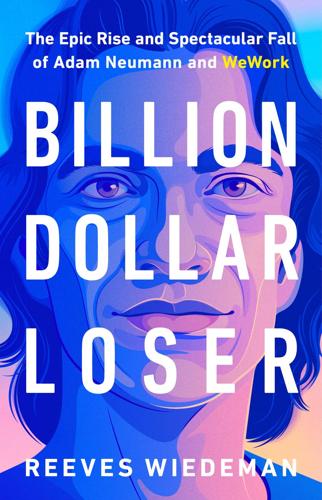
Billion Dollar Loser: The Epic Rise and Spectacular Fall of Adam Neumann and WeWork
by
Reeves Wiedeman
Published 19 Oct 2020
Masa and Adam talked up the idea of a “virtual membership,” whereby people would join the WeWork community without renting a desk. At TechCrunch Disrupt in 2017, Adam crowed about the launch of WeWork’s Services Store, which promised again to turn the company into a middleman hawking everything from Salesforce software to Lyft discounts. None of these avenues proved fruitful. By the end of 2017, services made up just 5 percent of WeWork’s revenue. As for the virtual membership, it wasn’t clear what benefit members would receive, or how WeWork would make money from them. The network still had fewer users than English, baby!
…
Now was the time to go, Artie and others argued. WeWork would need a fresh infusion of capital sometime in the next year to fund its growth, and the markets were on the rise after the late-2018 dip that helped scuttle Fortitude. A bumper crop of other companies that had also spent the decade gulping from the venture capital fire hose—Uber, Lyft, Slack, Beyond Meat—were all going public. Zoom, the videoconferencing software provider, had just listed its shares, which shot up 72 percent on their first day of trading. WeWork didn’t want to miss its moment, and Artie wanted to make sure to get ahead of any leaks, so WeWork could make the case that it was going public at a moment of strength, not desperation.
…
* * * THE WORLD WAS SHOCKED by WeWork’s losses and Wingspan’s eccentricity, but much of the criticism centered on the Neumanns themselves. It was impossible to divorce WeWork from the Neumanns’ influence over it. Slack’s CEO, Stewart Butterfield, was mentioned forty-seven times in his company’s S-1, and Lyft’s two cofounders were cited fifty-five times combined. Adam’s name alone appeared 169 times. (Rebekah was named twenty times, while Miguel got just six mentions.) The company had paid more than $20 million in rent on four buildings that Adam owned, and its leases on those buildings called for $236 million in future payments.

Right of Way: Race, Class, and the Silent Epidemic of Pedestrian Deaths in America
by
Angie Schmitt
Published 26 Aug 2020
Eric Newcomer, “Uber Revenue Slows as Quarterly Loss Surges to $1.1 Billion,” Bloomberg Technology, November 14, 2018, https://www.bloomberg.com/news/articles/2018-11-14/uber-revenue-slows-as-quarterly-loss-surges-to-1-1-billion. 18. Graham Rapier, “Uber and Lyft Are Betting on Self-Driving Cars to Become Profitable. But That May Not Happen, New Research from MIT Suggests,” Business Insider, May 29, 2019, https://www.businessinsider.com/uber-lyft-self-driving-taxis-may-not-help-profitability-mit-2019-5. 19. Dan Albert, telephone interview, October 22, 2019. 20. National Transportation Safety Board, “Preliminary Report Released for Crash Involving Pedestrian, Uber Technologies, Inc., Test Vehicle,” press release, May 24, 2018, https://www.ntsb.gov/news/press-releases/Pages/NR20180524.aspx. 21.
…
Nevertheless, it is clear that walking around intoxicated affects judgment, increasing the risk of getting killed by a car or truck. The question is, what is the appropriate response? Many media and institutional actors have defaulted to treating drunk walking like drunk driving—basically finger wagging. In truth, intoxicated people who resort to walking may lack good alternatives. They can call an Uber or Lyft—if they can afford it. They can also avoid traveling, but that might not always be safe or practical. People might simply be encouraged to moderate their drinking overall. In some countries with much better safety records, like Sweden, alcohol sales are much more tightly controlled, and drinking is more socially discouraged.
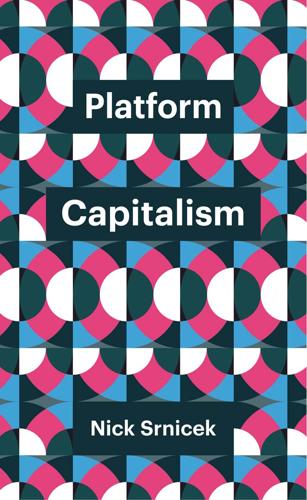
Platform Capitalism
by
Nick Srnicek
Published 22 Dec 2016
As a result, Airbnb, Slack, Uber, and many other start-ups use AWS.79 Uber further relies on Google for mapping, Twilio for texting, SendGrid for emailing, and Braintree for payments: it is a lean platform built on other platforms. These companies have also offloaded costs from their balance sheets and shifted them to their workers: things like investment costs (accommodations for Airbnb, vehicles for Uber and Lyft), maintenance costs, insurance costs, and depreciation costs. Firms such as Instacart (which delivers groceries) have also outsourced delivery costs to food suppliers (e.g. Pepsi) and to retailers (e.g. Whole Foods) in return for advertising space.80 However, even with this support, Instacart remains unprofitable on 60 per cent of its business, and that is before the rather large costs of office space or the salaries of its core team are taken into account.81 The lack of profitability has led to the predictable measure of cutting back on wages – a notably widespread phenomenon among lean platforms.
…
The convergence thesis helps explain why Google is lobbying with Uber on self-driving cars and why Amazon and Microsoft have been discussing partnerships with German automakers on the cloud platform required by self-driving cars.28 Alibaba and Apple have made major investments in Didi, Apple’s partnership being particularly strategic, given that iPhones are the major interface to taxi services. And nearly all of the major platforms are working to develop medical data platforms. The trend to convergence is igniting international competition as well: intense struggles occur in India and China over who will dominate the ride-sharing industry (Uber, Didi, Lyft) and who will dominate e-commerce (Amazon, Alibaba, Flipkart). Alibaba is already the largest e-commerce site in the world as measured by the volume of its sales,29 and Flipkart is valued at around $15 billion. Under the pressures of competition and the subsequent imperative to expand, we should expect these platforms to acquire as many companies as they need.
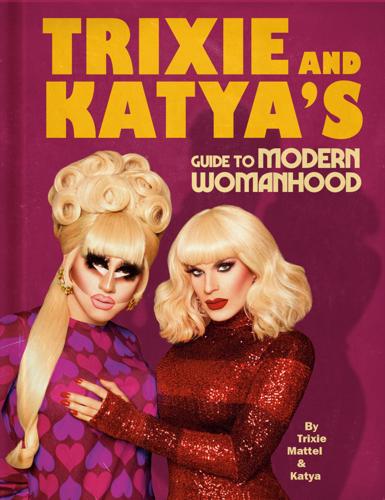
Trixie and Katya's Guide to Modern Womanhood
by
Trixie Mattel
and
Katya
Published 15 Nov 2020
Then you can floor everyone by solving a Rubik’s Cube at a holiday party and be like, “What?” BEAUTY As long as I’ve been alive, I have known I was gorgeous. The longing glances from adult strangers, the catty remarks from peers, the sexual advances from Uber drivers. Using vocabulary from my Friday afternoon Lyft trip with Mohammad, I am what you would consider “five stars.” However, beauty is entirely in the eye of the beholder. For example: A Trixie Mattel show was reviewed in Newcastle. Let’s call the reviewer Kate because that’s her name. Kate described me as someone who “revels in the repulsion she exudes.”
…
The speed, the danger, the wind in my nonexistent hair! My bike cost me two hundred fifty dollars—think about it. An Uber in LA is at least ten bucks (See the chapter titled “Travel”), so twenty-five bike rides later I got me a FREE BIKE. People are always confused when they see me walk in with a helmet in tow. “Did you bike here?” No, bitch, I took a Lyft but I’m just cautious and prone to seizures. DUH. I am always asked then, “Do you need a ride?” No, bitch, I have my bike, WHICH IS A RIDE. And, girl—invest in a bike lock. And lock it around the front tire. I recently had my front tire stolen at a Target while I was inside picking up a few Barbies.
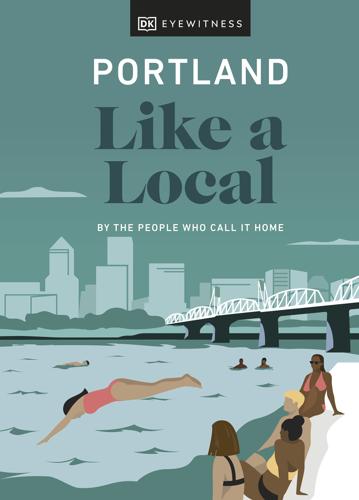
Portland Like a Local
by
DK
If you’re riding more frequently, download a Hop Card, which can be preloaded with funds or linked to cell phone payment apps. Tickets cover all three forms of transportation. https://myhopcard.com By car or taxi Between walking, cycling, and public transportation, there’s no real need to travel by car in town. For longer jaunts, rideshares like Uber and Lyft are available. Cabs are less common, but if that’s more your style, Radio Cab is a good option. Order cabs by phone or online. If you do drive, be aware that the narrow streets in the inner part of the city are tricky to navigate and parking can be difficult. Download these We recommend you download these apps to help you get about the city.
…
Simply download the free what3words app, type a what3words address into the search bar, and you’ll know exactly where to go. TRANSIT All-purpose transit app This multi-purpose transportation app provides bus and MAX times, routes, and trip planning, as well as options for rideshares like Uber and Lyft. It can also show you where to find BikeTown stations. Even better, it’s straightforward and easy to use, making navigating the city a complete breeze. g Contents Portland NEIGHBORHOODS Portland is a mosaic of overlapping neighborhoods, which nevertheless have their own character and community.

Economic Dignity
by
Gene Sperling
Published 14 Sep 2020
As UberX was launching in 2012, of the nearly two million in-home workers like housekeepers, childcare workers, and direct-care aides—overwhelmingly women and a majority people of color—only 12 percent received health insurance from their job, and only 7 percent received a pension plan.14 According to a survey by the National Domestic Workers Alliance, fewer than 2 percent of domestic workers in 2011 received retirement or pension benefits from their primary employer, and only 4 percent received employer-provided health insurance; 65 percent of domestic workers did not have any health insurance.15 Even today, few realize that before the ride-sharing revolution, the taxi drivers that people used for generations rarely had health-care coverage or qualified for unemployment insurance or any help during downturns and recessions.16 For example, a 2007 study of New York City cabdrivers found they were generally classified as independent contractors—just as Uber and Lyft drivers are now—and did not qualify for overtime pay despite typically working more than seventy hours a week. A large majority lacked health insurance, despite substantial risk of on-the-job injuries.17 These facts may not have been easily captured in traditional job growth statistics or GDP measurements, but they mattered to people’s lives.
…
Not only was she denied maternity leave, but the next day she was fired, and because she was not an employee, she did not have access to unemployment insurance.8 With so much riding on whether you receive a W-2 or a 1099, unions and worker advocates are correct to make the fight over misclassification a top-tier economic battle and insist that millions of gig workers—including most Uber and Lyft drivers—should be classified as employees, as they successfully did in a hard-fought 2019 legislative battle in California.9 This is the right fight under our current structure. Too many workers today get the worst of all worlds. They have neither the true autonomy and flexibility of being their own boss nor the economic benefits and security of being a W-2 employee where at a minimum their employer pays its half of Social Security and Medicare payroll taxes and ensures they are part of the unemployment insurance system.
…
INDEPENDENT CONTRACTORS In 1914, the Lehigh Valley Coal Company claimed that it was “not in the business of coal mining at all” but merely gave miners access to its mines and then bought coal from those miners. Lehigh argued that these miners were not employees and accordingly were not covered by the workers’ compensation statute at issue. Judge Learned Hand rejected this argument as “absurd,” since these miners “carr[y] on the company’s only business” of owning mines and selling coal.49 Lyft, Uber, and FedEx drivers likely would use Hand’s “absurd” language to describe the denial of their status as “employees.” In our modern economy, gig workers and independent contractors are a large and growing group. However, many have not been able to achieve economic security. In response, workers have organized strikes and protests overcoming challenges inherent in organizing these groups.

The Rise and Fall of the Neoliberal Order: America and the World in the Free Market Era
by
Gary Gerstle
Published 14 Oct 2022
Tammy Kim, “The Gig Economy Is Coming for Your Job,” New York Times, January 10, 2020, https://www.nytimes.com/2020/01/10/opinion/sunday/gig-economy-unemployment-automation.html, accessed September 8, 2021; Aarian Marshall, “With $200 Million, Uber and Lyft Write Their Own Labor Law,” Wired, April 11, 2020, https://www.wired.com/story/200-million-uber-lyft-write-own-labor-law/, accessed September 8, 2021. For the origins of Uber and Airbnb specifically, see Brad Stone, The Upstarts: Uber, Airbnb and the Battle for the New Silicon Valley (London: Corgi, 2018); Leigh Gallagher, The Airbnb Story: How to Disrupt an Industry, Make Billions of Dollars . . . and Plenty of Enemies (London: Virgin Books, 2018); Mike Isaac, Super Pumped: The Battle for Uber (New York: W.
…
Cultivating “entrepreneurs” of the self has long been a cardinal feature of the neoliberal order, and it shows no sign of waning. This principle has manifested itself in Silicon Valley entrepreneurs and Wall Street hedge fund managers fashioning themselves into “masters of the universe”; in hundreds of thousands of automobile owners responding to Uber’s and Lyft’s invitation to become “entrepreneurs” in their own right by gaining the “freedom to choose” when and for how long they would drive their private cars as taxis; in “analytics” movements in baseball and other sports seeking to sculpt athletes’ performance through a far more systematic study of human inputs and outputs than had ever been attempted before; and in the obsession of millions of individuals with constantly measuring steps walked, miles run, calories consumed, and energy expended.
…
Morgan Chase, 218 Jackson, Andrew, 265 Japanese manufacturers, 58–59, 62 Jim Crow, 27, 48–50, 51–53, 79, 95 Jobs, Steve, 8–9, 103–4 John Birch Society, 109 Johnson, Lyndon B., 42, 43–44, 53, 54–56, 113, 287 Jones, Paula, 186–87 Justice Democrats, 278–79 Kahn, Alfred, 32 Kelton, Stephanie, 284 Kennedy, Anthony, 125 Kennedy, John F., 52–53, 119–20, 152–53, 171 Kennedy, Ted, 138–39 Kershaw, Ian, 141 Kesey, Ken, 103–4 Keynes, John Maynard, 22–23 Keynesianism, 22–23, 36–37, 44–46, 53–54, 68–69, 109–10 Keyworth, George, 160–61, 162–63 Khan, Lina, 284 Khrushchev, Nikita, 44–45, 69 King, Martin Luther, Jr., 52–53 Kingsley, Michael, 180–81 Kissinger, Henry, 198 Kitchen Debate, 44–45 Kitman, Marvin, 168–69 Klein, Naomi, 201, 254–55 Koch, Charles, 109, 114, 240–41, 250–51, 270 Koch, Fred, 109, 114, 240–41, 250–51, 270 Koch Industries, 114 Koestler, Arthur, 35–36 Kohl, Helmut, 177–78 Korean War, 37 Kristol, Irving, 2, 132–34 Krugman, Paul, 25 labor law, 45, 68, 110 labor unions, 26–27, 33, 37, 81–82, 109–10, 112, 135, 174–75, 179, 211, 235. see also organized labor and trade unions laissez-faire politics, 21, 23, 38–39, 82–83 Lasn, Kalle, 251–52 Latin America, 9–10, 29, 259 Lazarsfeld, Paul, 41 Left and Right: A Journal of Libertarian Thought, 102–3 Left revival, 251–55, 260–65, 278–79 Lehman Brothers, 218–20 Lekachman, Robert, 135–37 Lenin, Vladimir, 30–31 Levin, Gerald (Gerry), 169, 171 Lewinsky, Monica, 186–87 liberal democracy, 147–48, 277 Liberal Party (Britain), 78, 80–81 Liberalism (Hobhouse), 80–81 Limbaugh, Rush, 127–28 Lippmann, Walter, 77–78, 80, 85–89, 185 Little Rock (Arkansas) School Crisis, 50–51 Locked in the Cabinet (Reich), 179 The Lonely Crowd (Reisman), 95–96 Lonely Planet Guide Book, 202 Lyft, 292–93 MacDonald, Laquan, 262–63 Make American Great Again (MAGA), 248–49, 288–89, 290 Manchin, Joe, 287–88 Manhattan Institute, 109 Mao Tse-tung, 37 March on Washington (1963), 50–51 market freedom, 8, 13, 76–77, 107–8, 125, 132, 155, 160, 161, 177, 186, 207 market libertarianism, 162–63 Marshall, George, 36–37 Marshall Plan, 28, 36–37 Martin, Trayvon, 262–63 Marx, Karl, 167–68 mass incarceration, 8, 130–32, 184, 185–86, 235–37, 264, 290 McCain, John, 222 McCarthy, Joseph, 37 McConnell, Mitch, 270–71 McGovern, George, 154–55 McKinley, William, 82–83 McMahon, Vince, 247 media industry consolidation, 172 Meese, Edwin, 123–24 Merrill Lynch, 218–19 Microsoft, 279 Migue, Jean-Luc, 91–92 Mill, John Stuart, 78 Mills, C.
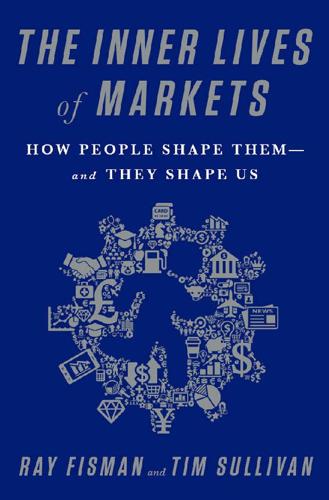
The Inner Lives of Markets: How People Shape Them—And They Shape Us
by
Tim Sullivan
Published 6 Jun 2016
There need not be only two sides: Google’s Android is a meeting point for makers of smart phones like LG and Samsung, app designers, and consumers. The business networking service LinkedIn similarly brings together corporate recruiters, job hunters or employees, and advertisers. The list goes on, including some of the recent “sharing economy” companies that have gotten so much attention: Uber, Lyft, Airbnb, Postmates, and many other online marketplaces. The market maker faces a delicate balancing act in satisfying the needs and wants of each side. And indeed a platform isn’t much good unless all sides agree to participate. Just as no one would visit a supermarket that stocked only a limited supply of cornflakes, eBay wouldn’t get many visitors if the only items for bid were a couple of old Pez dispensers.
…
They’re the strategies Uber and every other business employs to try to keep customers from choosing freely among competing options in the marketplace, whether by driving competitors out of business or finding ways of keeping customers from shopping around. Sometimes, as we’ve learned from Uber in recent years, it can be a dirty business. They’ve been accused of misleading drivers on expected earnings (an information friction in the labor market) and calling then canceling rides from competing service Lyft (a friction in the market for rides), among other underhanded methods. So yes, you want to build that game-changing app. But to get your $60 billion valuation, you need to create as many frictions as possible for everyone else. Although proponents of the sharing economy tout its ability to reduce market frictions, the only way they’re going to make the kinds of profits they (and their investors) want is to create new ones.
…
See mathematics models, 15, 24–29 of platforms, 107–112 reality-based, 35–37, 45, 49–51, 141 traditional, 110, 133 See also lemon markets theory; markets; platforms Edelman, Ben, 123–124 efficiency optimization, 85–86 eighteenth-century book markets, 90–91 Eisenstein, Don, 154 Elfenbein, Daniel, 73–75 empirical economics, 45 English auctions, 83, 100 equilibrium, existence of, 29, 31–34, 36–37, 40, 45, 76 Euler’s buckling equation, 141 exploding offers, 140 Federal Communications Commission (FCC), 102–103 feedback ratings, customer, 52, 74–75 Feeding America, 154 Findlay, Ronald, 85 first-price (live) auction, 84 first-price sealed-bid auction, 86–87, 99–100 Fisman, Ray Airbnb experience, 171–172 lesson on selling lemons, 59 study on eBay seller motivation for giving to charities, 73 fixed prices, auction versus, 96–97 food bank market system, 154–160 Foundations of Economic Analysis (Samuelson), 28 Fourcade, Marion, 20 fraternity rush, 140 free markets See markets frictions, market, 169–174 “Friday Car,” 46 Friedman, Milton, 72, 151 fundamental attribution error, 178 fundamentalists, market, 16–17 Future Shop (Snider and Ziporyn), 42 Gale, David, 136, 137–138 Gambetta, Diego, 68 game theory, 25–27, 136, 178–179 gang markings as signals, 61–62, 67–68 general equilibrium model, 31–34, 36–37, 40, 76 German POW camps, marketplaces at, 7–10, 13 Giving Works program (eBay for Charity), 73–75 global thermonuclear war, game of, 26 Goethe, Johann Wolfgang von, 89–92, 101 greed, in platforms, 128–129 Groves, Theodore, 93 guarantees, money-back, 69–71 Hall, Robert, 94 Hayek, Friedrich, 13 health markets, lemon problems and, 58–59 Healy, Kieran, 20 Heilbroner, Robert, 20, 21 Henry, John, 80–81, 87–89 Hermann and Dorothea (Goethe) royalties, 90–92, 101 Hernandez, Frances, 61–62 Herodotus, 81 Hicks, John, 34 hierarchy in POW camps, survival rates and, 10–13 Holderness, Clifford, 11–12 home contractors, 119–120 Hoshijima Susumu, 10–11 hotel lobbies, Airbnb vs., 172 Hoteling, Harold, 30 house exchange algorithm, 163–164 “How to Spot Fake Tiffany Jewelry” (yvonne9903), 52–53 human capital theory, 35 income, distribution of, 22 industrial organization, 117–118 inferior good, 180 information management system, 41–42 “Inside the School Assignment Maze” (article), 146 insights, market, 14–15 internet commerce, 41–43 lifestyle changes with creation of, 2–3 scams, 52–55 See also auctions invisible hand metaphor, 21, 33, 182 Japanese POW camps, 10–13, 175–177 Kakutani, Shizuo, 32 Das Kapital (Marx), 23 Keynes, John Maynard, 49–50 “Kidney Exchange” (Roth et al.), 164–165 kidneys sales, 160–161 transplant exchange algorithm, 162–166 King Rat (Clavell), 175–177 Klein, Joel, 143–144 labor markets, 48, 64–66 labor theory of value, 23 ladies night at bars, 123 laundry service platform, 112 lemon markets theory, 44–51, 58–59, 64, 112 “Let Them Eat Pollution” (article), 167 life insurance, 1840s, 153 Lincoln Elementary, 1–2 Little, I. M. D., 22 Liu, Qihong, 128–129 Lyft car service, 173 MAD (doctrine of nuclear deterrence by mutually assured destruction), 26 mail-in-bids, for auctions, 83–84 “The Market for Lemons” (Akerlof), 44–51, 64 market frictions, 169–174 market fundamentalists, 16–17 market insights, 14–15 market makers, 107–110, 118–121 markets 18th-century book, 90–91 competitive, 35, 124–126, 172–174, 180–181 design, 133, 137–142 dysfunction of, 36, 75–77, 143 economics of platform, 107–112 equilibrium, 33 fixed-price versus auctions, 96–97 food bank system, 154–160 image problem of, 152–153 labor, 48, 64–66 lemon, 44–51, 58–59, 64, 112 multisided, 108–112, 118–124 one-sided, 108–112 in POW camps, 4, 7–13, 175–177 rules for platform, 112–117 school choice in Sweden, 151–152 selfishness in, 177–179 technology and, 169–173 trade with uninformed parties, 166–169 transformation of, 13–17 two-sided, 108–112, 118–124 See also auctions; economics; platforms Marx, Karl, 20, 23 matching problems middle school dance partners, 131–132, 134, 137–140 student to school, 138–139, 141–142, 143–149 mathematics algebraic topology, 44–45 economic theory transformed by, 15, 19–27 game theory, 136 general equilibrium model, 29, 31–34, 36–37, 40, 45, 76 kidney exchange algorithm, 163–165 models, 20, 24–25, 30 in real world economics, 35–37 Samuelson connecting economics and, 28–29 Shapley-Gale algorithm, 137–140 Matsuzaka, Daisuke, 79–81, 87–89 Maxwell, James Clark, 24 McManus, Brian, 73–75 mechanism design, 133, 134 medical residency programs, 140 merchant from Prato, 105–107 middle school dance-matching, 131–132, 134, 137–140 Milgrom, Paul, 70–71, 98, 102–103 mobile market platform, 116 modeling applied theory, 45, 50, 75–76 competition, 35, 166, 172–173 congestion pricing, 86, 94 dysfunction of, 75–77 economic, 15, 24–29 mathematical, 20, 24–25, 30 reality-based economic, 35–37, 45, 49–51, 141 models auction, 82–84 eBay, 43, 46, 48 general equilibrium, 31–34, 36–37, 40, 76 lemons, 44–51, 58–59, 64, 112 Solow, 35 See also platforms; signaling model Moldovanu, Benny, 90–91 money burning costs, 70–71 money-back guarantees, 69–71 Morals & Markets: The Development of Life Insurance in the United States (Zelizer), 153 Morgenstern, Oskar, 25–27 mortality rates, of Japanese vs German POW camps, 10–13 MS-13 gang, 67 multisided markets, 108–112, 118–124 multisided platform, 14 multiunit Vickrey auction, 93 Murphy, Frank, 9 Nasar, Sylvia, 29 Nash, John, 32 National Archives’ World War II Prisoners of War Data File, 11 network externalities, 121–124 New England Program for Kidney Exchange, 164–165 New York Department of Education, 143–144, 145, 149 Nobel Prize in Economics, 34 See also Sveriges Riksbank Prize in Economic Sciences in Memory of Alfred Nobel noncustomers, paying, 123–124 Nordstrom’s return policy, 69–70 no-risk money-back guarantees, 69–71 normal good, 180 no-trade rule, Japanese POW camps, 10–13 nuclear deterrence, 26 Omidyar, Pierre, 39–40 one-sided markets, 108–112 online retail, 41–43, 52–55 optimized efficiency, 85–86, 133 organ sales, 160–161 organizations, sick, 142–143 out-of-town bids, for auctions, 83–84 Pareto, Vilfredo, 20, 21–22 Pareto efficiency, 22 Penny Black stamp, 82–84 Percy P.
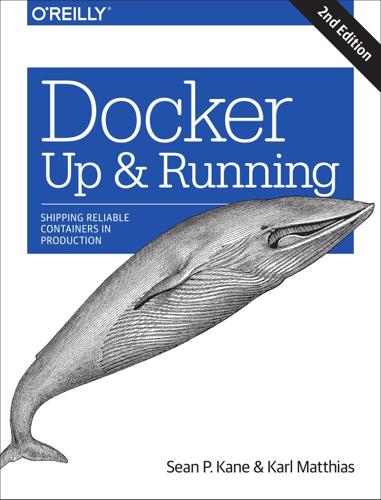
Docker: Up & Running: Shipping Reliable Containers in Production
by
Sean P. Kane
and
Karl Matthias
Published 15 Mar 2018
Often the best initial system (though not necessarily longer-term) is a system where you present dynamically con‐ figured load balancers that are easily reachable by systems in your older environment. Examples of this include: • The Mesos backend for the Traefik load balancer • Nixy for nginx and Mesos • Kubernetes’s ingress controllers • Standalone Sidecar service discovery with Lyft’s Envoy proxy • Istio and Lyft’s Envoy If you are running a blended modern and traditional system, getting traffic into the newer containerized system is generally the harder problem to solve and the one you should think through first. Production Wrap-Up Many people will start by using simple Docker orchestration tools.
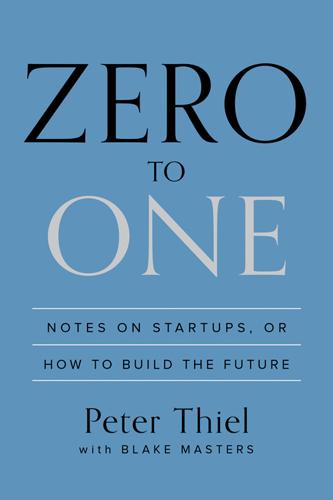
Zero to One: Notes on Startups, or How to Build the Future
by
Peter Thiel
and
Blake Masters
Published 15 Sep 2014
Consider the Silicon Valley startups that have harnessed the spare capacity that is all around us but often ignored. Before Airbnb, travelers had little choice but to pay high prices for a hotel room, and property owners couldn’t easily and reliably rent out their unoccupied space. Airbnb saw untapped supply and unaddressed demand where others saw nothing at all. The same is true of private car services Lyft and Uber. Few people imagined that it was possible to build a billion-dollar business by simply connecting people who want to go places with people willing to drive them there. We already had state-licensed taxicabs and private limousines; only by believing in and looking for secrets could you see beyond the convention to an opportunity hidden in plain sight.
…
Kaczynski, Ted Karim, Jawed Karp, Alex, 11.1, 12.1 Kasparov, Garry Katrina, Hurricane Kennedy, Anthony Kesey, Ken Kessler, Andy Kurzweil, Ray last mover, 11.1, 13.1 last mover advantage lean startup, 2.1, 6.1, 6.2 Levchin, Max, 4.1, 10.1, 12.1, 14.1 Levie, Aaron lifespan life tables LinkedIn, 5.1, 10.1, 12.1 Loiseau, Bernard Long-Term Capital Management (LTCM) Lord of the Rings (Tolkien) luck, 6.1, 6.2, 6.3, 6.4 Lucretius Lyft MacBook machine learning Madison, James Madrigal, Alexis Manhattan Project Manson, Charles manufacturing marginal cost marketing Marx, Karl, 4.1, 6.1, 6.2, 6.3 Masters, Blake, prf.1, 11.1 Mayer, Marissa Medicare Mercedes-Benz MiaSolé, 13.1, 13.2 Michelin Microsoft, 3.1, 3.2, 3.3, 4.1, 5.1, 14.1 mobile computing mobile credit card readers Mogadishu monopoly, monopolies, 3.1, 3.2, 3.3, 5.1, 7.1, 8.1 building of characteristics of in cleantech creative dynamism of new lies of profits of progress and sales and of Tesla Morrison, Jim Mosaic browser music recording industry Musk, Elon, 4.1, 6.1, 11.1, 13.1, 13.2, 13.3 Napster, 5.1, 14.1 NASA, 6.1, 11.1 NASDAQ, 2.1, 13.1 National Security Agency (NSA) natural gas natural secrets Navigator browser Netflix Netscape NetSecure network effects, 5.1, 5.2 New Economy, 2.1, 2.2 New York Times, 13.1, 14.1 New York Times Nietzsche, Friedrich Nokia nonprofits, 13.1, 13.2 Nosek, Luke, 9.1, 14.1 Nozick, Robert nutrition Oedipus, 14.1, 14.2 OfficeJet OmniBook online pet store market Oracle Outliers (Gladwell) ownership Packard, Dave Page, Larry Palantir, prf.1, 7.1, 10.1, 11.1, 12.1 PalmPilots, 2.1, 5.1, 11.1 Pan, Yu Panama Canal Pareto, Vilfredo Pareto principle Parker, Sean, 5.1, 14.1 Part-time employees patents path dependence PayPal, prf.1, 2.1, 3.1, 4.1, 4.2, 4.3, 5.1, 5.2, 5.3, 8.1, 9.1, 9.2, 10.1, 10.2, 10.3, 10.4, 11.1, 11.2, 12.1, 12.2, 14.1 founders of, 14.1 future cash flows of investors in “PayPal Mafia” PCs Pearce, Dave penicillin perfect competition, 3.1, 3.2 equilibrium of Perkins, Tom perk war Perot, Ross, 2.1, 12.1, 12.2 pessimism Petopia.com Pets.com, 4.1, 4.2 PetStore.com pharmaceutical companies philanthropy philosophy, indefinite physics planning, 2.1, 6.1, 6.2 progress without Plato politics, 6.1, 11.1 indefinite polling pollsters pollution portfolio, diversified possession power law, 7.1, 7.2, 7.3 of distribution of venture capital Power Sellers (eBay) Presley, Elvis Priceline.com Prince Procter & Gamble profits, 2.1, 3.1, 3.2, 3.3 progress, 6.1, 6.2 future of without planning proprietary technology, 5.1, 5.2, 13.1 public opinion public relations Pythagoras Q-Cells Rand, Ayn Rawls, John, 6.1, 6.2 Reber, John recession, of mid-1990 recruiting, 10.1, 12.1 recurrent collapse, bm1.1, bm1.2 renewable energy industrial index research and development resources, 12.1, bm1.1 restaurants, 3.1, 3.2, 5.1 risk risk aversion Romeo and Juliet (Shakespeare) Romulus and Remus Roosevelt, Theodore Royal Society Russia Sacks, David sales, 2.1, 11.1, 13.1 complex as hidden to non-customers personal Sandberg, Sheryl San Francisco Bay Area savings scale, economies of Scalia, Antonin scaling up scapegoats Schmidt, Eric search engines, prf.1, 3.1, 5.1 secrets, 8.1, 13.1 about people case for finding of looking for using self-driving cars service businesses service economy Shakespeare, William, 4.1, 7.1 Shark Tank Sharma, Suvi Shatner, William Siebel, Tom Siebel Systems Silicon Valley, 1.1, 2.1, 2.2, 2.3, 5.1, 5.2, 6.1, 7.1, 10.1, 11.1 Silver, Nate Simmons, Russel, 10.1, 14.1 singularity smartphones, 1.1, 12.1 social entrepreneurship Social Network, The social networks, prf.1, 5.1 Social Security software engineers software startups, 5.1, 6.1 solar energy, 13.1, 13.2, 13.3, 13.4 Solaria Solyndra, 13.1, 13.2, 13.3, 13.4, 13.5 South Korea space shuttle SpaceX, prf.1, 10.1, 11.1 Spears, Britney SpectraWatt, 13.1, 13.2 Spencer, Herbert, 6.1, 6.2 Square, 4.1, 6.1 Stanford Sleep Clinic startups, prf.1, 1.1, 5.1, 6.1, 6.2, 7.1 assigning responsibilities in cash flow at as cults disruption by during dot-com mania economies of scale and foundations of founder’s paradox in lessons of dot-com mania for power law in public relations in sales and staff of target market for uniform of venture capital and steam engine Stoppelman, Jeremy string theory strong AI substitution, complementarity vs.

Exponential Organizations: Why New Organizations Are Ten Times Better, Faster, and Cheaper Than Yours (And What to Do About It)
by
Salim Ismail
and
Yuri van Geest
Published 17 Oct 2014
“Unlike digital marketing, where ROI is sustained almost as soon as spending happens, communities are a long-term investment that is significantly more strategic,” says social business thought leader Dion Hinchcliffe. “Additionally, communities with CxO participation are far more likely to be best-in-class.” Create a platform to automate peer-to-peer engagement. GitHub, for example, has its members rate and review other members’ code. Airbnb hosts and users fill out evaluation forms; taxi disrupters Uber, Lyft and Sidecar encourage clients and drivers to rate one another; and the news platform Reddit invites users to vote on stories. In 2013, Reddit, which has just fifty-one employees, most of whom manage the platform, saw 731 million unique visitors cast 6.7 billion votes on 41 million stories. Talk about a platform…(More on this later.)
…
As with Staff on Demand, ExOs retain their flexibility precisely by not owning assets, even in strategic areas. This practice optimizes flexibility and allows the enterprise to scale incredibly quickly as it obviates the need for staff to manage those assets. Just as Waze piggybacked off its users’ smartphones, Uber, Lyft, BlaBlaCar and Sidecar leverage under-utilized cars. (If you own a car, it sits empty about 93 percent of the time.) The latest wave of non-asset businesses is something called Collaborative Consumption, a concept evangelized by Rachel Botsman and Roo Rogers in their book, What’s Mine is Yours: The Rise of Collaborative Consumption.
…
* ( ) We use standard techniques like PR to increase awareness ( ) We leverage social media for marketing purposes ( ) We use gamification and incentive competitions to turn crowd into community ( ) Our products and services are inherently designed to convert crowd into Community (e.g. shareable memes like the Lyft mustache or Hotmail signature) 7) To what extent do you use Gamification or Incentive Competitions?* ( ) We use gamification/incentive competitions for internal motivation only (e.g. salesperson of the month) ( ) We use basic gamification externally (e.g. loyalty programs, frequent flyer programs) ( ) We build gamification/incentive competitions into our products and services (e.g.

The Autonomous Revolution: Reclaiming the Future We’ve Sold to Machines
by
William Davidow
and
Michael Malone
Published 18 Feb 2020
The sharing economy will have great impact in areas where expensive, privately owned assets are underutilized. Automobiles are one such asset. Privately owned automobiles spend as much as 95 percent of their time parked.42 That means the average car is driven approximately nine hours a week. A number of sharing services have emerged with a goal of monetizing those idle hours. Uber and Lyft are already household names. The twentieth-century relic Zipcar is now owned by Avis.43 New aspirants keep emerging. Getaround allows neighbors to rent cars from other neighbors by the hour, while a competing service, Turo, focuses on longer-term rentals.44 Turo’s website claims that owners can cover their monthly car payments by renting their cars for as few as nine days a month.
…
The most advanced cars can drive themselves onto freeways, requiring help from their drivers only when they get into difficult situations. Meanwhile, broadband communications and social networking have made ride and car sharing and other new transportation paradigms more efficient. Suddenly the full-time jobs of 250,000 U.S. taxi and chauffeur drivers are at risk of being taken away by 400,000 mostly part-time drivers for Uber, Lyft, and other services.20 Cab companies are already having a difficult time competing. That’s not surprising: cab fares in Los Angeles are $2.70 per mile, while Uber charges about $1.00.21 The oversupply of Uber drivers drives down the price of the service and the value of the work done by drivers. There are other economic impacts as well.
…
See also governance rules and systems leadership, 7, 189, 190, 194 legal system and services, 104, 114 Lending Club, 80, 81 Lenoir, Étienne, 53 Leviathan (Hobbes), 161, 169 liberty, threats to: action necessary to combat, 180, 190, 193, 194 in China, 115 data collection factors and evolution in, 13, 116–117, 123–128 historical protections for, 113–114 Libra, 10 life expectancy, 166 Lyft, 84, 100 Madison, James, 113–114 management systems. See business models; governance rules and systems manufacturing industry, xii, 33–34, 53 Marxist philosophy, 31 massively multiplayer online role-playing games (MMORPGs), 16–17, 137 Maybach, Wilhelm, 53 McNamee, Roger, 149 media industry: business model shifts in, 9–10, 72–73 customers becoming products in, 120–123 music, 72–73, 87 physical to virtual transformations in, 9–10, 11, 50, 65, 73, 98–99 printing press in origins of mass, 28 substitutional equivalence’s impact on job market, 72–73, 98–99.

Lab Rats: How Silicon Valley Made Work Miserable for the Rest of Us
by
Dan Lyons
Published 22 Oct 2018
A few hours earlier Schifter had posted a long essay on Facebook explaining his reasons. He said that he had once made a good living driving a limo in New York, earning enough to buy a house outside the city, in the Poconos. But then came the onslaught of new drivers working for services like Uber and Lyft, and rates plummeted for everyone, so low that nobody could make a living as a driver anymore. Schifter was putting in seventeen-hour days, sometimes earning as little as $4 an hour. He fell into debt. He missed a mortgage payment and was in danger of losing his home. “I have been financially ruined,” he wrote.
…
I would rather be dead.” Silicon Valley promotes the gig economy as an innovative new industry that is creating jobs for millions of people. But the jobs being created are mostly bad ones. Meanwhile, gig-economy companies threaten established industries. Airbnb steals business from hotels. Uber and Lyft have hurt business at car-rental companies like Hertz and Avis, and have utterly decimated the taxi and livery business. Pundits like to talk about “creative destruction” as if it were an abstract concept, but the sight of a driver parked in front of City Hall with his head blown off served as a reminder that all this change and so-called progress is coming at a very high cost to actual human beings.
…
Tesla, Spotify, Dropbox, Box, Snap, Square, Workday, Cloudera, Okta, Blue Apron, Roku, MongoDB, Redfin, Yext, Forescout, Docusign, Smartsheet—they’re all publicly traded, and they all lose money, and in some cases a lot of it, sometimes for years and years, long after they go public. Other unicorns like Uber, Lyft, Airbnb, Slack, Pinterest, WeWork, Vice Media, Magic Leap, Bloom Energy, and Postmates remain privately held, but reportedly don’t turn a profit. As I write this, a tech start-up called Domo is attempting to offer shares to the public even though the company lost $360 million over the past two years, on sales of just $183 million, meaning Domo loses two dollars for every dollar it took in.

The Innovation Illusion: How So Little Is Created by So Many Working So Hard
by
Fredrik Erixon
and
Bjorn Weigel
Published 3 Oct 2016
Other taxi firms and the trade unions had been attacking Uber cars and in early 2015 a court in Frankfurt ruled to ban UberPop, threatening it with a fine of up to €250,000 if the law is violated.7 Other German city authorities have followed Frankfurt’s lead, and countries like Italy, Spain, and the Netherlands have also banned the peer-to-peer service, all citing violations of commercial licenses as reason to expel Uber from the market. In Johannesburg, São Paolo, New York, and other metropolitan cities in the world, the company faces similar charges. New York Mayor Bill de Blasio tried to rehash an old regulation, restricting the growth of car-riding services like Uber, Sidecar, and Lyft to 1 percent a year, seemingly copying the thinking behind the taxi regulation in New York that has capped the number of yellow cab medallions.8 In Miami, these companies are banned. There is a bigger story about regulation embedded in these examples. Anchored among incumbents’ existing structures, regulation all too often helps to saturate or cement markets.
…
; Cecchetti and Kharroubi, “Reassessing the Impact of Finance on Growth.” 57.Swagel, “The Financial Crisis.” 58.Cecchetti and Kharroubi, “Why Growth in Finance Is a Drag on the Real Economy.” 59.Christensen, Kaufman, and Shih, “Innovation Killers,” 1–2. 60.Piketty, Capital in the Twenty-First Century, 264–81. 4 The Rise and Rise Again of Corporate Managerialism 1.Martti, Nokia: The Inside Story. 2.Steinbock, The Nokia Revolution. 3.Ahmad, Nokia’s Smartphone Problem. 4.Kuittinen, “Nokia Sells Handset Business to Microsoft.” 5.Lomas, “Nokia’s $7.2BN Devices & Services Exit.” 6.Cheng, “It’s Official: Motorola Mobility Now Belongs to Lenovo.” 7.Bass, “Microsoft’s Concept Videos.” 8.Jenkins, “Jenkins: Only Bill Gates Can Change Microsoft.” 9.Yarow, “Here’s What Steve Ballmer Thought about the iPhone.” 10.A good survey of companies failing at exits is McGrath, The End of Competitive Advantage. 11.Steinberg, “Among the First to Fall at I.B.M.” 12.Crainer, “‘Saving Big Blue.’” 13.Clinch, “How Apple Prompted This Country’s Downgrade.” 14.Schumpeter, Capitalism, Socialism and Democracy, 132. 15.Coase, “The Nature of the Firm,” 388. 16.Oliver Williamson, who received the Nobel Prize in economics for his work on economic governance, developed the idea of firm boundaries and put the emphasis on the internal or endogenous capacity of the firm to generate output that is more competitive than the market. 17.Santos and Eisenhardt, “Organizational Boundaries and Theories of Organization,” 491. 18.Coase, “The Nature of the Firm,” 390. 19.Coase, “The Nature of the Firm,” 404–5. 20.Zenger, Felin, and Bigelow, “Theories of the Firm–Market Boundary.” 21.Tett, The Silo Effect. 22.Morieux, “How Too Many Rules at Work Keep You from Getting Things Done.” 23.See, for instance, Caliendo and Rossi-Hansberg, “The Impact of Trade on Organization and Productivity.” 24.Zhou, “Coordination Costs, Organization Structure and Firm Growth.” 25.Langlois and Everett, “Complexity, Genuine Uncertainty, and the Economics of Organization”; Joskow, “Vertical Integration.” 26.Strom, “Big Companies Pay Later.” 27.Rajan and Zingales, “The Firm as a Dedicated Hierarchy.” 28.Bhide, The Origin and Evolution of New Business, 94. 29.Rajan and Zingales, “The Firm as a Dedicated Hierarchy,” 7. 30.Teece, “Profiting from Technological Innovation.” 31.Jensen, “Agency Cost of Free Cash Flow, Corporate Finance, and Takeovers.” 32.Stein, “Agency, Information and Corporate Investment”; Matvos and Seru, “Resource Allocation within Firms.” 33.See Berger and Ofek, “Diversification’s Effect on Firm Value”; Rajan, Servaes, and Zingales, “The Cost of Diversity.” 34.Scharfstein and Stein, “The Dark Side of Internal Capital Markets.” 35.Scharfstein and Stein. “The Dark Side of Internal Capital Markets.” 36.Büthe and Mattli, The New Global Rulers. 37.Kelly, “The Majority of iPhone Users Admit to ‘Blind Loyalty.’” 38.Kelly, “The Majority of iPhone Users Admit to ‘Blind Loyalty.’” 39.Johnson, De Lyfte Landet, 21. 40.All quotes are from Galbraith, The New Industrial State, 19. 41.Morieux, “Smart Rules.” 42.Bain & Co., “Busy CEOs.” 43.Langlois and Cosgel, “Frank Knight on Risk.” 44.Decker et al., “The Role of Entrepreneurship,” 10. 45.Harvard Business Review, Harvard Business Review on Strategies for Growth, 25–6. 46.Byrne, “The Man Who Invented Management.” 47.Porter, “How Competitive Forces Shape Strategy.” 48.Stephenson, “What Causes Top Management Teams to Make Poor Strategic Decisions?”
…
Jenkins, Holman W., “Jenkins: Only Bill Gates Can Change Microsoft.” Wall Street Journal, Aug. 27, 2013. At http://www.wsj.com/articles/SB10001424127887323906804579038852114518482. Jensen, Michael C., “Agency Cost of Free Cash Flow, Corporate Finance, and Takeovers.” American Economic Review, 76.2 (1986). Johnson, Anders, De Lyfte Landet: En Berättelse om Svenska Entreprenörer. Svenskt Näringsliv, 2002. Johnson, Steve, “Gulf States Redirect SWF Cash.” Financial Times, May 20, 2012. At http://www.ft.com/intl/cms/s/0/da57657e-a016-11e1-90f3-00144feabdc0.html#axzz3ode29Nn5. Johnston, Donald J., “Globalise or Fossilise!” OECD Observer, 219 (1999): 3.
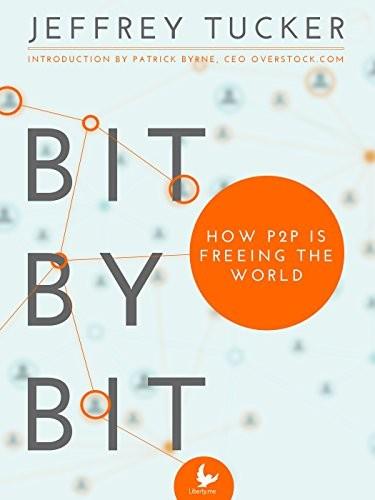
Bit by Bit: How P2P Is Freeing the World
by
Jeffrey Tucker
Published 7 Jan 2015
The smartphone, the distributed network, open-source technology, the app economy, the global spread of the Internet, the invention of value-carrying peer-to-peer transmission services, the mobilization and personalization of the online experience—all of 5 these trends and technologies have been invented, gradually emerged, or matured in the last ten years. Right now, we can experience a form of commercial relationship that was unknown just a decade ago. If you need a ride in a major city, you can pull up the smartphone app for Uber or Lyft and have a car arrive in minutes. It’s amazing to users because they get their first taste of what consumer service in taxis really feels like. It’s luxury at a reasonable price. If your sink is leaking, you can click TaskRabbit. If you need a place to stay, you can count on Airbnb. In Manhattan, you can depend on WunWun to deliver just about anything to your door, from toothpaste to a new desktop computer.
…
The opponents of markets just can’t reconcile themselves to embracing the very thing they have supposedly advocated for generations: popular empowerment. Who could possibly be against such innovations? The answer is rather obvious: entrenched economic interests who stand to lose their old-world, government-regulated, and governmentprotected monopolies. Municipal taxi services, for example, feel deeply threatened by services such as Uber, Lyft, and Sidecar, which allow anyone to become a transportation service provider. The established monopolies are lobbying governments to crack down and are experiencing some modicum of success. San Francisco’s district attorney has sent threatening letters to companies that have vastly improved transportation, warning that they must make major changes in their business models.
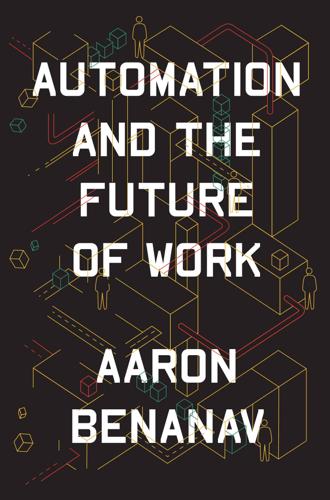
Automation and the Future of Work
by
Aaron Benanav
Published 3 Nov 2020
The consequence is that, unlike firms in other countries, US firms face no particular need to construct alternative working arrangements to take advantage of vulnerable sections of the labor force. Some firms do utilize alternative working arrangements to get around US labor law—witness the small but significant boom in gig-economy jobs, like Uber and Lyft, which offer work through online platforms as a way of disguising their employees as independent contractors.12 But when all is said and done, just 10 percent of US workers were employed in such arrangements in 2017, including as independent contractors, on-call workers, temp agency workers, and fixed-contract workers.13 Set against this American case, the employment landscape in European and wealthy East Asian countries is more complicated.
…
(Frey and Osborne), 103n17 G7 economies, 9–10 G20 countries, reduction of public debt-to-GDP ratio in, 66–7 Gates Bill, 3 GDP (gross domestic product), 18–9, 112n1, 112n2, 115n26 Gelles, David, 103n15 Germany employment rates in, 53 GDP (gross domestic product) in, 112n2, 115n26 growth-rate statistics in, 18 Hartz IV reforms (2004), 52 imports to US from, 27 labor productivity growth in, 32–3 manufacturing capacity in, 25 manufacturing employment shares in, 28 Minijobs, 52 MVA in, 112n2 OECD index and, 50–1 robotization in, 28, 107n16 unemployment rates in, 46–7 US technology share with, 24 Gershuny, Jonathan, 57–9 global deindustrialization about, 15–6 manufacturing overcapacity, 22–8 productivity paradox, 16–22 waves of, 22, 26–7 global South, employment rates in, 53–4 Gordon, Robert J., 9 Gorz, André, 8 Greece, waves of strikes in, 96 Green Revolution, 41–2, 73 Greenspan, Alan, xi gross domestic product (GDP), 18–9, 112n1, 112n2, 115n26 Hägglund, Martin, 135n24 Hammond, James Henry, 83, 132n6 Hansen, Alvin, 69 Hartz IV reforms (2004), 52 Hayek, Friedrich, 73 Hong Kong, waves of strikes in, 96 “Humanity First” platform, 4 ICT (information and communications technology), 36–7 ILO (International Labour Organization), 55, 105n1 imports, to United States, 111n42 income gains in, 125n49 labor share of, 9–10, 61–2 income inequality, 62–3, 127n16 India deindustrialization in, 23 employment rates in, 53 labor productivity growth in, 34 Indonesia deindustrialization in, 108n22 waves of strikes in, 96 inequality income, 62–3, 127n16 increases in, 61–2 informal sector employment, 54 information and communications technology (ICT), 36–7 In Our Hands (Murray), 74–5 International Labour Organization (ILO), 55, 105n1 In Time (film), 123n32 Inventing the Future (Srnicek and Williams), xii, 4–5, 76 investment, private, 131n45 Iran, service sector employment in, 56 Iraq, waves of strikes in, 96 Italy Biagi law (2013), 52 employment rates in, 53 manufacturing capacity in, 25 OECD index and, 50–1 out-of-work income maintenance/support in, 119–20n6 public debt-to-GDP ratio in, 67 service sector employment in, 58 workforce statistics in, 41 IT sector, 118n48 Japan deindustrialization in, 21 employment rates in, 53 growth-rate statistics in, 18 imports to US from, 27 income growth in, 34–5 labor productivity growth in, 32–3 manufacturing capacity in, 25 manufacturing employment shares in, 28 OECD index and, 50–1 public debt-to-GDP ratio in, 67 robotization in, 28, 107n16 unemployment rates in, 46–7 US technology share with, 24–5 women’s labor force in, 52 workforce statistics in, 41 Japanification, x, 36 job creation, service sector and, 60–1 job security, 52–3 Joon-Ho, Bong, 62 Kalecki, Michal, 128n19 Keynes, John Maynard, 76, 103n20 Keynesian economics, 66–71, 127n15 Khrushchev, Nikita, 132n4 Kropotkin, Peter, 83, 85, 89 Kurzweil, Ray, 101n4 labor-augmenting technologies, 5–6 labor demand about, 45–6 global, 53–5 postindustrial levels, 56–64 skilled vs. unskilled, 87–8 unemployment rates, 46–53 labor market arbitrage of, 56 overcapacity and, 38–9 labor-productivity growth, x, 17 labor share, global measures of, 104n26 labor underdemand, 8–13, 43, 45–6, 78, 104n23 Lange, Oskar, 71, 128n21 Latin America deindustrialization in, 21 expansion of nonstandard employment in, 54 League of Nations, 127n16 Lebanon, waves of strikes in, 96 Leontief, Wassily, 7, 45 long downturn, x Looking Backward (Bellamy), 86–7 Lyft, 50 machine age, 2–5 manufacturing sector decline in employment growth in, 111n39 disaggregation of in France, 19–20 employment in, 16 falling price of, 124n41 global trade and, 114n22 growth rates in, 18, 20–1 size of, 106n9 Manufacturing Value Added (MVA), 112n1, 112n2, 114–5n23 Marcuse, Herbert, 8, 132–3n7 Marx, Karl Capital, 8, 47–8 Communist Manifesto, 85 concept of relative surplus population, 120n8 political development of, 133–4n13 on post-scarcity, 83, 84–5 stagnant economic sector concept, 57 Mason, Paul, 96–7 McAfee, Andrew of labor-productivity growth, 17 The Second Machine Age, 2–3, 45 Meidner Plan, 79 Meredith, Sam, 128–9n24 Mexico deindustrialization in, 23 service sector employment in, 56, 58 Minijobs, 52 mining industry, 117n45 MNCs (multinational corporations), 27 money, free, 72–6 Moore’s law, 40 More, Thomas on post-scarcity, 83, 89 Utopia, 82, 84 Morris, William, 132–3n7 mudsill theory, 132n6 multinational corporations (MNCs), 27 Murray, Charles In Our Hands, 74–5 Musk, Elon, 3 necessity, freedom and, 81–93 neoliberalism, 129n30 Neurath, Otto, 85 New Deal-style capital labor, 70–1 Nigeria, service sector employment in, 56 nitrogen capitalism, 42 nonming gong, 54 nonstandard employment, expansion of, 54–5 Obama, Barack, 3–4 Occupy Oakland, 115n30 OECD (Organisation for Economic Co-operation and Development).
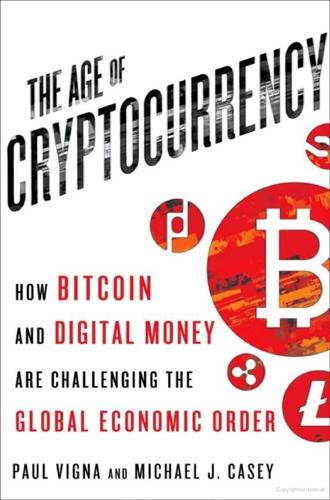
The Age of Cryptocurrency: How Bitcoin and Digital Money Are Challenging the Global Economic Order
by
Paul Vigna
and
Michael J. Casey
Published 27 Jan 2015
David Johnston is a senior board member at the Mastercoin Foundation, the body that coordinates the funding for the Mastercoin project, which offers a special software platform for developers to design special decentralized applications that can run on top of the bitcoin blockchain. He says blockchain technology “will supercharge the sharing economy,” that emerging trend in which apartment owners use Airbnb.com to rent out quasi hotel rooms and car owners sign up as self-employed taxidrivers for smartphone-based Uber and Lyft. The idea is that if we can decentralize the economy and foster multiple forms of peer-to-peer exchanges, people will figure out profitable ways to turn much of what they own or control into a marketable service. Johnston is known for having coined the term DApp, for “decentralized autonomous application,” to describe the kind of specialized software programs that could thrive in blockchain-based settings.
…
Got a big idea? Share it online and raise the money online to fund it. Business symbols of this era so far include the personal-apartment rental site Airbnb, the crowdfunding site Kickstarter, the peer-to-peer lending network Lending Club, and the taxi services controlled by individual car owners Uber and Lyft. In some respects these new business models are extensions of a process that began far earlier with the advent of the Internet. While no self-respecting bitcoiner would ever describe Google or Facebook as decentralized institutions, not with their corporate-controlled servers and vast databases of customers’ personal information, these giant Internet firms of our day got there by encouraging peer-to-peer and middleman-free activities.
…
Unlike a blockchain model, the lending is done in a centralized way in which the investor must trust the company itself, but the middleman-less mechanism has some of the same effects as projects touted by cryptocurrency advocates. Other big companies are also looking to figure out an adaptive response to the onset of new crowd- and sharing-based business models such as those employed by Uber, Airbnb, and Lyft. Silicon Valley–based Crowd Companies, which advises old-world companies on how to survive in this new economy, boasts an impressive list of clients, among them Visa, Home Depot, Hyatt, General Electric, Walmart, Coca-Cola, and FedEx. All are trying to figure out how to adapt their businesses to a centerless economy.

Competition Overdose: How Free Market Mythology Transformed Us From Citizen Kings to Market Servants
by
Maurice E. Stucke
and
Ariel Ezrachi
Published 14 May 2020
Median net worth of Gen X households at the same age was about $15,100”). 14.Martha Ross and Natalie Holmes, “Meet the Millions of Young Adults Who Are Out of Work,” Brookings Institution, April 9, 2019, https://brook.gs/2UveFHI. 15.To illustrate how the digital economy can shift the risk from the powerful tech platforms to the worker, consider Uber and Lyft drivers. When the ride-sharing app enters into a new city, it needs to attract drivers. The first few drivers initially have a lot of power, as Uber and Lyft need to hold onto them (while recruiting even more drivers). They could possibly demand better wages. But as Uber and Lyft keep adding drivers, each driver now becomes slightly more expendable. As their numbers swell from a dozen to a few hundred and then a few thousand, each driver must compete even more fiercely for work, while each driver has even less power to negotiate for better wages and benefits. 16.Brief for the United States and the Federal Trade Commission as Amici Curiae in Support of Appellant and in Favor of Reversal, Chamber of Commerce of the United States of Am. v.
…
As for Generation Z (defined as those born in the mid-1990s to the early or mid-2000s) 17 percent of young adults ages eighteen to twenty-four are out of work in mid to large cities in the United States, totaling 2.3 million young people.14 They and future generations will likely join the swelling ranks of “precariats”—those clinging precariously to their current economic rung, while bearing ever greater risks in the digital economy.15 Should they try to organize to secure fairer wages, as many Uber and Lyft drivers attempted to do in Seattle in 2015, they can expect the government to intervene—and not on their behalf. Competition is inherently good, the FTC and DOJ will tell the court: Antitrust law “forbids independent contractors from collectively negotiating the terms of their engagement.”16 That’s price-fixing, which “is at the very core of the harms the antitrust laws seek to address.”17 Unionizing, which may be the only remedy left to the powerless, has also come under attack, in part for being anticompetitive—the very same rationale we saw that sent union leaders (and socialists) to jail under the Sherman Antitrust Act of 1890.
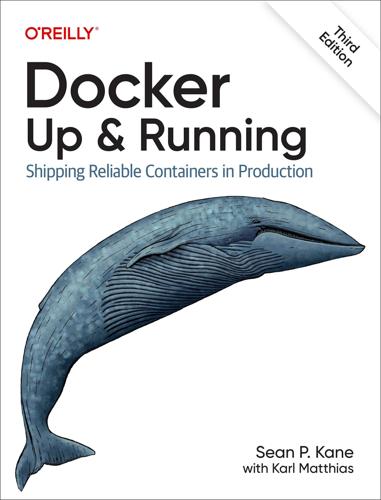
Docker: Up & Running: Shipping Reliable Containers in Production
by
Sean Kane
and
Karl Matthias
Published 14 May 2023
Kubernetes provides for this in the form of Ingress routes and might be one path to consider if you are using that platform. Examples of this include the following: Kubernetes’s Ingress controllers,1 including Traefik2 or Contour, among others Linkerd service mesh Standalone Sidecar service discovery with Lyft’s Envoy proxy Istio service mesh and Lyft’s Envoy If you are running a blended modern and traditional system, getting traffic into the newer containerized system is generally the harder problem to solve and the one you should think through first. Production Wrap-Up Many people will start by using simple Docker orchestration tools.

AI Superpowers: China, Silicon Valley, and the New World Order
by
Kai-Fu Lee
Published 14 Sep 2018
Peer-to-peer transactions added a new layer of social data atop those economic transactions. The country’s bike-sharing revolution has carpeted its cities in IoT transportation devices that color in the texture of urban life. They trace tens of millions of commutes, trips to the store, rides home, and first dates, dwarfing companies like Uber and Lyft in both quantity and granularity of data. The numbers for these categories lay bare the China-U.S. gap in these key industries. Recent estimates have Chinese companies outstripping U.S. competitors ten to one in quantity of food deliveries and fifty to one in spending on mobile payments. China’s e-commerce purchases are roughly double the U.S. totals, and the gap is only growing.
…
So instead of seeking to both squash those startups and outcompete Silicon Valley, they’re throwing their lot in with the locals. RIDE-HAILING RUMBLE There are already some precedents for the Chinese approach. Ever since Didi drove Uber out of China, it has invested in and partnered with local startups fighting to do the same thing in other countries: Lyft in the United States, Ola in India, Grab in Singapore, Taxify in Estonia, and Careem in the Middle East. After investing in Brazil’s 99 Taxi in 2017, Didi outright acquired the company in early 2018. Together these startups have formed a global anti-Uber alliance, one that runs on Chinese money and benefits from Chinese know-how.
…
See risk-of-replacement graphs; unemployment, mass Johansson, Scarlett, 199 K Kaixin001, 42–43 Kasparov, Garry, 4 Ke Jiao, 113 Ke Jie, 1–2, 3, 5–6 Kennedy’s man-on-the-moon speech, 98 King, Martin Luther, Jr., 207 Kübler-Ross, Elisabeth, 188 Kurzweil, Ray, 140–41 L labor unions, decline of, 150 The Lean Startup, 44 lean startup methodology, 44–45 LeCun, Yann, 86, 88, 90, 93 Lee, Kai-Fu birth of first child, 177–79 cancer diagnosis, 176–77, 181–83, 225 epitaphs of, 180–81, 194 family of, 175–76, 177–79, 184–87, 193–94, 195, 225 Master Hsing Yun and, 187–90, 195 regrets of, 185–87, 188 research on lymphoma, 190–92 venture capital industry and, ix, xi, 3, 52 will of, 183–85 work obsession, 175–80 Lee Sedol, 3 legal decisions by judges, 115–16 Lenovo, 89 Li, Robin, 37 lifelong learning, 204 life purpose, loss of, 21 Li Keqiang, 62–63 LinkedIn, 39 Liu Qingfeng, 105 liveness algorithm, 118 love AI as opportunity to refocus on, 176–77, 196, 210 centrality of, in human experience, 198, 199, 225, 231–32 Lee’s cancer and refocus on, 193–96 Master Hsing Yun’s wisdom about, 189–90, 195 new social contract and, 200–201 regrets about not sharing, 185, 186–87, 195 service-focused impact investing and, 217 Luddite fallacy, 147–48, 151 Lyft, 79, 137 lymphoma, 176, 183, 190–92, 194 M Ma, Jack, 34–37, 60–61, 66–67, 137 machine learning advances in, recent, 160–61 algorithms, 40. See also algorithms, AI chips and, 96 data and, 56 deep learning as part of, 6, 94 economy driven by, 25, 84, 91, 94–95 social investment stipend and, 221–22 machine reading, 161 machine translation, 104, 161 Manhattan Project, 85 Manpower, 47–48 market-driven startups, 26–27, 45 mass entrepreneurship and mass innovation, 54, 62–68, 99 McAfee, Andrew, 148–49, 150 McCarthy, John, 7 McKinsey Global Institute, 159–60 medical diagnosis, 113–15, 167, 195, 211.
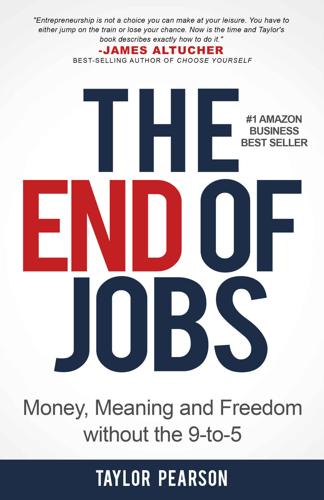
The End of Jobs: Money, Meaning and Freedom Without the 9-To-5
by
Taylor Pearson
Published 27 Jun 2015
There are not many more houses now in the U.S. than there were 5 years ago, but AirBnB has created more inventory (extra rooms to stay in) without creating more supply (building hotels). Uber and Lyft have done for the taxi industry what AirBnB has done for the hotel industry—anyone with a car can become a taxi driver by signing up online to drive for the service. In the past it was difficult and expensive to become a taxi driver. Some cities require drivers to invest tens of thousands of dollars to buy a medallion just to drive a taxi. Uber and Lyft now let anyone do the work by instead going through a background check. A lot of people use this as supplemental income when making a job transition.
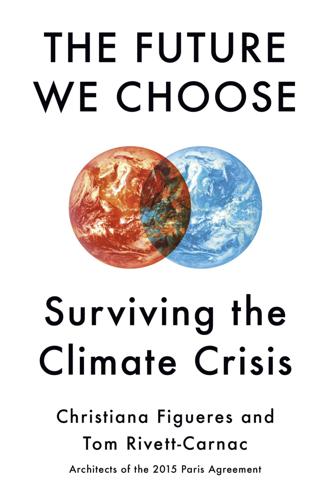
The Future We Choose: Surviving the Climate Crisis
by
Christiana Figueres
and
Tom Rivett-Carnac
Published 25 Feb 2020
United Nations Department of Economic and Social Affairs, “68% of the World Population Projected to Live in Urban Areas by 2050, Says UN,” May 16, 2018, https://www.un.org/development/desa/en/news/population/2018-revision-of-world-urbanization-prospects.html. 22. David Dudley, “The Guy from Lyft Is Coming for Your Car,” CityLab, September 19, 2016, https://www.citylab.com/transportation/2016/09/the-guy-from-lyft-is-coming-for-your-car/500600/. 23. Annie Rosenthal, “How 3D Printing Could Revolutionize the Future of Development,” Medium, May 1, 2018, https://medium.com/@plus_socialgood/how-3d-printing-could-revolutionize-the-future-of-development-54a270d6186d; Elizabeth Royte, “What Lies Ahead for 3-D Printing?”

Intertwingled: Information Changes Everything
by
Peter Morville
Published 14 May 2014
So they aren’t subject to established regulations, licensing, or insurance requirements. Uber isn’t alone in this argument. They have competition. For instance, there’s Lyft, a peer-to-peer rideshare whose drivers don’t charge “fares” but receive “donations” from passengers who are encouraged to sit in the front seat and give the driver a fistbump. Their tagline is “your friend with a car.” Do we need any more evidence that a Lyft is not a taxi? Meanwhile, taxis aren’t standing still. They’re adopting e-hail apps that enable passengers to book regular taxis with their mobile device. In short, from lawsuits to competition, Uber has plenty of problems.

Radical Markets: Uprooting Capitalism and Democracy for a Just Society
by
Eric Posner
and
E. Weyl
Published 14 May 2018
Facebook, Google, and Bing use a system derived from Vickrey’s auction to allocate advertising space on their web pages. Vickrey’s insights about urban planning and congestion pricing are slowly changing the face of cities, and they play an important role in the pricing policies of ride-hailing apps like Uber and Lyft.2 However, none of these applications reflects the ambition that sparked Vickrey’s work. When Vickrey won the Nobel Prize, he reportedly hoped to use the award as a “bully pulpit” to bring George’s transformative ideas and the radical potential of mechanism design to a broader audience.3 Yet Vickrey died of a heart attack three days after learning of his prize.
…
In the coming years, experiments with QV will offer a proving ground for the practical utility of QV. RATING AND SOCIAL AGGREGATION Rating and social aggregation systems fuel today’s digital economy. Reputation systems are the crucial trust mechanisms that allow “sharing economy” services like Airbnb, VRBO, Uber, and Lyft to win consumer acceptance and give providers the confidence to adopt the system.46 They play a core role in the popular search services offered by Amazon, Google, Apple’s app store, and Yelp. Yet a growing body of evidence suggests these systems are badly broken. As noted above, almost all reviews cluster toward five stars, and a few at one star, making the resulting feedback biased and what statisticians call “noisy,” that is, not very accurate.47 Other online platforms, such as Facebook, Reddit, Twitter, and Instagram, gather limited information because they only allow “likes,” and other limited forms of response, rather than allowing participants to exhibit exceptional enthusiasm, or distaste, for particular content.
…
Scott, 174 Ford, 185–87, 193, 240, 243, 311n30 France, 10, 12, 13, 90, 127–30, 139, 141, 182, 210 free access, 43, 211 free data, 209, 220, 224, 231–35, 239 free-rider problem, 107–8 Free: The Future of a Radical Prize (Anderson), 212 free trade, 23, 131–33, 136, 266 French Revolution, 46, 86, 90, 277 Friedman, Milton, xiii, xix Galbraith, John Kenneth, 125–26, 240 Galeano, Eduardo, 140 General Agreements on Tariffs and Trade (GATT), 138 General Theory of Employment, Money and Interest, The (Keynes), 1 George, Henry, 4; capitalism and, 36–37; inequality and, xix–xx; labor and, 137; laissez-faire and, 45, 250, 253; Progress and Poverty and, 36–37, 43, 240; Progressive movement and, 174–75; property and, 36–37, 42–46, 49, 51, 59, 66; reform and, 23; socialism and, 37, 45, 137, 250, 253; Vickrey and, xx–xxii Germany, 10, 12, 13, 45, 77, 93–94, 131, 135, 139 Gibbons, Robert, 52 Giegel, Josh, 32–33 Gilded Age, 174, 262 globalization: backlash against, 265; capital flows and, 265; common ownership self-assessed tax (COST) and, 269–70; foreign products and, 130; General Agreement on Tariffs and Trade (GATT) and, 138; growth and, 257–58; imbalance in, 264–65; immigrants and, 28, 127–30, 132, 141–53, 156–66, 256–57, 261, 266–69, 273, 308n19; inequality and, 8, 9, 134, 135, 165; internationalism and, 140, 160–67; international trade and, 14, 22, 132, 137–38, 140, 142, 265, 270; investment and, 140–41; labor and, 130, 137–40; liberalism and, 255; public goods and, 265; Quadratic Voting (QV) and, 266–69; reform and, 255; VIP program and, 265–66 Glorious Revolution, 86, 95 GM, 185–87, 193, 196, 243 Goeree, Jacob, 304n34 Google, xxi, 314n29; advertising and, 202, 211–13, 220, 234; algorithms and, 289; asset managers and, 171; Brin and, 211; data and, 28, 202, 207–13, 219–20, 224, 231–36, 241–42, 246; immigrants and, 149–51, 154, 163, 169; Page and, 211; re-CAPTCHA and, 235–36; search and, 117, 202, 213, 233, 235 Google Assistant, 219 Gray, Mary, 233–34 Great Depression, 3, 17, 46, 176 Great Recession, 181–82 Greece, 55, 83–84, 90, 131, 296n16 gridlock, 84, 88, 122–24, 261, 267 Groves, Theodore, 99–100, 102, 105 growth, economic: capitalism’s slowing of, 3; common ownership self-assessed tax (COST) and, 73, 256; entrenched privilege and, 4; entrepreneurial sectors and, 144; equal distribution of, 148; globalization and, 257–58; index funds and, 181; inequality and, 3, 5, 8–9, 11, 23–24, 123, 148, 256–57; investment and, 181; liberalism and, 3–11, 23–24, 29; monopsony and, 199, 241; productivity, 254–55; quadratic, 103–5, 123; savings and, 6; stagnation and, 257–58; technology and, 255; wage, 190, 201 guest workers, 140, 150–51, 308n32 Gulf Cooperation Council (GCC), 158–65, 265–66 gun rights, 15, 76, 81, 90, 105–9, 116, 127 H1–B program, 149, 154, 162–63 Hacker, Jacob, 191 Haiti, 127–30, 153 Hajjar, 168–71 Handmaid’s Tale, The (Atwood), 18–19 happiness: Bentham on, 95–96, 98; Quadratic Voting (QV) and, 108–10, 306n52; utilitarian principle and, 95 Harberger, Arnold, 56–59 Hardin, Garrett, 44 Hayek, Friedrich, xix, 47–48, 278, 286 health issues, 100–101, 113, 151–52, 154, 266, 290–91 Her (film), 254 Hicks, John, 68 Hitler, Adolf, 3–94 Hobbes, Thomas, 85 holdout, 33, 62, 71–72, 88, 299n28 homeowners, 17, 26, 33, 42, 56–57, 65 Horizontal Merger Guidelines, 186 House of Cards (TV series), 221 human capital, 130, 258–61, 264, 293 Hume, David, 132 Hylland, Aanund, 100 immigrants: auctioning visas and, 147–49; au pair program and, 154–55, 161; common ownership self-assessed tax (COST) and, 261, 269, 273; data as labor and, 256; DeFoe on, 132; democratizing visas and, 149–57; education and, 14, 143–44, 148; elitism and, 3, 146, 166; English language and, 151, 155, 165, 251; Europe and, 139–40; expansion of existing migration and, 142–46; family reunification programs and, 150, 152; free trade and, 131–33, 136; George on, 137; globalization and, 28, 127–30, 132, 141–53, 156–66, 256–57, 261, 266–69, 273, 308n19; guest workers and, 140, 150–51, 308n32; H1–B program and, 149, 154, 162–63; Haitian, 127–30, 153; human trafficking and, 158; illegal, 130, 139, 143, 152–53, 158, 160, 165–66, 268; Irish, 137; J-1 program and, 154, 161, 273; labor and, 28, 127–30, 132, 141–53, 156–66, 256–57, 261, 266–69, 273, 308n19; legal issues and, 130, 139, 143, 152–53, 158; living standards and, 148, 153, 257; logic of free migration and, 132–37; Marx on, 137; mercantilism and, 132; Mexico and, 139–40; Mill on, 137; New World and, 136; populism and, 14; Quadratic Voting (QV) and, 261, 266–69, 273; refugees and, 130, 140, 145; skill levels of, 143–47, 150, 159–65; Smith on, 132–33; sponsors and, 129, 149–65, 273; Stolper-Samuelson Theorem and, 142–43; Syrian, 116, 140, 145; taxes and, 143–45, 156; technology and, 256–57; transportation costs and, 141; unlimited immigration and, 142; Visas Between Individuals Program (VIP) and, 150, 153, 156–66, 261, 265–66, 269; wages and, 143, 154, 158, 161–62, 165, 308n19; World Bank studies and, 140; xenophobia and, 3, 166 Immorlica, Nicole, 306n52 impossibility theorem, 92 income distribution, 4–8, 12, 74, 133, 223 index funds, 172, 181–82, 185–91, 194–95, 302n63, 310n16 India, 15, 21, 134–35, 149, 173, 206 industrial revolution, 36, 255 inequality: Brazil and, xiv; common ownership self-assessed tax (COST) and, 256–59; crosscountry analysis of, 134–35; democracy and, 123; evolution of, 133–34; George and, xix–xx; global, 8, 9, 134, 135, 165; growth and, 3, 5, 8–9, 11, 23–24, 123, 148, 256–57; growth in, 4–8; immigrants and, 266 (see also immigrants); income distribution and, 4–8, 12, 74, 133; institutional investment and, 187; labor and, 133–35, 141, 148, 163–65, 223; legal issues and, 22; liberalism and, 2–11, 22–25; living standards and, 3, 11, 13, 133, 135, 148, 153, 254, 257; measurement of, 133; minorities and, 12, 14–15, 19, 23–27, 85–90, 93–97, 101, 106, 110, 181, 194, 273, 303n14, 304n36; ownership and, 42, 45, 75, 79, 253; Quadratic Voting (QV) and, 264; Radical Markets and, 174, 176, 199, 257; slavery and, xiv, 1, 19, 23, 37, 96, 136, 255, 260; Smith on, 22; stagnequality and, 276; US Civil Rights movement and, 24 inflation, 8–9, 11, 149 innovation: competition and, 202–3; neural networks and, 214–19; robots and, 222, 248, 251, 254, 287; supersonic trains and, 30–32; technology and, 34, 71, 172, 187, 189, 202, 258 Innovator’s Dilemma, The (Christensen), 202 Instagram, 117, 202, 207 intellectual property, 26, 38, 48, 72, 210, 212, 239 International Monetary Fund (IMF), 138, 141, 267 international trade, 14, 22, 132, 137–42, 265, 270 Internet, 27, 51, 71; data and, 210–12, 224, 232, 235, 238–39, 242, 246–48; dot-com bubble and, 211; free access and, 211; high prices of, 21; online services and, 211, 235; user fees and, 211 “In the Soviet Union, Optimization Problem Solves You” (Shalizi), 281 Israel, 71 Italy, 10, 12, 13, 21 It’s a Wonderful Life (film), 17 J-1 visa program, 154, 161, 273 Jackson, Andrew, 14 James II, King of England, 86 Japan, 10, 12, 13, 80–81, 105–8 Jefferson, Thomas, 86 Jevons, William Stanley, 41, 50, 66, 224 Jonze, Spike, 254 JP Morgan, 171, 183, 184, 191 judicial activism, 124 Jury Theorem, 90–92 Kapital, Das (Marx), 239 Kasparov, Gary, 213 Keynes, John Maynard, 1, 9, 11 Kingsley, Sara, 234 Klemperer, Paul, 52 Korea, 11, 13, 71, 251 Kuwait, 158 labor: artisan, 206, 222; auctioning visas and, 147–49; au pair program and, 154–55, 161; automation of, 222–23, 251, 254; border issues and, 28, 130, 133, 139–40, 142, 144, 161, 164–65, 242, 256, 264–66; capitalism and, 136–37, 143, 159, 165, 211, 224, 231, 239–40, 316n4; collective bargaining and, 240–41; competition and, 145, 158, 162–63, 220, 234, 236, 239, 243, 245, 256, 266; cooperatives and, 118, 126, 261, 267, 299n24; cost of, 129, 200; craftsmen and, 17, 35; data and, 209–13, 246–49; democracy and, 122, 147, 149–57; digital economy and, 208–9 (see also digital economy); education and, 140, 143–44, 148, 150, 158, 170–71, 232, 248, 258–60; efficiency and, 130, 148, 240–41, 246; Engels on, 239–40; as entertainment, 233–39, 248–49; entrepreneurs and, xiv, 35, 39, 129, 144–45, 159, 173, 177, 203, 209–12, 224, 226, 256; equality and, 147, 166, 239, 257; exploitation of, 154, 157–58, 239–40; farm, 17, 34–35, 37–38, 61, 72, 135, 142, 179, 283–85; feudalism and, 16, 34–35, 37, 41, 61, 68, 136, 230–33, 239; free trade and, 131–33, 136; General Agreement on Tariffs and Trade (GATT) and, 138; George and, 137; globalization and, 130, 137–40, 264–65 (see also globalization); guest workers and, 140, 150–51, 308n32; H1–B program and, 149, 154, 162–63; human capital and, 130, 258–60, 264; human trafficking and, 158; illegal aliens and, 160, 165–66, 268; immigrants and, 28, 127–30, 132, 141–53, 156–66, 256–57, 261, 266–69, 273, 308n19; income distribution and, 4–8, 12, 74; inequality and, 133–35, 141, 148, 163–65, 223; J-1 program and, 154, 161, 273; job displacement and, 222, 316n4; manufacturing and, 77, 122, 162, 174, 185–86, 190, 279; markets and, 255–60, 265–66, 268–69, 273–74, 280, 285; mercantilism and, 131–32; 136, 243; monopsony and, 190, 199–201, 223, 234, 238–41, 255; optimality and, 231, 243; pensions and, 157, 181; prices and, 132, 156, 207, 212, 221, 235, 243–44; productivity and, 9–10, 16, 38, 57, 73, 123, 240–41, 247, 254–55, 258, 278; programmers and, 163, 208–9, 214, 217, 219, 224; Radical Markets and, 132, 147, 158, 199–201, 243, 246–49; Red Queen phenomenon and, 176–77; reform and, 129, 153, 240, 247, 255; resale price maintenance and, 201; retirement and, 171–72, 260, 274; rise of data work and, 209–13; robots and, 222, 248, 251, 254, 287; serfs and, 35, 48, 231–32, 236, 255; skilled, 130, 144–47, 154, 159, 161–63, 180, 279; slave, xiv, 1, 19, 23, 37, 96, 136, 255, 260; socialism and, 137, 299n24; Stolper-Samuelson Theorem and, 142–43; technology and, 210–13, 219, 222–23, 236–41, 244, 251, 253–59, 265, 293, 316n4; unemployment and, 9–11, 190, 200, 209, 223, 239, 255–56; unions and, 23, 94, 118, 200, 240–45, 316n4; unpaid, 210, 233–39, 248–49; unskilled, 163, 266; visas and, 158 (see also visas); wages and, 5 (see also wages); wealth and, 130–43, 146, 148, 159–66, 209, 226, 239, 246; women’s work and, 209, 313n4; Workers International and, 45 Labor Party, 45 laissez-faire, 45, 250, 253, 277 landlords, 37, 43, 70, 136, 201–2 landowners, 31–33, 38–39, 41, 68, 105, 173 Lange, Oskar, 47, 277, 280, 282, 286–88, 298n13 Lanier, Jaron, 208, 220–24, 233, 237, 313n2, 315n48 land value taxation, 31, 42–44, 56, 61 Latin America, 10, 57, 130, 138, 140 Law of the Sea Authority, 267 Ledyard, John, 100 Lenin, Vladimir, 46 Lerner, Abba, 280 liberalism: capitalism and, 3, 17, 22–27; central planning and, 19–20; competition and, 6, 17, 20–28; conflict and, 12–16; crisis in, 1–29; democracy and, 3–4, 25, 80, 86, 90; efficiency and, 17, 24, 28; elitism and, 3, 15–16, 25–28; equality and, 4, 8, 24, 29; globalization and, 255; governance and, 3, 16; growth and, 3–11, 23–24, 29; industry and, 19, 22, 24; inequality and, 2–11, 22–25; labor and, 5–12, 21–23, 26, 28, 141, 164; markets and, 16–29; monopolies and, 6, 16, 21–23, 28; neoliberalism and, 5, 9, 11, 24, 255; ownership and, 17–19, 26–27; prices and, 7, 8, 17–22, 25–27; profits and, 6–7, 17–18; property and, 17–18, 25–28; Quadratic Voting (QV) and, 268; reform and, 2–4, 23–25, 255; regulations and, 3, 9, 18, 24; stagnation and, 8–11; taxes and, 5, 9, 23–24; values of, 1, 18; wages and, 5, 7, 10, 19; wealth and, 4–17, 22–24, 255–56 Ligett, Katrina, 306n52 Likert, Rensis, 111 Likert surveys, 111–16, 120, 306n53 LinkedIn, 202 liquidity, 31, 69, 177–79, 194, 301n49 living standards, 3, 11, 13, 133, 135, 148, 153, 254, 257–58 lobbying, 98–99, 189–90, 198, 203, 262, 312n50 Locke, John, 86 Lyft, xxi, 117 McAfee, Preston, 50 machine learning (ML), 315n48; algorithms and, 208, 214, 219, 221, 281–82, 289–93; automated video editing and, 208; consumers and, 238; core idea of, 214; data evaluation by, 238; diamond-water paradox and, 224–25; diminishing returns and, 229–30; distribution of complexity and, 228; facial recognition and, 208, 216–19; factories for thinking machines and, 213–20; humanproduced data for, 208–9; marginal value and, 224–28, 247; neural networks and, 214–19; overfitting and, 217–18; payment systems for, 224–30; productivity and, 208–9; Radical Markets for, 247; siren servers and, 220–24, 230–41, 243; technofeudalism and, 230–33; technooptimists and, 254–55, 316n2; techno-pessimists and, 254–55, 316n2; Vapnik and, 217; worker displacement and, 222 McKelvey, Richard, 94 Macron, Emmanuel, 129 Madison, James, 87 Magie, Elizabeth, 43 majority rule, 27, 83–89, 92–97, 100–101, 121, 306n51 Malkiel, Burton G., 309n14 managers, 40, 129, 157, 171–72, 178–81, 193, 209, 266, 279, 284, 311n27 manufacturing, 77, 122, 162, 174, 185–86, 190, 279 Mao Tse-tung, 46 marginal cost, 101–3, 107, 109 marginal revolution, 41, 47, 224 marginal value, 103, 224–28, 247, 304n35 Market Fundamentalists, xix, xvi–xvii markets; as antiquated computers, 286–88; auctions and, xv–xix, 49–51, 70–71, 97, 99, 147–49, 156–57; border issues and, 22–23, 25, 28, 130, 133, 139–40, 142, 144, 161, 164–65, 242, 256, 264–66; capitalism and, 278, 288, 304n36; central planning and, 277–85, 288–93; Coase on, 40, 48–51, 299n26; for collective decisions, 97–105; colonialism and, 8, 131; common ownership self-assessed tax (COST) and, 270, 286; competition and, 25–28, 109 (see also competition); computers and, 277, 280–93; concentration of, 186, 204; consumers and, 19, 47, 117, 172, 175, 186, 190–91, 197–98, 220, 238, 242–43, 247–48, 256, 262, 270, 280, 287–91; control and, 178–81, 183–85, 193, 198, 235; democracy and, 97–105, 262, 276; discontents and, 16–19; diversification and, 171–72, 180–81, 185, 191–92, 194–96, 310n22, 310n24; dot-com bubble and, 211; efficiency and, 180, 277–85; equilibrium and, 293, 305n40; expansion of, 256; exports and, 46, 132; Federal Trade Commission (FTC) and, 176, 186; feudalism and, 16, 34–35, 37, 41, 61, 68, 136, 230–33, 239; free trade and, 23, 131–33, 136, 266; General Agreement on Tariffs and Trade (GATT) and, 138; globalization and, 265 (see also globalization); Great Depression and, 3, 17, 46, 176; Great Recession and, 181–82; immigrants and, 132–37; imports and, 132; international trade and, 14, 22, 132, 138, 140, 142, 265, 270; Internet and, 211; labor and, 255–60, 265–69, 273–74, 280, 285; liberalism and, 16–29; liquidity and, 31, 69, 177–79, 194, 301n49; manufacturing and, 77, 122, 162, 174, 185–86, 190, 279; marginal value and, 103, 224–28, 247; mercantilism and, 131–32; mergers and, 176, 178, 186–90, 197, 200, 202–3; monopsony and, 190, 199–201, 223, 234, 238–41, 255; open, 21–22, 24; as parallel processors, 282–86; passivity and, 171–72, 192, 196–97, 272, 274; Philosophical Radicals and, 4, 16, 20, 22–23, 95; power and, 6–8, 21, 25–28, 186, 190, 200, 234, 241, 255–56, 261, 271, 316n3; prices and, 278–80, 284–85; property and, 282; public goods and, 271; Quadratic Voting (QV) and, 122–23, 256, 272, 286, 304n36; Red Queen phenomenon and, 176–77, 184; scope of trade and, 122–23; sea power and, 131; Smith on, 16–17, 21–22; socialism and, 277–78, 281; stock, 8, 78, 171, 179, 181, 193, 211, 275; Stolper-Samuelson Theorem and, 142–43; tariffs and, 138, 266; technology and, 203, 286–87, 292; trade barriers and, 14; tragedy of the commons and, 44; without property, 40–45 Marx, Karl, 2, 19, 39, 46, 78, 137, 239–40, 277, 297n25 Means, Gardiner, 177–78, 183, 193–94 Mechanical Turk, 230–31, 234 Menger, Karl, 41, 47, 224 mercantilism, 96, 131–32 mergers, 176, 178, 186–90, 197, 200, 202–3 Mexico, 15, 139–41, 143, 148 micropayments, 210, 212 Microsoft, 2, 202, 209, 211, 219, 231, 238–39, 315n46 Milgrom, Paul, 50, 71 Mill, James, 35, 96 Mill, John Stuart, 4, 20, 96, 137 minorities: democracy and, 85–90, 93–97, 101, 106, 110; inequality and, 12, 14–15, 19, 23–27, 85–90, 93–97, 101, 106, 110, 181, 194, 273, 303n14, 304n36; religious, 87–88; tyrannies and, 23, 25, 88, 96–100, 106, 108; voting and, 303n14 mixed constitution, 84–85 Modern Corporation and Private Property, The (Berle and Means), 177–78 Modiface, 318n10 Mohammad, 131 monarchies, 85–86, 91, 95, 160 monopolies: American Tobacco Company and, 174; antitrust policies and, 23, 48, 174–77, 180, 184–86, 191, 197–203, 242, 255, 262, 286; Aristotle on, 172; capitalism and, 22–23, 34–39, 44, 46–49, 132, 136, 173, 177, 179, 199, 258, 262; Clayton Act and, 176–77, 197, 311n25; common ownership self-assessed tax (COST) and, 256–61, 270, 300n43; competition and, 174; consumers and, 175, 186, 197–98; corporate control and, 168–204; deadweight loss and, 173; democracy and, 125; Federal Trade Commission (FTC) and, 176, 186; feudalism and, 16, 34–35, 37, 41, 61, 68, 136, 230–33, 239; Gilded Age and, 174, 262; labor and, 132, 136, 243; land monopolization and, 42–43; legal issues and, 173–77, 196–99, 262; liberalism and, 6, 16, 21–23, 28; mergers and, 176, 178, 186–90, 197, 200, 202–3; natural, 48; prices and, 58–59, 179, 258, 300n43; problem of, 6, 34, 38–42, 48–52, 57, 66, 71, 196, 199, 298n7, 298n9, 299n28; property and, 34–39; Quadratic Voting (QV) and, 272; Radical Markets and, 172–79, 185, 190, 196, 199–204, 272; Red Queen phenomenon and, 176–77; resale price maintenance and, 200–201; robber barons and, 175, 199–200; Section 7 and, 196–97, 311n25; Sherman Antitrust Act and, 174, 262; Smith on, 173; Standard Oil Company and, 174–75; United States v.
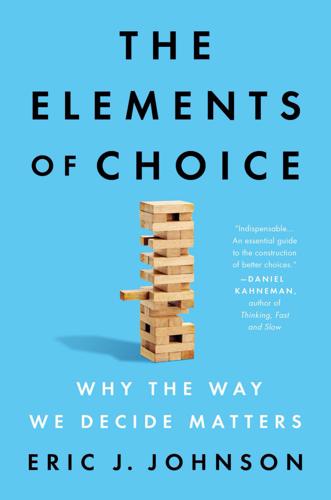
The Elements of Choice: Why the Way We Decide Matters
by
Eric J. Johnson
Published 12 Oct 2021
But do we really know what these scales mean? I teach for a living, which means that I have a fair amount of experience with one metric: the A, B, C scale used for grading. For some courses, I am even required to use a certain distribution of grades: a certain percentage of As, another percentage of Bs, etc. But when it comes to Uber or Lyft, I have no clue. Until recently, I thought it was fine to leave a 4 for any ride that was less than perfect. After all, I reasoned, the ratings of 1, 2, and 3 stars were for people who were really unhappy. Perhaps there is an age and expertise difference in how these ratings are perceived. A younger friend of mine recalled in horror how his mother defaulted to 3 for all Uber ratings, because they were “nothing exceptional.”
…
Climate change: We have seen how defaults can affect choices between green and gray electricity, and how it can make trade-offs between short-term savings and long-term efficiency gains more apparent. It can do more, and these changes are cheap. Inequity: In chapter 1, we talked about how changing the interfaces in cabs and services like Uber and Lyft can increase the tips given to drivers. We also saw how choice architecture can improve schools and increase the uptake of social benefits, like a program to increase kids’ cognitive development. These all are steps to reducing inequity, and they can be less expensive, more efficient, and less controversial than some alternatives.
…
(TV show), 70–72, 75 Johns Hopkins University, 186 Kahneman, Daniel, 139–40 Kang, Arum, 46–47 Kearns, Alexander, 283, 289–90, 350n Kedem, Assaf, 45–48, 103–4 kidney donors, 108–9, 338n Kienen, Anat, 140 Kipchoge, Eliud, 245–46 Klotz, Leidy, 247–48 Knetsch, Jack, 139–40 Krosnick, Jon, 187, 190 Kuhn, Gustav, 305 Kunreuther, Howard, 131–32 LaGuardia Airport, 21 larger-later outcome, 34–35, 37, 38 Larrick, Rick, 224–29, 234–35 Lauren’s Law, 339n lay theory, 301–2 LEDs (light-emitting diodes), 254 Lee, Kee Yeun, 50–51 LEED (Leadership in Energy and Environment Design), 248–49 Letterman, David, 4 Levin, Irwin, 59–62 Li, Ye, 67 Lichtenstein, Sarah, 101–2 life expectancy, 76–81, 136 annuities, 79–81, 336n Social Security benefits, 88–98 life-extension care, 310–13 light bulbs, 136–38, 254–55 load shedding, 23–24, 27, 28, 44, 61 local warming, 67–68 Loewenstein, George, 174–75 London Zoo, 57 loss aversion, 346n Lotz, Sebastian, 134–35, 143, 144–45 Lui, Kaiya, 136–37 Lulu, 204 lumens, 254 Lyft, 323 Lynch, John, 213–14 malicious choice architecture, 15–19, 314–18 Apple’s ad tracking, 16–18 dark patterns, 18–19, 81, 127–29, 267, 315 life expectancy and financial decisions, 79–80 sludge, 18–19, 267 Verizon’s privacy setting, 315–16 mandated-choice condition, 112–13 Mandel, Naomi, 65–66 marathon runners and target times, 245–47, 247 market design, 162–63 market makers, 288, 289, 350n Martin Van Buren High School, 162 mass defaults, 150–52, 154–55, 275 Match.com, 45 matching markets, 162–63 Mathematica, 212–13 McCabe, Jenny, 272 Mellers, Barbara, 352n Meloy, Margaret, 194–95 mentalists, 55–57, 302–5 mental priming force, 304–5, 320 menu calories, 237–38 menu design, 192–94, 214–20, 345n, 346n menu psychology, 215–19 Meszaros, Jacqueline, 131–32 meta-analysis, 13, 142–46, 167 health insurance, 179–80, 181–82 metrics, 164, 238–40 making meaningful, 250–59 scaling, 260–63 straight line, 240–44 targets, 245–50 Microsoft Bing, 18 computer mice, 231–32 miles per gallon (MPG), 223–29, 227 fuel economy labels, 232, 232–35, 233 Millennium High School, 169 mind writing, 57, 58, 305 “moral algebra,” 74 movie choices, 1, 202–5, 267 Netflix, 267–73 MPG illusion, 225–28, 230 Mullainathan, Sendhil, 104–5 Music Genome Project, 277 “mystery shoppers,” 104 National Bureau of Economic Research (NBER), 196–99 National Public Radio, 315 negative options, 127 neglect, 148, 308–14, 322–23 end-of-life decisions, 310–13 Netflix, 267–73 Netherlands and organ donation, 110, 113–14, 115 newspaper subscriptions, 314–15 New York City restaurant grades, 254 salt content labels, 256–59, 258 school choice, 159–60, 162–66, 168–69, 182–83 taxis and tipping, 12, 128–29 New York City Taxi and Limousine Commission, 12 New York High School Directory, 163–66, 168 New York–Presbyterian Hospital, 107–8 New York Times, 17–18, 245, 290 “Vows” section, 44–45 New York University, 200 NFL draft books, 230 Nike Vaporfly, 245 no-action defaults.
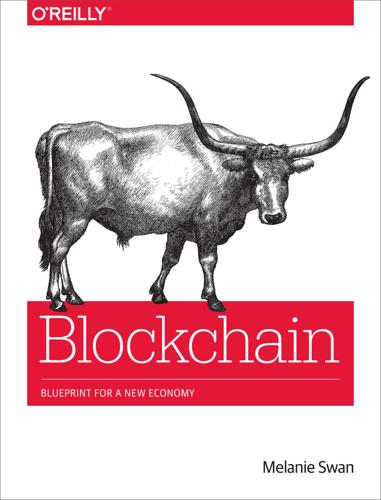
Blockchain: Blueprint for a New Economy
by
Melanie Swan
Published 22 Jan 2014
“Seven Months After FDA Slapdown, 23andMe Returns with New Health Report Submission.” Forbes, June 20, 2014. http://www.forbes.com/sites/roberthof/2014/06/20/seven-months-after-fda-slapdown-23andme-returns-with-new-health-report-submission/. 4 Knight, H. and B. Evangelista. “S.F., L.A. Threaten Uber, Lyft, Sidecar with Legal Action.” SFGATE, September 25, 2041. http://m.sfgate.com/bayarea/article/S-F-L-A-threaten-Uber-Lyft-Sidecar-with-5781328.php. 5 Although it is not strictly impossible for two files to have the same hash, the number of 64-character hashes is vastly greater than the number of files that humanity can foreseeably create. This is similar to the cryptographic standard that even though a scheme could be cracked, the calculation would take longer than the history of the universe. 6 Nakamoto, S.

100 Things We've Lost to the Internet
by
Pamela Paul
Published 14 Oct 2021
Mapping apps have optimized new ways to get from A to B that often forgo the major routes and thoroughfares so that the paths people are led down aren’t lined with the expected rest stops and road signs. You may be following directions and wind up on a twisty, disused road that feels all wrong. Formerly quiet residential streets are filled with late-night Lyfts hauling drunken teenagers. Perhaps part of you misses, just a tiny bit, having someone else to blame for getting lost on the occasions when it still occurs. You can’t say you misplaced or misread the directions or that someone must have written them down wrong. It was your fault. There’s no wiseass at the gas station insisting you take a hard left, which maybe he did on purpose because he was secretly stoned or he didn’t like your face.
…
It was the subject of arguments and the grudging taking of turns, and someone always ended up sidelined as party pooper. Still, the knowledge that someone, perhaps even just that one person, would need to exercise self-control and get everyone home safe at the end of the night conferred a certain degree of restraint to an evening, no matter how debauched. Now everyone can drink themselves silly. With Uber and Lyft ever ready, there’s no need to argue over who will be the designated driver. Teenagers don’t have to make humiliating calls home using their fake sober voice, pleading for their parents to fetch them because everyone left without them. Instead they can booze their way into oblivion and consume lord knows what other iffy intoxicants.
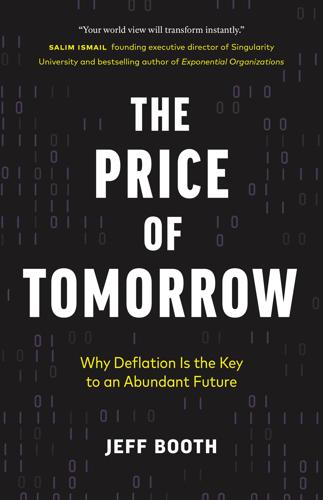
The Price of Tomorrow: Why Deflation Is the Key to an Abundant Future
by
Jeff Booth
Published 14 Jan 2020
As much as riders have benefitted from great new services, it is difficult to see how the ride-sharing companies, such as Uber or Lyft are going to make money in the future. The same key consideration for how to decrease their costs and increase their profits by removing drivers (automation) is going to make them compete against automotive manufacturers reinventing their models to stay in business. A utilization rate increase means less demand for automobiles. When manufacturers can give a choice of 1) a rides-on-demand service for a monthly fee or 2) an ability, when I purchase, to make extra dollars on my car when I’m not using it by adding my vehicle back to the network, what advantage do Uber and Lyft provide?

Coders: The Making of a New Tribe and the Remaking of the World
by
Clive Thompson
Published 26 Mar 2019
(In New York City alone, in 2018 there were only 13,578 traditional taxis, but the number of ride-hail drives had exploded to 80,000.) Certainly, drivers who were only doing it for spare money were thrilled to have a way to quickly pick up some extra pocket money; Uber and Lyft made it possible to do driving as piecework. But it was bad news for anyone looking to drive as a reliably steady gig, a job that historically has been one of the easier-to-acquire forms of work for immigrants in big cities. “What Uber and Lyft have done is come into the industry and wreck it,” as the Nigerian cabdriver Nnamdi Uwazie told NBC. By 2017, several cabdrivers had committed suicide and blamed the ride-hail firms for destabilizing their work so massively that it wasn’t possible to rely on driving for a predictable income.
…
Indeed, those universities are so well connected to internships at major firms that many grads have offers in hand before they’re finished with their coursework. When I hung out with two students who’d graduated the year before from Columbia University’s computer science program, one had been scouted by Facebook, Microsoft, and a database firm in New York, and the other had juggled offers from Lyft and Twitter. “This is what it’s like for basically everyone who came out of our program,” they told me. And founders of high-tech start-ups tend to hire the friends they met at college; get into the right class and it’s a ticket to a well-financed tech job. The upshot is a growing stampede of students eager to study computer science.
…
See minority coders law/lawyers, ref1 Lazowska, Ed, ref1 LBGT tech employees, ref1 LDX, ref1 LeapChat.org, ref1 LeCun, Yann, ref1 Lee, Cynthia, ref1, ref2 Lee, Jennifer 8, ref1 Lee, Kai-Fu, ref1, ref2 Legend of Zelda, The (game), ref1 Leibniz, Gottfried, ref1 Leopold, Jason, ref1 Leslie, Sarah Jane, ref1 Levchin, Max, ref1, ref2 Levy, Josh, ref1 Levy, Steven, ref1, ref2, ref3 Lewis, Clayton, ref1 Li, Fei-Fei, ref1 libertarianism, in coding community, ref1, ref2, ref3 Lichterman, Ruth, ref1 Like button (Facebook), ref1 LINC, ref1 Linux, ref1, ref2 LiveJournal, ref1 Loewenstern, Andrew, ref1 Logic, ref1 lone genius working feverishly stereotype. See 10X coders Lopp, Michael, ref1 Losse, Kate, ref1 Lotus Notes, ref1 Lovelace, Ada, ref1 Lucy Parsons Lab, ref1 Lund, Kátia, ref1 Lyft, ref1 McCarthy, John, ref1 McClure, Dave, ref1 McFarlane, Jill, ref1 McKellar, Jessica, ref1 McNulty, Kathleen, ref1 Madison, James, ref1 Magic Leap, ref1 Malhotra, Neil, ref1 malware, ref1 Manning, Chelsea, ref1 MapReduce, ref1 Margolis, Jane, ref1, ref2 Marlinspike, Moxie, ref1 Martínez, Antonio Garcia, ref1 Martiros, Hayk, ref1 Mason, Hilary, ref1, ref2, ref3 Masters of Deception, ref1 Matrix, The (film), ref1, ref2, ref3 May, Tim, ref1, ref2 Meebo, ref1 Meituan, ref1 #metoo, ref1 mental health issues, ref1 meritocracy myth, ref1, ref2 “brilliant jerk” downside of worship of coder merit, ref1 code as arbiter of what is great, ref1, ref2 as coping mechanism for high school/corporate life social orders, ref1 fortune, role of, ref1 great ideas, value of, ref1 Levchin/PayPal and, ref1 open source software and, ref1, ref2 PayPal and, ref1, ref2 political views of coders and (See politics, of coders) provenance of, ref1 self-taught individuals, acceptance of, ref1, ref2 side effects of belief in, ref1 10x coders and, ref1, ref2, ref3 women and minorities, lack of, ref1 Zuckerberg on, ref1 Metasploit, ref1 Microsoft, ref1, ref2, ref3 microtargeting, ref1 Miller, Robyn, ref1 Minecraft, ref1 minority coders bifurcation in pay and prestige of coding jobs available to, ref1 computer science degree drop-out rates, in 1980s onward, ref1 hostile work environment encountered by, ref1, ref2 lack of, ref1, ref2 LBGT employees, harassment faced by, ref1 mistaken for security or housekeeping personnel, ref1 percentage in workplace, 2017, ref1 Mirai botnet, ref1 MIT AI lab hackers, in 1960s and early 1970s, ref1 privacy versus secrecy clashes at, in 1960s and 1970s, ref1 Wilkes’ early work at Lincoln Labs, ref1 “Mixing Math and Motherhood” (Businessweek), ref1 moderators, ref1 Molnar, Charles, ref1 Moses, Robert, ref1 Moskovitz, Dustin, ref1 Mozilla, ref1 Mr.

Designing Web APIs: Building APIs That Developers Love
by
Brenda Jin
,
Saurabh Sahni
and
Amir Shevat
Published 28 Aug 2018
To define the developer programs that you need to run, you need to perform a breadth and depth analysis. Breadth and Depth Analysis Most developer ecosystems are composed of a few big players and a lot of midsize and small players, as illustrated in Figure 10-1. Con‐ sider the following about the mobile ecosystem: you have a few big mobile app developers—Uber, Lyft, Facebook, Supercell, and so forth—as well as many, many other app developers working in smaller companies building mobile apps. 185 Figure 10-1. Developer tiers Developers (and hence developer programs) can be categorized along two axes, as shown in Figure 10-2: Depth axis The deep developer audience refers to the top partners or top clients that will use your API.
…
Hackathons are also expensive in terms of time and resources, so if you do not invite the right people, track signups, and gather product insights, your management might see this effort as a waste of time and money. Hackathons can be very big, with a lot of API companies working together to help developers innovate. Slack has sponsored a hacka‐ thon with 2,000 developers, together with companies such as Lyft, Stripe, Google, Amazon, and Microsoft. Each company provided training materials, engineers to support the hackers, and prizes for the best projects. Hackathons contribute to developer awareness and proficiency, they connect the API product team and developers at large, and they help collect product feedback and build empathy for developer problems.

Augmented: Life in the Smart Lane
by
Brett King
Published 5 May 2016
Millennials will be the first modern generation to work in multiple “micro-careers” at the same time, leaving the traditional full-time job or working week behind. “Work” is more likely to behave like a marketplace in the cloud than behind a desk at a traditional corporation. While a central skill set or career anchor will be entirely probable, most will be entrepreneurs, and many will have their side gigs. For instance, Uber, Lyft and Sidecar are platforms that give people a way to leverage their cars and time to make money. TaskRabbit is a market for odd jobs. Airbnb lets you rent out any extra rooms in your home. Etsy is a market for the handmade knick-knacks or 3D print designs that you make at home. DesignCrowd, 99designs and CrowdSPRING all offer freelance design resources that bid logos and other designs for your dollars.
…
Many thousands of different jobs, entrepreneurial start-ups or self-employment opportunities, with hundreds of different options of profession. A citizen can choose from dozens of jobs, and change careers or professions. 8. The ability to walk, bike, taxi or take public transportation to work or play, without having to own a vehicle or needing to have a driver’s licence. People in most cities are now able to call an Uber or Lyft via a smartphone. 9. The ability for quick access to an airport that enables travel to anywhere on earth within a day, and to many destinations within a few hours. 10. The ability to take advantage of the economies of scale that a city offers, to reduce the total costs of energy, transportation, fresh food, equipment and services, with options such as buying in bulk, taking advantage of competition in the same market and making use of shared-economy apps that allow joint ownership or shared use. 11.
…
Stores will become inefficient distribution models for a vast swathe of products, especially where advice is currently part of the experience. By 2030 to 2035, we’ll regularly download products for printing at home, inclusive of electrical circuits, displays and other tech. Our kids won’t own the stuff we own today as revised notions of ownership come to reshape asset management. Airbnb, SocialFlight, Lyft, Sailo and others are only the first wave of shared asset systems. In the future, you’ll be able to take a different car to work every day (autonomous, self-driving vehicles) at a much cheaper rate than you could ever do owning a car of your own, live month by month or week by week in a different room and work in a different workspace every day.

Zucked: Waking Up to the Facebook Catastrophe
by
Roger McNamee
Published 1 Jan 2019
With a range of new services catering to their needs, delivered by startups of their peers, the hipsters and bros eventually provoked a reaction. Tangible manifestations of their presence, like the luxury buses that took them to jobs at Google, Facebook, Apple, and other companies down in Silicon Valley, drew protests from peeved locals. An explosion of Uber and Lyft vehicles jammed the city’s streets, dramatically increasing commute times. Insensitive blog posts, inappropriate business behavior, and higher housing costs ensured that locals would neither forgive nor forget. * * * — ZUCK ENJOYED THE KIND OF privileged childhood one would expect for a white male whose parents were medical professionals living in a beautiful suburb.
…
In the mid-seventies and eighties, when the US first restructured its economy around information technology, tech enabled companies to eliminate layers of middle management, but the affected people were rapidly absorbed in more attractive sectors of the economy. That is no longer the case. The economy is creating part-time jobs with no benefits and no security—driving for Uber or Lyft, for example—but not creating jobs that support a middle-class lifestyle, in part because that has not been a priority. One opportunity for the government is to create tax incentives for tech businesses (and others) to retrain and create jobs for workers threatened by recent changes in the economy.
…
Department of, 200 Lange, Christian Lous, 1 Lanier, Jaron, 69, 129, 135 Lee, Yanghee, 179 Levchin, Max, 48 libertarianism, 43–45, 49, 102, 123 Licklider, J. C. R., 33 LinkedIn, 38, 48, 98, 104, 110, 173 local area networks (LANs), 35 Lofgren, Zoe, 221–27 Lotus Development, 27 Luján, Ben, 211 Lustig, Robert, 167 Lyft, 50, 263 Lynn, Barry, 155, 285–86 Macedonia, 125 magic, 82–83, 101 Maher, Katherine, 178 Makeoutclub, 55 March for Our Lives, 243, 250, 275 Marinelli, Louis, 114 Markey, Edward, 167 Match.com, 218 Mayfield Fund, 147 McCain, John, 207 McGinn, Tavis, 167–69, 172, 174 McGovern, George, 20 McKean, Erin, 230–31 McNamee, Ann, 5–6, 23, 159 McNamee, George, 22 McNamee, Roger, 18–30 as advisor to Zuckerberg, 1, 5, 13–16, 57–60, 64, 78 childhood of, 18–19 Elevation Partners firm of, 13–14, 17–18, 30, 61, 72, 147 email to Zuckerberg and Sandberg, 4–6, 149, 152, 160–61, 280, 297–300 heart surgery of, 29 at Integral Capital Partners, 27–28, 61 as investor in Facebook, 1, 17–18, 59 as investor in technology, 1, 7, 21, 24–30, 56–57 music career of, 8, 19, 22, 23, 25 op-ed for Recode, 5–7, 297–300 op-ed for USA Today, 118 parents of, 18–21 and Sandberg’s joining of Facebook, 5, 16, 60, 61 at Silver Lake Partners, 28–30 strokes suffered by, 29 at T.
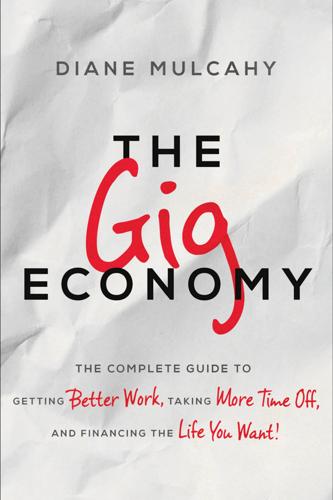
The Gig Economy: The Complete Guide to Getting Better Work, Taking More Time Off, and Financing the Life You Want
by
Diane Mulcahy
Published 8 Nov 2016
In the past, contractor attempts to unionize and bargain have been thwarted by invoking antitrust laws. The argument is that contractors who collectively bargain to set common rates are essentially colluding, which violates antitrust laws. However, in December 2015, the Seattle City Council voted to extend collective bargaining rights to Uber and Lyft drivers.16 In March, the U.S. Chamber of Commerce sued the city of Seattle, saying that the ordinance violates antitrust laws.17 California is expected to introduce a similar bill covering independent contractors who work on on-demand platforms. What most of these proposals have in common is that they attempt to improve the current labor market by eliminating an employer’s ability to arbitrage between employees and contractors, and support worker choices about how to work.
…
Beekman, Daniel, “The Seattle City Council Voted 8-0 Monday Afternoon to Enact Councilmember Mike O’Brien’s Ordinance, Giving Taxi, For-Hire and Uber Drivers the Ability to Unionize,” December 16, 2015. www.seattletimes.com/seattle-news/politics/unions-for-taxi-uber-drivers-seattle-council-votes-today/ 17. Somerville, Heather, and Dan Levine, “US Chamber of Commerce Sues Seattle over Uber, Lyft Ordinance,” Reuters, March 3, 2016. www.reuters.com/article/us-uber-tech-seattle-chamberofcommerce-idUSKCN0W52SD 18. Gallup, “What Everyone in the World Wants: A Good Job,” June 9, 2015 www.gallup.com/businessjournal/183527/everyone-world-wants-good-job.aspx 19. Ton, Zeynep, “Why ‘Good Jobs’ are Good for Retailers,” Harvard Business Review, January-February 2012. issue. hbr.org/2012/01/why-good-jobs-are-good-for-retailers 20.

Human + Machine: Reimagining Work in the Age of AI
by
Paul R. Daugherty
and
H. James Wilson
Published 15 Jan 2018
Even if the entire mind of an AI system can’t be known, some insights into its inner workings can be very beneficial. Explainers should understand both what’s useful for people to see in a visualization and what’s important for the system to share. Minimize “Moral Crumple Zones” For services like Uber, Lyft, and Amazon’s Mechanical Turk, AI-based software is augmenting some management roles: it doles out tasks, gives feedback and ratings, and helps people track progress toward goals. AI-enhanced management is a necessary innovation if these companies’ business models are to scale and employ hundreds of thousands of people worldwide.
…
See Watson (IBM) “if-then” rules, 25 Illumeo, 142 image recognition, 66 incubators, 162 industries, redefining, 56–58 Inertia Switch, 23 inference systems, 64 information analysis, 10 information technology (IT) cybersecurity and, 56–58, 59 in process automation, 5 Init.ai, 121 innovation, 152 generative design and, 135–137 observation and, 69–72 See also experimentation; research and development (R&D) Institute for the Future, 187 institutional review boards (IRBs), 78 inSTREAM, 47–48 Intel AI Day, 188 intelligence, extended and embodied, 206 intelligent agents, 65 IntelligentX Brewing Company, 76 interaction, 107, 139 jobs with, 143–146 See also augmentation; missing middle interaction agents, 143–146 interaction modelers, 120 internet of things (IoT), 34, 36, 37 interrogation, intelligent, 12, 185, 193–195 intuition, 191–193 inventory management, 30–33 iPhone, 176 IPSoft, 55–56, 139, 164, 201 iRobot, 24 IT security, 56–58, 59 Järborg, Rasmus, 55 job creation, 11, 113–115, 208–211 in data supply chains, 179 education and training for, 132–133 ethics compliance and, 79 explainers, 122–126 in manufacturing, 20 in marketing and sales, 100–101 in sustaining, 126–132 in training, 100, 114–122 See also fusion skills job loss, 19, 20, 209 job satisfaction, 46–47 job searches, 198–199 John Radcliffe Hospital, 197 Johnson & Johnson, 82 judgment integration, 12, 191–193 Kaiser Permanente, 188 Kaplan, Jerry, 60 Kelton, Fraser, 97 Keshavan, Meghana, 82 Kik, 91, 97 Kindred AI, 200 Kiva Robots, 31 knowledge representation, 63–64 Koko, 97, 117–118 Kowalski, Jeff, 137 Kraft Phone Assistant, 91 Lambda Chair, 136–137 Lange, Danny, 43 Las Vegas Sands Corp., 76 Laws of Robotics, 128–129 leadership, 14–15, 153–181, 213 blended culture and, 166–174 data supply chains and, 174–179 in enterprise processes, 58–59 in manufacturing, 38 in marketing and sales, 100 in normalizing AI, 190–191 in R&D, 83 in reimagining processes, 154, 180–181 learning deep reinforcement, 21–22 distributed, 22 reinforcement, 62 in robotic arms, 24–26 semi-supervised, 62 sensors and, 24–26 supervised, 60 unsupervised, 61–62 See also machine-learning technologies Leefeldt, Ed, 99 Lee Hecht Harrison, 199 legal issues. See ethical, moral, legal issues Lenovo, 76 LinkedIn, 51, 198 Local Interpretable Model-Agnostic Explanations (LIME), 125 local search capabilities, 63 logistics, 31 L’Oreal, 31 Lowebot, 91 Lowe’s, 91 Lyft, 169 machine-learning technologies in agriculture, 35–37 in complaint processes, 47–48 definition of, 60 ethics and, 130–131 glossary on, 60–63 history of, 24, 41–44 job creation and, 11 in marketing and sales, 10–11 in onboarding machines, 27 in robotic arms, 21–23 supply chains and, 34 machine relations managers, 11, 131–132 machine time, 187 machine-vision algorithms, 32–33 maintenance, 183–184 AI-enabled, 26–27, 29 augmentation in, 143 at GE, 27, 29 management, 12, 152 administration responsibility and, 169–172 ethics compliance, 79, 129–130 in normalizing AI, 190–191 of process reimagining, 108–109 mannequins, 89, 90, 100 manufacturing job creation in, 20 jobs lost in, 19 trainers in, 116–117 unfilled jobs in, 210 marketing and sales, 10–11, 85–101 brands and, 87, 92–97 data analytics in, 98 empowering salespeople in, 90, 92 personalization in, 86, 89–90, 91, 96–97 staffing and, 88–89 Mars Exploration Rovers, 200–201 Masnick, Mike, 49 Matternet, 151 Matthews, Kayla, 198 Mayhem, 57 Mayo Clinic, 188 McCarthy, John, 40, 41 Mechanical Turk, 169 MELDS (mindset, experimentation, leadership, data, skills) principles, 12–16.

A Generation of Sociopaths: How the Baby Boomers Betrayed America
by
Bruce Cannon Gibney
Published 7 Mar 2017
For me, in 1998, that thing was PayPal (my college roommate cofounded the company, and I bought some early shares); in 2004, it was Facebook (my then boss made the first outside investment in the social network, and I worked as a junior associate on part of that deal). Later, I made personal investments in SpaceX, Lyft, Palantir, and DeepMind, which are not all household names, though they have succeeded well enough. But these companies were exceptions, very rare ones. I mention them less to establish my credibility as a prognosticator than to show the value of socially funded innovation (every company I mentioned was built on technologies pioneered by government grants or research) and, most important, to show the overwhelming importance of luck in a stagnating economy.
…
The gig economy and other “alternative work arrangements” accounted for quite a lot of recent job growth, probably at least a third of all jobs created, and per preliminary findings by Harvard’s Lawrence Katz and Princeton’s Alan Krueger, perhaps “all of the net employment growth in the U.S. economy from 2005–2015 appears to have occurred in alternative work arrangements” (emphasis original; in a recent update, the authors revised “all” to a no-less-unsettling “94 percent”).17 And this returns us to Downton Abbey—before World War I, huge numbers of English were employed “in service,” thanks to social inertia, inequality, and technological change. With gigs, this is happening again, only now the chauffeur comes in the livery of Lyft’s pink moustache, not Downton’s white tails. And this time, there will be no intermarriage between passenger and driver à la Lady Sybil and Tom, especially in the coming decades when the driver becomes a robot. The Dowager Countess of Grantham has become Lady Brenda of the Colonies, residing in Sun City, Arizona, couriered from aquarobics to gerontologist by rideshare and nursed by a contractor workforce, often composed of the immigrants her ex-governor Jan Brewer so detested.18 At least, however, there’s still staff; indeed, Lady Brenda can expect more, albeit younger, browner, poorer, and occasionally inanimate.
…
* For most purposes, people in prisons don’t count toward the unemployment rate, though they are basically unemployed, and were US incarceration rates at developed world norms, unemployment would be about half a point higher. * Another disclosure: I have invested in several gig companies, like TaskRabbit and Lyft, because a few years ago I began to suspect that gigs were the future of work. * One of which apparently went to the most recent Madame Trump, a skilled… model. A special class of H-1B visas exists for just these exceptional people. * Judge (sic) Kimba Wood’s nanny appears to have been properly hired under prior applicable laws; her sin was failing to respond forthrightly to the White House’s specific questions about nannies
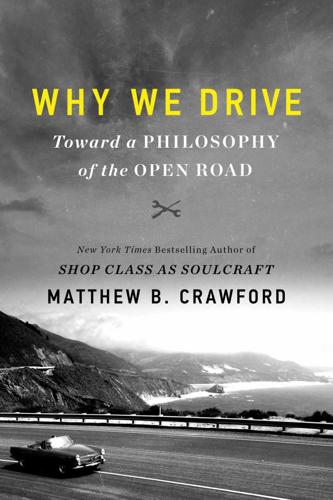
Why We Drive: Toward a Philosophy of the Open Road
by
Matthew B. Crawford
Published 8 Jun 2020
Mike Isaac, “Uber Defies California Regulators with Self-Driving Car Service,” New York Times, December 16, 2016, https://www.nytimes.com/2016/12/16/technology/uber-defies-california-regulators-with-self-driving-car-service.html. 9.John Harris, “With Trump and Uber, the Driverless Future Could Turn into a Nightmare,” Guardian, December 16, 2016, https://www.theguardian.com/commentisfree/2016/dec/16/trump-uber-driverless-future-jobs-go. 10.These are the findings of the city’s transport department as characterized by Nicole Gelinas in “Why Uber’s Investors May Lose Their Lunch,” New York Post, December 26, 2017, available at https://www.manhattan-institute.org/html/why-ubers-investors-may-lose-their-lunch-10847.html. 11.“Uber and Lyft Want to Replace Public Buses,” New York Public Transit Association, August 16, 2016, https://nytransit.org/resources/transit-tncs/207-uber-and-lyft-want-to-replace-public-buses. 12.Huber Horan, “Uber’s Path of Destruction,” American Affairs 3, no. 2 (Summer 2019). 13.Horan, “Uber’s Path of Destruction.” Horan cites structural problems that are intrinsic to the taxi market, requiring extra-market remedies.
…
“[R]elieving drivers of even one aspect of the driving task results in reports of increased driver drowsiness and reduced vigilance when driving on open stretches of road” according to the findings of A. Dufour, “Driving Assistance Technologies and Vigilance: Impact of Speed Limiters and Cruise Control on Drivers’ Vigilance,” presentation at the International Transport Forum (Paris, France, April 15, 2014), as characterized in Casner et al., “The Challenges of Partially Automated Driving.” 6.“Lyft Co-founder Says Human Drivers Could Soon Be Illegal in America,” according to a headline in Business Insider, December 15, 2016. In November 2017 in Automotive News, Bob Lutz, the head of GM, suggested that driving will be outlawed in twenty years. Bob Lutz, “Kiss the Good Times Goodbye,” Automotive News, November 5, 2017, http://www.autonews.com/apps/pbcs.dll/article?

Super Thinking: The Big Book of Mental Models
by
Gabriel Weinberg
and
Lauren McCann
Published 17 Jun 2019
If you realize that the concept of critical mass applies to this business, then you know that there is some threshold that needs to be reached before it could be viable. In this case, you need enough tools available for rent in a community to satisfy initial customer demand, much as you need enough Lyft drivers in a city for people to begin relying on the service. That is super thinking, because once you have determined that this business model can be partially explained through the lens of critical mass, you can start to reason about it at a higher level, asking and answering questions like these: What density of tools is needed to reach the critical mass point in a given area?
…
Consider the Silicon Valley startups that have harnessed the spare capacity that is all around us but often ignored. Before Airbnb, travelers had little choice but to pay high prices for a hotel room, and property owners couldn’t easily and reliably rent out their unoccupied space. Airbnb saw untapped supply and unaddressed demand where others saw nothing at all. The same is true of private car services Lyft and Uber. Few people imagined that it was possible to build a billion-dollar business by simply connecting people who want to go places with people willing to drive them there. We already had state-licensed taxicabs and private limousines; only by believing in and looking for secrets could you see beyond the convention to an opportunity hidden in plain sight.
…
Department of, 97 just world hypothesis, 22 Kahneman, Daniel, 9, 30, 90 karoshi, 82 Kauffman Foundation, 122 keeping up with the Joneses, 210–11 key person insurance, 305 King, Martin Luther, Jr., 129, 225 KISS (Keep It Simple, Stupid), 10 knowledge, institutional, 257 knowns: known, 197 unknown, 198, 203 known unknowns, 197–98 Knox, Robert E., 91 Kodak, 302–3, 308–10, 312 Koenigswald, Gustav Heinrich Ralph von, 50 Kohl’s, 15 Kopelman, Josh, 301 Korea, 229, 231, 235, 238 Kristof, Nicholas, 254 Krokodil, 49 Kruger, Justin, 269 Kuhn, Thomas, 24 Kutcher, Ashton, 121 labor market, 283–84 laggards, 116–17 landlords, 178, 179, 182, 188 Laplace, Pierre-Simon, 132 large numbers, law of, 143–44 Latané, Bibb, 259 late majority, 116–17 lateral thinking, 201 law of diminishing returns, 81–83 law of diminishing utility, 81–82 law of inertia, 102–3, 105–8, 110, 112, 113, 119, 120, 129, 290, 296 law of large numbers, 143–44 law of small numbers, 143, 144 Lawson, Jerry, 289 lawsuits, 231 leadership, 248, 255, 260, 265, 271, 275, 276, 278–80 learned helplessness, 22–23 learning, 262, 269, 295 from past events, 271–72 learning curve, 269 Le Chatelier, Henri-Louis, 193 Le Chatelier’s principle, 193–94 left to their own devices, 275 Leibniz, Gottfried, 291 lemons into lemonade, 121 Lernaean Hydra, 51 Levav, Jonathan, 63 lever, 78 leverage, 78–80, 83, 115 high-leverage activities, 79–81, 83, 107, 113 leveraged buyout, 79 leveraging up, 78–79 Levitt, Steven, 44–45 Levitt, Theodore, 296 Lewis, Michael, 289 Lichtenstein, Sarah, 17 lightning, 145 liking, 216–17, 220 Lincoln, Abraham, 97 Lindy effect, 105, 106, 112 line in the sand, 238 LinkedIn, 7 littering, 41, 42 Lloyd, William, 37 loans, 180, 182–83 lobbyists, 216, 306 local optimum, 195–96 lock-in, 305 lock in your gains, 90 long-term negative scenarios, 60 loose versus tight, in organizational culture, 274 Lorenz, Edward, 121 loss, 91 loss aversion, 90–91 loss leader strategy, 236–37 lost at sea, 68 lottery, 85–86, 126, 145 low-context communication, 273–74 low-hanging fruit, 81 loyalists versus mercenaries, 276–77 luck, 128 making your own, 122 luck surface area, 122, 124, 128 Luft, Joseph, 196 LuLaRoe, 217 lung cancer, 133–34, 173 Lyautey, Hubert, 276 Lyft, ix, 288 Madoff, Bernie, 232 magnetic resonance imaging (MRI), 291 magnets, 194 maker’s schedule versus manager’s schedule, 277–78 Making of Economic Society, The (Heilbroner), 49 mammograms, 160–61 management debt, 56 manager’s schedule versus maker’s schedule, 277–78 managing to the person, 255 Manhattan Project, 195 Man in the High Castle, The (Dick), 201 manipulative insincerity, 264 man-month, 279 Mansfield, Peter, 291 manufacturer’s suggested retail price (MSRP), 15 margin of error, 154 markets, 42–43, 46–47, 106 failure in, 47–49 labor, 283–84 market norms versus social norms, 222–24 market power, 283–85, 312 product/market fit, 292–96, 302 secondary, 281–82 winner-take-most, 308 marriage: divorce, 231, 305 same-sex, 117, 118 Maslow, Abraham, 177, 270–71 Maslow’s hammer, xi, 177, 255, 297, 317 Maslow’s hierarchy of needs, 270–71 mathematics, ix–x, 3, 4, 132, 178 Singapore math, 23–24 matrices, 2 × 2, 125–26 consensus-contrarian, 285–86, 290 consequence-conviction, 265–66 Eisenhower Decision Matrix, 72–74, 89, 124, 125 of knowns and unknowns, 197–98 payoff, 212–15, 238 radical candor, 263–64 scatter plot on top of, 126 McCain, John, 241 mean, 146, 149, 151 regression to, 146, 286 standard deviation from, 149, 150–51, 154 variance from, 149 measles, 39, 40 measurable target, 49–50 median, 147 Medicare, 54–55 meetings, 113 weekly one-on-one, 262–63 Megginson, Leon, 101 mental models, vii–xii, 2, 3, 31, 35, 65, 131, 289, 315–17 mentorship, 23, 260, 262, 264, 265 mercenaries versus loyalists, 276–77 Merck, 283 merry-go-round, 108 meta-analysis, 172–73 Metcalfe, Robert, 118 Metcalfe’s law, 118 #MeToo movement, 113 metrics, 137 proxy, 139 Michaels, 15 Microsoft, 241 mid-mortems, 92 Miklaszewski, Jim, 196 Milgram, Stanley, 219, 220 military, 141, 229, 279, 294, 300 milkshakes, 297 Miller, Reggie, 246 Mills, Alan, 58 Mindset: The New Psychology of Success (Dweck), 266 mindset, fixed, 266–67, 272 mindset, growth, 266–67 minimum viable product (MVP), 7–8, 81, 294 mirroring, 217 mission, 276 mission statement, 68 MIT, 53, 85 moats, 302–5, 307–8, 310, 312 mode, 147 Moltke, Helmuth von, 7 momentum, 107–10, 119, 129 Monday morning quarterbacking, 271 Moneyball (Lewis), 289 monopolies, 283, 285 Monte Carlo fallacy, 144 Monte Carlo simulation, 195 Moore, Geoffrey, 311 moral hazard, 43–45, 47 most respectful interpretation (MRI), 19–20 moths, 99–101 Mountain Dew, 35 moving target, 136 multiple discovery, 291–92 multiplication, ix, xi multitasking, 70–72, 74, 76, 110 Munger, Charlie, viii, x–xi, 30, 286, 318 Murphy, Edward, 65 Murphy’s law, 64–65, 132 Musk, Elon, 5, 302 mutually assured destruction (MAD), 231 MVP (minimum viable product), 7–8, 81, 294 Mylan, 283 mythical man-month, 279 name-calling, 226 NASA, 4, 32, 33 Nash, John, 213 Nash equilibrium, 213–14, 226, 235 National Football League (NFL), 225–26 National Institutes of Health, 36 National Security Agency, 52 natural selection, 99–100, 102, 291, 295 nature versus nurture, 249–50 negative compounding, 85 negative externalities, 41–43, 47 negative returns, 82–83, 93 negotiations, 127–28 net benefit, 181–82, 184 Netflix, 69, 95, 203 net present value (NPV), 86, 181 network effects, 117–20, 308 neuroticism, 250 New Orleans, La., 41 Newport, Cal, 72 news headlines, 12–13, 221 newspapers, 106 Newsweek, 290 Newton, Isaac, 102, 291 New York Times, 27, 220, 254 Nielsen Holdings, 217 ninety-ninety rule, 89 Nintendo, 296 Nobel Prize, 32, 42, 220, 291, 306 nocebo effect, 137 nodes, 118, 119 No Fly List, 53–54 noise and signal, 311 nonresponse bias, 140, 142, 143 normal distribution (bell curve), 150–52, 153, 163–66, 191 North Korea, 229, 231, 238 north star, 68–70, 275 nothing in excess, 60 not ready for prime time, 242 “now what” questions, 291 NPR, 239 nuclear chain reaction, viii, 114, 120 nuclear industry, 305–6 nuclear option, 238 Nuclear Regulatory Commission (NRC), 305–6 nuclear weapons, 114, 118, 195, 209, 230–31, 233, 238 nudging, 13–14 null hypothesis, 163, 164 numbers, 130, 146 large, law of, 143–44 small, law of, 143, 144 see also data; statistics nurses, 284 Oakland Athletics, 289 Obama, Barack, 64, 241 objective versus subjective, in organizational culture, 274 obnoxious aggression, 264 observe, orient, decide, act (OODA), 294–95 observer effect, 52, 54 observer-expectancy bias, 136, 139 Ockham’s razor, 8–10 Odum, William E., 38 oil, 105–6 Olympics, 209, 246–48, 285 O’Neal, Shaquille, 246 one-hundred-year floods, 192 Onion, 211–12 On the Origin of Species by Means of Natural Selection (Darwin), 100 OODA loop, 294–95 openness to experience, 250 Operation Ceasefire, 232 opinion, diversity of, 205, 206 opioids, 36 opportunity cost, 76–77, 80, 83, 179, 182, 188, 305 of capital, 77, 179, 182 optimistic probability bias, 33 optimization, premature, 7 optimums, local and global, 195–96 optionality, preserving, 58–59 Oracle, 231, 291, 299 order, 124 balance between chaos and, 128 organizations: culture in, 107–8, 113, 273–80, 293 size and growth of, 278–79 teams in, see teams ostrich with its head in the sand, 55 out-group bias, 127 outliers, 148 Outliers (Gladwell), 261 overfitting, 10–11 overwork, 82 Paine, Thomas, 221–22 pain relievers, 36, 137 Pampered Chef, 217 Pangea, 24–25 paradigm shift, 24, 289 paradox of choice, 62–63 parallel processing, 96 paranoia, 308, 309, 311 Pareto, Vilfredo, 80 Pareto principle, 80–81 Pariser, Eli, 17 Parkinson, Cyril, 74–75, 89 Parkinson’s law, 89 Parkinson’s Law (Parkinson), 74–75 Parkinson’s law of triviality, 74, 89 passwords, 94, 97 past, 201, 271–72, 309–10 Pasteur, Louis, 26 path dependence, 57–59, 194 path of least resistance, 88 Patton, Bruce, 19 Pauling, Linus, 220 payoff matrix, 212–15, 238 PayPal, 72, 291, 296 peak, 105, 106, 112 peak oil, 105 Penny, Jonathon, 52 pent-up energy, 112 perfect, 89–90 as enemy of the good, 61, 89–90 personality traits, 249–50 person-month, 279 perspective, 11 persuasion, see influence models perverse incentives, 50–51, 54 Peter, Laurence, 256 Peter principle, 256, 257 Peterson, Tom, 108–9 Petrified Forest National Park, 217–18 Pew Research, 53 p-hacking, 169, 172 phishing, 97 phones, 116–17, 290 photography, 302–3, 308–10 physics, x, 114, 194, 293 quantum, 200–201 pick your battles, 238 Pinker, Steven, 144 Pirahã, x Pitbull, 36 pivoting, 295–96, 298–301, 308, 311, 312 placebo, 137 placebo effect, 137 Planck, Max, 24 Playskool, 111 Podesta, John, 97 point of no return, 244 Polaris, 67–68 polarity, 125–26 police, in organizations and projects, 253–54 politics, 70, 104 ads and statements in, 225–26 elections, 206, 218, 233, 241, 271, 293, 299 failure and, 47 influence in, 216 predictions in, 206 polls and surveys, 142–43, 152–54, 160 approval ratings, 152–54, 158 employee engagement, 140, 142 postmortems, 32, 92 Potemkin village, 228–29 potential energy, 112 power, 162 power drills, 296 power law distribution, 80–81 power vacuum, 259–60 practice, deliberate, 260–62, 264, 266 precautionary principle, 59–60 Predictably Irrational (Ariely), 14, 222–23 predictions and forecasts, 132, 173 market for, 205–7 superforecasters and, 206–7 PredictIt, 206 premature optimization, 7 premises, see principles pre-mortems, 92 present bias, 85, 87, 93, 113 preserving optionality, 58–59 pressure point, 112 prices, 188, 231, 299 arbitrage and, 282–83 bait and switch and, 228, 229 inflation in, 179–80, 182–83 loss leader strategy and, 236–37 manufacturer’s suggested retail, 15 monopolies and, 283 principal, 44–45 principal-agent problem, 44–45 principles (premises), 207 first, 4–7, 31, 207 prior, 159 prioritizing, 68 prisoners, 63, 232 prisoner’s dilemma, 212–14, 226, 234–35, 244 privacy, 55 probability, 132, 173, 194 bias, optimistic, 33 conditional, 156 probability distributions, 150, 151 bell curve (normal), 150–52, 153, 163–66, 191 Bernoulli, 152 central limit theorem and, 152–53, 163 fat-tailed, 191 power law, 80–81 sample, 152–53 pro-con lists, 175–78, 185, 189 procrastination, 83–85, 87, 89 product development, 294 product/market fit, 292–96, 302 promotions, 256, 275 proximate cause, 31, 117 proxy endpoint, 137 proxy metric, 139 psychology, 168 Psychology of Science, The (Maslow), 177 Ptolemy, Claudius, 8 publication bias, 170, 173 public goods, 39 punching above your weight, 242 p-values, 164, 165, 167–69, 172 Pygmalion effect, 267–68 Pyrrhus, King, 239 Qualcomm, 231 quantum physics, 200–201 quarantine, 234 questions: now what, 291 what if, 122, 201 why, 32, 33 why now, 291 quick and dirty, 234 quid pro quo, 215 Rabois, Keith, 72, 265 Rachleff, Andy, 285–86, 292–93 radical candor, 263–64 Radical Candor (Scott), 263 radiology, 291 randomized controlled experiment, 136 randomness, 201 rats, 51 Rawls, John, 21 Regan, Ronald, 183 real estate agents, 44–45 recessions, 121–22 reciprocity, 215–16, 220, 222, 229, 289 recommendations, 217 red line, 238 referrals, 217 reframe the problem, 96–97 refugee asylum cases, 144 regression to the mean, 146, 286 regret, 87 regulations, 183–84, 231–32 regulatory capture, 305–7 reinventing the wheel, 92 relationships, 53, 55, 63, 91, 111, 124, 159, 271, 296, 298 being locked into, 305 dating, 8–10, 95 replication crisis, 168–72 Republican Party, 104 reputation, 215 research: meta-analysis of, 172–73 publication bias and, 170, 173 systematic reviews of, 172, 173 see also experiments resonance, 293–94 response bias, 142, 143 responsibility, diffusion of, 259 restaurants, 297 menus at, 14, 62 RetailMeNot, 281 retaliation, 238 returns: diminishing, 81–83 negative, 82–83, 93 reversible decisions, 61–62 revolving door, 306 rewards, 275 Riccio, Jim, 306 rise to the occasion, 268 risk, 43, 46, 90, 288 cost-benefit analysis and, 180 de-risking, 6–7, 10, 294 moral hazard and, 43–45, 47 Road Ahead, The (Gates), 69 Roberts, Jason, 122 Roberts, John, 27 Rogers, Everett, 116 Rogers, William, 31 Rogers Commission Report, 31–33 roles, 256–58, 260, 271, 293 roly-poly toy, 111–12 root cause, 31–33, 234 roulette, 144 Rubicon River, 244 ruinous empathy, 264 Rumsfeld, Donald, 196–97, 247 Rumsfeld’s Rule, 247 Russia, 218, 241 Germany and, 70, 238–39 see also Soviet Union Sacred Heart University (SHU), 217, 218 sacrifice play, 239 Sagan, Carl, 220 sales, 81, 216–17 Salesforce, 299 same-sex marriage, 117, 118 Sample, Steven, 28 sample distribution, 152–53 sample size, 143, 160, 162, 163, 165–68, 172 Sánchez, Ricardo, 234 sanctions and fines, 232 Sanders, Bernie, 70, 182, 293 Sayre, Wallace, 74 Sayre’s law, 74 scarcity, 219, 220 scatter plot, 126 scenario analysis (scenario planning), 198–99, 201–3, 207 schools, see education and schools Schrödinger, Erwin, 200 Schrödinger’s cat, 200 Schultz, Howard, 296 Schwartz, Barry, 62–63 science, 133, 220 cargo cult, 315–16 Scientific Autobiography and other Papers (Planck), 24 scientific evidence, 139 scientific experiments, see experiments scientific method, 101–2, 294 scorched-earth tactics, 243 Scott, Kim, 263 S curves, 117, 120 secondary markets, 281–82 second law of thermodynamics, 124 secrets, 288–90, 292 Securities and Exchange Commission, U.S., 228 security, false sense of, 44 security services, 229 selection, adverse, 46–47 selection bias, 139–40, 143, 170 self-control, 87 self-fulfilling prophecies, 267 self-serving bias, 21, 272 Seligman, Martin, 22 Semmelweis, Ignaz, 25–26 Semmelweis reflex, 26 Seneca, Marcus, 60 sensitivity analysis, 181–82, 185, 188 dynamic, 195 Sequoia Capital, 291 Sessions, Roger, 8 sexual predators, 113 Shakespeare, William, 105 Sheets Energy Strips, 36 Shermer, Michael, 133 Shirky, Clay, 104 Shirky principle, 104, 112 Short History of Nearly Everything, A (Bryson), 50 short-termism, 55–56, 58, 60, 68, 85 side effects, 137 signal and noise, 311 significance, 167 statistical, 164–67, 170 Silicon Valley, 288, 289 simulations, 193–95 simultaneous invention, 291–92 Singapore math, 23–24 Sir David Attenborough, RSS, 35 Skeptics Society, 133 sleep meditation app, 162–68 slippery slope argument, 235 slow (high-concentration) thinking, 30, 33, 70–71 small numbers, law of, 143, 144 smartphones, 117, 290, 309, 310 smoking, 41, 42, 133–34, 139, 173 Snap, 299 Snowden, Edward, 52, 53 social engineering, 97 social equality, 117 social media, 81, 94, 113, 217–19, 241 Facebook, 18, 36, 94, 119, 219, 233, 247, 305, 308 Instagram, 220, 247, 291, 310 YouTube, 220, 291 social networks, 117 Dunbar’s number and, 278 social norms versus market norms, 222–24 social proof, 217–20, 229 societal change, 100–101 software, 56, 57 simulations, 192–94 solitaire, 195 solution space, 97 Somalia, 243 sophomore slump, 145–46 South Korea, 229, 231, 238 Soviet Union: Germany and, 70, 238–39 Gosplan in, 49 in Cold War, 209, 235 space exploration, 209 spacing effect, 262 Spain, 243–44 spam, 37, 161, 192–93, 234 specialists, 252–53 species, 120 spending, 38, 74–75 federal, 75–76 spillover effects, 41, 43 sports, 82–83 baseball, 83, 145–46, 289 football, 226, 243 Olympics, 209, 246–48, 285 Spotify, 299 spreadsheets, 179, 180, 182, 299 Srinivasan, Balaji, 301 standard deviation, 149, 150–51, 154 standard error, 154 standards, 93 Stanford Law School, x Starbucks, 296 startup business idea, 6–7 statistics, 130–32, 146, 173, 289, 297 base rate in, 157, 159, 160 base rate fallacy in, 157, 158, 170 Bayesian, 157–60 confidence intervals in, 154–56, 159 confidence level in, 154, 155, 161 frequentist, 158–60 p-hacking in, 169, 172 p-values in, 164, 165, 167–69, 172 standard deviation in, 149, 150–51, 154 standard error in, 154 statistical significance, 164–67, 170 summary, 146, 147 see also data; experiments; probability distributions Staubach, Roger, 243 Sternberg, Robert, 290 stock and flow diagrams, 192 Stone, Douglas, 19 stop the bleeding, 234 strategy, 107–8 exit, 242–43 loss leader, 236–37 pivoting and, 295–96, 298–301, 308, 311, 312 tactics versus, 256–57 strategy tax, 103–4, 112 Stiglitz, Joseph, 306 straw man, 225–26 Streisand, Barbra, 51 Streisand effect, 51, 52 Stroll, Cliff, 290 Structure of Scientific Revolutions, The (Kuhn), 24 subjective versus objective, in organizational culture, 274 suicide, 218 summary statistics, 146, 147 sunk-cost fallacy, 91 superforecasters, 206–7 Superforecasting (Tetlock), 206–7 super models, viii–xii super thinking, viii–ix, 3, 316, 318 surface area, 122 luck, 122, 124, 128 surgery, 136–37 Surowiecki, James, 203–5 surrogate endpoint, 137 surveys, see polls and surveys survivorship bias, 140–43, 170, 272 sustainable competitive advantage, 283, 285 switching costs, 305 systematic review, 172, 173 systems thinking, 192, 195, 198 tactics, 256–57 Tajfel, Henri, 127 take a step back, 298 Taleb, Nassim Nicholas, 2, 105 talk past each other, 225 Target, 236, 252 target, measurable, 49–50 taxes, 39, 40, 56, 104, 193–94 T cells, 194 teams, 246–48, 275 roles in, 256–58, 260 size of, 278 10x, 248, 249, 255, 260, 273, 280, 294 Tech, 83 technical debt, 56, 57 technologies, 289–90, 295 adoption curves of, 115 adoption life cycles of, 116–17, 129, 289, 290, 311–12 disruptive, 308, 310–11 telephone, 118–19 temperature: body, 146–50 thermostats and, 194 tennis, 2 10,000-Hour Rule, 261 10x individuals, 247–48 10x teams, 248, 249, 255, 260, 273, 280, 294 terrorism, 52, 234 Tesla, Inc., 300–301 testing culture, 50 Tetlock, Philip E., 206–7 Texas sharpshooter fallacy, 136 textbooks, 262 Thaler, Richard, 87 Theranos, 228 thermodynamics, 124 thermostats, 194 Thiel, Peter, 72, 288, 289 thinking: black-and-white, 126–28, 168, 272 convergent, 203 counterfactual, 201, 272, 309–10 critical, 201 divergent, 203 fast (low-concentration), 30, 70–71 gray, 28 inverse, 1–2, 291 lateral, 201 outside the box, 201 slow (high-concentration), 30, 33, 70–71 super, viii–ix, 3, 316, 318 systems, 192, 195, 198 writing and, 316 Thinking, Fast and Slow (Kahneman), 30 third story, 19, 92 thought experiment, 199–201 throwing good money after bad, 91 throwing more money at the problem, 94 tight versus loose, in organizational culture, 274 timeboxing, 75 time: management of, 38 as money, 77 work and, 89 tipping point, 115, 117, 119, 120 tit-for-tat, 214–15 Tōgō Heihachirō, 241 tolerance, 117 tools, 95 too much of a good thing, 60 top idea in your mind, 71, 72 toxic culture, 275 Toys “R” Us, 281 trade-offs, 77–78 traditions, 275 tragedy of the commons, 37–40, 43, 47, 49 transparency, 307 tribalism, 28 Trojan horse, 228 Truman Show, The, 229 Trump, Donald, 15, 206, 293 Trump: The Art of the Deal (Trump and Schwartz), 15 trust, 20, 124, 215, 217 trying too hard, 82 Tsushima, Battle of, 241 Tupperware, 217 TurboTax, 104 Turner, John, 127 turn lemons into lemonade, 121 Tversky, Amos, 9, 90 Twain, Mark, 106 Twitter, 233, 234, 296 two-front wars, 70 type I error, 161 type II error, 161 tyranny of small decisions, 38, 55 Tyson, Mike, 7 Uber, 231, 275, 288, 290 Ulam, Stanislaw, 195 ultimatum game, 224, 244 uncertainty, 2, 132, 173, 180, 182, 185 unforced error, 2, 10, 33 unicorn candidate, 257–58 unintended consequences, 35–36, 53–55, 57, 64–65, 192, 232 Union of Concerned Scientists (UCS), 306 unique value proposition, 211 University of Chicago, 144 unknown knowns, 198, 203 unknowns: known, 197–98 unknown, 196–98, 203 urgency, false, 74 used car market, 46–47 U.S.
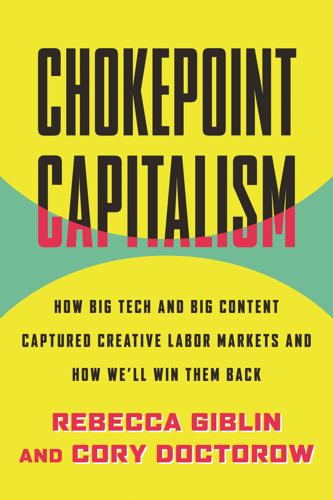
Chokepoint Capitalism
by
Rebecca Giblin
and
Cory Doctorow
Published 26 Sep 2022
In California, the fight to enshrine worker misclassification in law hit a peak in 2020, when gig economy companies spent an unprecedented $200 million to pass Proposition 22—outspending nearly all the races for actual seats in the state legislature combined.11 Predictably, California businesses started firing their “essential” workers within weeks of its passage, replacing them with scabs whose boss was an app.12 As we go to press, Uber and Lyft are leading a charge to spend $100 million to put a Prop 22–style measure on the ballot in Massachusetts for the 2022 mid-term elections (one spot of good news: a drafting error in California’s Prop 22 led to a court’s invalidating the measure, though the state Supreme Court was yet to rule on the appeal as we went to press).
…
Press, “Amazon, Vanguard of Class War,” This Machine Kills, ep. 62, podcast audio, Apr. 21, 2021, https://soundcloud.com/thismachinekillspod/62-amazon-vanguard-of-class-war-ft-alex-n-press. 11. George Skelton, “It’s No Wonder Hundreds of Millions Have Been Spent on Prop. 22. A Lot Is at Stake,” Los Angeles Times, Oct. 16, 2020, https://www.latimes.com/california/story/2020-10-16/skelton-proposition-22-uber-lyft-independent-contractors. 12. Mike Dickerson, “Vons, Pavilions to Fire ‘Essential Workers,’ Replace Drivers with Independent Contractors,” Knock LA, Jan. 4, 2021, https://knock-la.com/vons-fires-delivery-drivers-prop-22-e899ee24ffd0. 13. Board of Governors of the Federal Reserve System, “Report on the Economic Well-Being of U.S.
…
See radio broadcast industry Brook, Becky, 227 Buckmaster, Jim, 39 Buffet, Warren, 6 Burgess, Jean, 124 Burgess, Richard, 54, 82, 90, 171 Caldas, Charles, 72 California tech industry, 165, 249 Canada, 189, 236 capital, 246–47 capitalism, 4–5, 13 Carstensen, Peter, 10, 23, 148 Carter, Jimmy, 102 Chance the Rapper, 62 Chapel Hill, NC, 239–41 Checkm8, 120 Chen, Steve, 124 Chicago school of economics, 3–4, 5, 92–93, 146–47, 213 chickenization, 96 Childish Gambino, 73 China, 122–23 chokepoint capitalism, 9–10 cinema, 242 Citizens United case, 152 class action lawsuits, 248 Clear Channel, 90, 94 Coker, Mark, 22 Cold Case (TV series), 105 Coldrick, Annabella, 225 Cole, Henderson, 243–44 collective action: antitrust barriers to, 171–72; arbitration, 166–67; atomization of labor and, 31; collective ownership, 229–30; creator visibility and power, 169–70; importance of, 246–47, 256; job guarantees, 251–56; organizing, 178–79; private coordination and, 171–72; Writers Guild of America (WGA), 173–77 college tuition, 249 Comcast, 5 command economy, 13 Compaq, 201 comparison, 170 competition, 3–6, 13, 173 competitive compatibility (comcom), 202–4, 206–11 Computer Fraud and Abuse Act (CFAA), 200, 209 computer universality, 197–99 conduct remedies, 148 Conger, 183 consent decrees, 100 consumer debt, 249 consumer harm standard, 117, 146, 173, 250 consumer rights movement, 145–46 consumer welfare, 4, 147 Content ID, 129–35 contextual ads, 231–32 contract labor, 173 cookies, 44 copyright: about, 63–65, 246; anticircumvention laws and infringement, 209; freedom of contract, 184; industrial aggregation of, 57–58, 60–61, 181–82; orphan works, 189, 192–94; registration, 192; reversion proposals, 189–95; reversion rights, 183–89; Statute of Anne (1710), 182–83; term extension, 257; termination law, 186–88; US Copyright Act (1976), 183–84; use-it-or-lose-it rights, 194–95; works for hire, 185–86; and YouTube, 125–29 corporate mergers, 5 corporate personhood, 258 cost moats, 6 COVI D-19, 97, 101, 254 Craigslist, 39–42 Creative Artists Agency, 104, 107, 176 Creative Commons licensing, 151 creative workers: about, 3, 5, 14–19; interoperability and, 203; pay and wages, 16–17 Cross, Colleen, 156 culture, 14 Culture Crash (Timberg), 110–11 culture markets, 3, 13, 14–15 Cumulus Media, 94 data moats, 6 Dayen, David, 94 The Death of the Artist (Deresiewicz), 10 Deezer, 68, 73, 163 The Deficit Myth (Kelten), 255 Dell, 201 Deresiewicz, William, 10 device manufacturers, 43 diapers.com, 37 Digital Millennium Copyright Act (DMCA), 25, 26, 28, 38, 128, 134, 199–200, 208–9 digital rights management (DRM), 25–28, 33–34, 37–38, 202 Dinielli, David C., 50 Discovery Network, 215 Disney, 2, 161–62, 172, 212–13 Doctorow, Cory, 34, 116, 227 domain spoofing, 49 DoorDash, 166–67 DOS, 201 DRM (digital rights management), 25–28, 33–34, 37–38, 119, 120, 121 Drummond, David, 127 Dryhurst, Mat, 67, 220, 238 eBay, 40 ebooks market, 24–33, 37–38, 238 ecology movement, 251 economic rents, 118–21 The Economics of Imperfect Competition (Robinson), 10 Ek, Daniel, 84 Electronic Frontier Foundation, 202, 209 Epic Games, 115–18, 119–20 Epidemic Sound, 81–82 European Union: App Drivers and Couriers Union, 171; competition regulation, 233–34; Copyright Directive (2019), 195; dispute resolution, 166–67; General Data Protection Regulation (GDPR), 136–39, 144, 171, 231; payment data disclosure, 162, 164; press publishers’ right, 233–34; pro-creator policies, 257; remuneration legislation, 214 The Everything Store (Stone), 21 Excel, 201 Facebook, 2, 18, 45–51 Fairchild Semiconductor, 165–66 Fair Labor Standards Act, 150 fair use/dealing, 130, 189 film scoring, 215 Forbes, 47 Fortnite Battle Royale, 115–18 Foster, Alan Dean, 161–62, 212–13, 215 France, 233 freedom of contract, 184 free market, 118–21 Freire, Paulo, 237 Friedman, Milton, 152, 153, 252 Frisch, Kevin, 48 Game Workers Unite (GWU), 239 gaming industry, 115–18, 239 Gates, Rebecca, 3 Gateway, 201 Gaye, Marvin, 63–64 Gazelle Project, 21 General Data Protection Regulation (GDPR), 136–39, 144, 231 geography, and labor market, 15–16 Germany, 214 Getty Images, 229 Gibbs, Melvin, 3 Giblin, Rebecca, 186, 187, 193, 194 gig economy companies, 249 Gilded Age, 178–79 Gioia, Ted, 64 Glatt, Zoë, 133 Glazier, Mitch, 186 Goldenfein, Jake, 235 Goodman, David, 106, 175, 176 Google: about, 2, 7, 10, 15, 18; in Australia, 235; Content ID system, 129–35; and Epic Games, 116, 117; and General Data Protection Regulation (GDPR), 136–39; news and advertising, 42–45; News Showcase, 234; streaming share, 83; third-party cookies, 232; YouTube acquisition, 125–29, 134 Google Classroom, 210 Green, Joshua, 124 Green, Matthew, 209 Hachette, 23, 28 Haggard, Merle, 166 Harcourt, Amanda, 70, 83 hate, and profits, 95 health insurance, 249, 256 Herndon, Holly, 66–67 Hind, Dan, 244 hip-hop, 61 horizontal integration, 45, 46, 57, 69–70, 97 Howard, George, 82 HP, 199 Huang, Andrew, 209 Hundt, Reed, 90 Hurley, Chad, 124, 128 Hwang, Tim, 46, 50 IBM, 149, 201 ICM Partners, 104 iHeartMedia, 18, 56, 90, 91, 94 Imeem, 133 independent cinema, 242 indyreads, 241–42 information, 14 Intel, 166 International Confederation of Authors and Composers Society, 67 interoperability: adversarial, 201–3; competitive compatibility (comcom), 202–4, 206–11; computer universality, 197–99; digital lock-in, 196–97; DMCA and, 199; as essential, 120; interoperator’s defense, 210; mandated, 204–6; physical lock-in, 196; video streaming, 198; virtual machines, 198; voluntary, 200–201 iWork, 202 Japan Fair Trade Commission, 258 Jay-Z, 2, 160 Jennings, Tom, 201 Jensen, Rich, 237 job guarantees, 251–56 Johannessen, Chip, 105 Johnson, Dennis, 21–22 Johnson, Paul, 78 Kanopy, 242 Kanter, Jonathan, 147 Karim, Jawed, 124 Karp, Irwin, 184 Kates, Mark, 62 Keating, Zoë, 66, 68 Kelten, Stephanie, 255 Khan, Lina, 6, 147 Kindle ebook store, 26–34, 37–38 Kindle Unlimited, 159–60 Kirkwood, John, 173 Klein, Naomi, 152, 254 Knowledge Ecology International, 153 Kobalt, 73 Kowal, Mary Robinette, 212–13 Kun, Josh, 59 labor, 5–6, 253–54 labor, job guarantees, 251–56 labor market and geography, 15–16 LaPolt, Dina, 61 lending right, public, 242–44 Leonard, Christopher, 96 leveraged buyouts, 91–93 libraries, 35–36, 241–44 Linda, Solomon, 188 “The Lion Sleeps Tonight” (song), 188 literary agents, 23 litigation costs, 166–67 live music industry: grind and difficulties of, 97–98; Live Nation consolidation of, 98–103; scalping, 98, 100 Live Nation: about, 2, 18, 56; antitrust remedies, 148; domination of industry, 97–103 Livingstone, Bruce, 229 local public ownership models, 239–42 location data, 50 Lofgren, Zoe, 209 Lotus 1-2-3, 201 Love, Courtney, 53 Love, James, 153 Lovett, Lyle, 53 Lyft, 249 Lynn, Barry, 22 Lynskey, Orla, 15 Macmillan, 30 Maker Studios, 133 Malamud, Carl, 130 mandated interoperability, 204–6 Manne Seminars, 103 market power, 13–14 Marrakesh Treaty to Facilitate Access to Published Works for Persons Who Are Blind, Visually Impaired or Otherwise Print Disabled, 153 Marshall, Josh, 43 Marx, Paris, 239 May, Susan, 154, 156, 158–59 Medicare for All, 256 Meese, James, 232, 235 Melville House Publishing, 21–22 Merlin, 71–72, 77 # Me Too, 47 Microchip Technology, 166 Microsoft, 201 middlemen, 46 Mills, Martin, 59 Minogue, Kylie, 3 moats, corporate, 6–7, 136 monopolies, 3–6, 9–10, 11–12, 118–19, 146, 256–59; maintenance of monopoly, 58 Monopolized!
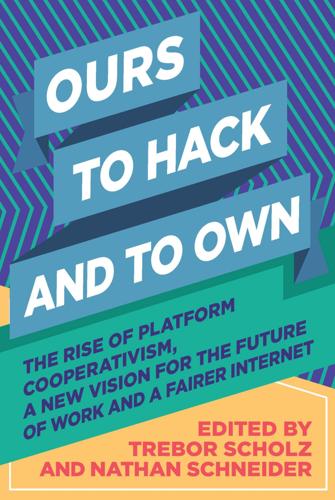
Ours to Hack and to Own: The Rise of Platform Cooperativism, a New Vision for the Future of Work and a Fairer Internet
by
Trebor Scholz
and
Nathan Schneider
Published 14 Aug 2017
A protective legal framework is not only essential to guarantee the right to organize and the freedom of expression but it can help to guard against platform-based child labor, wage theft, arbitrary behavior, litigation, and excessive workplace surveillance along the lines of the “reputation systems” of companies like Lyft and Uber that “deactivate” drivers if their ratings fall below 4.5 stars. Crowd workers should have a right to know what they are working on instead of contributing to mysterious projects posted by anonymous consignors. At its heart, platform cooperativism is not about any particular technology but the politics of lived acts of cooperation.
…
Perhaps the businesses that have fueled much of the world’s economic growth in recent decades have instead been in highly competitive industries, leveraging specialized high-variance talent and requiring large technological investments. But if one thinks about it, today’s sharing-economy platforms do exhibit some characteristics in common with Sunkist, and a worker-owned equivalent to Lyft and Uber seems quite feasible. Point-to-point urban transportation is a fairly uniform service in an industry with a limited amount of competition. Once the technology associated with “e-hail” and logistics is commoditized, which it will be, the economic fundamentals for the emergence of a platform cooperative would appear to be in place.
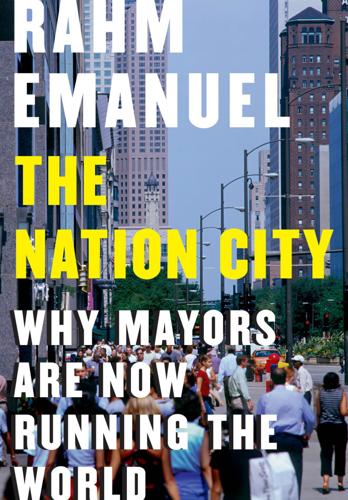
The Nation City: Why Mayors Are Now Running the World
by
Rahm Emanuel
Published 25 Feb 2020
We also found some money in a federal program called Congestion Mitigation and Air Quality Improvement. We had a start, but we needed more. So I put on my dancing shoes and went down to Springfield. I cajoled our state to change TIF regulations so we could apply TIFs to transportation. We also levied a first-ever fee on the ride-sharing companies Uber and Lyft, which raised $16 million in its first year (2017). We used that money to raise $180 million in bonds to be used for capital improvement. We did this—the biggest modernization of our transit system in the city’s history—without raising our tax rates or fare increases, and without a new federal transportation bill.
…
The idea is to help the students cope with such feelings as frustration and to “think about their thinking.” This is vitally important: Much of the violence we see in our cities is impulsive, an overreaction to provocation. I loved the program from the beginning, and I did much to enhance and boost its reach. We funded some of it from a $10.4 million settlement we received after we sued Uber and Lyft for inadequate background checks on their drivers. This idea was hatched at the University of Chicago Crime Lab. We started to scale it up, and it now reaches 7,000 young men and is being copied by other cities, such as Boston. The goal is to reach all young men in crime-ridden neighborhoods by ensuring they are in a mentoring program from seventh to eleventh grades.
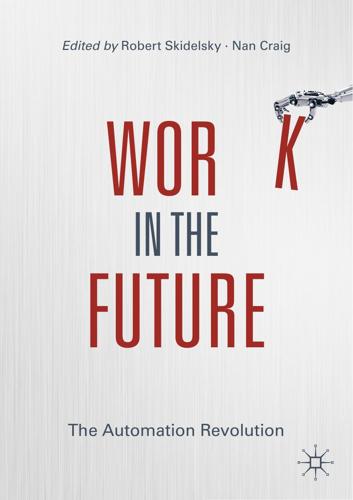
Work in the Future The Automation Revolution-Palgrave MacMillan (2019)
by
Robert Skidelsky Nan Craig
Published 15 Mar 2020
After an initial setback as workers were unsure how to organise and fight for their rights in these new business models, the last year has seen workers striking back in increasingly significant ways. Uber drivers, for instance are attempting to build unions; Deliveroo drivers are attempting to as well; and many of these lean platform companies are facing a number of lawsuits. Uber had to pay $100 million in one settlement; Lyft had to pay $27 million in another settlement; Postmates is currently facing an $800 million suit.6 One lawsuit for Uber estimated they would owe drivers $852 million if they were deemed employees and not independent contractors. Uber retorted that it would only be $429 million.7 The result of this worker pushback is that these very low margin businesses are going to become even more unprofitable in the future, and the business model is unlikely to expand much further.
…
Strong, 99 Artisans, 12, 29, 38, 74, 93, 94 Attitudes to work, 1, 4, 53–62, 73, 75 Aubrey, 184 Austria, 68, 196 Authenticity, 116 Authority, 120, 165 Automation restrictions on, 95 speed of, 21, 137 task automation vs job automation, 92, 93, 110, 141 Autonomous cars, 114, 115, 118 Autor, David, 59, 126 Autor Levy Murnane (ALM) hypothesis, 126–128, 131 B Bailey, Olivia, 180 Bairoch, Paul, 44, 46 Banking (automation of ), 87, 147 Bargaining, 68, 70, 177, 181, 182, 184, 185 Bastani, Aaron, 179n2 Beckert, Sven, 44 Berger, Thor, 95 Bessen, James, 4 Blumenbach, Wenzel, 41 Bosch, Gerhard, 179 Bostrom, Nick, 112, 113 Bourgeois household, 39 Brain and AI, 113 analagous to computer, 100, 103, 104, 115 Brown, William, 185 Bullshit jobs psychological effects, 162 Bureaucracy, 169 C Capitalism, 12, 17, 28, 53, 57, 58, 61, 75, 135, 159 Capper, Phillip, 127, 128 Care work, 3, 48, 75, 117, 178 Carlyle, Thomas, 28 Catholic, 74 Central Europe, 38, 40 Centralisation, 69, 175, 176 Chalmers, David, 103 Chatbots, 91 Chen, Chinchih, 95 Chess (and AI), 112 China, 95, 135 Christian (view of work), 74, 75, 161, 166 Clark, A, 60 Class, 13–15, 17, 30, 39, 43, 46, 47, 118, 159, 160, 162, 165, 172 Classical economics, 54, 55 Climate change, 30, 198 Cloud computing, 139, 140 Coase, Ronald, 70 Coats, David, 184, 185 Collective bargaining, 68, 181, 182, 185 Communism, 13, 57, 58, 61 Competition, 12, 16–18, 39, 91, 94, 112, 115, 119, 139, 140, 152, 199 Index Computational Creativity, 109, 115, 120, 121 Computer aided design (CAD), 34, 35 Computer programming, 100, 116 Computer revolution, 90, 94, 95, 99 Computers, 20, 34, 84, 86, 90, 92–94, 99–107, 110, 111, 115, 116, 120, 131, 134, 146, 147, 151, 197 Consciousness of AI, 110–111 the hard problem, 103 of humans, 105 objective vs. subjective, 102, 103 Consumerism/consumer society, 30, 74, 161, 194 Consumption, 3, 5, 12, 13, 16, 19, 38, 41, 56, 59, 61, 62, 66, 85, 88, 166, 176, 192, 194, 197, 199 Contested concepts, 120 Cooperatives, 40, 61, 69 Craftsmanship, 3, 11, 35, 36, 39, 194 Craig, Nan, 4, 179 Creative work, 3, 48, 74 Creativity, 3, 5, 57, 91, 105–107, 110, 120, 121, 193–195 D D’Arcy, Conor, 177 Data, 2, 84, 92, 107, 129, 130, 137–140, 146, 149, 150, 153, 178, 191, 197, 198 Davies, W.H., 31 De Spiegelaere, Stan, 181, 183 205 Deep Blue, 91, 112, 129, 130 Dekker, Fabian, 180 Deliveroo, 136 Demand effects on automation, 4, 21, 86 elasticity, 86 of work, 4, 13, 15, 16, 76, 158, 164, 180, 199 Democracy, 28 Denmark, 68, 177, 180 Dennett, Daniel, 100, 102, 103 Developing countries, 145 Digital economy, 5, 19, 125–132, 140 Digital revolution, 70 Division of labour, 11, 35, 38, 43, 44, 55 Donkin, Richard, 3 Dosi, Giovanni, 192, 195 Do what you love, 73, 74, 76 Dreyfus, Herbert, 100 E Economics, 1, 4, 5, 7, 10, 12, 14, 15, 18, 29, 30, 53–62 Economic view of work, 53–62 Education, 41, 42, 48, 67–69, 126, 131, 169, 171, 196, 197 Efficiency, 5, 16, 75, 159, 168, 184 Empathy, 106, 107 Employment law, 68 rates, 67, 68, 70 English East India Company, 44 Entrepreneurs, 29, 70, 77, 190, 192, 197, 199 Environment, 25, 31, 56, 70, 87, 91, 109, 111, 113, 120, 178, 198 206 Index Equality of opportunity, 69 of outcome, 69 social, 163 Ethics of AI, 6, 110, 119, 145–153, 197 stagnation of, 151–152 of work, 28 Exit, 69 Experience, 36, 61, 85, 90, 94, 99–105, 116, 119, 189, 190 F Facebook, 136–141, 161 Factory system, 29–30 Families, 3, 26, 29, 37–48, 75, 76, 138, 159, 162, 178, 196 Feminist (arguments about work), 79 Finance, 48, 87, 170, 197 Fire, harnessing/discovery of, 29 Firestone, Shulamith, 159 Firms, 16, 17, 68, 70, 85, 87, 133, 148, 149, 151, 152, 168, 169, 172, 190 Flexicurity, 68 Ford, Henry, 30 Ford, Martin, 2, 59, 106 France, 4, 6, 66–70, 177, 181, 182 Franklin, Benjamin, 28 Freeman, Chris, 192 French Revolution, 43 Frey, Carl Benedikt, 4, 180 Friedman, Milton, 171 Fuzzy matching, 148, 149 G Galbraith, JK, 66 GDP, 19, 178 Gender, 38, 43, 44, 48, 151, 178 Gendered division of labour, 38, 43, 44 Germany, 6, 177, 180–182, 196 Gig economy, 27, 184 Globalisation, 20, 30, 90, 95 Google Google Cloud, 140 Google Home, 140 Google Maps, 35 Google Translate, 106 Google DeepMind, 112, 119 Gorz, A., 59 Graeber, David, 6, 76, 157, 161, 168 Greek ideas of work, 74 Growth, 2, 6, 7, 12, 25, 27, 30, 31, 55, 69, 75, 85, 86, 88, 110, 126, 128, 130, 135, 169, 176, 180, 183, 185, 190, 192, 198, 200 H Happiness, 5, 62, 195 Harrop, Andrew, 180 Hassabis, Demis, 119 Hayden, Anders, 182, 183 Healthcare, 3, 87, 94, 117, 165, 197 Heterodox economics, 54, 56, 62 Hierarchy, 46, 48, 55, 69, 170 High-skilled jobs, 128, 134 Homejoy, 135 Homo economicus, 56, 57 Homo laborans, 3 Homo ludens, 3 Household economy, 4, 38–40, 45, 47 Housewives, 42, 43, 46, 47 Housework, 39, 40, 42, 44, 47 Hunter-gatherers, 11, 26, 27, 30 Index I Idleness, 54 India, 44–47 Industrial Revolution, 2, 4, 14, 29, 37, 75, 93, 94, 175, 177, 190, 191 Inequality, 67–69, 86, 87, 192, 193, 199, 200 Informal economy, 47 Information technology, 86, 161 Infrastructure digital, 140 physical, 103 Innovation, 6, 10, 14, 16, 18, 34, 67, 69, 189–199 process innovation vs. product innovation, 16, 18, 190–191, 195 International Labour Organisation (ILO), 193 Internet of Things, 139, 191 Investment in capital, 114 in skills, 70 J Japan, 117 Jensen, C, 55 Job guarantee, 172 Jobs, Steve, 73 Journalism automation of, 118 clickbait, 118 Juries, algorithmic selection of, 150, 153 K Karstgen, Jack, 196 Kasparov, Garry, 91, 112, 129, 130 207 Katz, Lawrence, 198 Kennedy, John F., 160 Keune, Maarten, 180 Keynes, John Maynard, 6, 9, 11, 27, 60, 61, 160, 161, 176 King, Martin Luther, 171 Knowledge (tacit vs. explicit), 127 Komlosy, Andrea, 4, 75 Kubrick, Stanley, 26 Kurzweil, Raymond, 101, 103, 104 Kuznets, Simon, 190 L Labour, 3, 10, 11, 13–16, 18–21, 29, 34–36, 38, 43–46, 55, 59, 65–70, 73–76, 85–87, 89, 90, 93, 94, 96, 114, 125, 126, 128, 130, 131, 141, 158, 165, 176–180, 183–184, 189, 190, 192–196, 199–200 Labour market polarisation, 67, 70, 126 Labour markets, 67, 68, 70, 87, 90, 96, 125, 126, 128, 130, 131, 141, 178, 183–184, 189, 192, 193, 195, 196, 199–200 Labour-saving effect, 86 Lall, Sanjaya, 193 Language translation, 105, 106 Latent Damage Act 1986, 127 Law automation of, 145, 152, 153 ethics, 145–153 Lawrence, Mathew, 177 Layton, E., 58 Le Bon, Gustave, 101 Lee, Richard, 26 Legal search/legal discovery, 148–150 208 Index Leisure, 3, 10, 11, 19, 27, 48, 55, 56, 59–62, 65, 77, 79, 117, 118, 159, 161, 178, 180, 182, 184, 191, 195 Levy, Frank, 126 List, Friedrich, 193 Love, 55, 74, 76, 99, 103, 106, 112, 118 Low-income jobs, 96 Loyalty, 69 Luddites, 2, 14, 18, 35, 59, 94, 96 Lyft, 136 M Machine learning, 59, 84, 90, 91, 96, 138, 139 Machines, 2, 5, 10, 12–15, 17, 19, 20, 35, 36, 38, 59, 84–87, 90–96, 99–103, 105–107, 109–121, 127–131, 138, 139, 145, 147, 148, 160, 168, 191 Machine vision, 120 Malthusian, 19 Man, Henrik de, 79 Management, 27, 30, 41, 69, 70 management theory/ organisational theory (see also Scientific management) Mann, Michael, 46 Manual work, 1 Manufacturing, 86, 87, 90, 94, 95, 176, 184, 198 Markets/market forces, 5, 6, 21, 38, 44–46, 67, 68, 70, 79, 85–88, 90, 96, 120, 125, 126, 128, 130, 131, 140, 141, 150, 152, 159, 164, 165, 171, 178, 183, 189–193, 195, 196, 198–200 Marx, Karl, 17, 18, 27, 56–59, 61, 62, 78 Matrimonial relationships, 37 McCormack, Win, 159 Meaning, 4, 9, 10, 19, 25, 54, 57, 58, 66, 73, 76, 78, 79, 84, 106, 116, 176, 180 Mechanisation, 15, 17, 19, 20, 192 Meckling, W., 55 Méda, Dominique, 183 Medical diagnosis (automation of ), 128, 129 Menger, Pierre-Michel, 4 Mental labour, 3 Meritocracy, 28 Middle-income jobs, 90, 93, 94 Migration, 40, 47 Minimum wage, 67, 69 Mining, 26, 38, 197 Mokyr, J., 59 Monopolies, 6, 136, 138–140 Morals/morality, 48, 77, 159, 160, 162, 164, 166, 167 Moravec’s paradox, 131 Murnane, Richard, 126 N Nagel, Thomas, 100, 102 National Living wage, 184 Needs vs.
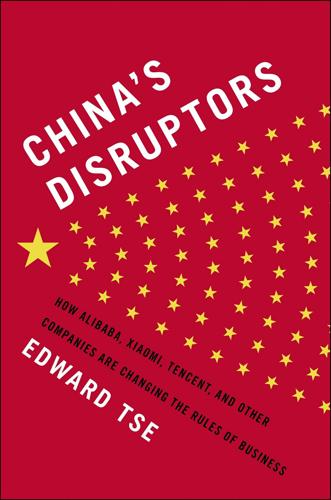
China's Disruptors: How Alibaba, Xiaomi, Tencent, and Other Companies Are Changing the Rules of Business
by
Edward Tse
Published 13 Jul 2015
Alibaba’s interest in American companies has also grown rapidly. Even before its New York listing, its U.S. investment team had spent more than $500 million buying minority stakes in shipping service Shoprunner, mobile messaging application Tango, luxury e-commerce business 1stDibs, and travel-sharing business Lyft. As they internationalize, Chinese companies will hire an ever greater number and range of foreign executives and other staff who can bring expertise unavailable in China. These people will bring knowledge of how to structure and run global operations, how to develop capabilities where Chinese business are currently weak such as marketing, and how best to enter markets such as the United States that are very different from China’s.
…
A123 Systems, 130 ABN AMRO, 150 Abrami, Regina M., 93–94 Adidas, 195 Africa, rise of Chinese business in, 137 agriculture, 43, 109 Airbnb, 129 Airbus, 73, 110, 213 air-conditioning business, 12–13 Alcatel, 84, 102 Alibaba.com, 34, 39, 57 Alibaba Group, 10, 11, 33–40, 41, 49, 52, 53, 60, 62, 72, 80, 83–85, 87, 99, 100, 101, 136, 139, 148, 151, 153, 162, 184, 185, 191, 194, 197, 201, 215, 222, 225 innovation by, 94 interest in American companies, 135 IPO of, 33, 85, 90 lending transformed by, 39, 149–50 overseas listing of, 85, 89 sales by, 33–34 share listing of, 61 Sina Weibo purchased by, 87–88 start of, 37 water quality mapped by, 170 Alipay, 35–36, 39, 78, 88, 99, 192 Alta Devices, 123 Aluminum Corporation of China, 119 Amazon, 57, 68, 69, 95 Amazon.cn, 57 AMC Entertainment, 120 Amelio, William, 126, 127 Andersen Consulting, 95 Angola, 137 Apple, 67, 68, 69, 89, 112, 128 Asian financial crisis of 1990s, 16 B2B business, 36, 38, 39, 184 BAIC, 133 Baidu, 11, 39, 52, 81, 82, 83–84, 87, 88, 139, 158, 161, 191, 225 copyright violations by, 114 founding of, 49 innovation by, 94 IPO of, 50 overseas listing of, 89 Bain & Co., 151, 159 Barra, Hugo, 197 Beijing Zhongkuan, 45 Biden, Joe, 93 Bill and Melinda Gates Foundation, 109 BlackBerry, 136 Blackstone Group Asia, 224 BMW, 180 Boeing, 73, 110, 213 Booz & Company, 25, 178 Bosch Siemens, 196 Boston Consulting Group, 20, 25 brand development, 122 brand loyalty, 19–20 Brazil, 68, 139 Broad Group, 20, 54, 63, 148, 216–18, 221, 225 Broad Sustainable Building, 217 Broad Town, 216 Brown, Shona L., 182–83, 185–86, 187 BYD, 20, 76, 134 C2C market, 34–35, 184 C919, 110–11 Caixa Seguros, 123 cars, 12, 20, 44, 74, 76, 123, 130–34 Chang, Gordon, 9 Chang’an, 133 Changhong, 76 Chen, Steve, 112 Chen Dongsheng, 45, 54, 55, 148, 168–69 Chengdu, 24 Chen Haibin, 12, 155–56 Chery, 134, 138 China, People’s Republic of: agricultural output in, 43, 109 authoritarian rule in, 22–23 billionaires in, 8, 10, 45, 48 buying-power in, 19 consuming classes, 72–77, 74, 151 critics of, 8–9 debt in, 78, 80, 167 Deng’s reforms in, 17, 27, 28, 42–43, 47, 132, 140, 148, 166, 167, 176 earthquake in, 217 economic growth in, 8, 25, 70–71, 77–79, 97, 154, 165, 209–10 exports of, 9, 44, 48, 79, 104, 109, 133, 134–36, 140, 152, 188, 214 foreign currency reserves of, 22 founding of, 3 high-net-worth individuals in, 150, 151 housing privatized in, 48–49 hybrid government of, 71, 167, 210, 212, 213–16 innovation in, 93–116 institutional development in, 166, 195, 221 logistics costs in, 78 monthly wages in, 98 multinationals invited into, 46–51, 70, 71, 72–77, 188–90, 192, 195, 197–201, 222–23 number of companies by ownership in, 15 opportunities in, 41, 49–50, 115–16, 140–41, 180–81, 203–30 outbound investment from, 28, 120–24, 121, 138–39, 140 per capita GDP of, 113 per capita income in, 229 pioneers of 1980s in, 46 R&D spending in, 106–7, 107, 121, 122, 192, 193 revenues by company type in, 15 rising urban class in, 96 scale of, 71–72, 83, 85, 180–81 traded goods of, 109 trends shaped by, 18–19 U.S. and European investment in, 181, 223 as world’s biggest manufacturer, 19 China Auto Rental, 194–95 China Banking Regulatory Commission, 149 China Development Bank, 138 China Entrepreneurs Forum (CEF), 145, 169, 171, 223 China Food and Drug Administration, 155 China Guardian Auction Company, 45 China Investment Corporation, 149 China Merchants Bank, 205 China Mobile, 102, 212 China National Offshore Oil Corporation, 120 China Pages, 37 China Post, 100 China Resources Enterprise, 180 China Smart Device Innovation Fund, 113 China Telecom, 102 China Unicom, 102 China UnionPay, 36, 78 Chinese Academy of Sciences, 44 Chinese Academy of Sciences Computer Technology Research Institute New Technology Development Company, 54 Chinese People’s Political Consultative Conference, 81 Chongqing, 193, 224 Chu, Gary, 196 Cisco, 105 Citic Pacific, 123 climate change, 25, 29, 227, 229 clothes, 9 Club Med, 194 Cold War, 23 Coming Collapse of China, The (Chang), 9 Commercial Aircraft Corporation of China (COMAC), 110–11, 213 Communist Party, China, 22, 42, 44, 55, 77, 211, 218, 220, 226 purge of, 4 “competing on the edge,” 181–86, 188 computers, 9, 11, 125–28, 178 Congo, 137 Consumption Promotion Month, 73 copyright, 114 corporate flexibility, 190, 191–92 costs, controlling of, 97 counterfeiting, 75 creative destruction, 163 Ctrip, 113 Cultural Revolution, 4, 42, 43, 54, 207 Daimler, 180 Dalian Wanda, 48, 88, 120, 172 Datascope Corporation, 123 decision-making, 23, 58, 190–91, 211 Decorvet, Roland, 196 Dell, 95, 96, 126, 128 Deng Xiaoping: reforms of, 17, 27, 28, 42–43, 47, 132, 140, 148, 166, 167, 176 southern tour of, 44 Detroit Electric, 133 Development Research Center, of the State Council, 45 DHgate.com, 12, 57 Dian Diagnostics, 155–57 Diaoyu, 181 Digital China, 148 Ding Xuedong, 149 D’Long, 13 Dongfeng, 133 dotcom bubble, 37 Drivetrain Systems International, 133 eBay, 34, 40 e-commerce, 10, 11, 20, 38, 39, 78, 81–84, 88–89, 96–97, 99, 225 Economist Intelligence Unit, 140 education, 27 rising standards of, 98 Eisenhardt, Kathleen M., 182–83, 185–86, 187 Emerald Automotive, 133 energy, 9, 19, 25, 29, 42, 115, 119, 137, 186, 216–17 energy-efficient buildings, 216 engineering, 27 entrepreneurs, 56, 199–201, 226–28, 229–30 ambition of, 55, 57–61 boundaries pushed by, 26–27 everyday life changed by, 164–65 Gang of ’92, 45–46, 54 innovation by, 93–116 international talent of, 196–97 1980s generation of, 51–53 origins of, 42–46 overseas, 139 pride of, 55, 57 reforms sought by, 145–49 shared heritage of, 55, 61–64 strengths of, 24–26 see also specific entrepreneurs environment, 60, 168, 169–70 Epic Games, 135 Ericsson, 101, 102, 105 European Union, R&D spending in, 107 EV71 virus, 109 Evergrande Real Estate, 48 Export-Import Bank of China, 138 Facebook, 83, 87, 94, 222 Fanfou.com, 53 Feng Lun, 45–46, 148 finance, 149–53, 157, 162, 163, 186, 192–93 deregulation of, 164, 212–13, 229 1st Dibs, 135 Fisher & Paykal, 7 Fisker Automotive, 130 Food and Drug Administration, U.S., 123 Forbes, 10 Ford Motor Company, 123, 131, 133 Forever 21, 195 Fosun, 123, 138, 148, 155, 156, 194 Foursquare, 129 Foxconn, 112 Gang of ’92, 45–46, 54, 148, 168–69 Gao Feng Advisory Company, 25 Gavekal Dragonomics, 73 Geely Auto, 12, 44, 76, 123, 131–34, 138, 175, 185, 212 General Mills, 196 General Motors, 133, 137, 179 Gerke, Roland, 196 Germany, 121, 216 doctorates in, 108 global financial crisis, 73, 78 Global Solar Energy, 123 Golden Monkey, 194 Goldman Sachs, 37, 136 Gome Electrical Appliances, 13 Google, 83, 87, 112, 127, 128, 197 Great Firewall of China, 82 Great Leap Forward, 3–4 Great Wall Technology, 76, 126 Guo Guangchang, 148 Guo Wei, 148 Haier, 3, 5–8, 10, 47, 49, 58–60, 76, 84, 94, 98, 100, 101, 175, 185, 187, 200, 208, 224 Hainan, 46 Hangzhou Wahaha Group, 52, 76 Harvard Business Review, 93–94 health-care system, 12, 153–57, 162, 163, 212 Hengan International, 12, 53, 175–78, 199, 200 Hershey, 194 Hertz Global Rental, 194–95 Hewlett-Packard, 125, 128 Hoffman-La Roche, 155 Home Depot, 180 Honda, 133 Honeywell, 190, 192, 196 Hong Kong, 68, 214, 223–24 Hong Kong Stock Exchange, 68, 86, 177 hospitals, 154–56, 212 Household Responsibility System, 43 Huang Guangyu, 13 Huang Nubo, 45, 63, 168 Huawei Technologies, 11, 20, 43–44, 47, 54, 60, 67, 75, 84, 89, 122, 128, 136, 138, 139, 140, 175, 200, 222 innovation by, 94, 101–5 Hui Ka Yan, 48 Hu Jintao, 147 Hutchison Telecom, 103 Hyundai, 133 IBM, 125, 127–28, 129, 178 ICBC, 149 ICQ, 85 IDG, 85–86 India, 68 infrastructure, 71, 78, 79, 82, 83, 85, 99, 105, 111, 114, 137–38, 153, 163, 164, 166, 188, 191, 192, 210, 223, 224 Innovation Works, 111–12 Intel Capital, 113 interest-rate liberalization, 40, 152–53 Internet, 27, 81–90, 82, 135–36, 161, 186, 197, 209–10, 218–19, 221–22 iPhone, 68, 69, 94 iQiyi.com, 162 Japan, 94, 121, 141, 216 R&D spending in, 107 JD.com, 84, 87 revenue of, 89 Jialing, 76 Jiang Jianqing, 149 Johnson & Johnson, 175 Joyo.com, 12, 57, 68 Jumei.com, 206 “just-in-time” production system, 94 Kan, Michael, 69 Kandi Technologies Group, 133 Kao, 175 KFC, 180 Kimberly-Clark, 12, 175 Kingsoft, 68 Kirby, William C., 93–94 Konka, 76 Koo, Victor, 158–59, 160, 218 Krugman, Paul, 9 Kutcher, Ashton, 129 Lardy, Nicholas, 17 Lau, Martin, 136 Lau, Ricky, 225 Lee, Hudson, 196 Lee, Kai-fu, 111–12 legal infrastructure, 114 Legend, 44 Legend Holdings, 112, 126 Lei Jun, 11, 12, 57, 67, 81, 112, 162, 197, 226 Lenovo, 11, 20, 44, 54, 67, 75, 89, 112, 139, 140, 148, 171 expansion by, 124–29, 130 revenue of, 125–26, 127, 128 Leung, Antony, 224 Levi’s, 195 Li, Richard, 85–86 Li, Robin, 11, 49, 50, 64, 81, 88, 139 liberalization, 44, 55, 71, 72, 75, 78–79, 152, 154, 166–67, 178, 181, 210, 211, 223 of interest rates, 40, 152–53 Li Dongsheng, 148 Liebherr, 5–6 Lifan, 76 Li Ka-shing, 85 Li Keqiang, 210, 215 Lin Bin, 68 Li Shufu, 12, 44, 47, 131–34, 138, 175, 185 Little Emperors, 51–53 Liu Chuanzhi, 54, 171 Liu Junling, 96 Liu Mingkang, 149 Loncin, 76 L’Oréal, 205 Lu Guanqiu, 130 Lyft, 135 Ma, Jack, 10, 33–40, 41, 47, 50, 54–55, 60–61, 62–63, 64, 86, 136, 148, 197, 201, 221 background of, 36–37 environmental work of, 60, 168, 169–70 and U.S. IPO of Alibaba, 33, 85, 90 Ma, Pony, 11, 49, 50, 60, 64, 81, 85, 86, 88, 197, 201 McDonald’s, 180 McFarlan, F.

Cashing Out: Win the Wealth Game by Walking Away
by
Julien Saunders
and
Kiersten Saunders
Published 13 Jun 2022
Last, you may consider online survey companies like swagbucks.com that will pay out a small amount of money in exchange for your time. 2 | The Gig Economy (Mid- to High Urgency, Low Upside) If you are willing to put forth slightly more effort than keystroking, you can explore the gig economy. The gig economy was born after the Great Recession of 2008 as a way to empower people who had extra time to earn money taking on small tasks, powered by technology. This gave rise to ride-sharing companies like Uber and Lyft, grocery delivery companies like Instacart and Amazon Fresh, and handyman services such as taskrabbit.com. It ranks mid- to high from an urgency standpoint because once you sign up, the platforms do almost all the work to get you your first customers. It’s also mid- to high on upside because with most of these platforms you don’t have to sell a product; you just need to make yourself available and focus on providing good service.
…
Black neighborhoods, 40 HSAs (health savings accounts), 94, 168 thehumblepenny.com, 215 I identity and constraints of labels, 191–92 decoupling from employment status, 95, 146–47, 231 maintaining, 34 and millionaire status, 233 tied to belongings, 59 See also personality types, financial impostor syndrome, 209 income assumptions about future levels of, 62 building an income portfolio, 85 dual-income households, 75–76 envisioning new ceilings for, 147 exchanging time for wages/salary, 124–27, 138 and fifteen-year careers, 75–76 focusing on earning more, 72–73 and inflation, 148 influence of boss on potential, 101 and low-wage workers, 76 median earning in 2019, 59 and net worth, 54–55 from outside your primary job, 94–95 qualitative assessments of, 148 from real estate investing, 86–88 as related to wealth, 54–55 relative value of, 90 and six-figure salaries, 147 stagnation in wages, 173 technology’s unlocking of, 139 and wage gaps, 3, 139 See also purpose(s) of income index funds advantages of, 162–63, 177–78 and author’s early investments, 157 Bogle’s championing of, 167 and compensation of financial advisers, 152–54 deflecting costly alternatives to, 169–71 and great American experiment, 158–59 and historical average returns in stock market, 162–63 low costs associated with, 161, 164–65 passive management of, 161 performance of, in 2020, 230 power of, 154–58, 171 Purple’s embrace of, 92 in taxable brokerage accounts, 168 individualism in America, 214 individual retirement accounts (IRAs), 94, 114 inflation, 148, 173 influencers, 141–45 initial public offerings (IPOs), 174 insinuation anxiety, 171 Instacart, 131 intelligence, 112 internet and content creators, 141–45 FI community on, 216–17, 220–21 as global marketplace, 139 impact on entrepreneurship, 128–29 selling on, 137, 139–40 See also social media platforms investment/brokerage accounts (unrelated to employer) apps of, 131 of authors, 168 contributing to, 97 opening, 89, 176 rounding-up programs at, 118 for short-term needs, 94 See also investments investment clubs, 170 investments actively managed funds, 160, 166, 171 authors’ self-management of, 6 calculated risks in, 174–75 and compound interest, 140, 155, 172 and consistency in investing, 175, 176 and downturns in market, 98–99, 173–74 early growth in, 167 and expense ratios, 163–64 fees associated with, 163–66, 170, 171, 172 and financial vs. fiduciary advisors, 149–54 the first $100,000, 166–69 and 4 percent rule, 66–67 and historical average returns in stock market, 162–63, 168 in individual retirement accounts (IRAs), 94, 114 and investment firms, 167 and market boom of 2020, 232–33 and matching by employers, 156, 176 and money’s ability to work harder than you can, 172–73, 228 procrastinating on, 154–55, 177 Purple’s financial independence, 92–93 reluctance to manage, 150–51 rules and richuals for, 172–78 and taxes, 165 true costs of, 163–66, 171 in years 11–15 of career, 94 See also 401(k)s; index funds; mutual funds IPOs (initial public offerings), 174 IRAs (individual retirement accounts), 94, 114 “I” statements, power of, 194 J Jackson, Michael, 101–2 Japan, average hours spent at work in, 32 Johnson, Dwayne “the Rock,” 112–13, 114 Johnson, Sue, 189 Journey to Launch (Souffrant), 217 K Kajabi, 137 karoshi, 32 thekeyresource.com, 85 King, Martin Luther, Jr., 40–41 L labels, constraints of, 191–92 lending practices, unfair, 3 lifestyles and financial freedom, 34–35 “lifestyle inflation,” 39, 61 values focused, 26, 35 work focused, 25–26 LinkedIn, 90, 134 literacy, financial, 108–11 livestreaming, 145 living below your means, 72. See also expenses loneliness, overcoming, 18 low-wage workers, 76 Lyft, 131 M m1finance.com, 131 market downturns, 98–99, 173–74 marriage average length of, 75 challenges faced in, 201 and divorces, 75, 199, 201, 234 time to devote to, 35 See also couples matching by employers, 156, 176 McKinsey study on automation threat, 126 median wealth prediction for Black individuals, 3, 53–54 media portrayals of wealth, 33–34, 221 meetups, 218–19 mercari.com, 135 meritocracy, myth of, 28 middle class, 50 Middle personality type Big 3 downplayed by, 57, 59–60 blind optimism practiced by, 62–63 characteristics of, 50–52 and compound interest, 68 and Fast Spenders personality type, 50, 51, 61 and Financially Insecure personality type, 50, 51 and lifestyle inflation, 61 meaning of “freedom” for, 69 memories of financial insecurity, 51, 60–61 possessions of, 59 and struggles with retirement savings, 51, 63 taste preferences of, 61 millennials, 76, 144 millionaires FIRE movement and Black, 29 and market boom of 2020, 232 meetups of, 219–20 status as milestone, 233 mindset, 103–20 and absence of certainty, 111, 114–16 and confidence, 112–13 and courage, 108, 111, 112–14, 117–18 and financial literacy, 108–11 rules and richuals for, 118–20 and true income potential, 107 Money on the Table (video series), 12 money’s ability to work harder than you can belief in, 65 and purchasing power of wages, 172–73 and stealth wealth, 38 transitioning to, 62 value of acknowledging, 228 moral code, following, 172 mortgage and debt reduction methods, 82 paying off, 6 refinancing, 57 multilevel-marketing businesses, 170 mutual funds about, 159–60 active management of, 160, 166 educated guesses at heart of, 160 fees associated with, 163–64, 165–66 index funds compared to, 162 underperformance of, 166 See also 401(k)s; index funds N Nasdaq index, 161 National Basketball Association, 162 National Law Center on Homelessness and Poverty, 77 needs, basic, 56–60 negativity, 48 nerdwallet.com, 131 net worth declining, 54 and income, 54–55 stating publicly, 220 NFTs (non-fungible tokens), 129 Notorious B.I.G., 198 O opportunities, evaluating, 129–30, 129 oppression, exposure to, 210 optimism blind, 62–63, 158 as motivator for difficult tasks, 194 options trading, 114 Orman, Suze, 155 ourrichjourney.com, 215 P parenthood and childcare costs, 30 uncertainty experienced in, 115 and work-life balance, 30 parents, supporting aging, 10, 70 passive income, 22, 65 paycheck to paycheck, living, 47, 77–78 paying yourself first, 118 PDFs, selling, 136 personality types, financial, 46–52 Fast Spenders type, 48–50, 51, 52, 61, 69 Financially Insecure type, 46–48, 50, 51, 52, 69, 233 the Middle type, 50–52 Pew Research Center, 36, 172–73 phones, faux connectedness from, 25 Playing with FIRE (documentary), 47 The Plug (Dorsey), 133 podcasts and Jannese’s success story, 124 learning about FI through, 217–18 and preferences of audiences, 145 thepointsguy.com, 131 Popcorn Finance (Browning), 218 poshmark.com, 135 positivity, pressure to sustain, 43 poverty and automation threat to employment, 126 cycle of, 47, 234 principles of cashing out, 36–41 embracing stealth wealth, 37–39 prioritizing purpose and community, 40–41 recognizing the Black tax, 39–40 “progress trap,” 64 public.com, 131 public health, negative impacts of work on, 31–32 purchasing power, impact of inflation on, 173 Purple, 91–94, 95 purpose(s) of income, 44–73 asking better questions about, 120 and Black buying power, 52–55 and breaking the consumerism cycle, 45 and financial personality types, 46–52 flexibility, 56, 60–65 freedom, 56, 56, 68–71 independence, 56, 65–68 lack of, 51–52 and retirement, 54–55 rules and richuals for, 72–73 security, 56–60, 56 and sinking funds, 119 Q quality of life, financial components of, 9 questions, asking better, 119–20 R racism, 39–40 “Raising a Family Index” (RAFI), 30 Ramsey, Dave, 155 Ray, Ola, 101–2 real estate agents, 61 real estate investing of authors, 6, 11, 87–88, 142, 143 income from, 22, 86 Kendra’s success story, 85, 86–87 1 percent rule in, 87 “Reality Check: Paycheck-to-Paycheck,” 77 reasons for cashing out freedom from burnout, 31–33 prioritizing family life, 29–30 safety from corporate change, 27–28 success on your terms, 28–29 time to do what you love, 25–26 regret/sacrifice, moments of, 100, 200–201 religious faith, 36–37 restaurants, dining in, 57 retirement difficulty saving for, 59 income’s role in preparing for, 55 lack of successful examples of, 22 and Middle personality type, 51 and pending crisis, 210 See also retirement accounts retirement accounts IRAs (individual retirement accounts), 94, 114 and matching by employers, 156, 176 maxing out, 94, 168 procrastinating on, 154–55 of self-employed, 176 See also 401(k)s; index funds rewarding yourself, 81–82 Rice, Bradley, 212 “richuals” (term), 17 ride-sharing companies, 131 risk managing feelings of, 116 and the myth of full confidence, 113–14 and uncertainty, 116 Rock, Chris, 33 role models, lack of relatable, 68 rounding-up programs at banks, 118–19 S S&P 500 index fund, 161, 163, 173, 230 sacrifice/regret, moments of, 100, 200–201 saving money/savings authors’ rate of, 11 conventional approach to, 226–27 conversations about, 193–94 and labeling people as “savers,” 191 lessons passed to children on, 226–27 low levels of, 4, 45 and Middle personality type, 50 reframing practice of, 193–94 sacrifices made for, 200–201 security as first purpose of income, 56–60, 56 self-care, 32 self-defeatist language, 15 self-doubt, overcoming, 18, 111 self-employment and retirement accounts, 176 self-reliance, 64–65 selling, 137–40 shame/shaming for buying preferences, 61 and defensiveness, 195 overcoming, 18 sharing, 213–14 Shopify, 137 short-term wants/needs, 63 sinking funds, 119 skills, cultivating marketable, 83, 87, 94, 99, 147 Skillshare, 137 slavery, legacy of, 3 snowball method to paying off debt, 80–81, 81 social issues, ability to engage with, 35 social media platforms and content creators, 141–45 FI community on, 216–17, 220–21 gurus/celebrity advisers on, 223 sharing strengths/wins on, 90 Souffrant, Jamila, 217 spending.

Early Retirement Guide: 40 is the new 65
by
Manish Thakur
Published 20 Dec 2015
When it comes down to it, owning a large, powerful car is an expensive luxury that most people don't remotely get close to using to the fullest, and don't even realize the kind of luxury they have. Here are several conscientious spending alternatives: 1. Carpooling to work and split the cost of gas. 2. Signing up for a car sharing service such as Zipcar or Car2Go. 3. Use Uber or Lyft if the longer distance rides are rarer and signing up for a car sharing service doesn't add up. Get free rides just by signing up with these links and try them out if you haven't yet Savings: $8,800 Challenges: 1. Compare the cost of public transportation to all the costs of owning a car, there's probably a significant difference. 2.
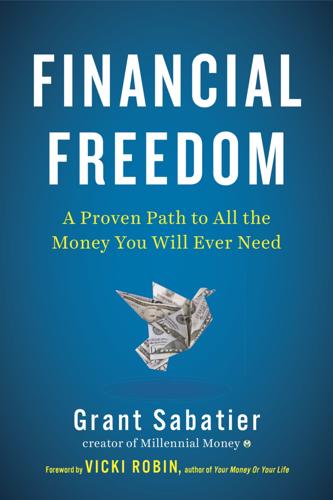
Financial Freedom: A Proven Path to All the Money You Will Ever Need
by
Grant Sabatier
Published 5 Feb 2019
There are two ways you can make money side hustling: you can work for someone else or work for yourself. If you are side hustling for someone else, the money you can make will always be limited by the number of hours you have in the day. It’s really tough to get off your nine-to-five job and hop in a Lyft to drive all night. Sure, it gives you flexibility and freedom, but no matter how much you drive for Lyft or deliver for Postmates, you’ll always be limited to your own hours and will make only as much money as those companies are willing to pay you. In other words, these gigs are not scalable. Working for yourself allows you to make a lot of money doing something that you love and gives you more control.
…
You can use that 53 minutes each day to read a book or take a nap, listen to a podcast, or even earn some extra cash by selling something online or working on one of your side gigs. If you have a couple of friends or neighbors who drive the same direction as you, then carpooling is a simple way to cut costs, one that might be even more affordable than public transportation. Another option is ride-sharing using a service like Uber, Lyft, or Waze. In some locations, ride-sharing might even be cheaper than owning a car. I know people in Los Angeles, one of the most car-dependent cities on the planet, who use ride-sharing services to get everywhere because they’re so inexpensive. THE ART OF TRAVEL-HACKING Get out and explore the world.

Gambling Man
by
Lionel Barber
Published 3 Oct 2024
Gurley’s VC firm Benchmark had led the Series A financing for Uber six years earlier. Masa snapped up a 15 per cent stake, diluting Benchmark’s position; but not before threatening to put his money into Lyft, Uber’s chief rival in the US. Gurley likened such conduct to asking for protection money. Except the protection was not forthcoming. When Uber later diversified into food delivery, Masa invested $1.5bn in DoorDash, the San Francisco-based competitor. And he ended up investing in Lyft anyway, along with fellow Japanese media company Rakuten. ‘You ended up owning less of the company and carrying more of the risk,’ Gurley recalled. ‘It was a horrific experience.’2 Not all the deals were bad.
…
Ive, Jony, 335 Jain, Anshu, 183, 184 Japan: American occupation (1945-51), 12, 17; Black Ships (kurofune) (1853), 116–17; Communist party, 13; corruption scandals at millennium, 155; culture of perfection, 6; in early post-war years, 12–14, 15–17, 178; earthquake (11 March 2011), 213–22, 223; Great Kanto Earthquake (1923), 10; high demands on quality, 65; Hiroshima and Nagasaki atomic bombs, 12; imperial expansion from 1900s, 9, 11; Kobe Earthquake (1995), 137; Masa returns to (March 1980), 47; Meiji Restoration (1868), 2, 3, 68, 116–17; myth of postwar unity/homogeneity, 17, 28–9; nuclear power in, 213–22; overthrow of Ashikaga shogunate (1573), 208; parenting tradition in, 20; personal computer revolution in, 49, 51, 53–4; real estate bubble (late 1980s), 1; relations with Communist China, 175–6; Renewable Energy Bill (2011), 219–20; resistance to change in, 48, 83–4; and Second World War, 11–12, 17, 34, 73; sensitivity to long-term purpose, 146–7, 202; tea ceremony, 206–7; technological miniaturization in, 48–9; ‘warring states’ period, 162–3 see also Japanese economy; Korean migrants to Japan (zainichi); Kyushu, island of; Tokyo; Tosu Japan Patrol Security (Secom), 64, 65 Japan Post, 155, 156, 288 Japan Research Institute, 52 Japan Telecom, 166, 171–4, 182 Japanese Association of Finance Company (JAFCO), 84 Japanese economy: Anglo-Saxon style deregulation in, 69; bubble bursts (1989), 1, 82–3, 124, 136–7; Confucian capitalists, 119; consumer electronics industry, 34, 35, 43–5, 48–9, 65–7, 89–90; ‘copy and compete’ model, 90; corporate scandals in 1990s, 124; cultural barriers to US market entry, 73, 89–90; economic miracle, 21, 48, 178; exclusion of ethnic Koreans, 10, 14, 15–19, 21–3; failure to develop US-style start-up culture, 83–4; fiscal stimulus policies in late 1980s, 70, 80–81; impact of Plaza Accord (1985), 69–70, 80; and imperial expansion, 11; industrialization, 9, 21; just-in-time manufacturing model, 48; Keidanren (business federation), 220–21; ‘Lost Decade’ (1990s), 1, 82–3, 97–9, 136–8; mobile phone market, 157, 166, 172, 173–4, 178–88, 189, 191, 193, 221, 334; neo-liberalism in post-bubble period, 155–6; real estate bubble (late 1980s), 3, 80–83, 84–5, 124, 136; ‘salaryman culture’, 3, 21–2, 124; stock market bubble (late 1980s), 80–83, 84–5; TV market, 112, 113–16, 117–19, 120, 121; weak financial governance standards, 123; zaibatsu, 5, 134 Jobs, Steve, 4, 35, 48, 56, 72, 73, 178, 189–91, 192–3; death of (October 2011), 223; fabled return to Apple, 102–3, 190; has terminal cancer, 191–2 Joshin Denki (electronics retailer), 53–4, 55 Kabuki theatre, 161 Kageyama, Takumi, 106 Kamaya, Takayuki, 203, 204, 208–9 Kan, Naoto, 214–15, 219–20 Kasai, Kazuhiko, 150, 167, 184–5, 195, 196–7, 203 Katerra (construction company), 320 Katsumata, Tsunehisa, 214 Katzenberg, Jeffrey, 236 Kawamoto, Yuko, 322–3 Kawashima, Masahide, 56 KDDI, 166, 179, 186, 187 Kelly, Brian, 126 Kennedy, Chris, 253 Khashoggi, Jamil, 278–9 Kimiwada, Kazuko, 195, 204 Kingdom Ventures, 278 Kingston Technologies, 108–11, 115, 124, 146 Kita-Kyushu, 21–2 Kitao, Yoshitaka, 96–8, 109–10, 115, 123, 124, 128, 139, 149, 150; parts company with Masa, 166–7 Kogan, Misha, 46* Koizumi, Junichiro, 155–6 Korea: divided on 38th parallel (1951), 17; Japanese annexation of (1910), 9; victims of Japanese wartime atrocities, 11–12, 17; Yangban class, 9–10, 13, 16 Korean migrants to Japan (zainichi): ‘alien registration cards’, 24, 28*; assuming of Japanese names, 10, 16–17, 28–9, 42–3, 44, 50, 78–9; dilemma of dual identity, 6, 10, 18, 23–4, 28–9, 31, 38–9, 49–50, 85–6, 211–12; in early post-war years, 12–14, 15–17; family as bedrock for, 29–30; first wave in early twentieth century, 9; legal no-man’s-land for, 10, 17, 50; massacres of (1923), 10; naturalization under ethnic name, 79*; as outcasts in 1950s/60s, 17–18, 28–9; and pachinko industry, 21–2, 50; prejudice/violence against, 10, 18, 28, 50; and Second World War, 11–12; Son’s family history, 6, 9–11, 13–14, 15–17, 211–12 Kotick, Bobby, 72–3 Kraft, 248 Kravis, Henry, 239 Kroll (corporate espionage company), 241 Kudo, Hiroshi, 54 Kumada, Dr Hiromitsu, 68–9 Kyushu, island of, 6, 9, 11–12, 14, 22, 31, 35, 44, 216; Fukuoka SoftBank Hawks baseball team, 188, 196–7; New Otani Hakata hotel, Fukuoka, 49 Langham Huntington, Pasadena, 290 Lantzsch, Tom, 245 Las Vegas, 72, 89, 93, 94–5, 103 Layard, Richard, Happiness, Lessons from New Science, 209* Lazard Freres bank, 91, 100, 246–50 Lee, Min Jin, 22 Lee Hsien Loong, 224 Lee Wong-jo (grandmother of Masa), 11, 13–14, 15, 17–18, 19, 23, 29, 211 Legend, John, 290 Legere, John, 227 Lehman Brothers, 139, 194, 196, 197, 235 LeMay, William, 172 Levy, Jordan, 87–9, 107, 123, 139, 140–41, 237–8, 271, 273 Lewis, Michael, The Big Short, 183 Liberal Democratic Party (LDP), 155–6 Light (advanced camera developer), 285–6 Long Term Credit Bank (Shinsei bank), 171–2 Lotus, 74, 77 Lu, Hong, 36, 38–9, 41, 42–3, 56, 67, 147; and China, 143, 145–6; and Park An-nam loan scheme, 62–3, 63*; video games venture (Unison World), 46, 47, 50, 62–3; visits a sick Masa in Japan, 61–2 Lycos, 101 Lyft, 283 Lynton, Michael, 236–7 M Speech Systems Inc., 42–3 Ma, Jack, 142–4, 145, 147, 168–70, 174–5, 176–7, 219; leaves SoftBank (June 2020), 313–14, 315; and Xi Jinping’s crackdown, 321–2 MAC (Masa’s private company), 86, 93, 122, 127, 128, 130, 131 MacArthur, General Douglas, 12, 25, 71 Macau, 95 Malone, John, 240 Management Research Institute (MRI), 52, 53, 54 Manchester City football club, 266 Mannesmann, 180 Marks, Michael, 320 Marsalek, Jan, 306 Matsushita, Konosuke, 34 Matsushita, Manabu (Park An-nam), 62–3 May, Theresa, 252 McBride, John, 113, 114, 115, 116, 117, 118, 120 McDonald’s Japan, 24, 25 media, mainstream: Asahi Weekly profile of Masa (1982), 56; and bursting of dot.com bubble, 149–50; DataNet (magazine publishing company), 69; and digital revolution, 2, 101, 113–16, 117–19, 120–21; doorstepping by business journalists, 206; Gekkan Keieijuku profile of Masa (1994), 90; Japanese computer magazines, 65, 69, 74, 86; Japanese newspapers, 56, 64, 149–50; Japan’s TV market, 112, 113–16, 117–19, 120, 121; JSkyB, 117–19, 120; Masa enters set-top business, 119; and Murdoch, 112–13, 114–16, 117–19, 120–21; Phoenix’s stable of PC magazines, 78, 124; profile of Masa (2003), 165–6; Sky PerfecTV, 120; Softbank’s publishing division, 56–7; TV Asahi, 11–19, 115–16, 117; Ziff-Davis computer magazines, 78, 91–3, 100, 101, 102, 103, 124, 125, 127, 128–9, 158 Meeker, Mary, 132–3 Merrill Lynch, 132 Meta (Facebook), 236, 259, 297, 303, 307, 329 MIC (Masa’s private company), 125 Microsoft, 33, 74, 89, 137, 179, 329; ASCII partnership with Nishi, 65–7; Bing, 232; rivalry with Novell, 76–7; Speed-Net venture with SoftBank, 159; uses Softbank as distributor, 77 Middle East petro-states, 260–66, 267, 269, 278–9, 281, 282, 284, 290, 291, 300 see also Saudi Arabia Miller, Chris, Chip Wars, 331 Misra, Rajeev, 197, 232, 242, 262, 274, 294, 296; accumulation of vast wealth at SoftBank, 317–18; and Arora honey-trap mystery, 240–41, 287, 288–9; character of, 181, 183, 240–41, 260, 283, 289; conflict with Arora, 235–6, 240–41, 287, 289; conflict with Claure, 287–8, 289, 316–17; at Deutsche Bank, 181–2, 183, 235, 259; expertise in structured credit, 181, 235, 312–13; heads Vision Fund, 282–3, 284–5, 286, 287–8, 304, 317, 326; joins Softbank, 235–6; launches One Investment Management, 326; leaves SoftBank (2022), 326; leaves SoftBank board (November 2020), 318; and Masa’s personal spending, 181–2; and Naheta, 304, 306, 308, 309–10; and Northstar, 311, 312–13; and Vodafone Japan purchase, 182–3, 184–5, 231; and WeWork, 276, 278, 326* Mitchell, Edson, 183 Mitsubishi, 98, 101 Mittal, Sunil Bharti, 182, 223–5, 266, 271 Miyamoto, Musashi, 168 Miyauchi, Ken, 77, 218 Mizuho (Japanese bank), 300 mobile internet: 3G technology mobile phones, 157, 182, 192–3; and ARM chips, 244, 245, 247, 330; as central to Masa’s expansion plans, 189, 190–91, 223–4; China Mobile, 225, 235; and Japan Telecom, 166, 171–4, 182; and Steve Jobs, 189–91, 192, 193; Masa’s Sprint–T-Mobile merger plan, 225–7, 232, 235, 240, 267, 268; mobile phone market in Japan, 157, 166, 172, 173–4, 178–88, 189, 191, 193, 216, 218, 221, 334; ‘portability’ of mobile phones, 179, 191; SoftBank Mobile, 178–88, 216, 218, 221, 223–4, 237, 279–80, 296, 334, 335; SoftBank Mobile IPO (2018), 279–80; T-Mobile-Sprint merger (2020), 298, 317–18, 323–4, 334 Modi, Narendra, 262, 271 Mohammed bin Salman, Crown Prince, 55, 260, 263, 264–5, 276, 278, 291–2; and Jamil Khashoggi murder, 278–9 Mohammed bin Zayed, Crown Prince, 265–6 Montgomery, Emily, 304 Morgan Stanley, 132–3, 139, 159, 248, 249, 251 Mori Hamada Matsumoto (law firm), 311, 314 Morita, Akio, 34 Moritz, Michael, 102–3, 104, 105–6, 135, 281–2, 316 Morningstar Japan, 107, 137, 138 Morrow, Bill, 179, 180 Mozer, Forrest, 36–7, 39, 40–41, 42, 43–5, 46, 171* Al Mubarak, Khaldoon, 266 MUFG (Japanese bank), 300 Munger, Charlie, 297 Murdoch, James, 120 Murdoch, Rupert, 112–13, 114–16, 117–21, 160, 205, 240, 286 music industry, 236–7, 239–40 Musk, Elon, 35, 259, 274–5, 331 Myners, Lord, 254 Nagamori, Shigenobu, 163* Nagura, Satoshi, 130 Naheta, Akshay, 285, 286, 303–7, 308–10, 311, 312, 313, 314 Nakamura, Masao, 192 Narula, Herman, 286* Nasdaq stock market, New York, 2, 4, 138, 148, 149 National Semiconductor (NSC), 43, 44–5 Nawa, Takashi, 161 NEC, 49 Negri, Mahendra, 137 Netflix, 307 Netscape, 101, 102 Neumann, Adam, 269, 270–73, 276–7, 290–91, 293, 301, 308, 325; and Project Fortitude, 277–8, 279–80 News Corporation, 112–13, 115, 116, 117–19 Nextel, 225 Nikko Securities, 84 Nippon Credit Bank (NCB, Aozora), 138–9, 158 Nippon Sheet Glass, 247 Nishar, Deep, 237, 316 Nishi, Kazuhiko, 65–7, 77 Nobunaga, Oda, 208 Noda, Kazuo, 52 Noda, Yoshihiko, 220 Nomura Securities, 65, 84, 85, 86, 96–7, 98, 124 Noorda, Ray, 76, 77 Norris, Floyd, 149 Novell (Utah computer company), 76–7 Noyce, Robert, 35, 101–2 NTT (Telecoms company), 69, 89, 165, 166, 183; control of infrastructure, 158, 159–61, 166; Docomo (mobile unit), 179, 186, 187, 188, 189, 191, 192–3, 225; Masa’s battle with, 156–7, 158–9, 160–63, 168, 187, 188, 189, 191, 192–3; and next-generation iPhone, 192–3 Nvidia, 304–5, 308, 311, 323, 330–31 Oakland, California, 42, 45, 56; Holy Names College, 31, 32–4, 36; Ice Creamery, on Lakeshore Avenue, 38, 39, 46–7; Yoshi’s jazz bar and restaurant, 46–7 Obama, Barack, 226, 227, 267, 268 Obunsha media group, 115–16 Okimoto, Dan, 70 Ola (ride-hailing service), 241 Omori, Yasuhiko, 63–5, 67, 69, 70–71, 84 OneWeb, 265–6, 300–301 Onoue, Nui, 81 Open AI, 327, 328 Oracle, 140, 189 Osborne, George, 252 Ovitz, Michael, 107* OYO Hotels, 237, 290, 299 pachinko, 21–4, 50, 54–5, 85 Packard, David, 102 Page, Larry, 232, 233–4, 235 Palo Alto Networks, 289* Paris St Germain football team, 261 PayPal, 103, 275 PC Week, 78 PerfecTV, 120 Perry, Commodore Matthew, 116 Pfizer, 248, 249 Philopon (stimulant), 15 Phoenix Technology, 77, 124 pigs, 16–17, 18–19, 185–6 Pilkington, 247 Popular Electronics, 33, 78 Porte, Thierry, 139 Priebus, Reince, 268 Providence Capital Partners, 185 Putin, Vladimir, 324 Al-Qasabi, Majid, 264 Qatar, 260, 261–3, 278–9 Qualcomm, 139 radar technology, 34 Raine Group, 205, 224 Rakuten (media company), 283 Rattner, Steve, 91–2, 93 Reagan, Ronald, 181, 272 Red Sea regatta, 291–2 Rieschel, Gary, 89, 105, 109, 133, 134, 140, 141, 147, 148, 150 Ripplewood (US private equity firm), 171–4, 180 Roberts, Brian, 240 Robey, Simon, 248–9, 250–51, 254 Robey Warshaw, 249, 252 robotics, 210, 244, 275, 295, 328, 329, 330 Rockefeller Center, New York, 80, 101 Roivant, 328 Rothschild family dynasty, 261 Rucker, William, 246–8, 250, 254 Al-Rumayyan, Yasir, 264, 265, 291, 318 Russo-Ukraine war (from 2022), 324 Sago, Katsunori, 288, 318, 325 Sakamoto, Ryoma, 2–3, 68, 202* Sama, Alok, 237, 246, 248, 250, 265, 267 San Francisco, 30 San Francisco treaty (1951), 17 Sanyo, 43 Sarin, Arun, 180–81, 182–3, 184 Sasaki, Tadashi, 34, 35, 36, 39–40, 43, 50, 52, 55, 63–4 Sato, Eisuku, 215* Sato, Yuhei, 215–16, 218 Saudi Arabia, 5, 55, 260, 269, 290, 294, 318; invests in Vision Fund, 263–5, 266, 267, 269, 276, 278–9, 281, 282, 284, 291, 326; and Jamil Khashoggi murder, 278–9; and Vision Fund 2 plan, 276, 291 SBC (formerly BellSouth), 165 Schmidt, Eric, 232–3, 234 Schreiber, Ron, 87–9 Schwartz, Mark, 219, 270–71, 276, 278 Schwarzman, Steve, 167, 268 Schwarzman Fellows programme, 102* Second World War, 11–12, 17, 34, 73 Segars, Simon, 245, 246, 247, 253, 255 self-driving cars, 244, 329 Semel, Terry, 164 Semmoto, Sachio, 160 Sequoia Capital, 103, 104, 105, 281–2 Serramonte high school, Daly City, 30, 31–2, 76 Shaheen, George, 135 Sharp (electronics company), 35, 39–40, 43, 45, 50, 55, 64, 66, 118 She, Chauncey, 143, 147 Shearman & Sterling (New York law firm), 241 Shimizu, Masataka, 214 Siegel, Bugsy, 94 Silicon Valley, California: and ARM IPO (14 September 2023), 330; and Bit Valley Association, 1; Cringely’s book on, 163; culture of, 5, 101–2, 234–5, 238; geography of, 34; as global VC centre, 260, 262; Google’s HQ in Mountain View, 232–3; and Masa’s Comdex purchase, 95; Masa’s FAANGs, 303, 307–8, 312–14, 315–16; Masa’s seat on Cisco board, 90; Masa’s VC investment in Yahoo!

The Price of Time: The Real Story of Interest
by
Edward Chancellor
Published 15 Aug 2022
In his book The Zero Marginal Cost Society (2014), the social theorist Jeremy Rifkin heralded the passing of traditional capitalism.16 If the Old Economy was marked by scarcity and declining marginal returns, Rikfin argued that the New Economy was characterized by zero marginal costs, increasing returns to scale and capital-lite ‘sharing’ apps (such as Uber, Lyft, Airbnb, etc.). The demand for capital and interest rates, he said, were set to fall in this ‘economy of abundance’. There was some evidence to support Rifkin’s claims. The balance sheets of US companies showed they were using fewer fixed assets (factories, plant, equipment, etc.) and reporting more ‘intangibles’ – namely, assets derived from patents, intellectual property and merger premiums.
…
As one tech analyst commented: ‘The rise in unprofitable IPOs reflects the general preference in both public and private markets for growth over profitability.’18 Silicon Valley’s unicorns attracted higher valuations at each funding round, even as losses outpaced sales. A fortunate few, such as Uber and Lyft, made it to the public markets, where they jostled for attention with another company that had long promised, or rather over-promised, the imminent arrival of self-driving cars. In 2017, the market capitalization of Elon Musk’s Tesla Inc. accelerated past General Motors.19 Three years later, Tesla was valued at more than Toyota, even though the Japanese car maker produced over twenty times as many vehicles.
…
Dan Lyons, Disrupted: My Misadventure in the Start-Up Bubble (New York, 2017), p. 24. 36. Details of the Theranos story from John Carreyrou, Bad Blood: Secrets and Lies in a Silicon Valley Startup (London, 2019). 37. Hubert Horan, ‘Uber’s Path of Destruction’, American Affairs, 3 (2), Summer 2019. Uber was not the only loss-making ride-hailing app. Competitor Lyft came to the market in March 2019 with the largest loss, at $911 million, ever registered by an American start-up in the 12 months prior to its IPO. (Grant, ‘Standing on a Box’.) 38. Robert Cyran, ‘WeWork Offers Convincing Case to Avoid Its IPO’, Reuters Breakingviews, 14 August 2019. 39. Dr Niccolo Caldararo, ‘Unicorns Make Up Second Class of Zombie Companies’, Financial Times, 2 March 2018. 40.
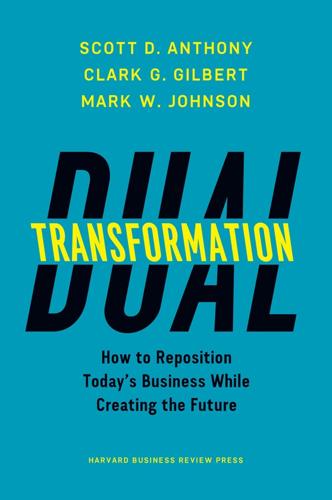
Dual Transformation: How to Reposition Today's Business While Creating the Future
by
Scott D. Anthony
and
Mark W. Johnson
Published 27 Mar 2017
There’s a reason many songs in the 1950s and 1960s were about cars. Heavy investment in a world-class road infrastructure. Cheap gas. Affordable cars. If you combine them, as The Mamas and the Papas sang in 1966, you could “go where you wanna go.” The world changes, always. Now consumers summon Uber or Lyft from their smart phones to get from point A to point B. Instead of owning a car, they can participate in a fractional ownership program like Zipcar (purchased by Avis Budget Group for $500 million in 2013). Then in 2005, Sebastian Thrun, coinventor of Google Street View, led a team whose robotic car won a $2 million prize from the US Department of Defense.
…
See also transformation B creating goals/boundaries for, 121–123 creating separate new engine for, 12 disruption as opportunity for, 47–50 fitness landscape and, 7–8 gap in, determining, 118–121, 213–214 portfolio management systems and, 80–82 rapid, as warning sign, 108–109 slowing revenue, as warning sign, 107 strategic opportunity areas and, 123–127 Guaranteach, 69 Gupta, Piyush, 151 Hait, William N., 17, 18, 19 Hall, Taddy, 38 The Haloid Photographic Company, 13 Hancock, Jake, 84 Hardless, Edgar, 143 Harvard Business School MBA program, 103, 110–113, 176 Hastings, Reed, 23, 32–36 decision making by, 93–95 education and, 69–70 HBO, 5, 35 HBX, 113 health care industry acquisitions in, 22–23 Aetna, 23, 87, 99–102 constrained market in, 59–61 illusory nonconsumption in, 62–63 Johnson and Johnson, 16–22 medical devices, 203–204 Medtronic, 72–73 Netflix and IBM in, 70 retailization of, 101 Healthy Family, 127 Healthy Heart for All, 73, 74 Hill, Andy, 131 Hill, Linda, 146 Hinckley, Gordon B., 41 Hoffman, Reid, 49 HOPE acronym, 65 Horowitz, Ben, 206 House of Cards, 35 House of Payne, 98 Houston, Drew, 151 the how, changing in transformation A, 36–45 Huffington, Arianna, 27 Huffington Post, 27, 28 Humana, 183 Hundred Flowers Campaign, 117 Hurley, Chad, 97 HyperText Markup Language (HTML), 3 IBM, 8, 54, 132 Watson, 70, 204 ibrutinib, 19 Icahn, Carl, 15 ideas, sharing, 149 identity crises, 168–173, 193–197 IDEO, 61 Imbruvica, 19 industry entrant activity, 104–105, 112 Innosight, 61, 77, 93 Innov8, 143–144 innovation business model, 40–42 in business models, 20 catalysts in, 104–105 creating safe spaces for, 143–145 in established companies, 71–72 for improving today and creating tomorrow, 55 incumbents’ failure in, 14–15 pace of disruptions and, 4–5 physical environment and, 148 predictability and, 137–139 sharing ideas and, 149 simplifying experiments and, 148–149 Innovation: The Attacker’s Advantage (Foster), 71 The Innovator’s Dilemma (Christensen), 14–15, 36, 71 The Innovator’s Extinction (Ulmer), 71–72 The Innovator’s Guide to Growth (Anthony, Johnson, Sinfield, and Altman), 62 Instagram, 48 Institute for Health Sciences, 204 Intel, 78–79 InterActive Corp, 49–50 interface management, 75, 80–87 arbitration in, 86–87 exchange teams in, 82–83 transfer pricing in, 85 internet browsers, 2–3, 47 media transformations from, 2–3 Intuit, 132–133 inverse mentors, 150–151 investment curiosity and funding of, 141 at Deseret, 30 estimating potential of existing, 119 at SingPost, 52–53 by venture capitalists, 103–104 iPhone, 4, 92–93, 104 iPod, 92–93 Israel, Simon, 53, 142 iTunes, 92–93 Janssen, Paul, 16 Janssen Pharmaceuticals, 16–22 business model innovation at, 42 postdisruption job to be done at, 39 Jarden Consumer Solutions (JCS), 130–131 Jasper, 143 Jassy, Andy, 53–54 Jensen, Michael, 177 job loss, 7 at Deseret, 30 at Media General, 157 Jobs, Steve, 4, 8 destruction by, 132 focus of, 116 influenced by Xerox, 13 Motorola and, 92–93 transformation journey of, 181–182 job to be done, 21 determining defensible postdisruption, 36–39 Johnson, Lyndon, 116 Johnson, Mark, 36, 53, 62, 109–110 Johnson & Johnson, 16–22, 177–178 Joyce, Jim, 64 Karim, Jawed, 97 Kay, Alan, 154 Kennedy, John F., 24, 115–116, 117, 132 Kickbox, 148–149 Kickstart Ventures, 143–144 Knewton, 56, 67 Knight, Wayne, 95 Knight Ridder, 97 Kodak, 1–2, 4, 11 Kodak Moments, 1–2 Koonin, Steve, 95 KPO, 51 KSL, 8, 9, 29, 68 Kuhn, Thomas, 68 Lafley, A.G., 124, 137 Lasseter, John, 4 Lazarus, Mark, 95 Lead and Disrupt (O’Reilly and Tushman), 53, 54 leaders and leadership commitment to transformation A implementation by, 43–45 conflict arbitration by, 86–87 conviction to persevere and, 24, 155–179 courage in decision making and, 91–113 on crises of commitment, 186–189 on crises of conflict, 189–193 curiosity in, 24, 135–154 discussion questions for, 210 in dual transformation, 23–24 exchange teams and, 83–84 exposing to new thinking, 145–147 focus and, 24, 115–133 greatest challenge facing current, 5, 11 hands-on involvement by, 44 in maintaining transformations, 162–163 mindsets for success in, 23–24 opportunity of disruption and, 11–12 overestimation of alignment by, 119 profiles of transformation, 182–186 purpose and, 176–178 understanding customer problems and the job to be done, 38–39 The Lean Startup (Ries), 65, 153 LeBlanc, Paul, 58 le Carré, John, 153 Lee, Christopher M., 67–68, 86–87 Lee Hsien Yang, 136 Lee Kuan Yew, 136 LegalZoom, 207 Lenovo, 92 Levitt, Ted, 37, 175 Lew, Allen, 144–145 Lim Ho Kee, 53 Linford, Jon, 84 LinkedIn, 49 Lin Media, 156 local maximums, 6 lunar module frame, 131–132 Lyft, 205 Lynch, Kevin, 32 Major League Baseball, 98–99 Manila Water, 117–128, 184–185 determining goals and boundaries at, 121–123 focus at, 142 growth gap determination at, 118–121 outcomes for, 127–128 strategic opportunity areas of, 123–127 Mao Zedong, 116–117 Marcial, Sharon, 127 margins, 122 “Marketing Myopia” (Levitt), 175 markets identifying constrained, 59–63 opened by disruptions, 5 Marriott, 8 Martin, George R.R., 5 Martin, Roger, 124, 140, 177 McClatchy, 97 McGrath, Rita, 65, 146 Meckling, William, 177 media companies founded after disruption in, 47–50 streaming, 33–36, 93–95 transformations in, 2–3 Media General, 155–157 Medicity, 183 Medtronic, 72–73, 74 Merck, 22 metrics, 42–43 microlenders, 73 Microsoft, 4, 49, 54 Mint, 132 mission statements, 177, 178 mobile phones, 3–5, 91–93 banking and, 151–152 shipping industry and, 202–203 Monte Carlo techniques, 98–99 moonshot, 24, 115–116, 131–132 Morton, Marshall, 155–156 motivation, 175–176 leaders on, 194 Motorola, 4–5, 92 M-PESA, 201 Mulally, Alan, 153–154 Mulcahy, Anne, 14, 86 multisystem operators (MSOs), 96, 98–99 Murdoch, Rupert, 97, 109 Myspace, 48, 97, 109 Narayen, Shantanu, 31–33 National Basketball Association, 98–99 National Science Foundation, 56 Navarrete, Minette, 143–144 Nestlé, 204 Netflix, 23, 97, 104 Amazon Web Services and, 54 business model innovation at, 40, 42, 146 business model of, 106 content creation at, 34–35 decision making at, 93–95, 102 early warning signs at, 108 metrics at, 43 postdisruption job to be done at, 39 transformation A at, 32–36 transformation B at, 69–70 transformation journey at, 181 net present value (NPV), 110 net promoter scores, 78 Netscape, 2–3, 47 News Corp, 48, 97 Newspaper Association of America, 3 newspapers.

Prediction Machines: The Simple Economics of Artificial Intelligence
by
Ajay Agrawal
,
Joshua Gans
and
Avi Goldfarb
Published 16 Apr 2018
If you keep trying new foods in the hope of finding some ideal, you are missing out on a lot of good meals. Judgment, whether by deliberation or experimentation, is costly. Knowing Why You Are Doing Something Prediction is at the heart of a move toward self-driving cars and the rise of platforms such as Uber and Lyft: choosing a route between origin and destination. Car navigation devices have been around for a few decades, built into cars themselves or as stand-alone devices. But the proliferation of internet-connected mobile devices has changed the data that providers of navigation software receive. For instance, before Google acquired it, the Israeli startup Waze generated accurate traffic maps by tracking the routes drivers chose.
…
See also jobs “Lady Lovelace’s Objection,” 13 Lambrecht, Anja, 196 language translation, 25–27, 107–108 laws of robotics, 115 learning -by-using, 182–183 in the cloud vs. on the ground, 188–189, 202 experience and, 191 in-house and on-the-job, 185 language translation, 26–27 pathways to, 182–184 privacy and data for, 189–190 reinforcement, 13, 145, 183–184 by simulation, 187–188 strategy for, 179–194 supervised, 183 trade-offs in performance and, 181–182 when to deploy and, 184–187 Lederman, Mara, 168–169 Lee, Kai-Fu, 219 Lee Se-dol, 8 legal documents, redacting, 53–54, 68 legal issues, 115–117 Lewis, Michael, 56 Li, Danielle, 58 liability, 117, 195–198 lighting, cost of, 11 London cabbies, 76–78 Lovelace, Ada, 12, 13 Lyft, 88–89 Lytvyn, Max, 96 machine learning, 18 adversarial, 187–188 churn prediction and, 32–36 complexity and, 103–110 from data, 45–47 feedback for, 46–47 flexibility in, 36 judgment and, 83 one-shot, 60 regression compared with, 32–35 statistics and prediction and, 37–40 techniques, 8–9 transformation of prediction by, 37–40 Mailmobile, 103 management AI’s impact on, 3 by exception, 67–68 Mastercard, 25 mathematics, made cheap by computers, 12, 14 Mazda, 124 MBA programs, student recruitment for, 127–129, 133–139 McAfee, Andrew, 91 Mejdal, Sig, 161 Microsoft, 9–10, 176, 180, 202–204, 215, 217 Tay chatbot, 204–205 mining, automation in, 112–114 Misra, Sanjog, 93–94 mobile-first strategy, 179–180 Mobileye, 15 modeling, 99, 100–102 Moneyball (Lewis), 56, 161–162 monitoring of predictions, 66–67 multivariate regression, 33–34 music, digital, 12, 61 Musk, Elon, 209, 210, 221 Mutual Benefit Life, 124–125 Napster, 61 NASA, 14 National Science and Technology Council (NSTC), 222–223 navigation apps, 77–78, 88–90, 106 Netscape, 9–10 neural networks, 13 New Economy, 10 New York City Fire Department, 197 New York Times, 8, 218 Nordhaus, William, 11 Norvig, Peter, 180 Nosko, Chris, 199 Novak, Sharon, 169–170 Numenta, 223 Nymi, 201 Oakland Athletics, 56, 161–162 Obama, Barack, 217–218 objectives, identifying, 139 object recognition, 7, 28–29 Olympics, Rio, 114–115 omitted variables, 62 one-shot learning, 60 On Intelligence (Hawkins), 39 Open AI, 210 optimization, search engine, 64 oracles, 23 organizational structure, 161–162 Osborne, Michael, 149 Otto, 157–158 outcomes in decision making, 74–76, 134–138 job redesign and, 142 outsourcing, 169–170, 171 Page, Larry, 179 Paravisini, Daniel, 66–67 pattern recognition, 145–147 Pavlov, Ivan, 183 payoff calculations, 78–81 in drug discovery, 136 judgment in, 87–88 Pell, Barney, 2 performance, trade-offs between learning and, 181–182, 187 performance reviews, 172–173 photography digital, 14 sports, automation of, 114–115 Pichai, Sundar, 179–180 Piketty, Thomas, 213 Pilbara, Australia, mining in, 112–114 policy, 3, 210 power calculations, 48 prediction, 23–30 about the present, 23–24 behavior affected by, 23 bias in, 34–35 complements to, 15 consequences of cheap, 29 credit card fraud prevention and, 24–25 in decision making, 74–76, 134–138 definition of, 13, 24 by exception, 67–68 human strengths in, 60 human weaknesses in, 54–58 improvements in, 25–29 as intelligence, 2–3, 29, 31–41 in language translation, 25–27 machine weaknesses in, 58–65 made cheap, 13–15 selling, 176–177 techniques, 13 unanticipated correlations and, 36–37 of what a human would do, 95–102 predictive text, 130 preferences, 88–90, 96–97, 98 selling consumer, 176–177 presidential elections, 59 prices effects of reduced AI, 9–11 human judgment in, 100 sales causality and, 63–64 for ZipRecruiter, 93–94 privacy issues, 19, 49, 98 China and, 219–220 country differences in, 219–221 data collection, 189–190 probabilistic programming, 38, 40 processes.

How Boards Work: And How They Can Work Better in a Chaotic World
by
Dambisa Moyo
Published 3 May 2021
Customer tastes moving from gas-fueled cars to alternatives is a shift where the underlying demand for cars stays the same, so the decision could be to invest in electric-car production. However, the board must also consider a more threatening path, whereby a dip in auto sales reflects a fundamental decline in demand for car ownership, signaling that people may be more inclined to stop owning individual cars and instead use car-sharing schemes such as Uber or Lyft. The board’s analysis on this matter has real material value. As of May 2020, Uber’s market value of $60 billion was greater than that of General Motors and Ford combined, suggesting that investors may indeed see a more fundamental shift away from traditional car ownership. In making these judgments, the board and its management must combine a working knowledge of the business with data-driven analysis of company performance to judge the cyclicality of the different business units.
…
Research in Motion, the owner of BlackBerry, was acquired by a consortium of financial investors who have kept the company as a private entity trading under the BlackBerry name—albeit greatly reduced in size. From a peak of $19.9 billion in sales in 2011, BlackBerry fell to $932 million in 2018. The proliferation of the iPhone transformed the landscape for Nokia and BlackBerry, just as Airbnb has taken traditional hotels to task and Lyft and Uber have disrupted the transportation and car industries. It is impossible to know what actually transpires in the boardrooms of failing businesses, but later analyses often point toward slow reactions to changes in consumer trends and the competitive landscape, leaving a company to operate under flawed assumptions.
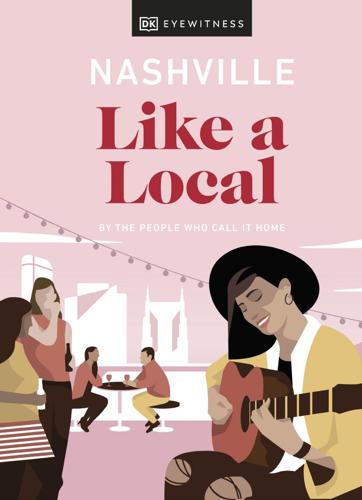
Nashville Like a Local: By the People Who Call It Home
by
Dk Eyewitness
Published 28 Sep 2021
example, is the code for the entrance of Marathon Music Works. Simply download the free what3words app, By car or taxi type a what3words address into Music City is heavily reliant on cars, with the search bar, and you’ll know most locals driving their own wheels exactly where to go. during the day and making use of cabs and rideshares – like Uber and Lyft – on B C Y C L E nights out. There are some drawbacks, Your local bikeshare scheme like heavy traffic and eye-wateringly The app for Nashville’s BCycles expensive parking (Downtown, we see helps you find docking stations, you). But rideshares are well developed easily pay for your ride, and get and a reliable way to get around the city.
…
{map 4} River, hipster HQ East The Gulch most locals driving their own wheels exactly where to go. Nashville has gentrified in With its high-rise condos during the day and making use of cabs Berry Hill the last decade, forcing out and rooftop bars, the Gulch and rideshares – like Uber and Lyft – on Forget Music Row: it’s all lower income families. That stands out against Nashvil e’s B C Y C L E nights out. There are some drawbacks, about Berry Hill these days. said, it’s still loved for its small town charm. But what it Your local bikeshare scheme like heavy traffic and eye-wateringly It’s trendy, innovative, and cocktail bars, vintage stores, lacks in village vibes it makes The app for Nashville’s BCycles expensive parking (Downtown, we see fast becoming a music hub and record shops.

The Lonely Century: How Isolation Imperils Our Future
by
Noreena Hertz
Published 13 May 2020
bill_id=201920200AB5; ‘ABC is not as easy as 1-2-3 – Which independent contractor classification test applies to whom after AB5?’, Porter Simon, 19 December 2019, https://www.portersimon.com/abc-is-not-as-easy-as-1-2-3-which-independent-contractor-classification-test-applies-to-whom-after-ab5/. 69 Kate Conger, ‘California Sues Uber and Lyft, Claiming Workers Are Misclassified’, New York Times, 5 May 2020, https://www.nytimes.com/2020/05/05/technology/california-uber-lyft-lawsuit.html. 70 ‘3F reaches groundbreaking collective agreement with platform company Hilfr’, Uni Global Union, 18 September 2018, https://www.uniglobalunion.org/news/3f-reaches-groundbreaking-collective-agreement-platform-company-hilfr. 71 GMB Union, ‘Hermes and GMB in groundbreaking gig economy deal’, 4 February 2019, https://www.gmb.org.uk/news/hermes-gmb-groundbreaking-gig-economy-deal; see also Robert Wright, ‘Hermes couriers awarded union recognition in gig economy first’, Financial Times, 4 February 2019, https://www.ft.com/content/255950d2-264d-11e9-b329-c7e6ceb5ffdf. 72 Liz Alderman, ‘Amazon Loses Appeal of French Order to Stop Selling Nonessential Items’, New York Times, 24 April 2020, https://www.nytimes.com/2020/04/24/business/amazon-france-unions-coronavirus.html. 73 Even then, the kits took weeks to arrive, the ordering process was mired in bureaucracy, and the number of kits was limited.
…
New legislation approved by the European Parliament in April 2019, and a landmark bill passed in California that took effect in January 2020, make significant progress on these fronts.67 The California bill presumes a worker is an employee unless the employer can show that the worker is free from the control of the company, does work outside the company’s core business and has an independent enterprise in the same nature as the company.68 And in May 2020, California’s attorney general and a coalition of city attorneys in the state, frustrated that Uber and Lyft had not only not taken steps to reclassify their drivers but had also poured millions of dollars into a campaign for a ballot initiative that would exempt them from complying with the law, sued both the companies for wrongly classifying their drivers as independent contractors in violation of this new law.69 The case, at the time of writing, is ongoing.
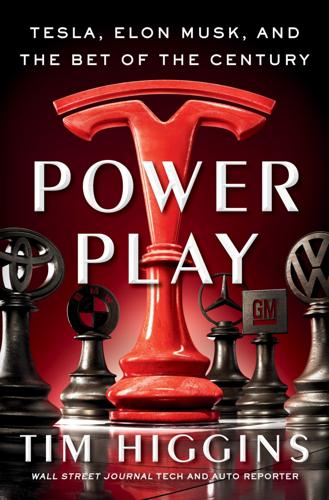
Power Play: Tesla, Elon Musk, and the Bet of the Century
by
Tim Higgins
Published 2 Aug 2021
Instead, Kim proposed to Musk that employees simply drive cars to buyers’ homes and hand over the keys. Tesla’s drivers would return to the office by calling an Uber or Lyft. Home delivery was unusual in the auto industry, and an uncertain proposition for some buyers. There were other strategies for hastening delivery. Instead of spending an hour with each customer introducing the new Tesla owner to their brand-new car’s features, Kim wanted his deliverers to aim for five minutes. They would tell customers to watch a training video instead. Some of the drivers were so eager to return that they would summon an Uber or Lyft ahead of their arrival at a customer’s door—a clever time-saving ploy unless the ride-hailing car showed up before they did and knocked on the eager Model 3 buyer’s door.
…
While he may have talked in recent years about stepping back as CEO, the new pay package sent a powerful message to his senior leadership team—and investors—that he wouldn’t be letting go of the reins anytime soon. Some inside Tesla thought McNeill or maybe Field, the engineer overseeing the Model 3 whose authority had grown to include oversight of manufacturing, might be a future Tesla CEO. The next month, McNeill would depart Tesla to become chief operating officer of ride-hailing startup Lyft Inc. As the new year began, Musk wasn’t acting like he wanted to give up control. It was clear that Fremont, not Sparks, was the highest hurdle. Musk’s focus again shifted. The new Roadster reveal, along with the semi, helped Tesla’s cash situation, though money was running low again and, for a few reasons, Musk was reluctant to seek more capital.
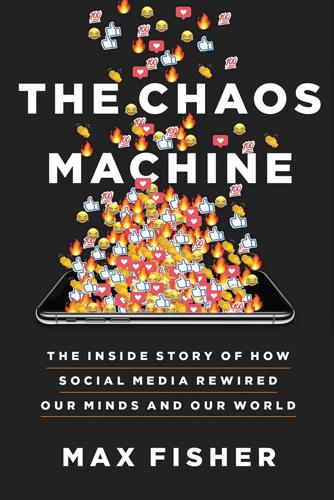
The Chaos Machine: The Inside Story of How Social Media Rewired Our Minds and Our World
by
Max Fisher
Published 5 Sep 2022
Yishan Wong, Reddit’s chief during Gamergate, had come up at PayPal, whose alums guided much of the social media era. One of PayPal’s first executives, Reid Hoffman, used his windfall to found LinkedIn and invest early in Facebook. He introduced Zuckerberg to Thiel, who became Facebook’s first board member. Thiel, further parlaying his PayPal success, started a fund that launched major investments in Airbnb, Lyft, and Spotify. Throughout, like many leading investors, he imposed his ideals on the companies he oversaw. In the 1990s, he co-authored a book, The Diversity Myth, calling the purposeful inclusion of women or minorities a scam that stifled free intellectual pursuit. “Max Levchin, my co-founder at PayPal, says that startups should make their early staff as personally similar as possible,” Thiel wrote.
…
If governments or journalists objected, it was just the old incumbents clinging to authority that was no longer theirs. This sense of divine mission drove the angel investors of Generation PayPal who selected the startups and founders to remake the world around their vision. They called it disrupting incumbents. Uber and Lyft would not just offer a new way to hail taxis, they would abolish and replace the old one. Airbnb would disrupt short-term housing. All three were PayPal alumni investees. Many others pursued the same violent displacement. Amazon and physical retail, Napster and music. Only a few, like Thiel, seriously suggested doing to global governance what Uber had done to ridesharing.
…
If William Shockley had embodied the industry’s semiconductor era, Andy Grove the microchip era, and Peter Thiel the early web era, then Andreessen and Horowitz personified the social media era. It wasn’t just where they invested (Facebook, where Andreessen sat on the board, as well as Twitter, Slack, Pinterest, Airbnb, Lyft, and Clubhouse), but how. They institutionalized, as a matter of investing strategy, the Valley’s drift toward inexperienced, unconstrained young CEOs. They pledged to elevate “technical founders” with little experience or knowledge beyond engineering, then unshackle them from adult supervision or any expectation of normal corporate behavior.
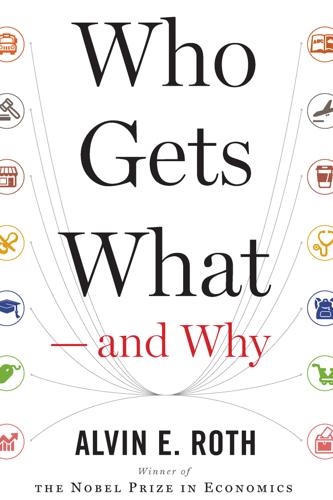
Who Gets What — and Why: The New Economics of Matchmaking and Market Design
by
Alvin E. Roth
Published 1 Jun 2015
So although limos worked fine for a scheduled trip to the airport or for a fleet of black cars for a conference, if you stepped outside and it was raining, or checked out of a hotel after a leisurely breakfast, hailing a taxi was much easier. Once again, smartphones changed all that. Now you can call a limo almost as easily as a taxi. So a lot of limos that once sat idle are now readily available. And that’s just the beginning. UberX and companies such as Lyft are even more like Airbnb: they are starting to make a market for the vacant passenger seats in private cars. Speed is of the essence in making these markets work differently than the “day ahead” market that already existed for limos. In some respects, these services are faster even than taxis: you don’t have to take time to pay when you reach your destination, since the same app through which you called the car will also pay the bill automatically through your credit card.
…
See also early transactions kidney transplants, 3–4, 6, 29–53 black market for, 207 close to home, 45–46 compatibility issues in, 29–30 congestion with, 51, 52 cost of dialysis vs., 41, 42, 51, 208, 211 demand vs. supply for, 31, 205–7 disincentives for donations for, 209–10 exchange programs for, 8, 30–31, 206 algorithm for, 35–38, 39–41 benefits of, 51 chains in, extending, 35–36, 37–41 expanding, 210–12 first, 35 national level, 49–51 non-directed donors in, 35–38, 43–44, 52, 210–12 safe participation in, 34, 36, 37, 47–49, 51–52 trading cycles and design for, 32–41 financial interests in, 45–46, 50 hard and easy matches in, 47–49 living donors for, 41–46 national, 49–51 nonsimultaneous vs. simultaneous, 41–46 patient needs and preferences in, 34, 37 reimbursement systems for, 206–7, 208–10 selling organs for, 6, 12, 46, 203–7 legalization of, 208–9 thickening the market for, 49–51 Klein, Joel, 106, 107, 161 Kojima, Fuito, 149 Kozinski, Alex, 93, 95, 239 labor markets, 6 congestion in, 111 exploding offers in, 98–99 law firm recruiting and, 65–68 signaling in, 169–70, 173–75, 179–80 stable outcomes in clearinghouses for, 139–43 Lack, Jeremy, 106, 153, 160 laissez-faire, 7 languages, evolution of, 229–30 law clerks, 69–70 law firms, recruiting in, 65–68 Lee, Soohyung, 176–77 legal safeguards, 114–15 Leishman, Ruthanne, 37, 44, 50 Levey, Andy, 38–39 liquidity providers, 84 loans, charging interest on, 200–201, 202, 205 Louisiana State University, 65 Lyft, 104 Mad Men, 190 market design, 6–8, 13–14, 217–31 bad, persistence of, 223–26 based on participant culture and psychology, 78 central planning vs., 7, 149–50, 166–67 for coffee, 17–18 of college bowl games, 60–65 vs. control, 212–15 culture and, 78 expert guides in, 147–48 failures in, 52–53 failure to implement, 86, 88 for function, 12–13 gaining support for, 88–89 human behavior and, 52, 118 ongoing adjustments in, 52–53, 164–65, 222–23, 227–31 pervasiveness of, 15 reliable information in, 118 for restaurants, 217–20 solutions in, 133–34 trading cycles and, 32–41 markets and marketplaces barriers to entry in, 24 based on desires, 5 central planning vs., 7, 149–50 collective nature of, 229–31 commodity, 5 communication speed in, 99–106 congestion in, 9–10, 92–93, 99–112 connections among, 7, 22–24, 227 equilibrium in, 77 evolution of, 13–14 flexibility of, 149 free, 7, 12–13, 217, 226–28 as human artifacts, 212–15, 229–31 legal vs. illegal, 114–15 matching, 5–6 regulation of (See regulation) repugnant, 6, 11–12, 192, 195–215 safety of, 11, 113–30 simplicity of, 11, 26–27 thick, 8–9.
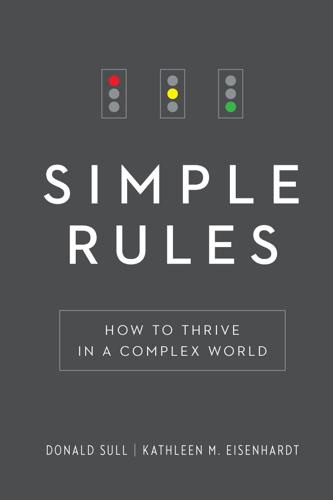
Simple Rules: How to Thrive in a Complex World
by
Donald Sull
and
Kathleen M. Eisenhardt
Published 20 Apr 2015
Unlike many traditional businesses, shared-economy companies have no single base of customers. Rather, these companies provide two-sided markets that connect sellers (or people with something to share) with buyers (who are willing to pay for the product or service)—like the transportation-network company Lyft, which connects passengers who need a ride to drivers who have a car, and TaskRabbit, an errand-outsourcing company that connects people who need something done with “taskers” who will do the job. For Airbnb, it’s connecting local residents with room to spare and travelers who need a place to stay.
…
See execution of strategy improving simple rules experts and, [>]–[>] internationalizing entrepreneurs and, [>]–[>] laboratory study on, [>]–[>] multitasking ways to learn, [>]–[>] pattern/examples, [>]–[>] process description, [>] rule types and, [>], [>] studying/doing something else and, [>]–[>] Turley example, [>]–[>] Indiegogo, [>], [>] insomnia/rules for overcoming, [>]–[>] intellectual property protection, [>]–[>] Internet boom (late 1990s), [>] investing ranking and, [>]–[>], [>] n Rothschild’s rules, [>]–[>] Russian rules and, [>]–[>] Jack’s (bar) description/customers, [>]–[>], [>] Sull as bouncer/rules, [>], [>]–[>] Jesuits (Society of Jesus) flexibility/opportunities and, [>]–[>] founding/growth, [>], [>] locations/travels, [>], [>], [>] schools/education and, [>]–[>], [>] simple rules/“Formula,” [>], [>]–[>] Jobs, Steve, [>], [>] Journal of Finance, [>] Kahneman, Daniel, [>] Kalaw, Paolo, [>]–[>] Katila, Riitta, [>] Kawakami, Tim, [>] Kickstarter, [>] Krakauer, Jon, [>] Laugh Factory, [>] Law of Citations (ancient Rome), [>] legal systems study, [>]–[>] Leonard, Elmore, [>], [>], [>] Lewin, Kurt, [>] Lewis, Michael, [>] Lobby (de Lotbiniere, Seymour Joly), [>]–[>] locusts/swarming, [>]–[>] Loeb, Gerald, [>]–[>] Lopez, George, [>] Louis C.K., [>] Lyft, [>] Lynch, David, [>] Madden, John, [>] Mann Gulch fire, [>]–[>] marine protected areas network, California, [>]–[>] Markowitz, Harry, [>], [>] Martin, Brett, [>] mate selection rules animal examples, [>]–[>] costs vs., [>] “fixed-threshold strategy/with last chance option,” [>] humans, [>]–[>] reversing investment, [>]–[>] variable-threshold strategy, [>] McDonald’s, [>], [>]–[>] n McDougall, Charles, [>] Media Rights Capital, [>]–[>] medical issues combat injuries and, [>]–[>] combat survival rates over time, [>]–[>] diagnosing children with deadly infections, [>]–[>] disease diagnosis, [>], [>], [>] Medicare/Medicaid diagnosis codes, [>] n redesigning health care attempt/principles, [>]–[>] surgery and, [>]–[>] See also triage rules Mediterranean climate, [>]–[>] Mencia, Carlos, [>] Mercado Eletrônico, [>]–[>] Michaels, Al, [>] Michaels, Lorne, [>] Mitchell, Victoria Coren, [>]–[>], [>], [>] Monet, Claude, [>], [>] moneyball strategy, [>]–[>], [>], [>], [>] Montoya, Edward, Jr., [>], [>], [>] Montsma, Sandrine, [>] Moss, Brandon, [>] “myth of requisite complexity,” [>]–[>], [>]–[>] Nader, Eduardo, [>] Nansen, Fridtjof, [>] Napoleon, [>] National Academy of Sciences, [>] National Oceanic and Atmospheric Agency.

The Internet Is Not the Answer
by
Andrew Keen
Published 5 Jan 2015
Airbnb cofounder Brian Chesky describes the company as a platform of “trust” in which the reputations of guests and of hosts will be determined by feedback on the network.113 But Airbnb has been beset by such a scarcity of trust from the authorities that 15,000 New York City hosts were subpoenaed in May 2014 by New York State attorney general Eric Schneiderman because they may not have paid taxes on their rental incomes. Andreessen Horowitz has also ventured into the car-sharing market, where it is backing a 2012 San Francisco–based middleman called Lyft, a mobile phone app that enables peer-to-peer ride sharing. But the best-known startup in the transportation-sharing sector is Uber, a John Doerr–backed company that also has received a quarter-billion-dollar investment from Google Ventures. Founded in late 2009 by Travis Kalanick, by the summer of 2014 Uber was operating in 130 cities around the world, employing around 1,000 people, and, in a June 2014 investment round of $1.2 billion, was valued at $18.2 billion, a record for a private startup company.
…
The Alien Overlord Spaceships Outside the San Francisco hotel, the future had arrived and, to paraphrase William Gibson, it was distributed most unequally. Uber limousines lined up outside the club to whisk Silicon Valley’s successful young failures around town. Cars from rival transportation networks hovered hopefully around the hotel, too—companies like Lyft, Sidecar, and the fleet of me-too mobile-ride-hailing startups trying to out-Uber Travis Kalanick’s $18 billion market leader. Some of the people scrambling for a living as networked drivers were themselves aspiring entrepreneurs with billion-dollar startup ideas of their own.27 So even in these unlicensed cabs, it was impossible to get away from the pitches for the next WhatsApp, Airbnb, or Uber, which pitches, sadly, were mostly just a glorified form of begging.
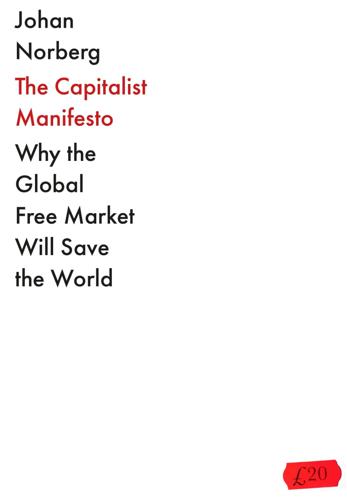
The Capitalist Manifesto
by
Johan Norberg
Published 14 Jun 2023
And in that case, the opportunity to choose when and how much you work is a feature and not a bug, even if the salary might look dismally low when compared to a full-time salary.32 Of course, there is a substantial minority who take these jobs because they don’t have anything else, and then the pressure to accept even lousy job opportunities can be great and satisfaction with the job will be low. But if all other opportunities are worse, it means that this job is the least bad. Another word for ‘least bad’ is ‘best’. Studies of Uber and Lyft drivers in the United States consistently show that between 60 and 70 per cent prefer to have the job as a gig over a permanent job. And this is also the wrong question, since the real choice is between being a gig worker and having a smaller chance of permanent employment, because if companies have to pay fixed salaries and benefits, they will not be able to accept anyone, especially not someone who does not pull in a sufficient number of assignments or is not efficient.
…
J., 59–60 Japan, 22, 84, 225, 267 Jevons, William Stanley, 242 Jobs, Steve, 170, 173 Johnson, Boris, 9 Journal of the American Medical Association, The, 137 Kahneman, Daniel, 280 Kalecki, Michał, 120 Kamprad, Ingvar, 119, 124, 127 Keynes, John Maynard, 69 Klein, Naomi, 17, 21, 43, 232, 241 Kodak, 151, 174 Kuznets, Simon, 248 ‘Kuznets curve’, 248, 250, 254 Kyrgyzstan, 215 Kyriakides, Stella, 76 labour market see work Labour Party, 10 Latin America, 27–30, 42–3, 47, 282 de Lattre, Anne, 32 Latvia, 26 Lawson, Robert, 37, 283 Lego, 151 Lehman Brothers, 170 Lerner, Josh, 190, 195, 197–8 liberalism, 262–6, 269–70 Licklider, J.C.R., 184, 186 life expectancy, 20–21, 36–7, 136–7, 291 Light Bulb Conspiracy, The (documentary), 157 light bulbs, 157–8 literacy, 291 Lithuania, 26 Living Planet Index, 249 lobbying, 139–41 Locke, John, 263–4 loneliness, 266–70 Lonely Century, The (Hertz), 262 Lumafabriken, 157 Lyft, 102 Ma, Jack, 227 Maduro, Nicolás, 43 Malmrot, Henrik, 119 Mandela, Nelson, 45 manufacturing industries, 83–7 automation, 85–6, 110 Mao Zedong, 24, 207, 209, 221–2 Maoism, 213–14 Márquez, Gabriel Garcìa, 269 Marshall Space Flight Center, 202 Martin, Claude, 238 Martin, Iain, 116 Martínez, Luis, 47 Marx, Karl, 2, 70, 243, 289, 290–91 maternal mortality, 20 Mathupe, Maria, 72 Mauritius, 34–5 Mazzucato, Mariana, 181–9, 192, 195 Mbeki, Thabo, 45 McCloskey, Deirdre, 13–14 Meade, James, 34 mental health, 262, 264, 266, 270–72 Meta, 179 Mexico, 11, 29 Microsoft, 169, 171–2, 179 Middle East, 282 Milanović, Branko, 131 Mill, John Stuart, 56 Milliken, Roger, 139 Minecraft, 150–51 Minitel, 191 von Mises, Ludwig, 152 Moldova, 215 Monbiot, George, 3, 262 monopolies, 146–80 ‘natural monopoly’, 169 Montgomery, Alabama, 63 moon landing, 181–3, 191, 201–2 Moore, Michael, 119 Moore, Stephen, 8 Morocco, 234 Motorola, 152–3 MSN, 169, 171 Mugabe, Robert, 42–3 Musk, Elon, 124 Myanmar, 239 Myrdal, Gunnar, 30 MySpace, 169–71, 173–5 Nader, Ralph, 17 NASA, 183, 185, 190, 202–3 Naughton, Barry, 213, 218 neoliberalism, 38, 42, 45, 262–3 Netflix, 179 Netherlands 250, 285 Netscape, 174 New York Times, The, 122 New Zealand, 11, 267, 282, 285 Nicaragua, 47 Niemietz, Kristian, 44 Nilsson, Therese, 62 Ning Wang, 206 Nixon, Richard, 191, 219 Nokia, 151, 170–72, 174 Noll, Roger, 189 Nordhaus, William, 122–3 Norfeldt, Sven, 124 North American free trade agreement (NAFTA), 109 North Korea, 24, 220, 273 Norway, 283 nuclear weapons, 219–20 O’Rourke, P.

Health and Safety: A Breakdown
by
Emily Witt
Published 16 Sep 2024
From the scaffolding the workers asked us what was going on in there. “Nothing!” someone shouted back. Hanging off each other, our legs so tired we were practically unable to walk, avoiding patches of ice, Andrew and I made our way to the sunlit Greenpoint corner where the car he had ordered on his phone would pick us up for the bizarre liminal space that was a Lyft ride home from a party. The tinny pop music playing through the radio of a Toyota Camry sounded more alienating than ever, and the fifteen minutes of trying to act normal while getting driven home were sometimes the most anxiety-producing minutes of the whole thing. That year the song in the car in the mornings when we were going home was invariably Ed Sheeran’s “Shape of You,” until it became a joke that it was “our song.”
…
The demonstrators had set up a jail support station sheltered from the downpour by some construction scaffolding. As the protesters were released into the rainy night, the support group beckoned them over to offer snacks, hand sanitizer, and cigarettes. Legal observers took names and interviewed the protesters about what had happened to them. Volunteers ordered Lyfts and Ubers to transport the released ones back to the Bronx. Jail support was supposed to be a place of de-escalation: reporters, slogans and signs, and confrontation with the police weren’t allowed. I was absolved of journalism; here I could just help. The arrested demonstrators slowly trickled out one by one into the rain.

Evil Geniuses: The Unmaking of America: A Recent History
by
Kurt Andersen
Published 14 Sep 2020
If two rival companies made a secret agreement to cap workers’ salaries, they could get sued, but since “mergers that dramatically increase [companies’] labor market power are allowed with little objection,” the companies can combine and thereby create a salary-squeezing employment monopoly.*6 Companies don’t even need to merge in order to pay workers less than they’d have to pay in a truly free labor market. I’d assumed only high-end employees were ever required to sign noncompete contracts—an HBO executive prohibited from going to work at Netflix, a coder at Lyft who can’t take a job coding for Uber. But no: shockingly, noncompetes have come to be used just as much to prevent a $10-an-hour fry cook at Los Pollos Hermanos from quitting to work for $10.75 at Popeyes. Of all American workers making less than $40,000 a year, one in eight are bound by noncompete agreements.
…
Among those fast-food workers are some of the 3.4 million American cashiers, who are officially distinct from the 4.1 million American retail sales workers—and obviously the great majority of all of them are replaceable sooner rather than later by e-commerce and improved self-checkout machines, known in the industry as “semi-attended customer-activated terminals.” Starting now, retail chains will have a public health argument for replacing workers behind the counters with machines. The most common American job, however, has been driver—the 4 or 5 million FedEx and UPS and tractor-trailer and bus drivers, and the maybe 2 million taxi and Uber and Lyft drivers. During this decade, autonomous vehicles will begin making the 6 or 7 million (potentially infectious) people doing those jobs redundant as well. That debate over whether to blame automation or cheap labor for eliminating U.S. jobs and suppressing wages is continuing to become moot, because robots are replacing foreign workers as well, both here and abroad.
…
As that second category of workers grew from a minority to the overwhelming majority during the last half of the last century, relatively few of them remained or became successfully unionized—that was left mainly to employees of state and local government, hospitals, hotels, casinos, and show business. As workplaces became smaller and employees more dispersed—or transformed into pseudo-nonemployees, like at Uber and Lyft—the work of organizing workers got harder. But along with the public’s reviving wish for big government to tackle big problems and projects, the organized labor tide may be turning as well. Answering Gallup’s regular binary question in 2019 about approval or disapproval of unions, people were pro-labor by two to one; only a decade ago, the split was about even.
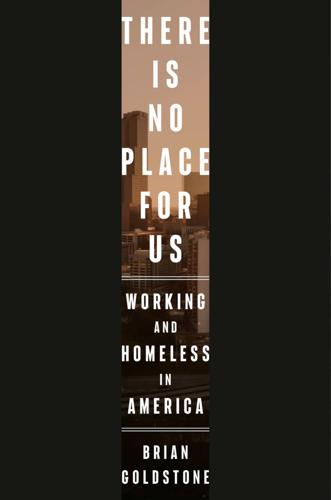
There Is No Place for Us: Working and Homeless in America
by
Brian Goldstone
Published 25 Mar 2025
Atlanta’s underfunded mass transit system consistently ranked among the worst in the country, and after years of trying to get by on public transportation, Maurice and Natalia had finally accepted the fact that they needed their own vehicle. For Maurice, the final straw came when Natalia started going into labor and the family had to wait for more than forty-five minutes for their Lyft ride to show up. “I was about to have a heart attack,” Maurice said. He found a used Camry the following week. They had budgeted for the purchase, but after the down payment, monthly car note, and insurance—along with all the additional expenses a third child entailed—their financial cushion had grown a good deal smaller.
…
As Maurice loaded their things, Natalia locked their room for the last time. “Y’all taking off?” Natalia turned and saw Drea, a woman in her early thirties who lived at the hotel with her kindergarten-age daughter. She and Natalia had gotten to know each other in recent months. Before the pandemic, Drea had been a driver for Uber and Lyft, and when her daughter’s school closed she got by on unemployment insurance, expanded under the CARES Act to cover gig workers like her. But those payments had ended in late July. Lacking childcare and unable to find remote work, she had now fallen behind on rent and was facing an impending lockout.
…
Wells Homes, 186 I Have a Dream Foundation, 176–77, 332 Immergluck, Dan, 95 incarceration, 11, 52–54, 295 Individualized Education Program (IEP), 99 “innkeepers’ lien” laws, 252, 254 In & Out Cleaning Service, 70 Instacart, 151, 178, 258, 260–61 Invitation Homes, 213–19 IRS (Internal Revenue Service) Get My Payment, 167, 345 Section 42, 262–63 Isaiah, 20, 69 Isaiah, Book of, 220 J Jackson, Maynard, 119, 265 Jacob, 29–34, 101–7, 131–33, 135, 221, 288, 299, 300, 336 at Days Inn, 105–6, 107, 299 Divorce Court appearance, 103–4, 106, 221–22 Jada, 110–11 James Madison High School, 18 James, Octavia, 342, 345 Janeka, 268–69, 296, 325–26, 327–31 Javon, 8, 177–78, 331–32 Jeju Sauna Home of Wellbeing, 27 Jesse Owens Memorial Complex, 8 Jim Crow laws, 93, 204 Jimmy Carter Boulevard, 143 Job Corps, 18, 68, 174 Johnson, Andrew, 203 Johnson, Brandon, 357 Johnson, James Weldon, 202–3 Johnson, Larry, 252–53, 254–55 Joya, 247–48, 301–5, 305 Juceam, Greg, 242 Juneteenth, 194, 197–200, 201–2, 204, 206 Just as I Am (Tyson), 334 Justice Department, U.S., 360 K Kansas City, 279 KC Tenants, 279, 362 Kemp, Brian, 183, 280 Kentucky Fried Chicken (KFC), 143–44, 149 Keyondre, 79 Kimberly, 346 Kimi, 110–11, 177, 287 KinderCare, 142, 143, 346, 347 King Center, 197, 198–99 King, Martin Luther, Jr., 206 Kirkwood Road, 152 Kodak, 44–45 Kozol, Jonathan, 354–55 Kroger, xvi, 142, 342 Krog Street Market, 118, 352 Ku Klux Klan, 206 Kyrie’s Paw Patrol, 270 L landlord fees, 96–97 Lassiter High School, 215 LA Tenants Union, 116, 279 LaToya, 251, 278, 283 Lazarus Investment Partners, LLC, 115 LeAnn, 147–48, 162 Legal Aid, 242, 251, 254, 280, 281–82, 363 Lewis, John, 200 Liberty Rent, 98–99, 100, 122–23, 243–44, 308 “Lift Every Voice and Sing” (song), 202–3 Lincoln, Abraham, 203 Lisa, 35–37, 38–39, 45–46, 80–81, 134–35, 154–55, 204, 222–24 Lithonia, 15, 235 Little Caesars, 72, 215 “Little Vietnam,” 5 Low Country, 3, 10–12, 61, 294 Low-Income Housing Tax Credit (LIHTC), 171–72, 262–64, 362 Lyft, 96, 309 M McDonald’s, 17–18, 74, 148, 352 McLaughlin, Natalie, 253–54, 257, 275–76, 278, 280, 282, 285, 363 McMurray, Paul, 266 McNair High School, 104–5 McNair Middle School, 31 Mall of America, 11 Marcus, 313–14 Marietta, 213–19 Mari, Francesca, 364 MARTA, 6, 11, 128, 133, 288, 294, 320, 322, 352 Mason, 36, 84, 162 MCS Healthcare Staffing, 143 median income, 116, 171 Medicaid, 7, 78, 304–5, 349 “coverage gap,” 349 Mercedes, 106–7, 108, 293, 318 Mercy Care, 84 Metzger, Nathan, III, 263–64 Microsoft, xviii Mike, 79, 154, 205, 224–25, 237–38, 246, 249, 257–58, 274, 304, 307 Milwaukee, 295–98 minimum wage, xvii, 151, 171, 176, 364 Minneapolis protests of 2020, 180–81 Miracle Maids, 287, 335 My Sister’s House, 73–74 N NAACP (National Association for the Advancement of Colored People), 202–3, 278, 281 Nashville, xvii, 126 National Community Reinvestment Coalition, 93 National Consumer Law Center, 98 National Guard, 180–81 National Institute of Mental Health, 354 National Institute on Alcohol Abuse and Alcoholism, 354 National Institute on Drug Abuse, 354 National Union of the Homeless, 354 Neighborhood Assistance Corporation of America (NACA), 312–16 Neighborhood Planning Unit (NPU), 265 neoliberalism, 354 New Deal, 55–56 New Life, 257 New Republic, The, xvi New Urbanism, xix New Year’s Eve, 311 New York City, xvii, 10, 267 New York Times, 281, 355, 356 Nicholas House, 184–88, 193, 209–10, 211, 217, 218, 226–27, 230–31, 339–40 Nick, 290–93, 317–23 Nikita, 10–11 Nixon, Richard, 57 Northside Hospital, 78 Norton, Kevin, 261–62 Novem, 39, 41 O Oakland City, 115 Oakwood Manor, 21, 64–68 Occupy Our Homes Atlanta, 182–83 Opportunity Zones, 190, 266–67 “organized abandonment,” 37 P Paradise Missionary Baptist Church, 299 Paris, 302, 304 Park Vista Apartments, 260 Partners for HOME, 351–52 Passion Foods, 45–46, 306 Pavilion Place, 43–44 Paycheck Protection Program, 252 PeachCare for Kids, 349 Peachtree Street, 180, 351 Pence, Mike, 181 Peoplestown, 5, 114 Perry, Tyler, 4, 103, 120 PGA TOUR Championship, 6 Philadelphia Tenants Union, 279 Phillis, 133–36 Phoenix, xvii, 333 Piedmont Park, 118 Pink.
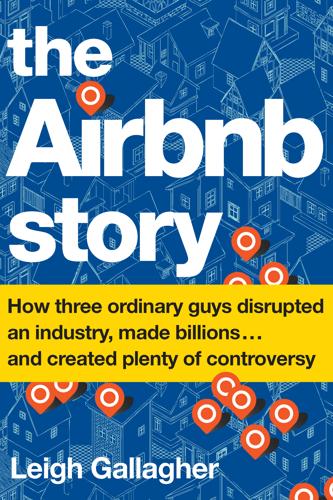
The Airbnb Story: How Three Ordinary Guys Disrupted an Industry, Made Billions...and Created Plenty of Controversy
by
Leigh Gallagher
Published 14 Feb 2017
This kind of “sharing”—this hyperpersonal opening up of the most intimate and safest aspect of one’s life to a stranger—is not present when you hire a person to fix a leak on TaskRabbit, or when you get into someone’s air-conditioned black car for a silent ride to the airport with your head in your phone. More than anything else, it is this aspect of Airbnb that distinguishes it from Uber, Lyft, and any other of its sharing-economy peers. Elisa Schreiber, marketing partner at Greylock Partners, an investor in the company, summarized this distinction concisely after we got to talking about it one day. “Uber is transactional,” she said. “Airbnb is humanity.” Unfortunately, as we are about to see and as Airbnb has learned, despite its best intentions, that “humanity” can be a frustrating thing.
…
From Jeff Weiner, Chesky learned the importance of removing those managers who weren’t performing. From Salesforce.com CEO Marc Benioff he learned how to push his executive team. He also had access to an informal support group among his current-generation start-up peers, including Travis Kalanick of Uber, Drew Houston of Dropbox, Jack Dorsey of Square, and John Zimmer of Lyft, all sharing their individual lessons about everything from running start-ups to balancing friends, relationships, and other elements of young founder life. A key principle of Chesky’s sourcing strategy was to become creative with identifying just who the experts were, and seeking out sources in unexpected disciplines.
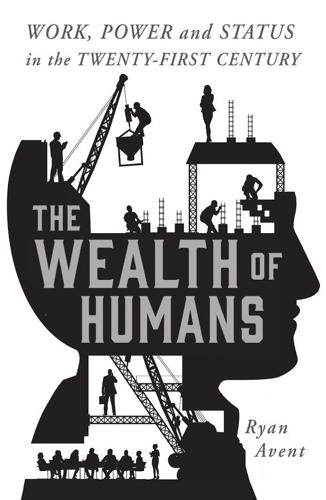
The Wealth of Humans: Work, Power, and Status in the Twenty-First Century
by
Ryan Avent
Published 20 Sep 2016
Today’s labour victories, when they occur, tend to come from straightforward issues for which it is easy to muster broad, passionate electoral support: policies such as a rise in the minimum wage or a reduction in immigration. The more complex negotiations that occurred a generation or two ago, when labour had a seat at the political table, tend not to occur any longer. That could change. Drivers for car-sharing firms, such as Uber and Lyft, are battling to unionize. Unionization could eventually come to other sectors of the economy in which large pools of on-demand labour sell their time through market-making apps as well. Unionization would yield uncertain direct benefits to workers within these firms, though. Short-run concessions wrung from ownership might simply accelerate the pace of automation: troublesome labour tends to encourage the deployment of robots, whether the setting is a factory in Shenzhen or a car on California streets.
…
Ray labour abundance as good problem bargaining power cognitive but repetitive collective bargaining and demographic issues discrimination and exclusion global growth of workforce and immigration liberalization in 1970s/80s ‘lump of labour’ fallacy occupational licences organized and proximity reallocation to growing industries retraining and skill acquisition and scarcity and social value work as a positive good see also employment Labour Party, British land scarcity Latvia Le Pen, Jean-Marie Le Pen, Marine legal profession Lehman Brothers collapse (2008) Lepore, Jill liberalization, economic (from 1970s) Linkner, Josh, The Road to Reinvention London Lucas, Robert Lyft maker-taker distinction Malthus, Reverend Thomas Manchester Mandel, Michael Mankiw, Gregory marketing and public relations Marshall, Alfred Marx, Karl Mason, Paul, Postcapitalism (2015) McAfee, Andrew medicine and healthcare ‘mercantilist’ world Mercedes Benz Mexico Microsoft mineral industries minimum wage Mokyr, Joel Monroe, President James MOOCs (‘massive open online courses’) Moore, Gordon mortality rates Mosaic (web browser) music, digital nation states big communities of affinity inequality between as loci of redistribution and social capital nationalist and separatist movements Netherlands Netscape New York City Newsweek NIMBYism Nordic and Scandinavian economies North Carolina North Dakota Obama, Barack oil markets O’Neill, Jim Oracle Orbán, Viktor outsourcing Peretti, Jonah Peterson Institute for International Economics pets.com Philadelphia Centennial Fair (1876) Philippines Phoenix, Arizona Piketty, Thomas, Capital in the Twenty-First Century (2013) Poland political institutions politics fractionalization in Europe future/emerging narratives geopolitical forces human wealth narrative left-wing looming upheaval/conflict Marxism nationalist and separatist movements past unrest and conflict polarization in USA radicalism and extremism realignment revolutionary right-wing rise of populist outsiders and scarcity social membership battles Poor Laws, British print media advertising revenue productivity agricultural artisanal goods and services Baumol’s Cost Disease and cities and dematerialization and digital revolution and employment trilemma and financial crisis (2008) and Henry Ford growth data in higher education of highly skilled few and industrial revolution minimum wage impact paradox of in service sector and specialization and wage rates see also factors of production professional, technical or managerial work and education levels and emerging economies the highly skilled few and industrial revolution and ‘offshoring’ professional associations skilled cities professional associations profits Progressive Policy Institute property values proximity public spending Putnam, Robert Quakebot quantitative easing Race Against the Machine, Brynjolfsson and McAfee (2011) railways Raleigh, North Carolina Reagan, Ronald redistribution and geopolitical forces during liberal era methods of nation state as locus of as a necessity as politically hard and societal openness wealth as human rent, economic Republican Party, US ‘reshoring’ phenomenon Resseger, Matthew retail sector retirement age Ricardo, David rich people and maker-taker distinction wild contingency of wealth Robinson, James robots Rodrik, Dani Romney, Mitt rule of law Russia San Francisco San Jose Sanders, Bernie sanitation SAP Saudi Arabia savings glut, global ‘Say’s Law’ Scalia, Antonin Scandinavian and Nordic economies scarcity and labour political effects of Schleicher, David Schwartz, Anna scientists Scotland Sears Second World War secular stagnation global spread of possible solutions shale deposits sharing economies Silicon Valley Singapore skilled workers and education levels and falling wages the highly skilled few and industrial revolution ‘knowledge-intensive’ goods and services reshoring phenomenon technological deskilling see also professional, technical or managerial work Slack (chat service) Slate (web publication) smartphone culture Smith, Adam social capital and American Constitution baseball metaphor and cities ‘deepening’ definition/nature of and dematerialization and developing economies and erosion of institutions of firms and companies and good government and housing wealth and immigration and income distribution during industrial revolution and liberalization and nation-states productive application of and rich-poor nation gap and Adam Smith and start-ups social class conflict middle classes and NIMBYism social conditioning of labour force working classes social democratic model social reform social wealth and social membership software ‘enterprise software’ products supply-chain management Solow, Robert Somalia South Korea Soviet Union, dissolution of (1991) specialization Star Trek state, role of steam power Subramanian, Arvind suburbanization Sweden Syriza party Taiwan TaskRabbit taxation telegraphy Tesla, Nikola Thatcher, Margaret ‘tiger’ economies of South-East Asia Time Warner Toyota trade China as ‘mega-trader’ ‘comparative advantage’ theory and dematerialization global supply chains liberalization shaping of by digital revolution Adam Smith on trade unions transhumanism transport technology self-driving cars Trump, Donald Twitter Uber UK Independence Party United States of America (USA) 2016 Presidential election campaign average income Bureau of Labour Statistics (BLS) Constitution deindustrialization education in employment in ethno-nationalist diversity of financial crisis (2008) housing costs in housing wealth in individualism in industrialization in inequality in Jim Crow segregation labour scarcity in Young America liberalization in minimum wage in political polarization in post-crisis profit rates productivity boom of 1990s real wage data rising debt levels secular stagnation in shale revolution in social capital in and social wealth surpasses Britain as leading nation wage subsidies in university education advanced degrees downward mobility of graduates MOOCs (‘massive open online courses’) and productivity see also education urbanization utopias, post-work Victoria, Queen video-gamers Virginia, US state Volvo Vox wages basic income policy Baumol’s Cost Disease cheap labour and employment growth and dot.com boom and financial crisis (2008) and flexibility and Henry Ford government subsidies and housing costs and immigration and industrial revolution low-pay as check on automation minimum wage and productivity the ‘reservation wage’ as rising in China rising in emerging economies and scarcity in service sector and skill-upgrading approach stagnation of and supply of graduates Wandsworth Washington D.C.
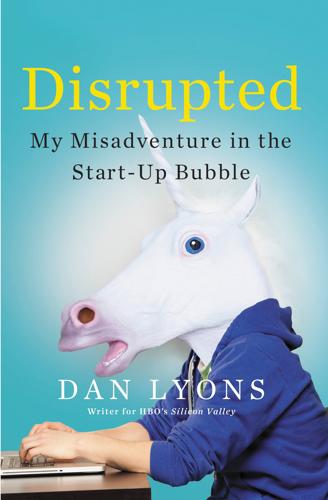
Disrupted: My Misadventure in the Start-Up Bubble
by
Dan Lyons
Published 4 Apr 2016
With Uber-a-Marketer, you’d pay some money, or win some kind of competition, and HubSpot would send one of its marketing people to your office and teach you how to do marketing. After all, we’re the best marketing team on the planet! People would kill to have us teach them about marketing! This idea actually generates some responses. But someone worries that Uber might not want to play ball with us. What happens then? We could go to Lyft, or some other car service. I chime in, saying that I love this idea but maybe there’s a way to kick it up a notch and make it even more dramatic: “Why not have a marketing person parachute in?” I say. “Like Google did at their I/O conference last year, when they had people wearing Google Glass skydive onto the roof of the venue.
…
In the world of start-ups that is now the norm, not the exception. The consequences are just what you would expect. Employees at Uber, the ride-sharing company, have used a “God View” feature to stalk people using the service, including a BuzzFeed journalist. Re/code, a tech blog, claims other companies have done the same, including Lyft, a rival to Uber; Swipe, a photo-sharing app; and Basis, which makes a “health watch” that tracks people’s heart rates, sleep patterns, and other personal information. In the early days at Facebook, the young employees had a master password to gain access to anyone’s account, according to a book by a former Facebook employee.

The End of College: Creating the Future of Learning and the University of Everywhere
by
Kevin Carey
Published 3 Mar 2015
He was using an app on his iPhone that was supposed to summon another person with the same app to drive us, but the first guy flaked, so he switched to the popular limousine-summoning service Uber. The GPS chip in Michael’s phone told the Uber driver’s phone where to pick us up, and the fare was automatically charged to Michael’s credit card. This was a year or so before Uber and competitors like Lyft became ubiquitous in major cities worldwide. We were running behind schedule and I asked Michael if we should just take a regular taxi. He is by nature laid-back, so I was surprised to see him scowl. He didn’t take taxis, he said. You have to stand out in the street and wave your hand to find one but half the time they drive right by you and you don’t even know why.
…
Press stores, 163 James, Henry, 32 James, William, 32–33, 45, 47, 250 Jefferson, Thomas, 23, 193 Jews, 46, 53 Jobs, Steve, 126 Johns Hopkins University, 27, 29 Johnson, Lyndon, 55, 56, 61 Jones, Tommy Lee, 165 Jordan, David Starr, 26 Junior college, 55 (see also Community colleges) Kamlet, Mark, 72–73, 251 Kantian philosophy, 251 Kennedy, John F., 165 Kerr, Clark, 53–56 Khan, Salman, 148–49 Khan Academy, 149, 155 Kickstarter, 133 King, Danny, 216, 218 King’s College, 23 Kiva, 133 Kleiner Perkins Caufield & Byers, 153 Knapp, Steven, 43 Koller, Daphne, 153–58, 171 Kosslyn, Stephen, 136–37 Kyoto University, 204 Lancet, 222 Lander, Eric, 1–4, 38–39, 44, 177–78, 221 MIT freshman biology course taught by, 11 (see also Introduction to Biology—The Secret of Life [7.00x]) Land-grant universities, 25–27, 35, 51, 53, 55, 95, 108, 122–23, 168 Learn Capital, 130, 156–57 Leckart, Steven, 149 Legally Blonde (film), 166 Levin, Richard C., 157 Lewin, Walter, 190–91 Liberal arts, 16, 27–31, 237, 241, 244–45 in accreditation standards, 50 core curriculum for, 49 at elite universities, 179 online courses in, 158, 244 PhDs and, 35 rankings and, 59 teaching mission in, 253 training, research, and, 29, 33, 261n (see also Hybrid universities) Lincoln, Abraham, 25 LinkedIn, 66, 217 Litton Industries, 75 Livy, 25 London, University of, 23 Lue, Robert, 178–81, 211, 231 Lyft ride-sharing service, 122 MacArthur, General Douglas, 51, 90 MacArthur “Genius” awards, 2 MacBooks, 132, 144 Madison, James, 23 Manitoba, University of, 150 Maples, Mike, Jr., 128–30, 132 Marine Corps, U.S., 140 Marx, Karl, 45 Massachusetts Bay Colony, Great and General Court of, 22 Massachusetts Institute of Technology (MIT), 37–38, 59, 116, 132, 148, 153, 167–79, 245 admissions to, 39, 161, 212, 214–15, 245 Brain and Cognitive Sciences Complex, 1–4, 143, 173–74 Bush at, 51–52, 79, 125, 168 computer science sequence offered online by, 231, 233 founding of, 29, 167 General Institute Requirements, 14, 190, 241 graduation rate at, 8 hacks as source of pride at, 168–69 joint online course effort of Harvard and, see edX MITx, 169, 173, 203 OpenCourseWare, 107–8, 150, 169, 185, 191 prestige of brand of, 163, 181 Saylor at, 176–90 Secret of Life (7.00x) online offering of, see Introduction to Biology—The Secret of Life (7.00x) tour of campus of, 168, 174 wormhole connecting Stanford and cafeteria at, 174–75, 179, 235 Massive open online courses (MOOCs), 150, 154, 156, 158, 159, 185, 204, 255 global demand for, 225 initial audience for, 214–15 providers of, see names of specific companies and universities Master Plans, 35, 60, 64–65 Master’s degrees, 117, 193, 195–96 Mayo Clinic, 242 Mazur, Eric, 137 “M-Badge” system, 208–9 McGill University, 204 Mellon Institute of Science, 75, 76, 229 Memex, 79, 80 Mendelian genetics, 3, 103–4 Miami-Dade Community College, 64 Microsoft, 128, 139, 145, 146, 188, 204 MicroStrategy, 187–91, 199 Middle States Association of Colleges and Schools, 50 Minerva Project, 133–38, 141, 215, 235, 236, 243 Minnesota, University of, Rochester (UMR), 242–43 Missouri, University of, 208 Moore’s law, 176 Morrill, Justin Smith, 25–26 Morrill Land-Grant Act (1862), 25, 168 Mosaic software program, 126 Mozilla Foundation, 205–8, 218, 248 MS-DOS, 87 Myanganbayar, Battushig, 214, 215 NASDAQ, 177, 188 National Aeronautics and Space Administration (NASA), 208 National Broadcasting Company (NBC), 96 National Bureau of Economic Research, 10 National Institutes of Health, 52 National Instruments, 216 National Manufacturing Institute, 208 National Oceanic and Atmospheric Administration, 208 National Science Foundation, 52 National Survey of Student Engagement, 243 Navy, U.S., 53, 123 Nebraska, University of, 26 Nelson, Ben, 133–35, 139, 181 Netflix, 131, 145 Netscape, 115, 126, 128, 129, 204–5 Newell, Albert, 79, 105 New Jersey, College of, 23 Newman, John Henry, 27–29, 47, 49, 244 Newman Report (1971), 56 Newton, Isaac, 190 New York, State University of, Binghamton, 183–84 New York City public schools, 1, 44 New York Times, 9, 44, 56–57, 107–8, 149, 170 New York University (NYU), 9, 64, 96, 250 Ng, Andrew, 153, 158 Nicomachean Ethics (Aristotle), 17 Nimitz, Admiral Chester W., 90 NLS/Augment, 125 Nobel Prize, 3, 45, 59, 78, 80, 176 Northeastern University, 64 Northern Arizona University, 229–30 Health and Learning Center, 230 Northern Iowa, University of, 55 Norvig, Peter, 149, 170, 227–28, 232 Notre Dame (Paris), cathedral school at, 18 Nurkiewicz, Tomasz, 218 Obama, Barack, 2 Oberlin College, 46 O’Brien, Conan, 166 Oklahoma, University of, 90 Omdurman Islamic University, 88 oNLine system, 125–26 Open Badges, 207 Open source materials and software, 177, 205–6, 215, 223, 232 Organisation for Economic Co-operation and Development, 9, 224 Overeducated American, The (Freeman), 56 Oxford University, 19, 21, 23, 24, 92, 135 Packard, David, 123 Parkinson’s disease, 70 Paris, University of, 18–19, 21, 137 Pauli, Wolfgang, 176 Pauling, Linus, 70 Pausch, Randy, 71–72 Peace Corps, 125 Pellar, Ronald (“Doctor Dante”), 208 Pell Grant Program, 56 Penguin Random House, 146 Pennsylvania, University of, 23, 24, 31 Wharton Business School, 155 Pennsylvania State University, 53 People magazine, 57 Pez dispensers, 146 Phaedrus (Socrates), 20, 98 PhDs, 7, 55, 117, 141, 193, 237, 250, 254 adjunct faculty replacing, 252 college rankings based on number of scholars with, 59 regional universities and community colleges and, 60, 64, 253 as requirement for teaching in hybrid universities, 31–33, 35, 50, 60, 224 Silicon Valley attitude toward, 66 Philadelphia, College of, 23 Philip of Macedon, 92 Phoenix, University of, 114 Piaget, Jean, 84, 227 Piazza, 132 Pittsburgh, University of, 73–76 Pixar, 146 Planck, Max, 45 Plato, 16, 17, 21, 31, 44, 250–51 Portman, Natalie, 165 Powell, Walter, 50, 117 Princeton University, 1–2, 23, 112, 134, 161, 245 Principia (Newton), 190 Protestantism, 24 Public universities, 7, 55, 177, 224, 253 Purdue University, 96, 208 Puritans, 22–24 Queens College, 23 Quizlet, 133 Rafter, 131–32 Raphael, 16, 17 Reader’s Guide to Periodical Literature, 87 Reagan, Ronald, 56 Regional universities, 55, 60, 64 Reid, Harry, 42 Renaissance, 19 Rhode Island, College of, 23 Rhodes Scholarships, 2 Rice University, 204 RNA, 3 Rockstar Games, 230 Roksa, Josipa, 9, 36, 85, 244 Romans, ancient, 16 Roosevelt, Theodore, 165 Ruby on Rails Web development framework, 144 Rutgers University, 23 Sample, Steven, 64 Samsung, 146 San Jose State University, 177 Sandel, Michael, 177 SAT scores, 63, 136–37, 171, 195, 213 Saylor, Michael, 186–93, 199, 201 Saylor.org, 191, 223, 231 Schelling, Friedrich Wilhelm Joseph, 45 School of Athens, The (Raphael), 16 Schopenhauer, Arthur, 45 Science: The Endless Frontier (Bush), 51 Scientific American, 92, 155 Scientific Research and Development, U.S.
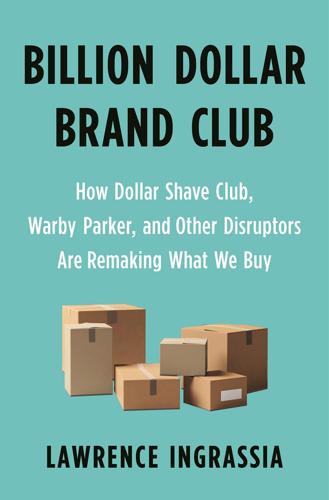
Billion Dollar Brand Club: How Dollar Shave Club, Warby Parker, and Other Disruptors Are Remaking What We Buy
by
Lawrence Ingrassia
Published 28 Jan 2020
Among the early Flexe customers at the Ontario warehouse were the online mattress retailers Casper and Lull; Mohawk, the maker of hOmeLabs brand minifridges and other small appliances; Vive, an online medical device store; and Kangaroo, an outdoor appliance e-tailer. The warehouse’s smallest Flexe customer was Cargo, which sells boxes filled with breath mints, lip balm, beef jerky, candy bars, energy drinks, and aspirin (small-ticket items carried by convenience stores) to Uber and Lyft drivers, who can resell them to their riders and make a few extra bucks. Vive occupied about 50,000 square feet, but Cargo initially occupied fewer than 1,000, with the ability to expand to 2,500, an amount of space that would have been unheard of for a large warehouse to provide to a customer in the past.
…
Jobs, Steve Johnson, Michael Johnson & Johnson Jones, Michael Kai Kalvaria, Selena Kangaroo Kaplan University Katz-Mayfield, Andy Kaziukenas, Juozas Kellogg’s Kerouac, Jack keyword bids Kickstarter Kim, John Brian kitchenware Kiva Systems Kleiner Perkins Kmart Korey, Steph Koulouris, George Krim, Philip Kumar, Adrian Lackenby, Steve Laczay, Tibor Lai, Patricia Lane Bryant Lark & Ro Laseter, Tim last-mile problem laundry detergent L Brands lead generation Le Conte, Thibault Leesa Lensabl LensCrafters Lerer, Ben Lerer Hippeau Levine, Mark Levi Strauss Levy, Brian lifestyle branding lifetime guarantee Lingley, Ann LinkedIn Lively Locus Robotics logistics Lola Lookalike Audience Lord & Taylor L’Oréal Louis Vuitton LTV (lifetime value) luggage rolling smart Lull Lumi Luxottica LVMH Lyft machinery, hair coloring production MacNeil, Thomas Macy’s Made In Madison Reed Mahoney, Patrick malls Mama Bear manufacturing Maridou, Evan Marino, John-Thomas “JT” marketing. See also advertising cost per order costs of data analytics and discounts and physical space as tool for marketing software Marketplace Pulse market share Marlboro Man Masinter, Mark mattresses Mattress Firm Maveron May Department Stores McGhee, Devin McKinsey consulting MeCommerce Inc.
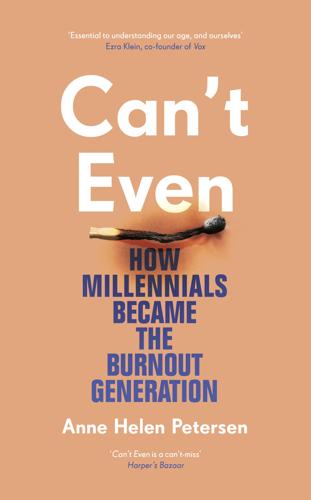
Can't Even: How Millennials Became the Burnout Generation
by
Anne Helen Petersen
Published 14 Jan 2021
Like so many other startup companies of the post-recession era, Uber was founded on the premise of disruption: taking an old industry, oftentimes one that was a bit clunky, and analog, but that paid its workers a living wage, and using digital technologies to change it into something sleeker, easier, and cheaper that would funnel money to the disrupting company. Uber, along with Lyft, Juno, and a handful of other ride-hailing companies, disrupted what has traditionally been known as the “livery” business: picking people up and taking them places. Their popularity launched an entire cottage industry of services reconceptualizing quotidian tasks: Rover disrupted pet care. Airbnb disrupted lodging.
…
Now separation from my phone is like phantom limb syndrome. In those early iPhone years, I could still leave it at home all day and not even notice its absence. Last year, I forgot it at home on a weekend trip and felt totally unmoored. I know exactly how alerts and push notifications manipulate me and am still delighted when I step out of the Lyft and feel a buzz in my pocket: Who could it be? Oh, right, it’s just the app asking me to rate my driver, just like it’s done the last five hundred times. I am the rat pushing the lever to feed myself poison that tastes, ever so briefly, like candy. Granted, I have a job that keeps me more online than most, more wed to Twitter than nearly all.

Randomistas: How Radical Researchers Changed Our World
by
Andrew Leigh
Published 14 Sep 2018
The results of the randomised experiment showed that ‘the mere myth of compatibility works just as well as the truth’.20 Some firms remain reluctant to run experiments, with managers stymied by bureaucratic inertia, or fearing that an experiment will demonstrate that they don’t have all the answers (the truth: they don’t).21 But in other industries, experiments are everywhere. Running a randomised experiment in business is often called ‘A/B testing’, and has become integral to the operation of firms such as eBay, Intuit, Humana, Chrysler, United Airlines, Lyft and Uber. Money transfer firm Western Union uses randomised experiments to decide what combination of fixed fees and foreign exchange mark-ups to charge consumers. Quora, a question-and-answer website, devotes a tenth of its staff to running randomised trials, and is conducting about thirty experiments at any given time.22 As one writer puts it, ‘We talk about the Google homepage or the Amazon checkout screen, but it’s now more accurate to say that you visited a Google homepage, an Amazon checkout screen.’23 Another commentator observes that ‘every pixel on the [Amazon] home page has had to justify its existence through repeated testing of alternative layouts’.24 Among the largest restaurants, retailers and financial institutions in the United States, at least a third are running randomised experiments.25 But these experiments don’t always go according to plan
…
This exploitation of employee ‘loss aversion’ did indeed raise productivity in a randomised experiment in a Chinese factory: Tanjim Hossain & John A. List. ‘The behavioralist visits the factory: Increasing productivity using simple framing manipulations’, Management Science, vol. 58, no. 12, 2012, pp. 2151–67. Similarly, ridesharing company Lyft found that new drivers were more likely to shift from a quiet time of the week to a busy time of the week if the difference was expressed as a loss than a gain (the company ultimately chose not to implement the results of the study): Noam Scheiber, ‘How Uber uses psychological tricks to push its drivers’ buttons’, New York Times, 2 April 2017. 42Alexandre Mas & Enrico Moretti, ‘Peers at work’, American Economic Review, vol. 99, no. 1, 2009, pp. 112–45; Oriana Bandiera, Iwan Barankay and Imran Rasul, ‘Social incentives in the workplace’, Review of Economic Studies, vol. 77, no. 2, 2010, pp. 417–58; Lamar Pierce and Jason Snyder, ‘Ethical spillovers in firms: Evidence from vehicle emissions testing,’ Management Science, vol. 54, no. 11, 2008, pp. 1891–1903.

Driverless: Intelligent Cars and the Road Ahead
by
Hod Lipson
and
Melba Kurman
Published 22 Sep 2016
When driverless cars become commercially viable, we predict that the new automotive industry will consist of a series of corporate marriages between software companies and car companies, each contributing what they do best. At the time of this writing, a few tentative unions have already formed between Google and Ford, Volvo and Microsoft, and GM and Lyft. Intimate partnerships between different car companies are already a time-tested business model in the automotive industry. Car-making takes place in a multitiered network of suppliers and entanglements between different car companies. It’s not unusual for one car company to make a portion of a car that will later be sold bundled into another company’s vehicle.
…
Figure 12.2 The most common job in most U.S. states in 2014 was truck driving. Source: National Public Radio Truckers won’t be the only ones whose jobs are taken by driverless vehicles. Taxi drivers and chauffeurs will also find themselves out of work. The profession of taxi driving has already been disrupted by the growing popularity of services such as Uber and Lyft, where anybody with a car can become a cabby. Driverless cars will sound the final death knell to the jobs of roughly 233,700 cabbies and chauffeurs employed in the United States.5 Uber’s CEO, Travis Kalanick, believes that the biggest cost component of running a taxi service is paying the car’s driver.

Infonomics: How to Monetize, Manage, and Measure Information as an Asset for Competitive Advantage
by
Douglas B. Laney
Published 4 Sep 2017
Therefore, reuse may not be a primary consideration in information ecosystem design, as reusability is a key characteristic of information. However, if you find certain information isn’t being reused, such as in the case of “dark data,” it may be time to reduce it. Repurpose Repurpose on purpose. Repurposing an asset involves sharing it and enabling it to be used for different reasons. An Uber or Lyft driver’s automobile is a prime example: it is used for both taxiing and personal reasons. Repurposing any asset, including an information asset, can lower or spread its net cost of ownership among multiple entities, and it can generate additional benefits that offset its initial expense or ongoing depreciation.
…
Power 57, 67, 229 Jessup, Beau Rose 35 Juniper Networks 33 keiretsus 132 Keough, Don 132 Knowledge Centered Support (KCS) 171n15 knowledge management (KM): information strategy 179; knowhow 155–6; people 191 “KnowMe” program, Westpac 54 Kosmix 31 Kovitz Investment 164 Kraft 39 Kreditech 62 Krishna, Dilip 260 Kroger 32, 36 Kumar, V. 30 Kushner, Theresa 272 Kyoto Protocol 63 Ladley, John 25, 120n13, 148, 187 Last.fm 34 Latulippe, Barb 188, 195, 234–5 Leatherberry, Tonie 260 legal rulings, information property rights 303–5 LexisNexis 57 liability, information as 216 library and information science (LIS) 156–8 library science: information strategy 179–80; metrics 184 lifecycle 252; see also information lifecycle LinkedIn 64 liquidity, information 20–1 Lockheed Martin 41–3, 62; project information 88 Logan, Valerie 144, 244 logical data warehouse (LDW) 181 Loss Adjustment Expense (LAE) 95 Lovelock, James 144n7 Lowans, Brian 272 loyalty 15, 22, 37, 80, 246 Lyft 141 McCrory, Dave 261 McDonald’s 236 McGilvray, Danette 272 McKnight, William 148 Magic Quadrants 68 marginal utility 273, 276; architecting for optimized information utility 278–9; concept of 284n4; of information 276–8; information for people 277; of information for people 277; information for technologies 278; of information for technologies 278; law of diminishing 276; negative 276; positive 276; understanding 273 market: cultivating for information product 73; entering new 35–6; market value of information (MVI) 257, 262, 266, 274; monetization success 74 Mashey, James 101n8 Mears, Rena 260 measurement: business-related benefits 244–5; data quality 246–8; future of infonomics 292; information assets 242–6; information asset valuation models 249–60; information–related benefits 242–4; information valuation 260–1; value of information 246–61 Mechanical Turk 65 Medicaid 44, 98 Medicare 44, 98 Megaupload 225 Memorial Healthcare System 62 Merck 66 Mercy Hospitals 98 metrics: applied asset management 184–6; assessing data quality 246–9; information asset management 182–6; information management challenges 299; information supply chain 126–7; objective quality 247–8; subjective quality 249 Microsoft 42, 223–5, 239n8 Microstrategy 133 Miller, Nolan 231, 272 Mishra, Gokula 235 MISO Energy 267 Mobilink 80 Mondelez 39 monetization 11–13, 16–18, 20, 29, 31–2, 34, 40–1, 44, 46, 55–6, 66–9, 80–100, 139, 176, 195, 244–5, 257, 265–6, 273, 277, 281, 286–7, 290, 292 monetizing information 28–9; analytics as engine of 77; bartering for favorable terms and conditions 38–9; bartering for goods and services 37–8; being in information business 48–9; creating supplemental revenue stream 32–3; defraying costs of information management and analytics 40–1; enabling competitive differentiation 36–7; entering new markets 35–6; future of infonomics 292; improving citizen well-being 45–8; increasing customer acquisition and retention 29–31; introducing a new line of business 33–4; measurement benefits 244–5; more than cash for 14–16; myths of 12–13; possibilities of 11–12; recognizing organizational roadblocks to 287–8; reducing fraud and risk 44–5; reducing maintenance costs, cost overruns and delays 41–4; success of 74–6; understanding unstructured information 94–5; value of 265–6 monetizing information steps 55–74; alternatives for direct and indirect monetization 66–8; available information assets 59–66; feasibility of ideas 69–73; high-value ideas from other industries 69; information product management function 56–9; market cultivation for information 73–4; preparing data for monetization 73 Monsanto 8, 21 Mozenda 65 Mullier, Graham 239n15 multiple listing service (MLS) 53–4 Multispectral 35 Nabisco 39 Nash Equilibrium 273 National Health Service 232 Naudé, Glabriel 156 Negroponte, Nicholas 147 Netflix 59 network effect 25, 27n14 New Jersey, state of 179, 192 New York City, reducing fraud and risk 44–5 New York Stock Exchange 23, 134 Ng, Andrew 231 Nielsen 34, 57, 63, 67 non-rivalrous 19, 131, 235, 256, 277, 280 non-rivalry principle 142, 274 Nordic Wellness Products 33 North Atlantic Treaty Organization (NATO) 147–8 Oberholzer-Gee, Felix 169 Ocean Tomo 213 O’Neal, Kelle 272 OpenClinical.org 98 operational data, information asset 61 opportunity cost for information 279–80 Orange 33 ownership: brief history of 223; habeas corpus of rulings on 226–7; information 221–2, 237–8; information location 223–5; infothievery 225–6; internal, of information 233–7; owning usage of information 230–1; personal, of personal information 231–3; see also information ownership; property, information as Pacioli, Luca 210 Panchmatia, Nimish 43 Patel, Ash 134 patent 1, 19, 28; algorithm 239nn17–18; applications 230–1, 260; economic value 229; intangible asset 168, 207; intellectual property 128, 130 Patrick, Charlotte 34 People Capability Maturity Model (P-CMM) 165–6 people-process-technology 99 Pepsi 40 performance metrics, information supply chain 126–7 performance value of information (PVI) 254–5 periodicity 248 personal information, ownership of 231–3 personally identifiable information (PII) 25, 76, 178 physical asset management 158–63; asset condition 161–2; asset maintenance and replacement costs 162–3; asset register 160–1; asset risks 161–2; governance 188; vision 176 Pigott, Ian 7 Pinterest 31 Plotkin, David 187 PNC Bank 192 Poste Italiane 47 Post Malaysia 47 Potbot 64 Preska, Loretta 224 Prevedere Software 97 Price, James 106, 114–15, 181, 186, 272 price elasticity of information 275–6 process: applied asset management 194–6; information management 193–6; information management challenges 301–2; maturity, challenges and remedies 193–4 production possibility frontier 280 productive efficiency 280 productization, monetization success 75 product management function 56–9 profitability, information 24–6 ProgrammableWeb 63 property, information as 227–30 public data, information asset 64 Publicly Available Specification (PAS): metrics 184; physical asset management 158–60, 162–3 public-private partnerships 47 quality see data quality Radio Shack 141 Rajesekhar, Ruchi 267 Raskino, Mark 37 Realtor.com 53 records information management (RIM) 152–3 Reddit 23 Redman, Thomas 235, 272 relationships, bartering for 38–9 reusable nature, information 19–20 revenue: monetization success 74; supplemental stream 32–3; value of expanded 266 Ricardian Rent 273 risk 12, 14, 28, 44–5, 62, 74–5, 85, 89, 91–2, 106, 115, 125, 139, 152, 159–61, 185, 194, 216, 242–4, 256–7, 286–90; reduction 44–5, 74–5, 85, 89; monetization success 74 Rite Aid 32 Roosevelt, Franklin 37 Rosenkranz, E.

Laziness Does Not Exist
by
Devon Price
Published 5 Jan 2021
When taking Upwork’s fees and time spent finding new clients into account, Alex’s transcription job pays much less than minimum wage. But it’s better than nothing, he says, and it allows him to squeeze a few more hours of earning potential out of his day. A lot of us have turned to sites like Upwork, TaskRabbit, Uber, Lyft, Fiverr, or Grubhub in order to make supplementary income. After all, full-time jobs with benefits are rapidly becoming a thing of the past.32 The harder it gets to make a conventional, nine-to-five living, the more people have to fill their weekends, evenings, and other spare moments with moneymaking side hustles like these.
…
It started out small, but it helped her recognize which of her friends were really there for her. “Some people disappeared on me the second I stopped giving them free rides and going out of my way to be there for them,” she says. “But other people stepped up their game. I told my friend Phil I couldn’t pick him up every time he wanted to hang out, and he immediately started taking Lyfts to my house. Just like it was nothing. That told me he really wanted to spend time with me even when I wasn’t doing all of the work to make it happen.” With other relationships, though, the change was not as seamless. In those situations, Grace had to learn to stand strong and reassert her needs and limits as often as necessary.
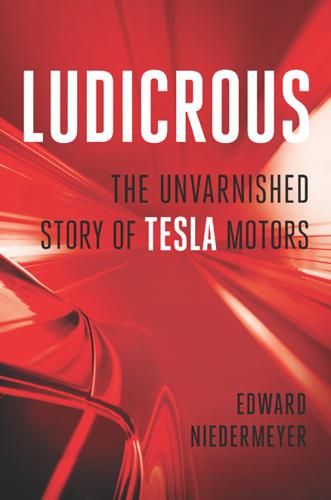
Ludicrous: The Unvarnished Story of Tesla Motors
by
Edward Niedermeyer
Published 14 Sep 2019
In effect, Musk was arguing that Teslas were about half a decade away from becoming economic perpetual-motion machines. As long as you could qualify for a loan of $35,000 or more, you could own an asset that could not only pay for itself, but possibly even earn its owner a net profit. Though Tesla owners would be forbidden from renting out their autonomous vehicles using Uber and Lyft, a “Tesla Network” would facilitate these private robotaxis, and Tesla would even provide its own fleet in localities where demand exceeded supply. Having pivoted from electric drive to autonomy, Musk was now following his Silicon Valley peers into the promised land of shared autonomy. But because Tesla was a traditional car company built on private ownership, it couldn’t simply shift overnight from sleek, expensive, powerful status-endowing cars to the anonymous shared mobility pods that Google and others in the space envisioned.
…
Meanwhile Tesla’s struggles with the traditional auto industry competencies of manufacturing and service, as well as the low market valuation of every other automaker, meant Tesla’s all-important valuation was more dependent on autonomous-drive technology than ever. If you believed Tesla’s promise, it was not only the sole automaker offering the hottest option on a new car, but it was also a potential disruptor of the hottest companies in the mobility technology space: Uber and Lyft. If you didn’t, the brazenness of Tesla’s ploy to collect money for a feature it couldn’t possibly deliver on raised huge questions about what else the company was bluffing about and what it was really worth . . . and once you started down that line of questioning, there seemed to be no end to it.
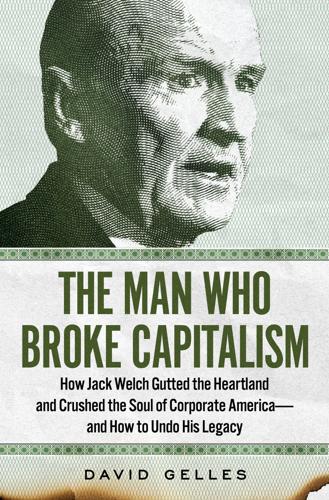
The Man Who Broke Capitalism: How Jack Welch Gutted the Heartland and Crushed the Soul of Corporate America—and How to Undo His Legacy
by
David Gelles
Published 30 May 2022
Even at some of the country’s largest employers, there is a concerted effort to keep workers as close to temps as they can possibly be, with the aspiration of making people as interchangeable as the parts of a machine. The new downsizing takes many forms, depending on the industry. The rise of the gig economy has allowed new multibillion-dollar companies to be built on the backs of a shadow workforce. There are millions of drivers for Uber and Lyft, hundreds of thousands of deliverymen for Instacart and Seamless, and many thousands more offering themselves up for part-time work on sites like TaskRabbit and Upwork. Some of these workers treat the jobs as side hustles, occasional gigs that provide a bit of pocket cash. But for many, gig work is a full-time occupation, only without the security of a steady paycheck, decent benefits, or an employer to hold accountable.
…
(1980 NBC documentary), 19 Immelt, Jeff, 97, 99, 102–4 critique of JW, 146, 164, 227 education, 102 family background, 102 as GE CEO, 104, 107, 109, 113–16, 121, 126, 136–45, 160–63, 225, 226–28 JW critique of, 104, 136–38, 146–47, 163–64 at Microsoft, 102, 171 removal as GE CEO, 163–64 terrorist attacks of 2001 and, 113–15, 136–37, 138, 228 Ingersoll Rand, 81 Ingraham, Laura, 158–59 Instacart, 170 Interbrew, 178 Intuit, 77, 105, 107 Ishrak, Omar, 84 Jack: Straight from the Gut (Welch), 117, 205–6 Jack Welch Management Institute (online MBA program), 11, 134–35, 195 Jensen, Michael, 37–38, 110 John Deere, 66 Johnson, Robert Wood, 25 Johnson & Johnson, 25, 69 Johnston, Larry, 104–5 Jones, Reginald, 17–18, 20–21, 24, 30, 32, 43, 75, 91, 96, 151 JPMorgan, 21, 135, 199, 214, 221 Judgment Call (Wetlaufer), 117–18 Kalanick, Travis, 226 Kerr, Steve, 63, 71 Khuzami, Robert, 148 Kickstarter, 213 Kidder Peabody, 54–56, 58, 143, 152 Kimberly-Clark, 71 King, Martin Luther, Jr., 26 Kitroeff, Natalie, 190–94 Klein, Joel, 132–33 Kodak, 59, 165 Kohlberg Kravis Roberts, 57, 70 Kozlowski, Dennis, 124–25 Kraft Heinz, 177, 181, 203, 206–7 Kudlow, Larry, 151–52 Kurria, Zipporah, 189 Lake, 143 Lane, Bill, 42, 45 Langone, Ken, 32, 104, 108–10, 137–38, 146, 220 Last Startup, The (Ries), 139 Lauer, Matt, 117, 135, 220–21 Lay, Kenneth, 124 Lazonick, William, 65–66 Leadership Institute, University of Southern California, 132 Lee, Jimmy, 135 Lehman Brothers, 67, 144 Lemann, Jorge Paulo, 177–82 Leno, Jay, 90 Letterman, David, 52 Lever, William, 204–5 Levitt, Arthur, 95–96 life expectancy, 183, 204 Limbaugh, Rush, 53 LinkedIn, 152 Lion Air Flight 610 crash (2018), 186–87, 190 Lockheed Martin, 61 Lowe’s, 110 Lyft, 170 Macy’s, 224 Management Today, 74 “Manager of the Century,” JW as (Fortune magazine), 7, 91–97, 114–15, 117, 118–19, 120, 146, 152, 159, 163, 198, 230 Maneuvering Characteristics Augmentation (MCAS, Boeing 737 Max), 153–56, 186–90, 192–94, 224 market concentration, 79–80, 176–78, 219 Marriott International, 224 Martin, Roger, 38, 64, 68, 106–7 McAllister, Kevin, 154, 189–91, 194 McDonnell Douglas, 77, 86–90, 127, 191 McKinsey & Company, 143, 182 McMillon, Doug, 184, 199 McNerney, Jim, 99, 101–2, 107 as Boeing CEO, 113, 127–30, 153–54, 194, 200 at the Jack Welch Management Institute (online MBA program), 134 Six Sigma and, 101, 112–13, 127 as 3M CEO, 111–13, 127 Means, Gardiner C., 24–25, 212 Meckling, William, 37–38, 110 Medtronic, 77–78, 84, 106 mergers and acquisitions, see dealmaking (generally); dealmaking at GE Merrill Lynch, 39, 144, 149 Microsoft, 67, 102, 133–34, 171, 217, 223 Milken, Michael, 120–21 Milleron, Nadia, 194 minimum wage, 93, 183, 209, 215, 218, 223 MIT Sloan School of Management, 132 Modern Corporation and Private Property, The (Berle and Means), 24–25, 212 Moltke, Helmuth von, 34 Money magazine, 67, 120 Montgomery Ward, 61 Motorola, 107 MSNBC, 53–54 Muilenburg, Dennis, 154–56, 187–94 Murdoch, Rupert, 54 Nabisco, 169 Nader, Ralph, 36, 194 Nardelli, Bob, 99–101, 107–11 Nasser, Jacques, 72–73 Nassetta, Chris, 223 National Steel, 66–67 Natura, 212 NBC, 157, 174 The Apprentice (TV program), 121, 134–35, 195 and GE acquisition of RCA, 51–54, 56, 57, 95, 152, 175, 176 GE takeover of RCA and, 51–54, 56, 57, 95, 152, 175, 176 If Japan Can, Why Can’t We?
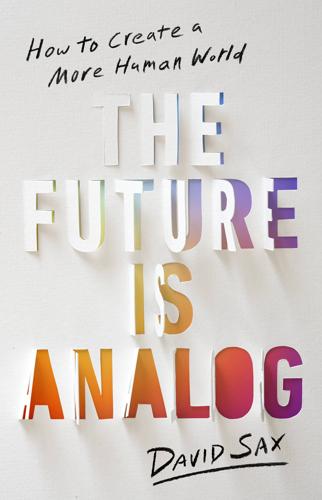
The Future Is Analog: How to Create a More Human World
by
David Sax
Published 15 Jan 2022
Fleets of self-driving electric vehicles were presented as the solution to so many of a city’s problems—public transit and trash collection, carbon emissions, congestion and accidents—and these would be supplemented by other digitally enabled vehicles, like the electronic scooters that already littered the sidewalks of cities around the world. Rather than replacing cars, many smart city plans proposed harnessing their true potential. By 2018 many cities were cutting deals with companies like Uber and Lyft to weave private ride sharing into their transit systems, based on the widely accepted promise that rideshares easily reduced congestion, emissions, and the other drawbacks of private car ownership, and paying them would be cheaper than investing in expanded bus service or building costly subway lines.
…
But if you lived in an actual city, like San Francisco, it did not. “Driverless cars and electric cars are still fucking cars!! They’re cars!!!” fumed Roberta Gratz, when we spoke about Sidewalk Toronto’s plans. “They’re not going to eliminate traffic; they’re going to increase traffic.” Studies already showed that this had happened with Uber and Lyft and other ride-sharing companies worldwide: all those drivers, cruising around in their empty cars, waiting for the next ping of a pickup (an activity known as deadheading), actually added more pollution and congestion to cities, even compared to privately owned cars. Ride sharing’s digital future just put more cars on the road, and from what I saw every day, their drivers already drove like idiotic robots.
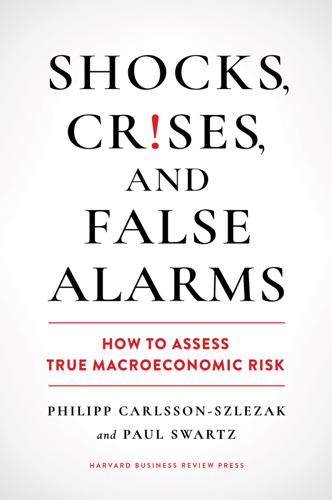
Shocks, Crises, and False Alarms: How to Assess True Macroeconomic Risk
by
Philipp Carlsson-Szlezak
and
Paul Swartz
Published 8 Jul 2024
Facing a new generation of technology, should we expect higher trend growth, or a continuation of the paradox? And does the lack of growth suggest that technological investments are in vain? The story of the humble taxi intuitively captures many of the arguments we make in this chapter. The rise of Uber, Lyft, and other such providers epitomizes much of the technology/growth paradox. Their snazzy apps offer better user experiences, and to many they represent what drives us forward, literally and figuratively. Yet all this innovation has not changed productivity—the ratio of inputs to outputs. The capital and labor inputs (car and driver) are unchanged.
…
See information and communication technology (ICT) indexes, geopolitical stress and risk, 211–212 India, 231, 238 Indonesia, 123 inertia, 152–153 infections, human deaths from, 36–37 inflation 1940s vs. 1970s, 139–141 breaking the regime in, 137–148 cyclical, and debt levels, 172–174 cyclical, risk assessment for, 149–158, 159f dollar death and, 232–233 evaluating the future of, 157–158 expectations and, 140–141, 143, 143f the Fed put and, 129–131, 130f future of, 247–249 in good macro, 3–4 interest rates and, 161–163, 162f monetarism on, 21–22, 151–152, 152f monetary policy and, 155–157, 156f, 157f move to upward bias in, 153–155 policy-induced recessions and, 38–40 postpandemic, 5–6, 141–144, 142f predictions on cyclical, 150–153, 150f prioritized over growth, 129–131, 130f regime break causes, 146–147 regime insurance, 144–146 structurally anchored, 39 tightness and, 253–254 trade and, 226–227 Ukraine War and, 213–214 upwardly biased cyclical, 133, 148, 149–158, 247–249 Inflation Reduction Act, 132 information and communication technology (ICT), 96–98, 97f innovation, product, 81, 82–84, 89 institutional linkages, of geopolitical shocks, 213–214, 218 intellectual property, 62 interest rates, 29f bubbles and, 183 capital allocation and, 167–168 deficits and, 175 drivers of, 163–164 in good macro, 3–4 high and volatile, 162f, 163, 166, 166f higher but healthy, 159–168, 164f inflation regime and, 137–138, 138f Japanification of, 165–166 low and depressed, 162f, 163, 166, 166f lower but healthy, 162, 162f, 164f, 165–166 mapping regimes in, 161–163, 162f real, over time, 159, 160f reserve-currency status and, 236, 238 volatility in, 167–168 investments bubbles and, 183 capital growth and, 61–62, 62f Covid pandemic and, 7 green, 189 interest rates and, 167 net, 61–62 real recession risk and, 38 recoveries and, 47–48 stimulus and, 123–124 strategic, demand for, 245 in technology, growth and, 79–81, 80f, 93, 93f trade and, 226 upward inflation bias and, 154–155 Iraq War, 201, 203, 213 Ishihara, Shintaro, 73 Japan debt in, 171 gravity of growth in, 68, 74f magical growth models on, 68, 72–74, 74f Japanification, 165–166 Kennan, George, 207–208, 209, 210 Kennedy, John F., 108 Keynes, John Maynard, 23, 108, 199 Khrushchev, Nikita, 71–72 Kitchen Debate, 72 Korea, 68, 124 Krugman, Paul, 73 labor markets bubbles and, 189–190 financial crises and, 249 future of, 245–247 growth and, 57–60, 60f, 68–70, 69f inflation and, 153, 154, 155–157, 156f, 157f manufacturing and, 83–84 productivity growth and, 92–95, 93f recoveries and, 47–48 technology adoption and, 91–92, 101–102 technology and cost cutting in, 81–82, 82f, 84f technology unemployment and, 92, 99–101, 102, 245–246 labor participation rate, 60, 62f Lehman Brothers, 121 liquidity problems, 48–49, 48f L-shaped recoveries, 46–47, 47f, 50 Lyft, 79–80 macroeconomic risks assessing, 4–5, 17–30 compared with human death risk, 36–37 cyclical (See cyclical risks) doom-mongering about, 23–27 economic eclecticism and, 27–30, 29f geopolitical, 14, 207–218 judgment in evaluating, 7–11 as narratives, 8–10, 18 policy recessions and, 38–40 macroeconomics, 7, 101–102, 202 economic eclecticism and, 10–11, 27 models in, track record of, 8–10, 20–23 as narratives, 8–10 weaknesses of, 17–18 magical growth models, 67–77 China and, 74–76, 75f Japan and, 72–74, 74f Soviet Union and, 71–72 stages of, 70–71 manufacturing labor costs and technology in, 83–84, 84f prices in, 85–88, 85f, 86f market offsets, 128 market rejection, 120, 122–124, 125 master-model mentality (MMM), 8–10, 17, 20–23, 255 McNamara, Robert, 21 media, doom and gloom in, 10, 24–25, 178–179 Mexico, currency crisis of 1995, 123 mindsets, 8, 18 history-is-destiny, 196, 197 history-is-history, 196–201, 203–205 Mississippi stock bubble, 182 MMM.
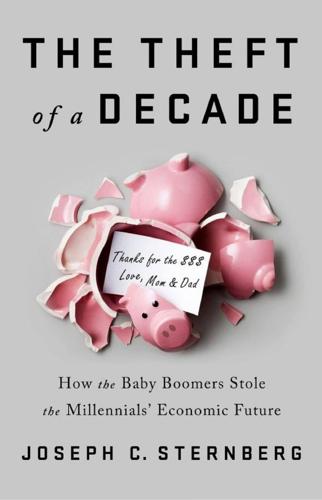
The Theft of a Decade: How the Baby Boomers Stole the Millennials' Economic Future
by
Joseph C. Sternberg
Published 13 May 2019
What exactly is the “gig economy”? One thing it isn’t is new. Freelancers and part-timers have always been important parts of the economy. What also isn’t as special about the gig economy as many people think is the thing that always catches everyone’s attention about it—the technology. Smartphone apps like Uber or Lyft or TaskRabbit make it a lot easier for workers to offer themselves as temporary employees without going through an agency, and the lower cost thresholds associated with hiring individuals to do jobs via an app mean that “temporary” can become as short as a single car ride. But the technology is an important part of the story of the gig economy less because it has created revolutionary new gig work than because it proves the bigger point of this chapter: enormous quantities of investment capital have flowed into companies creating these apps because making an app that will take the middleman out of temporary hiring is currently a lot cheaper than investing in almost any business activity that would create a full-time job.
…
Instead, the most important fact about the modern gig economy is its preoccupation with sweating capital as much as humanly possible—maximizing the profits from capital assets that a “sharing-economy” entrepreneur already owns—while investing as little as possible in labor. The central premise of Uber or Lyft or Airbnb or many other sharing platforms is that the app will allow a micro-entrepreneur (or the platform itself) to extract maximum profits from personal assets like a car or an apartment that otherwise would sit idle for large parts of the day. The companies are desperate to have as few employees as possible.
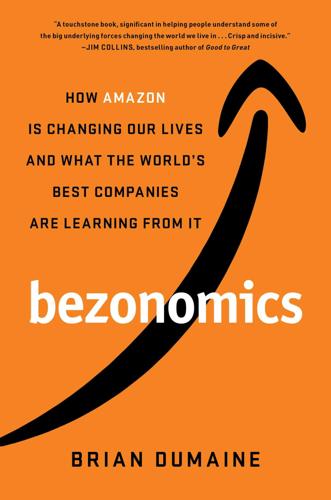
Bezonomics: How Amazon Is Changing Our Lives and What the World's Best Companies Are Learning From It
by
Brian Dumaine
Published 11 May 2020
Nor is Amazon content to fully depend on the local post office or delivery companies such as UPS to move their packages over that crucial last mile from the warehouse to the customer. In 2018, Amazon said it would buy twenty thousand Mercedes vans to launch a program whereby entrepreneurs could, with Amazon’s help, start their own local delivery companies. The company also has a program called Amazon Flex that makes it possible for Uber and Lyft drivers to deliver packages. It’s also experimenting with drone deliveries. It made its first such test delivery in England in 2016 when a drone carried an Amazon Fire TV and a bag of popcorn to a customer near Cambridge. From the time the customer clicked the buy button to the time the drone landed at his home was only thirteen minutes.
…
See also wealth gap Sanders’s criticism of Amazon for, 240–41 Indeed.com, 131 India, 14, 66, 189, 221, 271 Infinity Cube, 37–38 influencers, 210 innovation, and flywheel, 80–81 Instagram, 194, 197 addictive nature of, 17, 18 feature for selling directly to customers, 211 Lulus’s influencers on, 210–11 Instant Pot electric multicooker, 151 Institute for Local Self-Reliance, 148 insurance industry Amazon’s entry into, 219, 228, 234, 236 Ant Financial in, 235 robo-advisory services in, 235 Intel, 51 Internet addiction to, 18 Bezos’s early interest in, 39 business models based on, 125 cloud computing services on, 25 DARPA and creation of, 34 home health care using, 223 HTTP standards for, 125 voice access to, 112 Internet of Things, 123–24, 270 iOS operating system, 14, 225 iPhone, 26, 64, 69, 108, 110, 117, 199 ITT, 216 Iverson, Ken, 5 iWatch, 222 Iyengar, Sheena, 21 Jabra, 111 JANA Partners, 168 Jassy, Andy, 44, 51–52, 63 JD.com AI Internet-connected devices from, 124 AI skills and customer knowledge of, 8, 124, 270 Amazon’s competition with, 266 delivery drones used by, 178 global spheres of influence with, 188–89 warehouse with robots of, 136–38 Jentoft, Leif, 139 JetBlack delivery service, Walmart, 190–91 Jet.com, 54, 183–84, 185 jobs AI-driven tech giants and, 271 AI’s impact on, 143, 248, 267 automation and, 9, 12, 126–27, 141–43, 241–42, 248, 267 Bezos as focal point for concerns about losses of, 126 drone deliveries and, 124 interconnected devices and, 124 new technologies and, 143–44 robots and, 11, 29, 127, 144, 270 technology’s disruption of, 127 universal basic income and, 248–49 wage changes in, 127 Jobs, Steve, 26, 53, 55, 110 Joly, Hubert, 204 Jorgensen, Ted, 31–32 Joy, Lisa, 102 JPMorgan Chase, 27, 227, 234, 236 Julie talking dolls, 107 Juniper Research, 220 Juno Therapeutics, 217 Kabbani, Nader, 226 Kalanick, Travis, 57–58 Kantar, 16, 168 KFC restaurants, China, 198, 199 Khalifah, Saoud, 159–60 Khan, Lina, 258–59 Khanna, Ro, 243 Khosrowshahi, Dara, 8 Kindle e-readers, 26, 31, 47, 65, 66, 74, 76, 80, 81, 82, 105, 217, 226 King, Martin Luther Jr., 249 Kiva robots, 128 Koch, David and Charles, 250 Kosmo.com, 64, 65 Kraft Heinz, 267 Kroger, 5, 24, 136, 141, 168, 175, 176 Lake, Katrina, 206, 207–8 Lennar, 218 Liu, Richard, 178 Livongo Health, 229 Long Now Foundation, 71 long-term management in Bezonomics, 76, 88 long-term view AI flywheel and, 71, 81–82, 269 Amazon innovation lab and, 224 Amazon’s use of, 3, 61–64, 65–66 AWS example of, 63–64 Bezos and, 59, 61–66 Blue Origin project and, 68 employees’ need for, 63 machine learning on cancers and, 223 new delivery technologies and, 174 philanthropy strategy and, 251 profitability and, 61–62 pushes into new sectors and, 236 shopping on Alexa and, 116 10,000-year clock and, 70–71 Walmart’s JetBlack project and, 191 Lord of the Rings, The (Tolkien), 101 Lore, Marc, 54–55, 183–88, 189, 190, 191, 192 Los Angeles Times, 207 Lot-Less Closeouts stores, 167 Loup Ventures, 110 Lululemon, 190 Lulus, 9, 194, 209–11, 213 luxury retailers, 9, 200–2 LVMH, 205 Lyft, 23 Ma, Tony, 90 machine learning Alexa voice recognition and, 113–14 Amazon’s application of, 270 Bezos on power of, 83 black box and, 91, 147 decision-making and, 87 fake review detection with, 160 flywheel model and, 5, 83–84, 85 health-care industry and, 223 voice recognition and, 109 Machine Learning service business, Amazon, 218 Mackey, John, 164 Man in the High Castle, The (TV series), 102–3 Marcus, James, 41, 45 Marketplace, 52 Amazon Lending loans to small businesses on, 234 Bezos’s creation of, 42 number of businesses on, 10 third-party merchants on, 42 Marketplace Pulse, 262 MarketWatch, 208 Marriott Hotels, 143 Max Borges Agency, 15–16, 19 McCabe, Chris, 153 McCarthy, John, 107 McGrath, Judith, 66 McKinsey & Company, 126, 174, 181, 215 McMillon, Doug, 185–86 McWhorter, John, 120 medical records project, 225 medicine.
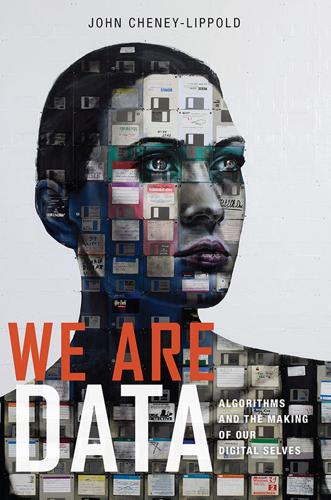
We Are Data: Algorithms and the Making of Our Digital Selves
by
John Cheney-Lippold
Published 1 May 2017
A machine-learned model of ‘woman’ from 2008 is archaic, most definitely out of fashion, and most likely passé. ‘She’ has no idea what Snapchat or Tinder is. ‘She’ might not know there was a global financial collapse around the corner. ‘She’ has never heard of the Arab Spring and wouldn’t know what an Uber or Lyft “ride-sharing” car was, even if it drove back in time and hit ‘her’ on the street. The measurable-type models that Quantcast developed in 2008 need to account for the dynamism of life itself. New sites, new words, new interactions, and new types of performance, when datafied, maintain these recursively updated versions of ‘gender’ (as well as ‘ethnicity,’ ‘class,’ ‘age,’ and even ‘education’).
…
, 117, 119 LetsMove.gov, 140 Levy, Steven, 228 Lianos, Michalis, 197 liberalism, 113, 194–95, 224, 236, 297n26; individual, 104, 162, 199, 253; privacy, 22, 209–15, 218–19, 221–22, 225, 231, 233, 237. See also capitalism; neoliberalism Linguistic Inquiry Word Count (LIWC), 48–53, 49, 56, 89, 277n40 Live.com, 108 Livingston, Ira, 191 Lorde, Audre, 86 Lowe, Lisa, 188 Lyft, 133 Lyon, David, 31, 132 machine learning, 46, 47, 67–72, 70, 79–80, 109, 133 Mackenzie, Adrian, 181 MacKinnon, Catharine, 208 magic circle of play, 103, 284n17 Magnet, Soshana, 278n60 Manovich, Lev, 12, 73, 90 marimba, 46, 67–68 MARINA, 289n12. See also National Security Agency (NSA): data collection programs marketing, xiii, 22, 34, 53, 99, 108, 132, 134, 143, 172, 229–30, 265, 299n61; algorithmic identities, 5, 7–8, 10, 73–76, 91, 166, 182, 279n75; companies, 19–20, 66, 74, 109, 111, 123, 222.

Money Moments: Simple Steps to Financial Well-Being
by
Jason Butler
Published 22 Nov 2017
Thirty years later my current car is a lot more comfortable (and reliable) than that old Vauxhall, but it is also a lot more expensive. The cost of car insurance for young people has skyrocketed over the past decade, to the extent that is can be almost as much as the value of the vehicle. This often makes it unaffordable without financial help from their family. The advent of ride hailing apps like Uber and Lyft, and the eventual availability of autonomous electric cars, together with wider adoption of car-sharing and better public transport, as well as rising vehicle running costs, are combining to undermine car ownership among younger people in urban areas. ‘Our intention is to make Uber so efficient, cars so highly utilized, that for most people it is cheaper than owning a car.’ said Uber’s then CEO Travis Kalanick in 2015.
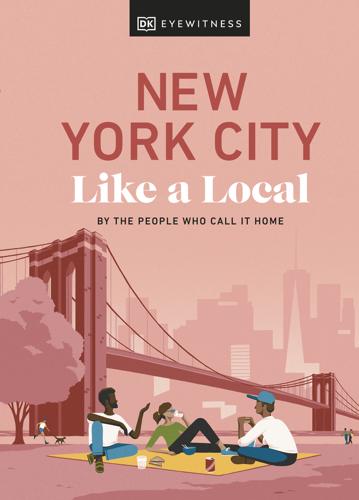
New York City Like a Local
by
Dk Eyewitness
There’s a weekly fare cap, which means that customers automatically receive free, unlimited rides for the rest of the week once they have paid $33 in fares – the same as taking 12 trips. By car or taxi Owning a car is rare in Manhattan. Instead, New Yorkers largely rely on taxi apps like Uber and Lyft or occasionally use those iconic yellow cabs. That said, the traffic-clogged streets mean public transportation is often a better choice, even in rush hour. Download these We recommend you download these apps to help you get around the city. WHAT3WORDS Your geocoding friend A what3words address is a simple way to communicate any precise location on earth, using just three words.
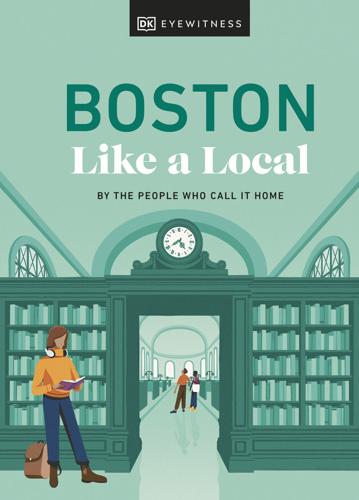
Boston Like a Local
by
Dk Eyewitness
Around for a week? Load your ticket with a 7-day pass for $22.50. By car and taxi In the city center, a lack of parking and lots of traffic make getting around by car difficult, so it’s only worth driving if you really have no alternative. Cabs aren’t common here, so if you do need a car, Uber or Lyft are the most popular choices. For longer jaunts, especially outside of the city, you can rent a car from the airport. Download these We recommend you download these apps to help you get about the city. WHAT3WORDS Your geocoding friend A what3words address is a simple way to communicate any precise location on earth, using just three words.

Chicago Like a Local
by
DK
The city’s roads can get congested in the Loop, particularly during rush hours. Outside the Loop, traffic is lighter and parking is readily accessible and often free (though make sure you check street permit signs). Private cab companies usually stick to the touristy districts and can be expensive; Uber and Lyft operate everywhere in the city. Download these We recommend you download these apps to help you get around the city. WHAT3WORDS Your geocoding friend A what3words address is a simple way to communicate any precise location on earth, using just three words. ///online.films.cares for example, is the code for the Greetings from Chicago mural.

Vancouver Like a Local
by
Jacqueline Salomé
To pay, buy a Compass Card from any Translink station and pre-load the card with money. You can also pay by contactless or your phone. Remember to tap the same card when exiting. www.compasscard.ca By car or taxi Between walking, cycling, and public transport, there’s little need to travel by car in town. For longer trips, rideshare apps like Uber and Lyft are available. Cabs are less common but, if that’s more your style, Yellow Cab is a good option. If you do drive, be aware that parking spots can be scarce, and roads can get congested during rush hour. Download these We recommend you download these apps to help you get about the city. WHAT3WORDS Your geocoding friend A what3words address is a simple way to communicate any precise location on earth, using just three words.

Hit Makers: The Science of Popularity in an Age of Distraction
by
Derek Thompson
Published 7 Feb 2017
(Titanic) or “It’s Toy Story with talking animals!” (The Secret Life of Pets). In Silicon Valley, where venture capitalists also sift through a surfeit of proposals, high-concept pitches are so common that they’re practically a joke. The home rental company Airbnb was once called “eBay for homes.” The on-demand car service companies Uber and Lyft were once considered “Airbnb for cars.” When Uber took off, new start-ups took to branding themselves “Uber for . . .” anything. Creative people often bristle at the suggestion that they have to stoop to market their ideas or dress them in familiar garb. It’s pleasant to think that an idea’s brilliance is self-evident and doesn’t require the theater of marketing.
…
James), 185–87, 197–205, 207 Leskovec, Jure, 215, 218, 221 Leslie, Ryan, 301–5, 306 Levy, Sidney J., 100 Levy, Steven, 269 Lieberson, Stanley, 136–37, 140, 141n, 322n135 Lincoln, Abraham, 284 literacy, 137, 150, 288 Loewy, Raymond, 46–48, 50–56, 68, 70, 71–72, 287 logos, 53, 159 Lombardo, Michael, 247–48, 251 Lorde (musician), 34, 236 Lost (television series), 58 Lucas, George allusions assembled by, 99, 106, 118, 186 and audiences, 285 and Bruzzese, 108 and creation of Star Wars, 102–6, 114–15, 117–18 and Flash Gordon, 103–4, 105, 115 Lyft, 61–62 Lynn, Freda, 139–140, 141n MacDonald, J. Fred, 291 Mad Men (television series), 244, 249 mail delivery services, 151 The Making of a Moonie (Barker), 217 malaria video, 194–95 Manet, Edouard, 22, 23 manufacturing, American, 48–49 Margulis, Elizabeth, 80 Maria Theresa, Empress, 122 Markel, B.

Rise of the Robots: Technology and the Threat of a Jobless Future
by
Martin Ford
Published 4 May 2015
Lila Shapiro, “Car Wash Workers Unionize in Los Angeles,” Huffington Post, February 23, 2012, http://www.huffingtonpost.com/2012/02/23/car-wash-workers-unionize_n_1296060.html. 19. David Von Drehle, “The Robot Economy,” Time, September 9, 2013, pp. 44–45. 20. Andrew Harris, “Chicago Cabbies Sue Over Unregulated Uber, Lyft Services,” Bloomberg News, February 6, 2014, http://www.bloomberg.com/news/2014–02–06/chicago-cabbies-sue-over-unregulated-uber-lyft-services.html. CHAPTER 8 1. For statistics on consumer spending, see Nelson D. Schwartz, “The Middle Class Is Steadily Eroding. Just Ask the Business World,” New York Times, February 2, 2014, http://www.nytimes.com/2014/02/03/business/the-middle-class-is-steadily-eroding-just-ask-the-business-world.html. 2.

Becoming Bulletproof: Protect Yourself, Read People, Influence Situations, and Live Fearlessly
by
Evy Poumpouras
Published 20 Apr 2020
Social media: Everyone loves to let everyone else know they’re on vacation. But if you’re posting “wish you were here” photos in real time, you’re also letting everyone know you’re away. Although it’s fun to gloat, don’t do it at the expense of inviting unwanted guests. Post your vacation pictures after you have returned home. 4. Taxi/Uber/Lyft pickup: Although having a car service pick you up at home is super convenient, it’s also an easy way to let everyone know—including your driver—that you’re leaving, especially with several suitcases in tow. When hailing a car for a ride to the airport, consider using a pickup location not directly in front of your home, like a few doors down or on the corner.
…
See influence Pew Research Center, 27 physical abilities/activity and being bulletproof, 17–19 and bulletproofing the mind, 275 detecting deception and, 203 disrupters and, 76 instincts and, 101 and mental resilience, 76 and polygraphs, 132–34 protection and, 77–89 and Secret Service mindset, 77–89 shift agents and, 92 See also conflict/confrontation; fights/fighting physical appearance: and reading people, 181–83 pickups, taxi/Uber/Lyft, 122 Pinsky, Drew, 71 place as disrupter, 75–76 and hard and soft targets, 83 plan/planning foundational protection, 80–89 and making your own plan, 98–99 shift agents and, 98–99 for what-ifs, 15 Plato, 23, 47, 103, 127, 229, 237 playing the long game, 61–64 Plutarch, 265 poker face, 183–84 police departments: as safe houses, 81–82 police interrogation rooms, 255–56 polygraphs asking questions after, 230 and discovering guilt, 199 and F3 response, 132–34 failure of, 141 and Golden Boy, 127–29 and how they work, 132–34 nonverbal behavior and, 199 and physical changes, 132–34 and playing the long game, 61–62 Poumpouras and, 129–32, 134–36, 139–42, 163–65, 230 and reading people, 16, 127–34, 139–42, 199 training to use, 129–32 validity of, 131 post-9/11 world, 14–15 Postal Service, U.S., 121 posture, 161–62, 184, 242, 256, 275 Poumpouras, Evy “Genie” ego of, 244 and gender issues, 286 “grace” and, 289 and growing up in fear, 34–36 image/impression of, 182 mistakes of, 260–61 and oath of Secret Service, 278 O’Neill fighting with, 113, 114 personal life of, 79 remembering name of, 219 Secret Service Valor Award for, 11, 296 and shopping book proposal, 231–32 on TV, 182 at William Esper Studios, 189 See also specific person or topic Poumpouras, Ioannis (father) Chios visit of, 293–95 death of, 295–96, 297 and Evy’s career ambitions, 36, 37 Evy’s relationship with, 36, 37, 293–96 and fear of living in New York City, 34–36 Poumpouras, Parthena (mother) and burglary in Poumpouras home, 28–29, 31, 32 and Evy’s career ambitions, 36–37 F3 response of, 29, 31, 32, 36–37 and fear of living in New York City, 34–36 speech patterns of, 192 Poumpouras, Theodoros “Teddy” (brother), 28, 35, 295 power, and voice, 193 powerful vs. powerless, mental resilience and, 72–74, 75 PPD.
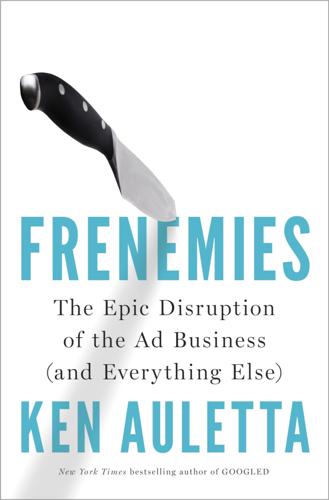
Frenemies: The Epic Disruption of the Ad Business
by
Ken Auletta
Published 4 Jun 2018
They chart for clients: What messages worked? What doesn’t work? Who comes to the store? Who doesn’t come to the store? It becomes, she believes, “a game changer.” Using this data, the brand can make changes to improve the customer experience and convenience, as Warby Parker has done for eyeglasses and Uber and Lyft have done for transit. Unless big agencies learn to shed old habits, to move faster, she believes they are in danger of plunging down the same rabbit hole as most newspapers. * * * ■ ■ ■ Big data excites Laura O’Shaughnessy, as it does Irwin Gotlieb, Martin Sorrell, Carolyn Everson, Michael Kassan, and the entire marketing industry and its clients.
…
A popular and socially useful app aimed at reducing drunk driving fatalities was introduced by the Mindshare agency on behalf of Campari America, which makes Skyy Vodka, Wild Turkey, and Campari. They created in-app messages, sent Friday evenings to sports bars, containing a five-dollar discount coupon with the ride-sharing Lyft. Campari enjoyed a huge jump in its brand awareness, and probably saved lives. Among the more effective marketing ploys to reach younger consumers has been influencer marketing. Young influencers have their own channels or platforms on YouTube, Instagram, Facebook, Snapchat, as well as their own Web sites.
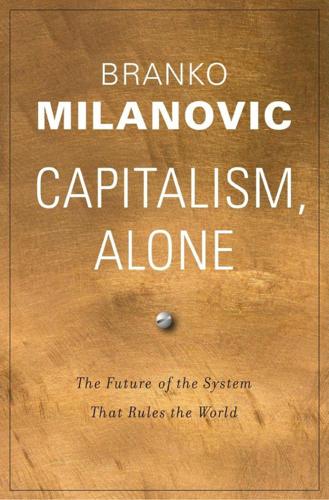
Capitalism, Alone: The Future of the System That Rules the World
by
Branko Milanovic
Published 23 Sep 2019
Now anybody who has some free time can “sell” it by working for a ride-share company or delivering pizza. A portion of leisure time that we could not commercialize (simply because jobs were “lumpy” and could not be squeezed into very short bits of free time) has become marketable. Likewise, a private car that was “dead capital” becomes real capital if used to drive for Lyft or Uber. Keeping the car idle in a garage or parking lot has a clear opportunity cost. Similarly, homes that in the past might have been lent out for a week without compensation to family and friends have now become assets that are rented out to travelers for a fee. As soon as this happens, such goods become commodities; they acquire a market price.
…
See also Third World Li, Chunling, 104 Liberal equality, 12 Liberal meritocratic capitalism, 5, 12–66, 215; addressing twenty-first century income inequality, 42–50; advantages of, 11; association of high capital and high labor income in the same individuals and, 34–36; assortative mating and, 19, 36–40; capital and labor income and, 17–18; causes of increase in inequality in, 21–23; competition with political capitalism, 10–11; complex nature of, 20–21; defined, 12–13; as end point of human evolution, 70; greater transmissions of income and wealth across generations and, 40–42; high concentration of capital ownership and, 26–31; higher rate of return on assets of the rich and, 31–34; historical capitalisms, 13–21; increasing aggregate share of capital in national income and, 23–26; key features of, 13–23; new social policies and, 42–55; political capitalism vs., 207–211; possible evolution of, 215–218; self-perpetuating upper class in, 56–66; systemic inequalities in, 20, 23–42; threat to, 11; welfare state in the era of globalization and, 50–55 Liberal view of world, inability to explain place of communism in history and, 68–78 Libertarianism, 216 Lin, Justin, 126–127 Lobbying, 252n26 Lump of labor fallacy, 197–201 Luxembourg Income Study database, 99 Luxemburg, Rosa, 222 Lyft, 190 Ma, Debin, 115 Machiavelli, Niccolò, 171, 228, 252n25 Maddison, Angus, 232 Maddison Comparison Project, 232 Mafias, political capitalism and, 94 Major, John, 57 Mandeville, Bernard, 178, 185, 228 Mao Zedong, 79, 81, 245n12 Marketable asset, citizenship as, 134–136 Markovits, Daniel, 61, 193–194 Marriage education premium, 39 Marriage patterns, liberal meritocratic capitalism and, 18–19, 36–40 Marx, Karl, 1, 2, 3, 129; on British rule in India, 223, 245n10; defense of imperialism, 76; definition of capitalism, 12; definition of rent, 250n1; on function of capitalist, 22–23; on greed as abstract hedonism, 178–179; on role of ruling class, 65; on Russia, 245n6; on socialism in Russia, 74; on stages of economic development, 224–225; Third World and, 74 Marxian path of development of capitalism, 113–115, 117 Marxist view of history, 221, 224; inability to explain place of communism in history, 68–74 Mason, Paul, 194–195, 255n18 Mazumder, Bhashkar, 41 Meade, James, 48 Measurement: of capital share in total net income, 233–234; of global inequality, 231–233 Mercantilism, 150 Meritocratic capitalism, 49.
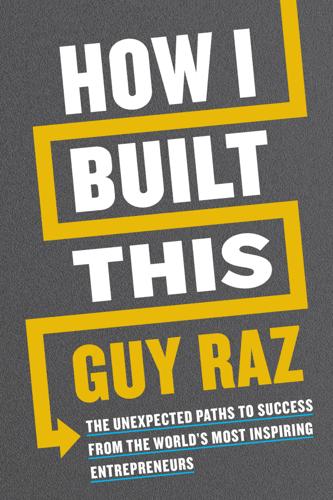
How I Built This: The Unexpected Paths to Success From the World's Most Inspiring Entrepreneurs
by
Guy Raz
Published 14 Sep 2020
A city undergoing a historic seismic shift, the fault lines of which ran in parallel right down Mission and Market Streets. To the south were the headquarters of many of the tech companies that hit the mother lode during the internet gold rush of the early 2000s and became the dominant forces in their respective spaces: Salesforce, Twitter, Instacart, Airbnb, Pinterest, Zynga, Trulia, DocuSign, Lyft, Uber. To the north were landmarks to the legacy companies that actually built the city—Ghirardelli Chocolate, Wells Fargo, Levi Strauss—and got their start during the actual gold rush in the late 1840s and 1850s, striking it rich not by mining for gold, but by operating on the periphery servicing the interests of those who did.
…
(magazine), 15 Indiegogo, 81 innovation, in Allbirds, 84–87 Innovator’s Dilemma, The (Christensen), 14–15 Instacart, 111–12, 215 Instagram, 118–20, 186, 270 intellectual property rights, 160–68 International Dermal Institute, 30, 186 investors Bevel and, 153–54 confusion surrounding, 76 for Five Guys, 130 friends and family as, 76–80 mindset of, 148 Stonyfield Farm, 140–41 storytelling, 65 iOS app store, 116 iterations, 84–93 Airbnb, 143–44 Angie’s BOOMCHICKAPOP, 249–51 Dippin’ Dots, 163 fundraising and, 156 Headspace, 199–200 post crisis, 170–72, 175–76 J Janney, Eli, 218 Jeni’s Splendid Ice Creams, 172–76 Jobs, Steve, 18, 38, 48–49 John, Daymond bootstrapping, 29 brand building, 122 on idea for FUBU, 24–25 other people’s money (OPM), 74–76 research of, 40 on Shark Tank, 10, 11 transition, into an entrepreneur, 26–28 mentioned, 41, 62, 270 Johnson & Johnson, 169–72, 176 Jones, Curt, 162–68 Jordan, Kim, 257, 258–59 Jordan, Michael, 235 Justin.tv, 185–86 K Kahneman, Daniel, 181 Kallman, Rhonda, 43–44, 49–50 Kan, Justin, 185–86 Kaymen, Samuel, 138, 141, 143, 145–46 Kelleher, Herb, 28, 29, 220, 268, 269 Kendra Scott (company), 269 Kennedy, Michelle, 69 Keurig Dr Pepper, 196 Kickstarter, 41, 81 Kilgore, Marcia, 255–56 kindness, 253–64 Kirk-Dyson, 160 Knight, Phil, 27 The Knot, 130, 134, 269 Koch, Jim education, 270 fallback plan, 29 partnership and, 43–44, 49–50 on risk vs. security, 14–18 mentioned, 20, 62 Korey, Steph idea for Away, 34 partnership and, 35–36, 43 product research and launch, 36–38 raising money, 75, 77, 123 mentioned, 45, 49 Kraft, 245 Krieger, Mike, 118–20, 186, 270 L LaFace Records, 112 Lake, Katrina, 110–11, 223, 228, 270 Lake, Scott, 108–9 Lampe, John, 178 Lärabar, 88–91, 99–100 leadership Andy Dunn on, 240 company culture, 208 crises and, 169–76 defining roles of, 226, 230 Eileen Fisher on, 257–58 failure of, 176–79 kindness, 253–64 mixed messages vs. clarity in, 235–38 vs. money, 243–52 pitfalls in, 205–8 leaky buckets, 188 leaping, into entrepreneurship, 23–31 LearnVest, 270 Lebesch, Jeff, 258–59 legal action and lawsuits American Apparel, 206–7 Ford and Firestone tires, 176–79 James Dyson on, 159–62 Microsoft monopoly, 104 Southwest Airlines, 220 Stitch Fix, 223 Lehman Brothers, 193–94 Let My People Go Surfing (Chouinard), 260 Levi Strauss, 215, 216 lifecasting, 185–86 Lincoln, Sadie, 112–13 Liu, David, 130–31, 132, 134, 269 location, 105–14 advice on, 111 Chez Panisse and, 209–10 examples of, 111–13 for Five Guys, 129 importance of, 105–6 Jeni’s Splendid Ice Creams and, 174 Katrina Lake on, 110–11 Tobi Lütke on, 106–9 L’Oréal, 4, 12 Lowe, John, 173, 174 Lowry, Adam bootstrapping, 51–52 money from family, 76–77 partnership and, 44–47 on partnership tension, 224–25, 228 privilege and access, 79 luck, 265–72 defined, 269 in How I Built This interviews, 267 vs. partnership, 47 privilege and access, 79–83 in professional money, 148 Lütke, Tobi, 106–9, 268–69 Lyft, 215 M Madison, Stacy, 181–84 marketing. See building buzz; word of mouth market niche, 214–21 for Belkin International, 216–20 from gold rush, 215–16 of San Francisco, 214–15 Southwest Airlines, 220 marriage, among entrepreneurs, 49, 228–30 Masters of Scale (podcast), 127, 203 maternity leave, 261 McDaniels, Ralph, 26, 122 McFarland, Billy, 43 McKean, Fiona, 108 McWhorter, Earlon, x–xi media, 122–23 Mehta, Apoorva, 111–12 Merriken, Lara, xiv, 88–92, 99–100 Method bootstrapping, 51–52 building buzz, 117 co-founders of, 44 money from family, 76–77 research, 46–47 Microsoft Windows, 97–98, 103–4 Mike Campbell (character), 180 mindfulness, 199–200 Mini Melts, 164 minorities barriers to entry, 98–99 Bevel, 152–54 Carol’s Daughter products, 11–12 privilege and access, 79–83 mission of Headspace, 198 importance of, 194 lack of identity, 238–39 purpose of, 196 of Rent the Runway, 195 the why of product, 197–98 monarch CEOs, 205–8 money access to, 79–83 vs. control, 243–52 culture and communication, 75–76 pressures of accepting, 82 Wells Fargo niche, 215–16 See also funding the business; investors money vs. deeper purpose Angie’s BOOMCHICKAPOP, 251–52 Chez Panisse on, 209–10 financial mismanagement, 193–94 Gary Erickson on, 245–47 mission first approach, 194 monopoly power, 103–4 mortgage-backed securities, 193–94 Mosey, Thomas, 163–64 motivation, from accepting other people’s money, 82 Munger, Charlie, 49 Murrell, Jerry and Janie, 128–30, 132, 134–36 Musk, Elon, xii N naming, of companies after founder, 152, 215–16, 251, 257, 269 after parent, 9, 246 Airbnb, 71–73 Bumble, 69–70 FUBU, 24 Spanx, 70–71 Nasser, Jacques, 178 National Highway Traffic Safety Administration (NHTSA), 177 Neeleman, David, 30 Nestlé, 245 Netflix, 203–5, 208 networking, 81–82, 119–20 New Belgium Brewing Company, 257, 258–60 New York Times, 150, 170, 207, 239 NHTSA (National Highway Traffic Safety Administration), 177 niche markets, 214–21 for Belkin International, 216–20 from gold rush, 215–16 of San Francisco, 214–15 Southwest Airlines, 220 Nike, 27 NPR, xiii, 132, 266–67, 271–72 O Obama, Barack, 56 Obama O’s (promotional cereal), 58–59 Oculus, 81 Ohanian, Alexis, 225–28, 230 1-800-GOT-JUNK?
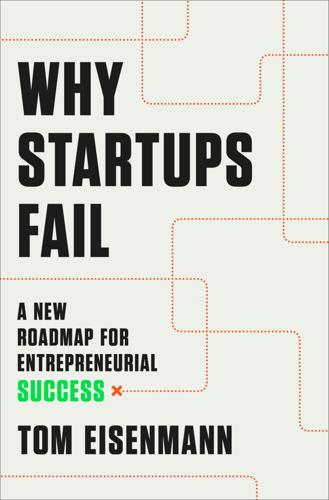
Why Startups Fail: A New Roadmap for Entrepreneurial Success
by
Tom Eisenmann
Published 29 Mar 2021
Fab was copied in Europe by Rocket Internet, a Berlin-based incubator that targets successful U.S. startups. Intense rivalry can have nasty consequences for profitability. New entrants often launch with low prices to gain a foothold, and incumbents must respond with price cuts to protect their market share. And if they vie for the same resources—like drivers, in the case of Uber and Lyft—rivals will bid up costs. Quality and customer service problems. Hypergrowth can strain a startup’s operations and contribute to quality problems—especially when the company relies on large numbers of employees in production and customer service. It can be difficult to hire enough employees to staff these functions, and then train them to get the job done right.
…
Middle managers start to wonder if senior management really knows what’s going on and what needs to be done—especially since the CEO is spending so much time out of the office, trying to raise more capital. Step 9: Ethical Lapses. Sometimes, the relentless pressure to sustain growth leads entrepreneurs to cut legal, regulatory, or ethical corners. Uber, for example, was accused of encouraging its employees to book and then cancel rides with its rival, Lyft. Zenefits, a licensed health insurance broker, created software that allegedly allowed its new salespeople to cheat on state licensing exams to sustain the startup’s rapid growth. At Fab, however, Goldberg avoided this ethical slippery slope. Step 10: Investor Alarm. As the venture burns through cash, its stock price declines.

Lonely Planet Iceland
by
Lonely Planet
SELTJARNARNES A scenic peninsula. HAFNARFJÖRÐUR & GARÐABÆR Vikings and distilleries. Find Your Way Reykjavík is a small, walkable city. It’s easy to get around without a car, but you may want to take the bus if you’re heading across town or to a further-flung neighbourhood. Uber and Lyft are not available here, and there are no trains in Iceland. Plan Your Days Whether you’ve got 24 hours or several days, you can make unforgettable memories in Iceland’s capital. Lebowski Bar | KERRY TAYLOR/ALAMY STOCK PHOTO © DAY 1 Morning • Spend your morning at Hallgrímskirkja and take in the views from the top of the tower, then stop at Mokka Kaffi for coffee and a waffle, and take yourself on a street art tour through the city centre.
…
Bike rentals are available in Reykjavík and a handful of other towns. Best ways to get around Iceland TIP Download the Strætó app to purchase individual bus tickets. Activate your ticket before you ride. RIDESHARING & HITCHHIKING Iceland has about as many cars as it has people. And while it doesn’t allow ridesharing services like Lyft and Uber, it does have a vibrant carpool scene. People submit routes they’re driving on samferda.net, and passengers can request rides and offer to split costs. Because public transport is limited outside of Reykjavík, carpooling is a popular option for getting between cities. It’s also not uncommon to see hitchhikers, particularly along Rte 1.

Thank You for Being Late: An Optimist's Guide to Thriving in the Age of Accelerations
by
Thomas L. Friedman
Published 22 Nov 2016
And now suddenly so many more people are meeting gay people. If empathy comes about through human interaction, this system creates so many more opportunities for that.” The day I interviewed Gorbis, Bettina Warburg, a researcher at the Institute for the Future, told me this story from her recent commute in the San Francisco area: “I was riding in a Lyft the other morning—where you ride-share with others headed in the same direction. My driver chatted with me and mentioned his last [passenger] was ‘voted out of the car,’ because he was expressing extreme homophobic rhetoric. He said, ‘You won’t get a ride in San Francisco with those values—you are in the wrong city.’
…
She sent back the following list: • Tell you what to wear & provide the weather forecast for interview day • Where to go with Google street map view of job location & public transit route to job location • Send interview reminders about the time and how long you should prepare to get there • Have you dial-in to a practice interview line, record your answers, then hear “best practices” answers • Provide tips from previously hired job seekers or managers at each step • Provide more transparency of what and why at each step of a job search so that the benefits are clear • Show other previously hired job seekers at the job location • Share interesting facts about the location and the manager with job seekers • Provide more info about the hiring manager whom they will meet • Ask job seekers to share interesting facts about themselves with the hiring managers • Auto schedule a Lyft or Uber to take them to their interview • Remind you to send a thank-you note to the interviewer Concluded Ringwald: “Everyone needs someone who says, ‘I believe in you’ … There is not just a skills gap—there’s a confidence gap.” And you can’t sustainably fill one without the other. You Need Work on Fractions Maybe the most popular intelligent assistant in the world today is Khan Academy, which was started in 2006 by the educator Salman “Sal” Khan and offers free, short YouTube video lessons in English on subjects ranging from math, art, computer programming, economics, physics, chemistry, biology, and medicine to finance, history, and more.
…
Louis Park Lindley-French, Julian Linkabit LinkedIn Linnee, Jane Linnee, Paul Linnee, Susan Linux Liss, Jeff Lithium Corporation of America Litwak, Robert locomotives, sensors on London, Iranian Embassy in London Review of Books Long, Mark Lord, John Los Angeles County Museum of Art Lovejoy, Tom Lovins, Amory Lucene (search engine) Ludwig, Cornelia Lyft Macalester College MacGregor, Clark Machine, the; in age of accelerations; definition of; impact on people and cultures of; inflection points and; technological change and machine learning machines: sensors on; supernova and Madagascar Maersk, sensors for Maersk Alabama maintenance, new modes of makers, political, see geopolitics, innovation in Malagasy Armed Forces Malawi Maldonado, Raúl Malik, Khalid Maltzman, Jonathan Mandela, Nelson Mandelbaum, Michael Mann, Thomas E.

Empire of AI: Dreams and Nightmares in Sam Altman's OpenAI
by
Karen Hao
Published 19 May 2025
Cofounded in 2016 by wunderkind Alexandr Wang, at the time a nineteen-year-old MIT dropout, Scale AI from the beginning followed a strategy that rested in part on its emphasis for providing specialized, quality services at a low price. One former Scale employee who oversaw workforce expansion explained to me the mandate: “How do you get the best people for the cheapest amount possible?” Scale quickly gained major clients like Lyft, Apple, Toyota, and Airbnb. Where MTurk’s workforce primarily came from the US and India, Scale went hunting first in Kenya and the Philippines, English-speaking former colonies with a long history of servicing American companies through call centers and digital work. The startup’s worker-scouting teams searched for the areas in each country that struck the very same balance of factors that would converge in Venezuela: a high density of people with good education and good internet yet who were poor and thus willing to work hard for very little money.
…
She threw herself deeper into pursuing her love of art and performance as a serious career: She took comedy classes; she went to open mics; she started a podcast; she rewrote the first draft of her book into a one-woman show she renamed The HumAnnie. By mid 2019, the funds were depleting, most of it spent, she says, on her various artistic investments, her high rent, her out-of-pocket health insurance, and her accumulating medical expenses—medical imaging, physical therapy, psychotherapy, Lyfts and Ubers to her appointments. For Annie, it was what happened next that spelled the beginning of the end of her relationship with her family. In May 2019, as her chronic pain continued, she learned that her dad had left her his 401(k). She quit the dispensary and drew up a six-month plan to use the extra financial runway—a little over forty thousand dollars—to tend to her health and get her creative endeavors off the ground enough to hopefully generate a sustainable source of income.
…
See also data annotation LAION, 137 LaMDA, 153, 253–54 language loss, 409–13 large language models, 15, 71, 115, 133, 153, 156, 158–60 language loss, 410 “On the Dangers of Stochastic Parrots,” 164–73, 254, 276, 414 Latitude, 180–81, 189 Lattice, 36 Leap Motion, 69, 150, 344 LeCun, Yann, 105, 159, 235, 305 Leike, Jan, 387–88 alignment and safety, 248, 250, 314, 316, 387–88, 403 departure of, 387–88, 401 Lemoine, Blake, 253–54 Lessin, Jessica, 33 Library Genesis, 135 Lightcap, Brad, 4–5, 7, 69, 373, 393–94 limited partnerships (LPs), 66–67, 69–71 LinkedIn, 50, 218 LISTSERV, 26, 162, 167, 168 lithium, 272, 283–84 Liu Cixin, 83 Livingston, Jessica, 32, 37–38, 50, 69 Llama, 305 location tracking, 33 Loopt, 32–37, 43, 68 Loopt Star, 33 Lourd, Bryan, 382, 390–91 Lovelace, Ada, 150 Luccioni, Sasha, 276–77, 309, 420 Luka, Inc., 180 Luo people, 207 Lydic, Desi, 381 Lyft, 202, 331 M MacAskill, William, 229, 231 machine learning, 77–78, 94–95, 98 Machine Learning for Health, 78 Mądry, Aleksander, 6, 8, 366, 380, 393, 398, 404 Maduro, Nicolás, 195–96 Mahelona, Keoni, 410–13 Makanju, Anna, 7, 154, 256–57, 302, 365 Mallery, Rob, 263 Manhattan Project, 27, 146–47, 315–18 Mannequin Challenge, 103 Māori people, 409–13 Marcus, Gary, 109–10, 118, 183, 252, 302, 307–8, 392 market capitalization, 18, 80, 84, 293 Mars, 23–24, 285 Martin, George R.
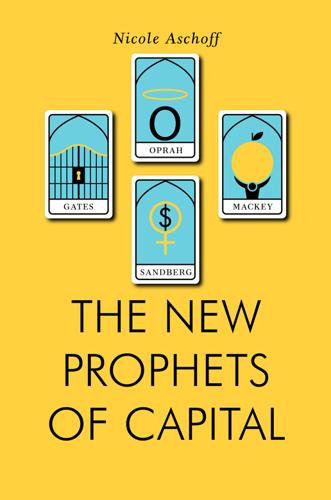
The New Prophets of Capital
by
Nicole Aschoff
Published 10 Mar 2015
They buy their groceries at the local food co-op. They attend classes. They teach classes. They go to networking events not just to hand out business cards, but to find other freelancers that share their passions.37 In the new sharing economy we’ll all be freelancers. We’ll rent out our spare rooms on Airbnb and drive our cars for Lyft. We’ll have a “portfolio of jobs” and live our lives by “essentialist” principles: We will live with “intention and choice” and celebrate the joy of “fulfilling a purpose” and making “small choices that lead to big change.”38 It’s all about adapting ourselves and acquiring the necessary skills and connections to make it in the world.
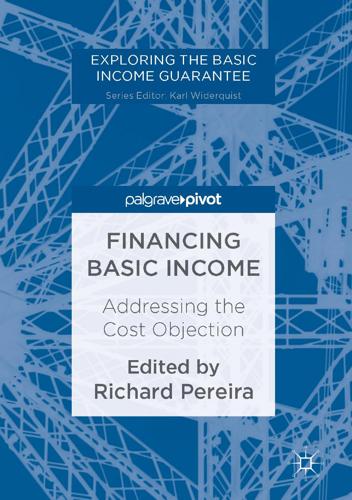
Financing Basic Income: Addressing the Cost Objection
by
Richard Pereira
Published 5 Jul 2017
A Victorian Taxi Industry Inquiry suggested raising the annual fee to $25,000 to recapture the monopoly rent from license holders. The TRRA report adopts this recommendation and calculates potential revenue of $360,050,000 from a total of 14,402 licenses in Australia at $25,000 apiece. This formula may have to be changed as the paradigm of paid passenger travel is being severely challenged by Uber, Lyft and other ride services. The monopoly is being broken, which may significantly lower the value of a taxi license. This may just mean transferring the rental fee to a larger number of private vehicle operators. Fishing Licenses and Quotas Many valuable fishing licenses and quotas were given out for free but are now sold for large amounts of money.

Berlitz Pocket Guide Stockholm
by
Berlitz
Published 19 Dec 2017
herrfrisör barber herrkläder menswear herrtoalett men’s restroom iss elevator [lift BE] hittegodsexpedition lost-and- found [lost property office BE] hjälm helmet hjälp n help hjälpa v help hosta n cough; v to cough hotell hotel huvudvärkstablett aspirin hyra rent [hire BE] hårbalsam conditioner hårborste hairbrush hårspray hairspray hårtork hair dryer hälsokostaffär health food store hämta v pick up (thing/person) händelse event här here höger right (direction) hörselskadad hearing impaired I i in ibuprofen ibuprofen ID-kort identification ifrån from incheckning check in desk (airport) information information desk ingen nobody (sg) inget nothing ingång entrance inkluderad included (in the price) innehålla contain inomhusbassäng indoor swimming pool inrikes domestic (travel) inrikes flyg domestic flight insekt insect insektbett insect bite instant messenger instant messenger instruktör instructor inte not inte inkluderad not included (in the price) internationellt körkort international driver’s license internet internet internetkafé internet café intressant interesting inuti inside ishockey ice hockey iväg away J ja yes jacka jacket jeans jeans jetski jet ski jobb job juvelerare jeweler järnväg railroad [railway BE] järnvägsstation train station jättesnygg stunning K kafé café kalender calendar kall cold (temperature) kam comb kamera camera kan v can (be able to) karaff carafe karta map kasino casino kassaskåp n safe kassör cashier (male) kassörska cashier (female) kastrull saucepan (cooking) katedral cathedral kemisk toalett chemical toilet kemtvätt dry cleaner keramik ceramics kjol skirt klassiskmusik classical music klippa cliff klippning hair cut klocka(n) clock klädaffär clothing store klädsel dress code klänning dress kniv knife kokmöjligheter cooking facilities kollega colleague komma v come konditori coffee shop kondom condom konferens conference konferensrum conference room kongresshall convention hall konsert concert konservöppnare can opener konstig strange kontaktlinsvätska contact lens solution kontant n cash kopia n copy kopieringsautomat copy machine kopp cup korkskruv corkscrew kort n card, adj short kosta v cost kostym suit (jacket/pants) kreditkort credit card kristallglas crystal (glass) krona krona (Swedish currency) kräkas v vomit kudde pillow kulle hill kulspetspenna pen kultur culture kuvertavgift cover charge kvinna female kvitto receipt kylskåp refridgerator kyrka church kyssa v kiss kök kitchen köpa v buy köra drive körkort driver’s license L laga v fix lakan sheet laktosintolerant lactose intolerant lampa light (lamp) landsnummer country code ledarhund guide dog ledig available ledigt rum vacancy legitimation identification lekplats playground lekrum playpen leksaksaffär toy store lektion lesson liftkort liftpass lila purple linje line linne linen liten small livbåt life boat livräddare lifeguard livsmedelsaffär grocery store [greengrocer BE] loafers loafers logga in log on (connect to internet) logga ut log out logi accommodation lotto lottery luftkonditionering air conditioning lugn calm lust n desire lyft lift (ski) lång long långsam slow låsa v lock läder leather lägenhet apartment [flat BE] lämna v leave lämna före träde yield lämplig suitable längdåkning cross country skiing länge long (time) läsa v (book) read; (school) study lätt easy lösenord password M magen stomach maka spouse (female) make spouse (male) man husband, man manikyr manicure marknad market matbutik produce store (general store) [grocer BE] med with meddelande message medicin medicine medium medium mellan between men but mens menstruation mensvärk menstrual cramps meny menu mikrovågsugn microwave minimum minimum (requirement) minneskort memory card misstag mistake mitt emot opposite mobiltelefon cell phone [mobile phone BE] moms sales tax [VAT BE] moped moped moské mosque motel motel motorcykel motorcycle motorbåt motorboat motorväg highway [motorway BE] mun mouth museum museum mygg olja insect repellent mynt coin måltid meal många many måste must måttsked measuring spoon mässan mass (catholic) N nagelfil nail file nagelvårdssalong nail salon namn n name napp pacifer [soother BE] nappflaska baby bottle naturreservat nature reserve norr north nota bill (restaurant) nummer number ny new nyckel key nyckelkort key card nå v reach någon anyone något anything, something när when nära nearby näsduk tissue nästa next nätuttag electrical outlet nödbroms emergency brake nödsituation emergency nödutgång emergency exit nöjesfält amusement park O obegränsad unlimited (mileage) och and olycka accident omkring about (approximately) ont i magen stomachache opera opera optiker optician orkester orchestra P paket package [parcel BE] panorama panorama papperservett paper napkin paracetamol acetaminophen paraply umbrella park park parkering parking parkering på gatan street parking parkeringsplats (one or several) parking lot [car park BE] pass passport passa v fit passkontroll passport control pedikyr pedicure pensionat boarding house per per per dag per day per vecka per week person person petit petite picknickområde picnic area PIN kod PIN code pjäxor snowshoes plan n plan plastfolie plastic wrap [cling film BE] platina platinum plats seat (on train) plats i mittgången aisle seat platsnummer seat number plattform platform (train) plomb filling plånbok wallet pojke boy pojkvän boyfriend polis police polisrapport police report polisstation police station porto postage post mail postkontor post office postlåda mail box premium premium [super BE] (gas) presentaffär gift shop present gift preventivmedel contraceptive pris price privat private privatrum private room problem problem program progam (events) prova v try provrum fitting room pub pub putsning trim (hair) pyjamas pajamas på on (switch) påse bag pärla pearl R rabatt discount rabattkort discount card racket racket (tennis) radera delete (computer) (engångs)rakhyvel (disposable) razor rap rap rastplats rest area recept prescription receptionist receptionist region region regn rain regnkappa raincoat rekommendera v recommend ren adj clean rensa clear (computer, ATM), clean reparationer repairs (car) reparera v repair resa v travel, n trip resebyrå travel agency resebyråkvinna travel agent (female) resebyråman travel agent (male) resecheck traveler’s check [traveller’s cheque BE] reserverad reserved restaurang restaurant resväska suitcase retur (biljett) round-trip ticket [return ticket BE] ridsport horseback riding riktnummer area code ring ring (jewelry) ringa v call (phone) rock coat rolig fun romantisk romantic rosa pink rullstol wheelchair rullstolsramp wheelchair ramp rulltrappa escalator rum room rumservice room service runda v round (golf) ryggsäck backpack rån theft räkning bill (hotel, invoice) rätt correct rökning förbjuden no smoking rörelsehindrad disabled S sambo domestic partner sammanträde meeting samtal phone call sandaler sandals sax scissors sedel banknote segling sailing semester vacation seminarium seminar sen late separerad separated (couple) serveringsavgift service servett napkin sevärdhet point of interest sex sex shampoo shampoo shoppingcenter shopping mall [shopping centre BE] shoppingkorg shopping basket shoppingvagn shopping cart shorts shorts siden silk sightseeingtur sightseeing tour simbassäng swimming pool SIM kort SIM card (cell phone) simma v swim sista last sitta v sit sittplatsbiljett seat reservation (train) sittvagn stroller [pushchair BE] sjuk sick [ill BE] sjukhus hospital sjuksköterska nurse sjö lake skada n damage, v harm skatt tax sked spoon skicka v send skidåkning skiing skild divorced skiva n slice skoaffär shoe store skog forest skor shoes skriva write skriva ut print skurmop n mop skyldig innocent skärp belt slagfält battlefield slips tie slott castle slå v (phone number) dial slå in v wrap (present) sms text message smutsig dirty smycken jewelry snabbköp supermarket snabbtvätt Laundromat [launderette BE] snart soon snorkelutrustning snorkeling equipment snowboard snowboard snäll adj nice snälla (request) please snö snow socka sock solbränna sunburn solglasögon sunglasses solsting sunstroke solstol deck chair sopborste broom sopor garbage (garbage disposal) [rubbish BE] soppåse garbage bag souvenir souvenir spa spa spara v save specifierad räkning itemized bill spel game spela v play spets lace spår trail [piste BE]; track (railroad) spårvagn tram stad city stadion stadium stadshus town hall stadskarta city map stanna n stay; v stop starta v start stekhus steakhouse stekpanna frying pan stekspade spatula stiga av get off (train) stollift chair lift stor big Storbritannien United Kingdom storlek size strand beach strumpbyxor panty hose [tights BE] strykjärn iron (clothes) studerande student stuga cabin stukning n sprain stulen stolen städutrustning cleaning supplies ställe place stämpla er biljett stamp your ticket stäng av turn off stänga v close stängt closed störa disturb stövlar boots summa amount surfbräda surfboard sval cool (temperature) svart black sweatshirt sweatshirt svensk adj swedish svenska adj swedish; (language) Swedish svullnad swelling svårt difficult syfte purpose symfoni symphony (orchestra) syn skadad visually impaired synagoga synagogue syrebehandling oxygen treatment syssla med v do (work with) sällskap company (companionship) säng bed sätta på turn on söder south sönder broken T ta v take ta emot v receive ta med bring ta ut take out tablett pill (tablet) tack thank you tala v speak tallrik plate tampong tampon tand tooth tandborste toothbrush tandkräm toothpaste tandläkare dentist tandprotes dentures tappa v lose; drop taxfri duty free taxfri vara duty free good taxi taxi teaterpjäs play (theater) tecken symbol (computer) telefon katalog telephone catalog telefonautomat pay phone telefonkort phone card telefonnummer phone number telefonväckning wake up call temperatur temperature tempel temple tenn pewter tennis tennis tennisbana tennis court terminal terminal (airport) tesked teaspoon text subtitle textil textiles tidning newspaper tidningskiosk newsstand tidsschema schedule [timetable BE] till to tills until tillåta v allow timme hour toalett bathroom [toilet BE] toalettpapper toilet paper tobaksaffär tobacconist tofflor slippers tolk interpreter top peak (moutain) torg square (town feature) trappa stair trasig broken (damaged) trevlig pleasant trist boring tryck push trådlös internet wireless internet trä wood träffa v meet träfigur wood carvings träkniv wooden knife träningsmassage sports massage träningsskor sneakers träsked wooden spoon träskor wooden clogs tröja sweater tugga v chew tull customs tulldeklaration customs declaration form tunnelbana subway [underground BE] tunnelbanestation subway station [underground station BE] tur tour turist tourist turist klass economy class turistattraktion tourist attraction turistbyrå tourist office turistinformation tourist information tvål soap tvätt laundry tvättmaskin washing machine tvättmedel laundry detergent tvättmöjligheter laundry facilities tyg fabric tyvärr unfortunately tåg train täcke n blanket tältsäng camping bed tändare lighter tändsticka match (fire) tänka v think U ull wool underhållning entertainment underkläder underwear (general) undersöka v examine (medical) undertäckna v sign upprepa v repeat upptagen busy ursäkta v excuse me (to get attention, pardon me) ursäkta mig excuse me (to get past) ute outside utgång exit way out utländsk valuta foreign currency utomhus outdoor utomhusbassäng outdoor pool utrikes international (travel) utrustning equipment utsiktspunkt view point utslag n rash uttag withdrawal (bank) V vacker beautiful vaginal infektion vaginal infection vakna v wake up valuta currency vandra v hike vandrarhem youth hostel vandring hiking vanlig regular gas var where var god stör ej do not disturb vara v be varje each varm hot varsågod (invitation) please varuhus department store vaskrensare plunger vattenfall waterfall WC (sign) restroom [toilet BE] veckotidning magazine vegetarian vegetarian vem who vid at vilja v want vilken which vilse lost visa v show vitrin display case vitt white vykort postcard våldtäkt n rape våning floor (level, etage in building) våtservetter för barn baby wipes väderleksrapport weather forecast väg road vägkarta road map välkommen welcome välling baby formula vän friend vänster left (direction) vänta wait värde n value värdesak n valuable värme heat väska bag väster west växel n change (money) växelkontor currency exchange office växelkursen exchange rate växla change money Y yr dizzy ytterliggare further (more) Å å stream åka v travel, drive (motor vehicle) åksjuka motion sickness [travel sickness BE] ålder age återlämna v return (give back) äkta authentic äkthetsbevis certificate of authenticity älska v love ändra v change (reservation) ändra på v alter änka widow änkling widower äta v eat ö ögonblick (one) moment öppet open öppettider business hours [opening hours BE] öppna v open öra ear öre öre (Swedish currency) örhänge earring öster east över across (the road) överfall mugging övergångsställe för fotgängare pedestrian crossing översätta v translate överviktsbagage excess baggage
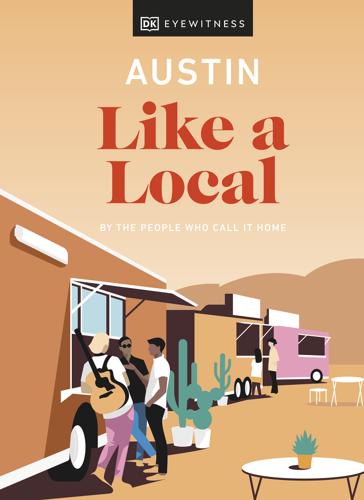
Austin Like a Local
by
DK
When you want to board, motion to the driver; then, when you’re about a block from your destination, trigger the stop signal by pushing the button or pulling the cord. By car or taxi Like the rest of Texas, Austin is car-centric. So, using a rideshare app or rental car is the way to go if you’re planning on zipping around to different parts of the city in a short period of time. Some of the most popular rideshare apps include Uber, Lyft, and nonprofit RideAustin. Taxis are less common than rideshares, but if that’s more your style Lone Star Cab Austin and Yellow Cab Austin are good options. When driving, avoid getting on I-35, the Interstate Highway that bisects the city to the east of Congress Avenue, at rush hour (or anytime, really) if you can help it – the traffic is real.

The Evolution of Everything: How New Ideas Emerge
by
Matt Ridley
Given the right institutions – a market in which to sell your product, the rule of law to prevent theft, a decent system of finance and taxation to incentivise you, some intellectual property protection, but not too much – you can set out to make an innovation and reap the rewards from it, despite sharing it with the world, in the same way you can set out to build a machine. That is roughly what the various firms around the world that are, as of this writing, offering mobile taxi-hiring services (Uber, Lyft, Hailo and so on) are doing – investing in innovation itself. But apart from some vague hand-waving about institutions, economists still have very little to offer in the way of prescriptions for innovation, except to say they know it will happen in open, free societies connected to the rest of the world by trade so that ideas can meet and mate.
…
Morgan 290 Judaism 258, 259, 260, 261, 263 Justinian, Emperor 34, 262 Kagan, Jerome 161 Kahn, Bob 301 Kalikuppam (nr Pondicherry, India) 185–6 Kammerer, Paul 56 Kant, Immanuel 8 Kauffman, Stuart 125 Kay, John 92 Kealey, Terence 134, 137, 138 Kedzie, Christopher 300 Kelly, Kevin 122, 125, 129, 131; What Technology Wants 120, 126 Kennedy, Gavin 25 Kennedy, John F. 206 Kenya 170, 181, 296 Keynes, John Maynard 105 Kim Il-sung 252 Kirwan, Richard 17 Kitzmiller, Tammy 49; Kitzmiller vs Dover Area School District (2005) 49–50 Klein, Richard 83 Knight, Thomas 121 Koestler, Arthur 56 Koran 8, 260–1, 261, 262 Kosslyn, Stephen 185 Kroeber, Alfred 120 Krugman, Paul 292, 293 Kryder’s Law 124 Kublai Khan 87 Kurzweil, Ray 124 Lagos 182–3 Lamarck, Jean-Baptise de 55–7 Lamb, Marion 56, 57 Lamont, Norman 295 Lane, Nick 61, 62 Lao Tzu 31, 241 Laplace, Pierre-Simon 17–18, 41 Latin America 229, 233 Laughlin, Harry 200, 202–3 Law, John 285–6 Lawson, Nigel 273, 275 leadership: China’s reform 217–19; and economic development 228–33; evolution of management 2258; giving credit to 215–16; Great Man theory 216–17, 218,222–5, 228; Hong Kong example 233–4; mosquitoes win wars 219–22 Lee, Sir Tim Berners 301 Leeds 91 Leibniz, Gottfried 12, 14, 15, 120, 276 Lenin, V.I. 217, 250 Lessing, Doris 188 Levellers 242–3 Libet, Benjamin 146 Library of Mendel 48 life: critics of Darwin 49–52; culture-driven genetic evolution 57–8; designed 39–42; development of the eye 44–6; Lamarckian view 557; natural selection 38–9, 42–8; organised complexity 44–5 Lilburne, John 242 The Limits to Growth (Club of Rome) 211, 212 Lincoln, Abraham 4 Lindsey, Brink 248, 318 Lisbon earthquake (1755) 14 Little Ice Age 276 Live Well Collaborative 130 Lloyd George, David 116 Locke, John 12, 20, 39, 41, 53, 67, 143,243, 247 Lockheed 130 Lodygin, Alexander 119 London 91, 92, 94, 121 Looksmart (search engine) 120 Lorentz, Hendrik 121 Lorenz, Edward 18 Lost City Hydrothermal Field 61 Louis XIV 101, 142 Lovelock, James 20 Lucretia, rape of 87 Lucretian heresy 10–12 Lucretius (Titus Lucretius Carus) 7, 8–10, 12, 14, 16, 21, 52, 244, 268; De Rerum Natura (Of the Nature of Things) 8–12, 13, 15–16, 21, 37, 59, 76, 96, 118, 140, 155, 174, 193, 215, 235, 256, 277 Luther, Martin 8, 216 Lycos 120 Lyft 109 Lysenko, Trofim 157 M-Pesa 296 Macbook Air laptop 319 McCloskey, Deirdre 96–7, 104, 108, 217n, 229, 248; The Bourgeois Virtues 32 Mackintosh, James 38 McNamara, Robert 206, 208 McNeill, J.R. 220–2 Mackey, John 227 Maccoby, Eleanor 161 Machiavelli, Niccolò 15 Madras 186 Mafia 238, 239, 240 Malawi 232–3 Malthus, Robert 38, 104, 193, 194–7, 203, 204–5, 208, 213–14, 246; Essay on Population 120, 194 Manchester 91 Mandela, Nelson 217 Manhattan 91 ‘Mankind at the Turning Point’ (Club of Rome) 211 Mann, Charles, 1493 220 Mann, Horace 176, 189 Mansfield, Edwin 133 Mao Zedong 210, 217, 219, 252 Marconi, Guglielmo 124 Marcus Aurelius 9 Margarot, Maurice 244 Marinetti, Filippo 198 Marshall, Alfred 106 Martin, William 61 Martineau, Harriet 38, 244–5; Illustrations of Political Economy 244 Marx, Karl 8, 106, 165, 216n, 248, 252, 269–70 Marxism 104, 267, 302 Maude, Francis 255 Maupertuis, Pierre-Louis 14–15 Maurice, Prince of Saxe 88 Mauritius 125 Max Planck Institute, Leipzig 146–7 May, Tim 306 Mayans 259 Mead, Carver 123 Mecca 260, 261, 261402 Medawar, Sir Peter 211 Medicaid 114 Medicare 114 Men in Black (film, 1997) 141 Mencken, H.L. 189 Mendel, Gregor 121–2, 199 Menger, Carl 106 Mexico 87, 170, 238 Micklethwait, John 247 Middle Ages 88 Mill, John Stuart 104, 105, 187, 246, 247, 249 Miller, George A. 159 Miller, Kenneth 51 Milton, John 15 mind: background 140–2; and the brain 143–7; and free will 142–3, 147–54; responsibility in a world of determinism 150–4; and self 140–1 mind-body dualism 141 Minerva Academy, San Francisco 184–5 Ming Chinese 130 Mises, Ludwig von 112 Mississippi Company 286 MIT (Massachusetts Institute of Technology) 184, 301 Mitchell Energy 136 Mitchell, George 136 Mitra, Sugata 176–7, 185–7 Moglen, Eben 303 Mohamed 8, 216, 257, 260–3, 266 Molière (Jean-Baptiste Poquelin) 15 money: crypto-currencies 296, 308–9, 310–12; emergence of 277–80; fiat money 297; financial crisis 287–94; financial stability without central banks 284–6; main functions 296; mobile money 294–8; and nationalisation of system 283–4; Scottish experiment 280–2; sub-prime market 289–94 Mongols 101 Monism 197–8 Montaigne, Michel de 15 Montana 92 Montesquieu, Charles-Louis de Secondat, Baron de La Brède et de 20, 31, 142, 216; The Spirit of the Laws 16 Montessori schools 188 Montford, Andrew 188 Monty Python’s Life of Brian (film, 1979)42, 265 Moore, Gordon 123 Moore’s Law 123–5 Morality: effect of commerce on 30–3; emergence of 26–7, 28; evolution of 28–30; impartial spectator 24–5, 30; nature-via-nurture explanation 23–4; spontaneous phenomenon 21–2, 25 More, Thomas, Utopia 15 Mormonism 263 Morning Star Tomatoes 225–8 Morris, Ian, War: What is it Good For?

Arriving Today: From Factory to Front Door -- Why Everything Has Changed About How and What We Buy
by
Christopher Mims
Published 13 Sep 2021
By being a gigantic, highly visible company that offers above-market wages, plus health-care benefits starting on day one, Amazon is able to attract huge numbers of applicants. And because it relentlessly pursues automation to make the jobs of its workers ever simpler and more error-proof, it can attract and productively employ huge numbers of potential associates regardless of their level of skill or education. The genius of ride-sharing companies Uber and Lyft (not to mention delivery start-ups Postmates and Instacart) is that thanks to two-sided marketplaces run by software, route-planning algorithms, and GPS, all you need to know to work for these companies is how to drive a car. In the same way, the genius of Amazon is that all you need to possess in order to work in one of its warehouses are sensorimotor skills most people acquired by the time they’re in grade school.
…
See trucks and truck drivers longshoremen, 67–76; automation of job, 70–76, 85–86; ILWU, 69–74; intersection of humans and automation, 69, 70–71, 77, 79, 85–86; linesmen, 65; as political and economic force, 33, 69; strikes and striking, 33, 71; at TraPac terminal, Los Angeles, 67–70, 72, 74–75; truck drivers versus, 74–75; wages earned by, 33, 69, 70, 73–74 Los Angeles Harbor Light, 58–59 Los Angeles river system, 51–52 Los Angeles/Long Beach, combined Port of, 45–55, 58–59, 61, 70–72, 75–76 Louisville, KY, Amazon fulfillment center at, 202 Lyft, 217 MacDonald, Thomas Harris, 128 “machine-gunning,” 207 Maersk, 21, 22, 55, 70, 72 main merge (7:1 or 9:1 merge), 190 “making rate” at Amazon warehouses, 172, 176, 197–98, 202–9, 213 management systems, 221–32; ACES (Amazon Customer Excellence System), 227; automation, predictability, and efficiency, relationship between, 230–32; compared with Bezosism, 198–99, 207, 214, 231; “continuous improvement,” 222, 223, 226, 228–30, 232; “disruption,” 223; 5S, 228; “just-in-time” manufacturing, 227; kaizen (“lean manufacturing”), 207, 221, 223, 224, 226–32, 239; Kiva robot system and, 227–31; mythologies of, at Amazon, 227–28; on-time delivery, Amazon’s concern with, 223–24, 225–27; Six Sigma, 222–23; “standard work,” concept of, 230; terminology of, 226–28, 229, 253; Toyota Production System (“lean production”), 198–99, 207, 221–22, 224–25, 226–29; worker empowerment and, 227–28, 229, 232.
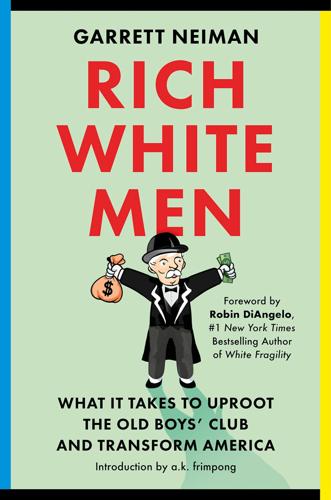
Rich White Men: What It Takes to Uproot the Old Boys' Club and Transform America
by
Garrett Neiman
Published 19 Jun 2023
It’s not easy being a low-wealth white man in a wealthy-dominated society, but the compounding unearned advantages of gender and race offer some protection. When I heard about the white woman who threatened to send police after a Black bird-watcher in Central Park in 2020,10 I was angry. And I was angry at the white male Lyft driver I met in Cincinnati who spent the entire drive spewing racist and xenophobic views about people of color in his community. But I also wondered: If I were underneath the weight of patriarchy or poverty—or both—would I try to hang on to my unearned advantages for dear life, too? And if I’m honest, there are still instances when I leverage my unearned advantages to make my life easier or advance my own agenda—like when I asked a wealthy white couple if I could borrow their lake house for a month rent free so I could write under ideal conditions.
…
So does social integration, which refers to how often a person interacts with other people in their community. I’ve started asking myself: Do I take the time to exchange pleasantries with my neighbors, cashiers, and baristas? Do I go to a book club or take exercise classes with friends? When I hop in a Lyft or Uber, do I converse with my driver? I’ve started asking myself these questions not only because they help me counter socialization I’ve received to devalue some people’s humanity, but also because I’ve learned that daily interactions like these do more to boost longevity than the finest medicines, products, and services that money can buy.

The Biggest Bluff: How I Learned to Pay Attention, Master Myself, and Win
by
Maria Konnikova
Published 22 Jun 2020
That’s better than a min cash, and it helps salve the pain of the Marathon ($2,620 entry, above my limit but justified in my head because the structure is similar to the Main Event and will help me prepare for the slower, deeper feel of that tournament) and another $1,500 bracelet event, both of which yield zero. Final tally for the two weeks: $11,810 in entries (yikes) and $5,748 in cashes, for a net loss of $6,062. And that’s before hotel, food, airfare, and my daily Lyft rides to and from the Rio. I fly back to New York for my friend’s wedding, in spirits far less exuberant than they were when I touched down in Vegas. How do professional tournament players do it? I’m exhausted. I miss my bed and my husband and home cooking. The adrenaline is fading, but the empty pockets feel very real.
…
It’s not a downswing as such, just a bit of a reversion to the mean. I lose my hot hand, but I retain some of the skills I’ve picked up along the way. For one, I finally do cash the World Series Main Event. The second time around, it turns out, the WSOP feels quite different. I know the correct entrance and can direct my Lyft confidently around the back. I even know the shortcuts that will shave a good four minutes off the drive. I know to avoid the vendors. I know to come early and load money into my online account so that I never have to wait in line for an event. I skip the Colossus, or the Colasshole as I’ve taken to calling it in my head.
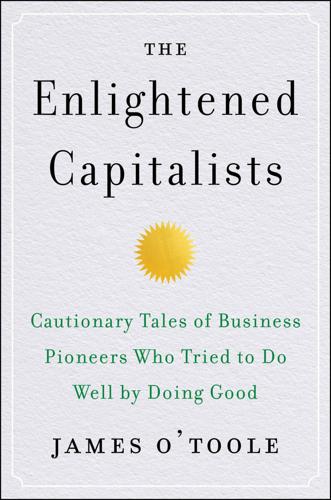
The Enlightened Capitalists
by
James O'Toole
Published 29 Dec 2018
Unlike modern economists, however, Owen and other enlightened leaders viewed investing in employee development as necessary not merely for business reasons but, more important, because they believed they had a moral responsibility to provide workers with the opportunity to pursue happiness through fulfilling their individual potentials at work. In Jeffersonian terms, the enlightened capitalists considered employee development a human right. But why would Uber pay for the development of its drivers? After all, they might go to work for Lyft tomorrow. And why would Hewlett-Packard—once a leader in employee skill and career development—invest in the training of its contingent workforce, whose next gig will probably be at a competitor hollow organization? And why would Universal Pictures plan for full employment, or engage in community-building activities, when the movies it produces are made by freelancers?
…
And I have not even mentioned the looming negative effects of automation on tomorrow’s workforce, nor dealt with the problem of foreign outsourcing. And, to offer a specific example, I have failed to examine the consequences for former taxi drivers of the upheaval in their lives caused by the advent of Uber and Lyft. Many of those men and women had been members of long-standing worker cooperatives offering health insurance and a sense of community. Then there is the unsettling fact that most new jobs being created today are in low-paying industries—in hotels, restaurants, and discount retailing—where worker skills are seldom developed and such benefits as health insurance are rare.2 Taken together, these trends threaten to leave countless people in Britain and America without meaningful employment in traditional organizations.
…
(now Unilever), 51, 222, 426 acquisitions to boost profit margins, 445 after Lever, 65–68 Ben & Jerry’s acquired, 390–94, 446 brands, 59, 65, 67 business losses, Great Depression, and, 63–64 ceasing of joint Dutch-British structure (2018), 446 community relations, 65, 66 company ownership and, 64, 395, 427 continuing saga, 68 copra farms in the Congo, 59–60, 66 corporate philanthropy and, 54 critics of, 68 culture built on “doing the right thing,” 66–67 current workforce, 65 diversification, 59, 63 Dollar Shave American subsidiary, 446 economies of scale and, 58 employee benefits, 57–58 employee co-partnerships, 58–60, 405 environmental practices, 65–66, 89 ethical behavior and, 65 fair-trade sourcing, 66 first global corporation, 59 gender equality and, 57, 66 growth, 54 Hellmann’s mayonnaise as certifiably sustainable, 67 hostile takeover threat, 394, 445–46 incorporation of, 56 innovation and, 58 Lever and micromanagement, 56 Lever cedes control of, 64, 395 merger with Margarine Unie, 65, 427 oilseed operation, Nigeria, 63, 64 Polman as CEO, 66–68, 393–94, 444–46 profits, 58, 445 profit-sharing, 58–59 reduction of workday, 57 share price, 68 social responsibility and, 65–68, 393, 444–45 Sunlight soap, 53 Sustainable Living Plan, 66, 68 working conditions in plants, 57 as world’s largest soap producer, 58 Levi Strauss & Co., 176–205, 424, 426, 495n19 acquisitions, 196 AIDS crisis and, 201–2 Asian subcontracting, 202–3 Blackstone, Va. plant, integration of, 183–84 Blackstone, Va. plant, shutdown of, 200 boycott of, 200 campus headquarters, Embarcadero, San Francisco, 193 community relations, 183–85, 200, 201–2 company ownership and, 184, 193, 198, 201, 436 cultural change at, 193–94 Davis, Jacob, and, 176–77, 179 Davis, Simon, and, 179–80 diversification of workforce at, 196 downturn in business, business model and, 190–92 employees, 178, 183, 188, 199–200 employee bonuses, 180–81 employees as philanthropists, 185 employee shareholders, 189, 192, 193 employee turnover, 185 environmental issues, 205 ethics and, 180–81, 187, 192, 193, 195–96, 200, 205 focus on middle market, 196 foreign operations, 191, 193, 196 goal of all-around excellence, 184, 186 Great Depression and, 181 growth, 179, 184, 193 guidelines for global product sourcing, 202–3, 204 Haas, Bob, heads, 194–203 Haas, Sr., heads, 180–82, 193 Haas brothers head, 182–89 handicapped workers hired, 185 homosexual employees and, 202, 204 job losses at, 198 Koshland as president, 193 labor practices, 178 labor unions and, 181–82 legend of, 176 long-term thinking and, 196–97 minority hiring, 183, 189, 203 minority-owned stores and suppliers, 184, 203 mission and aspirations statements, 201 new factory and industrial design, 179 nonfamily CEOs and current state, 204–5 ownership structure, 201 passes billion-dollar mark, 193 paternalism and, 178 pensions and, 183 plant closings, 198–99, 201 product quality department, 184 products, 177, 179, 190, 196, 198 profits and, 185, 192 promoting blue-collar workers to management, 189 public offering of stock, 188–89 quality of goods and, 401 rivet patent for jeans, 177, 179 San Francisco earthquake and, 179 Santone factory, 196, 198–99 severance packages, 199–200 social responsibility, 178, 184, 186–89, 195–96, 202–3 Stern heads, 178–81 stock granted to key employees, 183 stock price, 192–93 Strauss and, 176–79 Strauss’s heirs and, 178 “suggested pricing” issue, 187–88 Thigpen and, 191–92 tsuris (trouble) at, 197–200 wages and benefits, 185, 190 women workers, 185, 189 Levi Strauss Foundation, 184, 185 Lewis, John Spedan, 120–35, 219, 428 as capitalist, 131–32 commitment to free speech, 128 company ownership and, 144, 395 customer care and, 122 death of, 125 early career, 120–21, 123 economies of scale and, 122 employee committees and, 120–21, 138 employee well-being and wages, 121, 122 experiment in industrial democracy and, 121–22 income inequality and, 123 John Lewis Partnership and, 120, 123–35 lasting legacy of, 143–44 legal framework of governance and ownership developed by, 121, 124–28, 433, 434 motivation for a virtuous enterprise, 122 Owen’s ideas and, 430 personality of, 121–22, 127 political-economic philosophy, 131 sustainability of business model, 120, 122, 132, 134–35 Lewis, John, Sr., 120–21 Limited stores, 354 Lincoln, Abraham, xliii Lincoln, James, 150, 268, 396, 428 about, 95–96 as advocate of his philosophy, 96–97, 111–12 arguments against his system, 118–19 as capitalist, 131–32 Christian values and managerial philosophy, 110–11, 137, 360 “classless society” vision of, 112, 123 congressional questioning of, 102–3 customer service and, 96 death of, 116 “the development of latent ability” and, 96–97, 100 durability of system, 112–16, 395 ethics and, 111 Ford’s influence on, 96, 112–13 as free-trader, 111 idealism of, 131 incentive management, 94, 97–105, 111 influence of, 430 innovation and, 109 intellectual influences on, 430 Lincoln Electric and, 94–119 management style of, 115–16 message of, 96 as outspoken, 96, 116 product innovation and, 109–12 profound insight of, 95 reconciling the antagonistic interests of workers and owners, 94 study of management by, 96 system as alternative to socialism, 97 system not adopted by any other major company, 117, 117n trust of workers, 113 workplace practices, reason for, 431–32 Lincoln, John Cromwell, 95, 109, 110, 115 Lincoln Electric, 290, 406, 424, 476 advisory board, 97–98, 100, 106, 138, 413 average earnings, 100 community relations, 110, 113, 116 company today, 94, 116–19 critics of, 118–19, 134 culture of, 98–99 diversification resisted, 109–10 egalitarian work environments, 98 employee bonuses, 94, 102, 491n11 employee communication and participation, 97–99 employee retention, 104, 185 employee self-management and lowest total labor costs, 101 employee wages and benefits, 94–95, 98, 99–101, 158, 276 ethical behavior and, 111 expectations of employees, 104–5 foreign expansion, 98, 102 founding of, 95 Great Depression and, 100, 103 growth, 110 guaranteed employment/job security, 94, 95, 103–5, 111 incentive management, 97–105 influence on SAIC, 413–14 innovation and, 94, 95, 109–12 institutionalization of practices, 436 merit-based bonus, 101–3 number of employees, 94 ownership structure, 115, 116–17, 433, 436 piecework compensation, 99–101, 106–7, 117n, 229 productivity, 99–101 profits (2017), 94 profits reinvested, 109, 110 profit-sharing, 98, 101–3, 406 public offering of stock, 117 recent acquisitions, 117 recruitment and, 131 sustainability of business model, 134–35, 395, 433 trade union objections, 105–9 working conditions, 98 world’s largest manufacturer of electric arc-welding machines, 94 Lindt, Rodolphe, 77 Lister, Joseph, 145 living conditions of workers, xi ACIPCO housing, 138 Britain’s textile mills and, 6 Carnegie’s workers, xxxii Ford and, 113 Ford’s Fordlandia, xxviii Hershey and, 78–79, 80, 82, 85, 86 J&J and, 148 Lever and, 54–55, 56–57 Lever Bros. in the Congo and, 60 M&S employee lunchrooms and, 212 Miller and, 315 model towns, 18–19, 54–56, 78–79, 82, 84, 85, 113, 148, 315, 450 Owen and, 12, 13, 18–19 Pullman’s company town, 77 Locke, John, 9 Locke, Robert, 430 London Stock Exchange, 47 Long, Russell, 411 Lord & Taylor, 432 Lord Corporation, 424 L’Oréal, 357–59, 392, 394 Los Kass, 35 Lubetzky, Daniel, 404–5, 456, 457 Do the KIND Thing, 404 Luce, Henry, 154 Lucent Technologies, 318 Lyft, 474, 475 Macauley, Thomas, 7, 154 Machiavelli, Niccolò, xlii Mackey, John, 444, 447, 448, 455 Conscious Capitalism (CC) movement, 452–53 as pro-capitalism with libertarian convictions, 453 Macqueen, Adam, The King of Sunlight, 61–62, 488n Macy’s, 401 Madoff, Bernie, 468 Maersk, 507n7 Major Barbara (Shaw), 69–70 Malden Mills, 262–63, 427 Polartec and, 263 Maltby, Kate, xliv Manchester, UK, 5, 6, 8–10, 11, 208 as center for the Industrial Revolution, 9 Enlightenment ideas in, 9 Owen in, 8–10 Manchester Literary and Philosophical Society, 10 Manchester University, 210 Man for All Seasons, A (Bolt), xlii Mann, Horace, 94 Margarine Unie, 65 Marks, Hannah Cohen, 207 Marks, Michael, 206–9, 395 death of, 209, 223 ethics and, 210, 222, 428 Leeds market stalls and, 207 marriage and family, 207 novel retail practices, 207 partnership with Spencer, 208 Marks, Miriam Sieff, 209 Marks, Simon, 209, 431 as Baron Marks of Broughton, 217 birth of, 207 concept of “superstores,” 210–11 death of, 217 economic philosophy, 209–10 friendship with Israel Sieff, 208, 209 institutionalization of practices, 435 as Marks & Spencer CEO, 209–17 marriage and family, 209 paternalism and, 213 personality of, 214, 215 Weizmann’s influence on, 210, 211, 428 Marks & Spencer (M&S), 206–23, 426 acquisitions, 220 bad decisions at, 220 as Britain’s dominant retailer, 211 business model, 210 Chapman heads, 209 community relations and, 213, 216 company ownership, 209, 211, 399, 436 crisis of 1999 and reorganization, 221 customer base, loss of, 221 customers and, 211–17 domestic sourcing of products, 214 employees and, 210, 216, 219 employees’ education and training, 212 employees’ health care, 212 employees’ lunchrooms, 212 employees’ profit-sharing and stock-ownership program, 212, 221 employment policies, 219 environmental practices, 222 ethical lapses and, 220 ethical standards, 210 first private brand in British retailing (St Michael), 213–14, 216, 221, 222 food sales, 214 founding of, 208 Greenbury as CEO and loss of business model, 220–21 growth, 211 incorporation of, 208 industrial research and, 211 as leader in informational labeling, 222 as limited liability corporation, 211 “Look Behind the Label” campaign, 222 management, 215–16 in Manchester, 208 Marks, Simon, heads, 209–17 as “Marks and Sparks,” 211 nonfamily CEOs and current state, 220–23 Norman as CEO and imperiling of enlightened culture, 223 paternalism and, 213 Penny Bazaars, 208 philosophies and practices (list), 216 philosophy of employment policies, 212 product line, 215 profits and, 220 Rayner as CEO, 220 refocus on core values, 222 relationships with manufacturers, 211, 216 reputation for quality, 215 Rose as CEO, 221–22 Sieff, Israel, leadership of, 209–10, 217 Sieff, Marcus, as CEO, 217–19 social responsibility, 210, 213, 216, 218 social responsibility and, 222 stock and lost value, 220–21 store closings, 223 transforming British retailing, 210 Vandevelde as CEO, 221 wages and benefits, 211, 212, 219 women managers and, 212 Woolworths as competitor, 210 World War II and, 214 Mars, 398–99 environmental practices, 399 line of healthy snacks, 399 long-term thinking and, 399 management philosophy, 399 number of employees, 399 progressive employee-and management-development practices, 399 Reid as CEO, 399 sales and earnings, 399 Wrigley acquired by, 399 Mars, Forrest, 398–99 Martineau, Harriet, 27 Marvin Windows and Doors, 396–97 Marx, Karl, xi, 5, 25, 432 criticism of Owen, 6–7 redistribution of wealth and, 132 Maslow, Abraham, 160, 431 Mattel, 286 Maximilian I, Emperor, xxv, xxvi Mayo, Elton, 154 Mayville, Gail, 385–86, 451 “Green Team,” 386 Mazzei, Ser Lapo, xxiv–xxv McGregor, Douglas, 160, 229, 430 Theory Y, 431 McKinsey & Co., 194, 411 McNabb, Bill, xiv, xv, 461 McWane, J.

The Fourth Industrial Revolution
by
Klaus Schwab
Published 11 Jan 2016
Well-known examples of the sharing economy exist in the transportation sector. Zipcar provides one method for people to share use of a vehicle for shorter periods of time and more reasonably than traditional rental car companies. RelayRides provides a platform to locate and borrow someone’s personal vehicle for a period of time. Uber and Lyft provide much more efficient “taxi-like” services from individuals, but aggregated through a service, enabled by location services and accessed through mobile apps. In addition, they are available at a moment’s notice. The sharing economy has any number of ingredients, characteristics or descriptors: technology enabled, preference for access over ownership, peer to peer, sharing of personal assets (versus corporate assets), ease of access, increased social interaction, collaborative consumption and openly shared user feedback (resulting in increased trust).

User Friendly: How the Hidden Rules of Design Are Changing the Way We Live, Work & Play
by
Cliff Kuang
and
Robert Fabricant
Published 7 Nov 2019
The number was arbitrary, and the goal essentially meaningless. But for the goal to work, it didn’t have to mean anything. It just had to be slightly out of reach—much like how the final reel on a slot machine will slow down to make you think you’re just about to hit three cherries, then slip by at the last moment. Uber and Lyft both tantalize drivers with another feature, which Uber calls “forward dispatch,” that queues up the next drive before the present one has ended—much like Netflix queues up the next episode of a series. “It requires very little effort to binge on Netflix; in fact, it takes more effort to stop than keep going,” noted the scholars Matthew Pittman and Kim Sheehan.
…
B., 64 Friedman, Jon, 209 Frog Design, 9, 24, 164, 175, 177, 244, 286, 288, 304, 306, 308, 309, 312, 315, 317, 318, 326, 328, 340, 345, 369n2, 370n11 Fukasawa, Naoto, 304 Fuller, Buckminster, 232 Fulton Suri, Jane, 171–73, 175–81, 190, 294, 310, 316, 334, 339; Thoughtless Acts, 179, 297 fuseproject, 107 Futures Wheel, 275 Gabler, Neal, 220 gambling, 253; slot machines, 253–56, 260 gaming, 197–98, 205–206 Gates Foundation, 182, 288 Gchat, 250 General Data Protection Regulation, 346–47 General Motors, 65, 334 German Luftwaffe, 32, 42 Germany, 61 Gillespie, Bo, 51–55, 71 Gillette, 154–55 Glaser, Erik, 113–14, 115, 125 Glaser, Milton, 94 Gmail, 163, 219, 227, 255 Goldberg, Adele, 142 Google, 148, 191, 227, 239, 240, 243, 259, 261, 269, 270, 294, 313, 342; Assistant, 122; Drive, 250; Duplex, 209–10; Fuchsia, 151–52; Gchat, 250; Glass, 304, 345–46; Gmail, 163, 219, 227, 255; Lens, 43–44; Maps, 219, 313, 369n6; YouTube, 243 Grand Tour, 307 graphical user interface, 143, 145, 146, 148 Great Depression, 65, 68–70, 86, 93 Greek philosophy, 33 Grice, Paul, 111–12 GRID Compass, 175–76, 339 Grudin, Jonathan, 370n14 hacks, 316 hairdressers, 306–307 Hal 9000, 105, 117 hand tremors, 33 Harari, Yuval Noah, 156 Haraway, Donna, 81 Harford, Tim, 35 Harmony of the Seas, 230 Harris, Tristan, 255, 274 Hauser, Ed, 20–21, 351n31 Hay, Steph, 211–12 health care, 287, 288, 303–304, 306; blood sample testing, 183–84; costs of, 34; hairdressers and, 306–307; HIV testing and medication, 305, 310, 329; infant, 324–25; medical appliances, 69 heart attacks, 139 Hegelian dialectic, 292 help button (Ripple device), 53–55, 80, 117, 204 Her, 194–96, 213, 233, 341, 345 Hertzfeld, Andy, 141–42 Herzberg, Elaine, 121 hierarchy of desires, 274 Hitachi Design Center, 325 HIV, 305, 310, 329 Holachef, 316–17 Holmes, Kat, 193–95, 199, 205, 207, 208, 312 home appliances, 63, 117, 230, 333, 370n16 home economics, 63, 68, 334 homemaking, 63–64, 285–86 Home Shopping Network, 54 Honeywell Round thermostat, 92, 93, 336, 343 Hooked (Eyal), 258–59 Hoover, Herbert, 61–62 Horn, Bruce, 140, 143–44 horseless carriage metaphor, 318 horse metaphor, 116, 117, 118, 126, 144 hotels, 323 Hult Prize, 280–81 human-centered design, 72, 182, 184, 272, 288 humaneness, 196, 240 human engineering, 81 human factors, 87, 95 human limitations, 95–96 human-to-human interactions, 195, 240 human-to-thing interactions, 95, 240 Human Use of Human Beings, The: Cybernetics and Society (Wiener), 336 IBM, 5–8, 145, 170, 236, 338 iCloud, 351n32 IDEO, 24, 136, 139, 164, 170, 171, 175–77, 180–83, 202, 283, 288, 297, 304, 339, 340, 343 If This Then That (IFTTT), 298–99 iMac, 5, 23, 149 immigrants, 63 in-box, 134 India, 192, 193; dabbawalas in, 316–17, 370n8; GP Block Pitampura in Delhi, 129–30, 132; internet and, 129–30, 132, 147; Khushi Baby in, 324–25 Indonesia, 319 industrial design, 55, 58–59, 61, 65, 71–72, 87, 89–90, 93–94; Dreyfuss and, 59, 67–68, 93; streamlined aesthetic in, 70 Industrial Design, 94 industrial revolution, 292 inevitability, 268, 299 innovation, 163–64, 168, 171, 181–82, 184–85, 200, 226–27 Instagram, 36–37, 134, 240, 255, 259, 261; Stories, 37, 346 insurance companies, 287 interfaces, 145; graphical user interface, 143, 145, 146, 148 internet, 34, 130–33, 199, 200, 208, 292; in China, 192–93; commerce on, 34–35; Google Lens and, 44; in India, 129–30, 132, 147; mental models and, 131; metaphors and, 132, 134–35 Internet of Things, 297 Internet.org, 131 Intuit, 325–26 intuition, 92, 93, 269 iPad, 5, 296 iPhone, 5, 23, 43, 127, 145–47, 149, 191, 216, 228, 259, 274, 289–90, 291, 296, 313, 327, 338, 343 iPod, 5, 23, 145, 338, 342–43, 346 iTunes, 146, 343 Ive, Jony, 23, 149, 299, 338, 342 Jakob’s law, 318 JetBlue, 309 jobs, 44–45 Jobs, Steve, 3–4, 7, 139–41, 145, 149, 157, 183, 190, 317, 340, 343 Joe and Josephine, 88–89, 92, 174, 176, 178, 185, 337 John Deere, 72 Johnson, Mark, 133, 152, 153 Johnstone, Dusty, 52–55, 352n4 Jonze, Spike, 194, 195, 341, 345 jukeboxes, 318 Jungen, Michael, 234 Kahneman, Daniel, 96, 350n25 Kant, Immanuel, 57 Kare, Susan, 144 Kay, Alan, 142 Kelley, David, 169–71, 177, 180–83 Kelly, Max, 247 Kennedy, Pagan, 183–84 Kenya, 147–48, 192, 281–85; Nairobi, 281, 283, 284, 315 Khushi Baby, 324–25 KitchenAid, 64 kitchens, 90, 117, 172–73, 353n39 Knowledge Illusion, The: Why We Never Think Alone (Sloman and Fernbach), 271 Kodak, 332–33, 336 Koklys, Audra, 211–12 Kolbert, Elizabeth, 271 Kosinski, Michal, 265–67, 276–77 Krieger, Mike, 259 Krippendorff, Klaus, 132 Kubrick, Stanley, 105 Ladies’ Home Journal, 63 Lakoff, George, 133, 152, 153, 317 Land, Edwin, 117, 336 Lang, Fritz, 334–35, 362n8 language, 122–23 Lathrop, Brian, 103–106, 110, 112, 115–18, 125, 126, 144 lawn mowers, 171–73, 178, 339 Lawrence Livermore National Laboratory, 164 leaf metaphor, 137–39, 144 Le Corbusier, 62, 334 Leonardo da Vinci, 89 “L’Esprit Nouveau,” 62, 334 Liedtka, Jeanne, 170 Life, 167 Loewy, Raymond, 70, 87, 88, 164, 200–202, 313 logic, 310; inner, exposing, 319–22 Louis XV armchair, 332 Lubs, Dietrich, 46 Lyft, 260 Mace, Ron, 202 machine-made goods, 60–61 “Machines Cannot Fight Alone” (Stevens), 78–79 Maclean, Allan, 370n14 Macy’s, 66–67, 165 Mad Men, 168 Madrigal, Alexis, 255 Magic Bus Ticketing, 283–86 “makeshift,” coining of term, 332, 352n14 Margolis, Michael, 313 marketing-led organizations, 307 markets of one, 242–43 Markoff, John, 189 Marshall Field’s, 150 Marshall Plan, 6 Maslow, Abraham, 274 mass production, 60–64, 90 Matrix, The, 125, 126, 360n31 Mayo Clinic, 182; “Jack and Jill” consultation rooms of, 362n24 McCulloch, Warren, 36 McKim, Bob, 164–70, 174, 180, 181, 190 McKinsey & Company, 170 meal delivery, 316–17, 370n8 Measure of Man, The (Dreyfuss and Tilley), 92, 337, 341 Meikle, Jeffrey L., 69 memory: short-term, 322; sketching how something works from, 321 mental models, 31, 40–41, 105, 119, 120, 180, 288, 297, 320–22, 351n32; cognitive load and, 322; digital assistants and, 124; internet and, 131; metaphors and, 133 metaphors, 84, 124, 132–35, 139, 144–45, 147, 154, 155, 158, 195, 203, 295, 297, 299, 358n22; apps and, 149–52; brain and, 152–53; coach, 136–39; in defibrillator design, 139; desktop, 139–40, 143, 144, 146–47; dominant, in product categories, 317–18; embodied, 152–54; and Facebook in Kenya, 147–48; horse, 116, 117, 118, 126, 144; horseless carriage, 318; in-box, 134; internet and, 132, 134–35; ladder of, 147, 193, 317–19; leaf, on hybrid car dashboards, 137–39, 144; Macintosh OS and, 144; mental models and, 133; news feed, 134, 318; personal assistant, 189; personification, 155–57; time as money, 133–34, 135; visual, in Apple products, 148–49, 210 Metaphors We Live By (Lakoff and Johnson), 133, 152, 153 MetroCard, 311 Metropolis, 334–35, 362n8 Metropolitan Edison, 39 Metropolitan Museum of Art, 60 Mic, 260 microdermabrasion device, 328 Microsoft, 145, 191, 193–95, 199, 202, 205–206, 208, 370n14; Cortana, 194, 208; PowerPoint, 208–209; Visual Basic, 361n22; Word, Clippy in, 112; Xbox, 197, 205–206 middle class, 63, 290 Miller, George, 322, 337 mind, 95–96 Minority Report, 233, 236 Minsky, Marvin, 189–90 misinformation, 262, 263, 289 MIT, 165–67, 189, 337; Media Lab, 154, 155 Mob, the, 39 mobile phones, 368n2; Magic Bus Ticketing and, 283–86; see also smartphones mode confusion, 144 modernism, 157, 334 Moggridge, Bill, 175–78, 180–81, 339, 361n21 mood boards, 155 Moore, Patricia, 200–202, 313, 340, 341 Morris, William, 332, 352n14 Moskovitz, Dustin, 248 Mother of All Demos, 187–90, 338 Mothersill, Philippa, 154–57 motivations, 46, 259, 344 movies, 230–31, 243, 254, 363n11 M-Pesa, 284, 368n2 Münsterberg, Hugo, 81–82 Myanmar, 263 Nadella, Satya, 202 Nairobi, 281, 283, 284, 315 Nancy, 272–73 NASA, 104, 115–16, 337 Nass, Clifford, 108–10, 112, 211, 258 National Transportation Safety Board (NTSB), 121, 122 navigability, 31 Navy, U.S., 87 Neeleman, David, 309 Nespresso, 117 Nest, 92, 336, 344–45 Netflix, 230–31, 260, 351n33 neural networks, 36, 44 neuroscience, 96 Newby, Paul, 342 news feeds, 134, 247, 248, 318 New York, 94 New York City Health and Hospitals Corporation, 303 New York City subway system, 311 New Yorker, The, 67–68 New York Times, The, 110, 183, 225, 259, 263 Nielsen, Jakob, 318 911 emergency calls, 51–53, 71; Ripple device as alternative to, 53–55, 80, 117, 204 Nokia, 308 Norman, Donald, 22–26, 45–46, 86, 95, 96, 103, 112, 124, 272, 287, 302, 318, 326, 334; at Apple, 22–23; The Design of Everyday Things, 22, 312, 339, 340; Emotional Design, 326, 340; Three Mile Island and, 24–25, 30, 38, 338–39 Nostradamus, 198 Noyes, Eliot, 8 nuclear radiation exposure, 19–20 nuclear reactors, 23, 25, 26, 29, 44, 45, 80, 113; see also Three Mile Island nuclear weapons, 100, 164, 167, 261, 291; missile warning, 121–22 Nuttall, Mike, 177 obsolescence, artificial, 69 Omondi, Wycliffe Onyango, 281–85 “On Exactitude in Science,” 91–92 operations research, 6 Oppenheimer, Robert, 247, 261 organized crime, 39 Ossete, Leslie Saholy, 279–85 OXO peeler, 202–203, 341 Padgett, John, 217, 221–22, 226, 228–32, 234, 235, 237–39, 242, 312, 323–24, 345 Page, Larry, 342 paintbrushes, 358n22 Panama-Pacific Exposition, 60 Papanek, Victor, 290 Patnaik, Dev, 307 Pattison, Mary, 63, 64 Pearl, 50 Pearlman, Leah, 247–49, 262, 292, 344 peeler, OXO, 202–203, 341 Peloton, 316 personality, 265–67 personalization, 231, 239, 245; Carnival’s Ocean Medallion and Personal Genome, 233–39, 268, 296; Disney’s MagicBand and MyMagic+, 217–29, 237, 243–44, 288, 304, 317, 345 personas, 178, 207, 261, 341 personification, 155–57 personnel research, 81 Piano, Renzo, 157 pilots: crashes of, 77, 81–85, 102–103, 104, 106, 121, 257; lost and confused, 75–78, 86, 87, 144; “pilot error” concept, 81, 83, 102–103, 121, 335 Pittman, Matthew, 260 Pitts, Walter, 36 Pixar, 211 Plunkett, Joseph, 57–58 Poland, 276 Polaroid camera, 117, 336, 342 politeness, 108–10, 112, 113, 239–40, 258; driverless cars and, 125, 126 Porter, Joshua, 329 postmodernism, 157–58 pottery making, 90 PowerPoint, 208–209 Princess Cruises, 230; see also Carnival Cruise Line Princess phone, 337, 371n21 Principles of Scientific Management, The (Taylor), 333 prototypes, 165, 180–82 psychologically natural controls, 84, 85; scrolling, 359n25 psychophysics, 84, 95 purpose, 33 radar, 32, 76–79, 83, 87 radio, 76, 77, 79, 84–85 Rams, Dieter, 46, 90, 338, 343, 370n17 Rand, Paul, 8 Raskin, Jef, 140, 141 Ratzlaff, Cordell, 317 razors, disposable, 154–55, 157 Read, Max, 262 Reddit, 249 Reeves, Byron, 110 Regal Princess, 229–30, 236 Renuka, 130–33, 147, 315 rewards, variable, 254, 255, 259 Ripple help button, 53–55, 80, 117, 204 RKO theater, 55–56, 92, 173–74, 335 robots, 115, 117; see also artificial intelligence (AI) Rogers, Richard, 157 Rohingya, 263 Rolls, Charles, 332 Rosenstein, Justin, 247–51, 262, 274, 291–92, 344 Russia, 201, 250, 313 Saarinen, Eero, 5, 8 Saproo, Sameer, 125–27 Sarajevo, 49–50, 54 savings accounts, 319 Scheiber, Noam, 259 Scheimann, Fred, 15–18 Schiller, Phil, 342 Schmidt, Eric, 191 Schon, Donald, 358n22 Schüll, Natasha, 255 Schulze-Mittendorff, Walter, 334–35 Schwartz, Barry, 231 science, 45 scientific management, 63, 333 Scott, Walter Dill, 81 scrolling direction, 359n25 Sears, 66, 69, 335 self-driving cars, see cars, self-driving Selfridge, Harry Gordon, 150, 333 self-service checkouts, 303 semiconductors, 168, 175 senses, 84 sewing machine, 72 sexual assault, 51–55, 204, 352n4 Sheehan, Kim, 260 Sholes, Christopher Latham, 332 Shum, Albert, 202 Silicon Valley, 3, 168, 175, 177, 180, 182, 221, 229, 257–59, 270, 291–92, 340 Simpsons, The, 161–62, 164, 180 Singapore, 24 Siri, 122, 151, 190–91, 193, 195, 208, 312 Sittig, Aaron, 344 skeuomorphism, 148, 202, 210 Skinner, B.

The Long History of the Future: Why Tomorrow's Technology Still Isn't Here
by
Nicole Kobie
Published 3 Jul 2024
But there’s a real risk that regulators will lose patience and ban the cars from city roads, and that investors will give up and yank funding for these high-cost trials rather than continuing to spend billions of dollars with little short-term payoff. DARPA has continued its investment in the area, more quietly than with the Grand Challenges, but has also admitted the whole thing has taken much longer than the US military would like. For city-bound vehicles, limited investor flight is already happening: Uber-rival ride-hailing app Lyft sold off its driverless division for $550 million to Toyota rather than burning through more cash. Chris Urmson has predicted it’ll be another three decades before driverless cars are widely available. There’s another issue with continuing the development of this driverless technology in this way: it might never work, ever.
…
WIRED, September 6, 2019. https://biturl.top/nueuQ3 Index 1X Technologies - EVE and NEO here 510 Systems here A* algorithm here Abovitz, Rony here Ackland, Nigel here activism here, here ADALINE and MADALINE neural networks here Advanced Micro Devices (AMD) here Advanced Research Projects Agency Network (ARPANET) here, here Al Jaber, Sultan here Aldebaran Robotics here Alderson, Samuel W. here Alef Aeronautics here Allende, Salvador here Alphabet here, here, here Sidewalk Labs here, here see also Google Alphago algorithm, DeepMind here Altman, Sam here Amazon here, here, here American Institute Fair (1867) here American Research and Development Corporation (ARDC) here American Society of Automotive Engineers (SAE) here Anderson, Sterling here Anthony’s Robots here Antonov, Michael here Apple here, here, here, here, here, here, here, here, here augmented reality headsets here, here APT-E (Advanced Passenger Train) project, British Rail here Arcadio (aka Stelarc), Stelios here Argo AI here ARPA see DARPA (Defense Advanced Research Projects Agency) ARPANET (Advanced Research Projects Agency Network) here, here artificial intelligence (AI) here, here, here, here, here, here, here Alan Turing here Alphabet/Google here, here, here, here, here, here, here, here ‘Blocks World’ here chess challenges here, here, here, here computer vision here concerns and misuse here, here, here, here, here, here, here, here data resources and ImageNet here deep and machine learning here, here, here, here, here ‘expert systems’ and rules based models here, here, here ‘general’ intelligence here, here, here, here, here graphics processing units (GPUs) here John McCarthy here, here, here, here, here, here, here large language models (LLM) here Lighthill report (1973) and opposition here, here narrow AI here, here, here natural language processing (NLP) here, here neural networks here, here, here, here convolutional here OpenAI and ChatGPT here, here, here, here, here, here, here Perceptron model here pre-1970s here, here SRI Shakey robot here, here strong vs weak here, here symbolic here, here Timnit Gebru et al AI paper controversy here, here Asimo robot, Honda here ASKA here Asseily, Alex here Atari here, here augmented reality (AR) and virtual reality (VR) here, here Apple here, here, here Atari here, here computer graphics quality here, here development costs here Eric Howlett and the LEEP system here, here Facebook and Meta here, here, here, here Google Glass smart spectacles here, here, here Ivan Sutherland VR headsets here, here Jaron Lanier here, here, here Jonathan Waldern here metaverse the here Microsoft HoloLens here motion sickness here, here, here, here, here, here, here NASA here, here, here, here Nintendo and Virtual Boy here Palmer Luckey and Oculus Rift headsets here, here, here, here PTSD treatment here Rony Abovitz and Magic Leap here Samsung Gear VR here, here Sebastian Thrun here Sega VR here, here Snap and Vergence Labs here Sony PlayStation VR here Virtual Visual Environment Display (VIVED) here VPL DataGlove and EyePhone here, here, here, here Aurora here, here Aviauto roadable aircraft here Babbage, Charles here Bagnell, Drew here Baidu here Bakken, Earl here, here Balsillie, Jim here Banavar, Guru here banking industry here, here Barcelona, Spain here Bard LLM, Google here, here BASIC (Beginners’ All-purpose Symbolic Instruction Code) here battery technology here, here, here Beach, Alfred here, here Becker, Allen here Behringer, Reinhold here, here, here, here, here, here, here Bel Geddes, Norman here, here, here, here Bell Helicopter here Labs here, here Nexus here, here Bender, Emily here Bengio, Yoshua here Benz, Carl here Berlichingen, Götz von here Berners-Lee, Tim here Bertin, Jean here Bezos, Jeff here bionic technology here Blackrock Neurotech here ‘Blocks World’ AI development here Blomfield, Tom here ‘Blue Cruise’ automation system, Ford here Boeing here, here, here Bombe and Colossus decrypting machines here, here Boring Company here, here Boston Dynamics here, here, here, here, here, here, here, here Atlas robot here, here, here BigDog robot here, here RHex here Sandflea here Spot here, here, here, here Stretch here, here Bostrom, Nick here BrainGate/Utah Array implants here, here Branson, Richard here Bria, Francesca here Brin, Sergey here British army 2222 British Medical Journal here British Rail here, here Brooks, Harry here Brooks, Rodney here Brunel, Isambard Kingdom here Bryan, Leland here Buchanan, Bruce here Buolamwini, Joy here, here, here Burdett, Ricky here Canella, Judge John here carbon emissions here, here, here, here Cardboard, Google here Carmack, John here Carnegie Mellon University (CMU) here, here, here, here, here, here Carson, Johnny here Catalyst Research Corporation here Catanzaro, Bryan here CAVForth project, Forth Bridge here Cavoukian, Ann here CeBIT (2010) trade show here Central Intelligence Agency (CIA) here Cereproc here Chambless, Edgar here Chan Wolf, Helen here, here ChatGPT here, here, here, here Cisco here, here Claydon, Tony here Clegg, Samuel here, here climate crisis here, here Clinton Foundation here Clynes, Manfred here cochlear implants here Commodore here Convair (Consolidated Vultee Aircraft) here, here convolutional neural networks here Cook, Tim here Cornelius, Nancy here COVID-19 global pandemic here, here, here, here Cray 1 supercomputer here Crevier, Daniel here, here, here Crow, Steven here Croydon Times here Cruise, GM here, here, here, here, here Cubitt, Sir William here Cummings, Bob here Curtiss, Glenn here Cyberjaya, Malaysia here cybernetics here cyborgs and brain computer interfaces (BCIs) here BCIs here Blackrock Neurotech here Elon Musk and Neuralink here, here, here, here, here g.tec intendiX interface here, here Kevin Warwick here Mark Zuckerberg and Facebook here, here, here, here medical applications here, here, here, here, here, here, here, here Neil Harbisson and colourblindness here origins of the term ‘cyborg’ here pacemakers here Peter Scott-Morgan and ALS treatment here prosthetics and bionic technology here RFID chips here, here, here Utah Array/BrainGate implant here, here William House and cochlear implants here Cyc AGI here da Vinci, Leonardo here, here Daimler-Benz/Mercedes-Benz here, here Dally, Bill here DARPA (Defense Advanced Research Projects Agency) here, here, here, here, here, here, here, here, here, here, here, here, here Grand Challenge here, here DataGloves, VPL Research here, here Davis, Ruth here Dean, Jeffrey here DEC here Deep Blue AI here, here DeepMind, Google here, here, here DeGray, Dennis here Dendral algorithm here Desforges, Abbé here Devol, George here Dickmanns, Ernst here, here, here, here, here Dietrich, Carl here Difference Engine here Digital Equipment Corporation (DEC) here Dirks, Susanne here diversity, lack of tech industry here Djourno, Dr André here DNNresearch here, here Doctoroff, Dan here, here, here Dolgov, Dmitri here Dreyfuss, Henry here driverless cars/technology here, here, here, here 4D system here Anthony Levandowski here, here, here Anthony’s Robots pizza delivery here Argo AI here artificial intelligence (AI) here, here, here autonomy spectrum here, here current motivation for innovation here DARPA and DARPA Grand Challenge here, here Ernst Dickmanns and VaMoRs here, here, here fatalities here, here, here, here General Motors and Cruise (RCA) here, here, here, here global cost of development here Google/Alphabet and Waymo here, here, here, here, here, here, here, here, here, here motorways here, here, here, here, here NavLab 5 System and RALPH here ‘no hands across America’ trip here Norman Bel Geddes here Prometheus project here public transport here, here, here, here Road Research Laboratory (RRL), UK here Tesla here, here, here, here TRL GATEway pods here Tsukuba Mechanical Engineering Lab here Uber here, here, here US Congress here VaMP and VITA-2 here World’s Fair, New York (1939) here Dugan, Regina here Electronic Age magazine here Electronic Numerical Integrator and Computer (ENIAC) here, here Eliot, George here ELIZA here Elmqvist, Rune here Em, David here EMIEW, Hitachi here Engelberger, Joe here, here Engineer magazine here Enigma cypher here Entscheidungsproblem here ERCO Ercoupe here Ermisse, Daniel here Evans, Dave here Exhibition of the Society of Model Engineers (1928) here Eyriès, Dr Charles here Facebook here, here, here, here, here see also Meta Fairchild Semiconductor here, here Federal Aviation Administration (FAA), US here, here, here, here, here Fei-Fei Li here, here Feigenbaum, Edward here Fenton, Robert here, here Ferrer, Josep-Ramon here Fifth Generation Computer Project, Japan here Firefly driverless car here, here, here Fisher, Scott here, here Flood, Joe here Flow, Sidewalk Labs here flying cars here, here, here, here air-traffic control here Alef Aeronautics Model A here battery technology here business model operation here Carl Dietrich – Terrafugia Transition here EHang 184 (AAV) here Glenn Curtiss – Autoplane (1917) here Hafner Rotabuggy here Henry Ford – Flivver here, here Henry Smolinski Cessna/Ford here Jaunt Air Mobility Journey here Juan de la Cierva – autogyro (1923) here Ken Wernicke – AirCar here landing space and vertiports here Lilium Jets here, here, here, here, here, here, here Luigi Pellarini – Aeronova here Moulton Taylor – Aerocar here, here Opener BlackFly (later Pivotal Helix) here Paul Moller inventions here post-WWII small aircraft sales here potential practical applications here regulatory authorities here, here, here, here, here René Tampier – Avion-automobile (1921) here ‘roadable aircraft’ here, here Robert Edison Fulton – Airphibian here Sebastian Thrun – Kitty Hawk here Steven Crow – Starcar 4 here Theodore Hall and the ConvAirCar here, here Trajan Vuia – aeroplane-automobile (1902) here Vladimir Tatrinov – Aeromobile (1909) here Volocity – Volocopter here VTOLs and eVTOLs here, here, here Waldo Waterman inventions here Forbes Nash Jr, John here Ford, Henry here, here, here Ford Motor Company here, here, here Forest City, Malaysia here Forrester, Jay here Fortnite here Fortran here Foster + Partners here, here, here Foster, Quintin here, here Fox Dunn, Angela here Fujitsu here Fulton, Robert Edison here ‘Futurama’ exhibition, World’s Fair (1939) here Gaffney, Christopher here gaming industry here, here, here, here, here, here see also augmented reality (AR) and virtual reality (VR) Garrett AiResearch here Gasson, Mark here Gates, Bill here Gebru, Timnit here, here, here General Motors (GM) here, here, here, here, here, here, here General Problem Solver here generative adversarial network (GAN) here Gerhardt, Marcus here Glass smart spectacles, Google here, here Goddard, Robert here Goodfellow, Ian here Google here, here, here artificial intelligence (AI) here, here, here, here, here, here, here augmented reality and Glass smart spectacles here, here, here driverless cars here, here, here, here, here, here, here, here robots/robotics here, here, here X Labs here, here Gow, David here Graphics Processing Units (GPUs) here, here, here Greatbatch, Wilson here Greenfield, Adam here Gregory, Richard here Grumman TACRV (Tracked Air Cushion Research Vehicle) here g.tec here, here the Guardian here, here Guger, Dr Christoph here Günel, Gökçe here, here Hall, Dave and Bruce here, here, here Hall, Theodore here, here Harbisson, Neil here Hart, Peter here, here, here, here, here Harvard University here, here Hashme, Shariq here Hassabis, Demis here Hebb, Donald here Heilig, Morton here Heim, Michael here Henn na Hotel, Japan here Herzberg, Elaine here, here Heseltine, Michael here Hilbert, David here Hinton, Geoffrey here, here, here, here Hitachi here Hoff, Marcian here Hommet, Christophe here, 2241 Honda here, here, here Hopps, John here House, William here Howlett, Eric here HTC Vive VR headset here Hyman, Albert here hyperloops here, here, here 20th century pneumatic trains here Beach Pneumatic Transit Company here cable systems here Dalkey Atmospheric Railway (DAR) here Elon Musk here, here, here, here Eric Laithwaite and Tracked Hovercraft here, here European Hyperloop Week (EHW) (2023) here, here George Medhurst and Victorian pneumatic transport here, here, here, here Hyperloop TT here Isambard Kingdom Brunel here Jean Bertin and Aérotrain here John Vallance’s air-propelled carriage, Brighton (1826) here maglev technology here pneumatic postal shuttles here, here Rammel and Latimer Clark here, here Rohr Industries here, here Samuda brothers and Samuel Clegg here Shinkansen here, here, here Tracked Air Cushion Vehicles (TACV) programme here TransPod here Victorian atmospheric and pneumatic transport here, here, here Virgin Hyperloop One here IBM here, here, here, here ImageNet here Industry on Parade TV programme here the Information website here Ingels, Bjarke here Intel here, here International Conference on Robotics and Automation (2023), IEEE here, here internet here Iribe, Brendan here iRobot here Ishiguro, Hiroshi here, here Jaguar i-Pace here Joby Aviation here, here Kalinske, Tom here Kasparov, Garry here Kates, Josef here Kawasaki Heavy Industries here Kay, Alan here, here Keeling, Mary here Kese, Peter here Kim, John here Kitano, Hiroaki here Kitty Hawk here Kline, Nathan here Kobrinski, Alexander here Koppen, Otto here Krizhevsky, Alex here Krueger, Myron here Kuala Lumpur, Malaysia here Kuiken, Dr Todd here La Cierva, Juan here Laithwaite, Eric here, here languages, early computer here Lanier, Jaron here, here Larsson, Arne here Latimer Clark, Josiah here, here Laurel, Brenda here Laverde, Alberto Vejarano here Le Corbusier here LeCun, Yann here Leg Lab here Legg, Shane here Lenat, Doug here Levandowski, Anthony here, here, here, here, here, here Lidwill, Mark here Life magazine here, here Lighthill, James here, here Lilium here, here, here, here, here, here, here Linden Lab here the Line, Saudi Arabia here linear cities here linear induction motor (LIM) here, here, here Linear Induction Motor Research Vehicle (LIMRV) here Link, Sidewalk Labs here lithium batteries here, here Llama, Facebook here Lobban, Joan here Lockheed Missiles here London Pneumatic Despatch Railway (LPDR) here longtermism here Los Angeles Community Analysis Bureau (CAB) here Lovelace, Ada here LS3, Boston Dynamics’ here Luckey, Palmer here, here, here, here Lyft here Lyons here M-PESA here MacWilliam, John Alexander here Macy’s here Magic Leap here maglev technology here Mahan, Steve here Maisonnier, Bruno here Malapert, Etienne here Manchester Mark here Markoff, John here Marsh, Burton here Masdar City, UAE here Maslow, Abraham here Mattel here Mattern, Shannon here, here Mauchly, John here McCarthy, John here, here, here, here, here, here, here McClelland, James L. here McCulloch, Warren here, here McGreevy, Michael here McMillan-Major, Angelina here McShane, Clay here Mechanical Turk, Amazon here Mechanics Magazine here Medhurst, George here, here Medtronic here, here Meta here, here metaverse here Michie, Donald here, here Microsoft here artificial intelligence (AI) here, here, here HoloLens here Windows here military, US here, here, here, here, here, here, here, here, here, here, here, here, here, here, here, here, here, here Minadoi, Giovanni Tommaso here Minsky, Marvin here, here, here, here, here, here MIT (Massachusetts Institute of Technology) here, here, here, here, here Mitchell, Claudia here Mitchell, Margaret here, here Mitchell, Nate here Mitsubishi here Moller, Paul here Montandon, Adam here Montemerlo, Mike here Monzo here Moore and Moore’s Law, Gordon here Morgan, Garret here Musk, Elon here, here, here, here, here, here, here, here, here, here, here, here, here, here, here Mustang Mach-E, Ford here MYCIN here, here Nagle, Matt here Naimark, Michael here, here NASA (National Aeronautics and Space Administration) here, here, here, here, here National Transport Safety Board (NTSB), US here Nature here NerveGear headset here NetJets here neural networks here, here, here, here convolutional here Neuralink here, here, here New Scientist here New York City fires, 1970s here New York Times here, here, here, here, here, here, here, here, here Newell, Allen here, here Ng, Andrew here Nilsson, Nils here Nintendo here Virtual Boy here Normann, Richard here, here Nvidia here Ocado Technologies here Oculus Rift AR smart glasses here Oculus Rift VR headsets here, here O’Hagan, John here, here O’Kane, Josh here, here Okhitovich, Mikhail here Olson, Karl here, here Open Bionics here OpenAI here, here, here, here, here, here Opener BlackFly/Pivotal Helix here Optimize3D here Optimus robot, Tesla here Osborne 1 here Otto here Ottobock here pacemakers here Paes, Eduardo here Page, Larry here, here, here, here, here, here Papert, Seymour here Paré, Ambroise here PDP-8 and PDP-10 ‘microcomputers’ here Pellarini, Luigi here Penoyre, Slade here perceptrons, AI here Permobil F5 Corpus here Petman, Boston Dynamics’ here Pichai, Sundar here, here Pinkus, Henry here Pitcairn, Harold here Pittau, Rev.

Slow
by
Brooke McAlary
Published 22 Aug 2017
In her 2012 TED talk, Rachel Botsman spoke of the sharing economy as a way to minimise buying things that have a limited use. Talking of handheld drills, which, on average, are used for a total of 12–13 minutes throughout their entire life, she exclaimed, ‘You need the hole, not the drill!’ Turo, Lyft, TaskRabbit and Airbnb are symbolic of the emergence of mainstream sharing, but there is a much more personal way to share that also taps into one of our most important resources—community. Is there a way you and your family, friends or neighbours could share common resources? Things you don’t use very often, but would probably go out and buy if the need arose?

The Ones We've Been Waiting For: How a New Generation of Leaders Will Transform America
by
Charlotte Alter
Published 18 Feb 2020
When big purchases such as homes and cars were out of the question, many millennials figured they might as well spend their money on things like specialty cronuts and fancy coffees. They tended to prefer experiences over possessions. And a generation steeped in social networks became increasingly comfortable renting things instead of owning them: millennials rented rides (with Uber and Lyft), rented clothes (through Rent The Runway), and rented labor (through TaskRabbit). They also began to look to the gig economy for side hustles to supplement their meager incomes. By 2018, more than 40 percent of eighteen- to thirty-four-year-olds worked as freelancers. For almost half of the largest generation of workers, the traditional work structure that had defined twentieth-century professional life just wasn’t available anymore.
…
See War on Terror Isaacson, Walter, 55 Iweala, Uzodinma, 4 Jackson, Jesse, 119 Jefferson, Thomas, xiii, 200–201 Jones, Eric, 140 Journal of Social Psychology, 41 Justice Democrats, 209 Kavanaugh, Brett, 203 Kennedy, Caroline, 87 Kennedy, John F., xiii, 29, 74 Kennedy, Ted, 87, 94, 107, 249 Kerry, John, 76 Keystone XL pipeline, 158, 181–82 kidnappings, 36 Kids These Days (Harris), 35 Kim, Andy, 111 Kim Jong Un, 254 King, Coretta Scott, 195 King, Martin Luther, Jr., xiii, 29–30 King, Steve, 197 Kinsley, Michael, 32, 285 Kinzinger, Adam, 158 Klein, Joe, 86 Koch brothers, 124, 131, 149, 154–55 Kushner, Jared, xvii Lakota Sioux, 181–82 Lanza, Adam, 147 latchkey kids, 33 Lauer, Matt, 4 Lawrence, John A., 276 Lazerson, Marvin, 46 Lean In (Sandberg), 153–54 Lehman Brothers, 93 Lepore, Jill, 219 Lesser, Eric, xxi, 104, 132, 141–42, 153–57 elected to Massachusetts State Senate, 111, 141 Obama’s 2004 Democratic National Convention speech and, 81 on Obama’s leadership style, 112 as special assistant to David Axelrod, 105–9 as staffer for Obama’s first presidential campaign, 83–84, 86, 87, 88, 89, 90 trans-state railroad championed by, 141–42 “Let Detroit Go Bankrupt” (Romney), 104 leveraged buyouts, 28–29 Levin, Ezra, 124–25 Indivisible resistance and, 180, 204–5 2012 presidential election and, 170–71, 172–73, 176, 178–80 Lieberman, Joe, 107 Lincoln, Abraham, xiii Litman, Amanda, 209–12 Logan, Eric, 144–45, 286 Londrigan, Betsy Dirksen, 241 Look Who’s Talking (film), 33 Love, Mia, 155–56, 158, 264 Lovett, Jon, 111 Lucas, Quinton, 135 Lumumba, Chokwe Antar, 223 Luria, Elaine, 270 Lyft, 99 Mackler, Camille, 202 McBath, Lucy, 268 McCain, John, xiii, 90, 147, 206–7 McCain, Meghan, 260 McCarthy, Kevin, 155 McCaskill, Claire, 87 McChrystal, Stanley, 71 McConnell, Mitch, xv, 51, 147, 277 McDonald, Laquan, 121 Mckesson, DeRay, 171, 172 Mad, 285 Make the Road New York, 202 Malcolm X, 29–30 Mallory, Tamika, 199–200 Mannheim, Karl, xiv March for Our Lives, 247 March for Science, 204 Marcinko, Richard, 14 marijuana issue, 160 Marjory Stoneman Douglas High School shooting, 293 Markey, Ed, 281 Martin, Trayvon, 118 mass shootings Columbine High School shooting, 27 Marjory Stoneman Douglas High School shooting, 293 Parkland, Florida, shooting, 41, 247 Sandy Hook Elementary School shooting, 147 Virginia Tech shooting, 53 Mast, Brian, 158 Me Generation.

AI 2041: Ten Visions for Our Future
by
Kai-Fu Lee
and
Qiufan Chen
Published 13 Sep 2021
IMPLICATIONS OF FULLY AUTONOMOUS (L5) VEHICLES When L5 AV roams the road, it will bring about a revolution in transportation—on-demand cars that take you to your destination with lower cost, greater convenience, and improved safety. When your calendar sees that you need to be driven to a meeting in an hour, an autonomous ride-hailing app like Uber or Lyft could order a car for you just as you’re ready to depart. Uber’s AI algorithms will move their AV fleet to be closer to people who might need a ride soon (say, when a concert is about to end). Vehicles’ routes can be optimized based on minimizing the total amount of time all users wait idly, and the total amount of time Uber AVs are empty, while ensuring that the car’s batteries are charged along the way.
…
Alongside the lives saved and productivity gained, there will be disruptions to other aspects of our society. Taxi, truck, bus, and delivery drivers will be largely out of luck in a self-driving world. There are over 3.8 million Americans who directly operate trucks or taxis for a living, and many more who drive part-time for Uber/Lyft, the post office, delivery services, warehouses, and so on. These jobs will be gradually replaced by AI. Disruptions will also come in the form of a reshuffling of other traditional professions. Car maintenance will be less about mechanical repairs and will require electronics and software expertise.

Surveillance Valley: The Rise of the Military-Digital Complex
by
Yasha Levine
Published 6 Feb 2018
To do this, the company developed a special tool that analyzed user credit card information, phone numbers, locations and movements, and the way that users used the app to identify whether or not they were police officers or government officials who might be hailing an Uber only to ticket drivers or impound their cars. If the profile was a match, these users were silently blacklisted from the app.87 Uber, Amazon, Facebook, eBay, Tinder, Apple, Lyft, Four-Square, Airbnb, Spotify, Instagram, Twitter, Angry Birds. If you zoom out and look at the bigger picture, you can see that, taken together, these companies have turned our computers and phones into bugs that are plugged in to a vast corporate-owned surveillance network. Where we go, what we do, what we talk about, who we talk to, and who we see—everything is recorded and, at some point, leveraged for value.
…
By 2017, it had $90 billion in revenues and $20 billion in profits, with seventy-two thousand full-time employees working out of seventy offices in more than forty countries.92 It had a market capitalization of $593 billion, making it the second-most-valuable public company in the world—second only to Apple, another Silicon Valley giant.93 Meanwhile, other Internet companies depend on Google for survival. Snapchat, Twitter, Facebook, Lyft, and Uber—all have built multi-billion-dollar businesses on top of Google’s ubiquitous mobile operating system. As the gatekeeper, Google benefits from their success as well. The more people use their mobile devices, the more data it gets on them. What does Google know? What can it guess? Well, it seems just about everything.

The Hype Machine: How Social Media Disrupts Our Elections, Our Economy, and Our Health--And How We Must Adapt
by
Sinan Aral
Published 14 Sep 2020
Moreover, while 92 percent of consumers read reviews, only 6 percent write reviews, which means a vocal minority is influencing the opinions of the overwhelming majority. The potential consequences of ratings herding are significant because the 6 percent have an outsize impact on how the rest of us shop. Sean Taylor, my PhD student at the time, who’s now a senior data scientist at Lyft and the former head of the statistics team in Facebook’s Core Data Science group, overheard my conversation with Lev and wandered across the hall. “Hey, what are you guys talking about?” This is how social science starts—it’s sparked by everyday puzzles that evolve into investigations of how and why things happen.
…
People who have had average experiences aren’t compelled to review them. So ratings oversample good and bad experiences and sample good experiences at a higher rate than bad ones. Another contributing factor occurs when we agree to mutually beneficial outcomes with our transaction partners. For example, a simple trick enables riders and drivers on Uber and Lyft to collude to give each other good ratings. As you’re leaving an Uber, you ask, “Five for five?” meaning “I’ll give you five stars if you return the favor,” a practice that contributes to ratings inflation. Finally, as we saw in our ratings experiment, social influence bias favors positive herding over negative herding.

The View From Flyover Country: Dispatches From the Forgotten America
by
Sarah Kendzior
Published 24 Apr 2015
Louis writer and full-time taxi driver, bemoaned the economic model of ride-share services, which are trying to establish themselves in the city. Noting that they hurt not only taxi drivers but poor residents who have neither cars nor public transport and thus depend on taxis willing to serve dangerous neighborhoods, he dismisses Uber and Lyft as hipster elitists masquerading as innovators: “I’ve heard several young hipsters tell me they’re socially-liberal and economic-conservative, a popular trend in American politics,” he writes. “Well, I hate to break it to you, buddy, but it’s economics and the role of the state that defines politics.

Collaborative Society
by
Dariusz Jemielniak
and
Aleksandra Przegalinska
Published 18 Feb 2020
Admittedly, much of the disruption occurs on the business side of these operations, the economic ramifications are surely huge, and examples abound. For instance, New York City taxi medallions required for operating and owning a yellow cab in the city cost more than a million dollars each at their peak price in 2014, and even then were considered a good investment. Now Uber and Lyft have upended the market for (and the means of) “hailing” taxis. As a result, medallions are an unbearable financial burden to many owners who cannot compete with apps that impose fewer rules governing fares and vehicle equipment.45 Similarly, the rapid growth of Airbnb has wreaked havoc in the hotel industry and the apartment rental market.
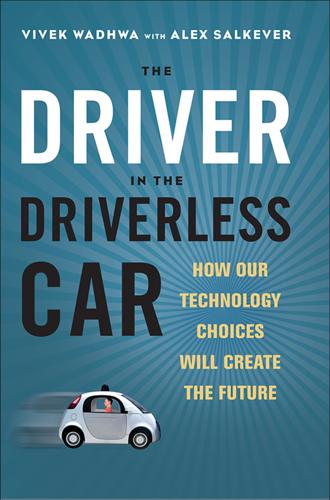
The Driver in the Driverless Car: How Our Technology Choices Will Create the Future
by
Vivek Wadhwa
and
Alex Salkever
Published 2 Apr 2017
This paradigm shift will not be without costs or controversies. For sure, widespread adoption of autonomous vehicles will eliminate the jobs of the millions of Americans whose living comes of driving cars, trucks, and buses (and eventually all those who pilot planes and ships). We will begin sharing our cars, in a logical extension of Uber and Lyft. But how will we handle the inevitable software faults that result in human casualties? And how will we program the machines to make the right decisions when faced with impossible choices—such as whether an autonomous car should drive off a cliff to spare a busload of children at the cost of killing the car’s human passenger?
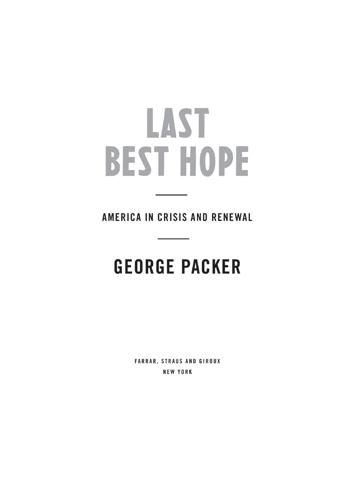
Last Best Hope: America in Crisis and Renewal
by
George Packer
Published 14 Jun 2021
If a ride-share app is quick and easy, if one-click shopping beats driving to the mall, if a too-big-to-fail bank has branches all over the city, it’s hard to see all the negative consequences of monopoly, or want to do much about them. So in 2020 voters in California, who gave Biden 5 million more votes than Trump, also passed a referendum to overturn a new state law that would have allowed drivers for Uber and Lyft the status and rights of employees. As long as prices stay low and services efficient, who really wants change? Even if you feel a vague objection now and then, you still have to live in the world of the behemoths. The Progressives of Perkins’s era attacked the trusts not simply because they were big, but because they threatened the freedom of the independent owner, the industrial worker, and the citizen.
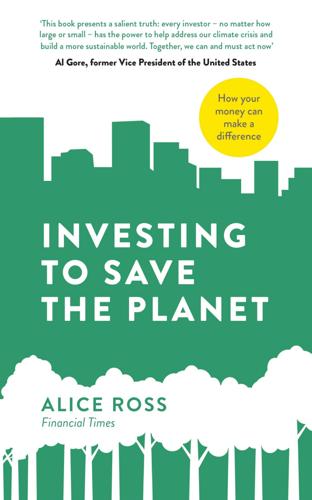
Investing to Save the Planet: How Your Money Can Make a Difference
by
Alice Ross
Published 19 Nov 2020
Companies like this can also help address the issue of so-called scope 3 emissions, which take into account emissions indirectly caused by a company through their supply chain. The sharing economy is also part of the circular-economy movement: the emphasis being on consumers owning fewer things and instead renting or sharing. Lift-sharing services like Uber or Lyft are one obvious example, while in China, start-up YCloset, which allows users to rent clothes and jewellery, attracted investment from Chinese technology giant Alibaba in 2018. A circular economy in fashion could also be given a boost by the coronavirus pandemic, as people practising social distancing look to refresh their wardrobes cheaply or repair what they already own.
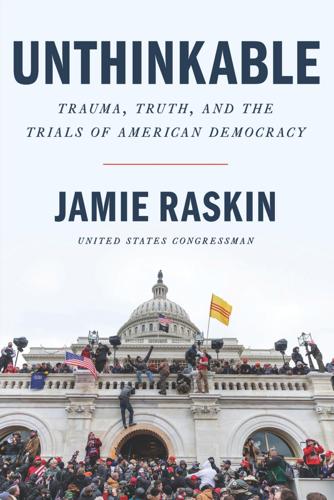
Unthinkable: Trauma, Truth, and the Trials of American Democracy
by
Jamie Raskin
Published 4 Jan 2022
The issue of driving and road safety was much on the minds of adolescents in our house, and I feared that I had somehow scared Tommy too much as I tried to implant a conviction in our kids never to drink and drive. Tommy never did get a driver’s license. He became a great walker, public transit rider, and early Lyft user. But it seemed as if the existential weight of his decision grew over time, as if a powerful desire not to risk hurting other people required a categorical refusal to enjoy any of the benefits of driving oneself around in our auto-shaped society. There would be no middle path for Tommy. But this refusal, like his extraordinary kindness toward other people and animals in general, struck us as a carefully considered, rational decision—perhaps idiosyncratic but far from unique these days—of a charming and incandescently good boy.
…
But I knew he was internalizing the sense of loss and mass suffering that had overtaken the country. How could he not? We all were. Tommy was a regular blood donor, and as the crisis unfolded, severe shortages of blood arose, as people were afraid to go out and donate. One cold day, Tommy called a Lyft, grabbed his mask, and went out to give blood. He told us later how he thought he might faint and had to drink apple juice and eat chocolate chip cookies for about a half hour before they would let him go. What an honor it was to be the father of this young man. I have never had depression before, but when I had colon cancer, I did have to think, quite a bit, about life.
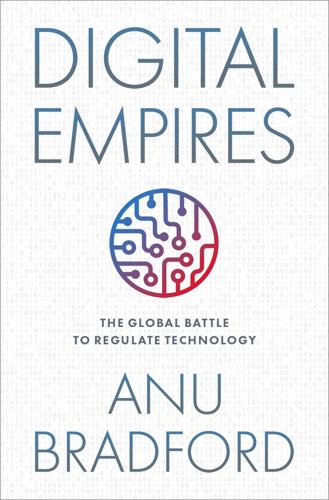
Digital Empires: The Global Battle to Regulate Technology
by
Anu Bradford
Published 25 Sep 2023
Kuaishou, Douyin’s rival in China, tried to launch a US app called Zine, but admitted a failure after it could not put a dent in TikTok’s American market share.107 Similarly, bilibili, a Chinese video platform roughly comparable to YouTube, has not gained popularity in the US.108 Baidu and DiDi—which have clear US analogues in Google and Uber or Lyft, respectively—have likewise not been able to challenge the US incumbents in their home market.109 In the past, these Chinese companies’ struggles could have been explained by reasons such as the absence of a well-executed international expansion strategy, as the American regulatory model itself imposed few restrictions on them; going forward, however, their struggles may increasingly be attributed to US government measures as the US is moving away from its commitment to open markets and other principles that have defined its regulatory model to date.
…
Such intractable conflicts now also threaten Chinese tech companies listed on US stock exchanges. The stock market has become an increasingly heated battlefield as of late, raising the risks of a financial decoupling of the US and China. The 2021 New York Stock Exchange (NYSE) listing of DiDi Chuxing, a Chinese ride-hailing company comparable to Uber or Lyft, illustrates this evolution well. In June 2021, DiDi rushed ahead to publicly list itself on the NYSE before it had received full clearance from Chinese regulators on their cybersecurity concerns.162 The backlash from regulators was swift: two days after the company’s IPO, the Cyberspace Administration of China (CAC) announced that it was initiating a cybersecurity review of DiDi, and DiDi’s app was soon taken off app stores in China.163 According to the CAC, the app violated laws on collecting and using personal information.164 DiDi was also banned from enlisting any new drivers.165 DiDi’s overseas listing raised particular red flags for Chinese regulators because, as a ride-hailing provider, the company had access to sensitive troves of location and map data.
…
American, 388 content moderation. see content moderation “Declaration for the Future of the Internet” (White House), 390 net nationalism, 170–71 regulation of, 36–37, 44–45 sovereign RuNet, 308–9 splinternet, 16, 179–80, 181, 388 as tool for promotion of democracy, 40–42 as tool for state control and propaganda, 308–13 as tool for surveillance, 4–5 Internet Bill of Rights (proposed), 54–55 Internet City (Dubai), 263 internet companies, 70–71. see also tech companies; specific companies Internet Corporation for Assigned Names and Numbers (ICANN), 181, 269, 288–89, 304, 307–8 Internet Engineering Task Force (IETF), 304, 306–7 internet freedom European initiatives, 272–73 Global Internet Freedom Task Force (GIFT) (US), 271 NetFreedom Task Force (US), 272 US initiatives, 27, 257, 265–79, 284–87, 288–89 US principles, 265 Internet Freedom Grants (US), 273–74 internet governance, 303–4 Internet of Things, 295–96 Internet Protection Act (US), 44–45 Internet Regulatory Freedom Act (US), 44–45 internet sovereignty, 288–89 iOS (Apple), 39–40, 382–83 IP (intellectual property), 185, 197, 218 IP (internet protocol) standards, 306–7 iPad (Apple), 153 iPhone (Apple), 39–40, 59, 61–62, 133–34, 153, 215–16, 261, 382–83 iPhone 13 (Apple), 153 IPOs (initial public offerings), 14–15, 94, 176 Iran, 180–81, 272–73, 274, 308, 389–90 Iraq War, 271 Ireland Data Protection Commission (DPC), 139, 230, 377 digital service tax (DST), 127–28, 142–43, 236–37, 243–44, 245 Isle of Man, 333–34 ISO (International Organization for Standardization), 305–6, 307–8 Israel, 333–34, 345, 352, 389 Israeli tech companies, 316 ITA (Information Technology Agreement) (WTO), 268–69 Italy antitrust regulation, 243, 345 digital services tax (DST), 126–27, 239, 242 G7 relations, 321–22 protections for platform workers, 128–29 restrictions on Chinese tech companies, 193–94 smart cities, 296–97 WhatsApp users, 260 ITU (International Telecommunications Union), 305–6, 307–8 January 6, 2021 insurrection (US Capitol), 7–8, 66, 100, 141, 251, 286, 363–64, 367–68 Japan, 337 Act on Improvement of Transparency and Fairness in Trading on Specified Digital Platforms (TFDPA), 346–47 Act on the Protection of Personal Information, 333–34 antitrust regulation, 344–47 Apple’s revenue, 261 Clean Network, 321 data protection law, 333–34 G7 relations, 321–22 Ministry of Economy, Trade and Industry (METI), 346–47 National Diet, 346–47 nonregulation principle, 266–67 relations with China, 197–98 relations with US, 58–59 restrictions on Chinese tech companies, 193–94 Social Principles of Human-Centric AI (Social Principles), 349–50 support for semiconductors, 211 tech diplomacy, 302 techno-democracy, 389–90 US-Japan Digital Trade Agreement, 322 Japan Business Council in Europe, 357 Japan Fair Trade Commission, 346–47 Japanese tech companies, 316 JD.com, 70–71, 73, 108 American funding, 93, 153–54 Chinese state support, 391–92 VIE structure, 174–75 Jersey, 333–34 Jinri Toutiao, 89 Jobs, Steve, 374–75 Joint Technical Commission of the ISO and IEC, 305 Jordan, 266–67, 299–300 Jordan Free Trade Agreement (US-Jordan), 267–68 Juncker, Jean-Claude, 125 Juniper Networks, 275–76 Kanter, Jonathan, 53–54 Kayak, 358 Kazakhstan, 303 Kenya, 273, 298, 300 Khan, Lina, 53–54 Khanna, Ro, 54–55 Kindle, 155, 159–60 King, Gary, 83 Klein, Adam, 233 Klonick, Kate, 259–60 Kokusai Electric, 204–5 KPMG, 175 Kuaishou, 165 Kyrgyzstan, 303 La Quadrature du Net (LQDN), 227–28 Lagos, Nigeria, 263 Lahore Safe City project, 300 Lam Research, 218 Laos, 270–71 Latin America, 301, 335–36 Latvia, 142 Le Maire, Bruno, 126–27, 241 Le Monde, 18–19 leadership, 197 Lebanon, 299–300 Lee, Kai-Fu, 35 Lenaerts, Koen, 111 Leonard, Mark, 16 Lessig, Lawrence, 37 LG electronics, 261–62 Li An, 89 Li Yang, 82–83 libertarianism, techno-, 34–35, 38–39, 257–89 Libya, 299–300 licensing agreements, 123 Lighthizer, Robert, 239 linguistic bias, 283–84 LinkedIn (Microsoft), 261–62 Russian blockade, 308–9, 330–31 withdrawal from China, 154, 160–61, 205, 330–31 Liu Pengyu, 198–99 lobbying, 55–56, 356–58 Logica, 263 London Bridge Terror Attack (June 2017), 281–82 LQDN (La Quadrature du Net), 227–28 Lukashenko, Alexander, 285–86 Luxembourg, 142–43 Luxshare Precision Industry, 153 Lyft, 165 Lynch, Loretta, 228 M-PESA, 298 Ma, Jack, 73–74, 93, 137 Ma, Pony, 73–74 Mac (Apple), 153 Macron, Emmanuel, 249 Made in China 2025 program, 74–75, 214 Magaziner, Ira, 40–41, 48, 266, 286 Malawi, 285–86 Malaysia, 195, 322 Malcomson, Scott, 214–15 Mallaby, Sebastian, 92–93 Malofeev, Konstantin, 309–10 Malta, 142–43 market-driven regulations alternatives, 287–89 American model, 6–10, 16–20, 21–22, 23–24, 28–29, 33–68, 91–94, 106–7, 131–36, 221–54, 279–89, 361–64, 366–69 criticism of, 63–68 dwindling influence, 287–89 global consequences of, 16–20 vs. government regulation, 36–40 vs. rights-driven regulations, 221–54 shift away from, 279–89 US rethinking of, 52–57 markets coordinated, 106–7 Digital Markets Act (DMA) (EU), 107, 126, 130, 137, 138–39, 140 digital single market (DSM) (EU), 129–30, 371–72 free-market ethos, 42–52 Markey, Edward, 54–55 Marseille, France, 296–97 Maryland, 239–40 Massachusetts, 336 Massachusetts Institute of Technology (MIT), 59, 196 Al Matoum, Mohammed bin Rashid, 263 McAfee, Andrew, 137 McCain, John, 44–45 McKinsey Global Institute, 207–8, 371–73 McNealy, Scott, 38 Measures for the Security Review of Foreign Investments (FISR Measures) (China), 203 media Chinese state-controlled, 84 free and pluralistic, 121–23, 144 news industry, 122–23, 351–52, 383 social. see social media Meeting the China Challenge Act (US), 190–91 Megvii, 85, 87, 102, 189–90 Mehrotra, Sanjay, 218 Meituan, 70–71, 94, 98–99, 347–48 Melnikova, Olga, 310–11 Menendez, Robert, 99–100 Meng Wanzhou, 193, 201 mercantilism, 213 Merkel, Angela, 280–81 Meta, 33–34, 38, 108, 138–39. see also Facebook; Instagram acquisitions, 2, 50–51, 330–31 annual revenue, 2 anticompetitive practices, 56 antitrust investigations, 50–51, 53–54, 224, 242–43, 244, 249, 345, 348, 363 Cambridge Analytica scandal, 368–69 compliance with EU laws and regulations, 324–25 compliance with Turkish demands, 338 content moderation, 3–4, 120, 338, 339, 340–41 criticism of China, 100, 159 data collection, 61, 330–31 data privacy policy, 324, 330–31, 382–83 data transfer battles, 231–32 Disinformation Code, 120, 341 employee walkout, 384–85 EU market, 328 EU services, 19 FTC fines, 139–40 global influence, 260, 282, 339 harmful practices, 384–85 Irish corporate structure, 330–31 lobbying activity, 55–56, 356–57 market capitalization, 2 monopolistic behavior, 53–54 relations with Apple, 358 relations with TikTok, 170 role in Australian news industry regulation, 351–52 role in Brexit, 17–18 role in discrimination against Rohingya, 17–18 role in genocide, 280 role in information wars, 384 role in terrorist attacks, 281–82 Russian blockade, 309–10, 312–13 tax payments, 126–27, 240–41 US legal structure, 330–31 withdrawal from China, 8–9 #MeToo movement, 41, 362–63 Micron, 218 Microsoft, 108 acquisitions, 2 annual revenue, 2 antitrust investigations, 50–51, 243–44, 247, 249, 343, 358 Bing search engine, 154, 160–61 cloud service operations, 154–55, 261–62 Code of Conduct on Countering Illegal Hate Speech Online (Hate Speech Code) (EU), 116–17 compliance with Chinese laws and regulations, 154–55, 160–61, 330–31 compliance with EU laws and regulations, 163, 324–25 content moderation, 341 data centers, 154 data privacy policy, 324, 330 data transfer battles, 222–23 Disinformation Code, 120 European headquarters, 142–43 global influence, 133–34, 259–60, 261–62 global revenue, 154, 261–62 government battles, 13–14, 222 government collaborations, 62 Internet City presence, 263 LinkedIn professional networking site, 154, 160–61, 205, 261–62, 308–9, 330–31 lobbying activity, 356–57 market capitalization, 2 MSN Spaces, 160–61 Office 365 applications suite, 154, 261–62 relations with Apple, 358 relations with Google, 247, 358, 383 relations with TikTok, 171–72 Safe Harbor agreement, 229–30 SolarWinds hack, 60 support for Digital Divide projects, 268 support for regulatory action, 276, 383, 385 Threat Intelligence Center, 62 Windows OS, 154 Microsoft Research, 298–99 Microsoft Teams, 154, 261–62 Middle East, 162–63, 274. see also specific countries Arab Spring, 272, 285–86 Minnesota, 336 misinformation, 65, 341–42. see also disinformation MIT Media Lab, 298–99 Mnangagwa, Emmerson, 298 Mnuchin, Steven, 238, 240–41 mobile gaming, 215–16 mobile payments, 96, 298 mobile phones, 243, 261 morality, public, 335–36 Morocco, 299–300 Moscow, Russia, 312 MSI Computer, 261–62 MSN Spaces, 160–61 Mubarak, Hosni, 275–76 Mueller, Milton, 306–7 Museveni, Yoweri, 282–83 Musk, Elon, 105, 374–75 Muslims. see also Uyghurs hate speech against, 281, 283 oppression of, 87, 99–100, 101, 102, 156–57, 185, 188–89, 219, 316 rights of, 156–57 Mutare, Zimbabwe, 298 Mutsvangwa, Christopher, 298 Myanmar, 17–18, 280, 283 Nairobi, Kenya, 263, 298 Narus, 275–76 National Committee on US–China Relations, 93–94 National Democratic Institute, 272 National Development and Reform Commission (NDRC) (China), 203 National Endowment for Democracy, 272 National Foundation for American Policy, 374–75 National People’s Congress (NPC) (China), 73–74, 94–95, 201–2 National Resistance Movement party (Uganda), 282–83 National Science Foundation (US), 59, 375 national security, 164–78 National Security Agency (NSA) (US) clipper chip, 47–48 surveillance operations, 4–5, 7–8, 61–62, 101, 198–99, 226–27, 229–30, 284–85, 287–88, 318–19 National Security Commission on Artificial Intelligence (US), 99–100, 208, 209 National Security Council (NSC) (US), 245–46 National Security Law (China), 79–80 “National Strategy to Secure Cyberspace” (US), 48–49 nationalism, 70 net, 170–71 techno-nationalism, 75–76, 184–85, 211, 212–15, 224, 249 NATO (North Atlantic Treaty Organization), 197–98 Navalny, Aleksei, 13–14, 163 NBC Universal, 357 NDRC (National Development and Reform Commission) (China), 203 NEC, 316 Negative List (China), 203–4 Neihan Duanzi, 89 net nationalism, 170–71 Netflix, 142–43, 163, 372 NetFreedom Task Force (US), 272 Netherlands, the, 113–14 antitrust investigations, 345 digital policy, 142 internet freedom initiatives, 272–73 nonregulation principle, 266–67 protections for platform workers, 128–29 smart cities, 296–97 tax regime, 142–43 NetzDG law (Germany), 140–41 neuralMatch, 39–40 New Age of Autarky, 214–15 New Delhi, India, 314 New IP (proposed), 306–7 New Jersey, 336 New York, 239–40, 336 New York Stock Exchange (NYSE), 14–15, 94, 173–78 New York Supreme Court, 43 New Zealand, 333–34 Christchurch terrorist attack (2019), 281–82 relations with China, 197–98 Singapore-New Zealand-Chile Digital Economy Partnership Agreement, 322 Newman, Abraham, 232 news industry freedom of the press, 144 regulation of, 122–23, 351–52, 383 Next Generation of Artificial Intelligence Development Plan (China), 75 Nicaragua, 319–20 Nigeria, 295, 297–98, 335–36 NIO, 174–75 Nokia, 194 nongovernmental organizations (NGOs), 357 nonregulation principle, 265–70 North Africa, 272. see also specific countries North America, 260–61. see also specific countries North Atlantic Treaty Organization (NATO), 197–98 North Carolina, 46–47 North Korea, 134, 180–81, 197–98, 270–71, 274–75, 308 NPC (National People’s Congress) (China), 73–74 NSA. see National Security Agency NSO Group, 316 Nvidia, 161–62, 312 NXP, 204–5 Obama, Barack, 51, 54–55, 60, 245, 272, 285–86 Office 365 (Microsoft), 154, 261–62 Ogun, Nigeria, 263 online advertising. see advertising online content moderation. see content moderation Online Copyright Directive (EU), 122–23, 129–30, 351–52 Online Freedom and Viewpoint Diversity Act (US), 277 online platforms, 65–66. see also specific platforms by name Online Safety Bill (OSB) (UK), 342 Open Technology Fund (US), 276–77 Oracle, 161–62, 167, 171–72 Clean Company, 321 Internet City presence, 263 relations with Google, 358 Organization for Economic Cooperation and Development (OECD), 127, 142–43, 240–42, 374 OSB (Online Safety Bill) (UK), 342 Oxera, 137 Oxford Internet Institute, 282–83 Packingham v.

Seriously Curious: The Facts and Figures That Turn Our World Upside Down
by
Tom Standage
Published 27 Nov 2018
The grim toll of motor-vehicle deaths is widely seen as unavoidable, given that the United States is a large, sprawling country primarily designed around the automobile. But around a third of these deaths has involved drunk drivers, suggesting that there is, in fact, substantial room for improvement. Indeed, it appears that the advent of ride-hailing apps like Uber and Lyft has had a welcome impact on road safety. According to a working paper by Jessica Lynn Peck of the Graduate Centre at the City University of New York, the arrival of Uber in New York City may have helped reduce alcohol-related traffic accidents by 25–35%, as people opt to hail a ride home after a night out, rather than driving themselves.
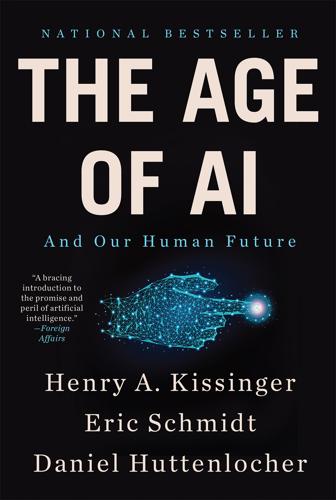
The Age of AI: And Our Human Future
by
Henry A Kissinger
,
Eric Schmidt
and
Daniel Huttenlocher
Published 2 Nov 2021
They also point out, correctly, that while many people worry about killer robots who achieve human-level sentience and mow us all down with Uzis, a much bigger near-term danger lurks in the innocuous-seeming AIs we all use every day, from the feed-ranking algorithms of social media apps to the automated dispatch systems that power Uber and Lyft.” —Kevin Roose, New York Times Book Review “This book is eye-opening, even for those who are already familiar with the technology. It puts AI and its development in the context of history, networks, nations and world order, philosophy and ethics like no other before—a context we greatly need if we’re going to partner with AI to chart our future.”

Coastal California Travel Guide
by
Lonely Planet
On Saturdays and Sundays up to two children (age 12 and under) may ride for free with one fare-paying adult (age 18 or older) on all MTS routes. Taxi & Rideshare Taxi fares vary, but plan on about $12 for a 3-mile journey. Established companies include Orange Cab (%619-223-5555; www.orangecabsandiego.net) and Yellow Cab (%619-444-4444; www.driveu.com). Recently app-based ride-share companies such as Uber (www.uber.com) and Lyft (www.lyft.com) have entered the market with lower fares. Trolley Municipal trolleys, not to be confused with Old Town Trolley tourist buses, operate on three main lines in San Diego. From the transit center across from the Santa Fe Depot, Blue Line trolleys go south to San Ysidro (on the Mexico border) and north to Old Town Transit Center ( GOOGLE MAP ; www.amtrak.com; 4009 Taylor St).
…
Outside is the Digital Mural Project, where, in place of the usual cigarette advertisements, a billboard features slogans like 'Abolish borders!' in English, Arabic and Spanish. BEFORE YOU GO AMake reservations at top San Francisco restaurants – some accept early/late walk-ins, but not all do. AReserve Alcatraz tickets two to four weeks ahead, especially for popular night tours. ADownload SF-invented apps for ride sharing (Lyft, Uber), home sharing (Airbnb), restaurant booking (Yelp) and audio walking tours (Detour) – all widely used here. 2Activities Cycling & Skating Basically Free Bike RentalsCYCLING ( MAP GOOGLE MAP ; %415-741-1196; www.sportsbasement.com/annex; 1196 Columbus Ave; half-/full-day bike rentals adult from $24/32, child $15/20; h9am-7pm Mon-Fri, 8am-7pm Sat & Sun; c; gF, 30, 47, jPowell-Mason, Powell-Hyde) This quality bike-rental shop cleverly gives you the choice of paying for your rental or taking the cost as credit for purchases (valid for 72 hours) at sporting-goods store Sports Basement ( GOOGLE MAP ; %415-437-0100; www.sportsbasement.com; 610 Old Mason St; h9am-9pm Mon-Fri, 8am-8pm Sat & Sun; g30, 43, PresidiGo Shuttle), in the Presidio en route to the Golden Gate Bridge.
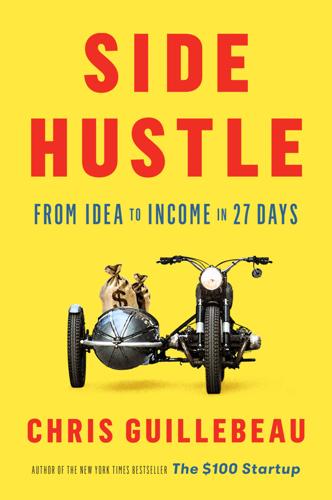
Side Hustle: From Idea to Income in 27 Days
by
Chris Guillebeau
Published 18 Sep 2017
Some ideas are “starter” ideas—they aren’t bad, but they also have severe limitations. Then there are “next-level ideas” (NLIs) that have much better long-term potential. On our imaginary drive, I mentioned ridesharing, where you essentially operate your own car as a taxi. A lot of people get started with side hustles by driving for Uber, Lyft, or some other rideshare service. It’s not a bad start at all; you can work when you want, and the majority of the fares are yours to keep. Still, it also has a severe limitation: since you only make money when you’re driving, you’re still just earning an hourly wage that is capped by market demand, competition from other drivers, and of course, your own limited supply of free time.
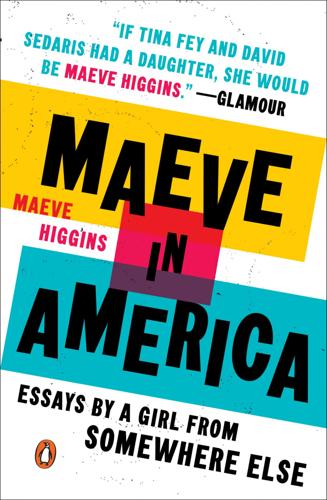
Maeve in America: Essays by a Girl From Somewhere Else
by
Maeve Higgins
Published 6 Aug 2018
The new administration had suspended all refugees for 120 days pending review, and Syrian refugees indefinitely. Travelers from seven Muslim-majority countries were barred, thousands of visas revoked, and hundreds of people detained at airports. So the airport was where I needed to be. I checked my recorder batteries in the taxi on the way. As we took the turnoff to SFO, the Lyft driver asked, “Where are you off to?” I replied at once. “Oh, I’m not going anywhere,” I told him. “I’m staying right here.” It felt like a profound thing to say, but, as is so often the case, it was unhelpful. “Okay. Well, I need to know which terminal, like departures, arrivals, just ballpark where I gotta drop you off.”

Rentier Capitalism: Who Owns the Economy, and Who Pays for It?
by
Brett Christophers
Published 17 Nov 2020
Thus, observing the same sub-optimal pricing outcomes as Furman and his colleagues, Kenney and Zysman write that, in becoming ‘a virtual monopolist’, the platform owner is able to appropriate a generous portion of the entire value created by all the users on the platform [because she has the power to] squeeze the platform community – the drivers or customers on Lyft or Uber, the content providers, the consigners, the customers, essentially any of the participants in the ecosystem who are instrumental in creating the value in the first place.57 Leaving aside for the moment the impacts of monopoly pricing on workers, the fact that many of the services provided by digital platforms are free to use to the consumer means that – in the first instance, at least – those platforms’ monopoly prices must be shouldered by the business customers who pay the transaction commissions and advertising premiums that represent platforms’ main sources of income.
…
‘Facebook’s UK Tax Bill Jumps as Profits Rise’, 8 October 2018, at bbc.com; K. Ahmed, ‘Google’s Tax Bill Rises to £50m’, 28 March 2018, at bbc.com. 90. H. Somerville, ‘Uber Posts $50 Billion in Annual Bookings as Profit Remains Elusive Ahead of IPO’, 15 February 2019, at uk.reuters.com. 91. R. Molla, ‘Why Companies Like Lyft and Uber Are Going Public Without Having Profits’, 6 March 2019, at recode.net. 92. Sandbu, ‘How Internet Giants Damage the Economy and Society’. 93. ‘Google UK Limited: Report and Financial Statements Year Ended 30 June 2018’, March 2019, p. 2 – pdf available at beta.companieshouse.gov.uk. 94.
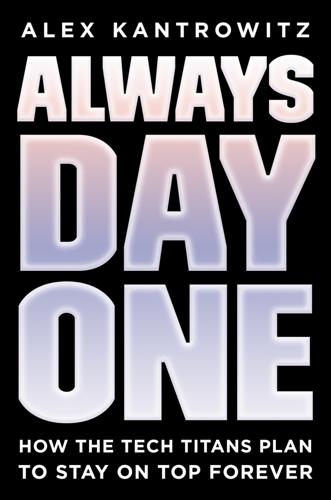
Always Day One: How the Tech Titans Plan to Stay on Top Forever
by
Alex Kantrowitz
Published 6 Apr 2020
It couldn’t tell the difference between two people’s voices; it couldn’t sync with another HomePod; it couldn’t make Spotify the default music player. And from there, he just let it fly. “You can’t order products online,” Brownlee said. “You can’t order food online, you can’t call an Uber or a Lyft with it. You can’t have it read calendar events or set any calendar events. You can’t set multiple timers at the same time, only one at a time, which seems like something you would do in a kitchen with a smart speaker. You can’t have it make phone calls via your voice—again, that’s something you have to set up on your phone and then airplay to the HomePod.
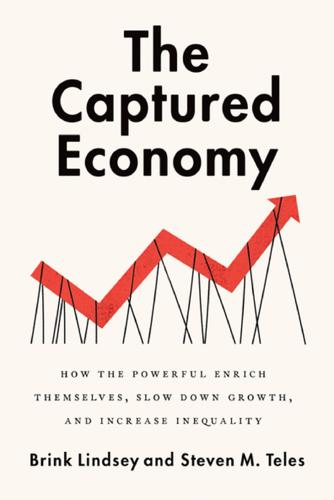
The Captured Economy: How the Powerful Enrich Themselves, Slow Down Growth, and Increase Inequality
by
Brink Lindsey
Published 12 Oct 2017
Research shows that surviving new firms are generally more productive than existing firms, while existing firms have higher productivity than those that go out of business. Occupational licensing, by impeding the formation of new businesses, slows down this vital channel of productivity growth. The advent of app-based ridesharing firms like Uber and Lyft, and the furious resistance they often provoke from supporters of the traditional taxicab industry, offer a powerfully vivid illustration of the conflict between occupational licensing and innovation. The quality of taxi services has long been fodder for consumer grumbling, but improvement through competition was thwarted by restrictive taxi licensing and associated anticompetitive regulations.
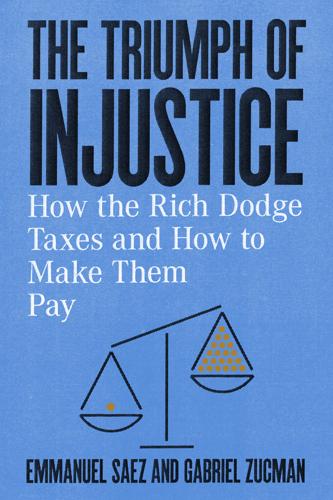
The Triumph of Injustice: How the Rich Dodge Taxes and How to Make Them Pay
by
Emmanuel Saez
and
Gabriel Zucman
Published 14 Oct 2019
According to our computations, 80% of the wealth owned by the top 0.1% richest Americans consists of listed equities, bonds, shares in collective investment funds, real estate, and other assets with easily accessible market values. As for the remaining 20%—mostly shares in private businesses—valuation raises fewer problems than you might think. Although not publicly listed, shares in large private businesses are regularly bought and sold. Even before Lyft and Uber went public in 2019, for instance, it was possible for rich people to invest in the ride-sharing service companies. Private companies regularly issue new stock to banks, venture capitalists, wealthy individuals, and other “accredited investors” with deep enough pockets. These transactions de facto put a value on private firms.

Curbing Traffic: The Human Case for Fewer Cars in Our Lives
by
Chris Bruntlett
and
Melissa Bruntlett
Published 28 Jun 2021
And that state of affairs will only be worsened by the (seemingly inevitable) introduction of autonomous cars: “Imagine all of us being in self-driving vehicles. The algorithm of the self-driving car solves all of these conflicts by itself. Imagine doing that for a year, and what that would do to your sense of trust of others.” On a smaller scale, this is already happening with ride-hailing services, such as Uber and Lyft, gradually diminishing our capacity to trust, and willingness to go out of our way to help one another. In both cases, we’re outsourcing these street-level negotiations to an external third party, with little regard of the consequences. One has only to delve into the comment section of an online article to appreciate how important that exposure to social and spatial diversity is in the twenty-first-century city.

The Creative Curve: How to Develop the Right Idea, at the Right Time
by
Allen Gannett
Published 11 Jun 2018
For better or for worse, the gatekeepers decide what has value, and what will be labeled creative. For this reason, gatekeepers are a notorious challenge for creative people. Csikszentmihalyi explained to me that often an industry gatekeeper doesn’t want to “creatively christen” anyone new. In the world of start-ups, for example, venture capitalists may decide that there are too many Uber or Lyft clones already, and decline to fund a new ride-sharing service. Even if a fledgling company has the potential to become a strong competitor of Uber, it may not be possible to raise the necessary capital to compete. If you cannot attract the attention of the gatekeepers, you might very well be “original” and “technically skilled,” but the truth of the matter is you will not be considered creative.

McMindfulness: How Mindfulness Became the New Capitalist Spirituality
by
Ronald Purser
Published 8 Jul 2019
“Not that they are dangerous,” the moderator said, but “to ensure your safety we have security personnel visible in stations both inside and outside the hotel.” He wasn’t done. “If you are heading towards Union Square just be mindful of your personal belongings. Should you choose to go into the Tenderloin for theatres, restaurants, or galleries it does have a quirky, vibrant community” — pause for giggles from the audience — “you may want to take a cab, Lyft or Uber back to the hotel.”22 Basking in white privilege, Wisdom 2.0 is like a gated community where smug elites spew feel-good sound bites. Meanwhile, the technologies of distraction and addiction they produce cause widespread suffering, while their companies contribute to widening inequality. For all his talk about compassion and acceptance, Soren Gordhamer still bears grudges.

The Rare Metals War
by
Guillaume Pitron
Published 15 Feb 2020
The techno-prophet returned to the scene a few years later with an incredible idea: the new ‘zero marginal cost society’.15 By creating a new generation of ‘collaborative commons’ whereby everything is shared and exchanged online, internet technologies will pitch us into the age of access trumping ownership. No longer will we need to own anything; by simply surfing the web, we will have the freedom to share any product in exchange for money. Already we are seeing the beginnings of this cultural revolution in car transport (Lyft, Blablacar, Car2Go, GoGet, to name but a few). The consequences could be grave for the automotive industry. According to Rifkin, 80 per cent of car-sharing website users have already sold their car. Just think of the plummeting numbers of cars in this new ‘Age of Access’, and the commodity and carbon-emission savings that will go with it!
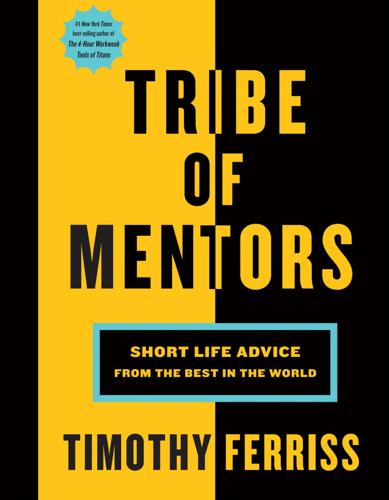
Tribe of Mentors: Short Life Advice From the Best in the World
by
Timothy Ferriss
Published 14 Jun 2017
She has been called “the most powerful woman in startups” by Forbes and is a lecturer in entrepreneurship at Stanford. The child of a rocket scientist at NASA, Ann is a Palo Alto native and has been steeped in technology startups since she was a teenager. Prior to co-founding Floodgate, she worked at Charles River Ventures and McKinsey and Company. Some of Ann’s investments include Lyft, Ayasdi, Xamarin, Refinery29, Chloe and Isabel, Maker Media, Wanelo, TaskRabbit, and Modcloth. How has a failure, or apparent failure, set you up for later success? Do you have a “favorite failure” of yours? As a 12-year-old, I stood on a stage next to my brother, who confidently pointed to me and announced, “This is Ann Miura.
…
S., 123, 222 Lewis, Sarah Elizabeth, 336–39 Loehr, Jim, 526–31, 562–64, 566, 567 Lonfrote Deep Molded Sleep Mask, 146 Long Now Foundation, 246, 332 Lorentzon, Martin, 286 Los Angeles Dodgers, 280 Los Angeles Football Club (LAFC), 280 Louboutin, Christian, 75 Louis Vitton, 78 Love Army, 257, 260 Lyft, 200 Lynch, David, 379–81 M Machiavelli, Niccoló, 210 Machowicz, Richard, 15, 16 Mackenzie, Brian, 338 MacNaughton, Wendy, 151–52, 397 Madredeus, 12 Maharishi Mahesh Yogi, 381 Maker Media, 200 Malcolm X, 520 Mamet, David, 92, 93 Mandalay Entertainment Group, 280 Manduka PRO yoga mat, 236 Maples, Mike, Jr., 64–68 Marcus Aurelius, 69, 335, 486 Mastery, 249, 441 Maté, Gabor, 340–44 Maynard, Kyle, 14–17 McGonigal, Kelly, 439 McGraw, Tim, 464–67 McHale, Joel, 131–34 McMahon, Stephanie, 509–12 McMahon, Vince, 512 Meditation bodily awareness in, 559, 560 breathing techniques in, 89, 559–60 guided, 545 to handle overwhelm/lack of focus, 99, 214, 271, 524 to improve your life, 106, 177, 237, 430 investing in, 322, 338, 450 as investing in yourself, 212–13 mindfulness, 402 from nature, 126 reframing, 189 Samatha, 271 for stress relief, 529 Transcendental, 80, 241, 242, 322, 380, 381, 489 Vipassana, 271, 558–60 Medium, 401 Medley Global Advisors, 56 Mental exercise, 296–97 Merzenich, Michael, 297 Meyer, Danny, 371–72 Michaels, Lorne, 177 Microsoft, 446 Milk, 101 Miller, BJ, 356 Millman, Debbie, 24–30 Mindfulness, 101, 213, 237, 270, 402, 569 Miura-Ko, Ann, 199–202 Modcloth, 200 Moore’s Law, 294–95 Moskovitz, Dustin, 82–84 Mother Dirt, 72 Motive, 64 Mr.

The Future of Money: How the Digital Revolution Is Transforming Currencies and Finance
by
Eswar S. Prasad
Published 27 Sep 2021
They have created new products that are better suited to other changes in modern economies, such as the rise of the gig economy. On-Demand Insurance Traditional insurance companies are typically reluctant to extend auto insurance to drivers who use their cars to transport passengers for rideshare services such as Lyft and Uber or to provide homeowners with insurance policies that cover short-term rentals of properties through homeshare services such as Airbnb. Some of these scenarios can be covered by commercial insurance policies, but these tend to be prohibitively expensive. A full-year commercial policy might make little sense for an Uber driver who drives only a few hours a week outside of another full-time job or an elderly couple renting out their apartment for just a few weeks a year when they are traveling.
…
The pullout of Libra Association members is reported in Joe Light and Olivia Carville, “Libra Loses a Quarter of Its Members as Booking Holdings Exits,” Bloomberg, October 14, 2019, https://www.bloomberg.com/news/articles/2019-10-14/booking-holdings-is-latest-to-pull-out-of-libra-association. As of September 2020, twenty of the original twenty-eight founding members remained, while the total number of members had risen back up to twenty-six, including Lyft, Uber, a few venture capital funds, and Facebook itself (through its subsidiary Novi). See https://www.diem.com/en-us/association/#the_members. Libra Revised The April 2020 white paper is posted at “Libra White Paper,” Libra Association, https://wp.diem.com/en-US/wp-content/uploads/sites/23/2020/04/Libra_WhitePaperV2_April2020.pdf.

The Economic Singularity: Artificial Intelligence and the Death of Capitalism
by
Calum Chace
Published 17 Jul 2016
Many freelancers find they have simply traded an unreasonable boss for unreasonable clients, and feel unable to turn down any work for fear that it will be the last commission they ever get. Many freelancers find that in hindsight, the reassurance of a steady income goes a long way to compensate for the 9 to 5 routine of the salaried employee. Whether or not the new forms of freelancing opened up by Uber, Lyft, TaskRabbit, Handy and so on are precarious is a matter of debate, especially in their birthplace, San Francisco. Are the people hired out by these organisations “micro-entrepreneurs” or “instaserfs” - members of a new “precariat”, forced to compete against each other on price for low-end work with no benefits?
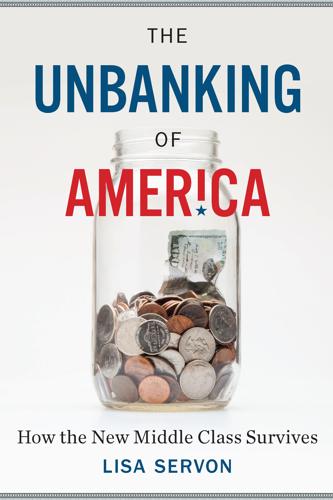
The Unbanking of America: How the New Middle Class Survives
by
Lisa Servon
Published 10 Jan 2017
This economy values shared resources and collaboration over accumulation and ownership, and it operates as a system of providers and users, although people often act in both roles. Providers offer goods and services to be shared, and users rent, pay for, or barter for what’s being offered. Best known for services like Zipcar, Lyft, and Airbnb, it extends to crowdfunding as well as the sharing of equipment and media. Advances in technology—mobile apps and web platforms—allow individuals to connect and then facilitate services and transactions. While almost less than one in ten adults has participated in the sharing economy as providers, consumers under age thirty-five make up 38 percent of the total.
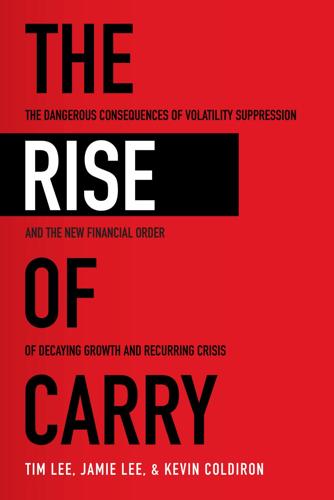
The Rise of Carry: The Dangerous Consequences of Volatility Suppression and the New Financial Order of Decaying Growth and Recurring Crisis
by
Tim Lee
,
Jamie Lee
and
Kevin Coldiron
Published 13 Dec 2019
But for a period, these established stars can be objectively worse—less attractive, less motivated, delivering a less good performance—than the talented nobodies who are next in line behind them, and yet it will still be rational for the director and producer to prefer to hire the stars. This is what celebrity means. That is what cumulative advantage means. Another example is that of network effects and lock-in in business, economics, and technology: the competition between VHS and Betamax, or between Facebook and Myspace and Friendster, or between Uber and Lyft. Betamax is often considered to have been a better technology, but it lost. Today, a direct competitor to Facebook could never succeed, no matter how much better its technology or design or business plan—because the appeal of a social network is the users who are already there, and those users are on Facebook.
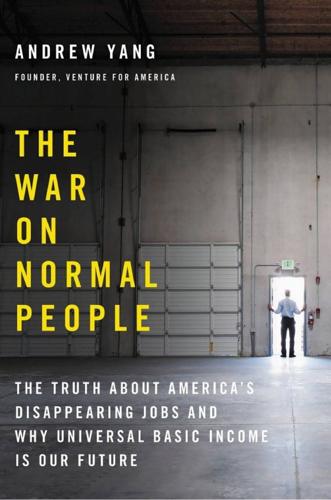
The War on Normal People: The Truth About America's Disappearing Jobs and Why Universal Basic Income Is Our Future
by
Andrew Yang
Published 2 Apr 2018
Other autonomous vehicle companies report similar timelines, with 2020 being the first year of mass adoption. And it’s not just those driving trucks who are at risk. A senior official at one of the major ride-sharing companies told me that their internal projections are that half of their rides will be given by autonomous vehicles by 2022. This has the potential to affect about 300,000 Uber and Lyft drivers in the United States. The replacement of drivers will be one of the most dramatic, visible battlegrounds between automation and the human worker. Companies can eliminate the jobs of call center workers, retail clerks, fast food workers, and the like with minimal violence and fuss. Truck drivers will be different.

To Be a Machine: Adventures Among Cyborgs, Utopians, Hackers, and the Futurists Solving the Modest Problem of Death
by
Mark O'Connell
Published 28 Feb 2017
This gave the place an air of sorrowful aftermath, as though in some efficient and bloodless apocalypse all souls had been raptured, but for those tainted by poverty. I needed to get to Piedmont by 9 a.m., and there was not a cab to be seen. I had maxed out on data roaming within minutes of landing in SFO two days previously, and so had no way of Ubering or Lyfting myself the remaining five miles east to the conference venue. I felt divested, as though bereft of some irreducibly human faculty. After an interlude of vacillation (Should I look around for a café with WiFi? Should I get some quarters and find a pay phone? Were pay phones even a thing anymore?), I eventually flagged down a cab in the manual style, the whole business of which had already begun to feel like some whimsically old-timey affectation.

I'm Judging You: The Do-Better Manual
by
Luvvie Ajayi
Published 12 Sep 2016
These shoes are really not meant for those of us who are ankle-deficient, because by the end of walking those raggedy streets in some boy’s size five wheat Timbs, and carrying that construction-boot weight with my ankles, I needed an Icy Hot patch. My lesson learned: wear thicker socks so your feet won’t slide around in your cute boots. Also, ask a New Yorker for exact distance because they play too much. You ask how far y’all are walking, and they say, “Around the corner.” Lies. I should have called Lyft. I hated wearing shorts because of my aforementioned sticks for legs. In summer, I’d be in jeans the entire time—rain, sleet, 100 degrees, it didn’t matter. At the beach, I’d wear long linen pants, and then when it was time to swim, I’d throw them off in a hurry and run into the water, all so people wouldn’t see my legs and have the chance to point them out.

Company of One: Why Staying Small Is the Next Big Thing for Business
by
Paul Jarvis
Published 1 Jan 2019
The idea wasn’t enough on its own to make the UFC business thrive; it needed the right execution (and the right people involved to manage the execution). At the core of many massive, profitable, global companies is an old idea executed exceptionally well. Facebook is just a better MySpace, and both are essentially digital meeting places. Taxis take people from point A to point B. Uber/Lyft just figured out how to make this service more convenient. None of these are billion-dollar ideas; rather, they’re billion-dollar executions of ideas. That’s why companies of one shouldn’t worry about sharing their ideas, as long as they’re taking care of execution and their ideas are not proprietary.

You Can't Touch My Hair: And Other Things I Still Have to Explain
by
Phoebe Robinson
Published 3 Oct 2016
If you allow yourself to absorb too much of the positivity, you’ll think your shit don’t stink, and that’s how the world ended up with Rebecca Black’s “Friday.” On the flip side, if you take the negative things they say about you too much to heart, you and your family/friends will end up on an episode of Dr. Phil. And trust me, you don’t want to be taking life advice from someone who is basically the by-product of a Popeyes commercial and a Lyft mustache. Not-So-Guilty Pleasure #6: Having Pretend Subway Boyfriends He’s the dreamboat of the day on a crowded subway train, who’s seated across from me, reading a book. He looks up, we lock eyes, and then he returns to his book. I, on the other hand, have decided it. Is. On. We are dating until the end of the commute.
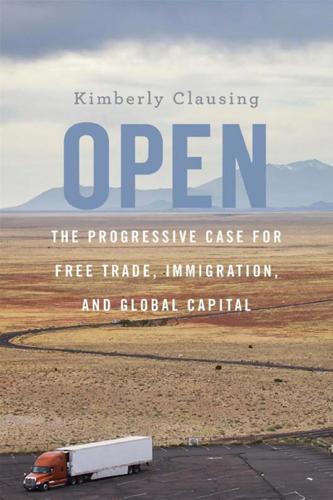
Open: The Progressive Case for Free Trade, Immigration, and Global Capital
by
Kimberly Clausing
Published 4 Mar 2019
For example, in Germany, excellent labor market outcomes are often attributed to the fact that labor stakeholders are more involved in business decision-making.6 Finally, there are several useful ways to modernize labor laws for today’s economy that warrant consideration. As one example, labor laws likely need updating to account for the fact that many workers work independently in the “gig economy” (for example, for online intermediaries like Lyft or Uber).7 Flying the Friendly Skies? Recently, American Airlines announced a plan for pay raises for their pilots and flight attendants, in part due to competitive pressures associated with higher wages at Delta and United. In response, stock market analysts wrote disapproving commentary about how shareholders would be harmed by this undue generosity toward labor, and American Airlines’ stock price fell 5 percent in one day.
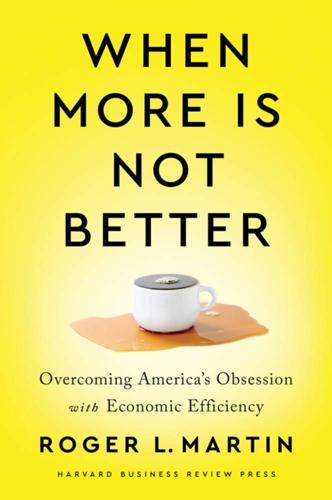
When More Is Not Better: Overcoming America's Obsession With Economic Efficiency
by
Roger L. Martin
Published 28 Sep 2020
And as has been discussed, that is the road to a Pareto distribution. Citizens can combat this powerful tendency through what is called multihoming.7 Rather than dedicating their purchasing power to one provider of a given product or service, citizen-consumers can split their purchases. They can take Uber sometimes, Lyft others, and taxis still others. They can get some of their news through their Facebook feed and still subscribe to their local newspaper. They can use Facebook for some things but rather than use Facebook subsidiary Instagram for their photo sharing, use Insta gram rival Snapchat. They can buy some things from Amazon Prime and others from their local retailer.

Cultish: The Language of Fanaticism
by
Amanda Montell
Published 14 Jun 2021
But it quickly became clear that learning about the connections across language, power, community, and belief could legitimately help us understand what motivates people’s fanatical behaviors during this ever-restless era—a time when we find multilevel marketing scams masquerading as feminist start-ups, phony shamans ballyhooing bad health advice, online hate groups radicalizing new members, and kids sending each other literal death threats in defense of their favorite brands. Chani, the twenty-six-year-old SoulCycler, told me she once saw one teenager pull a weapon on another over the last pair of sneakers at an LA hypebeast sample sale. “The next Crusades will be not religious but consumerist,” she suggested. Uber vs. Lyft. Amazon vs. Amazon boycotters. TikTok vs. Instagram. Tara Isabella Burton put it well when she said, “If the boundaries between cult and religion are already slippery, those between religion and culture are more porous still.” The haunting, beautiful, stomach-twisting truth is that no matter how cult-phobic you fancy yourself, our participation in things is what defines us.

Mastering Blockchain: Unlocking the Power of Cryptocurrencies and Smart Contracts
by
Lorne Lantz
and
Daniel Cawrey
Published 8 Dec 2020
The Libra Association With its billions of users, Facebook has been exploring blockchain implementations for some time. The company’s Libra Association is a consortium of organizations that have come together to implement an entirely new blockchain system called Libra. The following are some of the companies involved, and their roles: Payments: PayU Technology: Facebook, FarFetch, Lyft, Spotify, Uber Telecom: Iliad Blockchain: Anchorage, BisonTrails, Coinbase, Xapo Venture capital: Andreessen Horowitz, Breakthrough Initiatives, Union Square Ventures, Ribbit Capital, Thrive Capital Nonprofits: Creative Destruction Lab, Kiva, Mercy Corps, Women’s World Banking Borrowing from Existing Blockchains The Libra Association intends to create an entirely new payments system on the internet by using a proof-of-stake consensus Byzantine fault-tolerant algorithm developed by VMware, known as HotStuff.
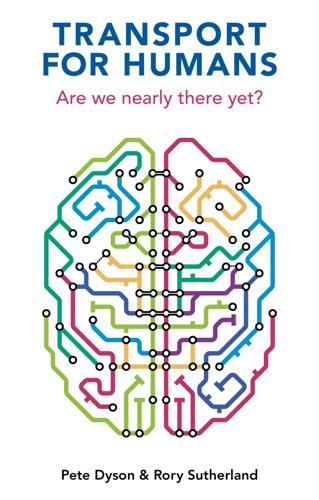
Transport for Humans: Are We Nearly There Yet?
by
Pete Dyson
and
Rory Sutherland
Published 15 Jan 2021
The bad news is that we haven’t been able to get an air bridge, but the good news is that the bus will take you straight to passport control, so you won’t have far to walk. Silver linings need sensitive application, given their potential to be interpreted as spinning a negative as a positive. It’s an upside, not an upgrade. It would be fascinating for operators to collect qualitative and quantitative data to better understand and act on this phenomenon. Uber and Lyft have conducted groundbreaking experiments on passenger behaviour.28 In 2017 they jointly commissioned a team of Chicago-based behavioural economists to design an apology experiment. The companies wanted to discover the best approach to retaining customers who had suffered from delays on a trip they took: a basic apology; a sophisticated apology that conceded the company was at least partly responsible; a discount voucher, with or without an apology; or no apology at all.

API Marketplace Engineering: Design, Build, and Run a Platform for External Developers
by
Rennay Dorasamy
Published 2 Dec 2021
Thankfully, due to the low price point of devices and the widespread availability of mobile data, large percentages of the world’s population are now connected. This has also given rise to a wave of sharing. Services such as Airbnb allow people to rent out a spare room or an entire home. Ride sharing services like Uber and Lyft are super simple to use and are constantly innovating with options such as low-cost trips and package delivery. This has enabled a paradigm shift as it could allow people to not make long-term investments in property and motor vehicles. Future generations may not need a driver’s license as it may be more economical and practical to use ridesharing than owning a car.
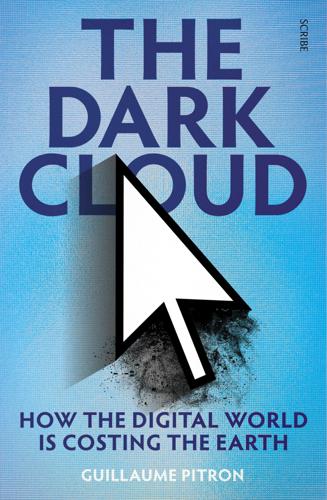
The Dark Cloud: How the Digital World Is Costing the Earth
by
Guillaume Pitron
Published 14 Jun 2023
The little-known powers of e-scooter sharing Since hitting the streets of Santa Monica, California, in 2017, free-floating e-scooters have become increasingly popular around the world. Cheap, practical, and fun, they help decongest cities saturated with traffic. Pioneering this growing trend are operators including Lime, Bird, Jump, and Lyft, with market capitalisation at record levels. Indeed, investors have hit the sweet spot: according to one consulting firm, ‘A dozen e-scooter startups have already attracted more than $1.5 billion in funding, and we estimate that the global market will reach about $40 billion to $50 billion by 2025.’12 But the e-scooters themselves are not all that sturdy, and last little more than a few months — hardly enough to make a dent into their production and maintenance cost.
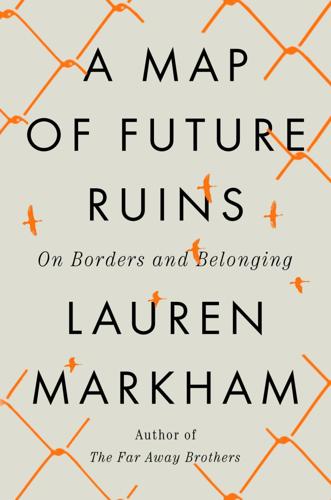
A Map of Future Ruins: On Borders and Belonging
by
Lauren Markham
Published 13 Feb 2024
But then came the chills and the fever, and my throat swelled as if it were crammed with stones. I slept when I could, sometimes deeply, sometimes not at all, inert in my bed, unable to do much as the virus unfurled through me like a lace. The city shut down, and many of our students and their families lost their jobs—most of them in the restaurant industry or driving for Lyft and Uber. These months were even more ruled by numbers. I spent weeks sick in bed, steeped again in numbers that I input into forms as I helped families apply for unemployment: dates of birth, hourly wages, hours worked per week, Social Security numbers. I called the California unemployment hotline so often that I memorized the number, even though the line was almost always busy or unanswered.
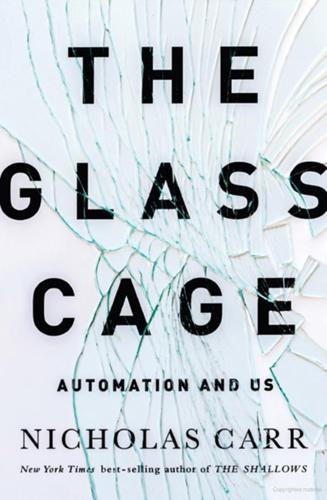
The Glass Cage: Automation and Us
by
Nicholas Carr
Published 28 Sep 2014
* The internet, it’s often noted, has opened opportunities for people to make money through their own personal initiative, with little investment of capital. They can sell used goods through eBay or crafts through Etsy. They can rent out a spare room through Airbnb or turn their car into a ghost cab with Lyft. They can find odd jobs through TaskRabbit. But while it’s easy to pick up spare change through such modest enterprise, few people are going to be able to earn a middle-class income from the work. The real money goes to the software companies running the online clearinghouses that connect buyer and seller or lessor and lessee—clearinghouses that, being highly automated themselves, need few employees.

Artificial Unintelligence: How Computers Misunderstand the World
by
Meredith Broussard
Published 19 Apr 2018
They had started an Indiegogo crowdfunding campaign to partially fund the project and had already collected a few hundred dollars. Next up was Screet, a service that proposed to deliver on-demand products to couples in the throes of passion. Aimed at those who want to be safe but don’t want to make a trip to the drugstore, Screet was a smartphone app that would summon a Lyft or Uber driver to unobtrusively drop off condoms, dental dams, or latex gloves that he or she kept stored in the car trunk in plain, SKU-labeled boxes. This service was going to be especially useful for LGBTQIA people, Screet claimed, because dental dams are hard to find in stores. After two pitches, I wandered out of the green room and rejoined my team to watch the rest of the pitches on the simulcast.
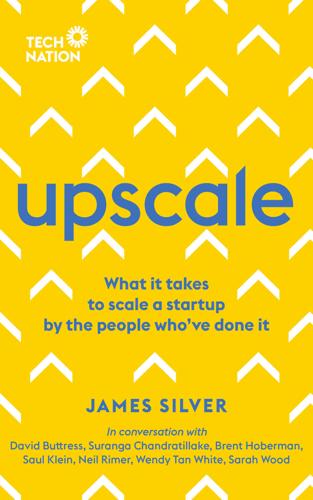
Upscale: What It Takes to Scale a Startup. By the People Who've Done It.
by
James Silver
Published 15 Nov 2018
So you have a supply side, and you have a demand side. When there’s a successful transaction in the form of night units for Airbnb, that’s the sign of the marketplace working. So anything you do that’s driving up nights booked [or equivalent] is what you want to do for a marketplace. ‘For Uber and Lyft, it’s rides booked. So they don’t say kilometres driven; they could, and then you could incentivise people to do longer rides, but the theory is that ride length is not very elastic, so using these ride-sharing services for more rides is the right reflection of the utility of those apps.’ And while it’s not always immediately obvious what a company’s North Star metric is, says Grol, without knowing it you are going to have a much more challenging time accelerating the growth of your business.

AIQ: How People and Machines Are Smarter Together
by
Nick Polson
and
James Scott
Published 14 May 2018
Imagine one team of researchers spending six months cleaning a data set with tens of millions of data points, all to ask one specific question—say, how to predict the progression of kidney disease—and to publish two academic papers. There is no clear way for others to benefit from that data set; nor is there any system to facilitate similar interactions at a large scale. Imagine if you had to write your own GPS mapping software every time you wanted to hail a ride on Uber or Lyft. You’d probably just take a taxi. And the hospitals themselves, again with some exceptions, don’t seem to be rushing to hire their own in-house data-science teams. The result is a sad misallocation of talent. The best data scientists of our generation could have been working on health care for years now.
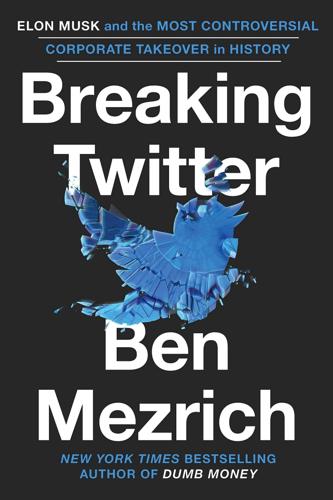
Breaking Twitter: Elon Musk and the Most Controversial Corporate Takeover in History
by
Ben Mezrich
Published 6 Nov 2023
At nineteen, she’d become a popular blogger, and after escaping the cult by matriculating to Oregon State University, by her early twenties she had become one of the first people to garner a six-figure sponsorship on YouTube. Seeing the internet—a place of connectivity and diversity—as an escape from her own past, she’d thrown herself into the world of entrepreneurship, eventually moving to San Francisco to work for various social media–adjacent companies such as Circle and Lyft. Her first attempt at her own company, a short-form video product called Glimpser, had gone under when Vine was acquired by Twitter; her next company, Squad, began as a generative AI endeavor before generative AI was hot. A blowout with her cofounder had led her to pivot the company into a screen-sharing social app, inspired by her seven-year-old daughter’s eagerness to find some way to chat with her friends while she played Roblox.

Hands-On RESTful API Design Patterns and Best Practices
by
Harihara Subramanian
Published 31 Jan 2019
Ambassador makes it easy to disseminate that knowledge to statistics and monitoring tools such as Prometheus, Datadog, and so on. Ambassador generally relies on the fast-evolving Kubernetes platform for ensuring service reliability, availability, and scalability. Envoy (https://www.envoyproxy.io/) was originally built by Lyft. Envoy is a high performance C++ distributed proxy designed for single services and applications. Envoy turns out to be a competent solution as a communication bus. For microservice-centric applications, this contributes as the universal data plane. Finally, it is a core engine for service mesh solutions.

The New Urban Crisis: How Our Cities Are Increasing Inequality, Deepening Segregation, and Failing the Middle Class?and What We Can Do About It
by
Richard Florida
Published 9 May 2016
Cities in other parts of the world, including London, have begun to institute congestion charges, which make drivers pay for their use of busy roads to help alleviate traffic, sprawl, and pollution. New developments like self-driving cars, electric vehicles, and on-demand digital delivery systems, such as Uber and Lyft, will certainly play a big role in the city of the future. But we still need mass transit to provide the connective fiber that will increase clustering and enable the development of a larger number of dense, mixed-use clustered neighborhoods that are affordable to more people. Ultimately, this is not about choosing one form of transportation over another.
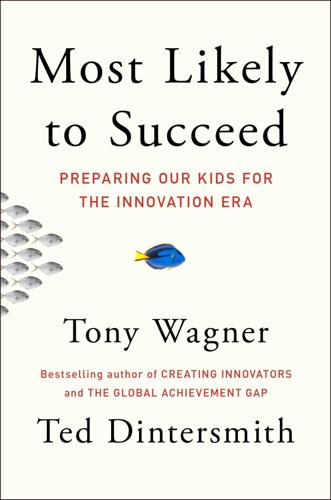
Most Likely to Succeed: Preparing Our Kids for the Innovation Era
by
Tony Wagner
and
Ted Dintersmith
Published 17 Aug 2015
* * * For a good example of how the innovation economy is upending traditional models, check out Elance, a rapidly growing online service that enables entrepreneurial freelancers to earn income in hundreds of ways, including as editors, graphic designers, creative writers, software developers, and researchers. Need your logo designed? Go to Elance. Need careful research about an article? Go to Elance. Elance is hardly unique. Millions of people are generating income through the online microeconomies of sites like Care.com, Freelance.com, eBay, oDesk, TaskRabbit, Uber, Airbnb, Lyft, Teachers Pay Teachers, iTunes, Kickstarter, and on and on. These marketplaces represent the wave of the future, where anyone can: • reach lots of customers readily. • build an online reputation through customer feedback and examples of work. • succeed in a world where customers don’t care about education credentials or standardized test scores

The 100-Year Life: Living and Working in an Age of Longevity
by
Lynda Gratton
and
Andrew Scott
Published 1 Jun 2016
So during these periods, financing is always going to be tricky. That is why developments in the technologies of the sharing economy are so interesting.19 The sharing economy is a great way of enabling people to remain asset-light or to bring income in to finance their asset accumulation. Sharing platforms such as Airbnb, Simplest, Lyft or even Dogvacay are all examples of an emerging economy where people share capacity of assets that they may have purchased or created. So not only is it possible to put off making big financial decisions, it is also possible to reduce the exposure to these financial decisions. Buying a house or a car is expensive, as it involves purchasing a capital stock and making a financial commitment.
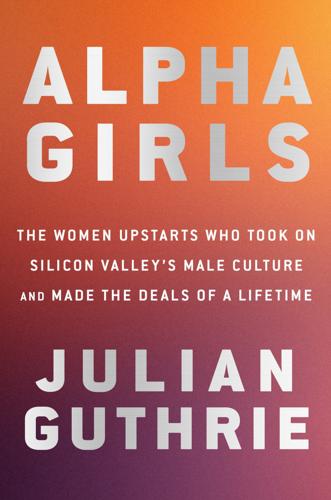
Alpha Girls: The Women Upstarts Who Took on Silicon Valley's Male Culture and Made the Deals of a Lifetime
by
Julian Guthrie
Published 15 Nov 2019
By this time, the two were dating casually. The negotiations at the downtown office tower started in the late afternoon. Theresia told Matthew that it would probably last a couple of hours. At eight P.M., she texted him to apologize that things were moving slowly and that he should head home if he hadn’t already. She could take Lyft or Uber. “I’ll wait for you,” he insisted. The mediation went on past nine P.M. Then ten P.M. Then eleven P.M. Then midnight. Theresia hadn’t had time to look at her phone. She figured that Matthew was long gone. Emerging from the building exhausted, she stopped in her tracks. There, still waiting in the car, was Matthew.
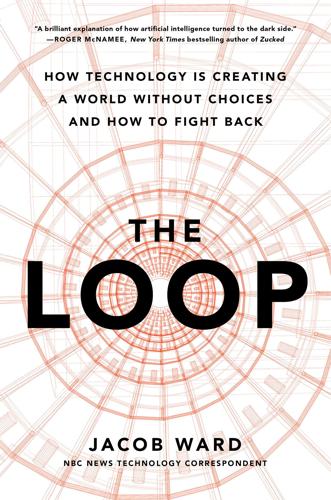
The Loop: How Technology Is Creating a World Without Choices and How to Fight Back
by
Jacob Ward
Published 25 Jan 2022
A FEW MONTHS after Patrick described his heroin overdose to me, I was invited to join a loose dinner party elsewhere in San Francisco thrown by a group that called itself BTech, short for Behavioral Tech. It was a monthly gathering of young neuroscientists, behavioral economists, and other specialists in human decision-making who now work in the tech industry. The gathering of perhaps fifteen or so that night included someone from Lyft; someone from Fitbit; the creator of a financial-advice chatbot; and Nir Eyal, a Stanford MBA who had sold two companies, written a best-selling book called Hooked: How to Build Habit-Forming Products, and was now a consultant successful enough to have built out the white-walled former storefront in which we were all seated.

Duped: Double Lives, False Identities, and the Con Man I Almost Married
by
Abby Ellin
Published 15 Jan 2019
They were some of the most notorious drug dealers in 1980s New York.23 A few days later another email came in. “Did I ever tell you I was living in Iceland for eight months? I stayed at Litla-Hraun. Look it up.” I did. It was a prison. IT WAS MAY when we finally got together. He picked me up in his black Toyota Camry, which he was practically living in now that he was a Lyft driver. I wanted to go to a diner and talk, but he was reluctant to discus his past in public. “The statute of limitations is up on everything I ever did, but it still makes me a little nervous,” he said. We circled the city, me nursing a Diet Coke and Jorge chain-smoking menthol Newport Lights.
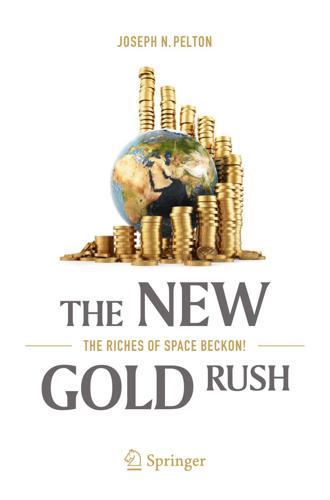
The New Gold Rush: The Riches of Space Beckon!
by
Joseph N. Pelton
Published 5 Nov 2016
Others, when faced with significant change in circumstance, naturally tend to fight back in order to preserve what they have achieved. Then, there are those unique individuals that transcend time. They create a new future, before the general public realizes that things have changed forever. These innovators are the ones that create disruptive technologies, such as Uber, Lyft, Amazon, the Internet and satellite and cable-based electronic entertainment . The space entrepreneurs are like time travelers with their feet in the twenty-first century. Space age innovators are intent on creating the New Space economy, and they are half Thomas Edison and half John D. Rockefeller.
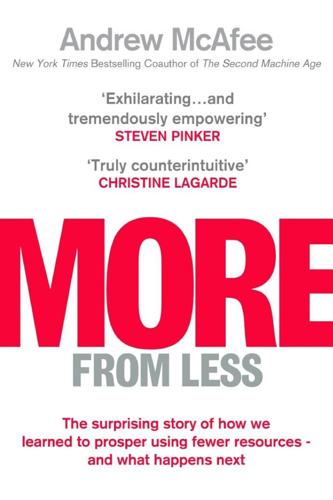
More From Less: The Surprising Story of How We Learned to Prosper Using Fewer Resources – and What Happens Next
by
Andrew McAfee
Published 30 Sep 2019
Now that we have technologies that let us know where every driver, passenger, piece of cargo, and vehicle is at all times, we can greatly increase the utilization and efficiency of every element of transportation. Renting instead of owning transportation is a likely consequence of this shift. Instead of owning cars, which typically sit idle more than 90 percent of the time, more people will choose to access transportation as needed. We’re already seeing this with car-hailing companies such as Uber and Lyft. These services are quickly spreading around the world, and expanding to cover more modes of transportation, from motorbikes to bicycles to electric scooters. They’re also moving into commercial applications such as long- and short-haul trucking. As this shift continues, we’ll need fewer tons of steel, aluminum, plastic, gasoline, and other resources to move the world’s people and goods around.
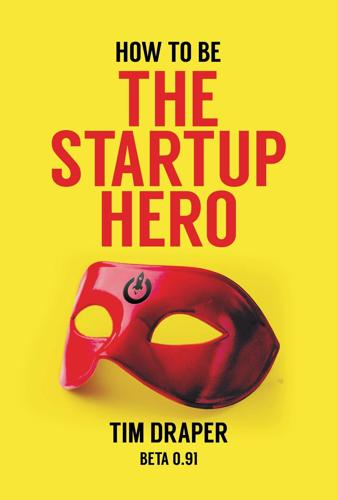
How to Be the Startup Hero: A Guide and Textbook for Entrepreneurs and Aspiring Entrepreneurs
by
Tim Draper
Published 18 Dec 2017
To keep it manageable, we kept class size to a total of 30 so the 10 students could easily be focused on. The students included a wide mix of exceptional talent including former Miss USA Erin Brady and her then husband Tony Capasso, Instagram star Ana Marte, social entrepreneur Sharon Winter, and medical marijuana delivery king David Kram. Lectures were given by the founders of Lyft, SolarCity, Airbnb, and several other household names. Among the speakers were Michelle Kwan, Jane Buckingham, and the Valley Girl herself, Jesse Draper. The students came up with a wide range of interesting companies to pitch. I agreed to invest in the top three in hopes that the show would help them get off the ground.
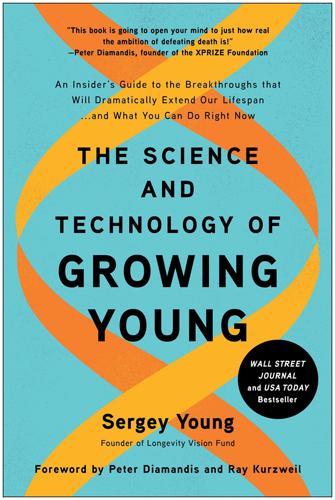
The Science and Technology of Growing Young: An Insider's Guide to the Breakthroughs That Will Dramatically Extend Our Lifespan . . . And What You Can Do Right Now
by
Sergey Young
Published 23 Aug 2021
LifeSaver locks your screen while you are in motion so that you cannot fidget with your device. Heads-up displays like Navdy make it possible to view navigation and conduct other essential smartphone tasks without ever touching your phone. As for drinking, there’s no excuse anymore. If you must drink, use a ride-sharing app like Uber or Lyft, which studies show have reduced alcohol-related auto accidents by 25 to 35 percent since their launch.15 Consider using a blood alcohol concentration calculator app like MyLimit or even installing a smartphone breathalyzer like BacTrack. Soon, fully self-driving cars will drastically reduce road accidents.

Sunbelt Blues: The Failure of American Housing
by
Andrew Ross
Published 25 Oct 2021
Cowed by the threats, the city council reversed its decision less than a month after putting the tax in place.33 Similar fights have been playing out elsewhere, with varying results. In San Francisco, a tax on big businesses to help fund homeless initiatives was opposed by several tech companies (including Lyft, Square, Stripe, and Twitter), but the proposition passed anyway in 2018. In Cupertino, on the other hand, Apple pushed back against a similar ordinance and won. While they fervently resist new taxes, the tech companies also avoid paying their fair share of existing ones, depriving local, state, and federal authorities of money they might use to address the housing crisis.
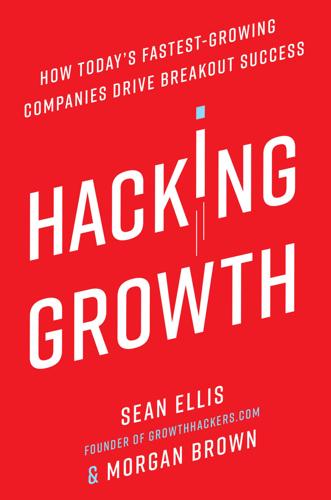
Hacking Growth: How Today's Fastest-Growing Companies Drive Breakout Success
by
Sean Ellis
and
Morgan Brown
Published 24 Apr 2017
Or a business in a “winner take all” situation, where it’s likely that one firm will become overwhelmingly dominant (as is often true for network effect businesses such as LinkedIn or WhatsApp), spending a great deal up front to make a land grab and try to lock in dominance may be a brilliant strategy. Or, if a company is running neck and neck with a strong competitor, as is the case with car-service providers Uber and Lyft, there may be no choice but to spend heavily on acquisition efforts. That’s assuming, of course, that the company has the cash on hand to sustain that up-front spending and a solid plan to recoup it down the line. The amount a company should spend on customer acquisition is not a matter of any preordained formula; it’s a function of many variables specific to each company’s business model, competitive situation, and stage of growth.

Trick Mirror: Reflections on Self-Delusion
by
Jia Tolentino
Published 5 Aug 2019
At a basic level, Facebook, like most other forms of social media, runs on doublespeak—advertising connection but creating isolation, promising happiness but inculcating dread. The Facebook idiom now dominates our culture, with the most troubling structural changes of the era surfacing in isolated, deceptive specks of emotional virality. We see the dismantling of workplace protections in a celebratory blog post about a Lyft driver who continued to pick up passengers while she was in labor. We see the madness of privatized healthcare in the forced positivity of a stranger’s chemotherapy Kickstarter campaign. On Facebook, our basic humanity is reframed as an exploitable viral asset. Our social potential is compressed to our ability to command public attention, which is then made inextricable from economic survival.

Mindf*ck: Cambridge Analytica and the Plot to Break America
by
Christopher Wylie
Published 8 Oct 2019
But as I answered their questions, it was obvious that threats to democracy didn’t interest them nearly as much as the mechanics of what Cambridge Analytica had pulled off. Even the Facebook vice president seemed mostly unfazed. If I had a problem with Cambridge Analytica, he said, then I should create a rival firm—respond to the Uber of propaganda by developing the Lyft. This suggestion struck me as perverse—not to mention irresponsible—coming from an executive at a company well positioned to take meaningful action. But that was how Silicon Valley operated, I soon realized. The reaction to any problem, even one as serious as a threat to the integrity of our elections, is not “How can we fix it?”
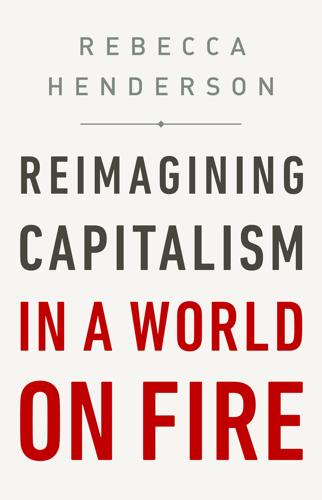
Reimagining Capitalism in a World on Fire
by
Rebecca Henderson
Published 27 Apr 2020
Fourteen years later, when the company first moved solidly into the black, Amazon was worth $318 billion, despite the fact that it only had $600 million in profits.11 Clearly many investors have been willing to wait for years to see Amazon’s investments pay off. Indeed investors have been willing to funnel billions to a wide range of “platform” plays—including Uber, Lyft, and Airbnb—despite the fact that many of these firms have yet to make any money. So it can’t be that investors are altogether and overwhelmingly short term focused. When investors understand the nature of the bet they are being asked to make, some of them will make it. It took investors many years to learn the language of biotech.

Hype: How Scammers, Grifters, and Con Artists Are Taking Over the Internet―and Why We're Following
by
Gabrielle Bluestone
Published 5 Apr 2021
In a process detailed by the nonprofit consumer advocacy group Public Citizen’s research director Rick Claypool in a 2016 paper, the company would swoop into a city and set up shop, ignoring local regulations and “insisting on the legality of its business.” If officials resisted, the company would mobilize a campaign among their local riders to “save Uber.” The laws they couldn’t skirt, they’d lobby to change. And they’re still doing it: in 2020, Uber and Lyft spent a combined $200 million to pass Prop 22, which exempts them from California’s unconscionable expectations that state employers provide their workers with outrageous benefits like health care and basic labor protections.48 “There is a pattern to Uber’s conflicts with cities,” Claypool noted at the time.

Easy Money: Cryptocurrency, Casino Capitalism, and the Golden Age of Fraud
by
Ben McKenzie
and
Jacob Silverman
Published 17 Jul 2023
They had both owned crypto, understood the operational intricacies of various blockchains, and originally believed in crypto’s promise of producing a censorship-resistant, privacy-respecting new form of currency. Ultimately though, both became disenchanted by the failures of the industry to live up to its initial promise as it descended into fraud, greed, and scams. The Lyft dropped me off in front of a recording studio in East Los Angeles. I felt the same tingling sensation of a first friend date that had come with meeting Jacob the previous summer. What would Cas be like in the flesh? Would he and Bennett look down on a new entrant to the crypto-skepticism beat? Maybe they’d see me, like some others did, as a celebrity dilettante chasing some kind of intellectual prestige or internet fame or whatever the hell it was that I was doing.
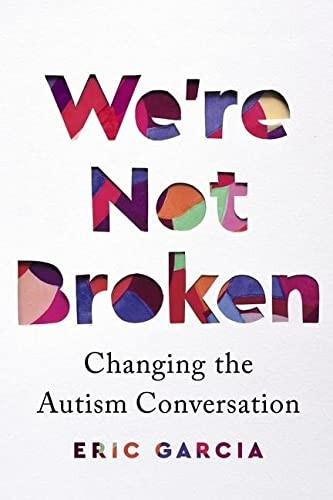
We're Not Broken: Changing the Autism Conversation
by
Eric Garcia
Published 2 Aug 2021
A few months later, she won her election. 2 “In My Mind, I’m Going to Carolina” * * * Education Huntington, West Virginia, is near the border of Ohio and Kentucky. To get there the Sunday after Thanksgiving in 2018, I flew from Washington to Charlotte and then to the Tri-State Airport. My ride from the airport was filled with scenic views of mountains that kiss the sky. Weeks after the 2018 midterm elections, I joked with one of my Lyft drivers that I was the only political reporter who was not there to cover the election. And I certainly wasn’t there to write one of those god-awful “Trump Country” profiles about “forgotten voters” in Appalachia. National political reporters who cover West Virginia usually write about the decline of the coal industry, the gripping poverty, or the opioid epidemic that has ravaged the state (at one point leading to 41.5 deaths per 100,000 people).

Recoding America: Why Government Is Failing in the Digital Age and How We Can Do Better
by
Jennifer Pahlka
Published 12 Jun 2023
None of the information has been saved. When you come across services like this, you may assume that they’ve been poorly designed. The reality is often that they haven’t been designed at all. The developers have essentially just taken the official terms of service—which even in an easy-to-use app like Lyft are often dozens of pages of legalese—and made that the interface to the user. Because the agency’s overriding goal was not to design a service but to avoid being sued. If it makes you miss your flight, so be it. * * * CONSERVATIVE EFFORTS TO limit government by slowing it down have given us a government that is indeed slow and cautious but that is still big, at least for now.

The Rough Guide to New York City
by
Rough Guides
Published 21 May 2018
Its introduction in New York has caused a backlash from yellow cab drivers, with calls for greater regulation, but at the time of writing the service remained popular and is generally safe. The cheapest base fare is $2.55 (uberX), followed by $1.75 per mile (there’s usually a minimum payment of $8, making short trips uneconomical). Lyft (lyft.com) and Gett (gett.com) offer similar services and rates (also via apps). None of these services can be hailed on the street – you must reserve them through the apps. Cars working for ride-sharing companies have started to replace the “gypsy cab” (which also looks like a regular car), traditionally divided into two types: licensed livery cabs (identified by a “T” on the number plate), only permitted to pick up passengers on call by telephone, but which often illegally seek passengers on the street; and completely unlicensed, uninsured operators who tout for business wherever tourists arrive.

Lonely Planet Washington, Oregon & the Pacific Northwest
by
Lonely Planet
The Empire Builder travels to Chicago, the Cascades goes to Vancouver, BC, and the Coast Starlight runs between Seattle and Los Angeles, CA. 8Getting Around TO/FROM THE AIRPORT The MAX light-rail Red line takes about 40 minutes to get from the airport to downtown Portland (adult/child $2.50/1.25). Trains arrive approximately every 15 minutes. Taxis charge around $35 to $40 (not including tip) from the airport to downtown. For app-based ride-share service with Uber, Lyft and Wingz, there is a dedicated pick-up zone on the airport’s lower level. Walk outside toward island two, where you’ll find pick-up lines separated by company. With Uber and Lyft, you’ll receive a PIN number in the app upon requesting a ride. When it’s your turn in line, show this PIN to the next available driver, who will enter it into their system and pull up your destination information.

Bit Rot
by
Douglas Coupland
Published 4 Oct 2016
In Canada a while ago, the press revelled in the fate of an Edmonton couple who rented out their house on Airbnb and came back only to find it trashed to the tune of C$100,000. Airbnb now has the largest hotel footprint in the world. Uber has image problems, but they’re on the correct historical track. Craigslist, Lyft et al—the shareconomy? The freeconomy? It’s going to happen. And the moment these firms start paying more in taxes is the moment they officially suffocate to death the old economy. As for Vancouver, which has the lowest number of taxis per capita in Canada, fear-mongering can only last so long. People travel.
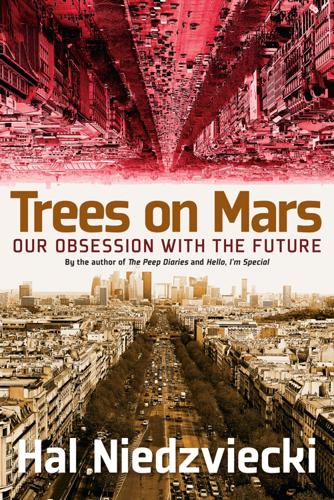
Trees on Mars: Our Obsession With the Future
by
Hal Niedzviecki
Published 15 Mar 2015
Think of the management software that Starbucks uses to decide who should work when in thousands of stores. Think of the ever-expanding category of hubs that connect people who want something done with people who are willing to do that job for them. These are task brokers like Fiverr and Taskrabbit, or driver-on-demand apps like Uber and Lyft—low-wage, task-based labor hubs that take a cut of every transaction but don’t take much, if any, responsibility for the estimated seventeen million or so Americans who work at least part time as “independent contributors.”81 These workers who race around walking dogs, hanging pictures, and giving rides to the airport don’t know what work at what wage they’ll have next day or next week.

Brotopia: Breaking Up the Boys' Club of Silicon Valley
by
Emily Chang
Published 6 Feb 2018
But the vast majority of venture capital in 2016 went into fintech (meaning financial tech, such as apps that disrupt banking and retirement planning), security, genetics, augmented and virtual reality, and artificial intelligence, in addition to an outsize amount in transportation (dominated by funding of Uber, Lyft, and other ride-hailing services). These numbers indicate a big mismatch between ideas that attract mostly male VCs and ideas that attract female entrepreneurs. Is this a true gender gap? Maybe, but not necessarily. There is evidence to suggest that women choose lower-cost-of-entry, lower-growth sectors simply because they have fewer resources available to them.
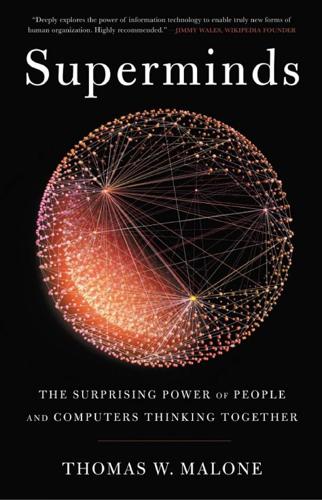
Superminds: The Surprising Power of People and Computers Thinking Together
by
Thomas W. Malone
Published 14 May 2018
That’s why I think we’re likely to see more and more decentralization of decision making over the coming decades. In the years since The Future of Work was published, many of the things it predicted have become more common: Highly decentralized online groups like Wikipedia and open-source software are much more prominent. Decentralized markets for things like taxi services (Lyft) and hotel services (Airbnb) have captured our national attention. Even our largest corporations—like IBM, Google, and General Motors—have less of the rigid, centralized hierarchies that were common in the corporations of the past (think three-piece suits) and more of the loose, decentralized structures that used to be confined to a few cutting-edge sectors of the economy (think jeans and T-shirts).

Parkland: Birth of a Movement
by
Dave Cullen
Published 12 Feb 2019
She had never even attended a political rally before Valentine’s Day. David, Emma, and Cameron also skipped the competitions. The teams could take a break, but not them. Most of the details were delegated. Adults were employed to solve the vexing issues posed by all the in-kind generosity. Airlines and hotels had donated tickets and blocks of rooms, Lyft promised free rides, and so many kids were in need, but who was going to coordinate all that? Invitations were routed to Ryan Deitsch, who texted the information to Jeff Foster, the AP government teacher. Mr. Foster maintained a sign-up list, which ran about 750 students deep, and he built a detailed spreadsheet to capture all the details and match them up.

Life's Edge: The Search for What It Means to Be Alive
by
Carl Zimmer
Published 9 Mar 2021
Deamer had no idea if it would succeed. But all the lessons he had learned about life as it first existed gave him confidence that it might. “Everything I do,” he said, “is based on knowing that life began.” NO OBVIOUS BUSHES The February sunshine was almost too much to bear. I emerged out of a Lyft in front of the badging office at the NASA Jet Propulsion Laboratory in Pasadena, California, having just spent several months in chilly New England under a sky that had been mostly cloudy, dark, or both. A JPL scientist named Laurie Barge came into the office to meet me and led me inside the facility.
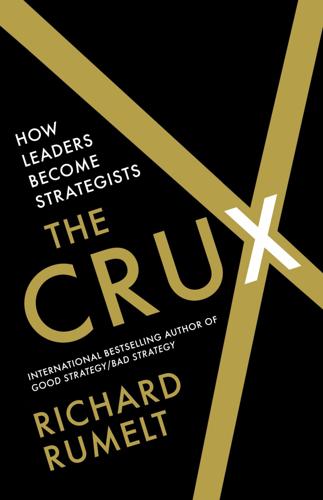
The Crux
by
Richard Rumelt
Published 27 Apr 2022
And how easy is it for a buyer or seller to switch to a different platform? With Uber, search is fast and easy, though one can get caught with fares three times normal if there is a rush. There is some concern about the lack of stickiness on both sides of Uber’s market. A large portion of its drivers also drive for competitors like Lyft, and its ride-hailing phone app is fairly easy to duplicate. Some of those concerns also apply to Airbnb. The craft platform space sees buyers and sellers willing to move to alternative platforms, but it is somewhat costly for a seller to do so. This is chiefly due to the cumbersome structure of code underlying websites and the slightly sticky nature of a Web link to a shop.
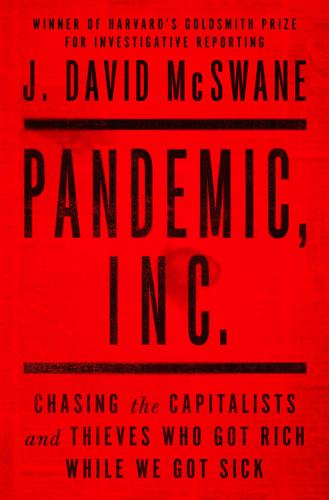
Pandemic, Inc.: Chasing the Capitalists and Thieves Who Got Rich While We Got Sick
by
J. David McSwane
Published 11 Apr 2022
He had said that once we landed at Chicago Midway International Airport, he would drop his folks off at the Hilton Oak Brook Hills Resort and he and I would take a taxi over to the VA distribution center in Hines and wait for a mask delivery “even if we have to wait until three a.m.” Instead his entourage rented a few SUVs and I took a separate Lyft ride to the hotel, where everything and nothing went down. After two very bored employees sitting behind Plexiglas checked us in, we met in the vast lobby facing out into a rolling, empty golf course. The capaciousness of this convention center hotel was made larger still by its emptiness, the unlit and shuttered cafe, the pool with no people.
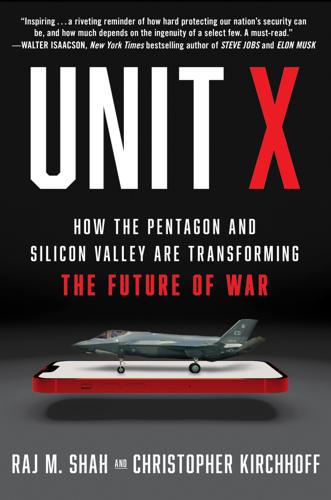
Unit X: How the Pentagon and Silicon Valley Are Transforming the Future of War
by
Raj M. Shah
and
Christopher Kirchhoff
Published 8 Jul 2024
President Biden went on to inhibit China’s access to advanced microprocessors and curtail foreign investments in sensitive U.S. technology, tightening the screws even further than Mike Brown’s paper originally recommended. The Pentagon created a Chief Digital and Artificial Intelligence Office and named the former head of machine intelligence at Lyft to lead it. Following the recommendations in Mike Brown’s 2017 paper, in late 2022 the Pentagon established the Office of Strategic Capital to liaise with private markets. With the renewed focus on technology competition, Chris second-guessed his decision to stay out of the administration. Ron Klain was named Biden’s first chief of staff.

The Measure of Progress: Counting What Really Matters
by
Diane Coyle
Published 15 Apr 2025
The prevalence of contingent work is another phenomenon that makes m easurement and understanding of investment in domestic capital goods important. Such workers often have to invest in their own equipment. If they are formally self-employed or a sole trader, this expenditure will be reported (to reclaim tax) and in principle captured in investment statistics. But a Deliveroo rider or ride-share driver for Lyft will often use their own vehicle, and carpenters or photographers selling their s ervices via digital platforms w ill buy their own equipment. It is not clear to what extent any of these capital purchases are being measured. Incomes might not even be fully declared as there w ill be some overlap with the informal economy.

Boom: Bubbles and the End of Stagnation
by
Byrne Hobart
and
Tobias Huber
Published 29 Oct 2024
After long periods of depressed research investment and aggressive financial engineering, many cheap, inefficient companies have either been acquired and turned around or driven into bankruptcy. Furthermore, over the past two decades more companies have structured themselves so executives won’t be beholden to outside shareholders. Many big tech companies including Meta, Google parent Alphabet, Snap, Shopify, Lyft, Pinterest, and Zoom use dual-class stock, which grants founders disproportionate voting power. This makes it hard for investors to fire a bad CEO, but it also makes it difficult for them to lay off a good one. For instance, in the aftermath of Facebook’s IPO many investors were outraged by the company’s focus on mobile, an area that, at the time, appeared to risk cannibalizing its then-lucrative desktop ads business.

Age of Discovery: Navigating the Risks and Rewards of Our New Renaissance
by
Ian Goldin
and
Chris Kutarna
Published 23 May 2016
In the last Renaissance, people went to the town square to find each other; in the New Renaissance, the town square is always with us, in the form of real-time, location-based data on our identities, choices and behaviors. We go to it anytime to fulfill an ever-widening range of needs—to shop, eat, exercise, travel and meet with one another. We can match partners for love or sex (Match.com, Tinder), match entrepreneurs with investors (kickstarter.com, indiegogo.com), drivers with riders (Uber, Lyft), spare rooms with travelers (Airbnb), public stewards with street-level concerns (SeeClickFix.com), people in need with good Samaritans (causes.com, fundly.com), problems with the talents to solve them (hackathons, InnoCentive.com) and victims with aid-givers and watchdogs (ushahidi.com), to name a few.

Together
by
Vivek H. Murthy, M.D.
Published 5 Mar 2020
And my village grew in unexpected ways to include people like the staff at Abe’s Café, where I wrote much of this book, who would often give me an extra serving of my favorite tapioca pearls with an encouraging smile when I was on my tenth hour straight of writing. It also included the babysitters, neighbors, and relatives who stepped in to help care for our children before critical deadlines and Uber and Lyft drivers who frequently offered their takes on the book and some of whose stories are included in these pages. In their own beautiful ways, they reminded me often of the healing power of human connection. We really do need one another. My mother-in-law, Sylvia Chen; father-in-law, Yong-Ming Chen; and sister-in-law, Michelle, put up with many visits that involved me writing endlessly at the dining table or in coffee shops on our visits to see them in California.
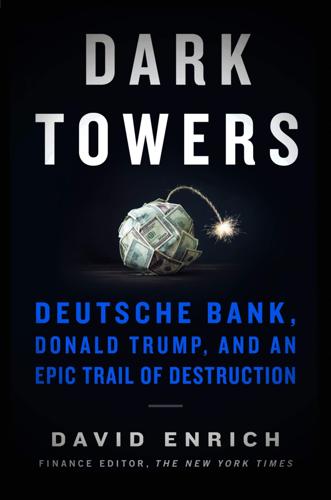
Dark Towers: Deutsche Bank, Donald Trump, and an Epic Trail of Destruction
by
David Enrich
Published 18 Feb 2020
What we’re up against is all those bad acts are being pushed down on the little people on the bottom.” “The low-hanging fruit,” the first agent added. “And the larger bank in its entirety is claiming ignorance and that it’s one bad player. But we know what we’ve seen, it’s a culture of just—” “Fraud and dirt,” Val interjected, thrilled to be part of this. He called me from a Lyft afterward. His adrenaline was still pumping. “I am more emotionally invested in this than anyone in the world,” he said. “I would love to be their special informer.” A couple of months later, a padded manila envelope arrived at Marie’s apartment, addressed to Val. The return address was the FBI’s Manhattan headquarters.

Habeas Data: Privacy vs. The Rise of Surveillance Tech
by
Cyrus Farivar
Published 7 May 2018
Since just after the Jones decision, Ohm has written in both academic and popular forums that in recent decades, privacy has often been lost as part of the transactional cost of doing business. If I want to use a cell phone, for instance, I have to give up my location information at all times. If I want to use a service like Uber or Lyft, I have to tell them where I want to go at specific times, and they are effectively allowed to retain that information forever. Under the third-party doctrine, that data can be accessed by the government relatively easily. But the Fourth Amendment does not regulate the power of private companies, it regulates government.
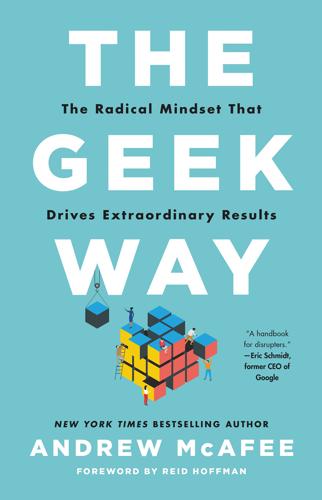
The Geek Way: The Radical Mindset That Drives Extraordinary Results
by
Andrew McAfee
Published 14 Nov 2023
These are the companies where I’d expect our geek norm detector to be making the most noise. The table below lists the thirty-three Likely Suspects, 60 percent of which were founded within our Northern California circle. Airbnb* Akamai Alphabet* Amazon Apple* Cisco Systems* DoorDash* eBay* Expedia Facebook (Meta)* GoDaddy Groupon Grubhub HubSpot IBM Intel* LinkedIn* Lyft* Microsoft Netflix* Oracle* PayPal* Postmates* Salesforce* Stitch Fix* Support.com* Twitter* Uber* Wayfair Workday* Yahoo* Yelp* Zillow *Founded in Northern California I calculated the average across the Likely Suspects of each of the Culture 500’s Big Nine values, and compared this group average to Netflix’s scores on each of the Big Nine.
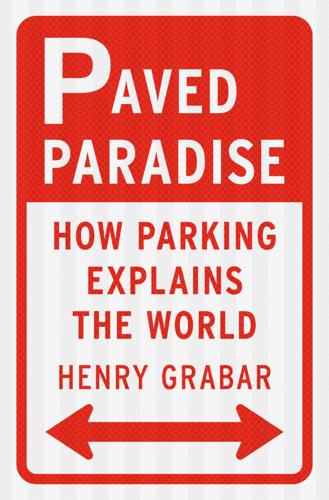
Paved Paradise: How Parking Explains the World
by
Henry Grabar
Published 8 May 2023
The mood at the conference in Orlando in 2019 was one of gentle defiance: Christine Banning, the president of the sixty-eight-year-old trade group, set the tone in an early address: “There is so much in the media ‘Parking is dead,’ ” she cried. “If I see one more report, I don’t know what I’m going to do.” In fact, as Banning spelled out, things were looking pretty sunny for parking that fall: autonomous cars had failed to materialize, Uber and Lyft were still pouring billions of dollars down the drain, millennials were finally buying cars. The pandemic was still six months away. “That normal human life pattern is taking shape,” Banning observed of millennial car buying, “and there’s a bright future ahead of us.” Despite America’s surplus of free parking and Americans’ related hatred for paying for it, commercial parking is a lucrative business because parkers receive a great deal of help on both sides of the ball.
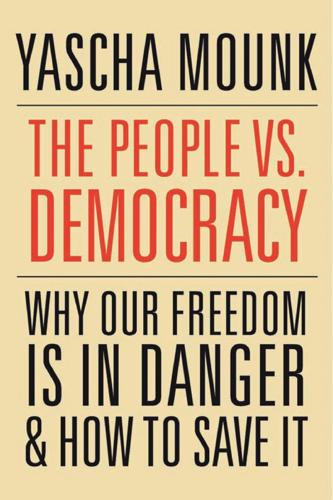
The People vs. Democracy: Why Our Freedom Is in Danger and How to Save It
by
Yascha Mounk
Published 15 Feb 2018
For a good overview, see Valerio De Stefano, “The Rise of the ‘Just-in-Time Workforce’: On-Demand Work, Crowdwork, and Labor Protection in the ‘Gig-Economy,’” Comparative Labor Law and Policy Journal 37, no. 3 (2016): 471–503. Note that even robust political approaches to the regulation of the gig economy, like a recent speech by Senator Elizabeth Warren that was widely portrayed as hostile to Uber and Lyft, seek to regulate rather than to fight these new industries. Elizabeth Warren, “Strengthening the Basic Bargain for Workers in the Modern Economy,” Remarks, New American Annual Conference, May 19, 2016, https://www.warren.senate.gov/files/documents/2016-5-19_Warren_New_America_Remarks.pdf. 9.
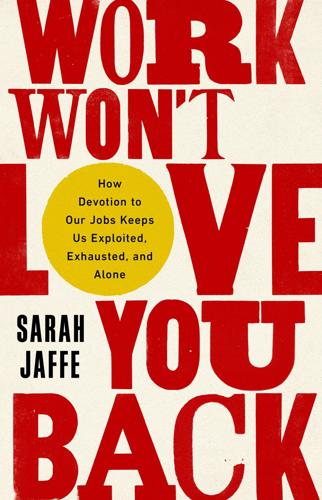
Work Won't Love You Back: How Devotion to Our Jobs Keeps Us Exploited, Exhausted, and Alone
by
Sarah Jaffe
Published 26 Jan 2021
Even if I have kids of my own, still every time you see a child, a baby, growing and learning how to walk, or saying their first word, it still makes you feel so happy and fulfilled just to see the progress.” Seally’s commitment was tested when the coronavirus pandemic came to New York. “I chose to become a live-in. I was thinking that it would be safer staying over for the week instead of taking public transportation or doing Uber or Lyft.” She began spending Monday through Friday at her employers’ home with their children; her employers pick her up Monday morning and drop her off Friday so she doesn’t have to take public transit. Her employers have mostly been working at home during the pandemic, so Seally’s job is to keep the children occupied during the day.

The Wires of War: Technology and the Global Struggle for Power
by
Jacob Helberg
Published 11 Oct 2021
It reminded me of my upbringing and my family’s history, my paternal grandparents springing back to a joyful life through years of toil after surviving the horrors and humiliations of the Holocaust and my maternal grandfather risking his life to fight in the French Resistance. Keith had his fingerprints on some of the most prominent companies in the Valley—including PayPal, Square, YouTube, Airbnb, Lyft, and LinkedIn20—and growing closer to him meant becoming more firmly embedded in that culture. I came to know some of tech’s most original thinkers. Often controversial, always unconventional, Keith and his circles confirmed for me that the Bay was indeed home to the ideals that had called out to me growing up in Europe.
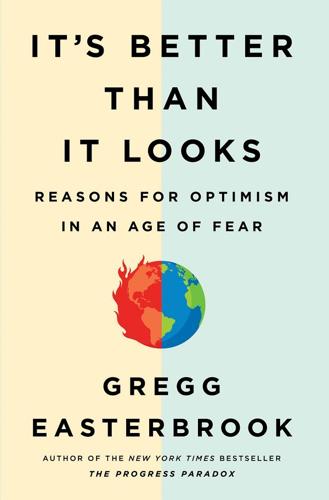
It's Better Than It Looks: Reasons for Optimism in an Age of Fear
by
Gregg Easterbrook
Published 20 Feb 2018
The celebrated journalist James Fallows, an instrument-rated pilot and author of two books on aviation, believes automated aircraft will be right behind automated vehicles. Small jets operating without the expense of flight-deck personnel and with no need to wait for them to arrive at the field would allow convenient, low-cost air taxis, beckoned by smartphone as is Lyft today. Perhaps you’re thinking, I ain’t getting into no flying machine that does not have a pilot. Generations to come may do so without reservation, if you will excuse the pun. The chess grandmaster and Russian dissident Garry Kasparov noted in 2017 that people once refused to get into elevators that did not have operators.

The Job: The Future of Work in the Modern Era
by
Ellen Ruppel Shell
Published 22 Oct 2018
Starting with the economic meltdown and continuing through the recovery, the number of Americans working for contract agencies rose to sixteen million—a faster rate of growth than that of overall employment. Such statistics make clear what reported labor numbers do not: that the economic recovery brought a dramatic rise in temporary contracts (at an average duration of about three months) as well as a growth in independent contractors tied to labor platforms like Uber and Lyft. The pay for these “alternative” gigs typically averages about $17 an hour, compared with the US average of $24.57 an hour. Often they are part time, occasional, or seasonal. In Irving, contract employees working at Amazon received about $8 an hour, minus a portion retained by the employment agency for transportation and check-cashing fees.

Your Face Belongs to Us: A Secretive Startup's Quest to End Privacy as We Know It
by
Kashmir Hill
Published 19 Sep 2023
“Websites always change, and if they change the design, then you have to retune your scraper.” But that was not the case with Venmo. On its home page, Venmo had an image of an iPhone, and on its screen was the Venmo newsfeed, showing users who publicly paid each other for things: “Jenny P charged Stephen H, ‘Lyft.’ ” “Raymond A charged Jessica J, ‘Power and Internet.’ ” “Steve M paid Thomas V, ‘nom nom nom.’ ”[*] This wasn’t just a little made-up product demo; it was an actual live feed of transactions in real time, written in a machine-readable format, and it included the users’ full names and links to their profile photos.
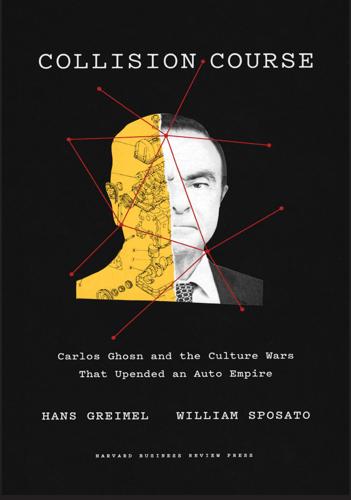
Collision Course: Carlos Ghosn and the Culture Wars That Upended an Auto Empire
by
Hans Gremeil
and
William Sposato
Published 15 Dec 2021
Human-driven cars would be “legislated off the highways” as the safety of autonomous vehicles exceeded that of the traditional hand-piloted kind. Those highways would become an endless stream of commoditized canister cars zipping along at 120 mph. “These modules won’t be branded Chevrolet, Ford or Toyota. They’ll be branded Uber or Lyft or who-ever else is competing in the market,” the auto industry legend wrote. People who still know how to drive would amaze their friends, just like people today who know how to saddle up and ride a horse.15 Lutz’s timeline for this to happen? The 2030s. Such was the Sturm und Drang convulsing the auto industry in the mid-2010s

The Optimist: Sam Altman, OpenAI, and the Race to Invent the Future
by
Keach Hagey
Published 19 May 2025
In March, as Covid descended, Connie texted Annie, suggesting it was she who had not followed the terms of the agreement, which included regular check-ins with her and Sam, a “commitment to psychiatric care,” and actively searching for a job. Connie took issue with the items that Annie said she was spending her money on, including weed and Lyft rides, which to her did not seem like “things unemployed people can afford to do.” As for Annie’s health, “We all have to work throughout [sic] the various ailments that we all get.” She told Annie that “you can make delicious things out of rice/beans/eggs/cheese/pasta for well under $100/week.” She suggested Annie move somewhere less expensive than Los Angeles.
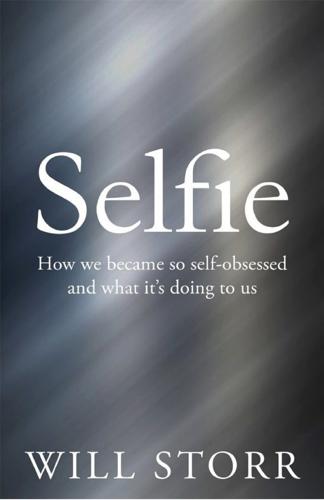
Selfie: How We Became So Self-Obsessed and What It's Doing to Us
by
Will Storr
Published 14 Jun 2017
We began talking about the role of government, and collective projects for the common good, and it quickly became clear he was deeply sceptical. ‘It’s kind of a weird thing, when people say we need to do things for the common good,’ he said. ‘Tech companies made it so that I could get a ride anywhere in the city for five dollars, door to door, and split it with two people. San Francisco would be impossible without Uber and Lyft. And then the city come here and fine me because people put graffiti on my windows.’ ‘They fine you?’ I said. I could see why that would be annoying. ‘There are times where some of us have said, “Can you imagine where we did an experiment where Google took over what City Hall does now?”’ he said.

The One Device: The Secret History of the iPhone
by
Brian Merchant
Published 19 Jun 2017
After years of attending these product-launch events, Spoonauer is still glad to get the email invite from Apple (the Event is invitation only). “There’s still excitement about being here,” he says. “It’s not just about the product; it’s about the atmosphere.” The lights go down, and a video rolls. It shows Tim Cook calling a Lyft for a ride to the Apple Event—the very event we are waiting for him to show up at—only to find that the car is being driven by James Cordon of Carpool Karaoke, who is then joined by Usher for some reason. They all sing “Sweet Home Alabama” together, and the flesh-and-blood Cook runs out onstage. He makes some announcements, and then invites Shigeru Miyamoto, the legendary founder of Nintendo, up to the stage to announce the company’s first foray into iPhone games, Mario Run.

The Patient Will See You Now: The Future of Medicine Is in Your Hands
by
Eric Topol
Published 6 Jan 2015
But there is 24/7 availability, wait time is zero, and it’s as simple as tapping your smartphone to get connected with a physician.51,84a In some ways it can be likened to Uber as we get used to on-demand service via our smartphones. Indeed, two companies have now launched the real equivalent to Uber for medical house calls. In select cities, Medicast and Pager offer doctors on demand on a 24/7 basis. It’s just like summoning a car via Uber or Lyft, but instead of seeing information about the driver and car on your smartphone screen, you see the doctor’s picture, his or her profile, and the length of time it will take him or her to be at your house. It’s no surprise that these companies are so similar to Uber—Pager was started by one of Uber’s co-founders.84b There has also been the emergence of health visit kiosks.

The Future Is Asian
by
Parag Khanna
Published 5 Feb 2019
Books Kinokuniya, the stylish Japanese bookstore chain, has become a prominent landmark in major Asian cities from Dubai to Singapore. In place of the old corporate culture known for seniority rather than meritocracy, new-economy companies such as the e-commerce pioneer Rakuten are promoting a more entrepreneurial and diverse workforce to match that of their investments such as Lyft and Pinterest in the United States and PriceMinister in France. Rakuten requires English competence, and at Uniqlo, English is the official workplace language. According to Rakuten founder Hiroshi Mikitani, “The greatest business risk [Japan] faces is that of staying at home.”20 Japan is invigorating its already deep advantages in precision industries through new public-private alliances amounting to several trillion dollars devoted to the Internet of Things (IoT), big data, AI, 3D printing, robotics, biotech, health care, clean energy, enhanced agriculture, and other sectors—all ready for export to Asia’s high-growth markets.
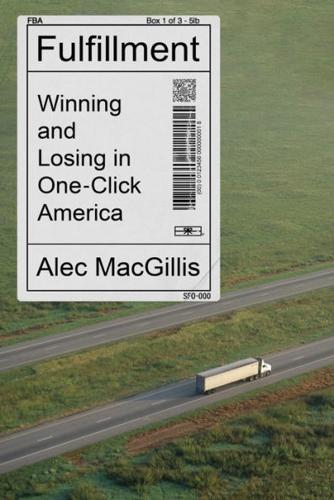
Fulfillment: Winning and Losing in One-Click America
by
Alec MacGillis
Published 16 Mar 2021
It evoked another era when the country had been at war, truly at war, and had managed in a short period of time to build in this very place more than one hundred ships—navy fleet oilers, attack transports, ore carriers—and produce the armor plate and gun forgings for countless more. Now, seven decades later, the country was struggling to rebuild its supply chains to muster enough protective equipment for its health workers. A man was standing outside the hiring office run by Integrity, the human-resources contractor, waiting for his Lyft ride home after coming to file a job application. He was thirty-three years old, and he was applying for the first regular job of his life. He had spent most of his adulthood making a good livelihood from selling heroin and fentanyl near Lexington Market on the west side of Baltimore’s downtown, but that had gotten harder during the pandemic: with stores closed, his usual customers couldn’t steal things to sell to support their habit.

Make Your Own Job: How the Entrepreneurial Work Ethic Exhausted America
by
Erik Baker
Published 13 Jan 2025
Uber would operate simply as a “platform” pairing people who needed a ride with people who owned a car and had some spare time—no physical capital, no training costs, and since drivers were classified as “independent contractors,” no employees, which meant no benefit payments or risk of unionization. In the following months, Uber spread explosively across the US and into international markets. A competitor, Lyft, launched the same summer. In 2013, the app DoorDash extended the Uber model to food delivery—“independent” drivers not employed by restaurants (nor, technically, by DoorDash) would pick up takeout orders for customers on demand. Then it was off to the races: Countless “Uber for X” startups obtained venture capital funding in the low-interest-rate 2010s.

Data and Goliath: The Hidden Battles to Collect Your Data and Control Your World
by
Bruce Schneier
Published 2 Mar 2015
We used to pay with coins at a tollbooth, subway turnstile, or parking meter. Now we use automatic payment systems, such as EZPass, that are connected to our license plate number and credit card. Taxis used to be cash-only. Then we started paying by credit card. Now we’re using our smartphones to access networked taxi systems like Uber and Lyft, which produce data records of the transaction, plus our pickup and drop-off locations. With a few specific exceptions, computers are now everywhere we engage in commerce and most places we engage with our friends. Last year, when my refrigerator broke, the serviceman replaced the computer that controls it.
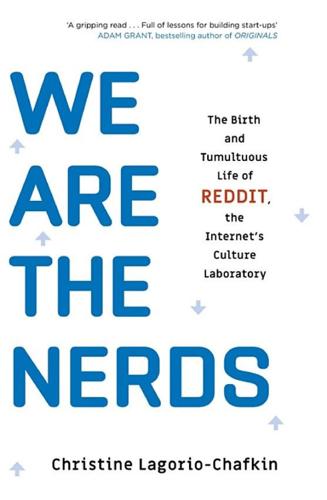
We Are the Nerds: The Birth and Tumultuous Life of Reddit, the Internet's Culture Laboratory
by
Christine Lagorio-Chafkin
Published 1 Oct 2018
He had appeared on TV talk shows, including The Colbert Report, and had become a sought-after public speaker, taking gigs on stages in Beijing, Dublin, Paris, Singapore, and Rome. He told and retold Reddit’s story and evangelized for the free and open Internet. In his travels he was accompanied often by Elisabeth Garvin, a smiley blonde-haired woman in her early twenties, who acted as scheduler, friend, adviser, Lyft-booker, personal historian, photographer, and, sometimes, the world’s most petite and inoffensive bodyguard. Recently, Ohanian had begun trying to balance his globetrotting with focusing on his health: He’d been drinking more water, streamlining his diet, starting his days with a vegetable smoothie or the occasional Soylent (a meal replacement beloved in Silicon Valley).

Spies, Lies, and Algorithms: The History and Future of American Intelligence
by
Amy B. Zegart
Published 6 Nov 2021
But vexing challenges remain. Estimating the Future Is a Hazardous Occupation—in Many Occupations Everyone knows that predicting the future is hard. Even experts with access to the best data are often wrong. Doctors offer incorrect diagnoses. Bankers get initial stock prices wrong—as we saw when Uber, Peloton, and Lyft went public. Hollywood executives are surprised by sleeper hits (Little Miss Sunshine) and blockbuster bombs (Green Lantern). Political pollsters get surprised on election day. In the 1948 presidential election, analysts were so sure New York Governor Thomas Dewey would defeat incumbent President Harry Truman that the Chicago Tribune emblazoned its oversized headline “Dewey Defeats Truman” when it went to press.14 Truman had a field day when the election results came in.
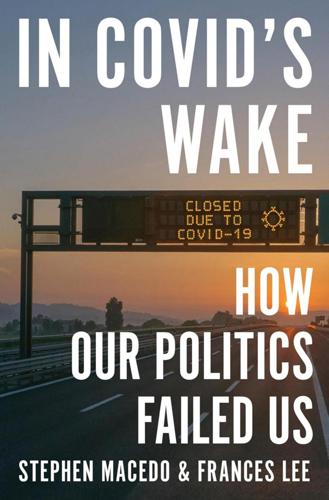
In Covid's Wake: How Our Politics Failed Us
by
Stephen Macedo
and
Frances Lee
Published 10 Mar 2025
Rukmini Callimachi, “For Colleges, Vaccine Mandates Often Depend on Which Party Is in Power,” New York Times, August 12, 2021, https://www.nytimes.com/2021/05/22/us /college-vaccine-universities.html. 55. Emily Stewart, “Some Companies Are Mandating Vaccines—but Not for Front-Line Workers,” Vox, August 19, 2021, https://w ww.vox.com/the-goods/2 021/8/19/22629327 /employee-vaccine-mandate-walmart-uber-lyft. 56. Covid restrictions also bear no relationship to variation in the CDC’s estimate of excess deaths between March 2020 and April 2021. The “excess deaths” measure tracks the extent to which a state’s reported number of total deaths is higher (or lower) than normal. 57. In order, the least affected states as of April 30, 2021, w ere Hawaii, Vermont, Alaska, Maine, Oregon, Utah, Washington, New Hampshire, Colorado, and Idaho. 58.
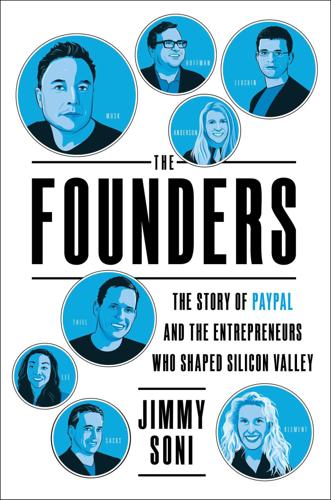
The Founders: The Story of Paypal and the Entrepreneurs Who Shaped Silicon Valley
by
Jimmy Soni
Published 22 Feb 2022
It’s very memorable.’ ” Because the domain www.paypal.com was unclaimed, the team would face no protracted, expensive negotiations to acquire it. They did so on July 15, 1999. Though Thiel had originally preferred Cachet, he, too, came around to Paypal. In fact, he would later reference it to illustrate the value of friendly, generous-sounding company monikers, using it to argue for “Lyft” over “Uber” and “Facebook” over “MySpace.” In the near term, Thiel and many others would argue that—next to Paypal—X.com sounded ominous. Confinity selected PayPal—with a stylization, capitalizing the middle p. This intercap P stuck—forever after, Paypal would be written PayPal. A note in Master’s files records the adoption of the intercap P—a quick entry with the phrase “Chose PayPal”—but Master couldn’t recall the edit’s origins, nor if she, a graphic designer, or the Confinity team was the source

There Is Nothing for You Here: Finding Opportunity in the Twenty-First Century
by
Fiona Hill
Published 4 Oct 2021
Service jobs that depended directly on consumer spending by America’s affluent were dramatically cut by wealthy households forgoing cleaning, child care, eating out, and sports and entertainment during locally imposed lockdowns—or simply because people were concerned about contracting the virus and decided to self-isolate. Ride-share services like Uber and Lyft, which had offered part-time and supplemental opportunities for many workers on the bottom rung of the employment ladder, who were juggling several jobs at once to earn a decent income, were also hard-hit. Although the pandemic expanded the idea of “essential workers” to frontline employees in online shopping warehouses and delivery services, grocery stores, and food production—many of whom retained their jobs and had their pay increased—COVID-19 had a huge negative impact on their already precarious health.

Facebook: The Inside Story
by
Steven Levy
Published 25 Feb 2020
Even as Facebook worked to improve its products, a relentless stream of headlines kept dragging down its reputation. First came the revelations that Facebook’s cutback on data-gathering—the one that supposedly ended after the one-year grace period that started in 2014—had not been uniformly employed. Some major companies, like Airbnb, Netflix, and Lyft were white-listed, allowing them to continue accessing information. (Also on the white list was Hot or Not, the inspiration for Zuckerberg’s 2003 folly, Facemash.) Especially embarrassing: some of these revelations came out in a lawsuit from a company, Six4Three, that actually was blocked from receiving user data.
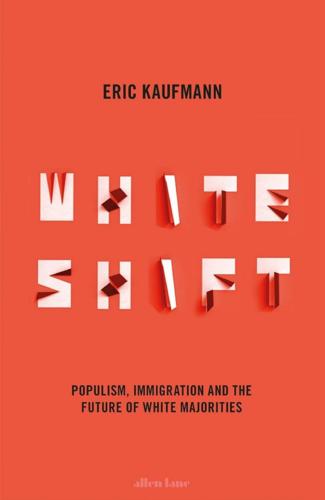
Whiteshift: Populism, Immigration and the Future of White Majorities
by
Eric Kaufmann
Published 24 Oct 2018
Adida, D. D. Laitin and M.-A. Valfort, ‘Identifying barriers to Muslim integration in France’, Proceedings of the National Academy of Sciences 107:52 (2010), 22384–90. 63. Rich, ‘What do field experiments of discrimination in markets tell us?’ 64. Marco Della Cava, ‘Blacks face longer wait times on Uber, Lyft than other races – worse for taxis, study says’, USA Today, 28 June 2018. 65. J. J. Fyfe, ‘Who shoots? A look at officer race and police shooting’, Journal of Police Science & Administration 9:4 (1981), 367–82; R. A. Brown and J. Frank, ‘Race and officer decision making: Examining differences in arrest outcomes between black and white officers’, Justice Quarterly 23:1 (2006), 96–126. 66.

The Code: Silicon Valley and the Remaking of America
by
Margaret O'Mara
Published 8 Jul 2019
By the end of 2016, Android phones made up over 80 percent of the global market, and over half of Google’s revenue came from mobile.8 The entry into the phone market was even more profitable for Apple. Ten years after its introduction, over one billion iPhones had been sold worldwide. It was the bestselling consumer product in human history. Having a geolocated, camera-equipped supercomputer in millions of pockets jump-started whole new business categories, such as ride-sharing (Uber and Lyft), local search (Yelp), and short-term rentals (Airbnb). It further spiked the growth of social media, launching born-mobile apps (Instagram, Snapchat) and turning existing networks into even more potent vehicles for advertising and sales. The switch to mobile made Facebook’s user base grow even faster.

Lonely Planet Iceland
by
Lonely Planet
Local bus networks operate in Akureyri, Ísafjörður, and the Reykjanesbær and Eastfjords areas. Taxi Most taxis in Iceland operate in the Reykjavík area, but many of the larger towns also offer services. Outside of Reykjavík, it’s usually wise to prebook. Taxis are metered and can be pricey. Tipping is not expected. At the time of research, there were no Uber and Lyft services in Iceland (yet). Language Behind the Scenes Send Us Your Feedback We love to hear from travellers – your comments keep us on our toes and help make our books better. Our well-travelled team reads every word on what you loved or loathed about this book. Although we cannot reply individually to postal submissions, we always guarantee that your feedback goes straight to the appropriate authors, in time for the next edition.

Capitalism and Its Critics: A History: From the Industrial Revolution to AI
by
John Cassidy
Published 12 May 2025
“By reducing the share of economic activity over which capitalist firms have a comparative advantage, the first and the third solution—team-based open source and the gig economy—shrink capitalism,” Bowles and Carlin wrote. “The second—Amazon-type monitoring—has convinced many that capitalism should be shrunk.”55 Bowles and Carlin weren’t endorsing the pernicious practices of platform companies like Uber and Lyft. They were pointing out that doing gig work is different from being employed on a full-time basis—they compared it to the preindustrial “putting out” system—and pointing out that technology-driven capitalism was, to some extent, eating itself. They also argued that this cannibalization was creating space for new economic ideas and alternative economic forms, such as not-for-profits, worker-owned cooperatives, and community-organized public commons, which had broad appeal across the entire left and possibly beyond it.

Wanderers: A Novel
by
Chuck Wendig
Published 1 Jul 2019
The kids are worried about you and so am I despite everything. Call me, asshole. His publicist texted, all caps: CALL ME. Landry sent him a text that said only: The world was ready for Bowie. Elvis texted: Well played, jerkoff. This isn’t over. He snapped his fingers at the doctor: “You. I can get a cab out of here right? Or an Uber, a Lyft, something?” “What? Yes, but I’m not the front desk at a hotel—” “Good.” He shed his robe right there and started kicking around for his clothes. He found them in a drawer and started to hike on his pants. At the shocked doctor’s face he waved her off. “Oh, stop. You see this sort of thing all the time, love, don’t you?

The Radical Fund: How a Band of Visionaries and a Million Dollars Upended America
by
John Fabian Witt
Published 14 Oct 2025
Post, Citizens Divided: Campaign Finance Reform and the Constitution (Harvard University Press, 2014). Labor: Kate Andrias and Benjamin I. Sachs, “Constructing Countervailing Power: Law and Organizing in an Era of Political Inequality,” Yale Law Journal 130 (2021): 546; Kate Andrias, Sharon Block, and Benjamin Sachs, “A New Path for Unionizing Uber and Lyft,” Commonwealth Beacon, Dec. 2, 2023; Veena Dubal, “The Legal Uncertainties of Gig Work,” in The Oxford Handbook of the Law of Work, ed. Guy Davidov, Brian Langille, and Gillian Lester (Oxford University Press, 2024); Cynthia L. Estlund, “The Ossification of American Labor Law,” Columbia Law Review 102 (2002): 1527. 11.

Bourgeois Dignity: Why Economics Can't Explain the Modern World
by
Deirdre N. McCloskey
Published 15 Nov 2011
The left and right join in opposing the future—the one because it is not a planned future and the other because it is not identical to the past. In 2013, for example, some companies in the United States had taken brilliantly bettering advantage of smart phones. The Uber X company offered rides in ordinary cars to smart-phone users (as did Lyft and SideCar). The Square company offered merchants a means of processing credit cards on their phones. Airbnb offered New Yorkers access to private homes as hotels. And Aereo allowed mobile devices to pick up local TV signals. Yet all four were prompty attacked by American regulators, those heroes of the progressive and conservative enemies of progress.

Northern California Travel Guide
by
Lonely Planet
Exhibits reveal once-popular views of Chinatown, including the sensationalist opium-den exhibit at San Francisco's 1915 Panama-Pacific International Expo inviting fairgoers to 'Go Slumming' in Chinatown. BEFORE YOU GO AMake reservations at top San Francisco restaurants – some accept early/late walk-ins, but not all do. AReserve Alcatraz tickets two to four weeks ahead, especially for popular night tours. ADownload SF-invented apps for ride sharing (Lyft, Uber), home sharing (Airbnb), restaurant booking (Yelp) and audio walking tours (Detour) – all widely used here. Fisherman's Wharf, The Marina & Russian Hill 1Top Sights 1Crissy FieldA2 2ExploratoriumH2 3Lombard StreetE2 4Maritime National Historical ParkE1 5Musée MécaniqueF1 6Sea Lions at Pier 39F1 1Sights 7Diego Rivera GalleryF2 8Fort Mason CenterD1 9Ina Coolbrith ParkF3 10USS PampanitoF1 11Vallejo Street StepsF3 2Activities, Courses & Tours 12Alcatraz CruisesG1 13Basically Free Bike RentalsF2 Blazing SaddlesE1 14Oceanic Society ExpeditionsC1 4Sleeping 15Argonaut HotelE1 16HI San Francisco Fisherman's WharfD1 17Hotel del SolD2 18Hotel DriscoC4 19Hotel ZephyrF1 20Inn at the PresidioA3 21Queen Anne HotelE4 5Eating 22Gary DankoE1 23GreensD1 24La FolieE3 25Lucca DelicatessenC2 26Off the GridD2 27Out the DoorD4 6Drinking & Nightlife 28Buena Vista CafeE1 29Interval Bar & CafeD1 The Marina, Fisherman's Wharf & the Piers oAlcatrazHISTORIC SITE ( GOOGLE MAP ; %Alcatraz Cruises 415-981-7625; www.nps.gov/alcatraz; tours adult/child 5-11yr day $37.25/23, night $44.25/26.50; hcall center 8am-7pm, ferries depart Pier 33 half-hourly 8:45am-3:50pm, night tours 5:55pm & 6:30pm; c) Alcatraz: for over 150 years, the name has given the innocent chills and the guilty cold sweats.

Artificial Intelligence: A Modern Approach
by
Stuart Russell
and
Peter Norvig
Published 14 Jul 2019
Turning now to the applications of computer vision for guiding action, Dickmanns and Zapp (1987) first demonstrated a self-driving car driving on freeways at high speeds; Pomerleau (1993) achieved similar performance using a neural network approach. Today building self-driving cars is a big business, with the established car companies competing with new entrants such as Baidu, Cruise, Didi, Google Waymo, Lyft, Mobileye, Nuro, Nvidia, Samsung, Tata, Tesla, Uber, and Voyage to market systems that provide capabilities ranging from driver assistance to full autonomy. For the reader interested in human vision, Vision Science: Photons to Phenomenology by Stephen Palmer (1999) provides the best comprehensive treatment; Visual Perception: Physiology, Psychology and Ecology by Vicki Bruce, Patrick Green, and Mark Georgeson (2003) is a shorter textbook.